A year when he stopped working, his mother died and it turned out to be not too bad a year anyway.
01 January: Born Idle
So my problem with the founding of the Welfare State is a fairly personal but entirely fundamental one.
I was born idle.
Bone idle.
 This isn’t a boast so much as a plea for understanding. Given a choice between working hard and not, I will choose not.
This isn’t a boast so much as a plea for understanding. Given a choice between working hard and not, I will choose not.
According to the Beveridge Report the cure for all societal ills lies with full employment, the cure for idleness.
My entire life has been driven by a series of very logical decisions, carefully weighing up effort and reward. I believe strongly in the capitalist principle of minimum cost for maximum return. I am not now and never have been interested in over-performing. I have always aspired to idleness.
And whilst I have never been able to look more than a year or two ahead in time, I am more than capable of looking around and not liking what I see. Being unemployed without money is hard work, hard, miserable work making ends meet and worrying, continual worrying.
As a child looking around at a pretty miserable, poor and depressed area of the country, it was very clear that staying would involve hard back-breaking physical or mind numbingly dull repetitive work for very very little financial return.
Or I could go to university and escape. Academic success was a ticket to an easier life, not a better one.
Even so, not for me the joy of working, the losing oneself in a task or subject. Like the supposed joy to be had from an endorphin high at the end of a workout – joy of work has never been my thing. I worked just hard enough to get the required grades, no more and no less. The marks required were unfortunately high but not as high as the cost of a life spent scrubbing floors or answering phones in a call centre.
Sadly, looking around at university, it became clear that the life of a female academic would be made miserable and second class, for not that much money. If I was going to be miserable and second class, I wanted to at least be paid a lot of money for the privilege.
The expansion of the middle classes opened up the professions for me and my peers. Accountancy beckoned. I ran for the money.
At a time when women were only allowed into the profession on sufferance, with dress codes and attitudes, when the male partners seemed to take their pick of bright young things to screw around with before dropping for the next year’s recruits, accountancy could have been a disaster but ofcourse financial deregulation was exploding and a life in investment banking was calling.
Just as there were a surprising number of stupid but well eductaed people at university, there turned out to be a surprising number of bankers who couldn’t count.
It was therefore incredibly useful to have basic financial skills and knowledge available to offset my unfortunate gender. And whilst idleness probably isn’t high on the list of skills they interviewed for, the accompanying efficiency and competency should be.
I made money. Efficiently. I retired young.
Now I play tennis and bridge and make the occasional buy/sell decision. I travel and take endless photographs, some beautiful but most mundane. I potter about. I am exceedingly idle. Life is sweet.
But seriously what is the value in hard work for hard work’s sake? My Scottish Calvinist BF2 would be horrifed by a life of leisure. My daughter’s father can barely sit still over the Christmas break before finding a job or useful task to complete. They run from checklist to checklist, continually ticking off the next completed item.
I am bemused by their never-ending activity.
My children have always been much more focused on long term targets than I ever was or will be. Their schools try to direct them to make useful career choices, even though they’re just young teens. The value of hard work and diligence is repeatedly stressed. My own scepticsm is only slightly offset by the true believer I share a home with, plus the Asian mothers busily managing my daughter’s best friends. I am a slacker in a busy world.
I once listened to a TED talk about children asking themselves “what shall I be when I grow up?” It suggested that a better question might be “What kind of life do I want to lead?” If you can answer this question, then that informs the career choices that must be made.
Do my children want to live in London? Life here is expensive, almost unaffordable so will require some serious cost/benefit decisions on the professions they might choose to follow. Safest routes would be financial services (still) through accountancy or law.
If they want to lead a fulfilled creative life, they could look to fashion, theatre or the media. Living in London (at least independent of the parents) would be difficult but probably necessary in those fields so they would have to resign themselves to living off the bank of mum and dad for a long time, maybe forever. I’m basically ok with that choice.
If they’re happy outside of London then the life of a doctor, dentist, teacher, civil servant, company middle manager all beckon. They’ll have to work for a long time, but the commuting will be shorter and at least some of those professions have societal value that they might find rewarding in and of itself. They are not me.
The hardest lives seem to be those driven by a dream or innate skill or aptitude. My heart goes out to the parents of professional musicians or artists. Maybe it’s even worse to want to be a “good” person. Teaching school in a poor deprived area must be soul destroyingl, certainly learning in one turned out to be brutal.
And social workers deserve praise just for trying.
Ironically the laziest options over a lifetime (ie. mine) require the greatest upfront investment through academic achievement, a life owned body and soul by bank or partnership until finally stepping off the treadmill.
The trick seems to be knowing when to stop and maybe refusing to buy into the idea that work is anything more than a means to an end, a way of affording the life that you want to lead.
02 January: Forget the Evidence
On New Year’s Eve I sat at a dinnert table and was told that I didn’t know what I was talking about. Sometimes of course, it’s true. We all occasionally wander into topics where we have strong opinions and no evidence to support them.
But it’s a bit rich to be told that you don’t understand the problem, despite being able to provide numbers and references to support your argument by a man whose answer is simply “I know the COOs of three major constructions firms and therefore…”
Well, I guess if three or four white middle class men get together and agree on something then it must be right. Really?
Around the table it was agreed that in the UK immigration leads to lower wages. Whilst generally a good thing in terms of richness and diversity of life, and whilst everyone around the table had only good things to say about their own experiences with immigrants, it was agreed that immigration remained a problem for “other” (poor?) people.
Immigrants in the UK take British jobs for lower wages.
There is no evidence of course, but since when did that ever stop a good paranoia. There is an entirely unfounded consensus developing within the media and major political parties that immigration is a problem, much to the benefit of UKIP.
This is despite a wealth of empirical evidence and academic research on the effect migrants have on Britons’ wages that contradicts the idea.
The UK Government’s own reply to a House of Lords Committee in 2008 * stated that research “continues to find no significant evidence of negative employment effects from immigration”.
Yet both Cameron and Miliband have given interviews expressing solidarity with British-born voters dispossesed of jobs by pesky foreigners.
One wonders whether they were similarly sympathetic to the British born candidates who they rejected for the top job at the Bank of England recently, or do they not mean that type of “foreign-born”, the rich, white type?
The numbers are pretty clear-cut. As per leading economist Jonathan Portes, head of the National Institute for Economic and Social Research, said: “EU migrants don’t appear to have a negative impact on the employment prospects of natives – several different studies have failed to show any link.
A 2009 study by labour market expert Professor Danny Blanchflower, a former Bank of England rate-setter, and Bank of England analyst Chris Shadforth found that any negative impact on wages is “staistically insignificant”
Evidence rather than anecdote shows that there is little impact from immigration on the wages of the Britsh born.
Averages can ofcourse hide soe distortions that offset, especially if you pick and choose the times studied. There is some evidence that there may be a slight negative impact at lower wage levels which is offset by benefits at the higher end. Once again it turns out to be pretty bad luck to be poor and unskilled.
& ofcourse the people most likely to be both poor, unskilled and suffering from an influx of immigrants and the resulting competition for their jobs are other migrants rather than the ‘native’ workers UKIP champions**
As the University of Oxford’s Migration Observatory points out “this is because the skills of new migrants are likely to be closer substitutes for the skills of migrants already employed in the UK than for those of UK-born workers.”
It also found that the effects are likely to be temporary as the workforce adjusts to the influx of additional workers. The time taken to adjust is likely to be impacted by the economic cycle. In times of recession there may be periods where the negative impact is exagererated because it takes longer for the market to adjust. It is therefore possible (as Theresa May did recently) to cherry pick the periods reviewed to show a temporary adverse impact on wage levels
But there is no consistent evidence that any negative impact is anything other than temporary. The market will adjust over time. Immigrant workers unable to find work will return to their country of origin whilst those able to work will continue to pay taxes.
Win-win.
Except the fear that drives the underlying paranoia doesn’t easily respond to facts and figures. When people are scared that they’re goingto lose their jobs, they look for scapegoats. People who look and sound different have always been easy-targets
And rather than addressing the underlying issues and concerns with facts and figures, it has become easier for politicians to go along with the trope.
Sound bites on television do not lend themselves to a reasoned debate.
Thankfully people are smarter than media and political manistream allow. When asked whether immigration is a problem, people almost always distinguish between local (not a problem – accurate reflection of reality) and somewhere else (a problem for someone else – a reflection of media hype).
Most people vote according to their own self-interest and the economy is by far the most pressing issue, followed by the NHS and education, services the majority of households use and are familiar with in everyday life.
* THE GOVERNMENT REPLY TO THE FIRST REPORT FROM THE HOUSE OF LORDS COMMITTEE ON ECONOMIC AFFAIRS SESSION 2007-08 HL PAPER 82 The Economic Impact of Immigration Presented to Parliament by the Secretary of State for the Home Department
03 January 2015: Parenting
“… Before you have children, it’s imperative that you ask yourself whether or not you’re able to truly love your child unconditionally.
Whether your child is straight or gay, cisgender (non-trans) or transgender, you need to understand that this is not something you can change about them.
No amount of wishing, praying, or punishing can change someone’s sexual orientation or gender identity; it only inflicts harm. If you conclude that you would be unable to love a trans child, it’s your responsibility to understand that you are not fit to be a parent.
To be a parent is to be able to offer truly unconditional love. If you can’t do that, I suggest that you get a goldfish, instead”.
Parker Malloy, Daily Beast 01.01.2015
04 January: Old Tropes Revisited
Every so often the question of young kids and teens’ sexual awakening is raised on the website dodsonandross.com. Sooner or later the tired old trope appears suggesting that the best possible introduction to sex must be with an experienced older man/woman, preferably someone that they know well and trust.
This is wrong on so many levels. It takes the questioning of societal rules and taboos a step too far and risks providing cover for abuse and abusers.
In part there may be a special sensitivity in the UK to the idea of a predatory adult after the Saville scandal. There have been a plethora of court cases recently in the UK where men have been tried and mostly convicted of grooming and molesting young girls and boys, usually from a position of trust, power or authority.
There can be no tolerance for the idea of a predatory adult grooming and abusing young teens and children and sadly this kind of abuse is largely carried out by adults the child loves and trusts. The damage caused by child abuse was so well described by Rosie O’Donell in an earlier post.
Children need adults to be adult with adult roles and responsibilities. They need parents to parent, not be a new best friend. They need grown-ups to take responsibility for carving out a space for young children to grow and explore.
Because children growing up are natural explorers and clearly one of the things they’re interested in exploring is their own bodies and their burgeoning sexuality. Almost inevitably there is some kind of inadvertant sexual play or exploring between children, siblings or friends that are close in age. It usually doesn’t mean much, no more than the latest game of football or tag.
It isn’t something to be hugely upset or outraged about but nor is it a great cause for celebration. It’s part of growing up and learning about ourselves and our boundaries. As a parent, part of my job is to ensure that my children grow upwards and outwards, ready to explore the world and able to negotiate the rules of our society.
We had an early conversation about public versus private behaviour and what might fit into one place but not the other (and why). having the conversation long before it became relevant helped.
Aside from the the obvious incest taboos designed ultimately to pevent genetic disorders, we want our children to understand how their bodies work, but we want them to look outwards to explore life and have adventures, not fixate on their nearest and dearest.
Societal rules concerning privacy and appropriate behaviour need to be learned. Some will have to be accepted. Some may be challenged. All have to be recognised and dealt with one way or the other.
An example might be masturbation taboos. Although almost beign in it’s beginnings, there are strong societal prohibitions around public masturbation.
This became abundantly clear the afternoon I sat through the school nativity with a furiously masturbating donkey – that boy must have been rubbed raw with nerves by the end of the play. His nickname became and remains (more than 10 years later) rub-a-dub-dub.
I’d be interested in hearing where other parents have drawn the line.
05 January 2015: Oranges and Lemons
I’m looking for a strategy or maybe a plan or an excuse to take pictures around London and thought of the old nursey rhyme and playground game “Oranges and Lemons”
It’s funny how persistent these songs remain, even whilst playgrounds are sold off by the Government and electronic gadgets and games have some to dominate. Like me, my girls played the catch game with the couple forced to run through a longer and longer tunnel of their peers to avoid capture.
From a tourist point of view, what’s interesting is how using the extended verses, St Paul’s Cathedral, Westminster Abbey (St Margaret’s Church) and the Tower of London (St John’s Chapel) would both be included.
The churches of London are amongst the oldest and well-maintained buildings remaining. A few have been entirely destroyed by either the Great Fire, the Blitz or the IRA bombings and at least one of the possible St Anne churches in the extended version (St Anne’s and St Agnes) is no longer a functional church but rather a Music Centre.
But most have been rebuilt, restored or redesigned and quite a few remain vibrant places of worship.
Maybe I should start at St Paul’s and work my way outwards.
Two Sticks and Apple,
Ring the Bells at Whitechapple,
Old Father Bald Pate,
Ring the Bells Aldgate,
Maids in White Aprons,
Ring the Bells a St. Catherines,
Oranges and lemons,
Say the bells of St. Clement’s.
You owe me five farthings,
Say the bells of St. Martin’s.
When will you pay me?
Say the bells of Old Bailey.
When I grow rich,
Say the bells of Shoreditch.
When will that be?
Say the bells of Stepney.
I do not know,
Says the great bell of Bow.
or
When I am Old,
Ring the Bells at Pauls.
Here comes a candle to light you to bed,
And here comes a chopper to chop off your head
(Versus in Italics sourced from :Tommy Thumb’s Pretty Song Book c. 1744)
Additional Versus sometimes include:
“Bullseyes and Targets” say the Bells of St. Margaret’s
“Brickbats and Tiles” say the Bells of St. Giles
“Pancakes and Fritters” say the Bells of St. Peter’s
“Maids in white aprons” say the Bells at St. Katherine’s
“Pokers and Tongs” say the Bells of St. John’s
“Kettles and Pans” say the Bells of St. Anne’s
“You owe me Ten Shillings” say the Bells of St. Helen’s
06 January: Oranges
Oranges and lemons,
Say the bells of St. Clement’s.
St Clement’s Church could either be St Clement Danes or St Clements Eastcheap. Since the former is closed until March 2015, I decded to visit Eastcheap.
Both churches are near the river, so near to the wharves where citrus fruit would have been landed but in modern London, both were rebuilt by Christopher Wren after the Great Fire in 1666 but they’re now very different faces of the Anglican church.
St Clement Danes is the official church of the British Royal Air Force, a vibrant well-supported church, large and prosperous.
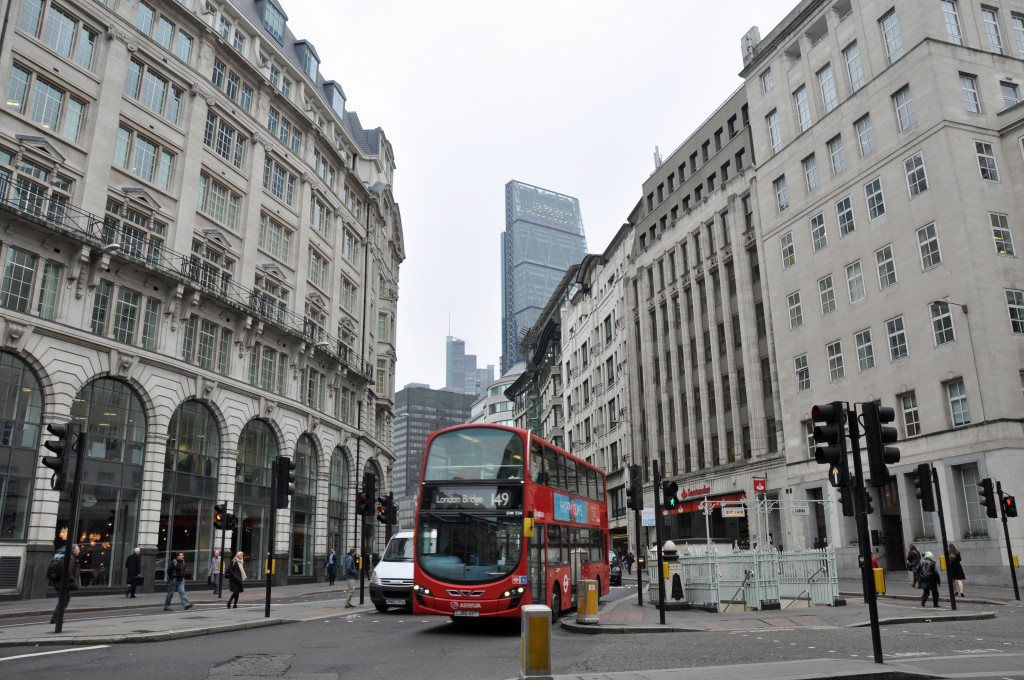 But St Clement Eastcheap is tiny, huddled away in the City in St Clement Lane just off King William Street. It’s entranceway is so small, surrounded by the offices and cafes of the working City, that it’s surprisingly easy to overlook for a Wren church.
But St Clement Eastcheap is tiny, huddled away in the City in St Clement Lane just off King William Street. It’s entranceway is so small, surrounded by the offices and cafes of the working City, that it’s surprisingly easy to overlook for a Wren church.
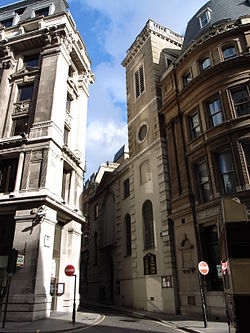 It’s first possible mention is in in a charter of 1067 given by William (1028–87) to Westminster Abbey, but the earliest definite reference to the church is found in a deed written in the reign of Henry III (1207–72), which mentions ‘St Clement Candlewickstrate’.
It’s first possible mention is in in a charter of 1067 given by William (1028–87) to Westminster Abbey, but the earliest definite reference to the church is found in a deed written in the reign of Henry III (1207–72), which mentions ‘St Clement Candlewickstrate’.
St Clement’s survived the culling of City churches as the population living in the City moved out to the suburbs and was renovated by William Butterfield in 1872. Work done included removing the galleries; replacing the 17th-century plain windows with stained glass; dividing the reredos behind the altar into three pieces and placing the two wings on the side walls; dismantling the woodwork to build new pews; laying down polychrome tiles on the floor and moving the organ into the aisle.
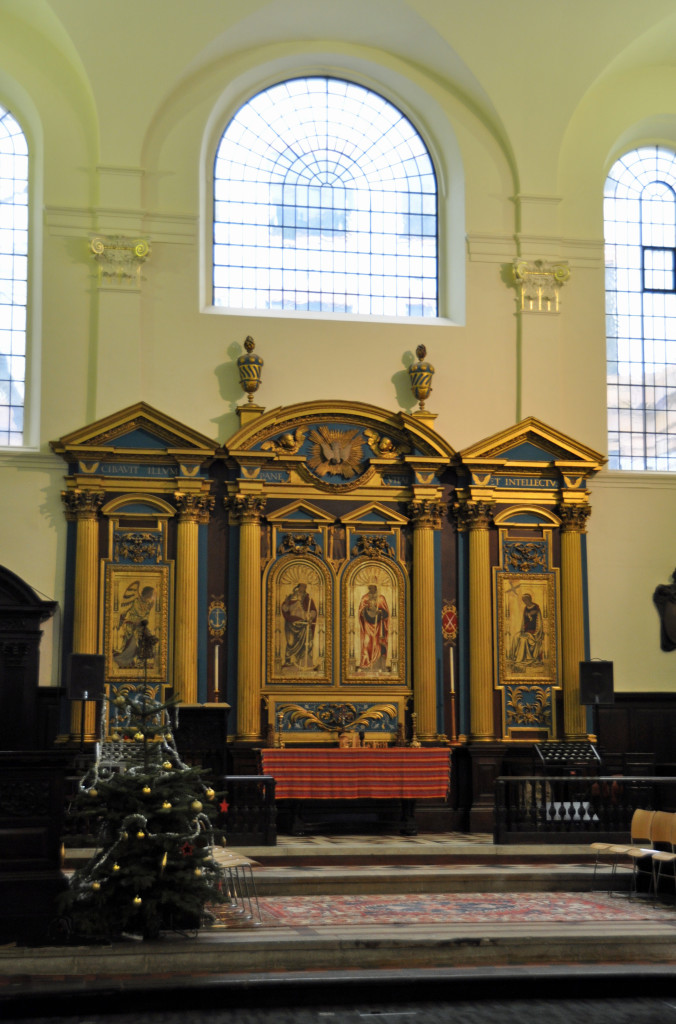 In 1933 thelayut was further revised when Sir Ninian Cooper moved the organ to its original position on the west wall and reassembling the reredos behind the altar, although before he did so, he had the reredos painted with figures in blue and gold.
In 1933 thelayut was further revised when Sir Ninian Cooper moved the organ to its original position on the west wall and reassembling the reredos behind the altar, although before he did so, he had the reredos painted with figures in blue and gold.
 St. Clement’s suffered minor damage from bombing by German aircraft during the Blitz in 1940 during the Second World War. The damage was repaired in 1949-50, and in 1968 the church was again redecorated.
St. Clement’s suffered minor damage from bombing by German aircraft during the Blitz in 1940 during the Second World War. The damage was repaired in 1949-50, and in 1968 the church was again redecorated.
Today St Clement’s is the home of the Amos Trust, a Christian charity which uses half of the nave as it’s office space. It holds weekly services, every Tuesday and is starting to build a community of worship from the people working inand around the City.
You can find most of the pictures of the church with my other photos:lookalong the pages of the website for
Gallery> Places> London> Oranges and lemons.
07 January: Portraits
We have all been entertained by the Sky Arts Portrait of the Year Competition shown on TV, culminating with the commission to paint Alan Cumming, shown over the Christmas break.
It was amazing to see all of these artists putting together such good likenesses in just four hours, or even finding a likeness in a drawing, losing it as they start to paint and then bringing it back to life.
I popped into the National Portrait Gallery whilst wandering around London Churches to see the three finalists’ commissioned work. It’s amazing the difference between viewing pictures from a distance or through a screen, and seeing real-life.
The skill of all three finalists is astonishing.
Christian Hook
Aine Devine
08 January 2015: Diagnosis
My baby has been officially diagnosed as a teenager ie. someone who likes a long lie-in and rarely sees the morning light. Technichally she’s been diagnosed by the doctor as having a Vitamin D deficiency (surprisingly common in the UK especially in Winter) and prescribed supplements to rebuild her Vitamin D levels.
Since most of us get our VitD from sunshine I’m going with the diagnosis of teenager (possibly vampire in training).
To everyone who suggested that her aching bones were “growing pains” (and there were lots) it might be worthwhile having your teenagers tested as well. An annual subscription to netflix may be recorded as a contributory factor.
Fay Weldon might well have been on to something with her advertising copy “Go to work on an egg” as it turns out that eggs are one of the few food sources of vitamin D for vegetarians (mainly oily fish). Since she doesn’t eat cereal and we make our own bread rather than shop bought, both of which are fortified with vitamin D (and others) in the UK, we’re a bit doomed. In kids the main result of a deficiency is rickets. In adults in usually presents as “aches and pains”.
She was tested for everything when we went in for blood tests and strangely, the first thing that everyone says to vegetarians “what about iron?” turned out to be entirely fine.
She is very slightly low on serotonin which obviously has links to mood swings, another teenager trait. Boosting serotonin which is manufacteured in the brain is slightly problematic. Raising tryptophan levels which is used to make serotonin is associated with carbohydrate high meals. Vitamin B6 is useful because it improves the rate of conversion to serotonin – more marmite basically.
So we’re popping vitamin D tablets once a day for the next month, to repeat if we can bear it. The alternatives seem to involve an injection, a 6 month booster so I’m betting the tablets will be bearable.
09 January: Trafalger Square
Wandering around London, looking in at churches I found myself in Trafalger Square.
 It was a fairly typical London Winter day, grey and dull yet there were still tourists out in force. It also gave a great view of St Martin-in-the-Field, the parish church architecturally copied widely in America and only slightly spoiled by all the traffic lights – urban photos are never pretty.
It was a fairly typical London Winter day, grey and dull yet there were still tourists out in force. It also gave a great view of St Martin-in-the-Field, the parish church architecturally copied widely in America and only slightly spoiled by all the traffic lights – urban photos are never pretty.
It’s home to the National Gallery and just around the corner, the National Portrait Gallery. The permanent exhibits (vast displays of wonderful art) are free and since it almost always rains during a visit to London, well worth spending an afternoon wandering around.
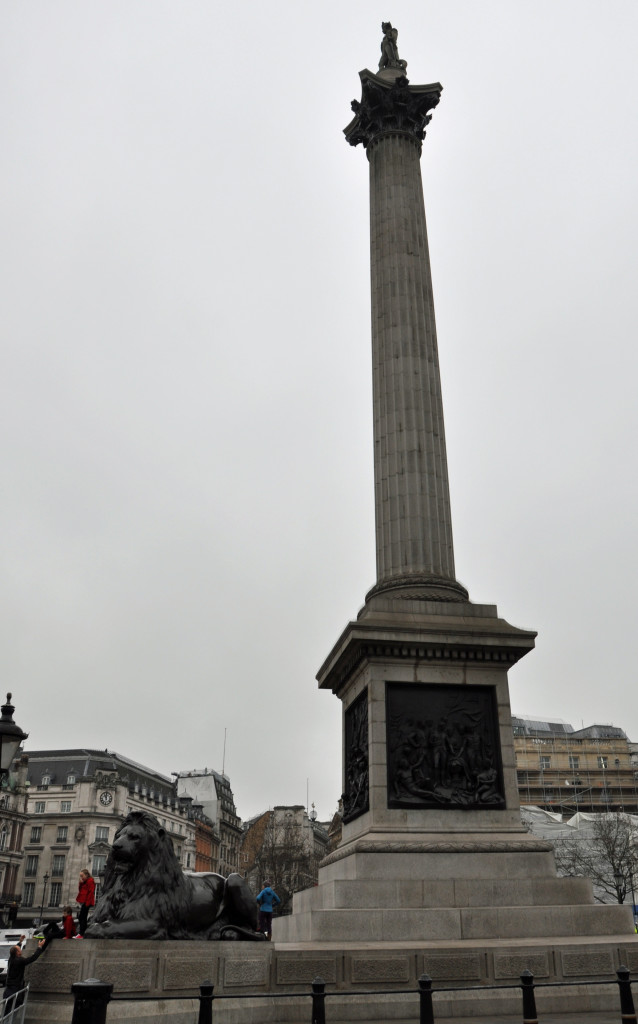 Technically the Square is owned by the Crown whilst the roads around it are owned by Westminster Council. It’s a great gathering place for a sunny day, created as part of the clearances around Charing Cross Station by John Nash on the authority of George IV and completed in 1845.
Technically the Square is owned by the Crown whilst the roads around it are owned by Westminster Council. It’s a great gathering place for a sunny day, created as part of the clearances around Charing Cross Station by John Nash on the authority of George IV and completed in 1845.
The focus point is Nelson’s column, surrounded at it’s base by four lions, always with a child on at least one of them having their phot taken. Their are plinths with various commemorative statues and sculptures, with the fourth being left empty since the start and now used for temporary exhibitions of contemporary art. When I visited, it was home to a bright blue cockerel, a great foil to the lions but art?
10 January: Shadows
Who knew feathers could be so much fun?
Playing with shadows and light sensitive paper was very entertaining. Even in the middle of a British Winter it only took a couple of minutes for the blue paper to fade-out and then washing it off in either slightly acid or alkaline to bring out the shadow.
 Turns out that the feathers that the cats have been playing with make great shadows
Turns out that the feathers that the cats have been playing with make great shadows
Even when the result hasn’t quite worked, playing around with photoshop can make the image interesting.


Alkali turns the image whiter (above) whilst adding a tablespoon or so of vinegar to make the wash acid, turns it blue (below).
 Weirdly, an orchid flower looked less interesting than a spider plant offshoot.
Weirdly, an orchid flower looked less interesting than a spider plant offshoot.
 But all of them looked better than my attempt to get the process to “copy” a sketch of mine. Cyanotype paper like this was used to make copies of technical drawings originally, hence the term “blueprints”.
But all of them looked better than my attempt to get the process to “copy” a sketch of mine. Cyanotype paper like this was used to make copies of technical drawings originally, hence the term “blueprints”.
Either my drawings have to get better, or I’ll have to find plenty of objects with interesting shadows.
11 January 2015: Timely
When I was around 16 sitting my O levels, one of the topics was a series of character studies under the title “Ahead of their time” We studied people like Leonardo da Vinci, Robert Owens, Elizabeth Fry and Florence Nightingale.
Looking back at the various exhibitions that I’ve been to this year, I was reminded of the Constanble and Turner shows just coming to an end. They were very much peers, very competitive members of the Royal Academy and opinion at the time was very much divided as to who was the “best”.
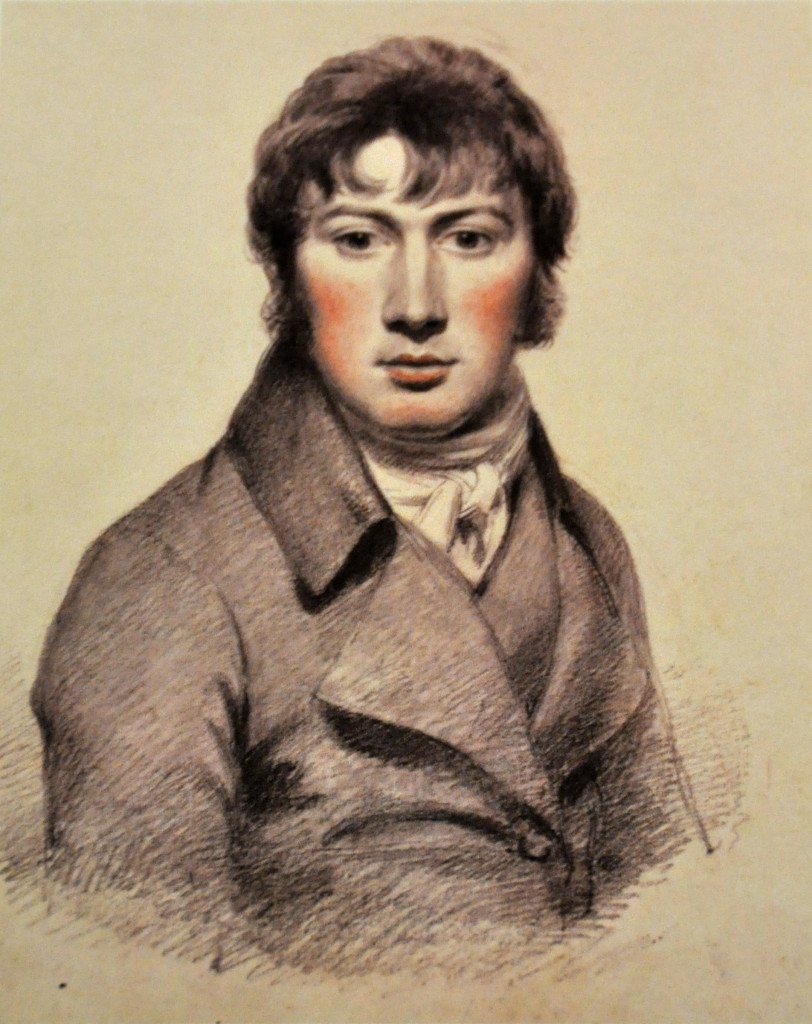 The late Turners were on display in part because the curator wanted to demonstrate how his art was essentially figurative, to dismiss the creeping modern belief that Turner’s art could be viewed as abstract. And it’s clear that many of his works continued to be highly figurative and realistic right to the end of his career.
The late Turners were on display in part because the curator wanted to demonstrate how his art was essentially figurative, to dismiss the creeping modern belief that Turner’s art could be viewed as abstract. And it’s clear that many of his works continued to be highly figurative and realistic right to the end of his career.
Those aren’t the pictures that captured my imagination though.
Looking through the exhibition reinforced my view that many of his works could easily be described as abstract suggestions rather than figurative, factual accuracies at least from a distance. And it is his ability to take you from an abstact impression as you approach the picture, to the factual detail when you are close, that is so remarkable .
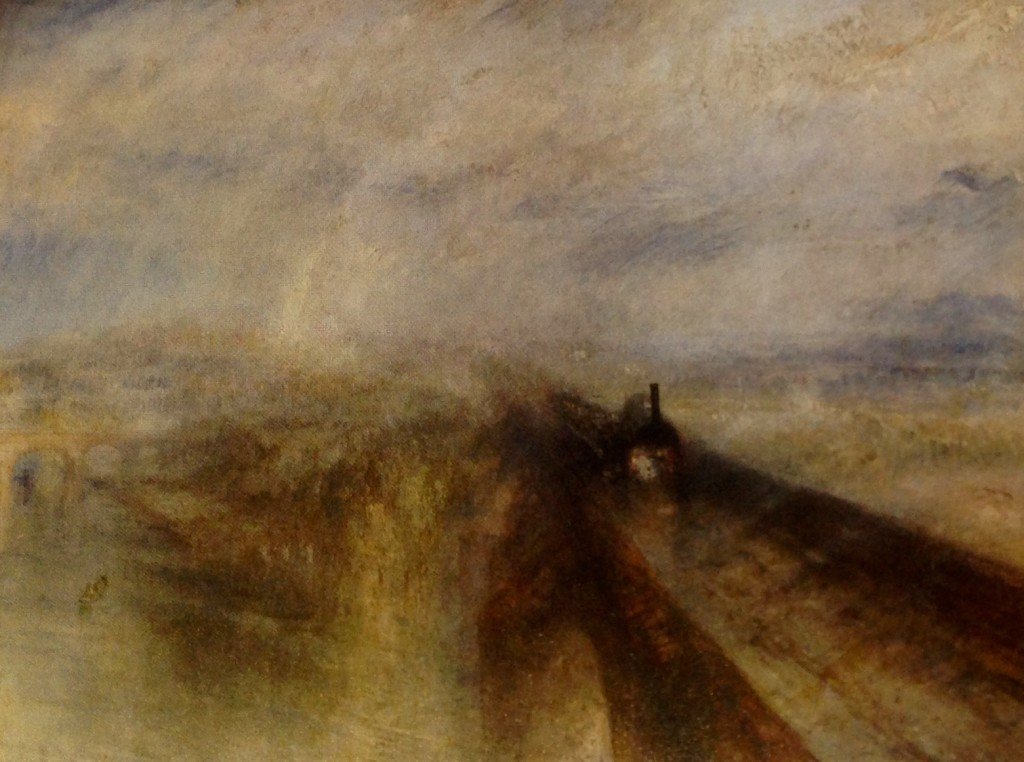 Constable has a reputation as a chocolate box, jigsaw scene artist which is unfair. He has fallen out of fashion with the crowds.
Constable has a reputation as a chocolate box, jigsaw scene artist which is unfair. He has fallen out of fashion with the crowds.
And it’s true that his paintings are largely representations of a time and place, a pastoral idyll, about to be taken over by the Industrial Revolution. But even here there are hints of stylistic change in the way he captures and paints the clouds swirling across the sky.
 It’s probably fair to say that Constable was the better “technical” artist and Turner the more emotional one.
It’s probably fair to say that Constable was the better “technical” artist and Turner the more emotional one.
And because we are now so much more concerned with feelings, especially our own, rather than actions, it is Turner who would be described as ahead of his time simply because he engages a modern audience more than Constable.
Taken to it’s extreme, this priority of engagement, of emotional, physical or visceral reaction from the audience leads directly to modern experiential art. Yet I am struck by how unengaging I found this year’s Turner Prize contenders with their video installations.
It just required far too much hard work from the audience, from me.
This year I’ve been given membership of the Royal Academy as a Christmas present and will no doubt wander into the Summer Exhibition to see the shape of living breathing current artists in the UK. I’ve renewed my Tate membership as well.
It looks like a bumper year of exhibitions – Goya (two exhibitions, Courtalds, National); Rubens (RA); Sargent (National Portrait); Marlene Dumas, Sonia Delauney, The World Goes Pop Alexander Calder(Tate Modern).
All kicked off with a gift pack from the RA inculding a tea towel designed by Grayson Perry and not a video in sight.
12 January 2015: Farthings
You owe me five farthings,
Say the bells of St. Martin’s.
St Martin’s Church in the old nursery rhyme, might well be St Martin’s Orgar Church or jus be referring to St Martin’s Lane, a London Street on the edge of Covent Garden which runs from St Martin-in-the-Fields Church to Long Acre.
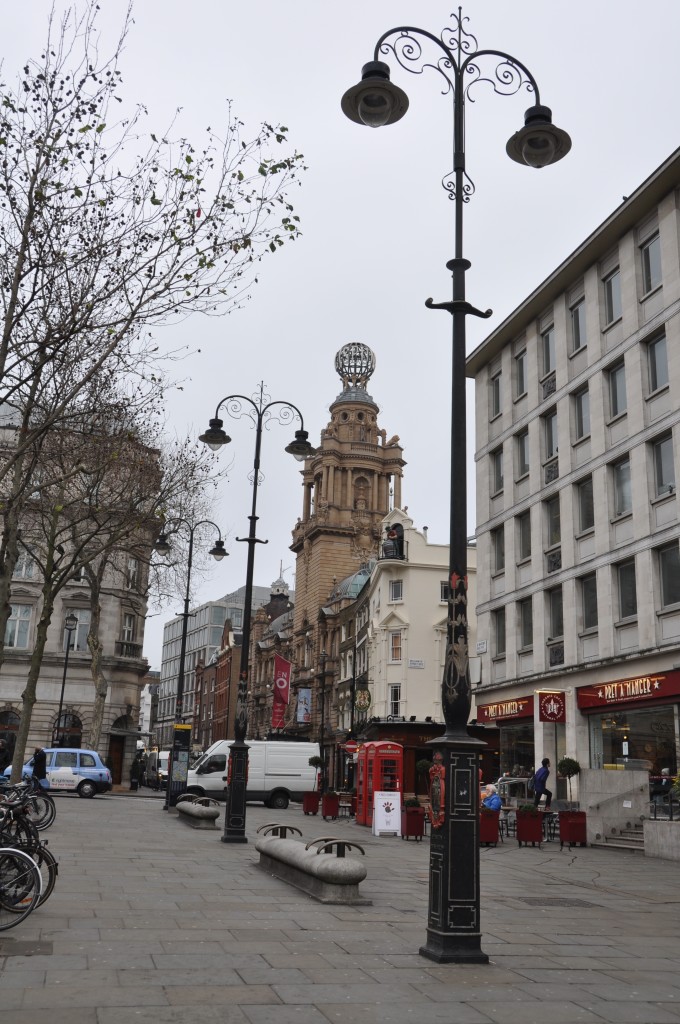 Since St Martin Orgar was mostly destroyed in the Great Fire (1666) with only the tower remaining (rebuilt 1851) for use as the campanile for St Clements Eastcheap, I decided to visit St Martins-in-the-Fields.
Since St Martin Orgar was mostly destroyed in the Great Fire (1666) with only the tower remaining (rebuilt 1851) for use as the campanile for St Clements Eastcheap, I decided to visit St Martins-in-the-Fields.
Whilst there has been a church on this site since Medieval days, the present building was constructed in a neoclassical style by James Gibbs in 1722–1724.
The west front of St Martin’s has a portico with a pediment supported by a giant order of Corinthian columns, six wide. The order is continued around the church by pilasters. In designing the church, Gibbs drew upon the works of Christopher Wren, but chose to integrate the huge (192ft/59m) towerand spire into the church.
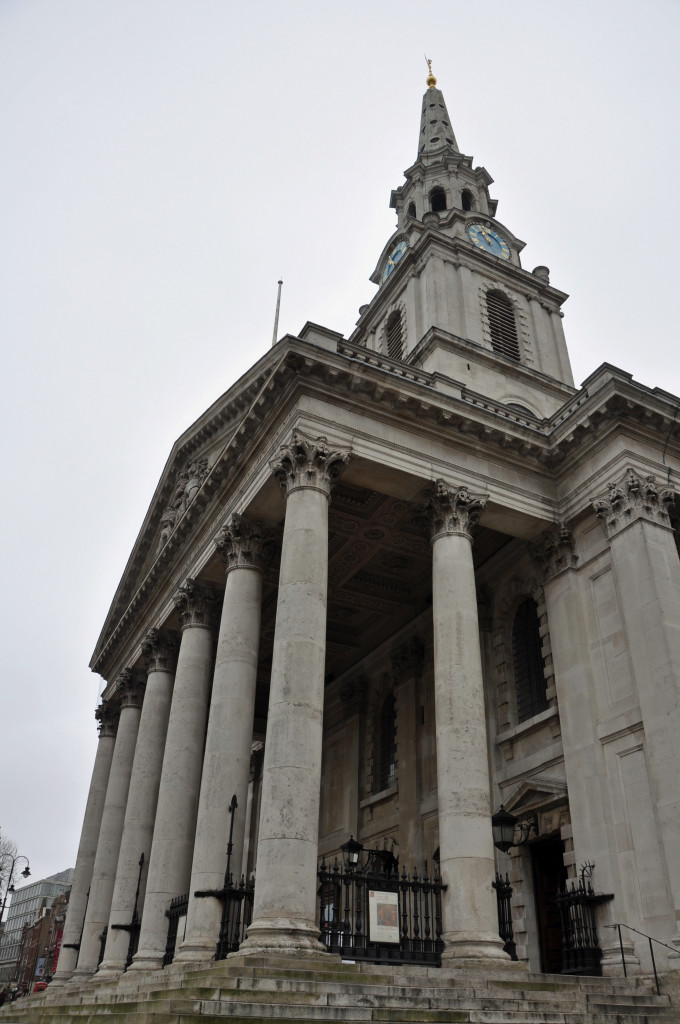 It is an elegant looking church, sitting on Trafalgar Square so quite an easy one to visit along with the National Gallery. It also has plenty of (usually) free lunchtime concerts that people can drop in and enjoy.
It is an elegant looking church, sitting on Trafalgar Square so quite an easy one to visit along with the National Gallery. It also has plenty of (usually) free lunchtime concerts that people can drop in and enjoy.
The church is rectangular in plan, with the nave divided from the aisles by arcades of Corinthian columns. It has galleries over both aisles and at the west end. The nave ceiling is a flattened barrel vault, divided into panels by ribs. The panels are decorated with cherubs, clouds, shells and scroll work, by Giuseppe Artari and Bagutti. It is the strangest mix of plain white and ornate plaster work with no stained glass to distract the eye yet plenty of gold trimmings.
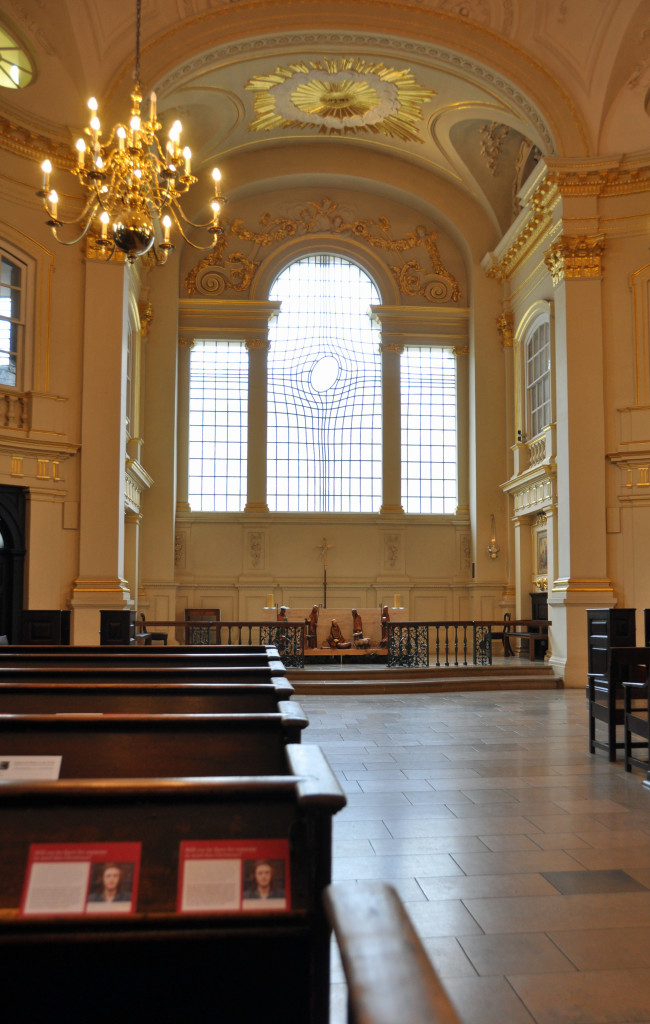 The design was criticised widely at the time, but subsequently became extremely famous, being copied particularly widely in the United States.
The design was criticised widely at the time, but subsequently became extremely famous, being copied particularly widely in the United States.
And despite being a regular visitor to the National Gallery and National Portrait Gallery and the occasional visitor to the church cafe in the crypt, I had never been inside before.
It is a busy church community, often redefining what it means to be a church in the modern world. It has opened it’s doors to the sweep of immigrant communities within London including the newly forming Chinatown in the 1960s. Today, the Ho Ming Wah Chinese People’s Day Centre still provides essential services for the Chinese community in London.
St Martin’s fight against homelessness was formalised with the foundation of the Social Service Unit in 1948. The work continues today through The Connection at St Martin’s, which cares for around 7,500 individuals each year.
Throughout the 20th century, St Martin’s has also looked beyond its own doors and played an active role in wider social, humanitarian and international issues. St Martin’s was involved in the Anti-Apartheid Movement and the founding of many charitable organisations, including Amnesty International, Shelter and The Big Issue.
Architecturally, spiritually, culturally and socially, St Martin’s has helped to form the world around it.
 More pictures can be found in the Gallery.
More pictures can be found in the Gallery.
Just look along the website pages for
Gallery London> Oranges and lemons.
14th January: Coercion
A twitter friend pointed me in the direction of an article in the Daily Beast as part of a discussion as to whether or not male rape should have been included in a Guardian article dismissing common rape myths.
http://www.thedailybeast.com/articles/2014/03/28/can-boys-be-coerced-into-sex.html
The article calls into question the idea that it is always the male who acts as the aggressor in sexual situations
“Can boys be coerced into sex?”
with the headline grabbing suggestion that in one study 43 % of high school boys and young college men reported they had an unwanted sexual experience and of those, 95 percent said a female acquaintance was the aggressor.
The article also refers to a clinical psychologist Dr. Barbara Greenberg (nothing to do with the underlying report) who told the Daily Beast “This is such an under-discussed topic.”
Well maybe thee’s a reason for that.
As it happens, I quite enjoy looking through technical reports and especially the numbers so I looked up the original study.
There is a vast difference between this article and the findings of the underlying report that it refers to ie. Bryana H. French’s latest study, Psychology of Men and Masculinity
Click to access men-a0035915.pdf
It should be said upfront (and isn’t in the article) that the study is small and the sample self-selected Psych and Ethnic Studies students. Whilst it’s true that in the study, 43% of the young men and boys say they have experienced coercion of some sort, mostly from girls, very few actually went on to have sex (21%) despite reporting coercion.
So to answer the question headlined in the article the answer seems to be very clear
“No, boys cannot be coerced into sex”.
And as if to reinforce this conclusion, the actual examples of coercion given within the report are mainly examples of coercion failing to work.
Verbal coercion: “A girl wanted me to do oral sex to her. And begged. But I didn’t do it.”
Physical coercion: “. . I was pushed into a bathroom by a girl and she started kissing me until I made her stop and explained that I didn’t like her like that . . .”
Ignoring the actual report, both the article and Dr Greenberg conflate a number of “hot” topics.
The article notes that mostly the assumption is made in society that “coerced sex” is violent or forced sex but that this report finds only a minority (18%) of respondents reported physical force. As if this in some way disproves the commonly held view.
In fact, since only young men and boys are asked, and young women and girls are typically weaker physically, it isn’t surprising that physical force is not a characteristic reported.
It just isn’t possible to extrapolate and draw any conclusion as to whether male sexual coercion of women, or indeed of other men would include physical force or violence.
And Dr Greenberg strays even further when she says, “I really do believe that girls are more aggressive sexually today than they were ten years ago.
There is absolutely no evidence for this in the report which does not date incidents over time but simply asks whether they have experienced any coercive incident at all, during their lifetime.
Using this study to suggest that forced sex is not typically violent is disingenuous. Using it to suggest women are becoming more violent towards men borders on a lie.
Dr Greenberg extends her comments to include older women preying on young men and boys:
““It’s usually a girl that’s a little bit older and the boys feel embarrassed to say no because they feel their friends will make fun of them,” says Dr. Greenberg. “And they have a lot of shame about it because they weren’t ready for it and they feel cultural pressure that they should have been ready for it.”
Well anecdote is always interesting but not necessarily anything to do with reality. The report looks only at peer sexual coercion and makes no comment whatsoever about childhood sexual abuse. This article was referenced in a discussion about rape, yet quite obviously is totally off-topic.
Any discussion about violence against women, inevitably ends up with countless tiny challenges about the quality of the data, the Government published facts about crimes such as rape and sexual abuse.
It seems shocking that the idea of female violence towards men should be exempt from even the most basic of factual checks and balances in this report and that it should be picked up and reference widely in the media as “evidence” of a rising problem, with no basis in reality.
Sexual violence on men and boys by men and boys is a serious issue where victims are stigmatised.
If there is any convincing evidence of significant sexual violence on men and boys by women and girls, I haven’t seen it here.
16th January: Forgive and Forget
Ched Evans is a young (26) man, former premier league footballer, convicted rapist who is currently unable to find a job.
Evans and another footballer, Clayton McDonald were tried after being indicted of the rape of a 19-year-old woman, who was deemed too drunk to consent,at a hotel near Rhyl ,Wales in May 2011.
Evans was convicted on 20 April 2012 though McDonald was cleared. He was sentenced to five years imprisonment and eligible for release after serving half of that sentence. He was released on 17 October 2014, although he remains on the Violent and Sex Offender Register indefinitely.
In August 2012, Evans was refused leave to appeal against the conviction with the full details to be found here:
crimeline.info/case/r-v-ched-evans-chedwyn-evans …
Evans continues to maintain his innocence and in November 2013 recruited a new legal team to attempt to clear his name. Following his release, the Criminal Cases Review Commissionannounced that they were fast-tracking a review of his conviction
Why should we care?
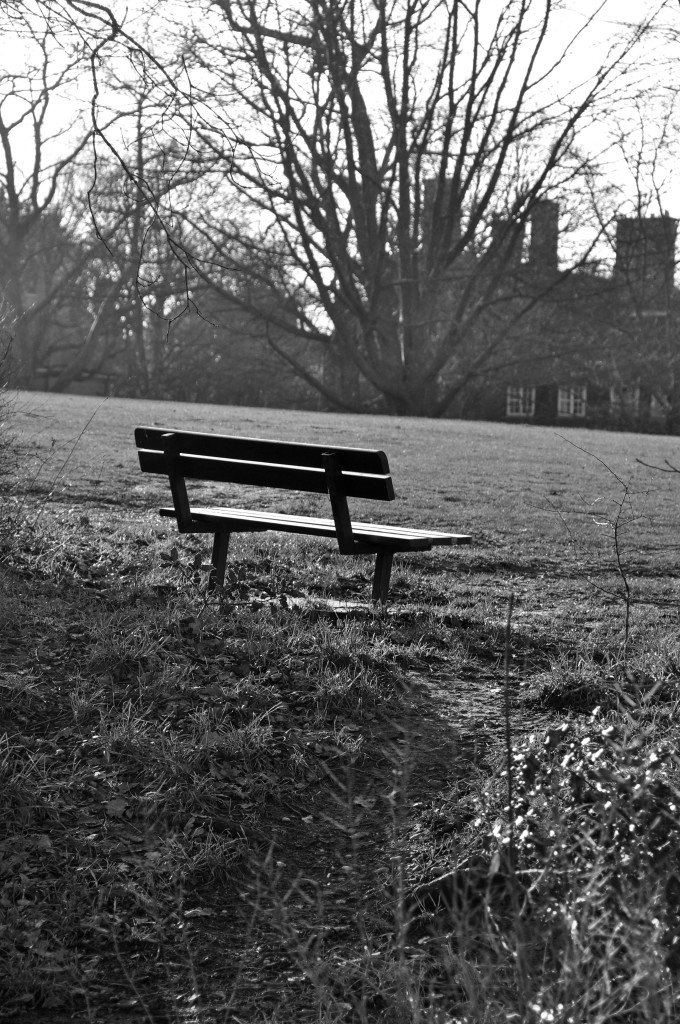 Well, at least two football teams have shown interest in hiring Ched Evans since his release on parole and have seemingly been scared off by public reaction, in the latest case including threats made to staff at the football club that they or their family members would be raped themselves if the club were to go ahead with the deal.
Well, at least two football teams have shown interest in hiring Ched Evans since his release on parole and have seemingly been scared off by public reaction, in the latest case including threats made to staff at the football club that they or their family members would be raped themselves if the club were to go ahead with the deal.
And I’m wondering why it is so difficult for me personally to forgive and forget. There is merit to the idea that this man has paid his “dues” to society for the crime he’s convicted of and much like any other criminal, should now be allowed to get on with his life unimpeded.
Ofcourse most aren’t allowed to slip back into society quite that easily. Most criminals return to their original communities where although they may find family and social support networks, their crimes are likely to be well known. It is notoriously difficult for ex-convicts to find work. No one wants to employ a rapist if there’s an alternative.
And so maybe what is happening to Ched Evans is just the prejudice against all criminals that our society feels and acts out but made visible because of his fame.
It’s been suggested that as a public figure, he should be held to higher standards. But do we really see footballers, or indeed any sportsperson as role models that children should aspire to imitate? Not really. Does the fact that he’s behaved in such a loathesome manner, impact me or my family at all – no.
He still maintains his innocence.
Part of my problem is that Ched Evans still denies fault. He hasn’t accepted that what he has done is a crime for which he has been rightly punished by society.
Until he’s ready to accept what he’s done, to recognise the crime and the damage resulting from that crime then society is entitled to remember and hold him accountable.
And what he did is just abhorrent.
He does not dispute the fact that after a phone call from McDonald saying he’d picked up a girl that he came back to the hotel room with mates. He doesn’t dispute the fact that the girl was falling down drunk, high as a kite on alcohol and drugs. He doesn’t dispute the fact that he had sex with the 17 year old whilst his mates took photos from a window and presumably his fiancee back home slept soundly.
He maintains his innocence, that he believed (and that it was reasonable to believe) that this girl consented.
His conviction is under review.
17th January: Bad Luck
On Jan 2, a research paper published in Science by Cristian Tomasetti and Bert Vogelstein concluded that most individual cancers, 65%, could be attributed to “bad luck”—random events such as errors in DNA replication—rather than to environmental or inherited risk factors.
 The report message is clearly at odds with current public health evidence and thinking – there has been something of an outcry, that journalists must have misinterpreted or over-stated the report, that it couldn’t possibly be taken seriously, etc etc.
The report message is clearly at odds with current public health evidence and thinking – there has been something of an outcry, that journalists must have misinterpreted or over-stated the report, that it couldn’t possibly be taken seriously, etc etc.
But the report does basically make the claims attributed so should we throw out the exercise dvds and take up smoking, eat and drink excessively through life?
The story of cancer is essentially the downside of a great success story. We’re all living longer. According to the Global Burden of Disease Study 2013, global life expectancy for both sexes increased from 65 years to 71 years over the period 1990–2013.
But living longer brings with it an increased risk of cancer. Why? Because every time our cells divide to replicate there is a random chance that something will go wrong in the replication process and the cell produced will be faulty ie. cancerous. The more times our cells replicate ie. the longer we live, the more chance that the process goes wrong.
The study quoted is essentially based on a mathematical model, looking at how often the cells in an organ are likely to divide to replicate, and of those replications, how many are likely to result in cancerous cells assuming everything else works perfectly.
There are limits to the model. The report can be criticised, partly because of the inbuilt uncertainty in the study’s methods and headline estimate (95% confidence interval of 39–81 ie. could be as few as 39% or as many as 81% with a random cause).
But if we were to live forever, the study does suggest that 65% of cancers people die from would be due to plain random chance.
The only certainties in life are death and taxes: we all die.
And maybe if we were all living to our maximum limit, whatever that might be, the idea that 65% of cancers are due to bad luck might have some relevance, some usefulness, but half of all deaths from cancer worldwide are premature, in people aged 30 – 69 years.
World Cancer Day, which falls on Feb 4 and this year is themed Not beyond us, highlights the 8·2 million people expected to die of cancer, worldwide somore than 4 million people are dying ahead of their time.
And a large part of the problem is causal, that is, people who develop cancer because of behavioural and environmental risk factors, including tobacco smoke, unhealthy diets and physical inactivity, and cancer-causing infectious diseases.
But part of the problem is also due to clear differences in treatment. Disparities in cancer outcomes between developing and developed countries are very pronounced: of the 236 000 women estimated to have died from cervical cancer in 2013, most lived in low-income countries.
Even within wealthy countries such as the States, there remain significant disparities in cancer outcomes between socio-economic groups. Poor people die of cancer. Wealthy people get vaccinated, screened and treated, and are significantly less likely to die as a result.
So the recent study is interesting in terms of what we might expect if we lived in a perfect world, where everyone lived forever and screening and treatment were available routinely to everyone at no cost.
Until then, the exercise plan and the healthy diet should stay.
18th January: Typical
Great meal out with friends last night. Good company. Good Food. Great wine.
Far too much. Diet blown.
Roll on February.
19th January: Can a woman raoe a man?
Rape is a vastly under-reported crime, notoriously difficult to prosecute and convict. The pictogram below shows annual rates for 2009/10 and 2011/12 :
Rape is often regarded as a gendered crime where men are always the perpetrators and women are always the victims. As though everyone of the figures above was a woman. Yet of the 78,000 rape victims estimated above, 9,000 are male.
In many countries, the legislation was originally written such that only women could be raped in law. But things change. Many jurisdictions, such as Canada. several US and Australian states, have abandoned the term ‘rape’ altogether and moved to the use of terms such as ‘sexual assault’, ‘sexual intercourse without consent’, ‘criminal sexual conduct’ etc.
In 2012 the FBI changed it’s definition of rape to the following:“Penetration, no matter how slight, of the vagina or anus with any body part or object, or oral penetration by a sex organ of another person, without the consent of the victim.”
Whilst in the UK male rape would once have been recorded as non-consensual buggery, this has now been amended: the Sexual Offences Act 2003 states that penetration of the “mouth, anus or vagina” is sufficient for rape at s.1(1)(a), R v Ismail [2005] and extended the definition of rape to include “sexual assault by penetration” to allow for forcible penetration of any orifice (mouth, vagina, anus) by any object and by any gender with a maximum life sentence.
In 1978 in the UK, Joyce McKinney was sentenced to 12 months in prison for forcing a man to have sex with her while chained up. Now she would be probably be charged with rape.
The new definitions allow for non-gendered reporting to include men being raped within official statistics.
But if men are raped, who are the rapists?
There has been something of a media circus surrounding the idea of women raping men recently. After a CDC report in the US, the term “made to penetrate” has been used where men are forced to engage in penetrative sex with a woman without proper consent. The male victims are generally described as being under the influence of drugs or alcohol or are being held in life-threatening positions.
A US national headline case frequently quoted involves a woman, Cierra Ross, picking up a man and forcing him to have sex with her friend in the back of their car before robbing him. In 2013 she was convicted of aggravated criminal sexual abuse and armed robbery. In the media (Time Magazine, Huffington Post etc) she is accused of being a female rapist though not convicted as such.
Yet despite the media interest, data from official sources on offender populations in the US, UK and Canada support the idea that female sex offending in total is rare, and female rapists rarer still.
Per US Dept Justice (2002) in the US 2001 only 1.2% of those charged with forcible rape & 8% charged with sexual offences were female. Statistics from the Canadian Centre for Justice Statistics (2001) reveal that in 2000 only 1.5% adults convicted of sexual assault were female. There is no suggestion that the victims of these female offenders were male but rather other women.
The US Bureau of Statistitcs (1997) stated that 91% of US people whose rape accusations resulted in convictions against the accused were female and 9% were male. It also stated that 99% of the people convicted of and imprisoned in response to rape accusations were male, with only 1% of those convicted being female
It’s not physically impossible for a woman to rape a man. The case of James Landrith waking from a drunken stupor to find a pregnant woman on top of him having sex is entirely plausible ( though obviously not proven in court). Through the use of drink and drugs it would seem possible for a woman to overcome the inherrent physical problems in “forcing” a significantly stronger man to engage in penetrative sex.
It’s also entirely believable that men can at time feel coeced into sex as per the recent study on young men and boys. Because they want to please their partner, or live up to some virile male ideology, or stop the whining/nagging/hassle, though interestingly the study (Bryanna H French et al) also went on to show that despite the coercion, most men and boys didn’t go on to have sex. Most felt able to say “No”.
But the scale of women raping men is so tiny compared to the number of men raping other men, and so infinitesimal compared to the numbers of men raping women that each case seems to get it’s own headline on arrest (though not necessarily convicted) and then usually fade from view.
In the 2013 UK official statistics from the Ministry of Justice* and the Scottish Government** record more than 86,000 rapes each year, more than 235 per day, it’s difficult to imagine what a newspaper or journal would look like if it reported each and everyone of those rapes as a headline every day. It’s difficult to conceive of even a list being included within our daily newspapers.
Clearly, the idea of female/male rape makes a good headline because of it’s rarity.
What is perhaps most shocking about the media reaction, is it’s willingness to write headlines about almost non-existent female/male rape whilst entirely ignoring the more significant incidents of male/male rape within society.
Research suggests that the notoriously low report rate (typically 15% for male/female rape) is particularly true among male victims.
The first successful prosecution for attempted male on male rape in the UK was not until 1995.
The failure of the media to report accurately on rape is disturbing. It perpetuates the gender stereotype that men cannot be victims except under the most extraordinary curcimstances. It totally disregards male/male rape as an issue and instead promotes the straw horse that women are increasingly forcing men to penetrate them or forcing men to receive oral sex through coercion.
Can we really equate rape convictions with the number of times men self-report having sex that they didn’t really want? At best this would be taking numbers from the top of the pictogram for men, and attempting to compare them with female numbers from the bottom of the pictogram, ignoring the fact that only 1 in 70 actually make it that far? Really?
Women can rape men with the use of drugs and alcohol.
They just never do – where never means rarely ever or in vanishingly small numbers.
***Prevalence and Characteristics of Sexual Violence, Stalking …
21st January: Old Bailey
When will you pay me?
Say the bells of Old Bailey.
 The bells of the Old Bailey most probably refer to the bells rung at St Sepulchre-without-Newgate which is a five minute walk from St Paul’s Tube station on the Central Line. It’s the first church that wasn’t open when I randomly dropped by one Monday, so I’ll have to go back to a service (Tuesday, 1-2pm) if I want some internal photographs.
The bells of the Old Bailey most probably refer to the bells rung at St Sepulchre-without-Newgate which is a five minute walk from St Paul’s Tube station on the Central Line. It’s the first church that wasn’t open when I randomly dropped by one Monday, so I’ll have to go back to a service (Tuesday, 1-2pm) if I want some internal photographs.
There has been a church on this site from around 1137 when a charter records that Rahere (the founder of St. Bartholomew’s Hospital) appointed ‘Hagno the Clerk’ as priest of St. Sepulchre’s.
The current building dates from 1450 though the interior was completely gutted in the Great Fire of London in 1666 and had to be totally re-built. Since then the interior has been substantially changed a number of times in the 18th Century; in 1834 and again in 1878. There are also two significant chapels in the church, the Musician’s Chapel and the Royal Fusiliers Chapel.
Famous people associated with the church include: Roger Ascham, Thomas Culpeper, Sir Henry Wood (founder of the Proms)John Rogers (English Reformation) and captain John Smith (Pocahontas etc) which is all very interesting but on a cold frosty morning the best idea seemed to be to turn around and head over to St Paul’s instead.
Although no photography is allowed in St Paul’s itself, you are allowed to climb the Dome and take pictures of the panaromic views from the top.
I love London.
Starting from the East looking towards canary Wharf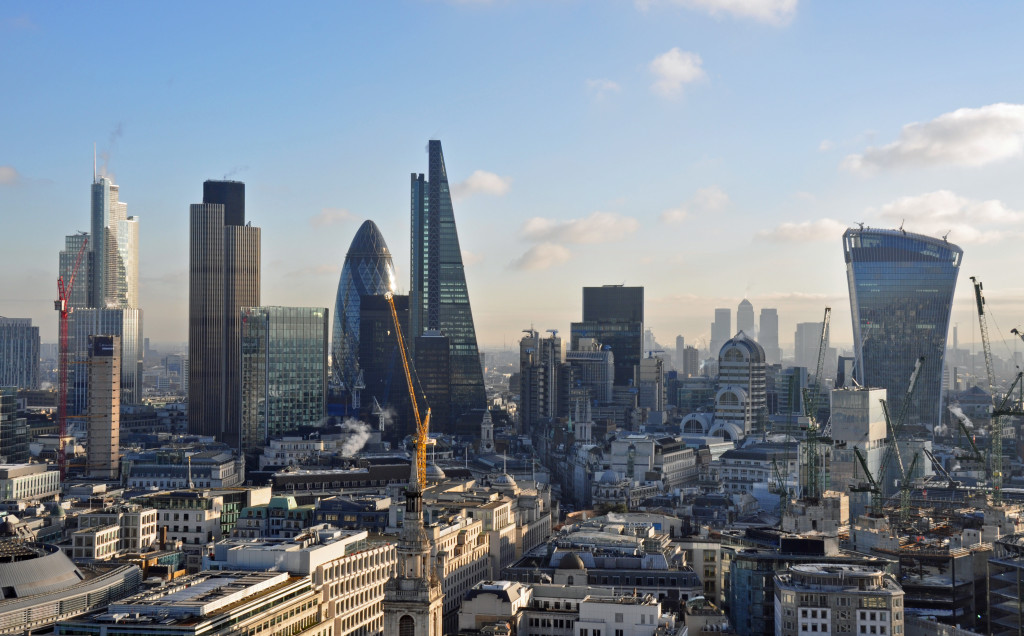
View south-east across the Thames towards the Shard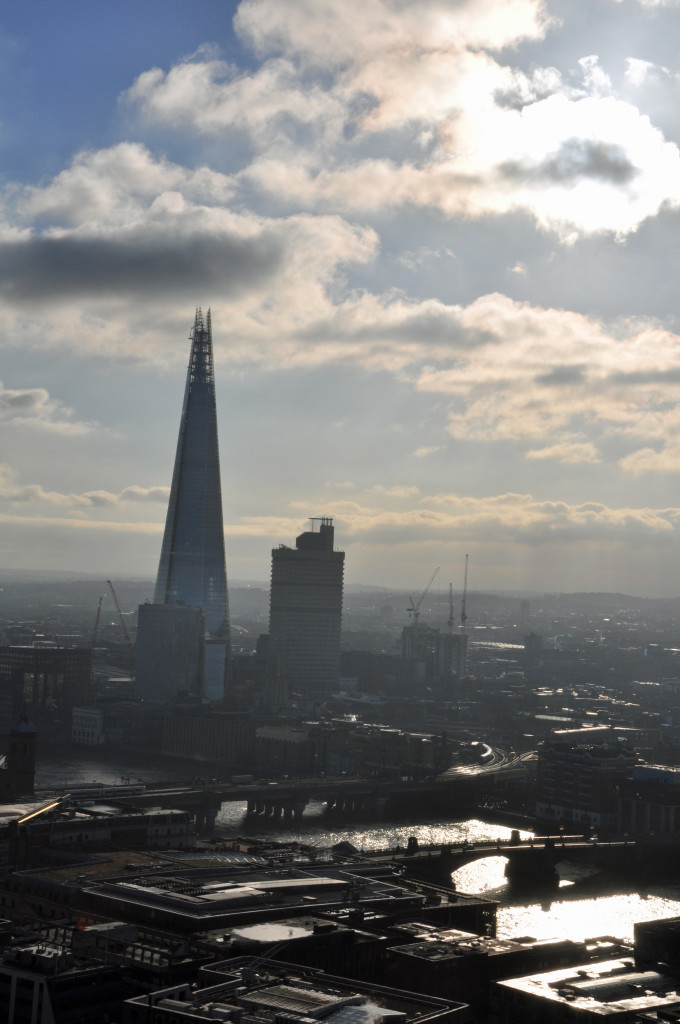
View south across the Thames and Millenium Bridge towards Tate Modern
22nd January: Clogs
I love everything about living in London, even the weather but increasingly when I visit friends or family living outside of the M25, the motorway circling my city, I feel as if I’m visiting another country.
I first moved here more than 25 years ago and despite a few years spent overseas, North London has always felt like home. I arrived here straight from university with the country recovering from a serious recession, desperate for a job, a safe, secure well-paid job. Accountancy followed by a career in investment banking ticked all of the boxes. It also allowed me to ride a dramatic expansion in the financial services sector in the UK,specifically in London.
I got lucky along with every other young person making my way to the big city. Timing is everything.
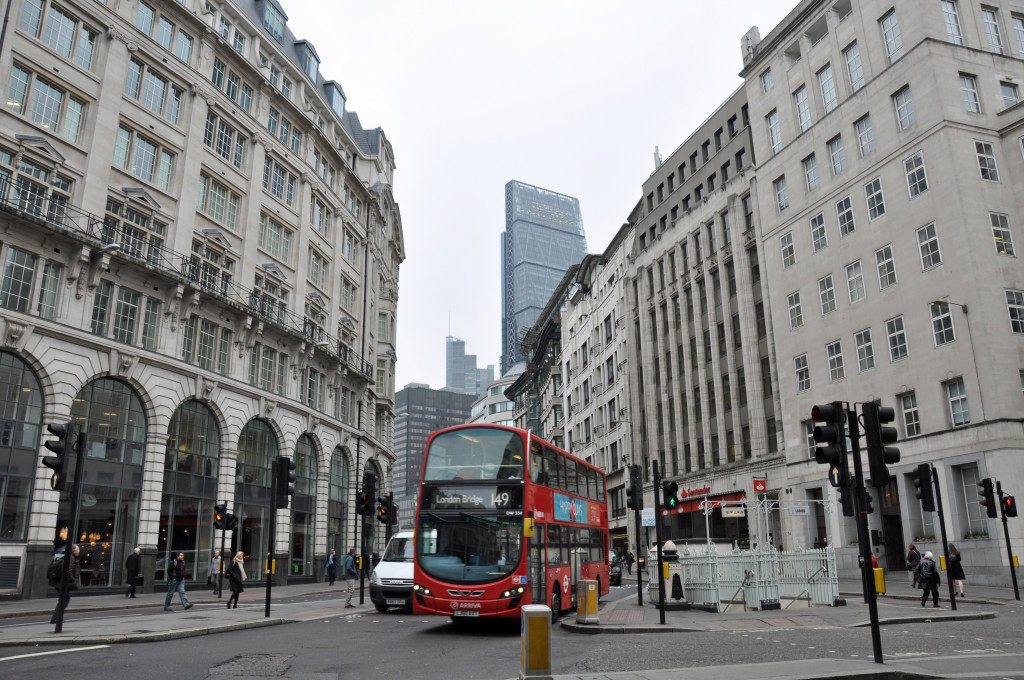 From the early-1990s there have been two significant economic changes in the UK, a huge improvement in London’s growth performance; and at the same time, a progressive falling behind in growth of much of regional Britain north of a line from the Wash to the Severn. Looking at the graphs, London at the top of the charts and Wales at the bottom, I’m really glad I didn’t stay in Wales.
From the early-1990s there have been two significant economic changes in the UK, a huge improvement in London’s growth performance; and at the same time, a progressive falling behind in growth of much of regional Britain north of a line from the Wash to the Severn. Looking at the graphs, London at the top of the charts and Wales at the bottom, I’m really glad I didn’t stay in Wales.
During the 1970s and much of the 1980s, London actually fell behind (in output terms) almost all of the rest of Britain, losing most of it’s manufacturing industrial base. It was more like the North than the rest of the South of the country.
But in 1986 with the financial deregulation and liberalization of ‘Big Bang’, London’s economic fortunes turned around dramatically, with the longest boom in the city and country’s history. It was by far the fastest growing part of the national economy, and propelled the superior growth of the South as a whole.
The bulk of London’s output growth came from finance, banking, insurance and related services, and the capital dominates this sector of the economy still. Just as London and the South East captured much of the ‘new economy’ of mass consumer goods industries in the 1920s and 1930s, so in the 1990s and 2000s these areas triumphed in the extraordinary growth of the new ‘finance-led economy’, or rather what turned out to be an unstable and unsustainable financial bubble.
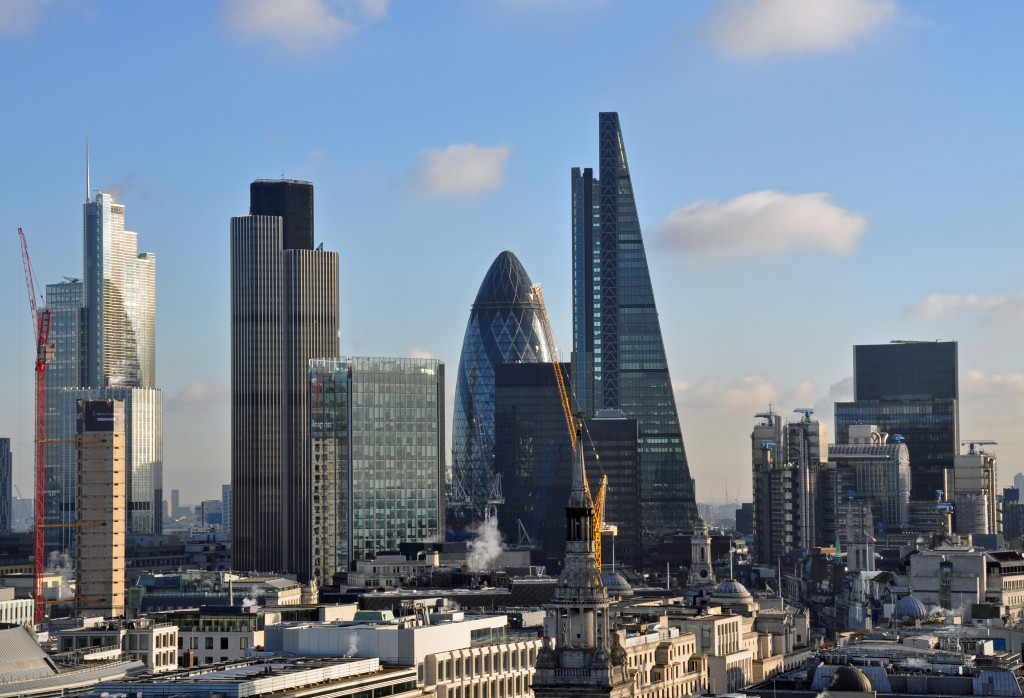
But even when the bubble burst, London was relatively lucky with the government feeling obliged to bail out the very institutions that caused the problem. The UK dependency upon the financial sector seems to have put it beyond harm.
There have been repeated calls by governments over the last 20 years to try and rebalance the country’s economy geographically. But whilst the political talk is consistent, no government seems willing to actually spend the money required. For decades, the UK governments of various political persuasions have failed to nurture, invest or support Brtish industry, to re-industrialise outside of London.
The closest attempt to develop a coherent regional plan was made by Lord Heseltine (a Conservative politician and then peer) for devolving some £50 billion of public expenditure annually to the regions and cities outside London (proposals that echo his earlier complaint in the 1980s that the sums devoted to regional assistance were dwarfed by London’s and the South’s share of public expenditure). Although approved (in theory) by the Chancellor, it looks like the actual sums devolved from central government are likely to be closer to £2 billion than £50 billion. It won’t be enough to make a difference.
Despite talking a redistributive story, the truth is that successive governments have all spent more money supporting the “success” story in London and the south-east than the regions and they look likely to continue doing so, whatever political party wins out in the coming election.
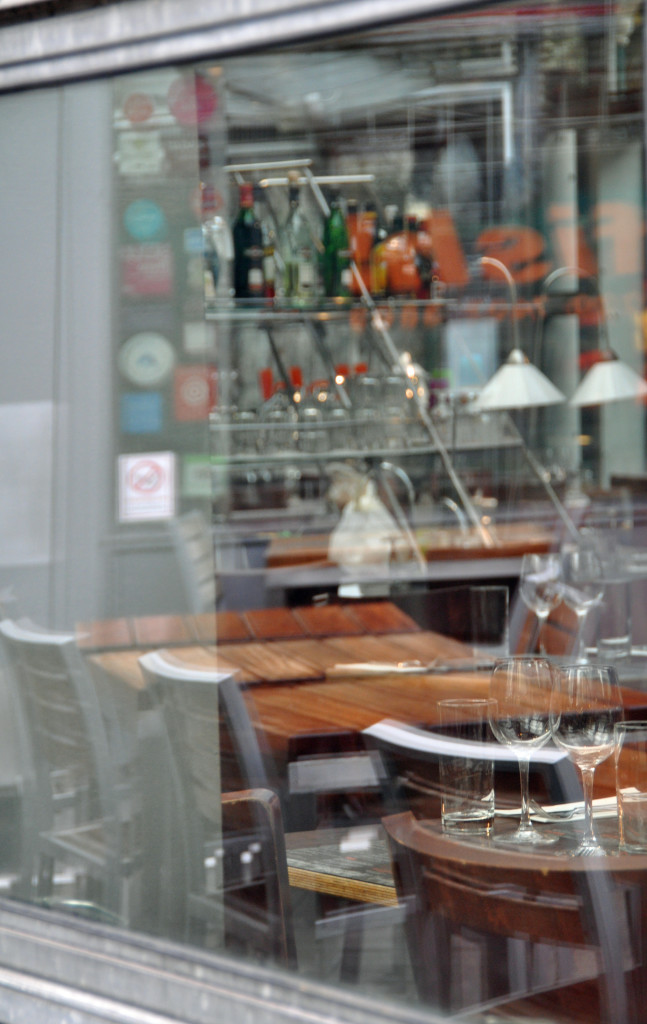
It’s important to recognise that the economies of London and the South East are not simply driven by market forces. London’s success has not been inevitable in any way shape or form. It’s success has been heavily underwritten by the State. It’s important to acknowledge that this part of the country enjoys preferential access to finance; that it is able to exert a disproportionate influence on government economic policy; and that in London it has a city which has a degree of political and economic autonomy not found in other UK cities. Being closer to the seat of polictical power has tangible benefits.
Debates on regional policy are hamstrung by a belief that the economies of London and the regions are essentially in a zero-sum competitive game, so that any moves to support the North’s cities and economies are too easily dismissed as harmful to London. There is ofcourse no hard evidence to suggest that improving the economy in Leicester will harm the economy in London.
An economy so highly reliant on London and the South East is wasteful and unstable. Maybe stronger regional government is the answer. If only politicians could be persuaded to give away real power to the regions, the money might follow. Wales doesn’t seem to have benefitted greatly so far.
But in the meantime, what happens to the indiviuals living in the vastly unequal society?
A divide is opening up between my children and their cousins living out in the sticks. In part, the division is one of expectations. but also of safe middle class knowledge.
I expect my girls to go to university, good universities. I know what makes a recognisably good university to people like me who are the ones involved in recruiting for safe middle class jobs. And I know what doesn’t. My daughter might go to Bath University but we probably wouldn’t spend the money on a course at Bath Spa where her cousin is about to study English and Journalism.
My girls might study English (one almost certainly will) but she won’t waste time on Journalism. The media sector is contracting. Jobs in the media, especially print newspapers but also tv, are harder and harder to come by. The sector is being squeezed worldwide by the rise of social media. To get a job as a journalist is tricky, and doesn’t need a degree in journalism.
Better to have a well-respected academic degree like English that lends itself to lots of professions than one that is specific to a declining sector, that if stretched outside of that sector requires an explanation.
“Why journalism if you’re now looking for a job in marketing/ banking/HR etc? Did you fail at journalism? Are we your second choice?”
They’ll have to decide for themselves whether they want to stay living in London. It will determine a lot of their life choices but it will also allow them more choices further down the line.
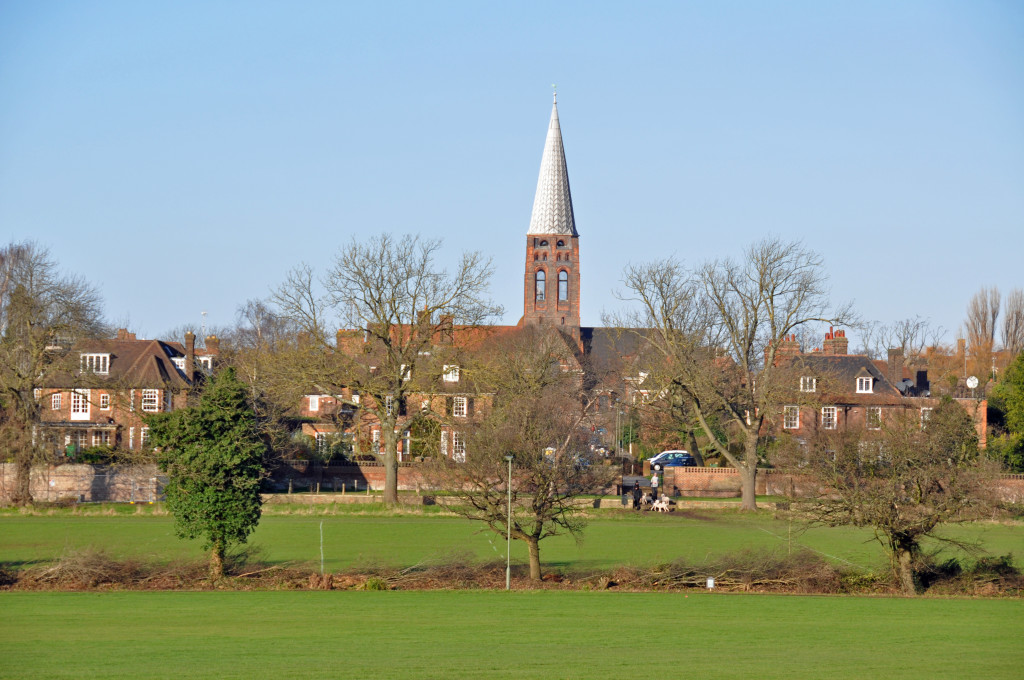 If I were making my choices now, it isn’t clear that I would still choose the high stress City lifestyle, even though it’s been incredibly financially rewarding. And then I think about all the marvellous places I’ve been, the people I’ve met and the things that I’ve seen all of which would have been missed if I’d led a quieter life outside of the South East. Having dragged them around the world already, maybe my girls will value those experiences less. Maybe they will want more time to themselves to actually live their lives and relationships more fully.
If I were making my choices now, it isn’t clear that I would still choose the high stress City lifestyle, even though it’s been incredibly financially rewarding. And then I think about all the marvellous places I’ve been, the people I’ve met and the things that I’ve seen all of which would have been missed if I’d led a quieter life outside of the South East. Having dragged them around the world already, maybe my girls will value those experiences less. Maybe they will want more time to themselves to actually live their lives and relationships more fully.
I love living in London.
Maybe after the Scottish Referendum, there will be a real increased devolution of power and money to local government but I’m cynical. When have people or institutions ever voluntarily given up power? More than fifty years after various equal rights amendments, and we have yet to see wage parity in the workforce, yet to see equal outcomes by gender, race etc.
My children might choose to leave London and live gentler lives. The tricky bit will be trying to make sure their children, my grandchildren will be able to have the choice to come back.
Clogs to clogs in three generations. Our parents were definitely clog wearing working class. What will our grandchildren wear?
23rd January: Offensive
I was struck by the Radio 4 “Thought for the Day” this morning. It remembered fondly times when people marched in protest against the actions of their Government, whether agitating for rights for women, for minority groups or marching against nuclear weapons, against Cold War confrontation.
Nowadays, as with Charlie Hebdo, the Govenment or Governments from around the world, join with the crowds on the street to protest against the actions of some of the citizens.
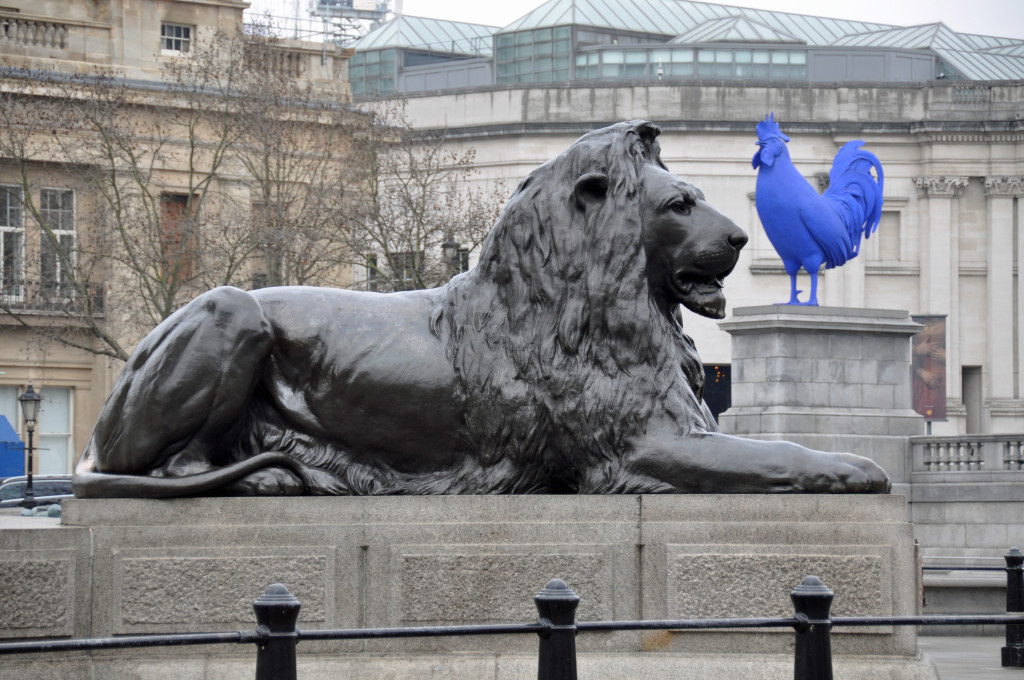 It seems clear that no matter how offensive I find something or somebody to be, I have no right to shoot them dead, or indeed to harm them in any way. I can report or refer them to the proper authorities, who may look into whether they have broken the law but I cannot take the law into my own hands.
It seems clear that no matter how offensive I find something or somebody to be, I have no right to shoot them dead, or indeed to harm them in any way. I can report or refer them to the proper authorities, who may look into whether they have broken the law but I cannot take the law into my own hands.
But it has been a long time (if ever) since freedom of speech included the right to say anything at any time to anyone. The UK doesn’t have a constitution detailing what can and cannot be said, though our common law (the law built up through the years of litigation in courts) does allow for freedom of expression.
There are a huge range of limitations and exceptions, however, including threatening, abusive or insulting words or behaviour intended to cause distress or cause a breach of the peace. In general, it is unwise and probably illegal to publish indecent or grossly offensive articles. Incitement to racial hatred, to terrorism, treason, defamtion, corruption of public officials, prejudicing or interfering with court proceedings or communicating privileged material is clearly illegal.
It’s important to recognise that the UK has some of the most stringent laws relating to defamation placing the entire burden of proof on the defendant. Only very recently has the House of Lords revived the Reynold’s Defence whereby journalism undertaken in the public interest shall enjoy a complete defence against a libel (Jameel v Wall Street Journal, Oct. 2006). We cannot say or tweet anything to anyone without considering conequences and perhaps that is not unreasonable.
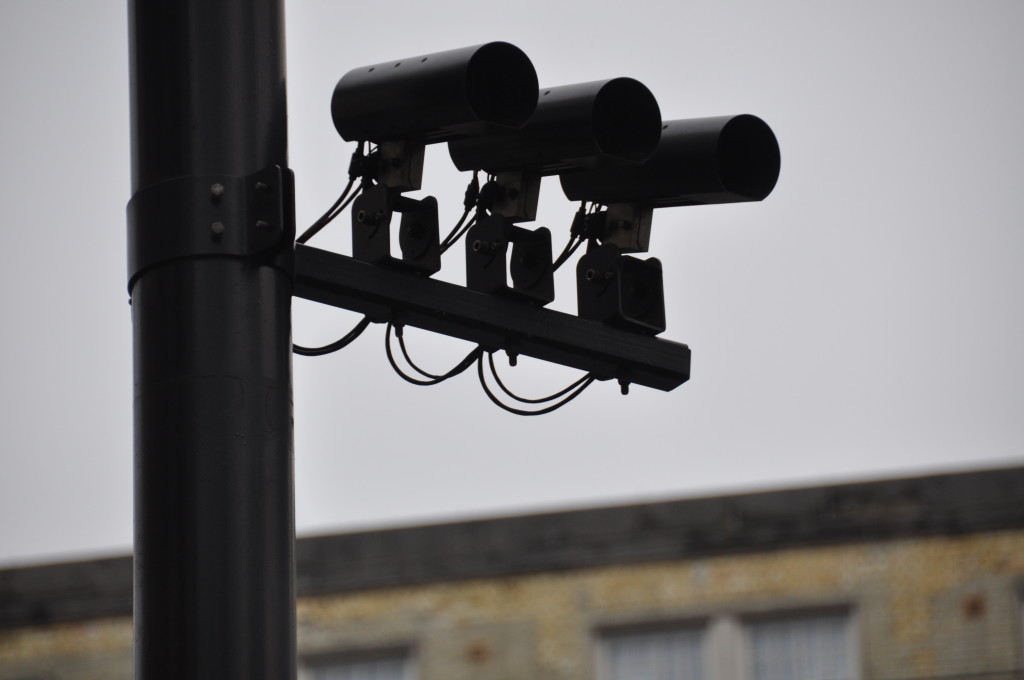 But whatever the law says, there are still taboos alive and kicking in Europe, just not the same ones as in the rest of the world maybe.
But whatever the law says, there are still taboos alive and kicking in Europe, just not the same ones as in the rest of the world maybe.
With the decline of organised religion, we have seen the rise of the cult of the individual. We can say almost anything we like about religion or religious groups and figures. There is very little about sex or adult sexual activity that would be deemed grossly offensive.
The British Board of Film Classification decides which movies may be shown to those under 18. It’s list of criteria is long , but the section on “language” is a single short phrase: “repeated/aggressive use of ‘cunt’” is the only language that will get a movie slapped with an “18+ only”.
But we still have our taboos.
Taboo words have moved from the religious through the sexual and excretory. In the modern West, the last truly shocking words are those that refer to disadvantaged groups: women, gays, members of racial minorities and those with disabilities.
The liberal newspaper editors who proudly reprinted offensive Muhammad cartoons from Charlie Hebdo out of solidarity with their dead colleagues would never dream (quite rightly) of using the words that slur people from Muslim countries: towelhead, camel jockey, Paki or (pause and breathe out) sand nigger.
Western taboos respect neither god nor sex, but only the individual.
And perhaps that is a fair reflection of the society we want to live in, one where a person can be blamed for being a fool, but not for being the child of a foolish family or culture, however we choose to define foolishness.
And if there are words or images we won’t say or print for the sake of decency, are there also words that won’t be said or printed out of fear?
Amongst the journals that did not reprint the offense causing cartoon, the Danish newspaper Jyllands-Posten were explicit, explaining to it’s readers that this was a simple and clear security judgement.
How many of us hide behind the idea of sensitivity to minorities and the disadvantaged, a peaceful acceptance of cultural difference and the prioritisation of good manners above the right to free speech?
Peaceful acceptance of cultural difference cannot be achieved when one group reserves the right to shoot the other if offended.
The common distaste for imagery in both Islam, Judaism and Christianity derives from it’s inadequacy in capturing the numinous. In Islam as with Judaism, it simply isn’t possible to capture the perfection of God. There is a huge anxiety at the attempt only where the image may be worshipped in place of the God it seeks to capture, through the veneration of icons etc.
 In many ways, by poking fun through images, by capturing the hypocrisy of organised religions, the satirists are showing themselves to be far more in tune with the religious precepts of the Abrahmic faiths, than our secular world could possibly allow. They highlight the inadequacies of the human when faced with the divine. They show so clearly how we fail, how organised religion fails.
In many ways, by poking fun through images, by capturing the hypocrisy of organised religions, the satirists are showing themselves to be far more in tune with the religious precepts of the Abrahmic faiths, than our secular world could possibly allow. They highlight the inadequacies of the human when faced with the divine. They show so clearly how we fail, how organised religion fails.
People will be offended.
I could choose to be offended at the the idea of the artwork Immersion (Piss Christ) by Andre Serrano where a crucifix is photgraphed submerged in urine. Like Islam, the Anglican Christian Church has had an uneasy relationship with depictions of God, never mind images soaked in human pee.
Instead I choose to regard it as a question on how society views God, how we seem increasingly uncomfortable with both the idea of bodily fluids and deity. It seems that we can no longer reconcile the physical with the spirit or soul and so must dismiss one or the other.
24th January: Shadows
My youngest girl took a pack of cyanotype paper into Art class but came home disappointed. “It doesn’t work” So without any great hope I opened up the second pack and started to lay out some objects to make shadow pictures or blueprints.
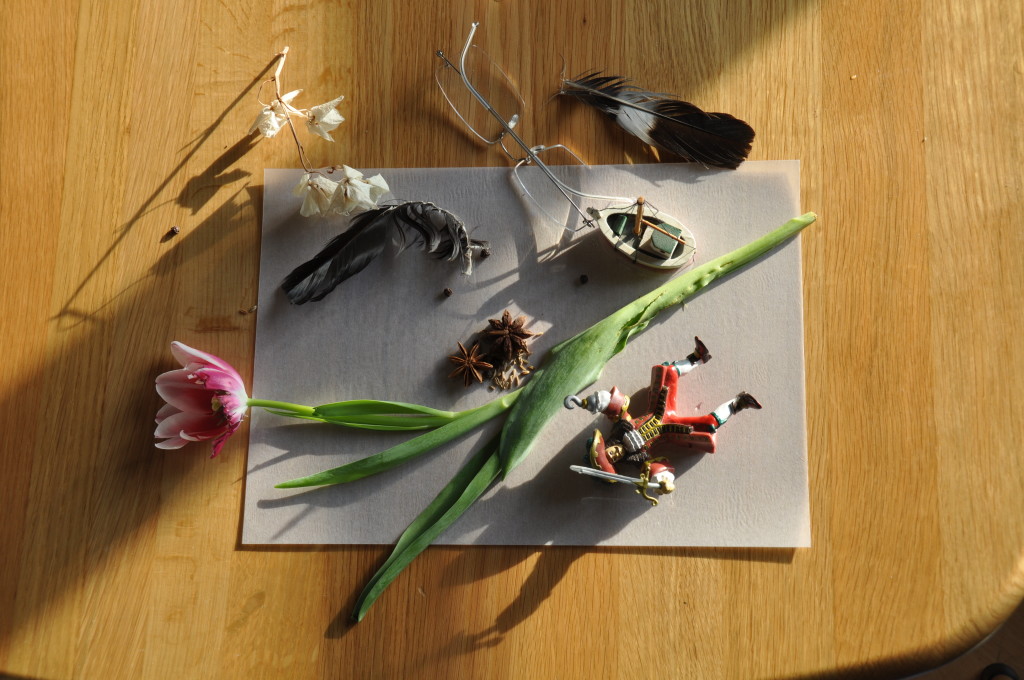 On a Winter morning there isn’t a great deal of sun about so the minutes and then hours passed by without the paper turning white. It was difficult to tell whether the problem was with the paper or the sunshine so I headed out to the shops. The sun came out, and eventually I made my way home only to find white paper waiting. A quick wash and a few more objects laid out and suddenly all is well with the world of cyanotypes.
On a Winter morning there isn’t a great deal of sun about so the minutes and then hours passed by without the paper turning white. It was difficult to tell whether the problem was with the paper or the sunshine so I headed out to the shops. The sun came out, and eventually I made my way home only to find white paper waiting. A quick wash and a few more objects laid out and suddenly all is well with the world of cyanotypes.
She’s not going to be happy at my success.
I’ve ordered more and will make some shadow pictures with her one weekend so that she has the confidence to stick with it in the class room. Like everything in life, you have to trust that it will work eventually, and not care too much if it fails.
Now all I have to do is decide what to do with all of these prints.
Detail shown below:



26th January: Life Sucks
My oldest daughter is a very smart, very academic, straight A student or at least she was until I f*cked it up.
 At 16 children in the UK sit their GCSE exams, usually 8 or 9 in the State schools, usually around 10 in the private schools around here. All schools have to include English and Mathematics. Most private schools make you take English Literature (as well as Language) three science subjects (physics, chemistry, biology) at least one modern language and at least one of the humanites. So in the end, there feels as if there is very little choice. There’s no benefit to sitting more than 9 subjects other than the child’s own interest and keeping options open until she’s found her “thing”.
At 16 children in the UK sit their GCSE exams, usually 8 or 9 in the State schools, usually around 10 in the private schools around here. All schools have to include English and Mathematics. Most private schools make you take English Literature (as well as Language) three science subjects (physics, chemistry, biology) at least one modern language and at least one of the humanites. So in the end, there feels as if there is very little choice. There’s no benefit to sitting more than 9 subjects other than the child’s own interest and keeping options open until she’s found her “thing”.
My baby sat 10 CGSEs and scored 8A*s and 2As. So far, so brilliant.
The UK system requires a child to specialise quite early. Immediately after GCSEs you choose 4AS subjects, with a view to dropping one after a year and continuing with three subjects only to A levels at 18 years old. The system will change for my youngest (no one is quite sure how the abolition of AS levels will work out) but for the oldest, this is the system we’re living with
Choosing three subjects was relatively straightforward: English History (20th Century) and Philosphy. The fourth subject was the best of a bad job.
My baby would have liked to study Politics or Drama but I wasn’t happy with those choices: too woolly, too liberal arts heavy. She rejected Spanish, Economics and all three sciences. Maths was the compromise.
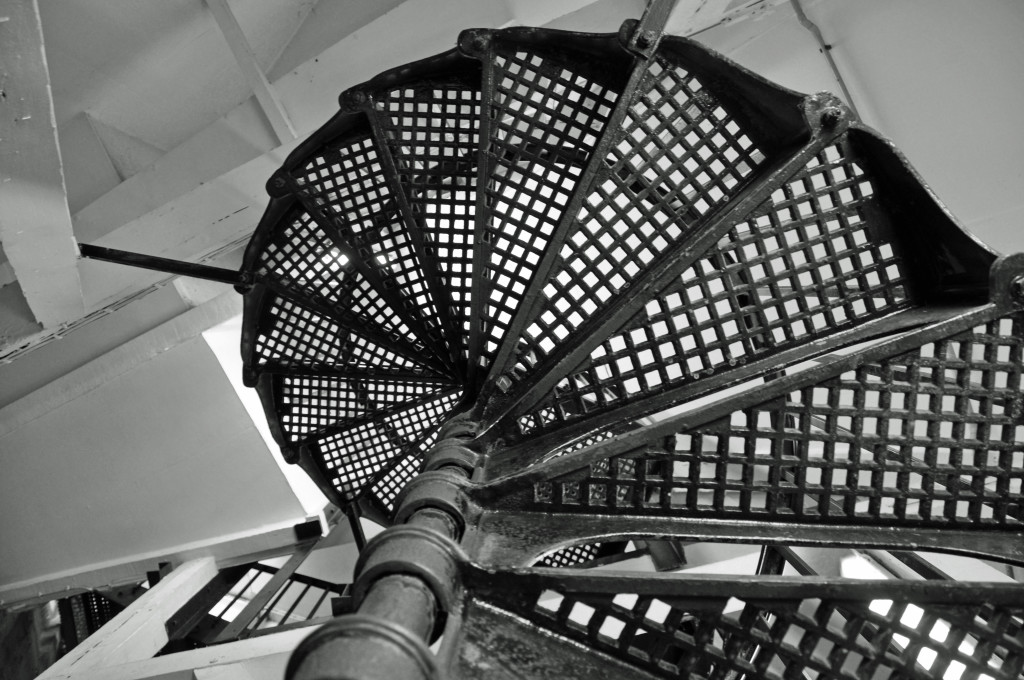 So of course in her recent mock AS exams, maths was a disaster. For the first time ever my baby got a C and I feel as if it’s all my fault. My baby is crying with stress and it’s all because of my interference.
So of course in her recent mock AS exams, maths was a disaster. For the first time ever my baby got a C and I feel as if it’s all my fault. My baby is crying with stress and it’s all because of my interference.
AS level marks are important for entrance into Cambridge, which is where she’d like to study Philosophy or English. Oxford has a more traditional sounding English course or the combined degrees PPE (Philosophy, Politics and Economics. And whilst there is clearly life outside of Oxbridge, and some excellent courses in Russell Group Universities, this is the first time that my girl has faced the fact that she might not get what she wants.
And whilst it’s a lesson that we all have to learn at some stage, along with the fact that there are people out there who are simply more clever, more beautiful etc I can’t help feeling that this is all my fault, my f*ck up.
Life sucks.
27th January: Thames
It’s surprisingly easy if you live in North London to ignore the fact that London is built on a river. I’d heard about the commuter boats that now run up and down the Thames and decided to have a look.


Since I wanted to chug past the Houses of Parliament, I needed to pick up the boat at Vauxhall (or further west down towards Putney) and change at Embankment.
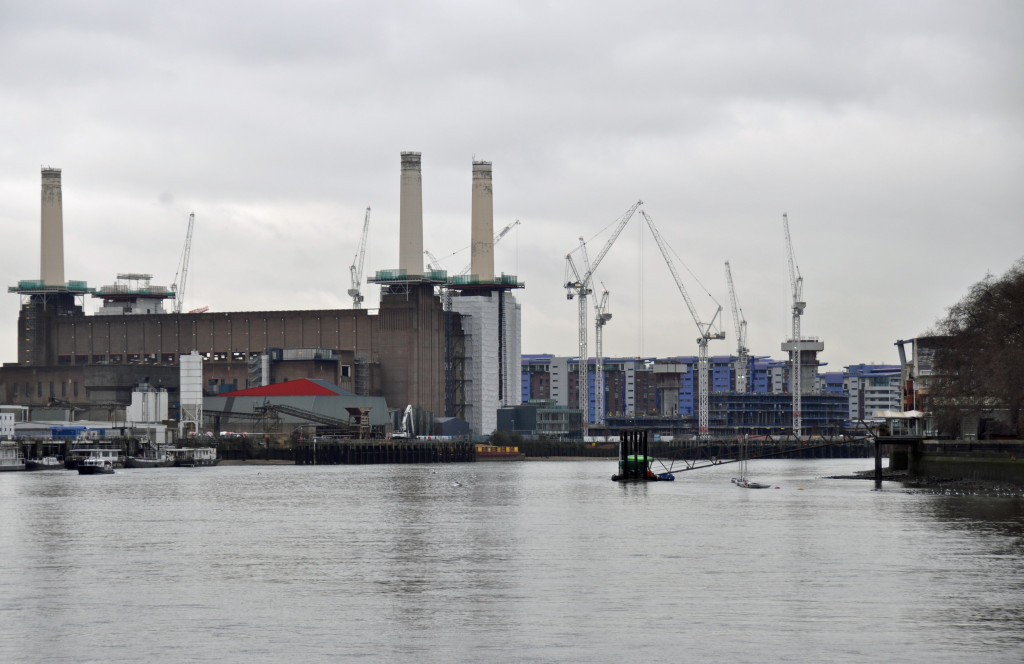
There is something marvellous about messing around on boats even on a dreary grey day in London.
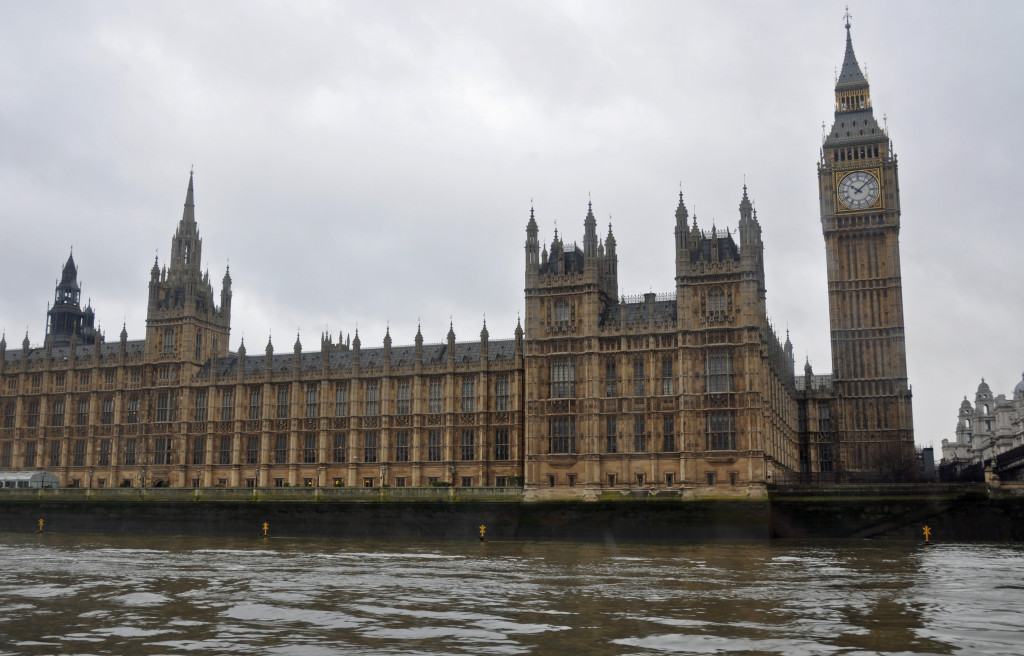
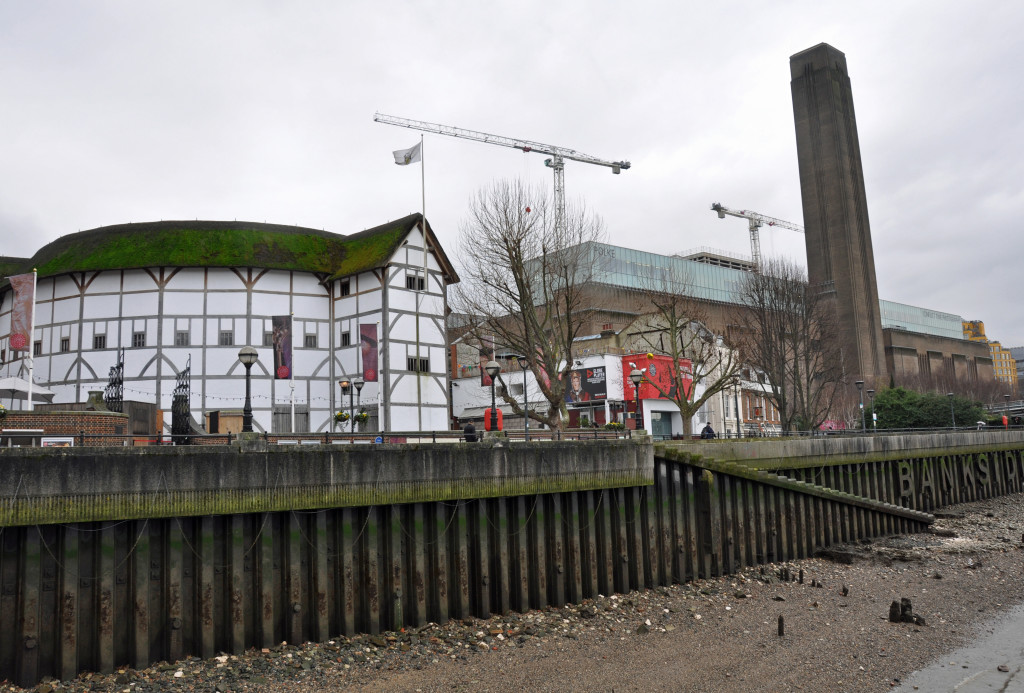
And it was a revelation to see how many of my favourites places were stops on the route, I guess because for a lot of the historical sites the river was the easiest way of getting around.

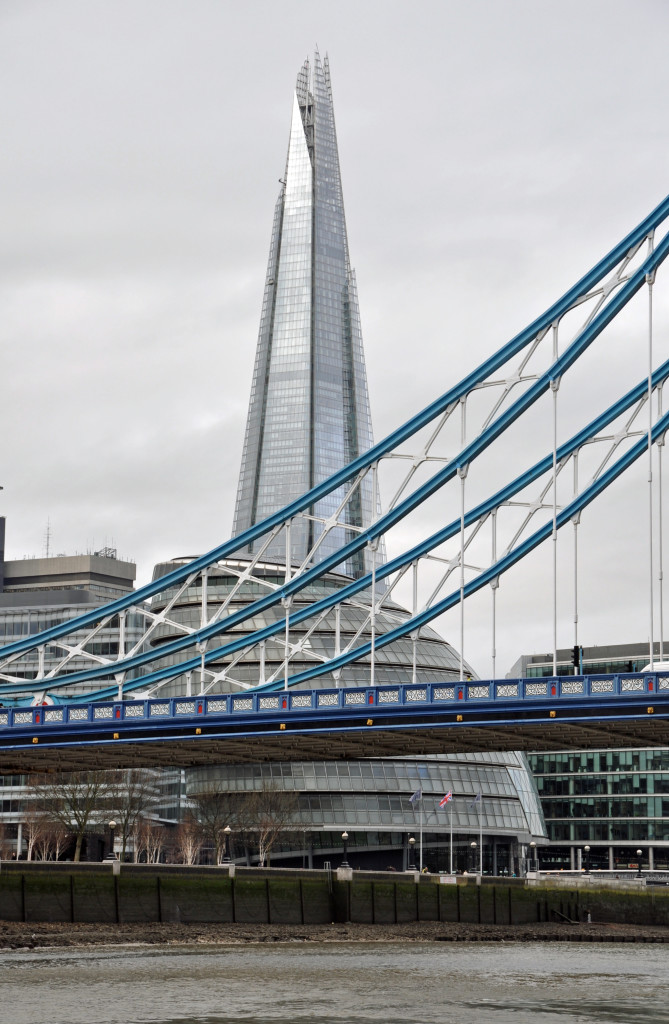
Every city seems to have one building there’s no getting away from and suddenly for London that seems to be the Shard.

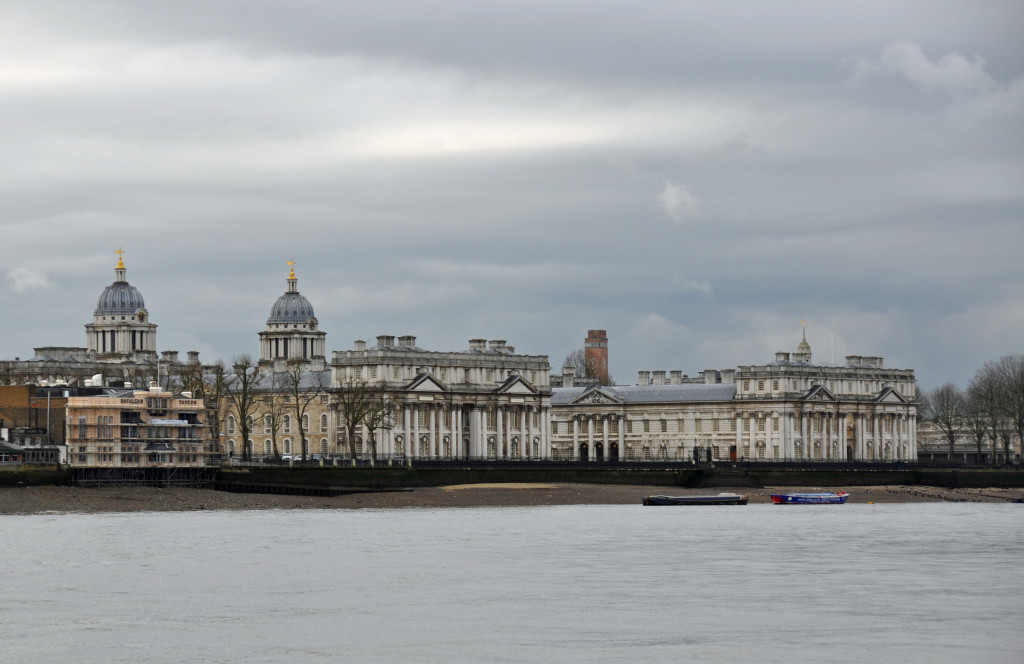
Further west and the banks of the Thames become a more mixed up collection of Thames’ industrial past and new housing developments springing up.
And then you hit Canary Wharf with it’s financial towers dwarfing the riverside.
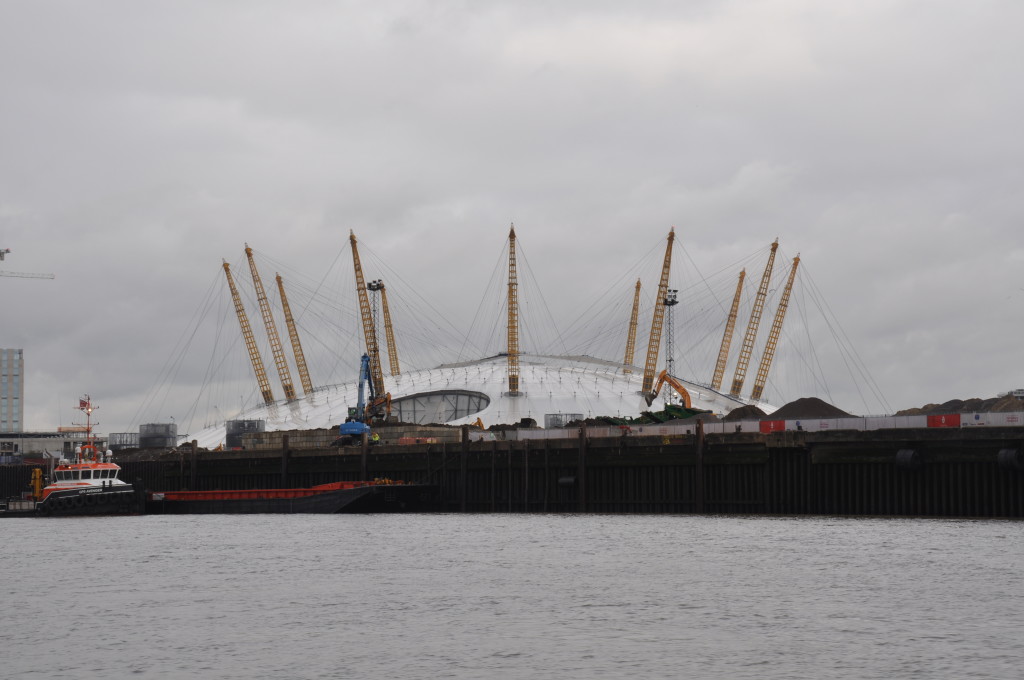
Buying a Roamer ticket on the commuter catamarans seemed a lot more sensible than the “official” tourist boats. Youn can spend a whole day wandering up and down the river, stopping off at the various sites and just generally getting a feel for the old and the new of the city.
I’ve added a whole series of photos from the Thames in the Gallery>London>Thames.
28th January: Losers
It’s the last week of January which means that all of those people who needed to diet have just fallen off their treadmills and are about to abandon all hope. Suddenly the gym will start to feel empty, with fewer and slimmer bodies left behind.
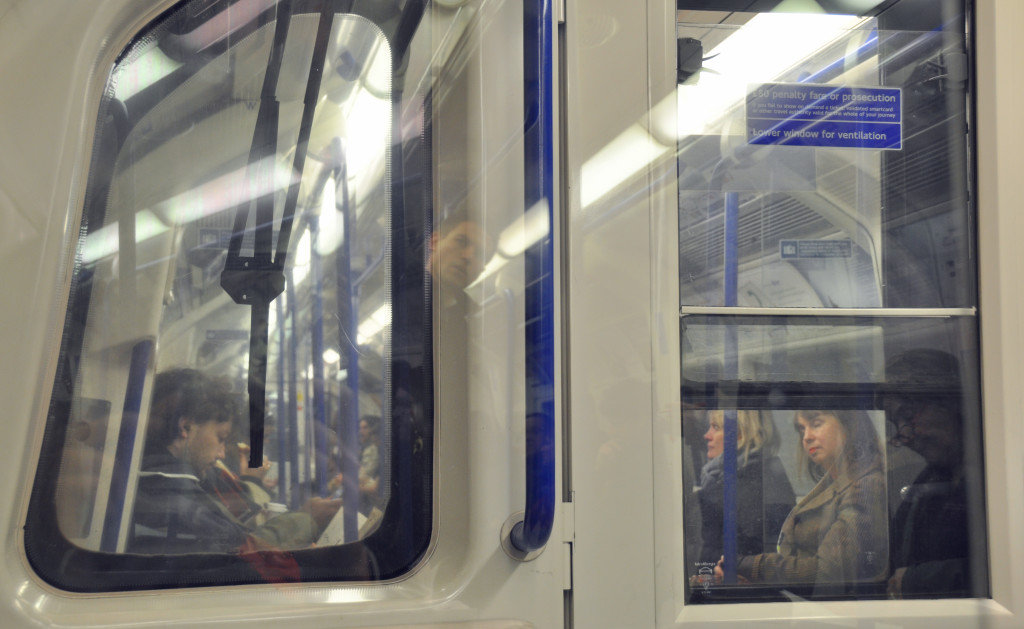
Given how many of us are overwieght or obese, it continues to amaze me how judegemental society is towards those extra pounds, how much we blame the individual for a society wide problem.
Assume you’re an average, middle aged woman, say 45 years old and feeling slightly overweight weighing around 11 stone (about 70kg) and about 5ft 5ins (1.65m). You’ll use up around 1850 calories just living and breating your way through the day. Every pound of fat on your body contains around 3000 calories. To lose a pound of fat you have to reduce your weekly calorie intake to around 1300. To lose 2 pounds of fat a week, you have to cut your calorie intake to a minimum 1200 and exercise to spend 1450 more calories. each and every week until the pounds have gone.
A brisk walk for 30 minutes uses up just 133 calories. The same time spent cycling reasonably fast will use up 245 calories. Running (at 5mph) will use up 280 calories.
So you can walk for an hour a day, 5 days a week, cycle for 30 minutes 6 times a week or jog 30 minutes a day (plus a bit) for 5 days a week.
Sound like hard work? Ready for a bar of chocolate?

Because the unspoken truth about exercise is that we all feel hungry afterwards, and the temptation to splurge those calories because we’ve earned them, we’ve been “good” is hard to refuse.
Slim people eat less.
They always eat less. Day after day, year after year, they eat less food. They are not better people, not more disciplined necessarily. Who knows whether they all simply never got interested in food, never got caught out by cream cake comforts? They are stuck in a repeating pattern that works out slim.
They eat less.
They tend to have really dull, but healthy meal plans that they repeat week after week. You may think that you have an interesting and exciting diet but most of us settle into a rut after a while. Slim people settle into a lower calorie, healthy rut. The “secret” to dieting success is to accept that you need to switch your long term eating habits from it’s current rut, to a healthier, lighter tread.
Abandon “treats”

Eat breakfast. Toast + marmite/Porridge + honey/ Eggs scrambled, poached or boiled. Coffee or Tea. Small fruit juice
Eat a lightish lunch: Soup/salad
Eat your dinner, and stop. Do not snack. If you are the kind of person who really feels incomplete without a desert, allow yourself a kitkat.
Snack on stuff you don’t really want but know you should – apples, oranges, even vegetables if you can be organised enough to cut them up and carry them around.
Don’t drink.
This is the way slim people eat for all of their lives. You may only see them when they’re snaffling a packet of crisps and a fat coke, but that’s probably because they weren’t feeling hungry at lunch. Maybe the last two lunches.
My oldest girl is a UK size 8(US 4?). Like every mother alive in the Western world I’ve always worried that she might be underweight, feel the cold, develop eating disorders etc.
She is the only person I know who can stop half way through a chocolate eclair because she’s had enough, genuinely enough. There’s something uncanny about that kind of food attitude.
“It was lovely, but anymore and it will all be too sweet, too much”
She eats breakfast, lunch and dinner. Finishes her meals, asks for extra vegetables and occasionally fills her boots on pasta or sushi. She loves maltesers which is to say will snaffle a handful occasionally when she gets home from school. But honestly, she just isn’t that into food. She has other things she wants to spend her time and energy thinking about.
The secret to being slim isn’t really a secret – eat less, do more. The problems begin once you’ve put the weight on already, once your body has lost the snap in it’s appetite control elastic (the hormone leptin in fat cells).
Whatever their current size, fat people know they’re fat. We are sold an image in the media of an endless eat-all-you can-carry buffet. And as long as fat processed food is easier and cheaper to buy, prepare and eat, we will continue to fall off the diet treadmill.
29th January: Diversity
IN 2015 the reality of gender equality seems further away than ever, despite the brouhaha on new media.
A new report by the Pew Research Centre shows that the majority of Americans think women are just as capable of being good political and business leaders as men. Are we supposed to applaud ?
Research consistenly shows that firms with more gender diversity have more customers and profits—but the numbers have not changed corporate behaviour.
A recent article in the FT bemoans the continuing lack of women in the City in the Financial Sector, despite apparent desperate need from top management. One of the banks my BF1 is in dispute with over is listed as a company whose senior management team is desperate to improve the number of women in authority – I’d laugh if it wasn’t so ridiculous.
The company that allowed a male director to terrorise a woman for pointing out his breach of policy (having an affair with a line report and promoting her shamelessly as employee of the year) that told my BF to “hush up” this woman and is now trying to work out how to keep my BF quiet rather than dealing with her boss or the original bullying director. This is supposed to be a company that believes in promoting women into positions of equality authority. Really?
Even the ones they’re not screwing?
A woman quoted in the FT article finally makes the heretical point “Why not quotas? We’ve tried leaving it to the market to sort itself out, and very little has changed. Why not try quotas for a fixed term say 10 years, and see if that makes a difference?”
The idea of quotas is only an anathaema if you genuinely believe that currently the best people get the best jobs. They just happen to all be white middle class middle aged men.
Or maybe you believe that women are voluntarily choosing to exclude themselves from positions of wealth and power because… Well, to be honest I can’t think of a single reason why anyone would choose to impoverish themselves so words fail me there.
Or maybe you think it’s because women prioritise their children? WTF. It takes at least two people to make a baby, at least one of which is a man and I don’t see any male parents being excluded from power or wealth because they care about their kids. In fact, when I look at the people leading our country, the government, the judiciary, army chiefs and captains of industry, I am overwhelmed by the numbers of parents occupying those roles.
Most if not all positions of wealth and authority seem to be parents. One could almost imagine being a father was a pre-requisite. In a world where the best person did the job, then either mother or father might compromise their paid employment to satisfy the parenting needs. In a fair world, no one would be required to be an absent parent to be a good employee.
In an equitable world, roughly equal numbers of each gender might choose to prioritise parenting or paid employment because one of the other would be better at either child care or paid employment. It would become a rational rather than forced choice.
If the best people get the best jobs, then quotas would involve “settling” for poorer quality people. Does anyone really believe that this is true?
Does a woman with less experience or confidence or chutzpah than her male counterpart deserve extra credit for surviving in a male dominated workplace. Does being a woman and having to dig her way through the stereotypical sh*t she’s been dealt because she has a vulva instead of a dick, mean she should be given some additional points when up for the big jobs.
And let’s face it, giving her the job doesn’t mean that she’ll keep it for very long if she turns out to be totally crap so it isn’t that great a risk.
We have had a long wait in expectation that the market would sort itself out, that men would voluntarily share the power and authority invested in them unfairly.
At every stage of the employment process, men are given an unfair advantage if only because their face fits ie. is most similar to the person who is interviewing them. Adding back a few points to women’s scorecards by insisting on women at least being part of the shortlist, making the interviewer think twice at least, doesn’t seem such a bad idea.
3rd February: Snow
A smattering of snow and suddenly London seems magical, maybe just because blink and it’s gone. By 11am I’m playing tennis outdoors on cleared courts in bright sunshine. By mid-afternoon, it’s all fizzled away and the cats are wondering where all the white stuff has gone.
Pretty though.


4th February: Practice makes Perfect
“Men who commit violence rehearse and perfect it against their families first. Women and children are target practice, and the home is the training ground for these men’s later actions.”
( women are safe in the home, by Pamela Shifman, Salamishah Tilletfeb , NYTimes, 3 Feb)
There’s an article in the NYTimes looking at the link between domestic violence and other violent crimes. It’s obvious, I suppose, but somehow the idea struck home.
Men practice their violence on their mothers, wives, girlfriends and daughters before they explode onto the impersonal world. It is a “skill” they have honed. Men who go on to become serial killers, mass murderers, ordinary everyday murderers etc start out by beating the women who love them.
Maybe it’s a learned behaviour from when they were beaten as kids, or saw their mother being beaten though nothing is inevitable and many victimes of abuse do not become abusers. Maybe the only way they could deal with the violence as a child was to normalise it or rationalise it by blaming the victim, by disasociating from her, denying and denigrating her experience.
Failure to take domestic abuse seriously reinforces the belief that violence is reasonable, respectable, acceptable.
5th February: Parenthood
Is becoming a parent a basic human right in our society? Do we want to guarrantee that everyone who wants one should be able to have a child, a healthy child, genetically their own? Can we afford it? Should we try?
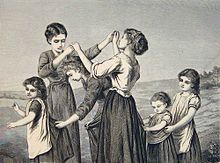 On Tuesday the UK government passed legislation allowing mitochondrial research to continue, to work towards alleviating mitochondrial diseases. The research works by effectively replacing the mitcohondrial DNA normally inherited from the mother, with DNA from a third party, another woman. Treatment would not only impact the child treated but everyone of their descendents.
On Tuesday the UK government passed legislation allowing mitochondrial research to continue, to work towards alleviating mitochondrial diseases. The research works by effectively replacing the mitcohondrial DNA normally inherited from the mother, with DNA from a third party, another woman. Treatment would not only impact the child treated but everyone of their descendents.
Mitochondrial disease can be horrific, leading to a long list of problems including diabetes, deafness, debilitating muscle weakness and progressive blindness, as well as epilepsy, liver failure and dementia. Some babies die early. Some live (usually short) lives of permanent ill-health. Some women show minimal impact of the disease and so they grow up, and become mothers at risk of passing on a terrible condition to their children.
It is a disease that could be screened for through genetic tests of a foetus. Parents could terminate the pregnancy or knowing that she’s a carrier, and not wanting to terminate any child, a woman could choose to use donor eggs through IVF in order to get pregnant. In the latter situation, the child would then not be related to her mother genetically. She could choose not to have children or to adopt a child.
I have no real problem with the science though there are some unanswered questions.We don’t really understand how the DNA of a third party will interact with the original cells, whether their will be compatability and rejection issues. I’m not convinced that we understand in it’s entirety what a mitcohondrial cell does and how it interacts with the rest of the body systems. The HFEA report published on June 3rd noted some outstanding concerns and required more tests to be completed to address those concerns.
We do know that the mitochondria are responsible for energy production in cells. They are most likely the result of a symbiotic deal bacteria entered into billions of years ago, to share resources with another organism. The DNA they contain is minimal. It encodes just 37 genes compared with more than 20,000 in nucleus DNA.
But the scientists’ main conclusion was that there is no evidence so far, to suggest that the treatment would be unsafe. The panel pointed out, those unknowable (and possibly non-existent) risks must be weighed against the very real suffering that would be caused by doing nothing. Britain’s government seems convinced. Three-parent, disease-free babies could be a reality within a couple of years.
But the choice being made isn’t between live, healthy babies and babies that suffer terribly.
The first choice being made is between childlessness and parenthood. In a civilised world, we are not obliged to get pregnant and have children. We choose to become parents. This legislation reinforces the idea that people have the right to become parents, that society will support their choices and pay for them through our taxes and health service.
Moreover, this legislation reinforces the idea that people have the right to parent genetically perfect children, to refine their own genetic heritage and ensure it continues through their descendants. Arguably, children become a commodity that society says it will provide to it’s members.
Is childlessness so dreadful? I know friends who haven’t been able to have children. One couple has remained child-free whilst the other has adopted a boy desperately in need of a home. I know a couple who have finally given up on endless IVF treatment. These people were made seriously unhappy by their infertility yet have reconciled themselves to their lives.
When I got pregnant we had genetic testing (Chorionic Villi Sampling) and had anything fundamental shown up, we would have terminated the pregnancy. We were lucky: only a recessive cystic fibrosis gene showed up. Will my daughter be asked if she wants to screen that genetic marker out of her descendants?
I would not expect the government to pay for scientific research or gene therapy to obviate me having to make that difficult decision to terminate. But maybe that’s because I’m not faced with terminating pregnancy after pregnancy.
In a world of scarce resources, do we want to spend money on having more babies? Aside from the money, egg donation is difficult and supplies of donated eggs low. Who decides whether eggs donated should be used for infertile women, or fertile women with mitcohondrial disease? How would that decision be made?
If I were unable to get pregnant, would I reconcile myself to being childless, endure endless IVF treatments or look to adopt? I’m not sure that I know the answers to any of these questions.
Scientists will always want to follow the science, to perfect and refine the research until they have an answer. Parents of a sick child will always wish for that child to be healthy. In at least one article, the parents of a child with mitochondrial disease talked about wanting a second child with donated mitochondrial DNA in order to provide their existing child with healthy source material for gene therapy.
I’m okay with the science but there are too many unanswered moral and ethical questions for me to be happy with where this legislation might take us.
8th February: Not Fit for Purpose
Earlier this week Eric Pickles stated that the Rotherham local authority was “not fit for purpose”, and announced proposals to remove control of the local authority from the councillors and give it to a team of five appointed commissioners, including one tasked specifically with looking at children’s services.
All councillors resigned and will have to stand for re-election next year. I’m guessing that a surprising number will be re-elected. They will all claim it has nothing to do with them and enough will be believed as to make change difficult if not impossible.
The Casey Report made clear that council members had failed to come to terms or accept responsibility for the child sex grooming and trafficking happening within the town, failed to accept the findings of the Alexis Jay inquiry.
A man interviewed on Radio 4 described how just last week he had stood and watched two Special Constables stood next to two Ratherham taxi drivers offering sweets to some young teenage girls, flirting away. He’d asked them whether they were going to say anything to the cabbies but they just turned and walked away in the opposite direction. They didn’t want to get involved. Has anything changed?
Jay’s initial report published on 26 August 2014 revealed that the number of children sexually exploited in Rotherham between 1997 and 2013 was, by “conservative estimate”, at least 1,400. According to the report, children as young as eleven were “raped by multiple perpetrators, abducted, trafficked to other cities in England, beaten and intimidated.”
Three previous inquiries – held in 2002, 2003 and 2006- had presented similar findings but, according to the report, had been “effectively suppressed” because officials “did not believe the data”.
Dr Angie Heal, a strategic drugs analyst who had prepared the 2003 report, had noted three years after its publication – according to Professor Jay – that “the appeal of organised sexual exploitation for Asian gangs had changed. In the past, it had been for their personal gratification, whereas now it offered ‘career and financial opportunities to young Asian men who got involved’.
At the bottom of the Wiki page are links to similar scandals around the UK
It’s difficult to keep hold of the fact that most rapists, most paedophiles in this country are white middle aged men acting on their own. As UKIP make much of the racial tensions these cases create, it’s almost impossibly difficult to remember that most rapists and paedophiles are family members, known to the woman or child. In most cases of abuse, it’s a lover, husband, father, brother…
There is no appetitie in the media to tell that story because once you start, where would you end? Average everyday rape, sexual abuse and child abuse doesn’t seem to have an ending, an horrific never -ending story.
And when we talk about these scandals, it’s difficult to grasp how fundamentally uninterested people were in the welfare of the children, girls from the wrong side of the street. White middle-aged middle-class people working in the police, in social services, in the councils and communities supposed to care were entirely uninterested in caring for children that they had already written off as sluts-in-the-making.
Sometimes it’s scary having daughters.
9th February 2015: Trim
My daughter is horrified by the new phone or rather newish phone. It’s dismissed as a ringing box.
I was going with retro but they have a case. Their dad just sighed. I think that counts as resignation as opposed to outright revulsion.
It’s a modified, push-button trimphone with the biggest plus being the fact that it can be wall-mounted. Who knew that no one wants to put their phone on the wall anymore? Presumably no one wants to stand up to talk on the phone, either that or no one actually has a landline anymore. It was a choice between the trimphone, a bakelite number costing £100 or re-wiring the phone to a more sensible place. I know that the latter option is the one we’re going to end up with but there’s no hurry to get there.
Ofcourse the real problem is that we’re living in a house with three cats that love to chew wires. The phone is the latest in a long line of gadgets that suddenly stop working only to find the charger has been bitten through.
Chargers are surprisingly expensive.
10th February 2015: Members
My membership of the Tate Galleries is about to run out and as always I looked ahead and tried to work out how much of their programme I’d like to see this year. I decided to visit the Marlene Dumas exhibition that’s just started, without great hopes but was blown away by it.

Some of the pictures were so very disturbing with a very real sense of menace. It was a strong contrast to the Photography Exhibition on just across the hall. Maybe we’re all just to innured to the tragedy of war, the black and white pitures of ruin after ruin. Where as perhaps the menace of family, of relationships and betrayal is always new and visceral. Her daughter looked as if she wanted to jump out of the painiting and eat us all up, not in a good way.
I shall have to return and revisit the Dumas but will pass on the Conflict Photography.
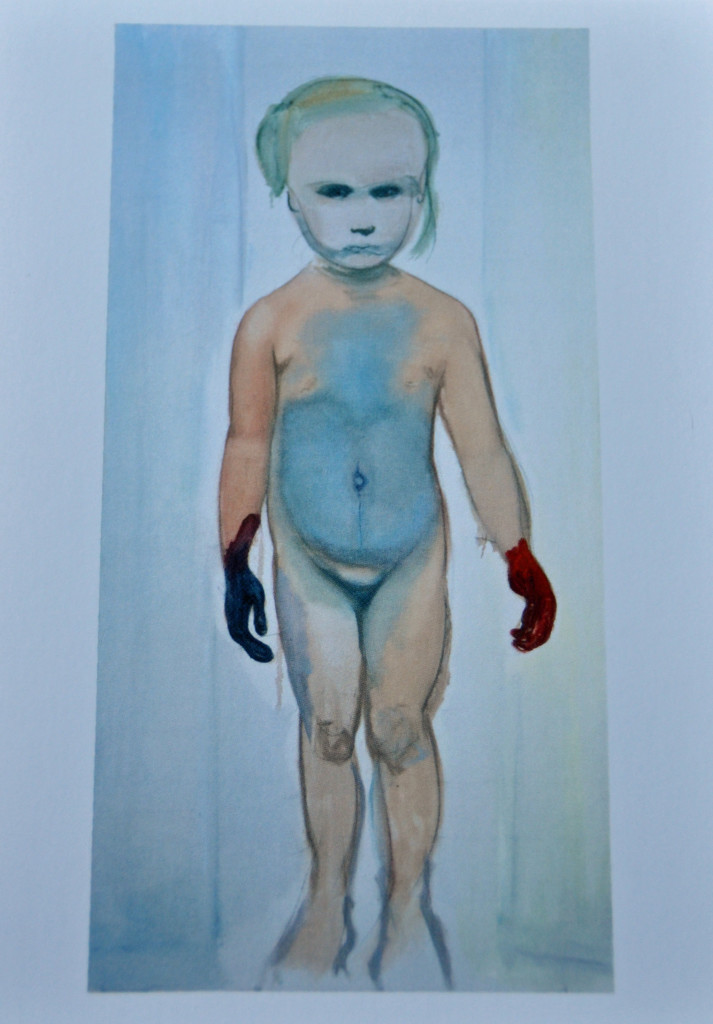
I’m going to start a London page for exhibitions and see what we end up with by the end of the year.
11th February: Avoidance
Tax evasion is illegal. Tax avoidance is not.
Most rational people seem determined to try to minimise their tax bill but for most of us, salaried, our tax is deducted before we get it, so opportunities for avoiding tax are minimal.
Rich people avoiding tax is in the news. There are stories of millionaires travelling to Switzerland to pick up suitcases of used notes to bring back and spend on London flats or cars.
No one likes paying taxes. We all feel that we’ve worked hard for our money and deserve to keep it. We would like to avoid taxation but for most people, putting something away into a tax-exempt ISA or JISA is the only practical way of avoiding tax on any interest earned.
Putting something away into a child’s account, declaring your child to be a non-taxpayer might be avoidance if you keep the amounts low enough and set it aside for your child when they’re older.
But if you always intend to use the money to buy a new car, is it evasion? Does intent matter?
Suppose the JISA you stashed away £3000 a year for 5 years was always going to be used to pay for a family holiday never for the direct benefit of your child – is that avoidance or evasion? Is it only evasion if it’s something rich people do? Who gets to decide what rich means in this context?
The job of an accountant is to manage the finances of a person or a company. How far are they allowed to pursue that goal? If it is possible for a person to pay less tax, should their accountant point this out or not? Isn’t that one of the things they’re being paid to do? Does a banker’s duty of care for the funds he manages, extend to protecting those funds from the tax man?
Do we believe in democracy, in electing people to represent our interests in government, to decide the balance of taxation versus government spending? Having voted for our political representative are we willing to abide by the rules they agree on our behalf?
Sometimes things that were once legal become illegal, when HMRC decides to change it’s “view”. It used to be possible to be paid money into a care and maintenance trust. The money was not paid to a person directly but rather set aside as a lump sum to be paid at a later date, such as after retirement when your tax rate fell to a lower level. Under certain circumstances perhaps the money could be paid from the trust for private school fees for children. Since the children are the ones to benefit, their tax rate might have been applied at 0% or 20% rather than the higher 40% or 50% rate their parents might incur. I struggle to find moral outrage.
My tax affairs are boringly conventional. I’ve never tried to avoid or evade tax due on earned income. It has never seemed worth the hassle plus since I clearly benefit from government spending in my everyday life, it would feel wrong.
The government encourages us all to save for a pension. It gives everyone basic tax relief on the first £3600 paid in. So even though I haven’t earned money for years and my girls never, we all have pensions which include a hefty donation from the UK government. Ofcourse pension fees and performance are so opaque and crap, the tax rebates are probably just allowing us to break-even but that’s a different issue.
In twenty years time, is someone going to write an article accusing us of immorality, for taking a tax rebate we haven’t “earned”?
There is nothing intrinsically moral about taxation. There is nothing good or bad about paying the amounts due. There is no greater good to paying more tax than is owed. I’ve always voted for governments that promise to tax the wealthy more, arguably against my own interests, not because I believe that taxation is a good thing but rather because I believe in public services. I used the local state schools for my kids. I benefit from the NHS, the police force, the community services such as street lights etc.
In the UK, the income tax system is pretty fair across the various socio-economic groups. The kicker is with consumption taxes, where the poorer socio-econimic groups pay a disproportionate amount of their income. VAT and council tax (UK property taxes paid to local councils) hit poorer people disproportionally hard.
Inheritance tax is set at such a high level that inherited wealth reinforces the privilege our middle-class children are gifted. No one seems to get antsy. It seems bizarre to imagine inheritance tax as aspirational (most people will not have enough assets when they die to pay it after all) but maybe that’s why it’s such a political hot potato.
Do we believe that the government we elect should fairly collect and spend our taxes on our behalf because it is only our fair contribution to the society we live in? No more no less. In the UK we seem to aspire to the level of state support and interference of the Scandinavian countries while only being willing to contribute at a miserly US level of minimal taxation.
Not very long ago, I sat opposite a woman who was very loud and very fearful of the possible outcome of the coming election because “People are so stupid, they could elect anyone”.
I don’t feel stupid, I vote.
Ofcourse she wasn’t talking about white middle class people like “us”. Whilst I wish more people would vote, I trust the electorate in the UK to vote fairly, even her. I trust the government (mostly) to represent the people who elect them to the best of their ability. They will set taxation and spending according to the policies they’re currently setting out, and I am content to pay my due and enjoy the benefits.
Democracy isn’t perfect but it is better than any of the alternatives.
Given a serious criminal trial, I would prefer a random bunch of strangers on my jury than this one judgemental woman sat across me at the dinner table Give me the stupid, the ignorant, the inadequate, the normal and the average. Give me people who can believe that someone has screwed up by accident rather than deliberate fault. Save me from people who honestly believe in their own superiority.
Unless ofcourse it was a case dealing with tax fraud.
12th February : Cads & Dads
A recent piece of research published by the Royal Society in Biology Letters hit the news, a study suggesting that within the human population men and women have started to specialise in their sexual behaviour and attitudes.
It is widely assumed that men are more promiscuous than women, more likely to spread their genes about a bit. Ofcourse self-reporting can’t take into account that women are less likely to admit to infidelities than men. Being a slut is still a cause for shame in most societies while being a slutty guy ie. a “bit of a lad” gets a pat on the back. And how can heterosexual men have so many more sexual partners on average than hetero women? Surely averages must even out at some stage.
We could assume a tendency towards promiscuity in either sex would be normally distributed; that is, to follow a “bell curve”. The peaks of these curves might have different values between the sexes, just as they do in the case of height. But the curves’ shapes would be similar.
The study by Rafael Wlodarski of Oxford University explored the idea that things might be rather more complicated. Maybe individual people are specialised for the roles of dad or cad. If so, the curve for each sex would look less like the cross-section of a bell, and more like that of a Bactrian camel, with two humps instead of one.
The team looked at two sets of data which had been collected for other purposes: a questionnaire intended to identify the different tendencies of 600 people to engage (or not) in casual sexual relationships and one of 1,300 people who had had the lengths of their index and ring fingers measured. The ratio of these lengths indicates the effect on an individual of exposure to testosterone in the womb and seems to correspond, throughout primates as a group, to the amount of promiscuity found in a species’s mating system.
Both tests confirmed the idea that men are more predisposed to promiscuity than women. To determine whether distinct sexual strategies exist in either or both sexes meant putting the data through two statistical tests that asked how likely it was they really did come from a bimodal, camel-shaped distribution rather than bell-shaped one.
For both sexes, in the case of the sociosexual results, they clearly were bimodal. That pattern remained when the sample’s American and British participants were analysed separately. In the case of the finger data, all of which came from British participants, the men, but not the women, were bimodal.
These results suggest that—probably for men and possibly for women—caddishness, daddishness and so on are indeed discrete behavioural strategies, perhaps underpinned by genetic differences.
Although there is some overlap between the two strategies, the study suggests they are phenotypes ie. outward manifestations of underlying genes that give natural selection something to get hold of and adapt down the generations.
Interestingly, the difference in phenotypic mix between the sexes is not huge. Dr Wlodarski and his colleagues calculate that cads outnumber dads by a ratio of 57:43. Loose women, by contrast, are outnumbered by their more constant sisters, but by only 53:47.
Each of these ratios tends in the direction of received wisdom and may well be influenced by social pressures. It is perhaps easier for a man to “own” his promoscuity.
If their analysis is correct, Dr Wlodarski and his colleagues have probably stumbled on a type of equilibrium known as an evolutionarily stable strategy, in which a way of behaving becomes more advantageous as it gets rarer, and less so as it gets commoner. Cads succeed when dads are frequent, and vice versa. Neither can conquer and neither can vanish.
The trick for my daughters would seem to be finding a “dad” rather than a cad to marry – not sure how the boyfriends will react when I get out the ruler and ask to see their hands. How long is too long?
13th February: Panic
6pm and my baby isn’t home. Normally she’d have had orchestra practice after school but still be home by now. It’s dark. This morning she’d suggested there wouldn’t be practice so she’d be home early, at around 5pm, but she wasn’t sure. She agreed to call and let me know what was happening.
 There was no call, no massage left, no text received.
There was no call, no massage left, no text received.
I call. Her phone is switched off. I leave a message “Call me”.
I call her father. Do I have her latest phone number loaded onto my phone? She changed phones this weekend. I think so but am not entirely sure. I call upstairs to her sister who definitely doesn’t have her number.
I decide to call some of her friends to try and work out whether she’s just late home from orchestra. This is starting to feel shaky. Looking for the list of classmates and their home numbers I find it missing. When did that happen? What numbers do I have in my mobile and/or the diary?
Let’s start with BF1. No answer. I leave a message, trying not to sound too scared. I call a second classmate, not really a friend but I have her number and am working really hard not to panic now.
The phone rings for a long time. Finally it’s picked up. An awkward three way conversation begins.
“No, L doesn’t remember seeing Hero at the end of the day, but she thinks maybe there was a concert for the infant school”
“No she isn’t in the orchestra anymore but F might be”
“F?”
“Yes, you know, the Polish one”
“I think I have her number on the computer, wait a minute”
Desperate to end the conversation now, I feel trapped by the social necessity of reassuring him, agreeing it’s probably all nothing, I’m clearly worrying about nothing, just a miscommunication with a teenager. Yes, sorry and thank you can take so very long to say in a middle class conversation.
A message comes through from BF1. They had separate lessons at the end of the day. She doesn’t remember whether there was orchestra. She hopes I find her soon. She’s sure everything is just a misunderstanding. I’m being reassured by a 14 year old child.
By now I’m telling myself how very very rare child abduction by strangers is in real life and trying really hard not to think about those threatening situations teenage girls describe on everydaysexism almost everyday. I am trying really hard not to imagine my baby accosted, assaulted or raped as the better part of missing.
 Their Dad calls me to tell me he’s on his way home. I tell him to f*ck off and not call while I’m trying to find my girl. I’m not joking.
Their Dad calls me to tell me he’s on his way home. I tell him to f*ck off and not call while I’m trying to find my girl. I’m not joking.
And I need to sit down for the next call. I’m shaking. I can barely press the buttons on that ridiculous trimphone. I want to call my older girl to me, to hold her tight for comfort but know that I’ll only scare her.
F answers the phone quickly. “No, there was no orchestra today” Yes, ofcourse I remember seeing her at the end of the day. We came home on the bus together. When did I last see her? Oh, just before 5ish at the tube station. No, she was heading straight home. Isn’t she with you?”
It’s very dark outside. My baby has been missing for 90 minutes. Fuck. This is how it happens. One minute, you’re walking through life worrying about exam results and then suddenly the world grinds to a halt. A dreaful stop.
I dial emergency services, 999.
I ask for the police.
I start to explain. The woman on the other end of the phone has an Eastern European accent and the words don’t quite make sense to me. My voice doesn’t seem to belong to me anymore. She asks methodical questions, slowly, repetitively. I start to wonder whether it’s me or her that isn’t quite making sense.
I can hear my oldest girl coming down the stairs. I look up.
My baby looks down at me. Bleary eyed.
Sometime between starting to worry and calling the police, she has slipped quietly into the house and up to the very top floor for a quiet snooze. She’s hungry.
17th February: Rubens & Royal Academy
The current show at the Royal Academy tries to establish Rubens as a game-changing artist, someone who fundamentally changed art, who is referenced time and time again and still remains relevant.
Not convinced.
It’s a good thematic show, with two or three excellent Rubens on display, in particular the Garden of Love which includes a number of prep sketches and etchings showing how the huge and very beautiful painting was created. The very politically incorrect Tiger, Leopard and Lion Hunt makes the exhibition worthwhile as well but there just aren’t enough great paintings by the man himself to live up to the ambitions of the exhibition.

There are many wonderful pictures by a huge range of artists from his peer Rembrandt through to Picasso and further. But an art show about Rubens that makes you think about how great a landscape artist Constable was compared to Rubens, or how relatively brilliant at portraits Rembrandt or Reynolds turned out to be, isn’t really a great show for Rubens.
One room of art inspried by Rubens was curated by Jenny Saville along the theme of flesh made art. It included Lucien Freud, de Kooning and a number of other artists that might feel very stretched indeed. But perhaps sticking to a more central theme, the fleshiness, the reality of his work would have been of benefit
The exhibition felt spread thin with not enough good paintings by the man himself to carry the different themes. Maybe (unlike Marlene Dumas over at the tate Modern) it just suffered from expectations that were set too high.
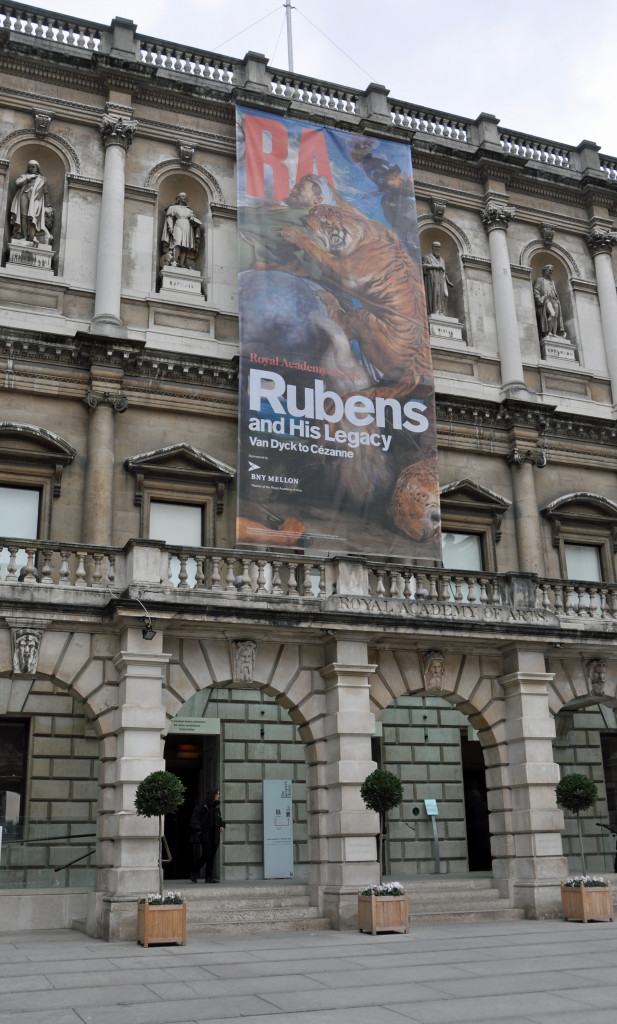

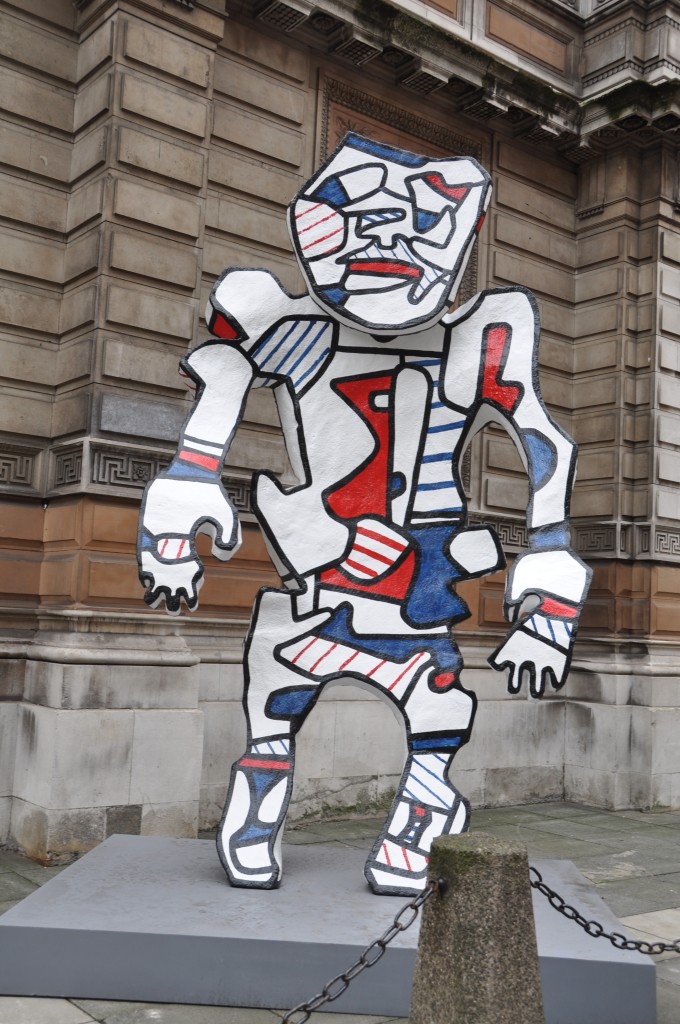
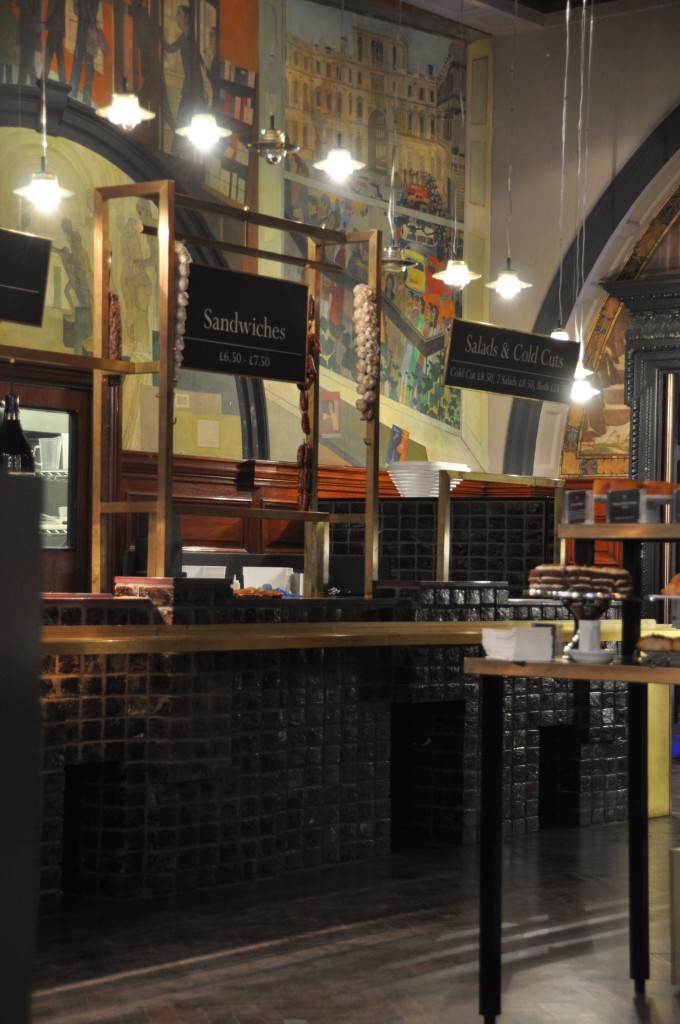
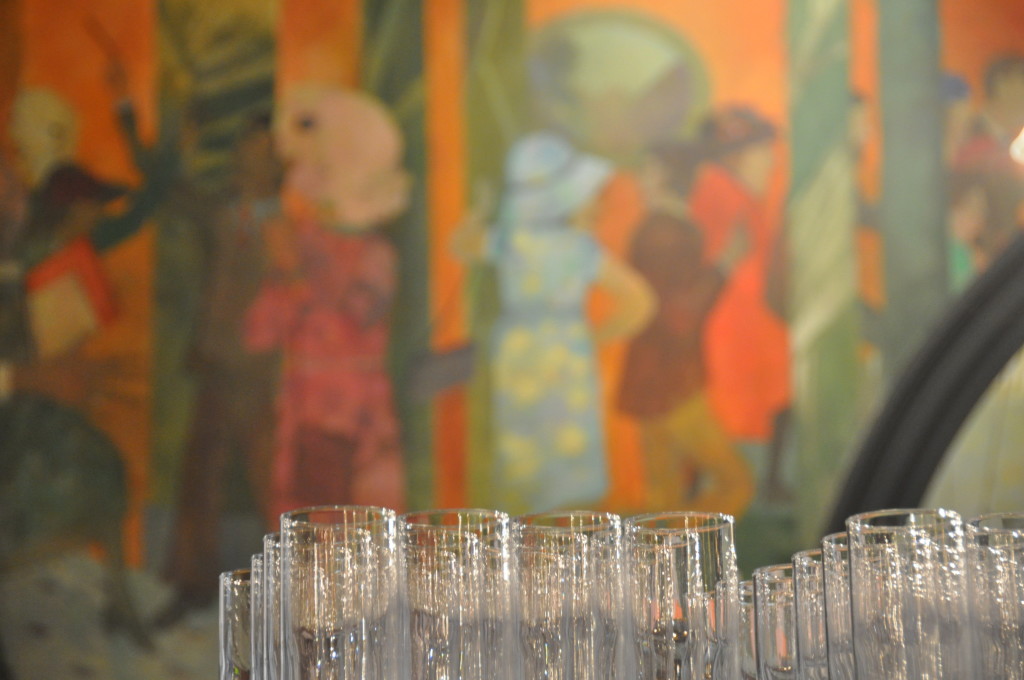
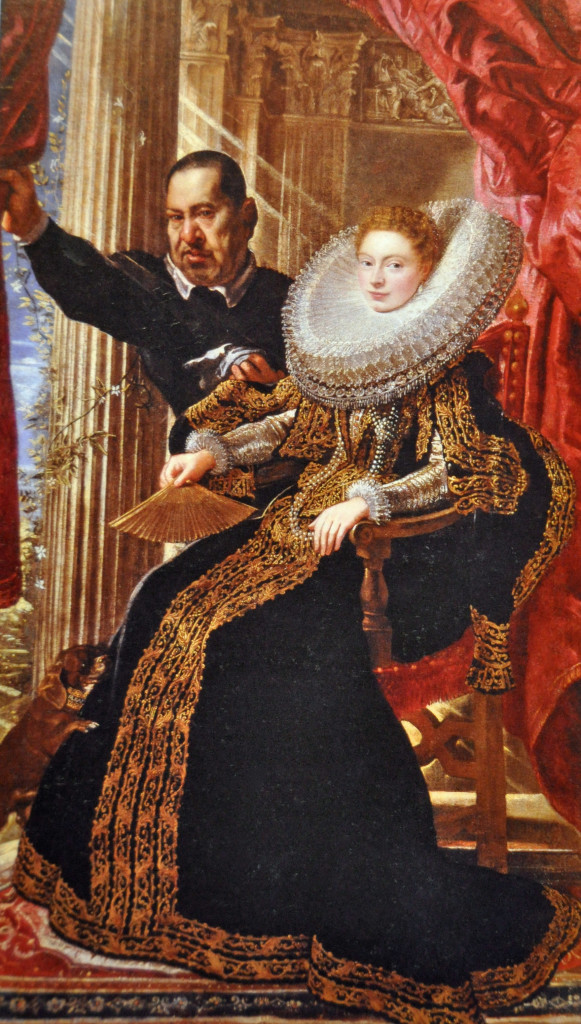

20th February: And so to Bed
My mattress is older than my daughters, too old. With retirement beckoning and old age looming, it sems time to buy a “proper” grown up mattress for the rest of our lives. The word ergonomic springs to mind.
 Though it turns out that springs are optional. Who knew?
Though it turns out that springs are optional. Who knew?
Memory foam doesn’t sound like the sort of thing I’d like to sleep in. Throw in some pseudo pscientific words which basically all add up to “clever plastic” and I’m even more doubtful. For once, John Lewis does a poor job of explaining and selling the various options. We head into town towards the biggest bed display we can find.
The leading manufacturers of mattresses seem to be Vi-Spring and Tempur, springs and foam according to the shop assistant, though he lost me when he started to talk about the relative benefits of a mattress topper versus the double spring mattress.
We are invited to lie down for at least 10 minutes per bed, prefarably half an hour. We’re British. This is never going to work. How can we be expected to lie down in public and just rest there, with the shop assistant standing over us anxiously? We need a bit more disinterest, a bit more space and even then the longest we could reasonably push it would be 5 minutes.
Obviously he loves the memory foam, tempur mattress and I hate it. I hate the way it doesn’t bounce. I hate the way it settles around my body the way mud settles at the bottom of the pond but most of all I hate the way it leaves a corpse like impression of any body part that’s been lying on it for more tan a minute. I did not need to know that my arse really is that big in 3D. It feels clammy and smothering.
He loves memory foam; the springs – not so much.
Under 70kg and Vispring recommend a soft mattress. Under a 100kg and they recommend a medium mattress. We’ve been sleeping on a firm mattress for years as evidence by countless stiff necks and achy sides in the morning. He’s adapted. Even knowing that a softer mattress would be better for him, he feels uncomfortably comfortable.
And then there’s the cost. At £2,000 it’s worth getting the right one even if we weren’t going to be spending 1/3 of our lives in it.
Back home. Looking on the “Which Consumer Guide”. Maybe we’ll build up to that 30 minutes test lie down with multiple visits. At least until I’ve weaned him off the clever plastic.
23rd February: Obese
A recently published report in the Lancet highlighted the interconnected nature of the causes and potential solutions to the obesity epidemic.
It highlighted a number of key points notably that despite increasing goverment focus and action, no country to date has reversed its obesity epidemic. The best that has been achieved so far is to stabilise the numbers of obese children.
Obesity is commonly described as either a personal problem, a failure (often moral) of the individual or a result of the environment and therefore in many ways beyond the control of any single individual. These different views about what drives and sustains obesity undermine attempts to tackle the problem. The Lancet report suggests that rather than competing, these two perspectives can usefully be merged to show the reciprocal relationship between the individual person and the environment.
Therefore the problem of obesity must be reframed to acknowledge that whilst individuals bear some personal responsibility for their health, environmental factors exploit vulnerabilities that promote overconsumption of unhealthy foods.
A vicious cycle is created in which the preference and demand for unhealthy products are not only shaped by the environment, but lead to environmental changes that further encourage consumption of unhealthy foods. This cycle makes it difficult for people to act in their own long-term self-interest, but it could be broken with regulatory actions from governments and joint efforts from industry and civil society to create healthier food systems.
We become overweight and obese because we eat more than we need. Why do we over-eat?
Modern food environments, shopping malls, cafes, fast food outlets, supermarkets etc are all filled with nutrient-poor and energy-dense foods. These foods are highly appetising and processed in ways that make it difficult for the body to regulate intake and weight. It’s easy to over-eat in modern society.
Incentivised to maximise profits, the food industry manipulates ingredients, such as sugar, fat, and salt, along with flavour enhancers, food additives, and caffeine, to increase the “reward” value of foods, to increase the pleasure individuals feel on eating a specific branded food.
The food industry works to make it’s product as appealing as possible, and to defend that appeal in the face of global obesity initiatives.
Childhood is a period of a person’s life when industries work especially hard to develop brand loyalty. Marketing and early exposure at a young age to ultra-processed foods shape children’s taste expectations and preferences for unhealthy products. An overweight child will almost inevitably become an overweight or obese adult.
Tim Lobstein and colleagues in one of the Lancet reports calculate the money to be made by food companies from overweight children:
“Fat children are an investment in future sales,” said Lobstein, from the London-based World Obesity Federation. They use data from the USA, where children are on average 5kg heavier than those of 30 years ago, and so consume an extra 200 kcal a day more than a child from the 1970s would have – or 73,000 kcal more per year.
The average cost of food energy is about 56 cents per 100kcal, they say – so 200kcal a day implies spending an extra $1.12 a day per child, or more than $400 a year. “With about 50 million school-age children in the USA, the combined value of their excess food consumption each year approaches $20bn. A high proportion of these children will continue over-consuming through adulthood, creating a market for the US food and beverage industry, which we estimate to be worth considerably more than $60bn each year.”
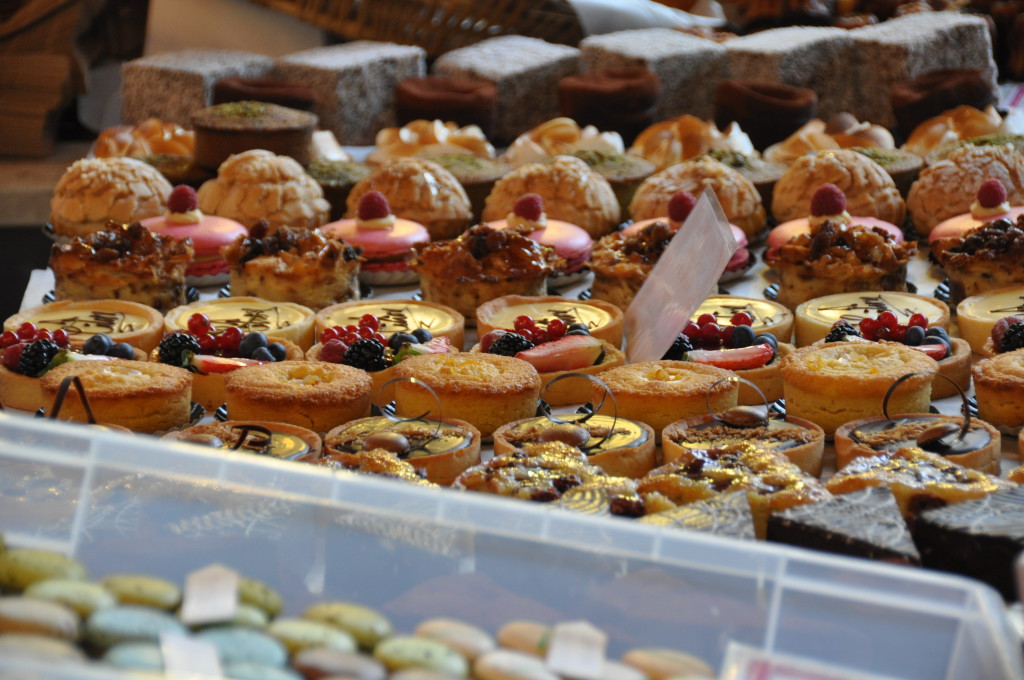 There is a common belief in society that some foods are addictive and research is already underway that suggests exposure to ultra-processed foods high in added sugar, fat, and salt leads to behavioural and neurobiological changes, consistent with an addictive process.
There is a common belief in society that some foods are addictive and research is already underway that suggests exposure to ultra-processed foods high in added sugar, fat, and salt leads to behavioural and neurobiological changes, consistent with an addictive process.
The discovery that nicotine was addictive strengthened support for tobacco control policies, such as taxation and restrictions, on advertisement to young people. If research finds that some foods might trigger an addiction, it could shift public opinion about the role of policy in addressing obesity in particular at the way the Food Industry targets children.
As well as changing the food itself to make it more appealing, the environment in which we buy our food is organised to influence our choices. Psychological research has highlighted the many ways in which we are affected by food-choice architecture (the context in which people make dietary decisions) including the serving size of containers, the placement of food items in supermarkets, the price of products, and the promotional strategies used to market foods.
The food industry designs choice environments that promote consumption of foods of poor nutritional quality because they tend to be the products with the highest profit. These environmental factors are varied, subtle, and very influential because they leverage psychological biases in favour of overeating.
For example, people have a strong tendency to adhere to default options. This psychological bias is exploited by food defaults at restaurants, such as large portion sizes and included side orders, which promote overeating. Despite consumers’ desire for smaller portions, customers rarely depart from the status quo by asking for less food.
We like to feel that we’re getting value for money.
Special offers or “bargains” are almost always offerred on larger portions, eg. buy a large portion of popcorn and get a free large soft drink. People spend a little bit more (it costs the retailer next to nothing) and get food they don’t want or need. People rarely ask themselves whether they really want that much popcorn, whether they should just choose the smaller size anyway. Once started on a salty/sugary snack food, it’s almost impossible to stop eating so they end up spending more to eat food they didn’t originally want or need.

Societal shifts in family roles and the entrance of women into the full-time labour force increase the appeal of restaurant food and other ready-to-eat foods that are quick and convenient, but usually a lot less healthy than home-cooked meals. In high-income countries, energy-dense and nutrient-poor foods tend to be inexpensive, thus saturating low-income neighbourhoods with unhealthy options.
The debate that seeks to blame either the environment or the individual is more usefully described by acknowledging that environmental effects exploit individuals’ vulnerabilities and can make it difficult for people to make healthier decisions.
Because adults have to buy and eat their own food, there will always be a component of personal responsibility to everyday food decisions. There is a role for citizens to exercise personal responsibility by mobilising political and economic demand for health, as discussed by Huang and colleagues in the Lancet reports.
But it is also necessary to make it possible for individual people to make healthier choices.
- We need to make it easier for people, especially children, to establish healthy food preferences because once established, these preferences drive future life choices with regard to healthy food.
- We need consistent public awareness programmes to inform people about food and nutrition.
- We need to support people when they attempt to change unhealthy food for healthy choices.
- We need to change the incentives for food and beverage manufacturers to more closely allign them with societal welfare.
There is emerging consensus on core policy actions that should be taken to promote healthy diets starting with the NOURISHING framework created by the World Cancer Research Fund International.
26th February: Pension Vertigo
He’s about to retire so we need to look at the ways of stretching out our savings to last us forever, or at least until we’re approaching 100.
 Whilst my parents both died relatively young (heavy smokers, lots of saturated fats, high salt, Scottish heritage) his have lasted well, especially his mother who is still going strong despite a chronic condition dating from one of many childbirth horror stories for her generation.
Whilst my parents both died relatively young (heavy smokers, lots of saturated fats, high salt, Scottish heritage) his have lasted well, especially his mother who is still going strong despite a chronic condition dating from one of many childbirth horror stories for her generation.
So he probably won’t live forever, but you wouldn’t want to spend up any time soon.
Because of his age, he has a small defined benefit scheme and then the more commonplace defined contribution scheme (plus an additional defined contribution AVC scheme). To make the sums simple, let’s assume that the two contribution schemes add up to £1million, a huge amount of money by anyone’s standards.
No one should mess with defined benefit schemes, just take the money on the terms offered. They are typically index linked, usually include a 50% spouse’s benefit and are the generous leftover from times when we lived much shorter retirements. But one is left wondering what to do with the contribution schemes.
If you look in the newspapers, annuity rates are typically quoted at 5% or thereabouts. on £1m this would be expected to generate £50,000 per annum. But actually finding someone to provide an annuity with this rate is rather more difficult.
Wading through the various websites, newspaper articles etc I am repeatedly told that this is the most important decision that we’re likely to make, and that I should definitely take advice. The same websites quote £15,000 – £30,000 as the cost for that advice. How can anyone be worth that kind of fee?
The alternative to hiring a financial advisor is to use an execution-only broker but in the small print it is made clear that they will be paid on a commission basis, typically 1-2% ie. upto £20,000. Again, WTF!
Everyone is clear that one should definitely look around rather than settling for the annuity offered by the company holding your pension fund but the costs associated with doing so are traumatic.
Looking on-line I find a company that at least has the grace to cap it’s commission at £5,000 providing the annuities are all bought in one transaction. This is £5,000 paid for someone to press the computer keys executing the trade because as a “normal” person I’m just not allowed to press them myself. No skill. No advice. Nothing beyond access.
Buying the annuities in one go becomes a tad more complicated when it starts to become clear that not all annuity providers will offer annuities across all amounts.
Many won’t even quote on funds greater than £500,000. And in some ways this makes sense – the average pension pot on retirement is something like £10,000 – the business isn’t really set up for successful pension savers but rather for the odds and sods most of us have managed to scrape together.
The upshot is that a pot of £1m might have to be broken up between a number of annuity providers in order to achieve a respectable level of income – paying an advisor to sort out the “blend” of providers and provide someone to sue if it goes wrong and the annuity provider goes bankrupt starts to make sense. If an annuity provider is small and can only offer an income on £100,000 but at a good rate, does that make it more likely that the company will go bust during our hopefully long and healthy retirement lives.
Do we really want the hassle of dealing with 10 small annuity providers, with the risk that they might stop paying at some stage? Maybe it’s an advantage to spread the risk that way. Rather sadly there don’t seem to be 10 companies out there willing to take our money.
Because then we come to the second complication. Although I think of myself as being old, and he’s even older, in pension terms we’re babies. Mostly, deferring taking a pension isn’t worthwhile. With regards to the defined benefit scheme, deferring a £50,000 pa annuity for 5 years would increase the pension by £5,000pa ie. if you forego £250,000 you receive an extra £5,000 each year you live. You would have to survive 50 years to break-even on that deal and while he might indeed live that long, it’s not a sensible bet to take.
At this stage, I start thinking hard about paying someone else to deal with this hassle. £15,000 – £30,000 is still rather a lot of money to spend, too much.
Are you married? Do you need a spouse’s or other dependant’s pension?
Yes – 50% spouse pension please, to be paid only if the pension holder dies first which is unlikely in our cases but it would be beyond stupid to leave your partner without funds in the event of an accident. This will reduce the pension payment but we (I) need it.
Do you need a guarrantee period ie. pension guaranteed for 10 years whether or not he survives. The only reason I can imagine for this is if you imagine that the pension holder might die early on (health issues?) and are trying to provide an income for the spouse/dependant to bridge a gap until their own pension kicks in. It would be useful if you had young kids to support through to independence but your wife had an adequate pension of her own. This will reduce the annuity payment and we don’t need it.
Do you want your pension to be index linked ie. to increase with inflation? This dramatically reduces the annuity payable and I’ve decided that whilst it would be nice to have, it is not essential for us.
By it’s nature, inflation erodes the value of an annuity. We might find it entirely possible to live on £30,000 now but in 20 years time, that will buy us much less, costs will rise with inflation and our income won’t. To offset this, we have other savings. The defined benefit scheme is index-linked. We also have my own rather sad and sorry pension pot that could be cashed in to provide an additional annuity.
Assuming the government still pays out without means testing, we will also receive a state pension from the government when we each reach 70 or thereabouts. The full state pension is around £7,000 so the equivalent of a pesnion pot of around £140,000.
 Pension + spouse’s benefit / No guarrantee period /No index=linking
Pension + spouse’s benefit / No guarrantee period /No index=linking
I’m very clear about what we need, no advice required.
I’m also very clear about what other financial assets we have available to us in terms of cash savings, government bonds, investment funds etc.
Because he’s young, would it be better to defer taking an annuity until he reaches a standard age ie. 60 or 65 when more companies will be prepared to quote for our business? Deferring the purchase of an annuity also leaves open the possibility that the rate of return increases and we get more money for our fund.
But we would have to bridge a gap of at least 4 years, possibly 9 years. How much money would that cost, setting aside the £20,000 or so each year, per child we need for them to complete their education at school and university. At a total of 10 years, that’s £200,000 set aside from the get-go.
Early retirement turns out to be an expensive business.
27th February: Portrait
The John Singer Sargent exhibition at the National Portrait Gallery in London is well worth a visit even though the famous and beautiful Madame X is missing. The “theme” of the exhibition is Sargent and friends, and it turns out he had some exceptionally interesting and very beautiful friends from the father of French gynacology (Pozzi) to Henry James.
His pictures are easy to love, being so beautiful and gentle on the eye, but where he really captures the sitter they are sometimes amazing.
It’s also one of those exhibitions where it helps to read the booklet since there’s no information on the walls. At least this stops all of those people spending five minutes reading (very very slowly) after a cursory glance at the painting, and blocking up the show. Why?
It’s one I plan to go back to see again, maybe even a third time so I’ll have to try and finesse the crowds. Even first thing, 10am the show was busy though I’d guess it will calm down oustide of the first week. Monday morning?
The additional information helps where for example you look at the very famous picture of two children of Papilleron, next to the portraits of their parents and realise that it has taken 83 sittings to create, that the little girl really is as stubborn as she looks (countless battles over hair and dress) whilst her brother really is that fed-up.
There are also some stunning charcoal sketches and a photo timeline that helps to understand the progression of his art and how it intertwines with external historic events eg getting trapped in the mountains during the first world war and having to abandon exerything whilst trying to get back to London.

Although born to American parents and holding an American passport throughout his life, I hadn’t really understood how very European his life turned out to be. Born in Florence, he seems to have lived and painted most of his life in France, the rest of Europe and the UK, visiting the States regularly most especially once established as an artist.
Unlike the “suffering artist” stereotype, he seems to have lived a great life with some wonderful friends as well as leaving a beautiful legacy behind for us all to enjoy.
28th February: Toys
A bag of toy soldiers, a slinky spring and Barbie – what could go wrong?
I’m beginning to think maybe there’s a reason people stick with natural objects to cast shadows. Feathers, flowers, shells etc just have interesting shapes and a much more complicated shadow because of their innate translucence.
So thanks to internet shopping, any number of chickens and peacocks have just been slaughtered in the name of middle class obsession (do they really kill the peacocks for the tail feathers or just pluck them and let them go to grow some more?)
The feathers have just arrived in their neat little plastic bags. The ginger boy appropriated two of the peacock feathers and became very growly in their defence. Rather sadly, his sisters just don’t believe him. The calico girl almost sniggers when he puts on his fierce face and all of a sudden they’re swiped away and he’s off to hunt down some more.
Now if only I could let go of that Barbie Vitruvian Doll obsession…
2nd March: Goya
There’s an exhibition on at Somerset House on the Strand, showing drawings by Goya “Witches and Old Women” which is wonderful but for women of a certain age perhaps also quite threatening.
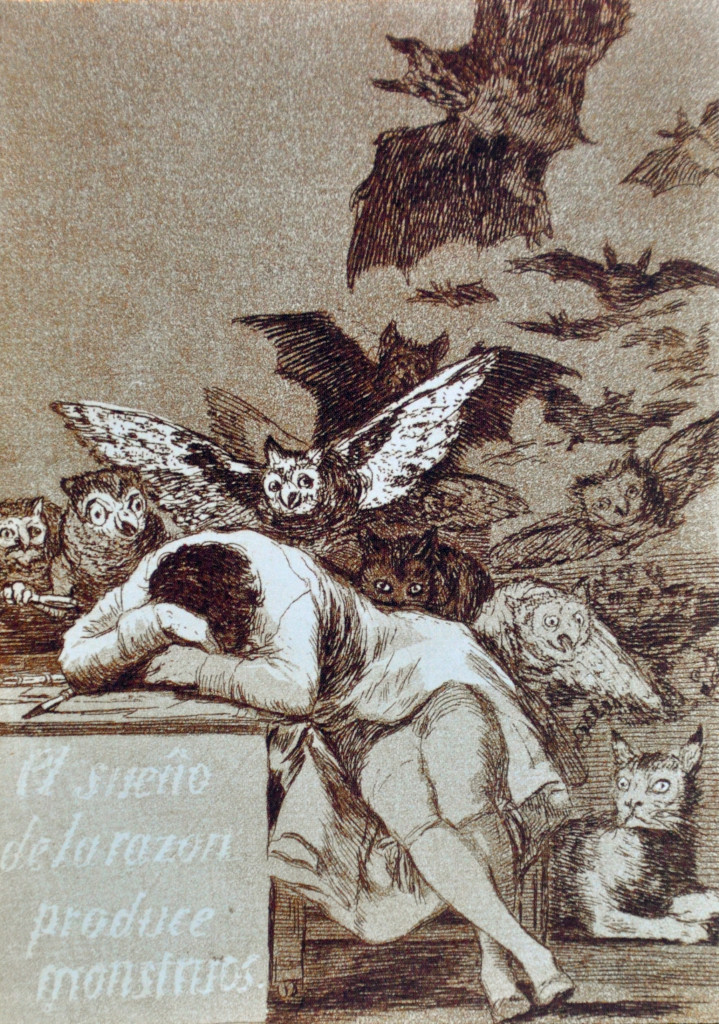
Goya, Coutauld Inst, Somerset House
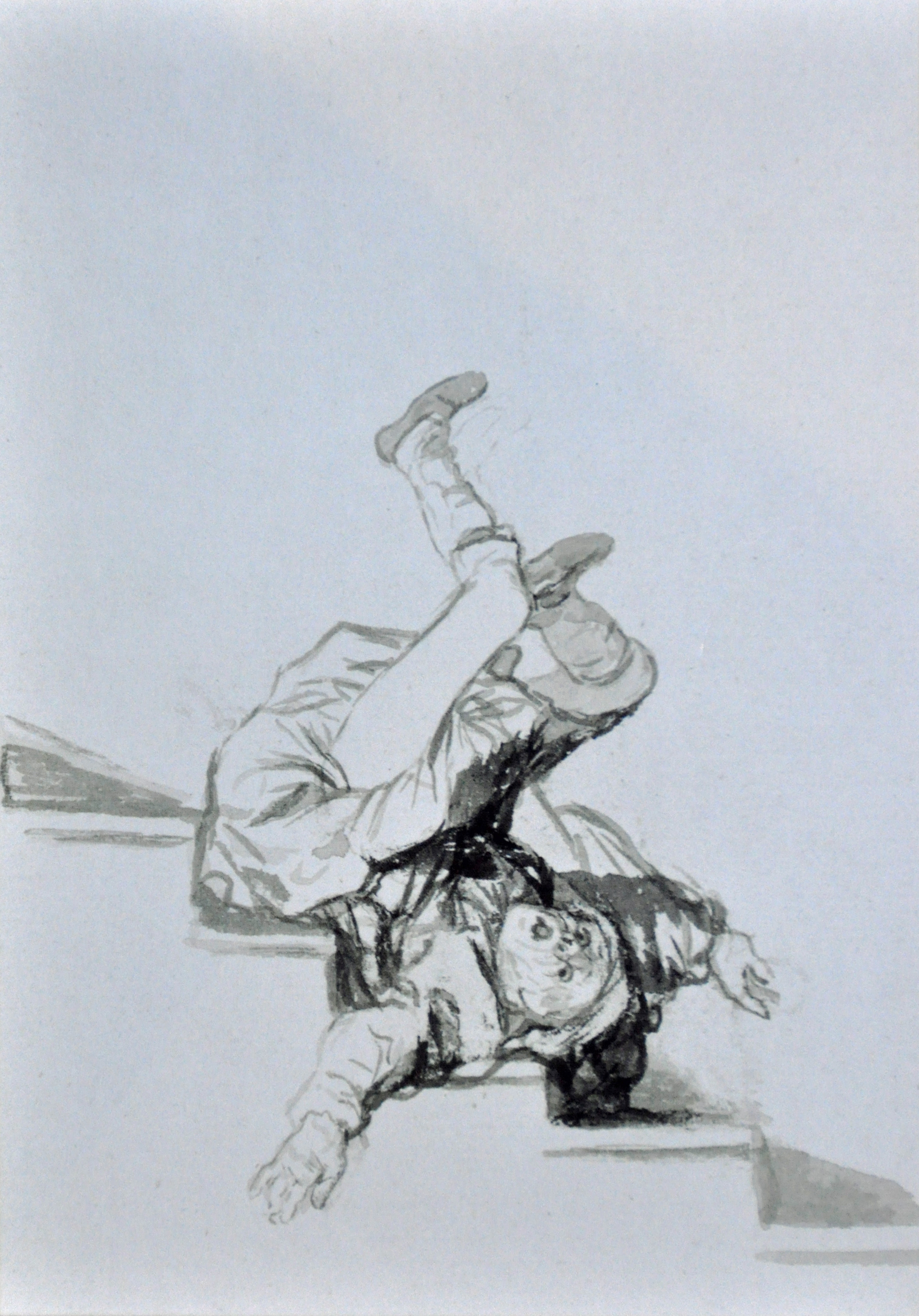
It’s based around sketchbooks he kept in his 70s for his own entertainment so at least in part is a reflection of his own angst about getting old. The theme of prostitution and scary old women, as procurers or eaters of babies keep coming back. But in the middle of it all is a very sweet picture of a contented old woman, dancing happily on her own.
They seem to be a strange mix of the sentimental and the frightening nightmare put down on paper, all laced with a dose of fear (realism?) that this is where he himself is heading.
Since it only involves two rooms, the fee is low (£7.50) but gives a good opportunity to look around the rest of the gallery which is full of gorgeous impressionist painting in a wonderful setting. In the end I spent more time looking up at the ceilings than the very beautiful but fairly familiar house collection.
I’ve added pictures of the house collection to the London Gallery>Exhibitions.
3rd March: Somerset House
Despite living in London for decades and visiting galleries on a regular basis, I have no recollection of ever seeing the Courtauld Institute which is a bit of a shame because the house collection is wonderful. Moreover the house itself is stunning. I spent almost as much time looking up at the ceilings as I did looking at the various Renoir, Monet, Manet, Seurat etc extravaganza.
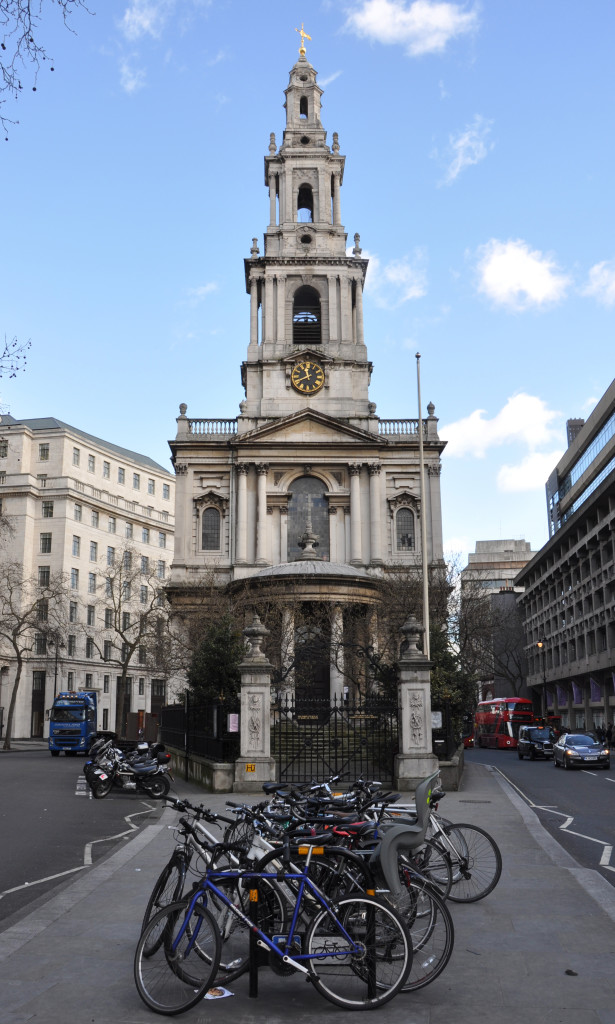
It has a lovely cafe downstairs as well and the guards are very easy going and well-informed. It always seems worthwhile to ask the guards what their favourite rooms are because often they’re in the most over-looked part of the gallery and it helps to be pointed in that direction.


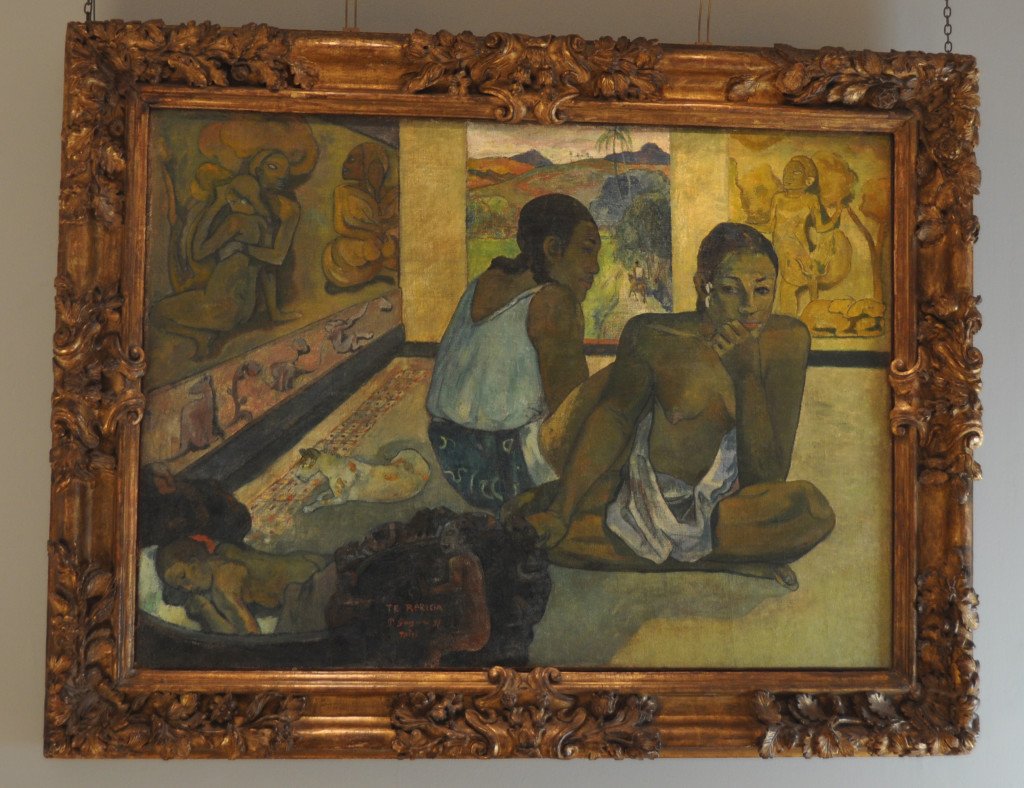

The collection is spread across the floors of a rather fine house, with a staircase that was wonderful to photograph. I didn’t really manage to catch it but had a lot of fun trying.
 The most surprising thing though was how very, very beautiful Somerset House is, not least the ceilings. Luckily the guards were very kind and saw nothing too peculiar in an old woman lying flat on her back to try and photograph them!
The most surprising thing though was how very, very beautiful Somerset House is, not least the ceilings. Luckily the guards were very kind and saw nothing too peculiar in an old woman lying flat on her back to try and photograph them!
As well as the Impressionists, there was a room for Gainsborough full of silverware and a new room with some wonderful sketches from their collection including Rubens, Reynolds, Henry Moore etc.
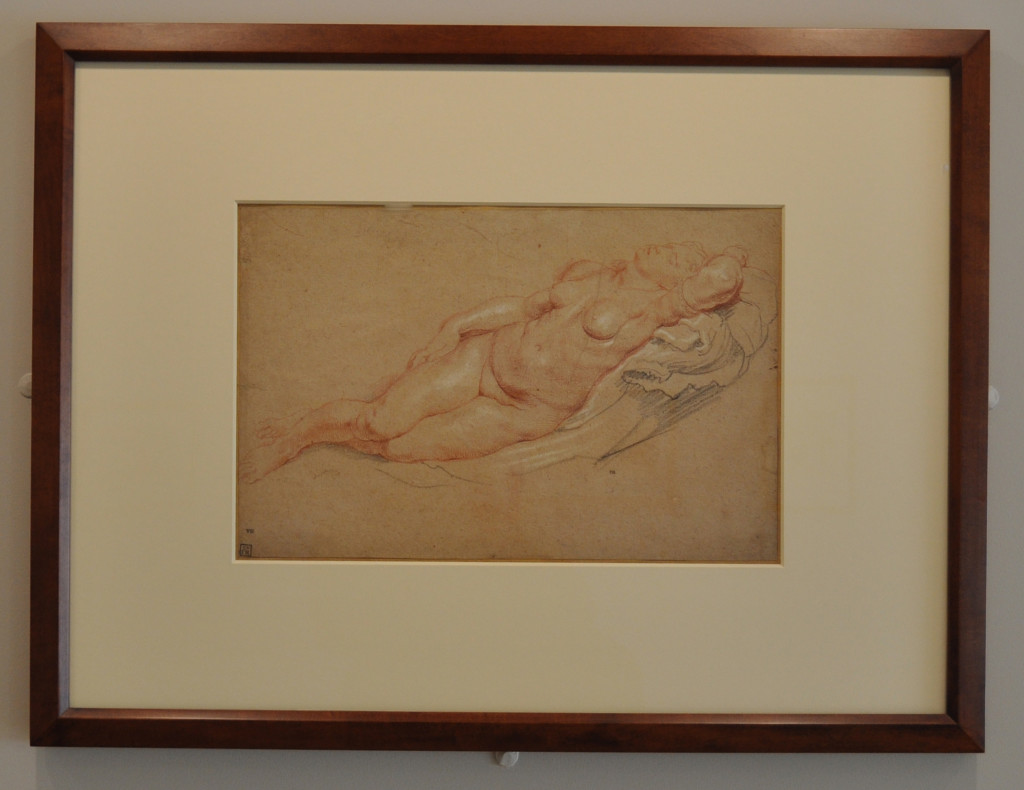

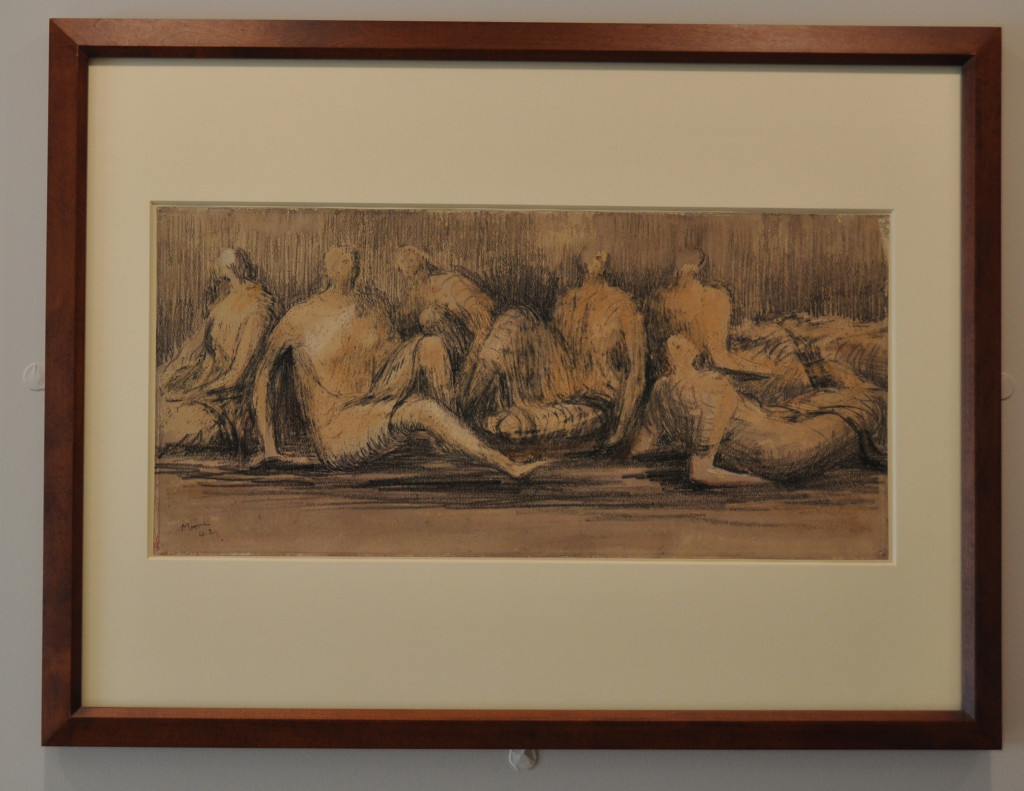
3rd March: Pension Puzzler
It is entirely reasonable for the government to decide not to spend taxpayers money persuading the wealthy to save into a pension but tinkering around with the tax implications on pensions, rebates, charges etc has left the administration a little bit complicated for those of us who have already built up a large-ish pension pot.
Not least because we have to wade through the various transitional arrangements that have been put into place.
In general, income paid into a pension pot gains from tax rebates, a way the government has used over the years to encourage saving and hopefully to decrease our dependence upon the State in our old age .
If I pay £2,880 into a pension, the UK government adds £720 such that the amount actually invested totals £3,600. This assumes a basic rate of tax paid ie. 20%. Higher earners paying higher rates of tax, have been able to add in even more money from the government though if Labour win the next election that may well change.
On retirement the pension fund is traditionally used to buy an annuity which pays an annual income for the remainder of our lives. Income paid from the annuity is taxed through the income tax system, the higher the income, the higher the rate of tax.
In April 2006 (‘A’ day) the government set a maximum pension pot that a person can have without incurring a tax charge, called the Lifetime Allowance of LTA. The LTA applies to your entire pension saving excluding the State pension. If you have more than this salted away, the government will apply a tax surcharge to effectively claw back some of the tax relief which you have received during the build up of your pension benefits.
The amount allowed in this maximum pension pot has varied over the years. At its introduction the standard LTA was set at £1.5 million. The table indicates the value of the standard LTA from that date up to 2014/15.
| THE LIFETIME ALLOWANCE – 2006/07 TO 2014/15 | |
|---|---|
| Tax Year | Lifetime Allowance |
| 2006/07 | £1.5m |
| 2007/08 | £1.6m |
| 2008/09 | £1.65m |
| 2009/10 | £1.75m |
| 2010/11 | £1.8m |
| 2011/12 | £1.8m |
| 2012/13 | £1.5m |
| 2013/14 | £1.5m |
| 2014/15 | £1.25m |
In this context, the LTA will be applied to all types of pensions and may include defined benefit schemes where a person is guarranteed a certain income as a percentage of their final salary. Usually this will be determined to have a value to the individual which is 20 times the size of the annual income.
The value of defined contribution schemes will be the fund value itself which is obviously subject to market fluctuations.
But obviously, when the cap on pension savings was introduced, it was clear that some people had already exceeded the amount now suggested as a cap. To protect those people, a number of protections were put in place.
Primary and Enhanced Protection
Between 6 April 2006 and 5 April 2009 it was possible to apply for transitional protection so that the benefits accrued up to 5 April 2006 would not be penalised by the change in pension tax legislation. These were known as primary and enhanced protection.
To apply for these you needed to register your application with HMRC before 6 April 2009 – we didn’t because at that time the value of his pension fund didn’t seem large enough.
Primary protection was available if you already had pension savings in excess of the then standard LTA, of £1.5 million, on 5 April 2006. An application for primary protection granted you a personal LTA in excess of the standard LTA which reflected how much your capital value at 6 April 2006 exceeded £1.5 million.
Enhanced protection was available to anyone regardless of the value of their accrued benefits at 5 April 2006. It allowed for all of your pension benefits to be protected from the LTA charge irrespective of the size of the pension saving at retirement providing the benefits have not increased by more than a set rate between 6 April 2006 and your retirement date.
When the cap on pension savings was reduced in 2012 and again in 2014, again transitional arrangements were put in place to protect people who had already exceeded the new, reduced LTA amount.
Fixed Protection 2012 & 2014
When the LTA was reduced in April 2012 further protection was made available, and again in April 2014 allowing individuals to fix a personal LTA of £1.8m (fixed protection 2012) or £1.5m (fixed protection 2014).
When it became obvious that the capital value of his pension funds was going to exceed the £1.5m LTA, my partner applied for fixed protection 2014 which granted him a personal LTA of £1.5m.
You can’t give up fixed protection but from 5 April 2012 (fixed protection 2012) or 5 April 2014 (fixed protection 2014) will be lost if you:
- paid a contribution to a money purchase pension arrangement (personal pension plan, AVCs etc)
- built up further defined benefits in a pension scheme that exceeds ‘benefit accrual’
- built up new benefits in a subsequent defined benefit scheme or in a cash balance pension scheme above benefit accrual
- join a new pension scheme – unless you are only transferring pension savings from one of your existing schemes into the new scheme start saving in a new pension arrangement
The combined total valuation of your pension assets is known as the capital value of your benefits. This Lifetime Allowance (LTA) is capped at £1.8m, £1.5m or £1.25m depending on whether or when you have applied for pension protection from HMRC.
The LTA is tested against the pension and lump sum amounts that you are going to receive:
- after any commutation of pension to provide optional tax free lump sum,
- after allocation to a named dependant if permitted by the pension scheme,
- after the application of actuarial reduction, for example a reduced pension due to early retirement,
- after the application of a pension debit (on divorce),
- after any deduction made for utilising any scheme pays facility
- but excluding any additional monies paid on account of the application of late retirement factors
You need to include any other pension benefits from other occupational or personal pension arrangements. You do not have to include your state pension.
Before taking your pension most schemes allow you to take a lump sum of cash from your fund, “tax-free” Since 6 April 2006 the maximum lump sum that can be paid tax-free, is restricted to the lower of:
- 25% of the capital value of the benefits to be paid; or
- 25% of the available standard LTA.
If your benefits crystallise on or after 6 April 2014 the maximum tax-free lump sum available is £312,500 (£1.25m x 25%) unless you hold a protected lump sum certificate, have primary protection, enhanced protection or fixed protection.
‘Benefit crystallisation’ is the term used by HM Revenue and Customs (HMRC) to define an event which requires that your benefits are tested against the LTA. Most frequently this will be on drawing pension benefits. When you retire from your pension scheme you will have two benefit crystallisation events, one in respect of your pension and one in respect of your lump sum.
If your pension benefits exceed the LTA then a tax charge, known as the Lifetime Allowance Charge, will apply. The charge is applied on the excess benefits only and attempts to claw back the tax benefit you were given when paying into your pension schemes.
The LTA charge is 55% if the excess is taken as a lump sum and 25% if the excess is taken as scheme pension (though after income tax is applied at the higher rate of taxation, the effective rate applied to the excess is usually 55%).
You will only pay a tax charge on the amount by which you exceed the LTA, not on your entire pension or lump sum.
An example of how the charge is calculated is detailed below with the assumption that you hold a protected LTA of £1.5 million:
example 1
| Annual Pension | £70,000 |
| Lump sum | £210,000 |
| Capital value | £1.61m ((20 x £70,000) + £210,000) |
| Excess fund | £110,000 (£1.5m – £1.61m) |
| The tax charge payable | £27,500 (£110,000, X 25%) |
| Reduction to pension | £1,325 (£27,500/20) |
| Reduced pension payable | £68,625 (£70,000 – £1,325) |
This assumes that the tax charge payable is paid out of the annual pension paid from the defined benefit scheme rather than out of the fund value of defined contribution (DC) schemes.
Remember all pension income is subject to normal rates of income tax so the £35,000 reduced pension will be taxed as normal income.
£10,000 tax free allowance
£10,000- 31,865 @ 20% = £4,373
£31,866 – £68,625 @ 40% = £14,704
£68,625 gross income less £19,077 tax paid = £49,548 net income
Any further drawdown of the DC Pension Value, or income received from annuities bought using the DC Pension Value will be taxed at the higher rate of tax (40 % upto £150,000 and 45% thereafter).
example 2
| Annual Pension | £40,000 |
| DC Pension Value | £1,100,000 |
| Capital value | £1.9m ((20 x £40,000) + £1,100,000) |
| Excess fund | £400,000 (£1.5m – £1.9m) |
| The tax charge payable | £100,000 (£400,000, X 25%) |
| Reduction to pension | £5,000 (£100,000/20) |
| Reduced pension payable | £35,000 (£40,000 – £5,000) |
This assumes that the tax charge payable is paid out of the annual pension paid from the defined benefit scheme rather than out of the fund value of defined contribution (DC) schemes.
Remember all pension income is subject to normal rates of income tax so the £35,000 reduced pension will be taxed as normal income.
£10,000 tax free allowance
£10,000- 31,865 @ 20% = £4,373
£31,866 – £35,000 @ 40% = £1,254
£35,000 gross income less £5,627 tax paid = £29,373 net income
Any further drawdown of the DC Pension Value, or income received from annuities bought using the DC Pension Value will be taxed at the higher rate of tax (40 % upto £150,000 and 45% thereafter).
If the excess fund of £400,000 is taken as a lump sum, a tax rate of 55% is applied to the £400,000 ie. £220,000 payable.
Taking a tax free lump sum upfront will affect the capital value of pension benefits. It will reduce your capital value, reduce your excess fund and hence reduce your tax charge payable.
Using the figures from the example above if, instead of taking the standard benefits, and converting all pensions to annuities the person claims the maximum tax free lump sum, they would receive an enhanced lump sum of £375,000 (£1.5m x 25%) assuming you hold a protected lump sum certificate, have primary protection, enhanced protection or fixed protection. .
| Tax Free Lump Sum | £375,000 (£1.5m x 25%) |
| Annual Pension (defined benefit) | £40,000 |
| Defined Contribution Pension Value | £725,000 (£1.1m- £375,000) |
| Capital value | £1.525m ((20 x £40,000) + £725,000) |
| Excess fund | £25,000 (£1.5m – £1.525m) |
| The tax charge payable | £6,250 (£25,000 X 25%) taken as a reduction to the pension benefit of £310 (£6,250/20) so the reduced pension is now £39,690 |
| The tax charge payable if the excess is taken as a lump sum | £13,750 (£25,000 X 55%) |
Remember all pension income is subject to normal rates of income tax so the £39,690 reduced pension will be taxed as normal income.
£10,000 tax free allowance
£10,000- 31,865 @ 20% = £4,373
£31,866 – £39,690 @ 40% = £3,130
£39,690 gross income less £ 7,503 tax paid = £32,187 net income
Any further drawdown of the DC Pension Value, or income received from annuities bought using the DC Pension Value will be taxed at the higher rate of tax (40 % upto £150,000 and 45% thereafter).
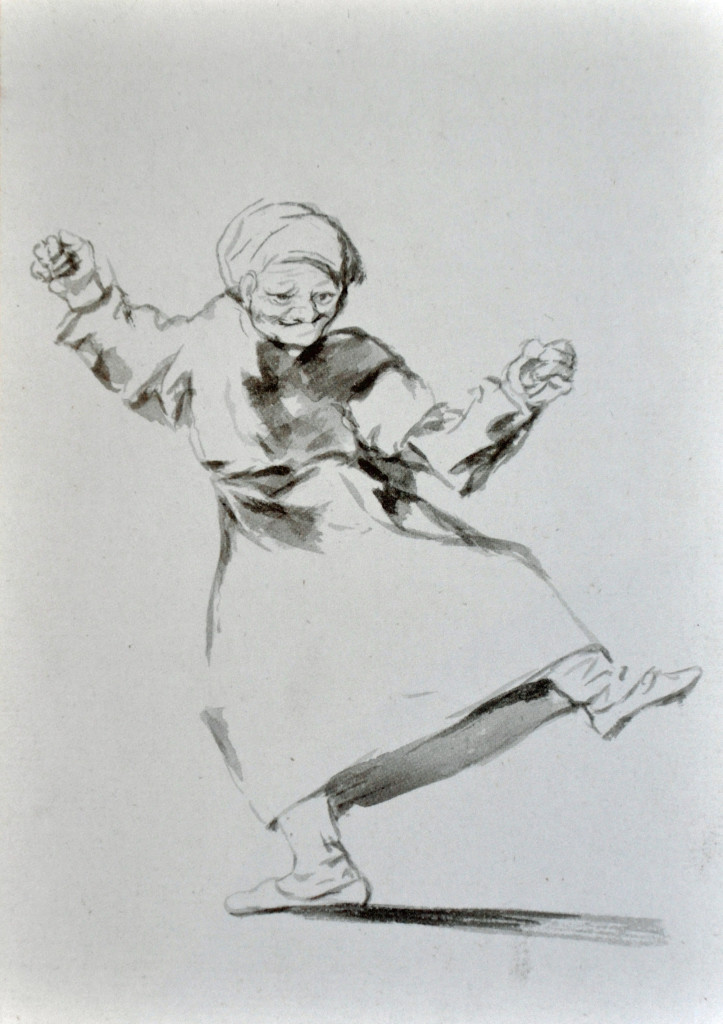
Other ways to reduce any potential tax charge
- In addition to, or as an alternative to taking a bigger lump sum you can sometimes allocate part of your pension to a named dependant. This reduces the amount of pension you receive at retirement and therefore the pension which is used to calculate the capital value of your benefits.
- If you retire early with actuarially reduced benefits, the capital value is calculated with reference to your reduced benefits. This can have the effect of reducing your LTA charge.
- If you divorced and are subject to a pension sharing order, the capital value is calculated with reference to your benefits after the debit has been deducted at retirement.
- If you elect to pay an annual allowance tax charge via the scheme pays facility, the capital value is calculated with reference to your benefits after the appropriate deduction has been made.
Obvously, any action you consider taking which has the effect of restricting your pension savings should be considered very carefully and everyone says only act after discussion with an independent financial adviser.
Though ofcourse I was quoted fees of £15,000 – £30,000 for financial advisors that make me wonder whether that’s not too much to pay.
There are clear risks if you allocate part of your pension to a dependent, say your wife, and then the two of you divorce. There are clear risks if you take a lump sum out of your pension fund, spend up and are left with nothing to fund your old age. If you re-invest any lump sum taken, it’s important to bear in mind that investments can go up and down with the market.
Buying a house or flat to let out as an income stream, is subject to similar risk that the value of the property might fall, that tenants might be difficult to find, or difficult to evict. Aside from pointing out the risks, what are the advisors going to tell me that is worth their fee?
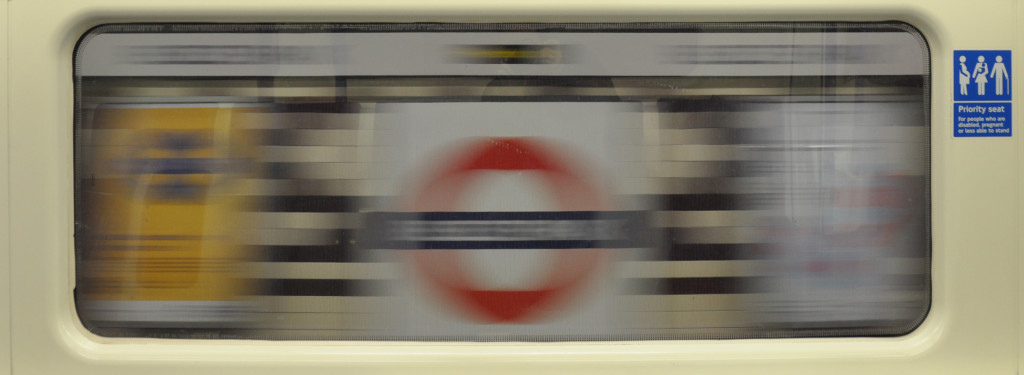
4th March: Vaccines
“We have more microorganisms in our guts”, observes Eula Biss, “than we have cells in our bodies—we are crawling with bacteria and we are full of chemicals”. Yet, the popularity of anti-vaccination forums suggest increasing numbers of people believe that introducing an attenuated virus into one’s bloodstream to kick start a life-saving immune response is both unnatural and dangerous.
Eula Biss has written a book examining immunity, innoculation and our beliefs and response to both: On Immunity: An Inoculation, Eula Biss.
She suggests that viruses, like vampires, occupy a shadow world between the living and the dead that our fears may have more to do with the act of vaccination itself—the “scarring” of flesh and the “violation” of what we fondly but entirely falsely imagine to be pristine bodily spaces. Our bodies may be temples but they’re more of a shambolic third-world type temple abandoned by the locals to the rats in the corner and bats in the attic; certainly not a pristine cathedral in WASP America.
As she shows inoculation—from the Latin word for graft or implant—draws on a surprisingly diverse range of metaphors. But all of these metaphors commonly used evoke different anxieties in a variety of contexts, from fears of racial “contamination” and sexual “violence”, to anxieties about environmental “pollutants” and our absorption into the “herd”.
We are made anxious by the idea of needles contaminating our bodies with “foreign” unclean matter not helped by the historic scandals related to dirty needles, contaminated blood supplies etc. Do we really trust the authorities to carry out the procedure safely, cleanly? Do we want to take responsibility for any possible harm?
We are made even more anxious at the idea of sexual contamination, the problem of associating vaccination against HPV (cervical cancer) with sexual disease transission. Are we really comfortable with the idea of our young daughters having sex with strangers, possibly diseased strangers?
The use of the phrase “herd immunity” to describe the benefits of population wide immunisation, requires us to identify with the herd, the mainstream yet no matter how childish it seems when written down, surely all of us at some level regard ourselves as “special”.
Is it better to do nothing and leave our child’s health to the fates or take responsibility for the small but real chance that harm may occur.
The fears themselves are not surprising, however irrational. What is more surprising and demands explanation, Biss argues, is the persistence of these fears in the face of overwhelming scientific evidence that vaccination is a boon to health and for the most part safe.
From fears that three-in-one vaccines will “overtax” children’s immune systems, making them more susceptible to asthma and allergies, to anxieties about the “neurotoxicity” of thimerosal, these anxieties are more prevalent today than ever.
How else to explain the way in which Andrew Wakefield’s now discredited theory about the link between measles-mumps-rubella (MMR) vaccination and autism was taken up with such enthusiasm by the chattering classes or the popularity of anti-vaccination sentiments in states like California, currently the site of a growing measles outbreak?
One of the strengths of Biss’s thought-provoking book is that her angst-ridden reflections on inoculation are borne out of her own, seemingly innocuous conversations with other Chicago mothers shortly after the birth of her son in the spring of 2009. That was when a new, potentially deadly strain of H1N1 influenza (swine flu) began spreading across the USA from Mexico, leading to urgent calls for Americans to immunise their children. But for every public health pronouncement assuring Biss the H1N1 influenza vaccine is safe, there is a mother on hand with an anecdote of how her child screamed all night after the jab. Worried about making the wrong choice, Biss finds herself caught in a shadow zone “in which all that is known about disease is weighted against all that is unknown about vaccines”.
I did not vaccinate my children as babies. They were vaccinated when we travelled overseas to countries where there was a real risk of catching the disease we vaccinated against. In some cases the common availability of triple rather than single vaccines, combined with my own laziness meant my girls were vaccinated against disease that I wouldn’t have bothered protecting against.
I would have preferred my girls catch rubella (German Measles) and develop lifelong immunity rather than rely upon a vaccine. Rubella is a disease that is exceptionally mild. Most women of my generation wouldn’t even have noticed catching it. However, it does have an horrendous impact or risk to unborn children of unprotected women.
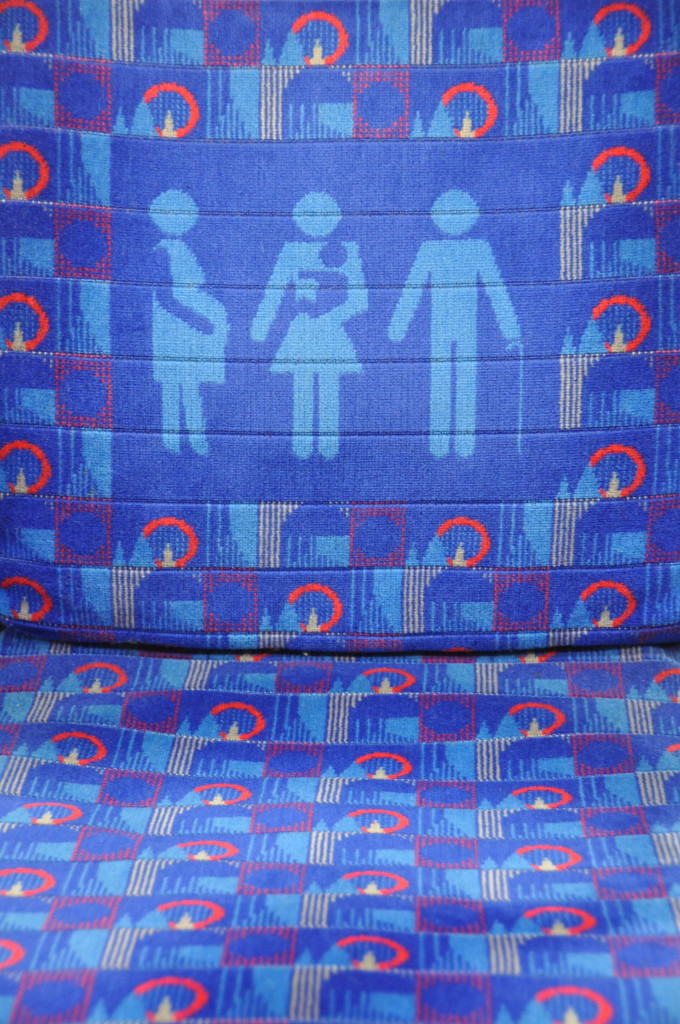
I wouldn’t have bothered with the whooping cough (pertussis) vaccine either. Not because it isn’t a horrid and distressing disease but rather because the efficacy of the vaccine is quite low and does not last long. Vaccines sometimes give a false sense of security. In the UK we don’t vaccinate against chicken pox and have all caught and recovered perfectly fine. As a child I was sent (and duly caught) measles at a measles party.
By now, my girls have probably been vaccinated against absolutely everything possible as a side benefit of travelling to third world countries. But as Biss points out, however trivial it might sound, I was and remain entirely unable to buy into the idea of herd immunity.
I understand the concept.
If the majority of the population is vaccinated, then a disease cannot spread through that population. Those individuals unable to vaccinate because they are old or infirm (immuno-suppressed etc) are protected from infection because the majority, the herd, are immune.
We should vaccinate our children because it will protect the weak, the poor, the dispossesd.
Biss believes the problem is that “people like us”, by which she means white, college-educated middle-class American women, do not think of public health as something that operates in and through their bodies. They instinctively recoil from the concept of “herd immunity”, imagining that vaccination is only a matter for the poor and the underprivileged, when exactly the reverse is true. Throughout her own deliberations, Biss’s father, a doctor who acts as the voice of authorial reason, was on hand to put his daughter, and the reader, straight. “‘Vaccination works’, my father explains, ‘by enlisting a majority in protection of a minority’. He means the minority of the population that is particularly vulnerable to a given disease.”
Indeed, while recognising that for some mothers the refusal to submit to vaccination is a form of protest against Big Pharma, Biss suggests it is a particularly retrogressive protest that ends up penalising those least able to protect themselves. “Unvaccinated children”, Biss writes, “are more likely to be white, to have an older married mother with a college education, and to live in a household with an income of $75 000 or more—like my child… Undervaccinated children…are more likely to be black, to have a younger unmarried mother, to have moved across state lines, to live in poverty.”
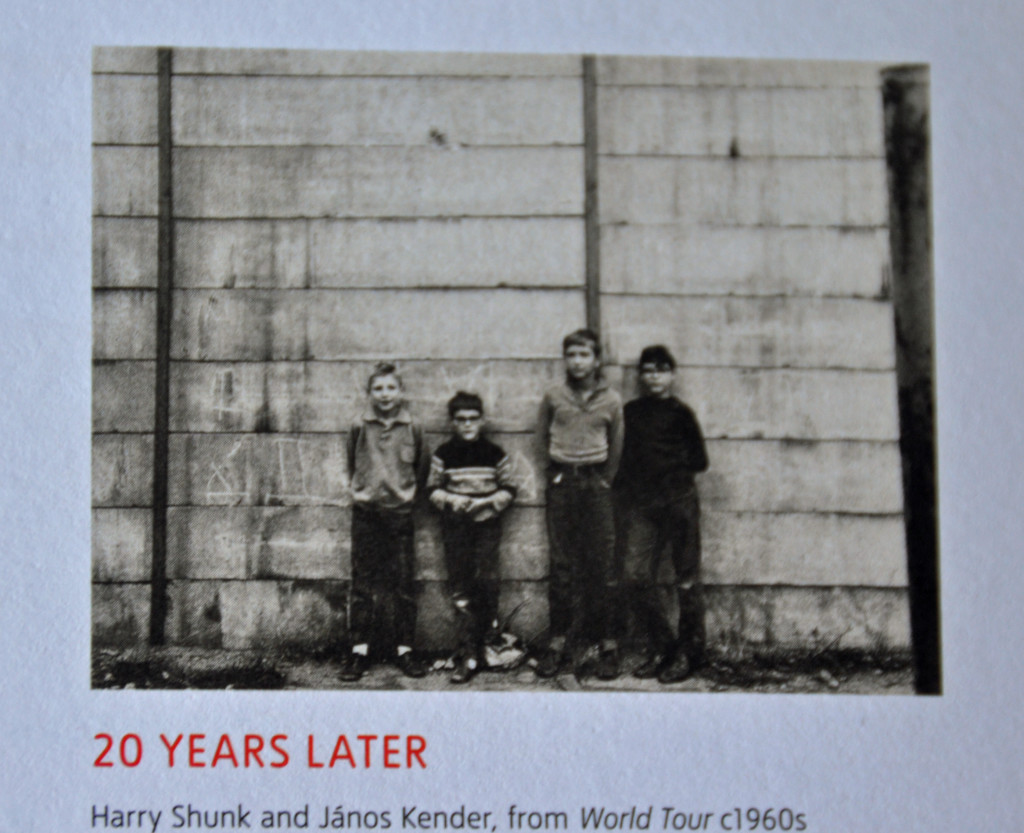
My problem is that having understood the concept, I remain unwilling to offer up the health of my child for the health of someone else, however weak, poor or dispossesed. If my healthy, wealthy, well-cared for child had caught one of the diseases subject to vaccination, it is unlikely that she would suffer complications. It would be unpleasant but not life threatening.It might well cause serious harm to the child of someone less fortunate that she brushed against in the streets when infectious.
I am simply not charitable enough, not good or self-sacrificing enough. Unlike Abraham, I am unwilling to sacrifice my child for anything or anyone. It doesn’t make me feel especially good about myself, but it is still true.
A more relevant argument for me and my circumstances is that immunity is something of a myth, a holy grail of health.
Biss’s conclusion is that although it is only natural for mothers to want to shield their children from harm, absolute immunity is a myth. It does not matter how many times Thetis dips Achilles in the River Styx, the spot where she held his heel will always be vulnerable. Biss also gives a master class in parsing statistics. Yes, one in 3 million children who receive the MMR jab may develop encephalitis but by contrast, in the days before measles vaccination one in 1000 children who contracted measles developed encephalitis—and some ended up paralysed.
We have forgotton the real harm that these diseases cause because we no longer live with them, thanks to vaccination. It is likely that the consequences would be lessened because we are all so much healthier generally, better fed and better cared for, but there would still be real, bitter consequences. Children would die. We would see more disabled people making their way around the streets because of the selfish choices we would have made – my choices, my selfishness.
That is the true moral hazard invited by the anti-vaccination crowd. The problem is that the intuitive judgments “people like us” make about such dangers no longer bear much resemblance to the real risks.
5th March: Covent Garden
Covent Garden Market was a fruit and vegetables market for 300 years but those traders moved out years ago to be replaced by bric-a-brac and antiques stalls. The film My fair Lady was filmed here – it’s where Henry Higgins first meets Eliza Doolittle.
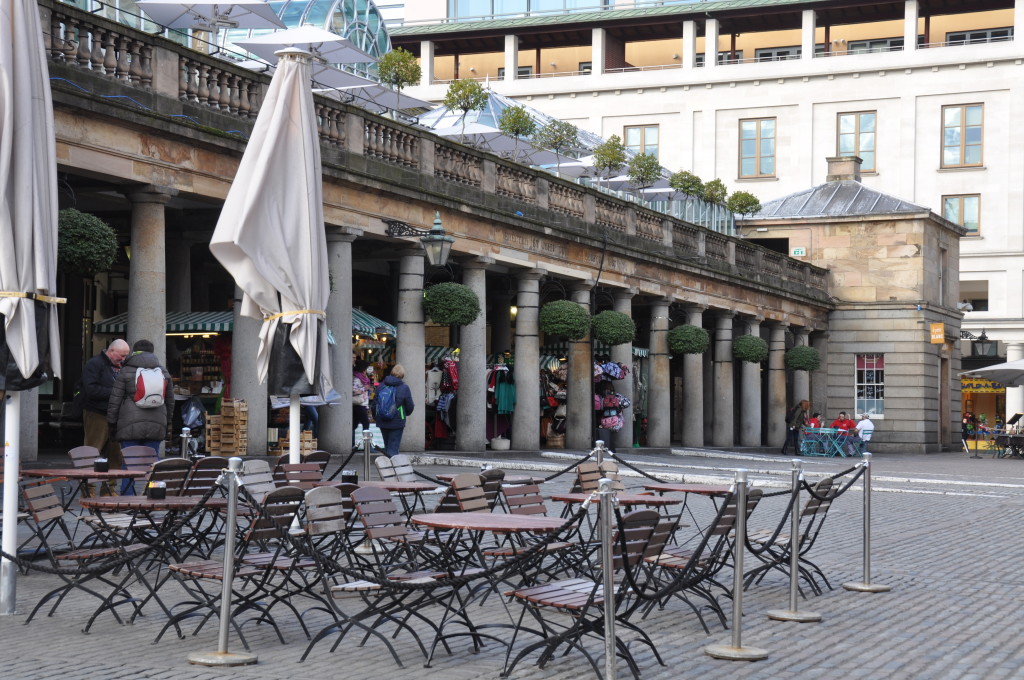
It’s a nice place for a stroll with enough good coffee shops, cafes and restaurants to make it a good stop on a walking tour, or just a hang-out before or after visiting one of the theatres nearby or even the Royal Opera House.

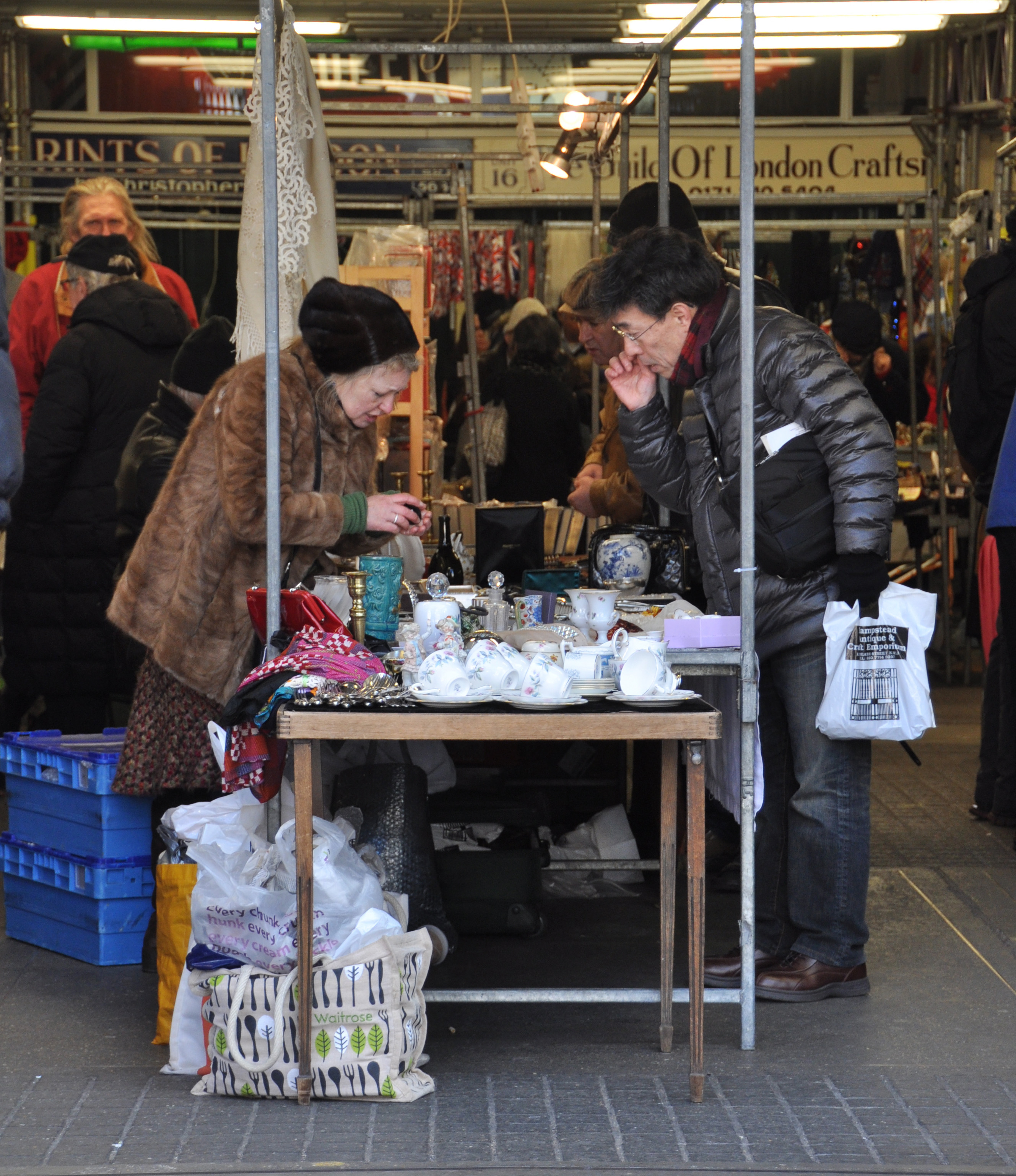
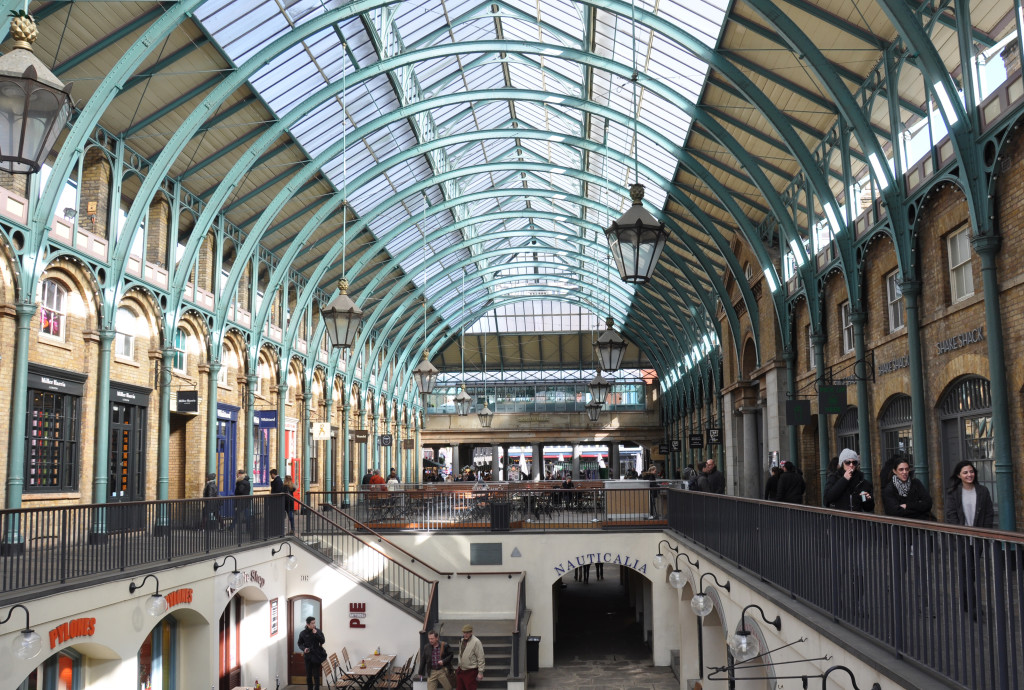
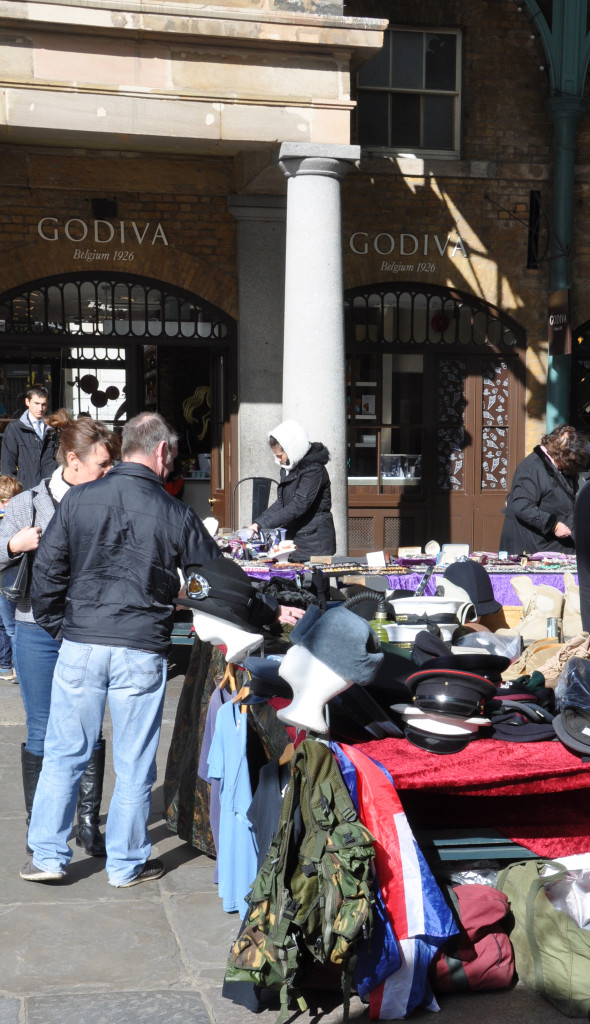


The London Transport Museum is good for families, especially for boys and in the Summer there are often bungee jumps set up on trampolines. Add in a car free plaza to run around, sweet and toy shops (expensive chi-chi ones) and it might be just the place to run off some steam.
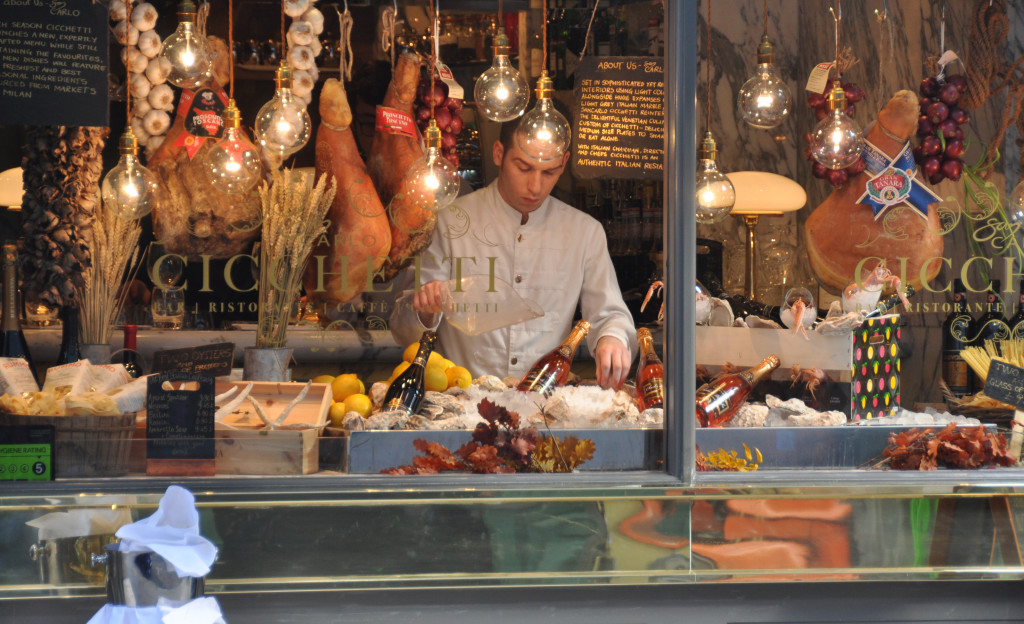
It’s quicker to walk to Covent Garden from Leicester Square tube stop than bother to change tube lines from Northern Line to Piccadilly. The track from one station to the other is so short that the standard zone 1 fare makes the journey from Leicester Square to Covent Garden the most expensive track in the UK.

6th March: Pensions Maze
As a more than half-way money literate individual, how hard can this pension stuff get?

My partner has worked for a gazillion years for the same employer. You might imagine that he would have a single pension from that single employer and all would be blissfully simple. Alas, no.
He is old enough to have been enrolled into one of the original defined benefit pension schemes for a number of years before that was closed and replaced with a defined contribution.
Defined benefit pensions do what they say – they tell you what pension you’ll receive, say 50% of your final salary (nowadays more likely to be your average salary). Most of the financial risk with this type of pension remains with the employer. However long you live, your employer is obliged to pay out, usually index-linked so increasing with inflation, and when you die, most usually paying a small pension to your wife (typicaly 50%)
A defined contribution pension is simply a savings scheme with no guarrantee as to the final amount you’ll receive. Most of the financial risk resides with you. The money you save is usually invested into a pension fund comprising an investment fund with a mix of equities and bonds. In my experience, the performance is rarely great and the fee structure is opaque. I have never heard of a managed pension fund relaibly outperforming a basic tracker fund, and that’s before they charge the killer fees.
Ranting aside, you might reasonably guess he would have two pensions. No.
Because he has always been a saver rather than a spender, he also made extra donations in the early years, so called “Additional Voluntary Contributions” or AVCs into another defined contribution fund. One employer – three pensions.
You might reasonably think that the complications ended there but in fact the employer decided to change pension managers part way through his career, so he has ended up with three pensions with two pension managers. Despite working for one company effectively all his life, he’s ended up like many people who have worked for two or three employers, with pensions across a number of funds managed by a number of different people.
All of the literature arrived from one of these management companies, preparing people for their retirement. After the initial panic wondering whether he was entirely delusional about the amount of money he had squirrelled away, or whether the pension administrator was just incompetent, the news broke that there were in fact two administrators and obviously one does not see or necessarily know about what the other one looks after.
It’s why the onus is on the individual to make any tax declarations, to take responsibility for the decisions made as to how the pension fund is used. It is a criminal act to fail to declare relevant funds and income in the UK. No pressure then!
 Rather depressingly the literature opens with a summary of the new legislation being implemented that would allow an individual to simply take capital out of the pension fund piece by piece as if it were any other kind of bank account or fund holding.
Rather depressingly the literature opens with a summary of the new legislation being implemented that would allow an individual to simply take capital out of the pension fund piece by piece as if it were any other kind of bank account or fund holding.
It concludes: the company have decided not to offer this facility.
So much for effective government.
If we wanted to use the new facility, we would have to transfer the entire fund to another manager, probably into a SIPP fund with someone like Bestinvest or Hargreaves Lansdowne. The latter names are not recommendations as such, just the first names that I recognise on the market and who really wants to trawl through the very many providers when all of the other admin is waiting to be done.
I’m coming to the realisation that none of the indiviudal pension processes, calculations or choices are especially complicated but that are just so many of them, and they are so dependant upon each other that the admin becomes fiddly.
The second thing that the literature says is that most of what it’s about to describe is unlikely to apply to the reader. Most of the rules deal with pension funds that are large but ofcourse most people have quite small savings in their pension pots. The irony about the change in law and the fake outrage that people might cash it all in to buy a lamborghini is two fold: firstly, the average person has pension savings of only about £10,000 so maybe there’s a chance to buy a second hand toyota or, much more reasonably, pay down the mortgage; and secondly, the law already allowed “small” amounts such as £10,000 to be taken as cash anyway.

But he’s a mad saver so has actually three sizable pension funds, let’s assume nice easy numbers: £700,000 £400,000 and a Defined Benefit Fund £40,000pa. which translates to a Capital Value of £800,000 (£40,000×20). Let’s assume 2012 protection which caps his pension fund at £1,500,000 and could leave him with an excess of £400,000 (£1.9m – £1.5m) taxable at 55%.
Let’s assume the Defined Benefit pension and the smaller pension fund of £400,000 are with one manager and the £700,000 is with a second manager.
From their perspective the current capital value is £1,200,000 (£800,000 + £400,000) because of course they have no knowledge about the extra £700,000 fund. We are obliged to inform them and the tax authorities should a taxable event occur. The pension literature tries to make clear the decisions that need to be made as well as emphasising the need to inform the pension managers of any additional funds held.
There are ways of reducing the capital value of pension funds, primarily making use of the tax free lump sum that can be taken from most pension funds before calculating the capital value. Usually this comprises 25% of the fund. using the numbers given, the initial capital value is £1.9m allowing a tax free lump sum of £475,000 to be taken in total, which obviously reduces the capital value to £1.425m which is within the £1.5m limit assuming 2012 protection.

If it were applied separately by each manager, this would comprise two lump sums of £300,000 and £175,000.
Since it seems a bit stupid to pay 55% tax if we don’t have to let’s assume we take the maximum tax free lump sums from each fund manager in the end. What on earth do we do with £475,000?
You can buy an annuity with money of any kind, whether or not from a pension account so in theory we could just use it to buy another annuity. Annuity rates are at an all time low though (around 4.5%) so maybe we should just invest it in a unit trust or group of trusts in the hope that annuity rates or the market will rise. There is a clear market risk, values go down as well as up so we could lose some of this money but leaving it in a bank account earning less than inflation also results in a loss, albeit a more limited, known loss.
We will need some money to live on so we will most probably have to cash in the defined benefit scheme and maybe the AVC fund so we will have a cash amount of £300,000 to invest or manage in some way.
Doing nothing with the other pension account, delaying taking income and crystallising any taxable event, leaves the fund invested, still running the risk that the market will fall. If the market rises, it may lead to a capital value excess such that 55% of any gains are paid in tax to the government.
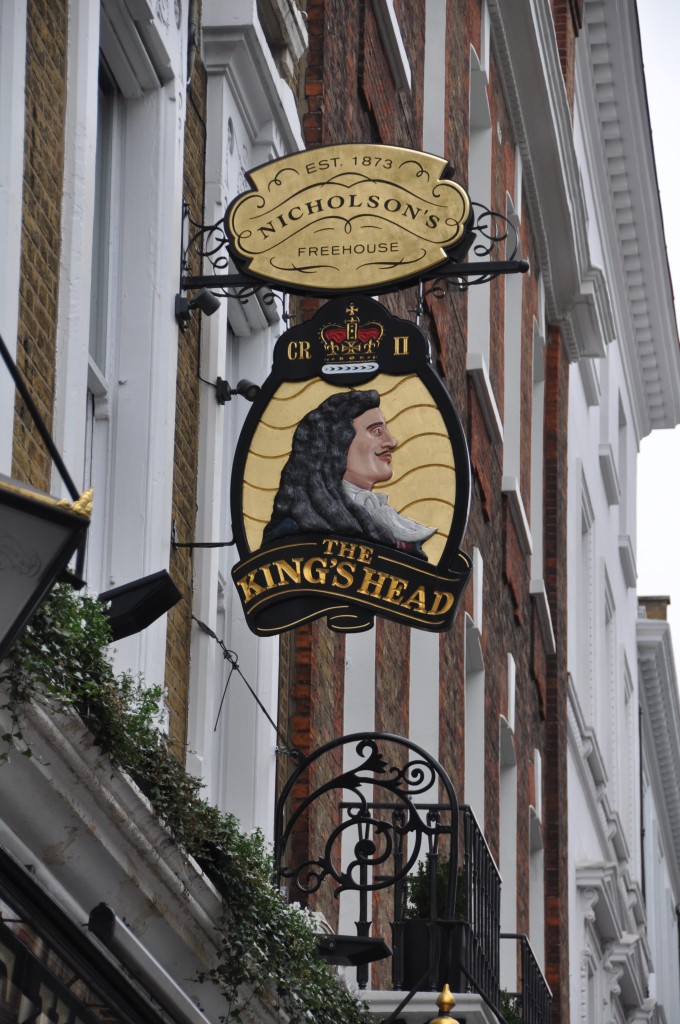
On the plus side, the pension manager holding the AVC scheme is paid to do a market search of potential annuity providers and manage that part of the process for us if we choose. Looking through the search facility on Hargreaves Lansdown (HL) they seem to come up with competitive quotes allowing for the fee of 1-2% HL apply (capped at £5000 per transaction). Taking the maximum tax free lump sum out of the AVC fund, we would still be left with enough to generate a basic annual income of £5,000 say providing we didn’t insist on spousal pensions, guarrantee periods, inflation linking etc.
The funds with one manager could therefore generate income of £45,000. This is gross income obviously and after tax is reduced down to about £35,000, or just over £2,900 per month.
Not forgetting two children at private schools and probably heading off to university will cost £20,000 each per year, net of tax, though ofcourse this could be reduced by them taking out student loans from the government for university at least, which are offerred at preferential terms. Essentially UK student loans are repaid via a graduate tax on incomes higher than £21,000 over 30 years.
So at the end of the day ot comes down to working out how much money we actually want to be able to spend each year and how much capital we want to use up in our middle years.
Time for a drink.

7th March: UK Poverty JRF
Summary
Key points
- Household incomes fell in real terms for the third year in a row. Median income in 2012/13 was 9 per cent below where it was in 2007/08 and 4 per cent lower than a decade ago. Incomes of the bottom tenth have fallen further and for longer and are now 8 per cent below their level in 2002/03.
- Unemployment fell by 300,000 in the last year and the number unemployed for over a year fell for the first time in a decade. The number of people working part time but wanting a full-time job also fell, by 50,000, also the first fall in ten years.
- At the same time, wages have fallen, for men and women, working full and part time, for low and high earners. The average full-time hourly pay for men has fallen from £13.90 to £12.90, after adjusting for inflation. For women, it has fallen from £10.80 to £10.30.
- The report shows the movement between worklessness and low pay – two thirds of those in work now but unemployed a year ago are in low-paid work.
- Changes to the way the welfare system operates have worsened the experience of poverty for many of those affected – whether through rising sanctions, longer waits for assessment or poor job outcomes through welfare-to-work programmes.
- Legal support for social welfare cases has been almost completely withdrawn. As well as cutting support to people with debt and housing problems, this leaves people powerless to challenge incorrect decisions related to their benefits.
- There are now as many people in poverty in the private rented sector as the social rented sector (around 4m in both). The private rented sector is increasingly insecure – the number of repossessions in the private rented sector is rising while mortgage repossessions are falling.
- Child poverty is still highest in cities, but urban areas now appear to be better at providing a decent level of education than rural areas. Unemployment rose right across the country during the recession. Some of the biggest rises were in places where unemployment was already high, with some big rises in smaller cities and towns.
9th March: Pornography?
Last week I revisited the Marlene Dumas exhibition at the Tate Modern. There’s a room devoted to her reaction to pornography that comes with a “parental advisory” notice which caused a bit of discussion, in my group at least.

The exhibition is brilliant but not easy. I’m not sure I’d want to go to sleep in any house with one of her pictures hanging on the wall and I certainly wouldn’t bet money on an easy night’s sleep if obliged to sleep near one. The paintings are disturbing, even when including typically benign subjects like her young daughter.
To my eyes they all carry either the threat or thread of violence. An astonishing number of the portraits look like cadavers or the victims of abuse. They all made me think through my reaction. Violence does not seem to come with parental warnings anywhere, just sex.

There are nudes outside of the “pornography” room. The ones that stick in my mind were of two young men. There is something very disturbing about nude pictures of near children. I can’t work out whether it’s a modern day sensitivity but it has totally ruined Egon Schiele for me and I found these two portraits difficult. The two young boys were placed opposite two reclining nudes that must surely have been male cadavers. They were very like the relic tombs we see in cathedrals, though perhaps with more of a reek of decay. The contrast was shocking.
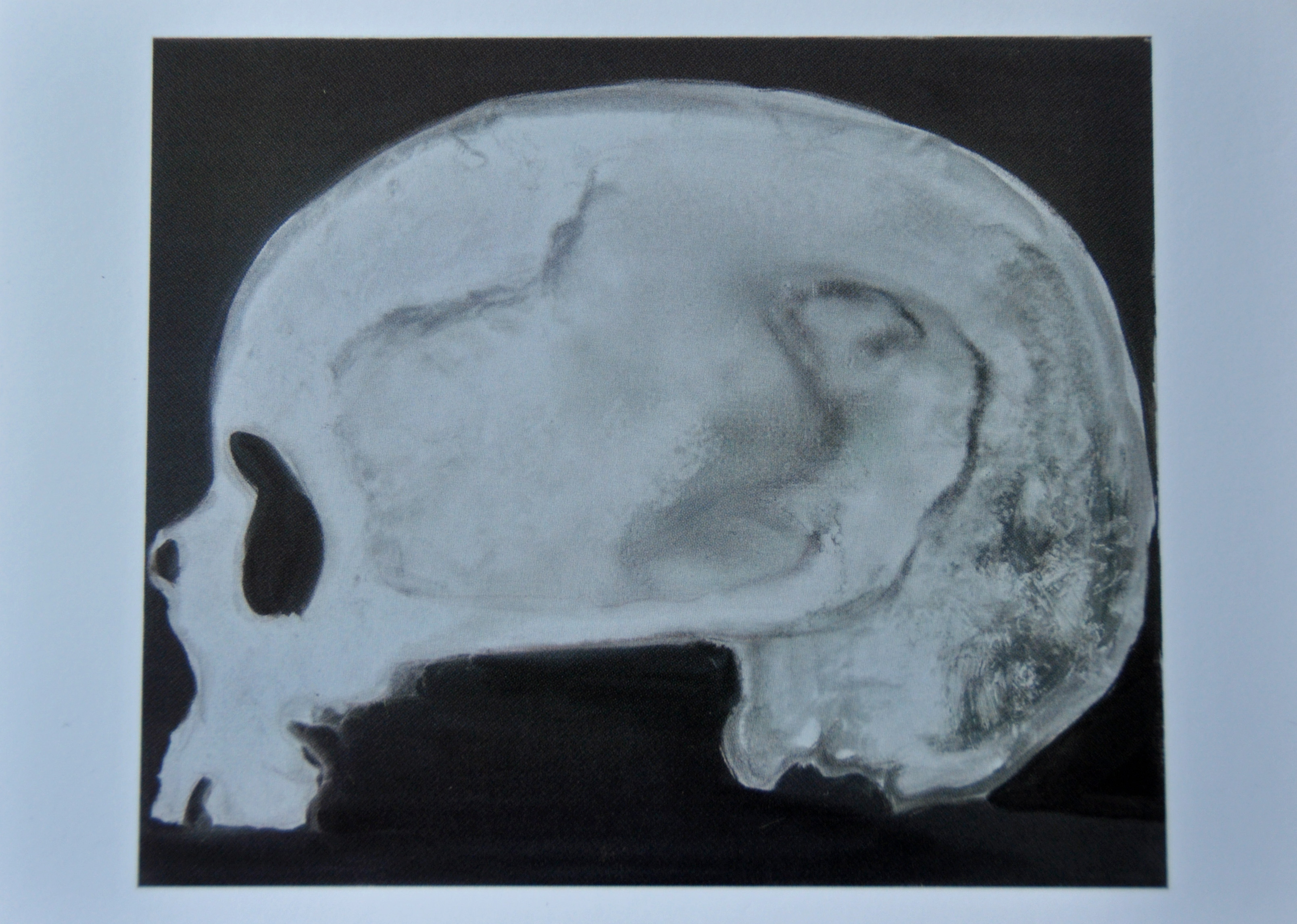
Inside the pornography room itself, it was difficult to determine why some of the pictures were there not because they weren’t sexual or sexualised, but because we are so innured to pictures and paintings of women who have been sexualised. There were a number of female nudes but nude women are everywhere and everyday. Was this porn? What does porn mean in a culture where women are shown in such a highly sexual manner in the papers, on the tv, when we’re eating breakfast? Was the porn inside or outside of the room?
There were two pictures of nude women staring down from their paintings, each with distended bellies. It was strangely difficult to decide whether they were malnourished or pregnant. Their expressions were disinterested in the way of the starving dispossesed with the lack of hope but then maybe that’s the expression of a woman pregnant and still obliged to whore her body out to pay for lunch.
There were pictures of women masturbating, and standard body part nudes looking back at the viewer from the frame. The shock of women actively involved in sex was clearly more to do with their own agency, the lack of a man. Women orgasming solo is too much? A picture of a man and woman having sex, woman on top was found outside of the room, no need to warn the parents, but these pictures of a woman on her own enjoying her body required forethought and “advice”.

The male nude was pictured, arse presented to the viewer legs akimbo. Gay pornography? It certainly was difficult to see it as a stance attractive to women viewing porn. There was something absurd and weirdly comical about the picture of a man with his testicles hanging loose between his legs, not quite vulnerable, just silly. Similar pictures of women legs akimbo wouldn’t result in the same ridicule.
All bodies are comical at some level. We are none of us perfect. Fanny farts happen. Testicles are not smooth and beautiful, at least in the heterosexual world. Are balls just fundamentally laughable (to women at least) or is it more to do with the pervasive sexualisation of women yet again.
Great exhibition.
11th March: Fairy Tales
The Mabinogion is a collection of stories from Wales, regarded as the earliest prose literature of Britain. The stories were compiled in the 12th–13th century from earlier oral traditions by medieval Welsh authors. But beyond their origins, first and foremost they are great stories refined through long development by skilled performers.
One of the stories deals with the story of Lleu, born of rape and magic, raised by his uncle and cursed by his mother Arianrhod that he may never marry a human woman.
To counteract the curse, the boy’s uncles Math and Gwydion, king and magician, gather together blossom from the oak tree, yellow broom flowers and meadowsweet and they make a maiden more beautiful than anyone has ever seen before. They name her Blodeuwedd from the Welsh word blodau which means “flowers”
And they gift her to Lleu as a perfect wife.

And though the story is ancient it seems that some things last forever. We still have the idea that somehow girls can be “made” into perfect companions for “real” imperfect men. The idea that women can be kept sweet and compliant, gentle and soft as flowers is still with us. Isn’t this the fundamental belief behind segregating girls away behind closed doors, away from education, away from the corruption of everyday life.
Blodeuedd is given no choice, no agency of her own. She is made and she is given. There is no courtship, no pretence.
And isn’t it as dreadful that men are assumed to want this passive perfection? Almost as dreadful as the fact that still today so many men claim that this is exactly what a proper woman should be – passive, pretty, compliant. Why on earth would someone want a deadweight to help them through the world, someone with no agency, no oomph? Why would you want your children to share in that genetic heritage?
And all this for fear of a mother’s curse, that a son will never be loved by a real woman, albeit a son raised by men, not raised by women at all.
It all goes wrong ofcourse. Perfection is always a false goal.

While Lleu is away on business, Blodeuwedd has an affair and the two attempt to murder Lleu and in the process drive him away from their lands. Since villains can never win, Lleu is rescued from his exile by his uncle Gwydion and together they return to reclaim the land.
Gwydion overtakes a fleeing Blodeuwedd and turns her into an owl, proclaiming: “You will not dare to show your face ever again in the light of day and that will be because of the hatred borne you. Other birds will harass and despise you wherever they shall find you. And you will not lose your name but shall always be Blodeuwedd (Flower-Face).
The perfect woman and wife is cursed but not killed for her crime of betrayal, for her infidelity and her attempted murder. It has always felt that the transformation is an acknowledgement of responsibility on the part of Gwydion. By denying her any human rights in the first place then he also denies her human responsibility for the consequences of her choice. What could fidelity, loyalty, love, honour or resonsibility mean to an oak tree, to meadowsweet?

Meanwhile, her escaped lover Gronw begs forgiveness. Lleu refuses, demanding that he must stand on the bank of the River Cynfael and receive a blow from his spear. Reluctantly he agrees but on condition that a large stone may stand to protect him. Such is the strength of Lleu and his spear that when he throws it, it pierces the stone, killing his rival. A holed stone in Ardudwy, Wales is still known as Llech Ronw (Gronw’s Stone).
Lleu regains his land and authority but retains his mother’s curse. He shall never marry a human wife, never have children.
And maybe if a man has been raised on a toxic diet of male stereotypes, of honour and male violence, if he is the kind of man looking for a slave rather than a companion, a servant rather than a partner, then maybe he truly is cursed even today to live without a human wife.
Maybe a modern day Lleu will always be doomed to live without female love and kindness in their lives because love requires choice and freedom, strength and agency.

12th March: Mind the Gap
Across the world, rich and poor, girls are outperforming boys in education. It’s a recent phenomena and significant enough to figure in an extended article in the Economist, replayed here. Until the 1960s boys spent longer and went further in school than their sisters. They were significantly more likely to graduate from university. Where once policy makers worried about girls lack of confidence in science, no they fret about boys’ reading skills or lack thereof.
The reversal is described in a report by the OECD published on 5th March. Boys just about hold on to a maths lead being 3 months ahead of girls aged 15, but they are running even with girls in science and ofcourse remain far behind when it comes to reading. In all 64 countries and economies studied, girls outperform boys with an average gap of about a year. Literacy is important because it is key to understanding the other subjects.
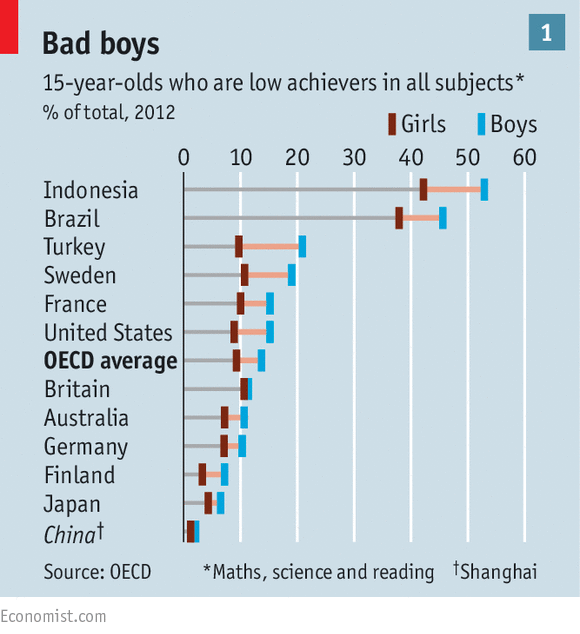
Girls are more tied to the home and home activities by their families. Perhaps as a result, the average 15-year-old girl spends five-and-a-half hours a week on homework, an hour more than the average boy. Three-quarters of girls read for pleasure, compared with little more than half of boys. The OECD found that, among boys who do as much homework as the average girl, the gender gap in reading fell by nearly a quarter.
Girls are much more heavily socialised, much more likely to attend school and to be well-behaved once they arrive. Boys are twice as likely as girls to report that school is a “waste of time”, and more often turn up late. When I was at school the push was to make girls more assertive in the classroom, to participate more. Nowadays we are urged to steer boys away from a version of masculinity that ignores academic achievement, to encourage them to focus and develop self-discipline.
Perhaps because they can be so insufferable, teenage boys are often marked down by their teachers. In a direct reversal of the situation with job applications, the OECD found that boys did much better in its anonymised assessments. One possible explanation is that teachers mark up students who are polite, eager and stay out of fights, all attributes that are more common among girls
Since 2003, the last occasion when the OECD did a big study, boys in a few countries have caught up in reading and girls in several others have significantly narrowed the gap in maths. No country has managed both.
Girls’ educational dominance persists through to university. In the OECD women now make up 56% of students enrolled, up from 46% in 1985. And once there, women are more likely to graduate and to get better degrees.

It’s still true that men and women tend to study different subjects, with many women choosing courses in education, health, arts and the humanities, whereas men take up computing, engineering and the exact sciences. In mathematics women are drawing level; in the life sciences, social sciences, business and law they have moved ahead.
Yet despite progree in education, the lifetime return on investing in a degree is lower for women. Put simply, when it comes to earning money rather than spending it on education, women may still lose out if despite their “better” education they fail to convert it to a “better” career path.
At the highest levels of business and the professions, women remain notably scarce. In a reversal of the pattern at school, the anonymous and therefore gender-blind essays and exams at university protect female students from bias. But in the workplace, bias remains an issue or as Elisabeth Kelan of Britain’s Cranfield School of Management, has said “traditional patterns assert themselves in miraculous ways”.
Men and women join the medical and legal professions in roughly equal numbers, but 10-15 years later many women have chosen unambitious career paths or dropped out to spend time with their children. Meanwhile men are rising through the ranks as qualifications gained long ago fade in importance and personality, ambition, experience as well as having a face that “fits the pattern” comes to matter more.
After 40 years of making up the majority of graduates in some countries, the argument that there just aren’t enough suitable women candidates is wearing very thin. According to Claudia Goldin, an economics professor at Harvard, the “last chapter” in the story of women’s rise—equal pay and access to the best jobs—will not come without big structural changes.
Ms Goldin found that the difference between the hourly earnings of highly qualified men and their female peers grows hugely in the first 10-15 years of working life, largely because of a big premium in some highly paid jobs on putting in long days and being constantly on call – so much for work/life balance. It’s noticeable that there’s no suggestion that quality of work makes a difference, just quantity.
Where such jobs are common, for example in business and the law, the gender pay gap remains wide and even very short spells out of the workforce are severely penalised, meaning that motherhood but not fatherhood exacts a heavy price.
There will always be jobs where flexibility is not an option. In many others, pay does not need to depend on being available all hours—and well-educated men who want a life outside work would benefit from change, too.
13th March: The F Word
There is an interesting video on youtube which I came across through a twitter link .
http://youtu.be/Jzcs4ti_bdI?t=15m55s … …
Everyone will take something different from the discussion. Indeed based on some of the comments, some people remain entirely unable to take anything from the discussion other than outrage at Anita Sarkeesian’s simple existence. Thus proving out a great deal of her points made about gamers and gaming.
Feminism, like all political movements, evolves and changes as we ouselves evolve and change. We learn to be a feminist, in the same way as we learn to appreciate fairness and equality or in some families, perhaps we don’t: where our brothers are fed first and we are required to serve or maybe where our brothers are allowed out of an evening but we must remain “safe” at home. The inequality that some of us are obliged to live with, can itself bring us to a sense of feminism because fundamentally feminism is about fairness.
But whilst we are all individuals and speak to our own individual issues through feminism, it’s important to also keep hold of the idea of feminism is a global political movement with the aim of changing the existing global power structure and it’s gender oppression.
Inclusivity & solidarity are difficult ideas for any political movement. My issues and problems may not be as “serious” as my sister’s but that doesn’t make mine meaningless, or mean that I shouldn’t try to solve them. I am allowed to focus on the immediate issues in my own life, to set my own priorities but should strive to extend my interest and my support to my sisters and their issues also, recognising at some level that my problems and her problems are rooted from the same problematic oppressive system.
Feminism is a human rights movement which advocates for the rights of the half of the world that happens to be female. No more; no less.
Why is the word “feminist”, why is any word applied to the women’s movement, such as suffragette or women’s libber, challenging? The idea and therefore the word is challenging because it asks for change and change is always difficult. It is always uncomfortable to challenge inequality in the world. It makes people uncomfortable to examine their own privilege, their own sense of entitlement.
I’m struck by a tweet fromQueen Mikayla earlier this month: “Any man who is genuinely scared that feminism means female dominance pictures a world where men are treated like women. Think about that”.
Maybe we need to think more carefully about what kind of equality we want. Who does the existing system work for because it doesn’t work for women, for minority groups, for people of colour or indeed for the majority of men. The current system works for a small number of rich old men and their sons. In some cases, their daughters and wives are also privileged, especially when there are no sons, or the husband dies prematurely, which is why in developing countries often political power is held by a female family member, wife, sister or daughter as a “holding” for the next generation of men.
It is not enough to be successful within the existing system. A feminist acts to change the system in small or large ways. Being born a woman does not make a person a feminist per se. Not all female acts are empowering, even for them.
Though identifying first and foremost as a woman, before identifying as a person of colour, of ethnicity, of religion, of political views perhaps makes a woman into a feminist. If we see ourselves first as “woman” than we inevitably identify with causes impacting the lives of women.
When we read stories about violence, we recognise the threat of male violence that women everywhere have to accomodate in their lives. When we read about sex selection, we worry about the missing women, and why people are choosing not to birth girls. When we read about changes in state benefits for pensioners, we recognise that this is an issue essentially about women because most pensioners are women.
This is not to say that all women are feminists because clearly that is not true. It is also not to say that men cannot be feminists because ultimately all that feminism means is an advocacy for fairness, for equality and who can reasonably argue with that idea.
As per a menEngage tweet earlier today, “Men don’t don’t need to be given space to be feminists. Men need to take the space they have & make it feminist”.
But male violence against women is everywhere around us. There is a sense of male entitlement that steps beyond civil disagreement to threats of violence against women and this very public action then acts to deter other women from engaging in the public world. All of the women sitting on the panel have received death threats simply for speaking. We need to recognise the “fatwas” imposed upon women, the prohibition on free speech.
The threats are not only direct threats of rape, of muder etc but also a more insidious “Shut up. It’s so much better for you than elsewhere in the world” or ” Most men are decent so stop making men into the villain – you have nothing real to complain about.
Are we supposed to be grateful when men behave civilly? Isn’t this something that we’re supposed to be able to assume? And isn’t the comment about other countries just an overt threat – “We could do this to you. We might do this to you if you keep complaining.
Should women be grateful for men behaving well? Are men grateful? Do men feel grateful that their wives, their sisters and daughters don’t poison their dinner, or are they entitled to assume that the women in their lives are not trying to hurt them, to kill or brutalise them.
Because individual voices matter. Solidarity with other women matters, in even very small ways such as being supportive on twitter. And feminism helps some of us to understand our experiences in the world and to understand that other people suffer the same experiences. And whilst it sometimes seems that we are continually having to repeat battles, for birth control and physical autonomy, for education, for political representation and economic independence in the workforce, there has been progress.
There is a continual reframing of battles but the battles remain significant and need to be fought. Liberation is coming.
14th March: Real?
Male violence is a problem.
Male violence is a problem for women, who live their everyday lives trying to accomodate or mitigate the threat of male violence, women who have to think twice about walking home at night and then think again about using unlicensed taxi cabs. Women have to think hard about whether accepting a lift from a fliratatious friend, an ex- or a work colleague might put them in a tricky place, a place where the choice is unwanted sex or else.
It’s a problem for women in daylight, women who just won’t walk past the pub or the betting shop for fear of harrassment, women who know streets that are just not safe, women who only walk along well-trod paths in the park and then feel nervous.
These women are not scared of other women. They are scared of men.
I was asked whether it was a real problem or a perceived risk, perhaps an irrational fear?
Male violence was a problem for the woman running on the Heath at 2pm in broad daylight when a man punched her and assulted her on the ground. Assault sounds so clean and clinical in the police report in the newspapers. Apparently, it involved ripping off bits of her clothing and ejaculating all over her face. The DNA evidence puts him on file for next time. Maybe when he’s brutalised enough women, he’ll make a mistake and be identified and put away for a couple of months.
It was a problem for the 70 year old I know from church who when walking home from the postoffice at 10 am was mugged by two young men on a moped, knocked to the ground and spat on. They haven’t been caught either.
She still has blurred vision.
It was a problem for the schoolgirl who was grabbed by a man masturbating on a popular cut-through path two minutes from the local school. The path backs onto my garden. The school advised parents to make sure their children are accompanied to school where possible and not to use that path.
Male violence was a problem for my 14 year old daughter who walking home from school, in her uniform, had a car crawl alongside her with a couple of “old” men suggesting they’d like to “fuck her hard”. They didn’t drive off until, crying her heart out, she came across the father of a schoolfriend walking in the other direction.
These things have all happened in the last 6-12 months within a mile or so of my home in a very wealthy, very privileged neighbourhood in London.
So of all the things written yesterday about feminism, the last thing I expected to be questioned about was whether or not women really do live their everyday lives with the threat of male violence.
Male violence against women is real. The threat of violence is real and is everywhere. It is a very rational fear. Male violence is real in the developed world, the wealthy white privileged world, and everywhere else around the world.
Women everywhere live their everyday lives trying to mitigate and accomodate the threat of violence.
This is my experience.
14th March: Victims
Male violence is a problem for men as well as women.
In the UK according to the British Crime Survey (2010) about 25% of the victims of domestic violence were men. It’s a significant number.
We need to recognise that anybody can be affected by domestic abuse, and anyone can be an abuser. It doesn’t just happen to women – men can be victims too, whether their partner is a man or a woman. The first step is to acknowledge the problem, to tell someone and to find help.
Ippo Panteloudakis is helpline manager for the Men’s Advice Line, in the UK which offers help over the phone or via email.
“We spoke to 800 male victims of domestic abuse in 2010,” he says. “More men are coming forward than a few years ago, and the services to support them are improving very quickly.”
The Men’s Advice Line can refer men to local places that can help, such as health services and voluntary organisations.
“As well as talking to someone when you realise you’re in an abusive relationship, try to gather evidence about what’s happening,” says Ippo. This could include taking photographs of any injuries or bruises, and reporting it to your doctor. “You could also keep a diary of what happens, and the story of the abuse will show.”
Try not to respond with violence. “Violence breeds more violence, and if you retaliate then this can make the abuser’s violence worse,” advises Ippo. “There’s also the risk that they will call the police, and you will be seen as the abuser.”
Find out where to go for help.
The first step in escaping an abusive situation is realising that you’re not alone and it’s not your fault. Try to get advice from an organisation such as the Men’s Advice Line or Mankind before you go.
Useful external links:
http://www.nhs.uk/Livewell/abuse/Pages/domestic-violence-against-men.aspx …
Broken Rainbow: LGBT domestic abuse support
16th March: Game, Almeida
Over the weekend we went to see a play, “Game” at the Almeida Theatre, Islington
 It’s been reviewed by most of the major newspapers
It’s been reviewed by most of the major newspapers
![]()
![]()
![]()
![]()
“Short, sharp, pulse-quickening… Brilliant.”
Dominic Cavendish, Daily Telegraph, 5 March 2015
Read full review
On the way, the kids were fractious and we came so close to just heading home. Parking was tricky but for a late night -ish performance (9pm start) felt necessary.
And yet in the end it all came good – we arrived on time, found our seats (unreserved for this show) and enjoyed the show. Like all the best theatre it left us talking about the themes all the way home.
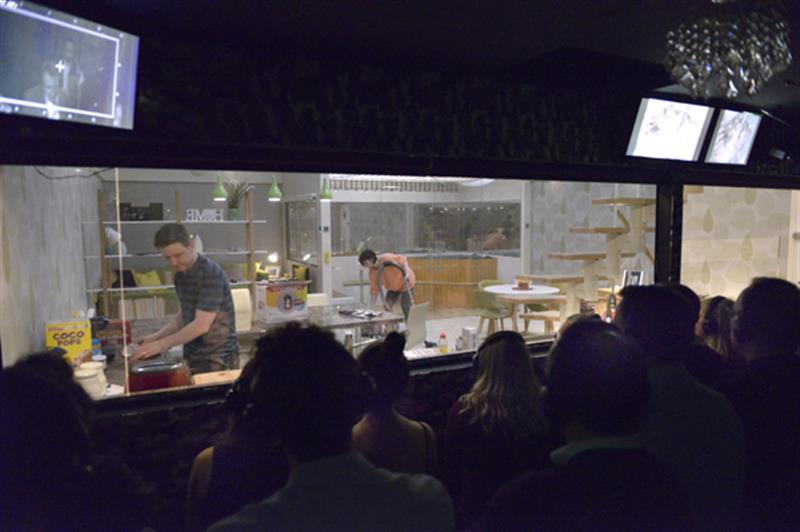 It’s based around a Game that, in part, the audience participates in as though watching reality tv shows.
It’s based around a Game that, in part, the audience participates in as though watching reality tv shows.
Essentially a couple move into a house, able to live free of charge providing they’re willing to have their lives observed from behind a screen and to allow themselves to be shot at by paying customers with tranquiliser darts. You watch the story unfold as they try to conceive a child, all under the hidden gaze of strangers.
The cast were excellent, especially Kevin Harvey as the ex-soldier game-keeper or warden.
The audience is housed in a series of boxes and we watch the play through windows and on tv screens. We were left thinking about voyeurism, the ways in which the poor may be made to “perform” for the rich, the way they are made into “other” like an old fashioned freakshow.
It touches on themes of stress, sex, PTSD in soldiers and where exactly should we draw the line and why. Is it a moral decision, a legal one or simply financial profit that decides how far people will go?
So if you’re heading to London in the near future, I’d recommend it.
17th March: Safe
In response to a post about male violence, last week I was told:
“Across almost all OECD countries women are safer than men.” (http://www.oecdbetterlifeindex.org/#/11111111151)
It’s an interesting point. It raises some fairly obvious questions.
What do we mean by safe? What or who are we safe from? And at what cost do we make ourselves safe?
 According to the OECD better life index personal security is a core element for the well-being of individuals, and largely reflects the risks of people being physically assaulted or falling victim to other types of crime. Crime can lead to loss of life and property, as well as physical pain, post-traumatic stress and anxiety. One of the biggest impacts of crime on people’s well-being appears to be through the feeling of vulnerability that it causes.
According to the OECD better life index personal security is a core element for the well-being of individuals, and largely reflects the risks of people being physically assaulted or falling victim to other types of crime. Crime can lead to loss of life and property, as well as physical pain, post-traumatic stress and anxiety. One of the biggest impacts of crime on people’s well-being appears to be through the feeling of vulnerability that it causes.
According to this report the UK is one of the safest countries in the world which doesn’t ring especially true. Only Japan and Poland (?) are safer. In addition, as a very privileged white, wealthy member of society, I am protected from many of the causes of crime so if anything I should feel safer than the average UK resident – very disconcerting because whilst I don’t feel especially threatened, I wouldn’t describe myself as feeling safe.
Trying to find their source data from Gallup etc, I came across a Civitas report (Comparisons of Crime in OECD Countries – Civitas)
which is also based on police records of reported crimes. It comes to a very different conclusion about the UK. According to Civitas, the UK is a “a high crime society with a particular propensity to violence short of intentional homicide”
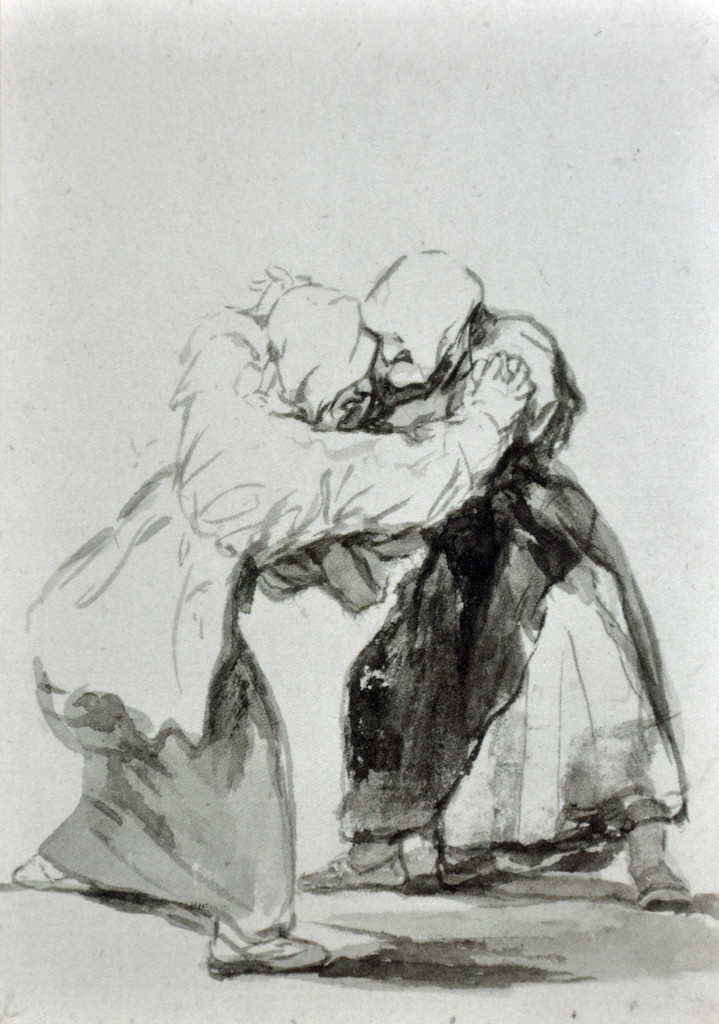
How do we reconcile the two reports?
Well, Civitas have included rape and robbery within their assessment, in addition to homicide and assualt included in the OCED initiative.
So maybe the explanation is simply that the world classifies crime based on gender, seperating gendered crime (eg rape is essentially gendered assault) out from general crime. If we exclude gendered crime from the measure of safety, it isn’t so surprising that richer countries are said to be safe.
Another way to characterise this is to say that the OECD report focuses on public safety risk, safety from strangers, where as Civitas includes safety risk within the home, within the family and with people we know. Certainly the Civitas measure of safety is broader.
Of all crimes reported, homicide is clearly the most extreme or dangerous and perhaps is less suggestive of more typical or day-to-day safety concerns. It is also the most reliable crime statistic across locations, the most reliable measure of a country’s overall safety because murder is almost always reported to the police. Bodies are always reported. However, some countires make murder considerably harder to accomplish. The UK has very stringent gun controls and consequently very low homicide rates.
Across the OECD, homicide rates for men are usually higher than those affecting women, with 6.9 per 100,000 for men and 1.3 per 100,000 for women. Though as noted, homicide is relatively rare in the UK resulting in a high safety measure in the OECD report. And this is consistent with my experiences – I don’t think I’m going to be killed going about my daily life in London. Does that mean I’m safe?
Even with homicide, there are interesting national variations according to Wiki (Sex differences in crime – Wikipedia, the free encyclopedia) such that in countries such as Japan, New Zealand, Iceland etc women are more likely to be the victims of homicide than men. Again, perhaps this says more about the prevalence of certain “types” of homicide. Across the world victims of domestic or sexual-based homicide are almost always women whilst gang or drugs-related homicide victims are almost always men. Maybe NZ simply has a greater number of domestic homicides than gang-related homicides.
The perpetrators of all types of homicide are mostly men (>90% US murderers are men) across all countries.
Safety from homicide largely equates to being safe from men and male violence for both men and women.
Assault rates are slightly higher for men across OECD countries, with 4.3% of men reporting assault or mugging, compared with 3.6% for women. One typical caveat is that definitions of assualt vary slightly across national borders but typically exclude corporal punishment of children and domestic or sexual violence. So the OECD report on safety specifically excludes the vast majority of gendered crime from it’s safety measure.
Again, for both assault and homicide, the perpetrators are almost always male. Most robberies are carried out by men. Most rapists are men. Where domestic and sexual violence is included within a measure of safety, the gender bias of victims changes as with the Civitas report.
This is not to say that women cannot be physically violent, that women cannot be criminals but rather that violent crime is dominated by male perpetrators. And the consequences of male violence upon smaller, physically more vulnerable women and children will obviously be worse. Arguably male violence is more “effective” resulting in greater physical harm as well as more commonplace. Perhaps that also makes it more likely to be reported to the police, if only by the staff at A&E.
Whatever the reported risk of harm, women almost always feel more vulnerable than men wherever they live. It doesn’t matter whether or not women are more or less likely to end up dead or killed by a stranger. Women feel less safe. A Gallup report looks more closely at the fear of crime by asking how safe people across a number of countries feel walking home at night (Women Feel Less Safe Than Men in Many … – Gallup)
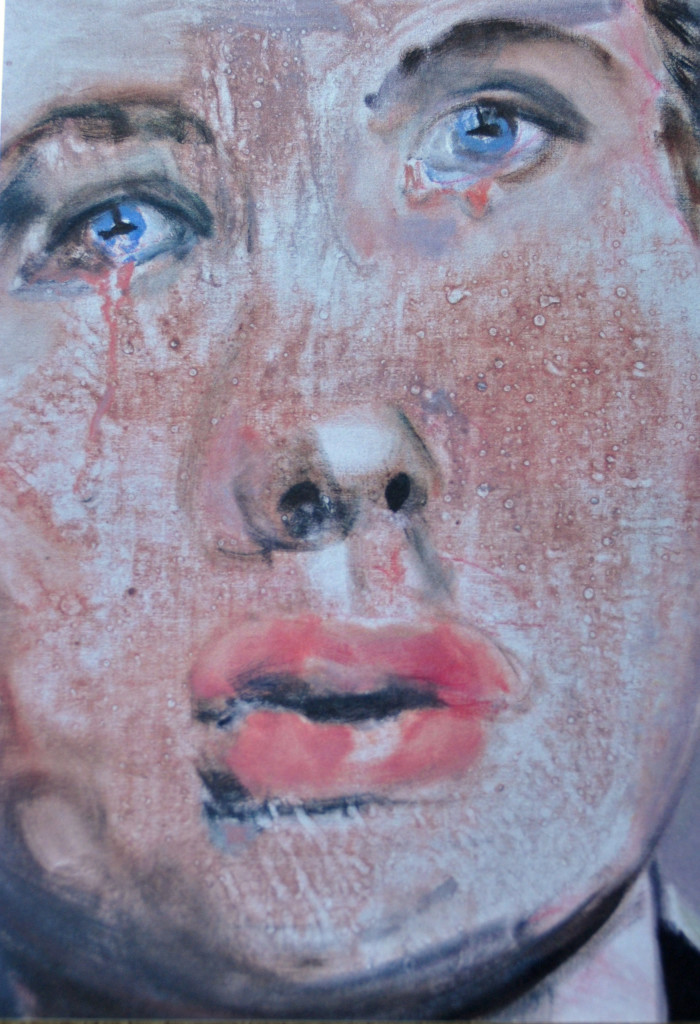
It notes that whilst crime rates typically drop as countries develop socially and economically, the Gallup data from surveys in 143 countries, 2011, suggest men and women often feel very different about their personal safety. In many high-income countries — including New Zealand, Malta, Italy, France, Australia, and the U.S. — men are considerably more likely than women to say they feel safe walking alone at night.
It identified a problem, but doesn’t ask why? Why might women feel more vulnerable than men walking home at night?
Based on the homicide figures, women are much less likely to be killed. But what does that mean? Does it simply mean that women are less likely to get involved in violent fights with strangers, less likely to be involved in gang fights and drug related violence, less likely to be the architects of crime. Do the homicide figures simply reflect the obvious truth that women avoid being out alone at night where they are likely to meet strangers who might harm them?
Men are much more likely to be out at night. Men take more risks with their personal safety than women.
The Everdaysexism twitter feed provides clear evidence of the harassment women receive on the streets even during daytime, the low level catcalls that every so often escalate to violence. We fool ourselves if we believe that women in the developed world are not subject to curfews, to limits on where and when they can move around freely.
Sometimes those limits are forced upon women, in streets with pubs where the men get leery at chucking out time, betting shops, greasy spoon caffs where walking past inevitably involves some verbal abuse and maybe some groping. Sometimes women enforce their own curfews after years of being told they need to be careful, need to make sure they get home on time, use only expensive licensed cabs etc.
Yet we all want to be safe from harm. We want to be safe everywhere and every when, walking home at night as well as waking up in the morning.
We all want to be safe from male violence, men and women alike.
Is it really good enough to simply exclude women from the public sphere and tell them that this is to keep them safe? How can we accept such limitations, whether the exclusion is overt or covert, whether it is something enforced by men or indeed by women themselves. It’s rational and sensible to try to avoid dangerous situations and places, but surely we need to address why those places and situations are dangerous in the first place. We need to make these places safe for women and for men.
Wild animals caged in a zoo are safe. They often live longer in captivity than their wild counterparts. Their only real safety risk is that of an abusive or negligent keeper.
Women cannot be caged to keep them safe. This “safety” is too often illusory, dependant on the goodwill of the men in their lives.
18th March: Rape
Within the study, most men who rape non-partner women and men are likely to be multiple rapists or repeat offenders. It stresses the need to intervene early, in childhood and adolescence, to prevent rape later in life
 The accuracy of self-reporting can be difficult to determine. However the work was carried out in parallel to identical research with women in these communities. Reporting from the men was consistent with the women’s reports except for Cambodia where the men reported a higher incidence of rape.
The accuracy of self-reporting can be difficult to determine. However the work was carried out in parallel to identical research with women in these communities. Reporting from the men was consistent with the women’s reports except for Cambodia where the men reported a higher incidence of rape.The answer varied from 4% in Bangladesh to a staggering 41% in Papua New Guinea. Shockingly, more than one in seven rapists committed their first rape when they were younger than 15. More than half did so before the age of 20. Only 55% reported feeling guilty, and less than one-quarter were sent to prison suggesting that they were conforming to rather than confounding societal norms, that their behaviour was not particularly unusual, unreasonable or unacceptable in their societies.
19th March: Suffer Little Children
Some topics are very distressing and not easy to read, to understand or even to think about. I was pointed in the direction of work by a NZealander, David Fergusson, PhD, as part of a broader discussion on violence. It led me to a series of articles in the Lancet discussing child abuse (… consequences of child maltreatment in high–income … – Gilbert )
The report compares a number of studies involving self-reporting from victims and parents as well as official statistics from official agencies investigating witnesses or police. It suggests serious under-reporting of child abuse across both low and high income countries.

Somethings need to be said upfront: most children are not abused. Most parents are good-enough parents, care for their kids and are doing their best with whatever resources their lives have provided to make their children’s lives better.
However a significant minority of children are abused only some of whom will come to the attention of social services etc. Most abused children seem to fall between the cracks and disappear until their problems resurface in later life.
Most of us place responsibility for safeguarding children on all caregivers, including teachers, trainers, or child minders. When child abuse is identified post-event, there is often a rush to blame the “authorities”. In practice, however, 80% or more of maltreatment is perpetrated by parents or parental guardians, apart from sexual abuse, which is mostly perpetrated by acquaintances or other relatives.
To be honest, since the primary childcare provider in most societies is almost always the mother, it is in some ways remarkable that men ever get the time or opportunity to abuse their children.
Rather sadly they manage.

Four types of child maltreatment are widely recognised:
- sexual abuse – Any completed or attempted sexual act, sexual contact, or non-contact sexual interaction with a child by a caregiver.
During childhood, between 5% and 10% of girls and up to 5% of boys are exposed to penetrative sexual abuse, and up to three times this number are exposed to any type of sexual abuse.
Most perpetrators are men; 55% perpetrators are direct or indirect family members and most victims are girls. This is a clearly gendered crime, the stranger-danger that we all worry about.
- physical abuse -Intentional use of physical force or implements
against a child that results in, or has the potential to result in, physical injury or death
- neglect – Failure to meet a child’s basic physical, emotional, medical/dental, or educational needs; failure to provide adequate nutrition, hygiene, or shelter; or failure to ensure a child’s safety; and,
- psychological/emotional abuse – Intentional behaviour that conveys to a child that he/she is worthless, flawed, unloved, unwanted, endangered, or valued only in meeting another’s needs. In the UK, the definition includes harmful parent–child interactions which are unintentional: “the persistent emotional ill-treatment of a child such as to cause severe and persistent adverse effects on the child’s emotional development”
The report estimates that one in ten children are neglected or psychologically abused. Neglect is at least as damaging to the individual child as physical or sexual abuse in the long term but has received the least scientific and public attention. Very few studies have examined the prevalence of neglect despite the fact that it is the most common form of child maltreatment recorded by child-protection agencies.
There have also been next to no studies of psychological or emotional abuse completed though results from large population-based, self-report studies in the UK and USA showed that 8–9% of women and about 4% of men reported exposure to severe psychological abuse during childhood.
Neglect and psychological/emotional maltreatment is gendered in line with the gendered care-giver role ie. abusers are mostly mothers.

Obviously women are more likely to be held responsible for caring for children inside and outside of the home and family and therefore more likely to be held accountable for child neglect. They are more likely to be reponsible for children in single-parent families which obviously suffer from greater stress levels which can exacerbate maltreatment.
Increasingly, witnessing intimate-partner violence is also regarded as a fifth form of child maltreatment.
Intimate partner violence -Any incident of threatening behaviour, violence, or abuse (psychological, physical, sexual, financial, or emotional) between adults who are, or have been, intimate partners or family members, irrespective of sex or sexuality
The reported prevalence of witnessing intimate-partner violence during childhood ranges from 8-10% (Sweden) through to 24%in US studies .
Most frequently the perpetrator is the man in heterosexual couples, but there is growing recognition of violence inflicted by women. Children who witness intimate-partner violence can be harmed psychologically by witnessing the experience or by being caught up in the violence. The risk of other forms of child maltreatment for witnesses of intimate-partner violence is 30–60%.
Children who are exposed to one type of maltreatment are often exposed to other types on several occasions or continuously. How frequently this abuse occurs is underestimated by official reports in part because recording more than one type of maltreatment is often actively discouraged. Official reports often do not capture the chronology of exposure over time. Retrospective self-report studies consistently show that some children are exposed to more than one type of maltreatment.

Throughout childhood, maltreatment by parents or other caregivers is seen to merge with other forms of victimisation. . Evidence from several studies suggests that children who are exposed to one type of maltreatment are at high risk of other types and of repeated exposure over time, and that the frequency of exposure is correlated with the severity of maltreatment.
Remember, most kids are not abused. Most parents are not abusers. Most people make good-enough parents but…
for a few children, maltreatment or abuse is a chronic condition, not an event. For some children, abuse is a lifelong experience they will always struggle to overcome.
Budget
The newspapers are full of who wins and who loses in the latest UK budget and will it make any difference to the way we all vote in the next election?
Strangest of all are the personal stories spread through the articles in the various newspapers. No one seems very impressed or pleased.
In the Guardian one couple bemoans the lack of anything for the “middle of the pool”. Together they earn £63,000, considerably more than the £44,200 UK median income for a couple with two children. (UK incomes: how does your salary compare? – The Guardian)
A government must know it’s in trouble when even the well-to-do are complaining, even the right-wing are feeling cynical. For every well-to-do pensioner who praised the increased flexibility of savings and annuities added a caveat, a complaint as to the rather apalling rates of interest currently available to them and the shocking impact of rising houseprices on their children.
 In the Telegraph, a fairly rightwing Tory supporting newspapers the headline reads:
In the Telegraph, a fairly rightwing Tory supporting newspapers the headline reads:
Budget 2015: George Osborne boasts of low taxes while raising them via the back door
The article talks mainly about the sleight of hand applied to corporation tax but much the same could be said about personal taxation. There just isn’t that much money around. Anything given to one group has to be taken from another.
The biggest wheeze is just to not call something a tax.
When the British think of the tax they pay, they almost always think of income tax, occasionally they think about the sales tax (Value Added Tax or VAT) and very rarely they remember the 12% tax deducted from their earnings known as “national insurance or NI”.
Most workers have NI contributions deducted from their pay in addition to income tax. The deductions start at 16 and continue to state retirement age, a hangover from the NI introduction as an additional tax to help fund social security. The money raised has never been ring-fenced by any government though many people continue to believe otherwise for no good reason.
 The headline increases to the personal allowances for income tax might add pounds to the pockets of millions of people, in particular the better off who have been helped by raising the threshold for the higher 40% tax rate. It will do nothing for very low earners and part-time workers. They would have been better helped by a more significant increase to the threshold for NI which is charged from £7,956 rising to £8,060 (2015-2016)
The headline increases to the personal allowances for income tax might add pounds to the pockets of millions of people, in particular the better off who have been helped by raising the threshold for the higher 40% tax rate. It will do nothing for very low earners and part-time workers. They would have been better helped by a more significant increase to the threshold for NI which is charged from £7,956 rising to £8,060 (2015-2016)
The starting point for NI rises but this is more than offset by an increase in the upper limit from £41,865 to £42,380 paid by the people who benefit from the 40% income tax threshold change.
When it comes to business, the favourite trick is to call it a levy rather than a tax. The bank levy, originally introduced as a one-off charge, has now been raised for the third year in a row and is likely to generate £900m. Reductions in tax relief for fines is likely to raise an additional £5.3billion from banking over the next 5 years which makes the £1.3billion handout to the oil industry seem positively mean.

So the main tricks in the election are as follows:
- The pensions lifetime allowance will be cut from £1.25m to £1m. With current annuity rates at an all time low, this means the average private pension pot will effectively be capped at £40,000 gross (ie. below the UK median household income). Ofcourse most people with large pension pots already will have filed for pension protection at the higher (£1.8/£1.5/£1.25m) limits so this is one that will hit hardest well-to-do middle-aged people currently saving but not yet ready to retire. Osborne estimated less than 4% of the populations would be impacted.
- Savers won’t have to pay any tax on interest on the first £1,000, or £500 for higher-rate taxpayers. Since most people who can afford to save already make use of tax-free savings accounts called ISAs, this seems to be of little real value. Ofcourse a lot of people can’t afford to set aside savings. The average UK household has savings of around £14,000 (Millions of UK Households Have Only £250 in Savings) which with a 3% interest rate would generate interest of just £420.
- There will be a new “Help to Buy ISA” such that every £200 saved leads to a Government top up of £50 upto a limit of £3000 tax benefit. This might be useful if the average savings of £14,000 could be boosted by the tax benefit to help buy a house. With average UK house prices at around £180,000 (per the Land registry) this still wouldn’t be enough for a 10% deposit. To be honest, I can see this turning into another handout to rich parents looking to help fund their kids first flat. It is estimated to cost the government around £2bn which perhaps would be more effectively spent building low cost housing ie increasing supply rather than demand.
- Other ISAs will be made more flexible, to allow savers to keep tax benefits when they take money out and put them in up to the annual limit. And whilst any kind of flexiability is good what savers really need is better rates of interest. Interest rates have been kept incredibly low during the recent recession to avoid house foreclosures etc. As a result, savers have been effectively paying through the nose for debtors to allow them to continue to repay their debts, to buy time for the economy to recover.

Giving with one hand and taking away with the other is an old tax trick. Many of the tax benefits announced won’t arrive (if ever) until the next government arrives. Claiming to balance the books is another one though here the main trick seems to be one of timing, when and where to cut.
Because for the Conservative Party the priority is to pay down the deficit, to “balance the books” as quickly as possible
One of the scariest things about the drive to paydown the deficit as quickly as possible is the required cuts to public services required to fund the paydown. Even after relaxing it’s target to breaking even rather than generating a surplusof £23bn in 2018-19, the cuts would be immense.
According to the Institute for Fiscal Studies (IFS) an independent thinktank, the announced budget will require an extra cut of £20bn to welfare, tax credits (for the low paid, often women working part-time) and public sector pensions when compared with last year’s budget. Since pensions comprise 50% of the welfare budget which are said to be “protected” from cuts, it’s difficult to imagine how the government can accomplish it’s plan.
So despite the sleight of hand, not very much has changed. The decision remains whether to prioritise repayment of government debt over the well-being of the welfare state.
The enormous scale of cuts still to come is shown in the graph below from the official spending watchdog, the OBR. It predicts a rollercoaster ride ahead. It predicts a sharp increase in spending cuts between 2016-18, on a significantly greater scale than seen so far. It’s going to get much worse and then, say the Conservatives, it will get better.
Which political party do we distrust the least?
20th March: Inheritance
I will never understand the British preoccupation with property and inheritance tax.
This week’s budget played the usual game of persuading us that the government was going to give us something for nothing. Before the budget, a leak was widely reported suggesting the inheritance tax threshold would be raised to £1m. It was sold as a vote-winning policy. Presumably not with the dead. Presumably not with the view to encouraging us all to encourage our parents along the way.
It is all so tiresome. I do not care what happens to my residual estate when I am dead because I will be dead and have other things to worry about (or not, depending on your religious views).
Apparently very few people actually write a will, in the mistaken belief that it will all just flow magically to their family. The rules of who inherits if you die intestate are very clear.
Intestacy – who inherits if someone dies without a will …
Assuming a wife/husband and children living in England:
The husband, wife or civil partner keeps all the assets (including property), up to £250,000, and all the personal possessions, whatever their value.
The remainder of the estate will be shared as follows:
- the husband, wife or civil partner gets an absolute interest in half of the remainder
- the other half is then divided equally between the surviving children
If a son or daughter (or other child where the deceased had a parental role) has already died, their children will inherit in their place.
So all should work out providing you get on with all of your children and/or grandchildren and they don’t decide to sell the house and move you out. Ever.
Write a will.
Having written a will, talk to everyone involved so they know what to expect. Most people don’t like to talk about death, dying, money or God but you need to talk to your partner and children about all of these things like a grown-up because otherwise the fall-out could entirely destroy your family once you are gone. Ask whether your rich son would mind being excluded financially because you think he doesn’t need the money whlst his brother clearly does. Take the chance to talk about how much you love both of them but…
See how that flies.
In the one case I know of a similar discussion the (millionaire) older son was horrified that his dad could even think of “cutting him out” in favour of his feckless brother. For him, splitting the money equally was a way his parents reassured him that they loved him equally. Since he’s actually not a tight bastard, it seems likely that he’ll choose to forego his share when it arrives. That is certainly his current plan but leaving him the money allows him the option of grace.
Perhaps being embroiled in a long legal family dispute about who gets what and whether our parents really loved us best as determined by the money they haven’t left behind for us, is the classic definition of hell. Perhaps it’s the best grounds yet thought of for being sent to hell in the first place. Maybe it’s all a test.
Because the greatest irony is that most British people will never pay inheritance tax. Most people don’t have assets worth more than £325,000 held individually. Most couples don’t have assets worth £650,000 even taking into account the rise in house prices, certainly not the £1m suggested in the precursor to the budget.
According to the Land Registry, the average UK house price was £179,492, on 27thFeb2015. Even in London you would need other assets to breach the limit (average London house price £458,283).
Inheritance tax is a tax on the very, very wealthy. It redistributes from the rich to the poor, by way of the government. For homeowners rising house prices are an unearned source of wealth. Living in a house in London and surviving for few years rather than dying young does not seem to be very good grounds for becoming rich. It’s not like we’re adding value to society by sitting in our houses watching the world go by. We’re not making anything useful with our bricks and mortar.
My children have been privileged all of their lives. They have never been cold or hungry, never lacked for anything material (aside from a playstation – can’t abide them, weird personal prejudice but true). They have had an excellent education, with lots of resources thrown at them above and beyond the national curriculum. They will most probably end up at great universities with good degrees. If they bomb out it will be because that’s who they are and what they want to do, not through any lack of opportunity.
My kids don’t need to inherit yet more advantage when I die. They don’t need even more resources to help privilege their own children and make our little northlondon dynasty ever more wealthy. We’ve made it clear that we intend to spend up and leave them nothing once we’re gone.
Some of my friends are horrified at the idea. One in particular has suggested that this makes me a very bad parent indeed, feckless and irresponsible. The irony being that he has a total aversion for giving his kids any financial independence whilst he’s alive and I find that equally horrifying. He hasn’t saved or set aside any money in their names at all. He wants them to come and ask him for money, each and every time. The idea of using money to control your kids horrifies me though I’m certain that he’d use the word “influence”. It’s all a matter of perspective.
But if we gather more and more wealth into the hands of the few through inheritance, there is less and less available for everyone else, less and less opportunity.
“Clogs to clogs in three generations” my grandmother would say, in the belief that whilst one generation might make the money, the second might spend it and the third would surely lose it. Clearly I live in a country where inherited wealth is not lost so easily, but there is something of the spirit of entrepreneurship, the willingness to take risks and build something new that does get lost in the simple preoccupation with maintaining the tsatus quo.
And I fundamentally believe that wealth needs to be redistributed. I really believe that everyone should have a chance to live the best best life possible. I really dont want to buy my grandchildren extra happiness, extra opportunity, at the expense of someone else’s children, just because I’m dead and happened to buy a house in London and live a long time.
23rd March: Shoreditch
When I grow rich,
Say the bells of Shoreditch.
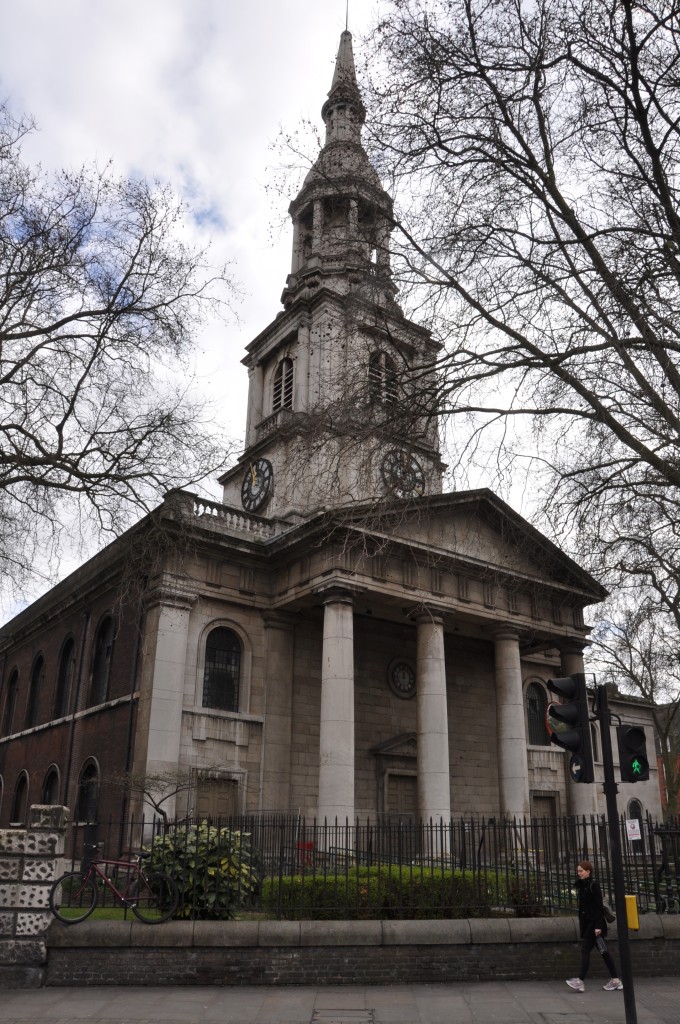
There has been a church here for a long time, originally built in Anglo-Saxon times, rebuilt for the Normans collapsed in the 18th century and rebuilt to the current plan. The Victorians trashed the church, removing the galleries and causing considerable structural damage. It was closed for a couple of years in the 1990s and rebuilt to its current state.

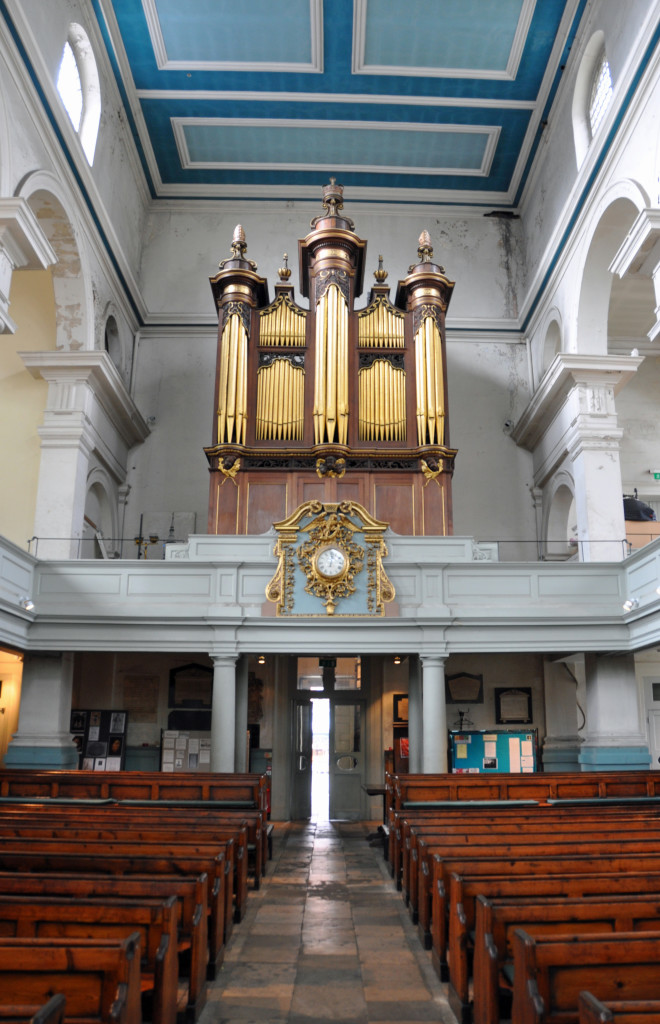
St Leonard’s is the parish church, found on the high street and still waiting to make it rich. The congregation is small, but rather keen as witnesed by the restoration work on the roof, and on the frontage.
Of all the churches in the nursery rhyme, St Leonard’s is in the least well presented – flaky paintwork to be found in every corner – but it was also the one that felt best. Some buildings just feel right and this church is one of them.
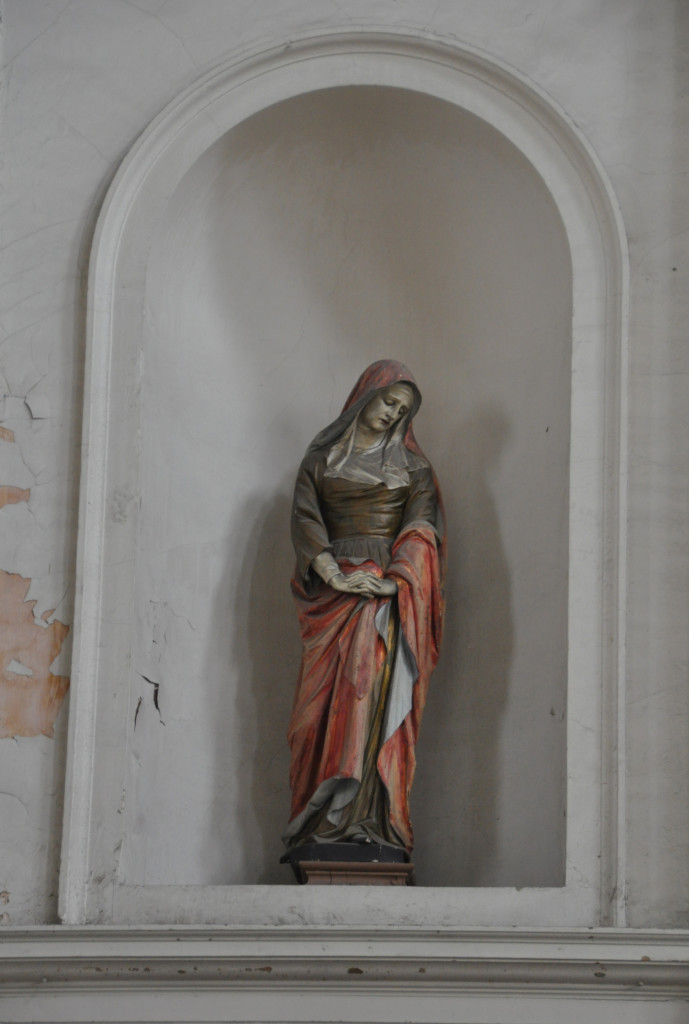
The church ran out of money to pay for the paint, in large part because it has prioritised the funds for the local community it serves. The church suppots an 18bed house for a community of semi-derelict people living on the local streets. It supports four addict groups that meet regularly in the church, helping nearly 500people a month. More than 200 people worship in the church weekly
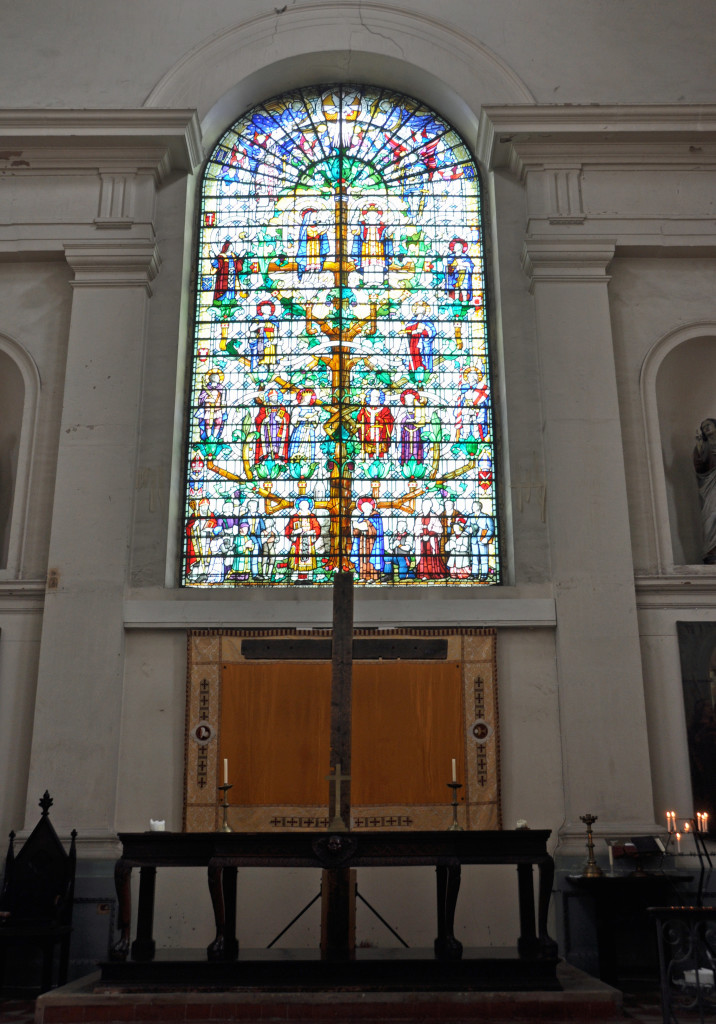

Shoreditch is a funny part of London, one where the rich and the poor are all pushed up against each other.
Just outside the City of London, it’s been colonised by urban hipsters in their 20-30s pushed out by house prices into a fairly grimy urban area. The current community is incredibly diverse, with a large Bengali community living in the estates to the east, mixing with the newly rich from the City and from world of art and fashion.
It makes for a strange mix of fashonistas hunting down their flowers at Colombia Street market and playing with their kids down at the swings with families from social housing perhaps wondering just when they’ll be able to cash in on their council flat and move out to somewhere a bit bigger, a bit greener.
As well as the church, the townhall has a rather fine facade, almost entirely outdone by the very entertaining graffitti.
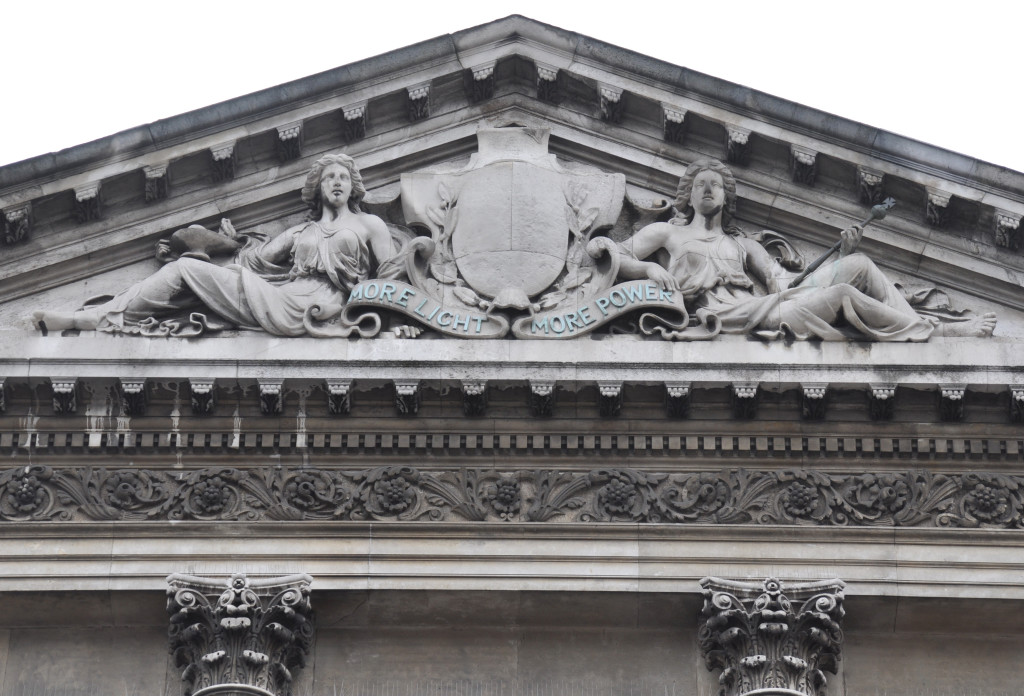
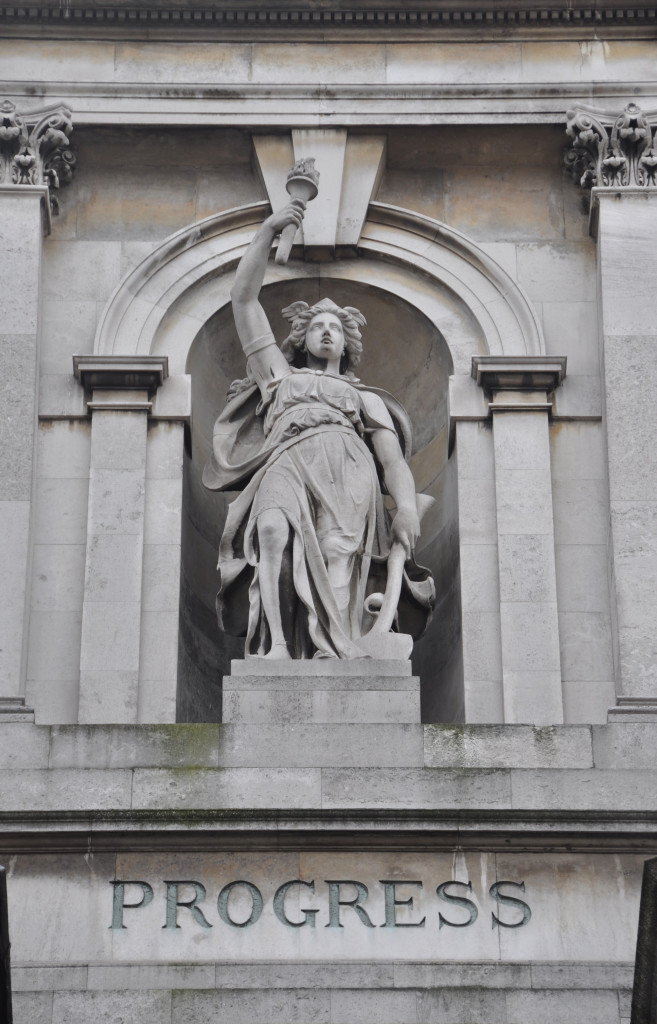
The area is so bang on trend that even the advertising has been given a graffitti style edge.
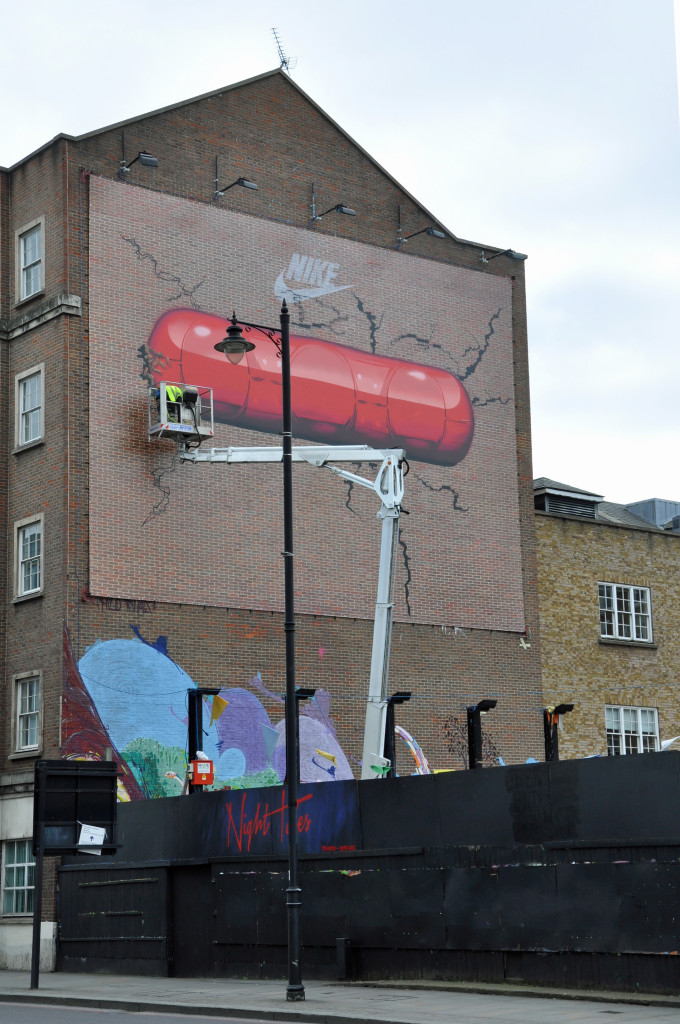

Whoever the artists might be, they seem to take themselves very seriously.

And in the background to all of the street scenes, the towering City with it’s banks and businesses.
After a stroll around and a chat with the warden, we made our way over to the flower market rather late in the day. The flowers were still there but so too were the crowds.

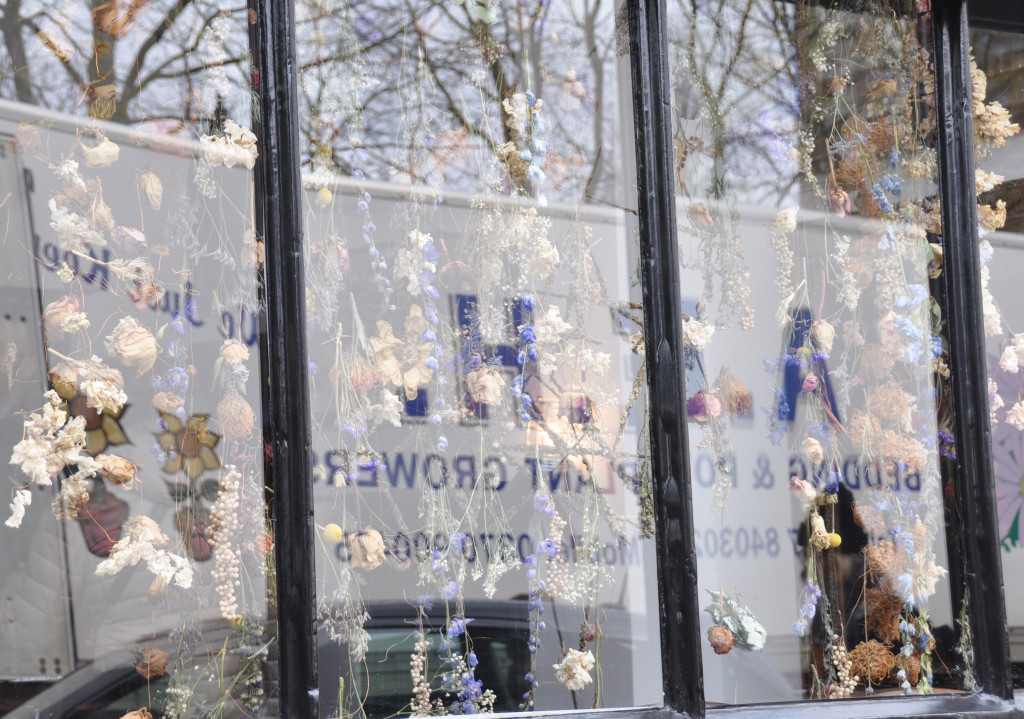
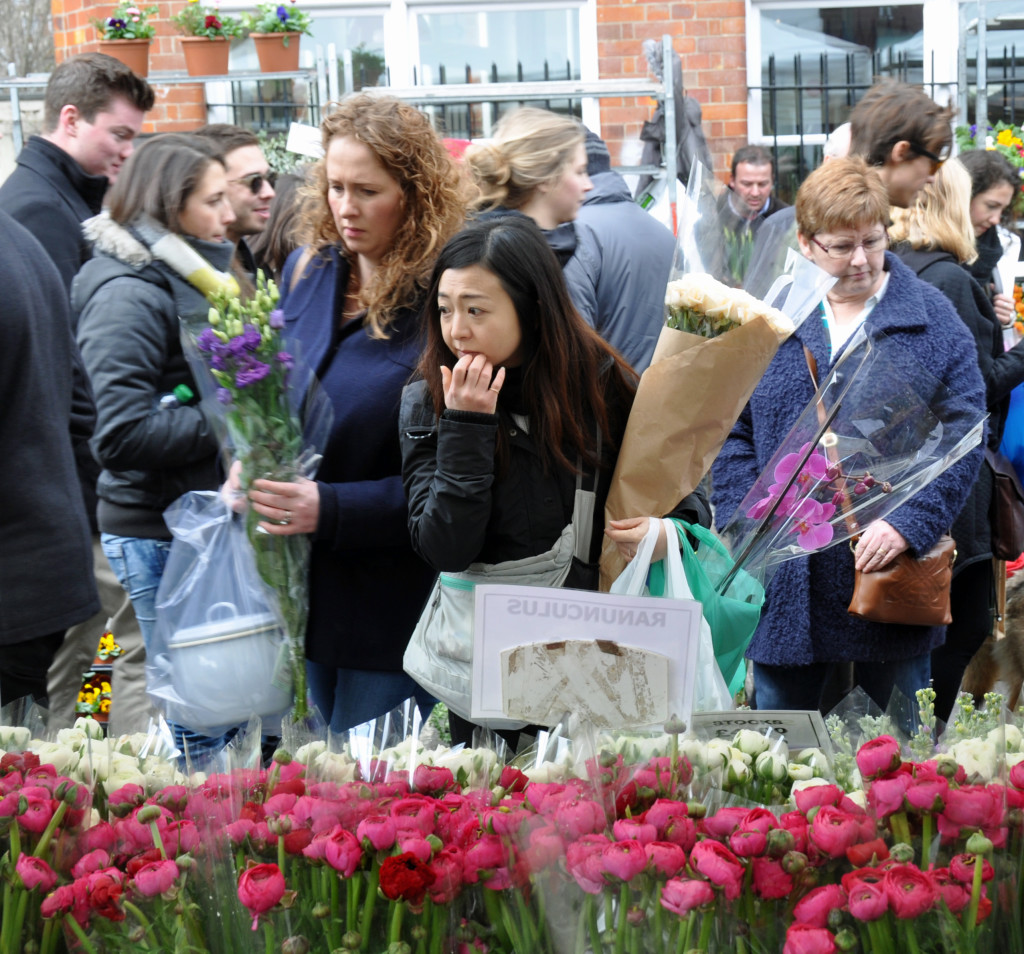
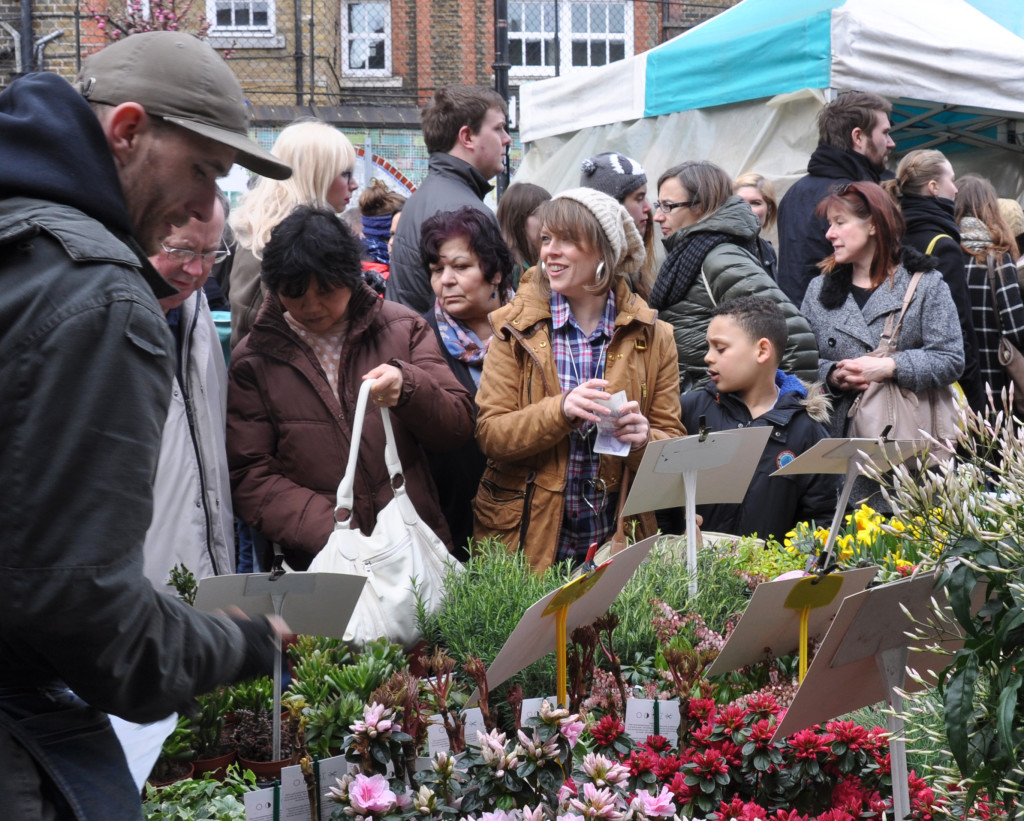
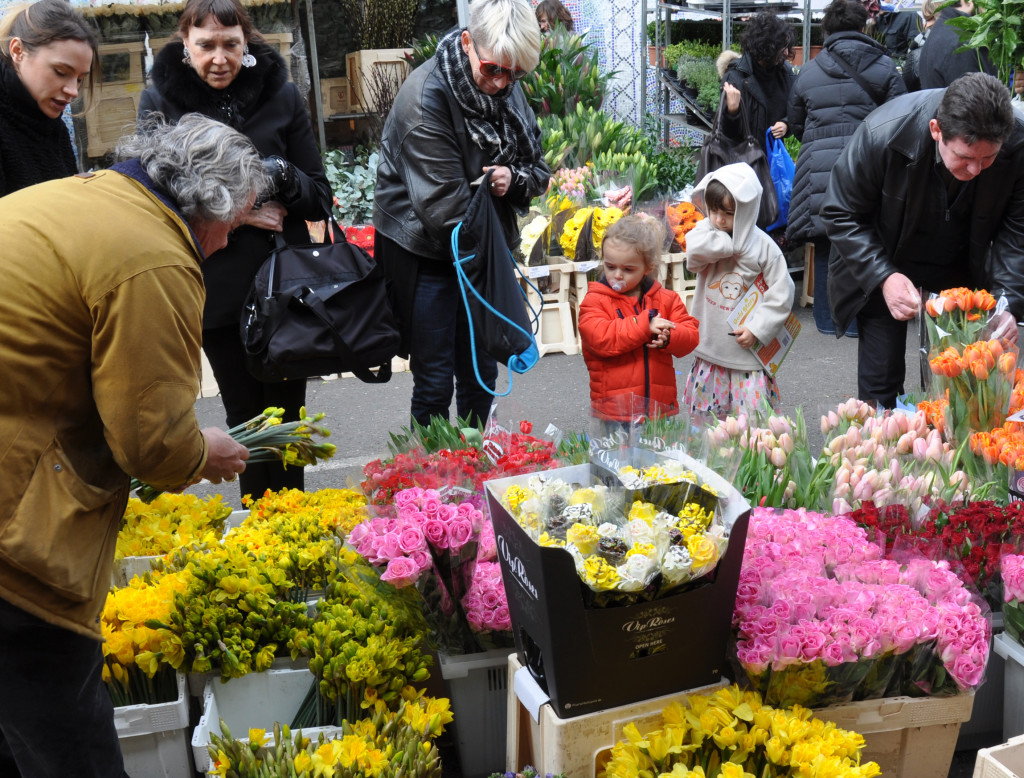


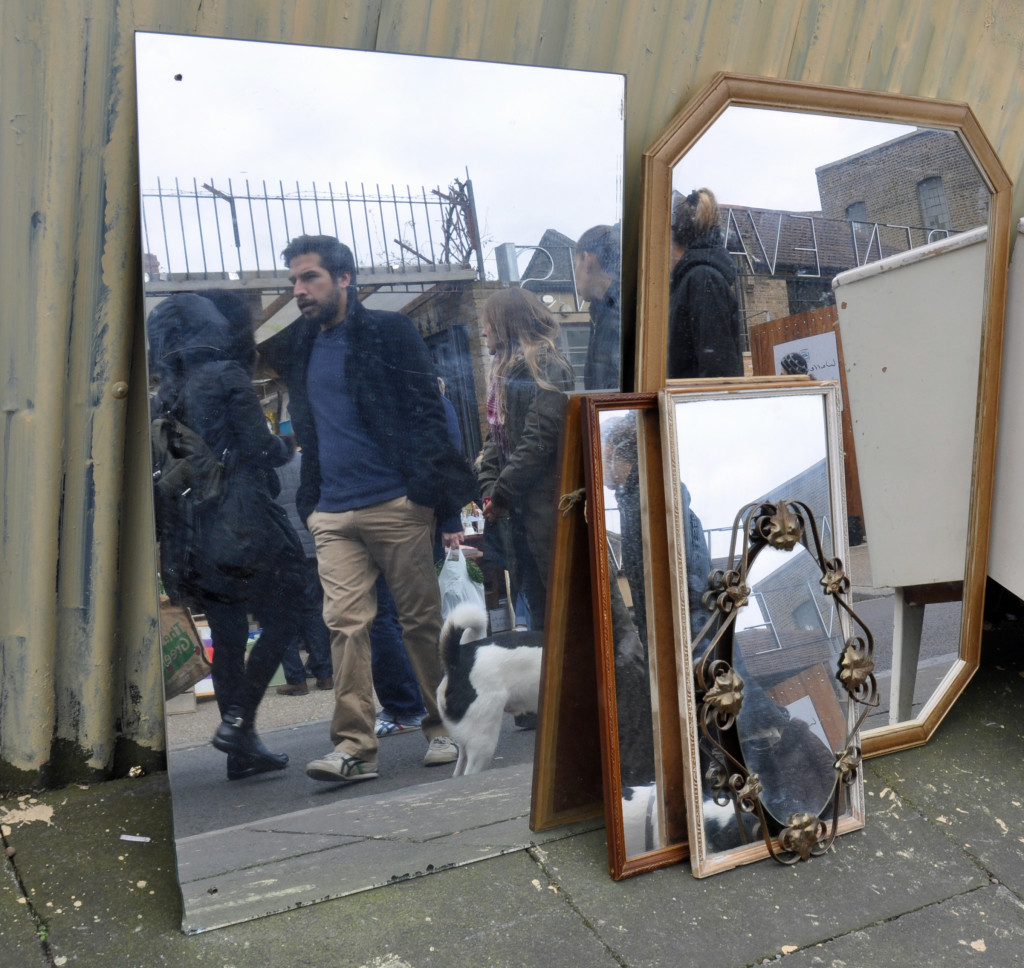

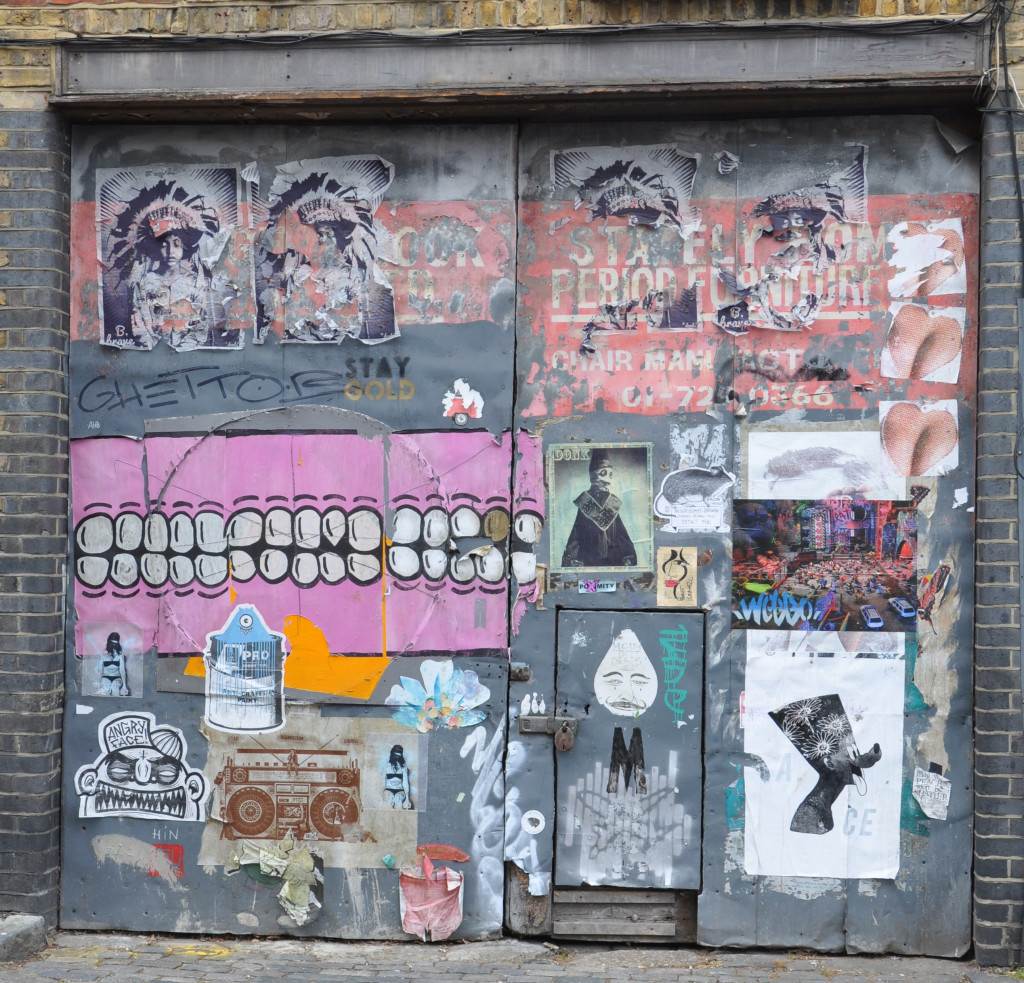



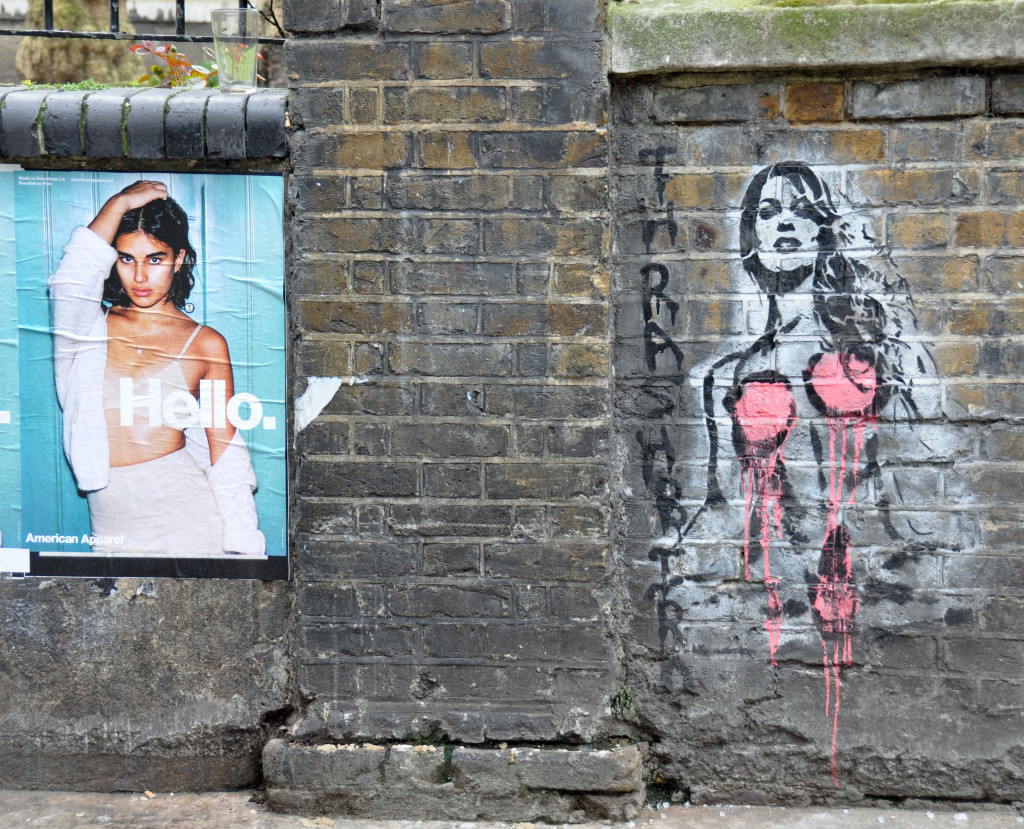

Fun for people watching but too busy to stop for lunch – we moved on towards Brick Lane.
24th March: Parity
Gender parity all around the world?
The World Economic Forum are measuring where and when things change. Japan remains depressingly low in the rankings, largely because of the lack of political empowerment, also the reason the UK has fallen in the rankings in 2014.
Political empowerment is measured very simply by looking at the number of women politicians, the number of women politicians with ministerial roles and the number of years out of the last 50 where there has been a female head of state.
Where politics has a more dynastic feel the latter measure can throw up some strange “successes” where the “wife of” or “sister of” can inherit the role of their political male relatives. However imperfect, it is difficult to imagine a better measurement.
And across countries rich and poor, it is political representation and empowerment that seems slowest to move forwards.
Health and education seem to move first, though the gender balance at birth throws up some worrying trends in some countries presumably due to sex selection abortions.
Economic participation is also slow to move but progress is being made, notably in Saudi Arabia.
I’m reminded of an interview with Germaine Greer who stressed that liberation had always been her goal rather than equality, liberation for all from a societal model that works for so few of us whether men or women. Perhaps it’s a very first world aspiration, but wouldn’t it be wonderful to live in a society where everyone regardless of gender, colour, creed or wealth had the same chance to live their lives freely according to their skills and desires.
Abused & Abusers
Whilst society places responsibility for safeguarding children from maltreatment on all caregivers, including teachers, trainers, or child minders, in practice 80% or more of maltreatment is perpetrated by parents or parental guardians. The only exception is sexual abuse, which is mostly perpetrated by male acquaintances or other male relatives.
Caregivers outside of the family may mitigate, exacerbate or identify and help resolve child maltreatment. They are not usually the cause or perpetrator of non-sexual child abuse.
Abusers are not gender defined outside of sexual abuse which is overwhelmingly a crime perpetrated by men.
As a society we have moved away from the somewhat Freudian interpretation of family dynamics that seemed to blame the victim. Child victims of abuse are never to blame. Yet we seem to still be so very poor at identifying and then helping children at risk.
Understanding the characteristics of parent–child relationships that put children at risk is complicated and varies depending upon the type of abuse.
In high income countries, girls have a higher risk of being sexually abused than boys, but rates of other types of maltreatment are similar for both sexes in high-income countries.
In low-income countries, girls are at significantly higher risk for infanticide, sexual abuse, and neglect, whereas boys seem to be at greater risk of harsh physical punishment.
Disabled children, girls and boys are at increased risk of maltreatment in both high and low income countries, although whether their disability is a cause or consequence is uncertain. The overall prevalence of any recorded disability in the Lancet Report was 8%, but a quarter of all maltreated children had a disability.
The extra stress looking after a disabled child could contribute to an abusive situation or maybe the abuse was such that the child was harmed and became disabled.

Less is known about patterns of maltreatment for more than one child in a family. If one child is identified as at risk, does it inevitably mean that other children in that family are also at risk? There are some suggestions that it depends on the type of abuse.
An analysis of child-protection referrals in the UK showed that physical and sexual abuse was restricted to one specific child within a family, in 44% of 310 index cases. So if one child is abused in a family, their siblings may or may not be subject to the same physical or sexual abuse though clearly the experience of growing up in a family where one child is damaged is likely to have long-term repercussions to other family members.
Referrals of multiple siblings (56% of cases) were typically linked to neglect or psychological abuse within a family.
Parental difficulties and family stressors—such as family conflict and separation, drug or alcohol misuse, or family criminality—were typically associated with maltreatment of all the children in the family (37%)

Most abuse is carried out by parents, or people taking a parental role. Whilst parental risk factors can obviously be modified by the environment and community in which a child lives, nevertheless, some relationships can be generalised:
- Low income and low parental education are risk factors for child maltreatment, although their importance varies with the type of maltreatment.
- Socioeconomic inequalities, poverty etc are especially steep for deaths from child abuse.
- Ethnic differences in the overall risk of maltreatment are largely explained by sociodemographic characteristics, apart from for children of mixed or multiracial heritage who have an increased risk. It isn’t clear why. It may be that children of mixed or multi-racial heritage are more likely to belong to broken families with the resulting socioeconomic problems such as poverty.
- Although a clear pathway exists by which parental drug and alcohol problems can cause individual child maltreatment, evidence for a causal link within populations is less certain. Substance misuse is undoubtedly a common factor in incidents involving both spouse and child maltreatment. If you’re high as a kite on drugs, you’re not taking good enough care of your child.
- The community environment seems to have a small to moderate effect in addition to family and individual characteristics. One review reported that 10% of the variation in child health and adolescent outcomes, including maltreatment, was explained by neighbourhood socioeconomic status and social climate.
Parents abuse their children, men and women abusing their sons and daughters. It happens more than we’d like to think. Outside agencies can help identify at risk children but having done so, we need to work out how best to help those children. It isn’t enough to identify the problem and walk away. The children grow up. They continue to suffer as a result of their abuse. Both the victims and the society they live within continue to pay the cost of their childhood abuse. And the cost is high.
28th March: Immigration. Again
To summarise, EU migrants to the UK are …
… a mixed group. Old EU nationals tend to concentrate in London and the South East, often work in professional occupations and earn relatively high wages on average. Meanwhile, A8 (or second wave from Poland etc) nationals are more spread around the country and tend to do low paying jobs.
What these two groups have in common is that they are now mostly coming to the UK for work reasons and seem to be actually finding employment in the country. Restricting the access of EU nationals to the welfare system may be a popular policy, but under the current circumstances, it is unclear whether it will have a major impact on the number coming to live in the UK.
EU migrants come to the UK to work. If they can’t find a job, they tend to go back to their home country. New waves of immigrants, especially A8 nationals are most likely to displace other foreign born migrants since they are competing for the same jobs.
Last year, Dustmann and Frattini explored the fiscal impact of migrants in the UK for the period 1995 to 2011. Their results suggest that for the whole period of analysis migrants from European Economic Area (EEA) countries made a positive contribution to UK public finances of about £8.8 billion.
The authors also explored the fiscal impact of “recent immigrants” defined as those who arrived to the UK from 2000 onwards. Estimates suggest that recent EEA immigrants have made a positive fiscal contribution of about £22 billion for the 2001 – 2011 period.
This year, Rowthorn re-evaluated the estimates of Dustmann and Frattini for recent migrants. In particular, he argues for the need of a British worker displacement adjustment given the evidence that migration may displace British workers. After this and other adjustments he finds a negative impact of recent EEA migration of about £0.3 billion.
So during a fierce recession the annual impact can assessed as slightly negative. Clearly the assumptions made by Rowthorn can and will be challenged, not least cherry-picking the timeframe very carefully to reflect a econcomic downturn just before many migrants upsticked and headed home.
And in the light of more positive economic data released a week or so before the budget (just in time to cheer up the Tories) the big unspoken truth is that much of the upturn in productivity, much of the increase in profits and tax returns can be attributed to immigrants coming to the UK, working hard and paying their taxes on time.
No reason to change your mind then.
29th March: Merit
We all think of a meritocracy as a good thing: the best man for the job, the first past the winning post etc.
But the idea of a meritocracy as a means of organising society in the West hasn’t been around that long and maybe, just maybe, we need to think a bit more carefully about what merit means to us before we buy into the system so wholeheartedly.
Who do you want to make decisions on your behalf? Who do you want to have power over your everyday lives, through the government of the day, the judiciary, heads of industry, of finances? Do you want it to be a clever man or a good one? And whilst the two states are not necessarily mutually exclusive, do we live in a system that promotes or even measures the “good” of a person at all as a means to promoting them into positions of power and authority?
If the first thing that is measured is academic ability, followed by insane levels of competitiveness, what kind of leaders does our society gain? Look around. What do you see? Has it served our societies well enough? Is it fit for purpose moving forwards in this brave new world?
The current positive view of meritocracies is in contrast to the original, condemnatory use of the term by Michael Young. He wrote in 1958 defining it as a system where “merit is equated with intelligence-plus-effort, its possessors are identified at an early age and selected for appropriate intensive education, and there is an obsession with quantification, test-scoring, and qualifications.”
It is by definition elitist, identifying a small “special” group within our community and lifting them above the rest to rule. Since the rules are set by the elite, they are unlikely to be questioned or changed by that elite. They become a self-selecting, ruling aristocracy, living within and effectively “colonising” the democracy. It is from this group that the rest of us are allowed to choose our parliamentary candidates.
The elite take the first cut, they select the people for whom we may vote. They select the man to be promoted from the applicants on the basis of their own success criteria, their face fits.
The most common definition of meritocracy defines worth in terms of tested competency and ability, and most likely, as measured by IQ or standardized achievement tests. In government or other administration systems, meritocracy is a system wherein appointments and responsibilities are assigned to individuals based upon their “merits”, usually determined as intelligence, credentials, and education, measured through evaluations or examinations.
Although it’s a relatively new term, the ideas behind meritcoracy can be traced back as far as Confucious. The first meritocracy was implemented in the Han dynasty with the introduction of the first civil service exams. The idea spread from China, through to Britain, and then through to thre rest of the Western world.
Arguably the entire education system acts as a form of meritocratic screening. There are jobs, roles, responsbilities that one cannot have without an academic degree, in some cases from very specific universities. Both leaders of the main political parties in the UK David Cameron and Ed Milliband have degrees in PPE (Politics, Philosophy & Economics) from Oxford University. On it’s own academic success does not guarrantee power and authority, so we cannot say that we live in a purely meritocratic state, but do we want to?
And what happens as more and more of society is funelled into higher education? Does society become more meritocratic or less? Does the type of degree and the type of university become more important? How opaque will the criteria for success become?
My nephew is about to start a degree in English and Journalism at Bath Spa University. He has been poorly advised.
There is little value in taking a degree in journalism. Aside from the fact that it is a declining industry sector and consequently very competitive and more than a little depressing as a field, a standard degree in English would be better recognised over a broader market.
Since his A levels weren’t good enough to get him in to study at a Russell Group University (eg Bath University rather than Bath Spa) he might have been better advised to study a less popular subject than English at a better University. Failing that, maybe he could have taken a more useful applied subject at a less recogniseble University or maybe skipped the process entirely and looked for some type of apprenticeship or articles. The “rules” or advice that can and should be given to students choosing higher education has become more complex, less transparent.
Even if it were all clear as crystal and cross-university, cross-country comparisons could easily be made between academic outcomes, are merit based systems really that meritocratic?
There are some fairly obvious criticisms that can be made of avowedly merit based systems such as that used in Singapore.
The most obvious is what is meant by merit, and who gets to decide.
It is obviously dangerous to assume that intelligence in it’s entirety can be measured objectively through IQ tests or other assessments. IQ tests totally fail to measure creativity or emotional intelligence.
Obviously children can be tested and evaluated without reference to their personal circumstances. Is this right or reasonable? Singapore, has the highest level of home tutoring in the world. Children are trained to pass tests, but only if their parents can afford the tutor.
Even living in a country with a state educational system available to all, the private school system flourishes because it promises better academic results.
In the UK if you can afford to pay more than £15,000 a year from your net salary, your child will gain better facilities, smaller classes and certainly better advice when it comes to subject choice, university course selection and careers advice.
The middle classes around the world are famous for subverting the system to their advantage and the advantage of their children. Worldwide. BF1 lived just outside of NY in the commuter belt. Her children attended the local school supported by sky-high local taxes. It might not have been a private school, but no poor kids could have afforded to live there unless they were live-in staff. Whether through high local taxes or high property prices, good state schools become too expensive for people at the lower end of the socio-economic spectrum.
Do we believe that “merit” can or should be bought and the poorest within society should therefore be effectively excluded from both rights and responsibilities in governing that society? How long do we think that society will last in the face of a growing disaffected underclass? maybe we think that a paternalistic aristocracy will “look after” the lower classes. It’s a view that has had long traction in the UK and seems to be gaining ground in Asia and the rest of the world.
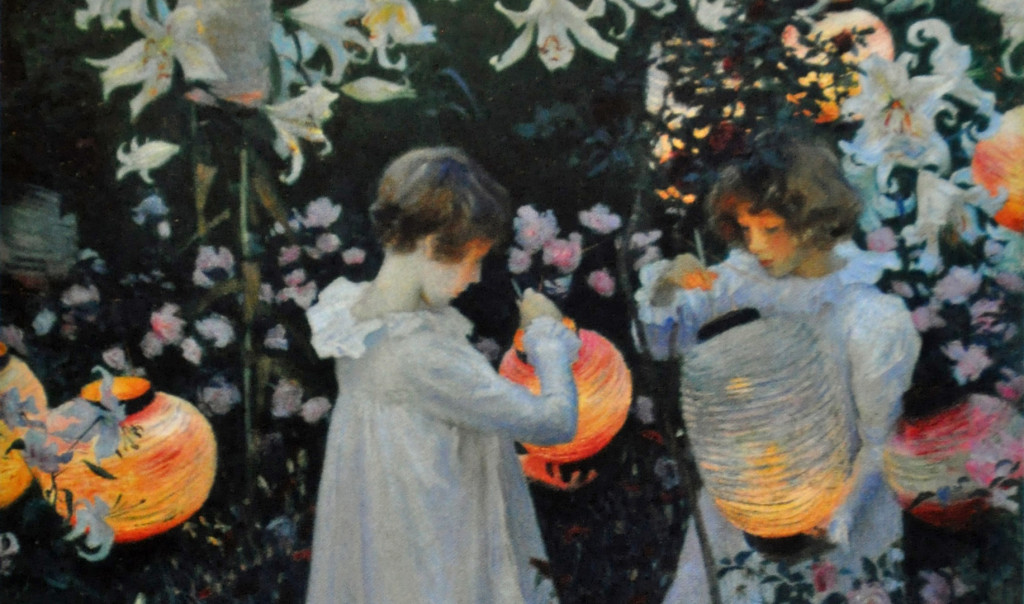 We are fooling ourselces if we think that the educational systems are neutral. We have created a screening process that identifies highly competitive, academically-able stress monkeys and funnels them into leadership roles, in government, in industry, in finance etc.
We are fooling ourselces if we think that the educational systems are neutral. We have created a screening process that identifies highly competitive, academically-able stress monkeys and funnels them into leadership roles, in government, in industry, in finance etc.
There is no place for morality in this system. There is no screening to promote kindness, consideration for others, forgiveness, charity, empathy or sympathy. There is no place for right and wrong, only clever solutions that leave us the winner (or loser) in a risk taking world because withthis system, good and bad are afterthoughts.
In a world claiming to be meritocratic, maybe we need to think a little bit more carefully about what merit means to us and to consider that it might not mean the same thing to other people. Maybe we should think a little bit about the character of the man rather than the sharpness of his commentary.
What kind of man would you want to take us to war, a clever man or a good man? And maybe we should think a little bit more about the inherent gendering of that discussion.

30th March: Merit
We all think of a meritocracy as a good thing: the best man for the job, the first past the winning post etc.
But the idea of a meritocracy as a means of organising society in the West hasn’t been around that long and maybe, just maybe, we need to think a bit more carefully about what merit means to us before we buy into the system so wholeheartedly.
Who do you want to make decisions on your behalf? Who do you want to have power over your everyday lives, through the government of the day, the judiciary, heads of industry, of finances? Do you want it to be a clever man or a good one? And whilst the two states are not necessarily mutually exclusive, do we live in a system that promotes or even measures the “good” of a person at all as a means to promoting them into positions of power and authority?
If the first thing that is measured is academic ability, followed by insane levels of competitiveness, what kind of leaders does our society gain? Look around. What do you see? Has it served our societies well enough? Is it fit for purpose moving forwards in this brave new world?
The current positive view of meritocracies is in contrast to the original, condemnatory use of the term by Michael Young. He wrote in 1958 defining it as a system where “merit is equated with intelligence-plus-effort, its possessors are identified at an early age and selected for appropriate intensive education, and there is an obsession with quantification, test-scoring, and qualifications.”
It is by definition elitist, identifying a small “special” group within our community and lifting them above the rest to rule. Since the rules are set by the elite, they are unlikely to be questioned or changed by that elite. They become a self-selecting, ruling aristocracy, living within and effectively “colonising” the democracy. It is from this group that the rest of us are allowed to choose our parliamentary candidates.
The elite take the first cut, they select the people for whom we may vote. They select the man to be promoted from the applicants on the basis of their own success criteria, their face fits.
The most common definition of meritocracy defines worth in terms of tested competency and ability, and most likely, as measured by IQ or standardized achievement tests. In government or other administration systems, meritocracy is a system wherein appointments and responsibilities are assigned to individuals based upon their “merits”, usually determined as intelligence, credentials, and education, measured through evaluations or examinations.
Although it’s a relatively new term, the ideas behind meritcoracy can be traced back as far as Confucious. The first meritocracy was implemented in the Han dynasty with the introduction of the first civil service exams. The idea spread from China, through to Britain, and then through to thre rest of the Western world.
Arguably the entire education system acts as a form of meritocratic screening. There are jobs, roles, responsbilities that one cannot have without an academic degree, in some cases from very specific universities. Both leaders of the main political parties in the UK David Cameron and Ed Milliband have degrees in PPE (Politics, Philosophy & Economics) from Oxford University. On it’s own academic success does not guarrantee power and authority, so we cannot say that we live in a purely meritocratic state, but do we want to?
And what happens as more and more of society is funelled into higher education? Does society become more meritocratic or less? Does the type of degree and the type of university become more important? How opaque will the criteria for success become?
My nephew is about to start a degree in English and Journalism at Bath Spa University. He has been poorly advised.
There is little value in taking a degree in journalism. Aside from the fact that it is a declining industry sector and consequently very competitive and more than a little depressing as a field, a standard degree in English would be better recognised over a broader market.
Since his A levels weren’t good enough to get him in to study at a Russell Group University (eg Bath University rather than Bath Spa) he might have been better advised to study a less popular subject than English at a better University. Failing that, maybe he could have taken a more useful applied subject at a less recogniseble University or maybe skipped the process entirely and looked for some type of apprenticeship or articles. The “rules” or advice that can and should be given to students choosing higher education has become more complex, less transparent.
Even if it were all clear as crystal and cross-university, cross-country comparisons could easily be made between academic outcomes, are merit based systems really that meritocratic?
There are some fairly obvious criticisms that can be made of avowedly merit based systems such as that used in Singapore.
The most obvious is what is meant by merit, and who gets to decide.
It is obviously dangerous to assume that intelligence in it’s entirety can be measured objectively through IQ tests or other assessments. IQ tests totally fail to measure creativity or emotional intelligence.
Obviously children can be tested and evaluated without reference to their personal circumstances. Is this right or reasonable? Singapore, has the highest level of home tutoring in the world. Children are trained to pass tests, but only if their parents can afford the tutor.
Even living in a country with a state educational system available to all, the private school system flourishes because it promises better academic results.
In the UK if you can afford to pay more than £15,000 a year from your net salary, your child will gain better facilities, smaller classes and certainly better advice when it comes to subject choice, university course selection and careers advice.
The middle classes around the world are famous for subverting the system to their advantage and the advantage of their children. Worldwide. BF1 lived just outside of NY in the commuter belt. Her children attended the local school supported by sky-high local taxes. It might not have been a private school, but no poor kids could have afforded to live there unless they were live-in staff. Whether through high local taxes or high property prices, good state schools become too expensive for people at the lower end of the socio-economic spectrum.
Do we believe that “merit” can or should be bought and the poorest within society should therefore be effectively excluded from both rights and responsibilities in governing that society? How long do we think that society will last in the face of a growing disaffected underclass? maybe we think that a paternalistic aristocracy will “look after” the lower classes. It’s a view that has had long traction in the UK and seems to be gaining ground in Asia and the rest of the world.
 We are fooling ourselces if we think that the educational systems are neutral. We have created a screening process that identifies highly competitive, academically-able stress monkeys and funnels them into leadership roles, in government, in industry, in finance etc.
We are fooling ourselces if we think that the educational systems are neutral. We have created a screening process that identifies highly competitive, academically-able stress monkeys and funnels them into leadership roles, in government, in industry, in finance etc.
There is no place for morality in this system. There is no screening to promote kindness, consideration for others, forgiveness, charity, empathy or sympathy. There is no place for right and wrong, only clever solutions that leave us the winner (or loser) in a risk taking world because withthis system, good and bad are afterthoughts.
In a world claiming to be meritocratic, maybe we need to think a little bit more carefully about what merit means to us and to consider that it might not mean the same thing to other people. Maybe we should think a little bit about the character of the man rather than the sharpness of his commentary.
What kind of man would you want to take us to war, a clever man or a good man? And maybe we should think a little bit more about the inherent gendering of that discussion.

Rights & Responsibilities
One way to understand the maltreatment or abuse of children is by considering their basic human rights.
The UN convention on the rights of the child was adopted in 1989 and was rapidly ratified by most countries in the world. Ratification requires countries to report every 5 years to the UN committee on the rights of the child, which monitors implementation of the convention.
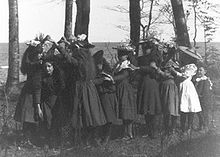 The convention sets out rights for the survival, development, wellbeing, and participation of children up to the age of 18 years. The committee has divided the provisions of the convention into clusters as follows:
The convention sets out rights for the survival, development, wellbeing, and participation of children up to the age of 18 years. The committee has divided the provisions of the convention into clusters as follows:
General principles such as:
- Civil rights and freedoms, such as a right to an identity, freedom of expression, and protection of privacy
- Family environment and alternative care such as the right to be cared for by parents, and to an alternative secure form of care such as adoption if deprived of a family environment
- Basic health and welfare such as the right to health provision and to an adequate standard of living
- Education, leisure, and cultural activities, such as the right to leisure and play
- Special protection measures, such as for refugee children, those in the juvenile justice system, and those belonging to a minority group
Rights for children can perhaps be more conveniently be divided into those of protection, participation, and provision:
- Rights of protection would include the right to be protected from any form of maltreatment or exploitation. It is the responsibility of each and every government that has ratified the convention to put in place systems that will stop child abuse where possible, identify any maltreatment that occurs promptly, prevent, minimise or mitigate any damage done to the child and prevent any re-occurence.
- Rights of participation should enable children to be involved in decisions and actions that affect them and allow them to participate actively in society. They include the right for children to express and have due weight given to views about decisions affecting them including family disposition where child maltreatment or abuse has been identified.
- Rights of provision would include the right to education, the right to basic healthcare, to adequate supplies of clean water and food, and the obligation of the state to support parents and families in supporting children. Abused children often lose out within the education system through direct harm suffered or through neglect. They go on to suffer a lifetime of lost chances because of their poor educational outcomes translating into poorer economic outsomes.
If we view child abuse and maltreatment through the prism of children’s rights and societal obligations, then we are forced to recognise:
- Child maltreatment is clearly both a human-rights violation and a global public-health problem. It creates a huge cost burden for both individuals and society.
- The deep ambivalence in the public and professional responses to child maltreatment indicates the shockingly low status of children in that society – do children count, do they have value?
- A child-rights-based approach to abuse requires change. Society has a responsibility to it’s most vulnerable members to provide care, to allow shared participation in decision making and ensure the right of protection.
- A rights-based approach is concordant with the core principles of medical ethics. It enhances the more common epidemiological and public-health responses and does not detract from consideration of the social determinants and population-based interventions for maltreatment
- Human rights are legal obligations that underpin mechanisms to hold governments accountable. Use of the UNCRC in this way would most likely result in a more effective public-health response to child maltreatment.
31st March: Educate – basics
What is education for? Does it mean different things to different people and perhaps different things depending on whether I’m thinking of my child’s needs versus everyone else?
Man is a social animal. We live in a fairly complex society requiring social rules and norms. We need to communicate effectively. We need to accept and understand certain basic ideas and structures, mainly so as not to waste time and resources reinventing the wheel, but also not to waste time and resources fighting each other for dominance.
We need to be able to read, to understand basic instructions and guidance in our everyday lives. We need to be able to write our own name in acknowledgement or witness, and to communicate our own instructions or desires.It is useful to be able to count and to understand numbers to at least differentiate between a small amount, some or lots.
These are the basic skills that all education systems must try to build in a society.
Schools all around the world teach basic reading, writing and arithmatic skills that we all should be able to use in our everyday life.

These basic skills are not related to intelligence. At all.
Most children will learn to read without any problems, whatever their IQ. My oldest girl effectively taught herself to read at around 4 or 5 years old, having not looked at phonetics etc before primary school. I remember being terrified on a Summer holiday by the significantly more advanced daughter of BF2, working her way systematically through some basic reader book with her proud mother. My baby loved story books but was nowhere near decoding the words on the page.
She’s now contemplating a degree in English Lit or Philosophy whilst BF1 has started to talk about possible undiagnosed dyslexia.
My second baby did not take to reading quite so easily. It took quite a bit more work to sit down with her and help decode the words and translate them into the sounds she heard around her. To be honest it was a bit of a shock after her sister breezing through the entire process
Apparently around 50% of children will basically learn to read easily and fluently, almost without help. The symbols we call letters and words will just work for them. Their brains are hard-wired to link the visual shape of the letters to the audible sound we make when saying them. 30% will need more help but will essentially get there after a little bit more time and help from proficient readers around them, parents and teachers.
But 20% of all children will struggle to make the decoding connections between the letters on the page and the sound in their heads. There is some evidence that their difficulties are due to a difference in the hardwiring of their brains and has a genetic component.
These children will need considerable efforts from teachers and parents if they are to learn to read fluently but it can be done. Synthetic phonetics is flavour of the teaching moment in the UK because it helps to build the decoding links for children.
Because the educational system relies upon the written text to communicate information and ideas, a difficulty with reading can lead to difficulty with other subjects if not recognised and corrected before the age of around 7.

The ability to learn to read does not have anything to do with intellect but if difficulties with reading are not dealt with early enough, it may impact on a child’s ability to learn and consequently to pass tests that measure intellect.
Dyslexia is used to describe a problem learning to decode words. It is often mis-used to describe otherwise “clever” children who can’t read. It’s a description often used by relatively wealthy and highly motivated middle class parents to describe their own children’s problems learning to read, to garner support and resources for their children by way of teaching assistance, computers, extra exam time etc. There is almost certainly a greater association with class or wealth than intellect in the diagnosis of dyslexia as opposed to “finding it difficult to read”..
Obviously different languages will be vastly different to learn. Phonetic languages will be easier and quicker to learn both to read and write. Languages with fewer tenses will be easier to develop fluency. When looking at league tables comparing literacy across countries, it is useful to have a basic understanding of exactly how simple or complicated some languages can be to learn.
Logographic languages such as mandarin represent an entire word in a single character. There are obviously a large number of characters to be learned and memorised which makes the process of learning to read and write slower though the language itself is not necessarily more complicated.

Languages have varying degrees of subtlety and emphasis that can make the language both more complicated and more beautiful. Each language has it’s own rhyme and rhythm but it is entirely possible to be fluent within a language at quite a simple level. How many words do we actually need to use in everyday life? Not that many of us choose to read Dostoeovsky or Shakespeare on a regular basis. Some of us are content with the cartoons, the simple rather than the cryptic crossword.
So at a basic level, we need to be able to read and write. We also need to be able to count.
There are remote tribes that have very few words for numbers, perhaps reflecting the lack of concept, of importance placed upon precise numbers. One tribe in the Amazon has a word for “1”, a word for “2:, for a “few” and a word for “lots”. Maybe in a hunter gatherer society that’s all that people need. Words are generally utilitarian, they are invented for a purpose to describe something or someone essential, and they change all of the time, disappearing when no longer required.
Before we start to make fun of the Amazonian lack of numbers, we need to consider our own inability to deal with numbers in real life situations, to consider our attitudes to risk.
People vastly underestimate the risk of everyday events all of the time. Driving in a car is very risky whereas dying in an airplane accident is relatively rare. People will rarely refuse to get in a car to go somewhere yet one hears of people refusing to fly quite often.
You have a 1 in 7100 chance of dying in an accident at home compared with a 1 in 100,000 chance of being murdered (Table of everyday risks | The BMJ)
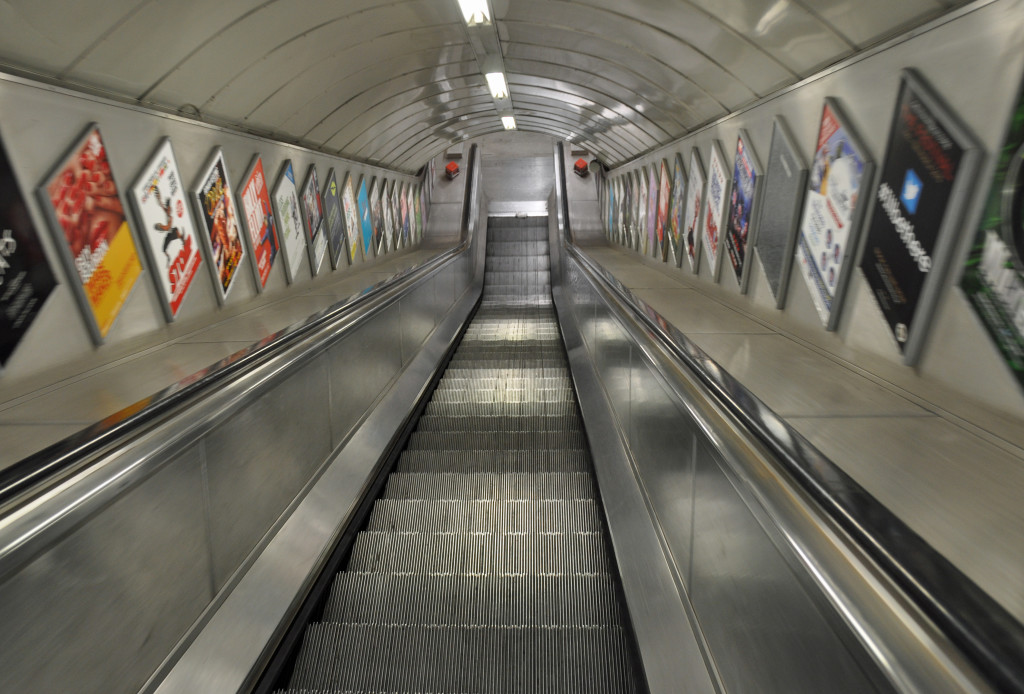
Perhaps, we worry about extreme things happening to us, because a lot of bad things are reported in the media. We forget that the media reports the unusual, the extreme events that rarely happen to us in real life. Very few reports hit the newspapers describing everyday falls down stairs, burns or cuts in kitchens etc. Yet these are the things most likely to harm and kill us in the end. We are scared of dying of cancer which we are regularly told is on the rise> As a disease of old age, increases in cancer say more about increased longevity than about our own mortality. My own favourite article described a new wonder drug as reducing the risk of mortality. Really? No one is going to die anymore? The risk of death is 1. It is inevitable.
Supermarkets regularly make use of people’s inability to make simple calculations. Is it better to buy something with “25% extra” in the bag, or a “four for the price of three” offer? What if you only wanted two apples in the first place and the extra free ones simply go to waste?
Studies show that people are unable to deal effectively with too much choice, we switch off and make simple decisions, usually repeating previous established patterns. We could call this brand loyalty. The original decision to repeat buy might have been sensible or logical because the product was genuinely a better quality but after a while it becomes reinforcing, an inertia sets in that prevents us “risking” a new purchasing decision.
I like on-line grocery shopping because it saves me time, schlepping around the aisles faced with constant and often trivail decisions. It allows me to repeat buy the basics and not be distracted by the many offers and enticements. But obviously it relies on me accepting a degree of inefficiency. I don’t seek out the best bargains.
I choose to buy the standard pack of pink lady apples, even when gala apples might be a better deal. I buy the same old brands unless for some reason the computer tells me they’re not available that week. I make as few decisions as possible because making decisions is tiring. I also use a very good retailer so that the quality of fruit and vegetables is excellent – we don’t eat meat – and nothing is wasted.
I need to be able to count, to work out how much everything costs. Money is the currency of resource allocation. We work for x hours, earning xy amount of money as a result. We can choose to spend that money on any number of things once our basic needs (housing, heat/energy, food and water) have been met.
Money is also the currency of societal worth. People who earn more money have higher status in our society. They have more choices and arguably more control over their lives. It is always possible to step down from a highly paid job, to step out of the rat-race, off the treadmill. It is not always possible to step up into a highly paid job. There are all sorts of barriers, to all sorts of people. We live in a hiearchy, measured by money.
Education provides a basic level of competency in language and numbers that allows society to function. Both the individual and society has a vested interest in maximising the number of people who achieve this basic level of competency.
But if this was the sole purpose of education, we’d all leave school at 16 and get on with our working lives.
What else is education for? What do we as individuals and as well as members of our broader community want our educational system to achieve?
1st April: Tomcat
My tomcat is frisking around the garden, chasing leaves and chewing on twigs. His tiger tabby sister is made nervous by the wind but he loves it and is bounding around, totally joyful. 
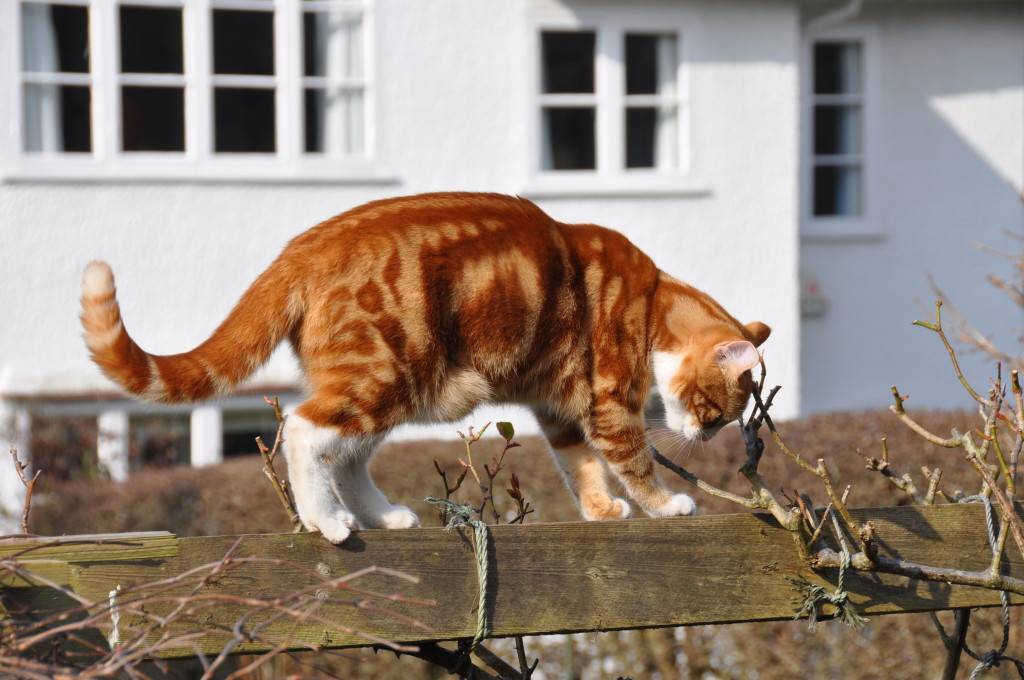
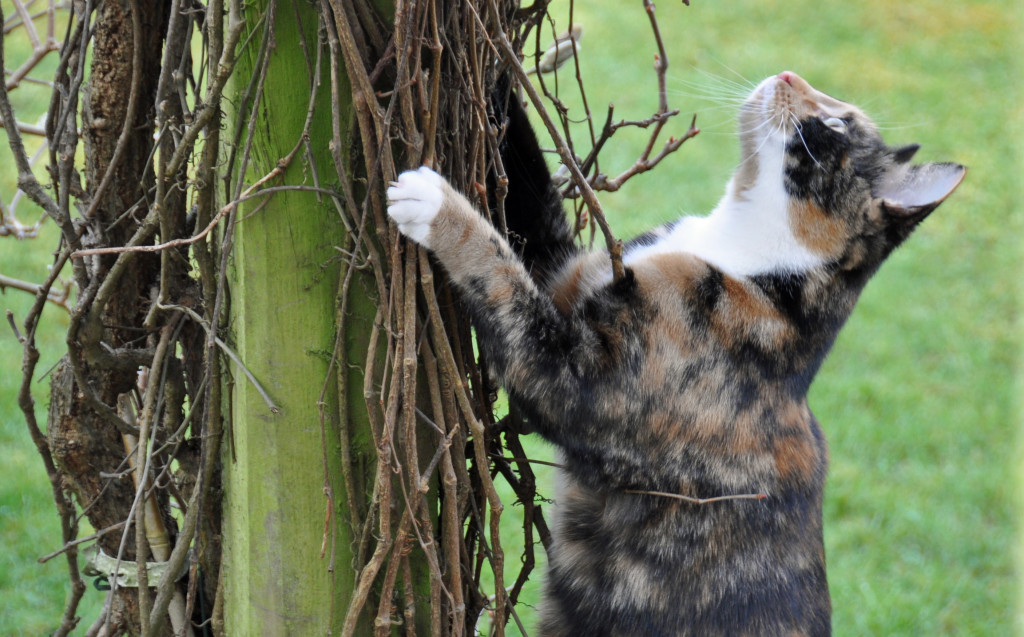 There are many reasons for loving pets, for enjoying having the around, but the simple pleasure of watching a creature enjoy themselves can be astonishing. It is something akin to watching an absorbed child playing in the school yard with their friends or singing their heart out in a junior choir.
There are many reasons for loving pets, for enjoying having the around, but the simple pleasure of watching a creature enjoy themselves can be astonishing. It is something akin to watching an absorbed child playing in the school yard with their friends or singing their heart out in a junior choir.
As we grow older and more self-concious we seem to find it so much harder to just enjoy the moment and I’m not quite sure why.

On average cats sleep for sixteen out of twenty-four hours each day. Their waking hours are spent eating or playing, though the latter might well include a serious amount of mock (or real) hunting and torturing of little creatures.
But the contradiction in my own little pack of cats is that the biggest, the tomcat is also clearly the most gentle. He might make it to the food bowl first, but if his little sister arrives and fancies his bowl she’s very happy to put her foot down on his head and push him away. And he lets her. When the fox arrives or the pushy white tom cat, it’s my calico baby who is most likely to stand her ground. For animals not naturally sociable, they spend an awful lot of time choosing to play together, to sleep together


 And there is a great pleasure in simply watching them sleep, feeling them warm on our laps
And there is a great pleasure in simply watching them sleep, feeling them warm on our laps
2nd April: World’s Apart
I find myself at the opposite end of the argument as well as the world in some of my twitter conversations.
According to my world view being white, being middle class & being male involve significant privilege compared to people who are not any of these things.
I was born lucky being able to tick the “white” box of privilege and became even luckier by moving up the socio-economic ladder to tick the wealthy “middle-class” box. My financial success was not gifted to me. I had to work hard and be smart to succeed but I also have no doubts that my journey was easier than it would have been had I been a woman of colour.
Two out of three privileges makes me lucky, but not as lucky as a white, wealthy brother would have been.
Perhaps part of the problem on twitter is the very different, real-time, physical worlds we live in which seem to disappear in the click of a conversation. On social media we can fool ourselves that our experiences are universal, are commonplace. Ofcourse they’re nothing of the sort. We feel ourselves to be talking to someone sitting in our living rooms rather than half way across the world. We make assumptions about the kind of people we’re typing to as if they were sitting opposite to us and chatting.
But the backgrounds of people I sometimes come across can be vastly different to mine
London is an incredibly diverse city with people from all sorts of ethnic, religious and socio-economic backgrounds. There are areas of incredible wealth rubbing up against terrible deprivation. Most parts of the world are much more monochrome. More than 8m people live in London, speaking more than 300 languages. More than 36% of Londoner’s were born outside of the UK. Black and Asian kids outnumber white kids in the local schools by about 3:2.

When I write about living in a multi-cultural environment it is from a privileged but experienced position. Everday I meet and interact with people from vastly different cultural, ethnic and religious backgrounds to my own. It’s a wonderful way to live.
When someone writes to me expressing a view about immigration, about living in close contact with people from different backgrounds, different religions or ethnicity, I sometimes have to conciously step back and remember that maybe they’ve never met someone not born in their own country, maybe they’ve never had to cope with their kid’s friends coming back for tea with kosher or halal diets, maybe they’re never been confronted with the straightforward humanity of different people from different places that now share our common ground.
I try very hard not to conflate or confuse gender, race, religion or wealth or try to speak on behalf of something I am not. I would not tell a man (or woman) of colour that they simply do not understand the problems I endure as a wealthy white person because they would most likely and quite rightly find that ridiculous. I might tell them my story. I wouldn’t expect a great deal of sympathy, maybe some laughs but we might be able to find common ground.
So here I am listening to some middle-class white guys on twitter tell me that I can’t hear them talk about their problems with women and women’s groups or rights. They tell me that I need to listen more carefully and acknowledge them more clearly. When all I was really trying to think about, never mind talk or write about, is me and my own interests. This media “space” here and now really is all about me and nobody is forced to engage, to read or reply with my rants and ramblings. Are they?
Recognising that men or any other group are privileged does not make me cross with men but cross with the system. It does not mean that I fail to recognise the hard work and effort that my male partner has put into his worklife in order to be succesful. We have all had to work hard to earn our success. But his journey was easier in small, incremental and significant ways, from the start through to the end of his working career.

Recognising male privilege does not mean that I fail to recognise the limitations placed upon men by societal stereotypes, the pressure to conform to a fairly limiting version of success, to bottle up emotions, to be “strong”.
I’m as happy as the next person to sympathise with the trials and tribulations of the men in my life. I want to hear their success stories, to offer sympathy when they lose out on a promotion or scholarships, when they struggle to balance being a good father or a good partner with the push and the pull of a responsibility to earn money, to provide for their families and be “succesful”
None of this leads me to question the basic head start that men are given in the race. None of it makes me question male privilege.
Gender cuts across socio-economic boundaries. No matter how wealthy or poor a girl may be, her brother will have more chances and more opportunities in the world. He may not make best use of those opportunities. He may not be as smart, as capable, as motivated or simply as lucky as his sister in her life and her choices. – but men are privileged.
But being born male means being born luckier in the lottery of life. It shortens the odds but does not guarrantee that your numbers will come up. We are all able to screw up our lives independently by making the wrong choices but being male means more choices, more risks are available to us.
A white woman may have more opportunities than a woman of colour living the same life, but she will not be gifted so many opportunities and choices as her brother. I don’t know whether it is easier to live a life as a white woman or a black man. I could guess. I do know that is easier than both to live as a white man.

Gender cuts across all of the socio-economic boundaries.
Some of my critics believe that the government statistics are biased. As are the UN statistics, the reports in the Lancet or the Economist that I occasionally retweet, as well as my own personal experiences. What can be said to someone who simply does not believe the evidence laid before them? The answer of ignorance is inevitably “Yes, but… I don’t believe the facts as written, measured, documented. The world is anti-men. Yes, but…”
I use twitter as a diary, a place to log articles and issues that I want to think about. Occasionally I spend some time trying to be constructive and supportive to victims of sexism retweeted through the EverydaySexism feed. It seems rude to ignore comments addressed to me, even from strangers but now I’m left wondering whether manners really do require a reply. My daughter laughs at the idea: really, who has the time or energy?
In my world, living in one of the greatest cities in the world I see power and authority vested in men through politics, the judiciary, through positions of authority in the media, in business, finance.
And none of this can be factually contested. I live within a patriarchal society. The evidence is overwhelming unless you are a person who really does believe that men are in charge simply because they just outperform women, that men really are just smarter and better at the job, whatever that job may be or perhaps that women simply choose to be poor and disempowered because … (well, words fail me there – would anyone ever make that choice willingly?)
Even if that’s possible, and there is someone out there dumb enough to believe that men (all men) are simply better than the women in their lives, isn’t that a very clear definition of patriarchy, a society where men are in charge, just by virtue of being men because being a man is better?

There is no real value in being a woman of influence, the wife or partner of someone with real power and authority. Power and authority should be vested equally in all parts of society because that’s what representation means. I want my daughters to hold their own power, to earn their own money and decide how to spend it. I don’t want their appearance to be the main factor they will be judged and valued for in this world. I don’t want them to be obliged or beholden, to need to ask permission from the men in their lives.
There is little comfort in democracy when it limits my choice to Rich White Man A or Rich White Man B to represent me in government. Why can’t I be represented by someone who has more understanding of me and my concerns? I would like to be represented by a woman, preferably one with children who understands what it is like to balance work and childcare along with their partner’s needs.
Maybe some men simply don’t notice that all of the prospective candidates in the polling booth look like them. Maybe it doesn’t feel relevant. What would it it be like for a man to look at the potential leaders of their country and see a row of women staring back? Would they genuinely believe that gender is irrelevant if 9 out of 10 politicians were women?
Maybe they live in a country where the number of female politicians closer to the 50% you’d expect and they just can’t believe that the rest of the world isn’t as representative. Really?
In the UK, a very high proportion of women work to make ends meet. They do not have a choice not to work. The idea of a stay-at-home wife or indeed a stay-at-home husband is a privilege reserved for the very wealthy. The idea that women have a choice between a life spent in paid employment or one staying at home with their kids is a myth. Maybe in some places it’s possible for women to “choose” not to work – not here.
According to the Resolution Foundation the typical (median) full-time employee in London earns £34,000 a year before tax – people living in London have the highest UK regional earnings but they also have the highest property costs.
According to Land registry figures, the average London house sells for £437,068, well beyond the money that could be raised by mortgage loan by a couple both earning the median income. So people find themselves renting and rents vary extraordinarily in the capital, HomeLet Rental Index suggests an average rental for new tenancies in Januray 2015 was around £1,400 per calender month
The cost of daycare for children in London is high ie average costs of nursery and/or childminder costs of £110-120 per child per week (figures based on data from Daycare Trust). Assuming a 48 week year, this equates to around £5,500 from net income per child.
A suggested breakdown of the cost of living in London can be found at Cost of Living in London, United Kingdom. Prices in London … so two people living together with two children might put together a budget something like this:
| Annual Salary | £68,000 = £38,000 + £30,000 |
| Tax | £10,827 = £6,827 + £4,000 |
| Council Tax | say £1,000 |
| Rent | say £16,800 |
| Childcare (2children) | say £11,000 |
| Utility Bills incl media | say £1,200 |
| Disposable Income: | £ 28,372 or £2,364 per month |
Probably half of their disposable income will disappear on weekly groceries and bills. They will have to pay for food, transport, clothing etc. From a seemingly generous base salary, their income disappears pretty quickly. They will struggle to afford an annual holiday. They will struggle to save anything for their retirement and remember they’re renting not buying – where will they live when they stop earning?
To cover housing costs and have children in London, both mother and father will have to work.

So at the school gates in London we see both men and women dropping off their kids. Probably more women, but only because studies show that where both partners work, women still take more responsibility for childcare as well as housework. Because generally women marry guys a couple of years older, their partners will generally earn a little more when they decide to have kids. A couple will be less likely to “risk” the higher salary so any compromises with work are likely to be made by a new mother.
And because they make more compromises, they have less freedom and less flexibility in their work lives than their husbands or their brothers. They are promoted more slowly. They are more limited in the job offers they can accept by the hours they can work and the time they can spend travelling.
And ofcourse it’s true to say that men feel more pressure to succeed at work if they are the major earner in the partnership. They may feel excluded from emotional intimacy with their children. It may be difficult to carve out time to build relationships with their kids or to maintain relationships with their partners.
But it feels as though they have the same choice as their partner, no more and no less a choice to make time available, to try and balance work and family, just as their partners have done. It is always possible for men to sacrifice promotions, to walk more slowly up the promotion escalator, just as women “choose”.
And ofcourse if the relationship fails, men are more likely to walk away with greater financial resources and less day-to-day responsibility for the children they have both made.
Gender Wage Gap UK Source: Earnings by Region – ONS
Single parents are almost inevitably impoverished single mothers.
In my world I do not see additional support for women to the disadvantage of men. In schools and universities over here, scholarships are offered on the basis of exam results and are gender blind. As girls start to outperform boys in some subjects, I see the exam system being changed and re-calibrated, returning to a final exam based system that has been shown to favour boys’ study patterns over girl’s.
I live in a country where there is little government money available for any charity or support groups. Funds that are made available are gender neutral being focused very much on immediate needs and issues, usually in an attempt to reduce or minimise government spending on welfare.
Support groups are most usually centred around issues or interests rather than gender. An issue originally viewed as gendered, has often broadened and expanded outside of it’s original bounds eg. where refuges for male victims of domestic abuse exist, they are most often supported by charities begun by women’s groups such as Refuge. To raise funds for refuges, most charities try to focus on vulnerable children rather than making it a female gendered issue.
Children’s charities such as the NSPCC or Childline are entirely gender neutral. Food banks offer support dependant only on need, not on whether the family is headed by a man or a woman.
I see an increasing number of men’s groups working to foster greater understanding of male victims of violence, working towards improving male participation in family life etc. And this has to be a good thing. Breaking down the stereotype straightjackets for men and women is important. Allowing both men and women to realise their full potential, through work, though family, through community, irrespective of their gender, race or religion, can only benefit us all.
Feminism is a challenge to the existing power structure; the current system is broken for both men and women. It has never been about equality. Let’s hold out for liberation, of men and women.
3rd April: Respond
A recent series of papers in the Lancet looked at child abuse in some of the wealthier parts of the world. 85% of non-sexual child abuse is carried out by parents or people in parenting roles. Sexual abuse is almost always carried out by men known to the immediate family: the common fear of “stranger danger” reflects a vanishingly small number of child abuse incidents which is why it makes the news.
Yet when stories break about child abuse, we extend the blame from the actual perpetrators to a long list of professionals involved in the life of that child, from child protection services, the police, teachers through to healthcare professions.
Why didn’t they identify the problem more clearly? Why didn’t they intervene more effectively? Recent scandals in the UK centered on child grooming where groups of young girls have been trafficked for sex and drugs, or the high profile historic abuse of children by media personalities have led to calls for mandatory reporting of maltreatment.
When the Lancet reports looked at retrospective, self-reporting of harm as a child (eg. were you ever abused…) rather than substantiated cases of abuse with the involvement of child protection services, it became clear that there was a vast gap between the amount of abuse experienced and the amount reported and dealt with by the relevant authorities. What could be done to close the gap to ensure all abuse is recognised and dealt with? Would mandatory reporting help>
One of the Lancet reports looks at recognising and responding to child maltreatment – Gilbert
The rationale for any system that recognises and responds to child maltreatment is that overall, the harms of reporting to child-protection services are outweighed by the benefits. Where the person reporting possible harm is not certain that benefits will outweigh the harm, they are less likely to report possible abuse or more likely to delay reporting abuse until it becomes more serious.
For child maltreatment, it is clear that professionals such as teachers or nursery school workers working with children do not know whether the process from recognition to reporting and subsequent interventions actually improves lives of children overall. They are also very aware of the potential damage that reporting a family may cause to their own relationship with that family, and in some countries there are growing concerns that fear of litigation could reduce reporting.

Medical care professionals are responsbile for 8.4% of reported child maltreatment. This would include both emergency treatment in a A&E department and reports from a family’s GP or primary-care doctor.
The difficulty for paediatricians and primary-care physicians is that, although about 10% of the children they see are likely to have been exposed to maltreatment in the past year, few will present with injuries or clinical symptoms directly caused by maltreatment.
When an adult is identified as a violent offender—whether as a result of violence or substance misuse—an opportunity exists to also identify a maltreated child. One manifestation of violent offending is intimate-partner violence. General practitioners are in a key position to recognise and respond to intimate-partner violence because they are often the only professionals who see not only the person who is abused, but also the perpetrator and associated children.

If child maltreatment cannot be prevented, if it is not promptly identified and the damage minimised or mitigated early, the consequences for the child and society continue throughout their lives: progression from maltreatment during childhood to antisocial and violent behaviour and criminality in childhood, adolescence, and adulthood has been defined by a growing body of research. There is an obvious opportunity for legal professionals, law enforcements officers and criminal justice personnel to identify and intervene and this is relfected in the incidence of reporting.
A review suggested that between a third and 90% of children in custody had some form of past or current maltreatment, and sexual abuse was particularly common in girls in custody.

Within the family-court system the no-fault, future-focused approach to divorce and separation, which operates in many high-income countries, discourages the investigation of allegations of child maltreatment. Different approaches to tackle this issue have developed under different systems of family law but all require an adequate assessment of child safety when decisions are made about their contact after separation with allegedly abusive parents.
What are the beneifts and drawbacks of mandatory reporting? Could it make a difference?
Mandatory reporting would certainly make it clear that the Government takes child abuse seriously. It should encourage early notification to protect children and prevent child deaths. It should lead to an increase in reporting to child-protection agencies, providing a standardised and uniform database on the nature and size of the problem. Mandatory reporting should address legal (privacy) and ethical (confidentiality obstacles to reporting without compromising the integrity of professionals.
But there are disadvantages as well:
The additional reporting is likely to overlaod child-protection services such that resources will be dominated by the need to investigate, leaving very little remaining for effective interventions. Perhaps mandatory reporting will encourage professionals to pass the buck rather than sharing responsibility. Mandatory reporting is likely to disciminate towards vulnerable populations who are over-reported. It is most obviously reactive rather than proactive, which is against contemporary understanding of the need to develop supportive communities that care for children. Mandatory reporting will inhibit self-referrals by children and parents because they will lose control of what happens to them.

It is clear that mandatory reporting of child maltreatment will not solve the problem. Where mandatory reporting exists, the proportion of children investigated by child-protection services, who have maltreatment substantiated, still remains low (26% and 52% in US and Australian surveys, respectively).
Failure to substantiate maltreatment in these cases might indicate lack of sufficient evidence, failure of the family to cooperate, lack of commitment to comply with services, or inability of the agency to investigate because of personnel constraints.
Forcing people to report child abuse will not make a significant difference unless resources are available to deal with the significant increased number of incidents.
Conclusions:
- Prompt recognition and reporting of child maltreatment is important to promote child safety, health, and welfare through the provision of preventive, supportive, protective, or therapeutic interventions.
- Few maltreated children come to the attention of child-protection agencies, indicating failure of professionals to recognise maltreatment, failure to report, and failure of agencies to investigate or substantiate maltreatment. Child deaths related to maltreatment are under-recognised.
- Professionals working with children need to be confident that reporting possible incidents of child maltreatment will be confidential and will improve or at least not harm the child. This requires greater transparency and improved coordination between different professionals working with children and families.
- The continuity of contact provided by schools and GPs offers important opportunities to improve recognition of, response to, and support of maltreated children. Training professional working with families to recognise potentially abusive situations and providing resources such as in-house social-workers can make a difference.

4th April: Neighbours
Every garden should have at least one show-stopper. One of my neighbours has the most wonderful magnolia tree that can be imagined and at the moment it is in full flower. For the next week, maybe two it will be the most beautiful thing on our street. People will stop to take pictures after spotting it on their drive by.
And then suddenly the flowers will all drop, the leaves will arrive and it will all be over for another year. Worse still, nothing but grass will grow beneath it, and even the grass will seem brown and apologetic. It is a thug of incredible beauty.
My neighbour moved into the house in 1962 when she married the owner, long outlived and agreed to look after him and his little girl. The first wife died in childbirth. Women did back in those days. Another child and lots of memories later she remembers buying the magnolia and planting it off-centre close to the driveway. It grew bigger as these things do when they’re happy until the driveway seemed too crowded and she decided to move it more centre-field where it has lived ever since.
Her children both grew up and left home. Her husband died. Birthdays came and went. After 90 years lived well, 50 of them in our neighbouring house she held a garden party to celebrate amongst her roses. The garden is elegant and easy and as the years have gone by the emphasis has switched from sitting out to viewing from the windows.
A recent fall means that she seems likely to hire a live-in carer to help with day-to-day jobs yet it is difficult not to look on with a degree of envy. Her daughters do not live very far away and visit often. They take an interest in her life, in her care. She can afford help to allow her to remain at home. In many ways, she is living the old age that we’d all like to enjoy.
And in the mornings she looks out of her window into a cloud of magnolia flowers.
5th April: Easter
I’m told that I’m a Christian living in a post-Christian world. The UK is one of the most secular places on earth. A previous pope might have used the word “ungodly” or maybe just “lost”.
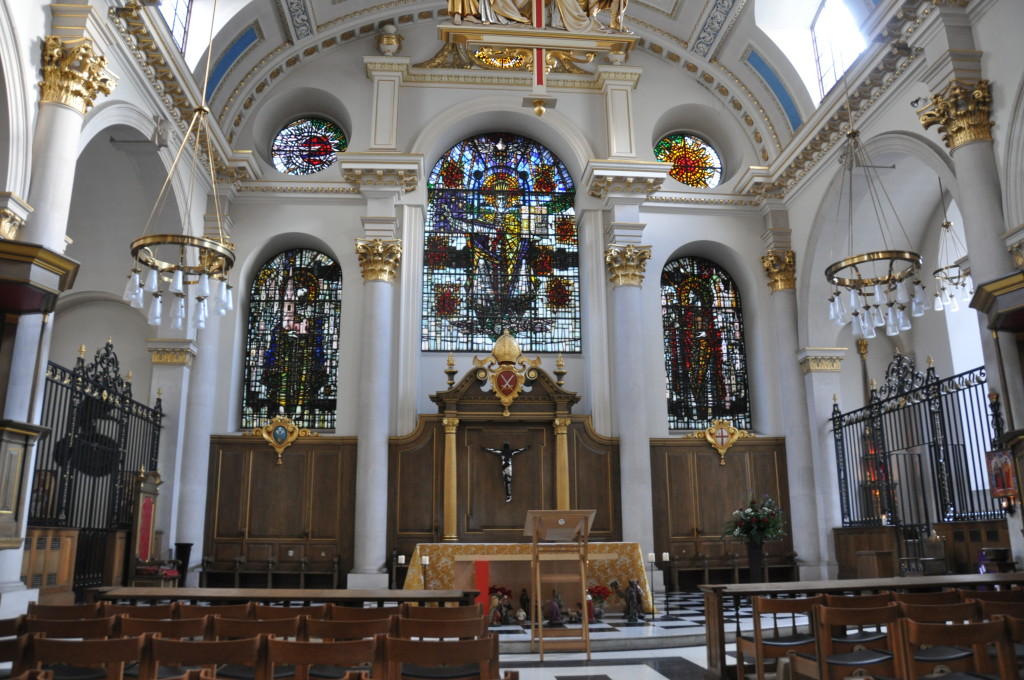 But London is a surprisingly religious place, maybe simply full of more immigrants from more religious climes.
But London is a surprisingly religious place, maybe simply full of more immigrants from more religious climes.
A number of things still strike me as odd.I find it peculiar to be asked about my religion as if it were a foreign language, not by my Jewish friends but by my heritage-Christian friends.
FYI – the trinity is experiential, which is to say it simply describes God as we experienced Him, as Father, Son and Holy Spirit just as I could be described as the “daughter of” “mother of” “friend of”, three experiences, all me.
Then there are the semi-strangers at parties who feel entirely comfortable trying to convert me to their own brand of atheism, usually by telling me how irrational, how superstitious and ultimately how stupid I must be. Since their brand of religion seems to comprise a strange mix of “science has all of the answers, though I don’t understand any of them” with devotional shopping trips, I’m not convinced.
My daughter has a much more rigorous intellectual argument about the irrationality of all religions and how she consequently can’t believe in a deity herself. It works better as an argument because it doesn’t start and end with the idea that I must be stupid, though clearly an implication is left hanging at the end of the conversation. It’s what happens when your child decides to study RE and then Philosophy at school – they all fall away from your faith as teenagers but with better manners.
And then there are the people who seem to get so very personally angry that I have a religion when someone mentions it (never, ever me, I promise). Inevitably war and bloodshed caused by religions over the generations is mentioned, usually followed by financial coruption, and child abuse scandals.
Because clearly the atheistic communist regimes hands are bloodfree, clearly political land-grabs aren’t ever the real motivation for war, clearly financial and moral corruption are not part of the human condition.
My faith is personal. I’m not evangelical. But surely we can all insist on our right to choose our own belief system.
I once saw an interview with a buddhist nun who was asked about the existence of God. To her the question was the wrong question. If God exists, one should choose to live a good life, to make moral and ethical decisions and live life to the best of one’s abilities. But as she pointed out with a smile, surely if God does not exist, then one’s choices remain the same, to choose to live a good life, morally and ethically living life as well as one can.
One of the most difficult challenges in my faith is the fact that God’s love cannot be earned or deserved. Nothing I do or say can make God love me more or less. I am loved. Whether I live a good or bad life, I am loved. I should choose to live a good life, to make moral and ethical choices for me. This is not to say that God is not pained when fail, when I am wicked or weak.
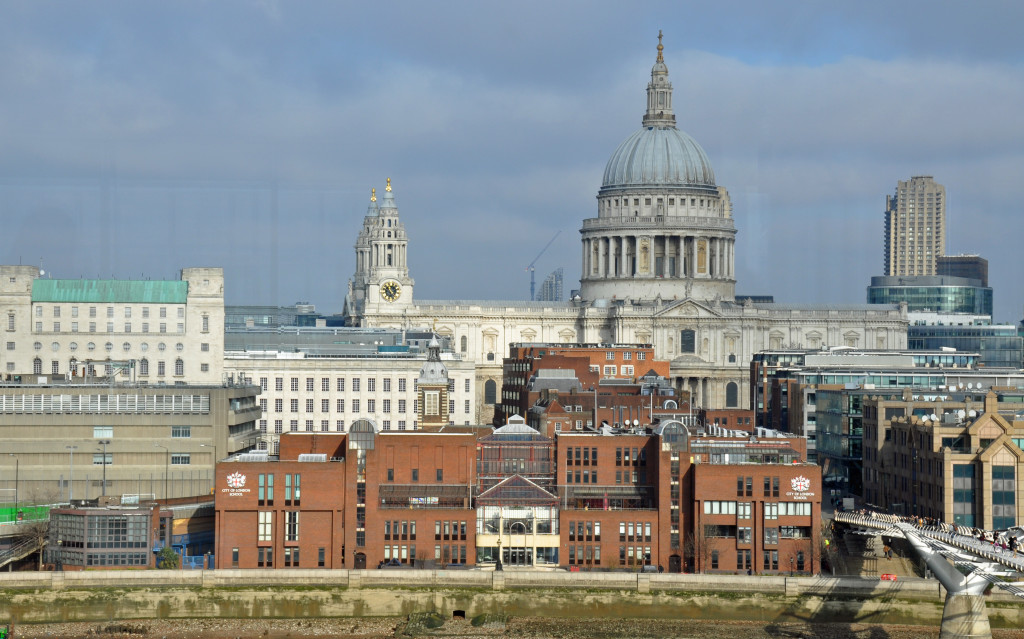
When my daughters are cruel or nasty to each other, their father or me (thankfully not that often) I find it painful, and hurtful. It makes me sad. The things our children do can sometime make us sad or angry but they don’t make us stop loving them. As parents we reach out time and time again. Our love is not negotiable, not earned or deserved. Our love must be constant.
If I can have faith, if I can trust in God’s love, then I believe that when I die, God will gather me up and bring me home. I believe in God as Father, Son and Holy Spirit. I belive in the resurrection and the life of the world to come.
But my beliefs take nothing away from my (many) agnostic friends who believe in nothing beyond this one physical life. I cannot see how being religious takes anything away from those who are not. I believe that my faith adds something to my life, above and beyond the community support (which is considerable) but someone who is not religious, who has no belief in a God should not feel a lack, should not begrudge the comfort and challenge that a faith brings to someone else.
Maybe atheists simply resent the idea that someone is judging them, and finds them lacking – I’d certainly hate that feeling.
But I feel no need to convert people or disrespect people without my faith. I struggle to trust in my own redemption, so am not really one to condemn my non-believing BFs to everlasting hell and damnation as well. Who has the time and energy to judge people on something so very private, when there’s all the public stuff to get through first? I might not be evangelical, but am certainly bitchy enough to take offence on other grounds.
Christ was nailed to a cross with thieves and sinners on either side of Him. He died. The Easter story is both the most simple and most complex story, above all a story of unconditional love and sacrifice for the unworthy because who could ever be worthy of such a thing.
Today we celebrate the risen God, life after death, man redeemed by one perfect sacrifice. Happy Easter. Happy Pesach.
Wishing you only the best in your life, whoever you may be, whatever your faith, your beliefs or background. Life is meant to be joyful.
6th April: Stop
A minority of children are abused, usually by their parents unless we’re talking sexual abuse, in which case by a man known peripherally to their family, maybe an uncle, a care worker, a teacher or priest.
What can be done (Interventions to prevent child maltreatment and associated …) to prevent child abuse, to identify it promptly, prevent reoccurrence and to mitigate the harm it does to the victim?
Abuse can be deliberate physical or sexual maltreatment. It can be emotional/psychological abuse. Or it can be a lack of action, or neglect of the child, a failure to meet their child’s basic needs. Increasingly we view intimate-partner abuse as a fifth category.
Societies around the world are poor at identifying children that are abused, poor at dealing with the abuser and the abused child. Where maltreatment is recognised, we often seem to make things worse. Having identified abuse and maybe locked up the abuser, we all too often ignore the needs of the victim. We ignore the abused child as if by pretending nothing has happened, that all is now well, we can make the past go away.

Happy, healthy peoply do not deliberately abuse their kids or anyone elses. Deliberate abuse like any other form of bullying comes from a sense of insecurity, a weakness and vulnerablity.
Neglect may come from a different place – ignorance plays an important part. Sometimes people simply do not know what their child needs from them in order to thrive. They don’t understand how to feed their baby a balanced diet because they’ve never been told or shown. Maybe their own lives are chaotic and they don’t understand how much sleep a child requires, the importance of regular routine and structure in a child’s life.
Parenting is in large part a learned skill, and badly parented people are unlikely to have learned good parenting habits from their own childhood family setting. And whilst not all abused children go on to become abusers, being abused is regarded as the single greatest risk factor, perpetuating the cycle down generations.
Parental poverty and poor educational achievement are risk factors for child maltreatment of all sorts. Drug and substance abuse exacerbate any abuse that occurs. In some studies one quarter of all abused children are disabled suggesting that disability is a risk factor or identifier (cause or effect is difficult to determine). Children living in families with domestic violence are more likely to be maltreated.
Around the world, different societies have tried different things to reduce the maltreatment or abuse of children, to prevent abuse; initially, to identify abuse more readily, to prevent it happening again and to mitigate it’s impact upon the victims both short term damage and long-term impact.
At some level the most obvious route to stopping child abuse is to encourage people to be happier, to be well-adjusted, healthy individuals, to be less angry and deal with their anger in less violent ways. Government must strive to alleviate poverty and to educate everyone to a reasonable standard, to empower tthem economically and allow people to develop a sense of self-worth.
And back in the real world where this fails to happen on a regular basis and to a horrifying extent, we need to provide an adequate safety net for when things go wrong.
- Identifying “at risk” families and initiating home-visiting programmes for those families are not always effective. Those that have been shown to work such as the Nurse–Family Partnership (US) and Early Start (NZ) have been shown to reduce child physical abuse, neglect, and outcomes such as injuries. These are free, community based services. The Nurse-Family Partnership partners nurses with first time mothers on low or no income in their pregnancies. Early Start is an intervention service that works on a social-learning -model approach. In both cases the nurses were at least bachelor degree qualified with additional specific programme training provided.
- These programmes work by providing support before and after birth. Each family was assessed individually and the partnership was tailored to meet specific needs. The visits were tailored and frequent typically lasting at least 60 minutes each.
- The Triple P—Positive Parenting Program has shown positive effects on maltreatment and associated outcomes. It is a parenting/family support system designed to prevent and treat behavioural and emotional problems in children and teenagers. It requires the family to work together to address the underlying causes of maltreatment. More than half of it’s parenting strategies focus on developing positive relationships, attitudes and conduct ie. by making the parent-child relationship work better.
- We learn how to parent either by example of how to do something, or how not to do something. It’s why when we become parents we can suddenly find ourselves saying and doing things we recognise from our own childhood. Learning new behaviours, new more positive or constructive ways of interacting with our children and breaking away from destructive patterns of behaviour can be life changing, life saving.
-
Hospital-based educational programmes to prevent abusive head trauma showed promising results. Providing information through leaflets, video and posters describing the dangers of shaking infants and ways of dealing with persistant infant crying had a noticeble impact in reducing abusive head trauma in the NY region.
-
My local hospital has a Paediatric A&E department. We’ve attended twice with fractures, once with each girl and both after accidents at school. In each case, one of the first things asked is how did the accident happen, who was there, was it a “home-alone” event which might consitute abuse of some sort, either neglect or actual physical harm by the parent. Whilst it can feel threatening to have this kind of question put directly to your child, it’s easy to understand the reasoning behind it.
-
When hospitals, schools and social care start to join up the dots, a pattern of abuse can be identified of children pushed or shoved or beaten, of children left home alone, of a home that is a dangerous environment for a child etc. Ensuring follow up for all child accidents would help to reduce the risk to children of both physical abuse and neglect. Follow up could be as simple as regular therapy – we had weeks of finger exercises at hospital to try and straighten out a fractured finger. It also had the benefit of allowing the hospital to track recovery and ensure no reoccurence of the damage. Follow up could be the offer of help or advice as to how home safety could be improved, where to find second hand stair gates etc.
-
Providing specialist training to doctors in identifying child abuse, allowing them to systematically identify family problems, and having a social worker available to help has shown benefits in terms of fewer referrals to child-protection services as well as fewer incidences of neglect and physical abuse. Doctors feel empowered to act earlier. Interventions prevent a small problem becoming a big problem.
-
School-based educational programmes have been shown to improve children’s knowledge and protective behaviours but whether they prevent sexual abuse is unknown. My own children were warned about “stranger danger” the least likely form of abuse, long before they had any meaningful information about positive emotional and sexual relationships in PHSE classes at primary school. As a result they were certainly not inclined to get in a car with a kerb crawler.
-
I was a bit taken aback to be asked driving along to piano lessons who I thought should be allowed to touch my daughter’s fanny, whether or not daddy should be included or not. I was unreasonably relieved to find out the cause of the conversation was a PHSE lesson with PC Dave who apparently had talked a lot about appropriate and inappropriate touching. The headmistress when quizzed was very clear. These lessons could not be announced in advance. Abusers would simply take their kids out of school on the day of the lessons. A number of cases of abuse had been identified as a result of these discussions over the years – they were useful.
-
Whilst parent–child interaction therapy has shown benefits in preventing recurrence of child physical abuse; no interventions have been shown effective in preventing recidivism of neglect. This makes it even more important to work towards preventing neglect upfront.
- Preventing damage associated with child maltreatment requires a thorough assessment of the child and family which can seem expensive until we consider the downstream costs of doing nothing. Cognitive-behavioural therapy shows benefits for sexually abused children with post-traumatic stress symptoms. There is some evidence for child-focused therapy for neglected children and for mother–child therapy in families with intimate-partner violence.
- For abused children, foster care placement can lead to benefits compared with young people who remain at home or those who reunify from foster care, and enhanced foster care leads to better mental-health outcomes for children than does traditional foster care. Not all families can be fixed. Taking children away from abusive parents is likely to lead to better outcomes for the children, providing quality foster care can be assured.

14th April: Tennis Tantrums
I played in a small tennis round robin tournament (doubles) over the weekend and won. Don’t let this fool you. I am, at best, a mediocre player in a very small club.
Every year we put struggle to put out a Ladies Doubles team with just six players and we dawdle along halfway through the divisions. There is usually some drama towards the end of the season where we narrowly escape relegation (or not).
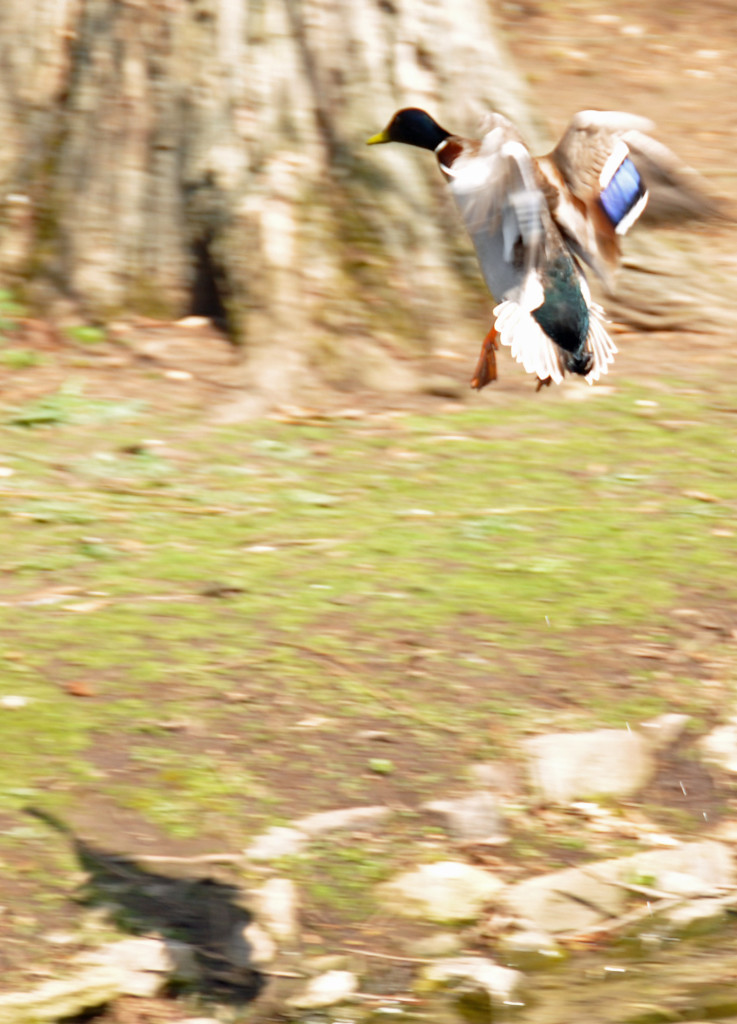
So I played with my partner for 50 minutes or so before the round robin. The sun was shining and I was feeling puppy dog happy, full of enthusiasm and more than a little bounce. He headed off, and we started to play.
It was one of those glorious Spring days. The ball was bouncing high on the court and I just seemed to have endless time to chase about the court. There were a couple that had just returned from NZ after a few months so it was really just good sociable fun. Very happy.
Into my bright sunny happiness arrived a little stormcloud.
There was a dispute about a score. R and I were confident the game stood at 30:40, B had no support from her partner when she challenged so we moved on and won the game. We changed sides. I prepared to serve.
“You know you were definitely wrong about the score in the last game…”
Eventually she shut up, we won the game to love and her partner served. Throughout the game there were mutterings and dark looks. It was unpleasant. We won all of the games, shook hands and moved on to our next partners.

Every game we played B got crosser and crosser with me.
By the end when we were partners, she wasn’t speaking to me at all.
Playing with B was really nasty. It totally soured my good mood for the day which is such a shame. This isn’t something I’m ever going to want to repeat in a competition match, which since we’re both on the team is a bit awkward. Hopefully she feels the same way and has already had a word with the captain.
At yesterday’s team practice we all started with a pep talk about server keeping score, no prolonged disputes and line calls being good unless clearly outside the lines. Without referees, you can only call the balls in or out on your own side of the net.
Whilst everyone makes a bad line call occasionally (bad eyesight, wishful thinking etc) some people are known to be slightly more dodgy than others.
This isn’t Wimbledon. There’s no money riding on the outcome of any of these matches and to be frank, we’re really not that good. When I play with someone making dodgy calls, after a couple I end up querying them myself and letting the opposition take the point again. It probably makes me a bad partner but who wants to win a point by cheating?
Last year at the end of the season I had decided not to play this year after playing a match with B and hating every minute before and during.

There were a couple more people at the team practice so maybe if I duck out it won’t be too tricky for the captain. But then half of me is left thinking about the good games, with good partners that I’ve enjoyed so much.
16th April: Living Wage
How much do you earn? It’s a question that never gets asked in polite British society. You are more likely to be asked about your sex life than your finances which is to say, never.
But just because we don’t ask about money doesn’t mean that we aren’t interested. The British paranioa about house prices and home ownership is in many ways a proxy for discussing personal wealth.
So when a Conservative leader says he wants to extend house ownership, to sell off all of the social housing and thus pull up the ladder from the next (non-voting) generation it seems to be heard as a call to wealth and prosperity. “I will make you rich” &presumably “Damn the next generation – they can live in hostels, at least until we flog them off as well”.
But isn’t this just a very British perversity? I own my house, without a mortgage. Through no efforts of my own, it has more than doubled in value whilst I’ve lived in it. I receive no benefit from this huge increase in value and, since I plan to stay here forever, never will benefit. Many of the people living in my area could not afford to buy a house here if they were forced to start afresh. Most of their children will have to wait until their parents die to move into this or a similar area in London.
Wealth that is tied up in bricks and mortar does not make me feel rich. Cash in my pocket or bank account makes me feel wealthy though obvioucly as a house owner already, it’s easy for me to say.
Since the global financial crisis, real wages and family living standards in the UK have fallen. The real wages of a typical worker have fallen by nearly 10% since 2008 and the real family incomes for families of working age by 7%.
Prior to 2008 there was a fairly consistent growth in real wages (wages adjusted for inflation) as shown in the graph below.
Figure 1: Annual ASHE median real weekly earnings, 1980 to 2014
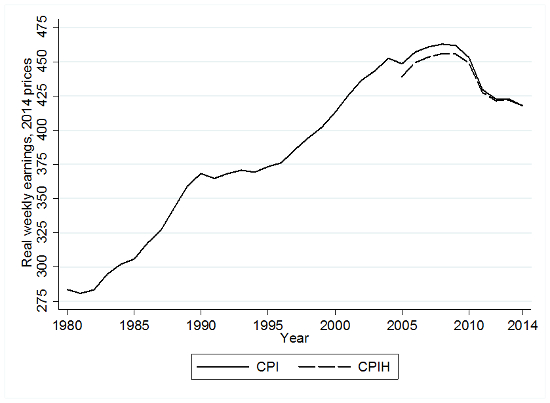
Notes: Annual Survey of Hours and Earnings (ASHE) weekly earnings numbers, updated from Gregg et al deflated by CPI and CPIH (from 2005).
Post 2008 there has been a consistent fall in real wages yet to be reveresed and this fall has been very unevenly distributed. Having higher wages to start with, as you might expect men have seen consistently larger falls. The young have been hardest hit with a 16% fall for those aged 18-24 and have also had to bear most of the unemployment increases. Starter jobs have been squeezed hard. In contrast, persioners have been relatively protected.
The UK position is particularly bad when compared with other OECD countries which somewhat puts a dent in the economic good news that the ruling political parties are trying to sell in the lead up to the election.
Figure 2: International real hourly earnings growth, 2008-13
Source: OECD Employment Outlook, 2014.
The improved economic story is one of falling unemployment but unlike previous recoveries, the fall in UK unemployment that has occurred since 2012 has had no real impact on improving real wage growth. In the recessions of the early 1980s and 1990s, real wages grew as unemployment fell, but this has not happened so far. Median real wages have actually dropped a little as the unemployment rate has come down from its peak which does not suggest wages will pick up soon.
All political parties recognise that less money from work going into people’s pockets is an important political issue but none of them seem to have any clear ideas or strategy about what to do to improve the real wage position of UK workers.
The one topic that no one is talking about in any political party is the falling productivity of the UK workforce. In this finanical crisis, fewer people than expected have lost their jobs, but productivity has fallen. Perhaps this can be understood as a consequence of an unwritten agreement between employer and employee :
“We can keep you employed but only if we don’t offer a pay rise, or in some cases maybe offer you a pay cut”
“Ok, I’d prefer to be employed than not, but don’t expect me to work as hard for less money”
If we work the same or even more hours but produce less, it is understandable that there is no money available to increase wages. Productivity falls, real wages stagnate and something needs to change.
Unfortunately, it might not simply be enough to turn on the economic accelerator. One worrying feature of research in this area suggests that well before the downturn, economy-wide median wage growth became more weakly correlated to economy-wide productivity growth.
The real key to generating substantial gains that could in turn make serious inroads into getting back to 2008 wage levels is thought to be raising productivity and, if a productivity boost does come, ensuring that workers across the entire wage distribution share in the gains. Thus, policies to raise productivity – especially those linked to skills (for example, building human capital for those with poor basic and intermediate skills) – are important.
But productivity improvements may be insufficient to raise wages if the benefits are mainly appropriated by shareholders or pensioners.
Even if average wages increase, these may benefit median workers by much less if wage inequality once again starts to rise. The ‘Britain needs a pay rise’ campaigns and even the discussion around raising the pay of workers in companies that have benefitted from the drop in the oil price are useful for policy debates to raise awareness on these issues.
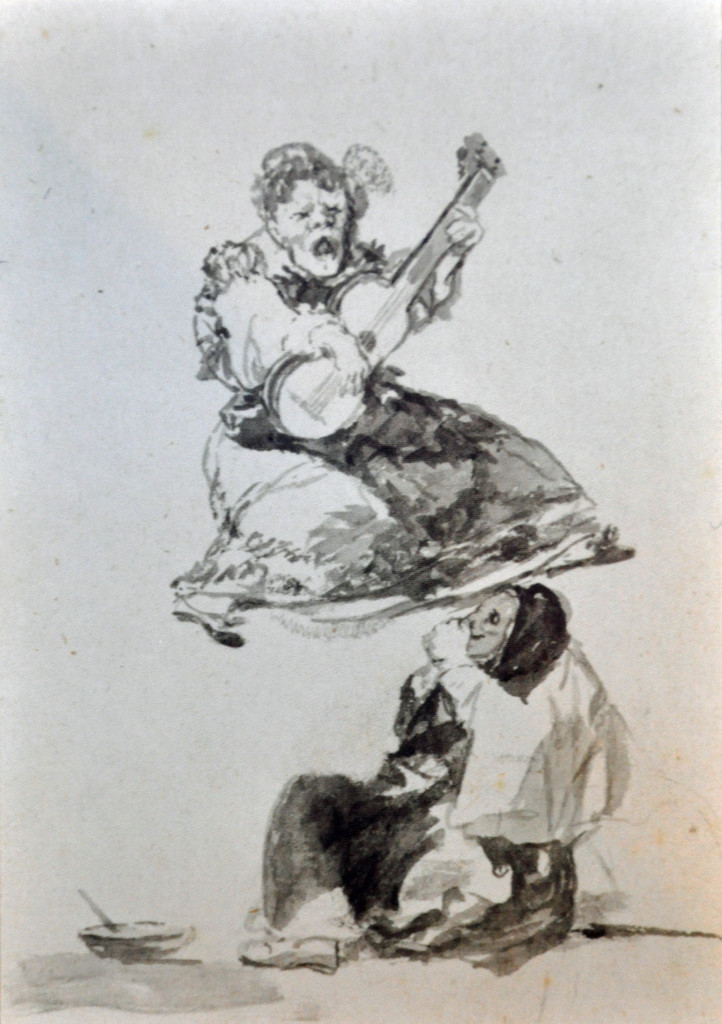
There are labour market policies – such as raising minimum wages and offering properly funded apprenticeship and vocational skills programmes – that could play a major role in repairing some of the damage done by the combination of sizable real wage falls and poor employment opportunities that have hit the wages and living standards of the young so badly.
Finally, improving the labour market prospects and opportunities for young people is an important policy aim. In the longer run, this is down to education and skill acquisition.There are no political sound bites here, just solid policy that could make a difference. Shame no one is interested in talking about it.
18th April: Troll Types
Anita Sarkeesian wrote an article for Marie Claire describing trolls by types. There’s an extract list below that makes for interesting reading.
Sealioning is when an uninvited stranger pops into your conversation and peppers you with unsolicited and insincere questions. The sealion politely demands evidence for even the most mundane or self-evident statements and insists that you justify your opinions until he’s satisfied—which he never is, since he’s asking questions in bad faith. The sealion is basically the self-appointed “good cop” in an interrogation for a crime you didn’t commit.
Concern trolling is when harassers pose as fans or supporters with the intention of masking their hostility in pseudo-displays of “constructive criticism.” When targeting women, this is most often done through “helpful” suggestions on how to improve one’s appearance or adopt a more pleasant tone. The concern troll’s disingenuous comments are actually designed to undercut or demean you. Veiled (and sometimes not-so-veiled) accusations of hypocrisy are the bread and butter of this kind of troll.
Gish galloping is a device used to derail a conversation with a flood of falsehoods and tiny arguments that focus on nitpicking or minor unrelated details, each loaded with implied accusations. The gish galloper will often assert the same argument simply rephrased over and over again. Rather than expressing sincere concerns, these petty comments are designed to distract and overwhelm you by wasting your time with tangential or disingenuous arguments that sidetrack the core issues you are discussing.
 Impersonation trolling is a strategy whereby harassers create hoax social media impersonation accounts in order to post inflammatory statements in your name. The intention is to try to get as many people as possible to believe the fake quotes and thereby defame you. These fake quotes are then integrated into the other forms of harassment mentioned above.
Impersonation trolling is a strategy whereby harassers create hoax social media impersonation accounts in order to post inflammatory statements in your name. The intention is to try to get as many people as possible to believe the fake quotes and thereby defame you. These fake quotes are then integrated into the other forms of harassment mentioned above.
Dogpiling, the mother lode of online harassment, is when a group collectively works together using dozens of tactics at once to overwhelm a target through sheer volume, clogging and choking online accounts with a cascade of disingenuous questions, insults, slurs, threats, and more. When a large group comes together to try to collectively shame, harass, or discredit a target, it’s also called a cyber mob. The goal is to silence, discredit, and humiliate the target by creating an online environment so unbearable that she is driven offline.
Gaslighting, one of the most psychologically damaging types of harassment, is when serial abusers present false information or a false narrative to make you doubt your own memory, perceptions, sanity, or professional knowledge. The harassers are attacking you and simultaneously sending the message that their behavior is not actually abusive. This intentional confusion can lead women to internalize feelings of self-doubt and uncertainty about their own reality.
Gaslighting is the undercurrent traveling throughout online harassment, forcing women to question their own experiences. “[Women are] told that they are not reliable witnesses to their own lives,” writes historian Rebecca Solnit, “that truth is not their property, now or ever.” When we dare speak up about digital abuse, the response is a cacophony of voices insistently telling us we’re making it all up or that it’s not really as bad as we think it is. We are told: “Just ignore it,” “It’s not real,” “It’s just the Internet,” “Toughen up,” and “Grow a thicker skin.” These flippant sentiments are an aggressive denial of our lived realities, erasing our experiences and suggesting that the abuse inflicted on us is not real and, by extension, our fears and anxieties about it are not real.
But the harassment is real, and if you’ve experienced it, you aren’t alone. We must actively work to create a digital world where we don’t ask women to disconnect from their emotional capacity or to jettison their own humanity in order to deal with a constant barrage of threats, slurs, and abuse.
This article appears in the March 2015 issue of Marie Claire, on newsstands now.
19th April: Insurance
Ask a person in the UK how much they earn and they will stare at you in disbelief. Ask how much tax they pay, and the answer is universal “Too much”. No one enjoys paying taxes.
Push further and you may be told that the person is a higher or lower rate tax payer. Take the person out of the question and you’ll probably be told most people in the UK pay tax at 20% (the lower rate) or 40% (the higher rate) or 50% (the top rate).
No one ever remembers National Insurance.

In fact if we look at how much income the government expects to receive via taxation (A survey of the UK tax system – Institute for Fiscal Studies) the total sum £606bn includes the following:
income tax: £167bn
national insurance: £110bn
This is a large amount of money to forget about.
Before anyone in the UK receives their wages, NI has been deducted. First their employer will deduct 13.8% from any earnings above £153/week (£7,956 pa). in 2014/2015. Then they will be required to pay their own NI at 12% on earnings £7,956-£41,860 pa and 2% on any surplus. Self-employed people pay a flat rate of NI.
Consider the situation if an employer has £100 available for a bonus to an employee already earning
a. £30,000 per annum : the employee receives £59.75. Effectively, the marginal rate of tax is 40.25% for a basic rate taxpayer;
b. £50,000 per annum : the effective marginal tax rate is 49.03% for a higher rate taxpayer;
and c. a top rate taxpayer will have an effective marginal tax rate of 57.82% on the same £100.
Given the large amount of money taken out of pay-packets in the name of National Insurance, why do people pay so little attention?
 In 1911, the UK Government established the National Insurance Fund. It was reformed in 1948 along with the establishment of the UK social welfare system and took it’s current form in 1975. Money for the NIFund came from employers, employees and the State (A Treasury supplement that accounted for just under 1/4).
In 1911, the UK Government established the National Insurance Fund. It was reformed in 1948 along with the establishment of the UK social welfare system and took it’s current form in 1975. Money for the NIFund came from employers, employees and the State (A Treasury supplement that accounted for just under 1/4).
The majority of money paid through NI today is paid into the NI Fund and used exclusively to pay for contributory benefits. One portion of the NI income goes directly to the National Health Service. The Government Actuary’s Department has estimated that in 2014/15 £85 billion from NI income would go to the NHS.
Paying employee NI entitles a person to claim retirement pensions, jobseekers allowance, incapacity benefit and bereavement benefits.
But over the years, the number of contributory benefits have declined as means-tested benefits have been implemented. Less than half of benefit expenditure (42.1%) now goes on contributory benefits, compared with over 65% in 1978–79.
An interesting generational divide has opened up. The majority of benefit spending on non-pensioners is means-tested. The majority of benefits spent on pensioners is not means tested per IFS, (A survey of the GB benefit system – Institute for Fiscal Studies pp 59-60).
So maybe people feel that paying National Insurance is in their own interests because it entitles them to use the much-loved National Health Service now and to receive their state pension when they get older.
In fact the NI Fund has always worked on a “pay-as-you-go” basis, as broadly speaking this year’s contribution’s pay for this year’s benefits. A persons NI contributions this year, pay for this year’s NHS, this year’s pensioners.
The Government has no powers to use NICs to fund anything other than benefits but…
In years when the Fund is insufficient to finance benefits, the Government has always topped up from general taxation revenues and where there is a surplus, when contributions substantially exceed contributory benefit costs (as it has every year since the mid-90s) the Fund builds up a surplus which it then “lends” to the Government in the form of Gilt purchases.
There is no clear or causal relationship between the amount of NI income and the amount of benefit expense.
Beveridge described his plan for social security as:
“first and foremost a plan of insurance – of giving in return for contributions benefits up to subsistence levels, as of right and without means test, so that individuals may build freely upon it”
He believed the contibutory principle might be stated as follows:
“that a material part of the total cost of maintaining income under the plan shall be met from monies contributed by citizens as insured persons, on the basis of each individual paying the same contrbution for the same rate of benefit”
In June 2000 the Social Security Committee completed an enquiry on the contributory principle and observed “there is very little direct financial relation between what an individual puts into the Fund and what they get out” Over the years the link between the contributions paid in and the benefit received has been loosened so much that the system can only be regarded as a pay-as-you-go scheme.
Although the vast majority of people living in the UK believe that there is a direct relationship between what they pay and what they will eventually get out of the system, no such link exists. No one has ever paid or will ever be asked to pay the full value of the benefits that they claim. They may pay more or less because even on the pension side, the beneift is never actuarially calculated.
The entire scheme functions as an inter-generational apportionment process whereby the working generation today pays for the pensioners who have already retired. We go forward in the hope that each successive generation will pay for us in a similar fashion.
In a population where more and more people survive into old age, and fewer and fewer children are born, there is an obvious problem with the plan.
47% of all UK benefits spending is currently allocated to state pensions. Obviously as we grow older, we rely on pension income, we also cost the NHS more and more to maintain. The NHS has recently announced that if everything goes well, it will need a minimum of £8bn more simply to provide the same level of service.
How much do your children love you?
20th April: Motherhood
Everyone has advice for new mothers, often contradictory. Certainly if you have more than one, by the time the second one comes around, most of the Government advice seems to be turned upside down.
A woman I follow on line has recently had a baby boy and to a certain extent I’m forcing myself not to write. I’m certain she’s drowning under a tsunami of helpful hints. This post is transference of the lowest order – sublimation.
What advice was actually useful?
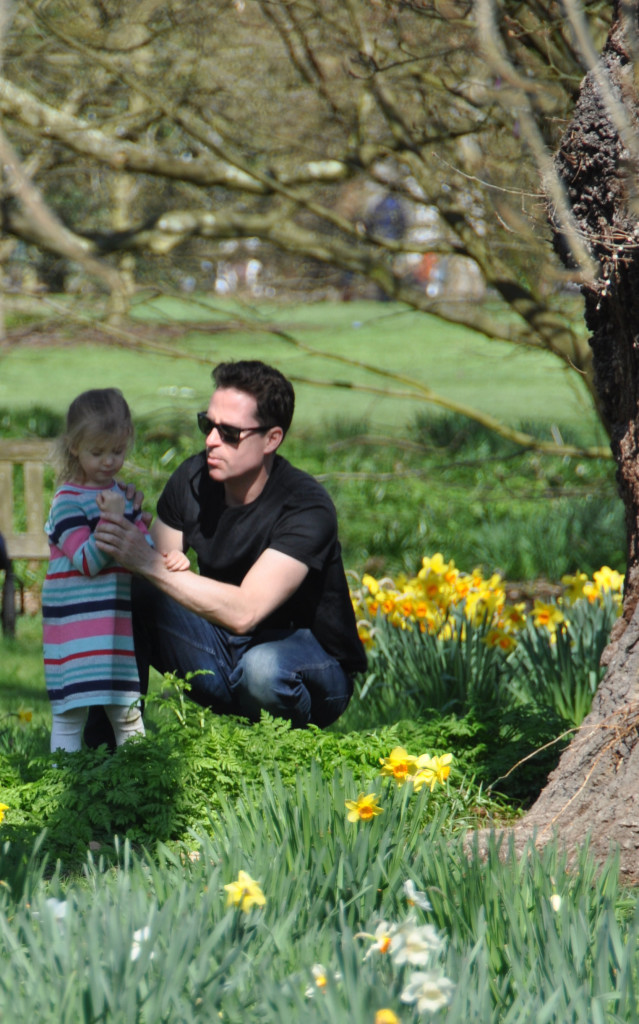
As long as they’re alive there’s hope.
This sounds like a joke but isn’t. As long as your baby is alive and kicking, all else can be recovered or redeemed. Alive and healthy (basically) at the age of 18 and you have been a succesful mother. It’s important to set this goal upfront because the one thing missing from a mother’s life are clear and concise critical success factors. Life in paid employment is full of ways to measure your success. Sometimes motherhood can feel like one long measurement of failure. Alive and well – the only things that matter.
You will screw up. All parents screw things up.
The mistake isn’t even half as important as how you choose to deal with it afterwards. You can stick with the mistake or you can decide to change. Change is difficult: admitting that you’ve done something wrong, deciding what you will do to put it right, choosing what to next time instead of repeating the pattern. At some level, if you know you’ve made a mistake or done the wrong thing, your child will know as well. They will learn to deal with their own mistakes from the way you have dealt with yours. Should they dig in and refuse to acknowledge their fault or will they concede the mistake with grace and move forwards?

Parenting is a two person occupation. Single parents are miracle workers.
Having two people around to parent takes away some of the stress, physical and emotional. It also helps with the finances which takes away even more of the stress. Doing things together with your baby is nice. Spending time on your own with the baby is also worthwhile – it’s good for your relationship with your child and is good to give your partner a break.
Everyone needs some time and space to themselves
Where one person is at home with the baby most of the time, having some “me time” is important.This could be just an hour on the weekend where their partner takes charge of the baby. I joined a gym with a creche/nursery that allowed me to put my baby down, physically away from me for 90 minutes every day I went there: 60 minutes exercise, a quick shower and just 15 minutes with a cappacino and newspaper on my own, knowing that this time was mine kept me sane.
Everyone needs a break from parenting.
We booked a babysitter for every Wednesday from the beginning. We started with local restaurants so that we could get home in less than 5 minutes if needed and probably spent most of the time taking about our baby anyway, but it carved out some time for us and our relationship as people rather than parents. It also meant that our kids were always used to the idea of a babysitter and never threw tantrums when we left them.

You will turn into your own parents, and your parnter will turn into his parents, sometimes with disastrous consequences.
If you had a good childhood this might not be a big problem for you, providing your partner also had an identical good childhood. The big things such as discipline,whether to smack or not (please not) usually get discussed sometime during the pregnancy. But smaller stuff such as manners, please, thank you, writing thank you cards can be a minefield. Attitudes to food can be tricky to negotiate. Should your child finish the food on their plate? Should they be required to sit at the table with the family until everyone has finished eating?
At some stage you will find yourself saying or doing something that your mother once said to you, that you found ridiculous at the time. You have to decide whether to go with it or rip it out of your system. Worst case scenario, your partner and you will come across the opposing parenting behaviour pattern, and be conflicted as to which pattern to stick with and which to change. It is worth talking it through and agreeing a common way forward, always.
Think about the long term consequences when deciding what lines to draw.
It can seem like a lot of effort to enforce a relatively trivial rule but later on in their life, it may become more important and less easy to enforce. Changing behaviour patterns is always more difficult (never impossible) than building new ones.
Your child needs to be able to walk with you holding their hand, to come when called and not to wander off. All safety rules need to be enforced.
Your child will have to learn to sit still at a table and eat a meal. They need to eat a broad enough range of easily prepared food. People think twice about inviting fussy eaters over for playdates. Saying please and thank you (especially after a meal) and asking once finished whether they can “Get down from the table” is always good. Manners will vary from culture to culture but no one ever complains about a child being too polite.
 They will need to learn to share their toys. They will need to learn that hitting, biting and being a brat are unacceptable. Some kids are born sunny natured. Some are born exciting and thrilling playmates. Some have to learn social skills as if they were from another planet.
They will need to learn to share their toys. They will need to learn that hitting, biting and being a brat are unacceptable. Some kids are born sunny natured. Some are born exciting and thrilling playmates. Some have to learn social skills as if they were from another planet.
Food is tricky. You will hear lots of nonsense and only you can decide what works best for you and your child. A little bit of everything worked for me.
If you want your child to be healthy, eating at last five potions of fruit and vegetables a day is a good rule but you need to have enough meals in a day to make it possible. One way is to build it in from the early days.
We decided that breakfast should involve fruit juice or a piece of fruit. Have a mid-morning apple snack (our local school instigated this policy and it worked well). Lunch should involve salad or vegetables (crudite carrots, cucumber etc were always popular with kids to dunl in some hummous etc) and another piece of fruit. We always had milk and biscuits mid-afternoon. Dinner time always involved vegetables or salad with the main course, a fruit course before desert. To get to the cake, you had to go through the fruit.
If this sounds like a lot of food, my kids have always eaten at least this much each day (extra fruit has always been available in the fruit bowl) and they’re both stick thin. Building snacks into a daily routine is more healthy than ad-hoc snacking or grazing all-day long.
They have always eaten full-fat milk, butter and dairy and eggs. We made a point of feeding them a range of carbs, bread, potatoes, rice, noodles from the local Chinese Store and pasta.
I have no interest in organic.
Babies are egotistical bastards who genuinely believe that the sun, and their parents revolve around them and exist to serve their every need. This is how they’re supposed to be – they have absolutely no empathy.
A newborn baby will cry when it wants or needs attention. It has a very small stomach, very small bowels. It will spend most of it’s times eating, sleeping and pooping, usually in 3 hour intervals. This is pretty much torture time for any rational human being used to staying awake for 16 hours and sleeping for 8hours. You need to make the adjustment because the baby can’t adjust physically and isn’t designed to think or emote or understand anything other than his/her immediate needs.

Some practical advice that helped me:
After about 20minutes your boob is empty of milk so any sucking is reflective, comfort based not nutritional. Move your baby on to the next boob for the next 20 minutes and then put them down to sleep. If they won’t sleep straight away, rock them in a rocker or walk them around the block in a buggy.
Cold cabbage leaves fresh from the fridge really do help calm down mastitis.
Breast milk and bottle milk can succesfully be used together – don’t panic. I breast fed the last feed to my babies for a year after moving them onto bottles. There are no health studies showing the benefit of breast milk past 12 weeks so don’t beat yourself up about it if you can’t or don’t want to breast feed.
When they’re ready to sleep, babies will sleep through anything. It’s quite useful later on in life to be able to sleep without blackout curtains or total silence so try not to enforce these too early on in their life – you may never need to.
When they wake during the day, play with them. When they wake during the night, clean them, feed them and put them back to sleep. Night time is not playtime. If your partner fails to understand this, torture them.
We all need to learn how to fall asleep. Our sleeptime is spent falling deep into sleep, part waking and soothing ourselves back to sleep. We learn how to do this as babies and young children. When your baby rumbles or grumbles in the middle of the night, pause before rushing to them. Give yourself time to learn the different types of cry your baby is making. There’s a big difference between “I’m bored and want to play or cuddle” and “I’m scared” or “I’m mucky and need attention” Trust yourself to know the difference.
When you’re trying to stretch out the nightime feeds, make the last feed late say midnight and try to stretch to 6am, then try to stretch from 11 pm, until you can manage 10pm to 6am. This is what success feels like. Let them have a clock in their rooms and show them what 6 am looks like, then 7am and 8am. Agree a rule eg. they may not come and wake you up before 6am (make it 8am for the weekends) but can play quietly up to that point.
Sleep is important. Lack of sleep is torture.
My kids had afternoon naps until they went to school agend 4-5. Even if they weren’t sleepy, they lay down in their cots/beds and had quiet time. I loved afternoon naps.
Children need more sleep than you think. They should be sleeping 10-12 hours throughout primary school. Set a bedtime, say 6pm and stick with it until they’re bouncing out of bed at the other end say 6am. If you have to drag them awake each and every morning, they’re probably not getting enought sleep. My teenagers still get up at 6am for school. They go to bed at 9am on a weekday and that’s okay.
As a rule of thumb, a child can be left to cry for 1 minute for every year they’ve lived upto around 10minutes (for a 10 year old+).
Some people cannot allow their children to be upset. Whilst I have some sympathy and admiration for this, I couldn’t do it myself. Since neither of us though smacking was a good idea, tears and tanturms were inevitable. Explaining what a child has done wrong, and setting some time out for them to think about it was our way forward.
Letting them sit on the step or in their room for 1 minute, or 2 or 10 before coming in to ask whether they were ready to apologise was our way of dealing with bad behaviour. It takes more time than a smack but we thought the message it gave was better: socially unacceptable behaviour is met with social exclusion, take your time, think about the problem and then apologise to bring the matter to a close.
Sooner or later you beloved child will scream at you that they hate you. It will hurt.
Kids save their worst behaviour for their parents. They trust us to love them whatever they do and that’s our job. We struggle to get the balance between identifying and acknowledging they’re behviour as unreasonable and unnaceptable with going ape-shit crazy.
You child may not have the same communication style as you – it will lead to lots of miscommunication, trails and tribulations. It helps to have a second person standing by ready to help out.
Parenting is a job ultimately about letting go.
We spend years keeping them safe, loving them, protecting them from the big bad world and then we have to let them go. It hurts. If we have done our job properly, it only hurts us. They should be alive and well at 18 years and ready for their next big adventure.

21 April: Northern Ireland
Northern Ireland is a strange place compared to the rest of the UK for lots of reasons. I’ve just finished reading an article by Neil Matthews published via the LSE that looks at why there are so few women selected for political parties, something it attributes in large part to ” … the clear sexual division of labour in a region which displays almost ‘hyper-traditional’ conservative attitudes to women’s role in society and politics”.

And ofcourse the Troubles are a large part of the reason for the differences.
When I first came to live in London, bomb scares were common, as indeed were bombings by the IRA. I can remember the rubbish bins disappearing from public places because they were the common hiding places for bombs. I remember going to work and regularly having to make detours because this or that station was closed because of a bomb scare. And life just went on regardless. Like everyone else, I had to work to earn money to live and had no choice to stay home and perhaps stay safe.
I remember the murder of the members of the extended royal family, the hunger strikes, the Brighton bombing of the Conservative Party and Enniskillen where on 8 November 1987, an IRA bomb exploded. It was during a parade on Remembrance Day by a cenotaph which was at the heart of the parade. Eleven people (ten civilians and a police officer, along with a pregnant woman) were killed and 63 were injured.

And whilst I’m convinced that the Peace Process was worthwhile, I’m not certain that peace has been achieved. Not with any certainty. When a brief look through the N Ireland headlines still include bullets and bombs, even outside of the Orange Marching season.
The Orange Order is a Protestant fraternal organisation based mainly in Northern Ireland though with some connections around the world including in Glasgow (where my father’s family were members) a bit like a Masonic Lodge.
The Order is best known for it’s yearly marches, the biggest of which are held on 12 July, which celebrate the defeat of the Catholic James III by the Dutch-born Protestant king William of Orange (King Billy) at the Battle of the Boyne (1690). needless to say, marching to support the defeat of a Catholic King many years ago, is easily translated into a denigration of catholicsm generally and is regarded as offensive by the vast majority of the catholic population in Northern Ireland (roughly 45% population).
Perhaps it’s obvious that in a conflict situation people become more conservative socially, more risk averse as they cling to the old, traditions.

By British standards, this months headlines suggest that Northern Ireland is unusually religious, conservative, racist and intolerant of difference.
Belfast nail salon hit by ‘racist’ arson attack – The Guardian
Murder probe as body found in boot – BelfastTelegraph.co.uk
Bullets and bombs fail to faze MP in crucial East Belfast seat …
Dawn Purvis changed the face of the abortion debate in …
Children cling to dad as he’s beaten by dissident gang …
The racism is a new feature largely because up until recently N Ireland has been one of the most mono-culture areas of the UK. It is still almost entirely white (98.2%) but freedom of movement within the EU has brought newcomers to Northern Irleand and notable problems with racism especially towards the Roma population.
It’s clear that the Troubles have left a troubling legacy. The economy in Northern Ireland is best described as vulnerable, moving from a shrinking manufacturing base towards new tech. and tourism. Every year the Unionist marches cost hundreds of thousands to police.
There are a worrying number of investigations and inquiries into the past that again cost thousands yet cannot be avoided because so many of the victims’ families are still alive. It seems clear to many that the current leadership of Sinn Fein were involved in many of the atrocities as ofcourse were the established police and British government. No one has clean hands. It’s a difficult thing to let go of if you’re living with the death of your mum or dad, brother or sister and you see those responsible now in power.
The paramilitary organisations have moved on and become crime or vigilante gangs but they haven’t gone away.
Yet outside of Belfast, Northern Ireland is in many ways one of the safest places to be with some of the lowest levels of crime in Western Europe. Within Belfast the statistics are difficult to compare because of the still high incidence of crime associated with the Orange Parades.
It is also one of the most beautiful places in the UK, as the many film makers who come to use the place as a backdrop can attest. Maybe Game of Thrones really can be the saving of the Northern Ireland economy.
22nd April: Balance
Slightly more boys are born than girls in a ratio approximating 107:100. The sex ration for the entire world is thought to be 103:10 (“CIA Fact Book”. The Central Intelligence Agency of the United States) but there are sriking regional variations.
Map indicating the human sex ratio by country.[1]
|
Red – Countries with more females than males.
Green – Countries with the same number of males and females
Blue – Countries with more males than females.
Grey – No data
|
For example, in Germany the ratio falls from 1.05 for 15 to 65year olds to 0.70 for the group over 65.
We are seeing huge changes in the demographics of whole populations. The lack of girls born is now translating into a lack of women, a lack of wives and partners in a culture where marriage is seen as a fundamental qualification for being considered adult and succesful.
The consequences of such large gender imbalances have yet to be worked through. It is likely that a population with significantly more young men than “normal” may result in the threat of social unrest, especially in the case of an excess of low-status young males unable to find spouses, and being recruited into the service of militaristic political factions.
Reports are starting to appear in newspapers of gangs buying or stealing young girls in China’s poorer neighbouring countries such as Laos. The girl children are trafficked into China where they may if lucky be bought by a family to assure their son of a wife later in life.
They are ofcourse more likely to end up in the sex trade.
26th April: Not English
When I was growing up, we knew that we weren’t English and we believed this was a good thing. It would be too strong a word to say we despised the English but we were definitely glad to come from the right side of the border.
My grandmother would tell stories of being smacked at school for speaking Welsh in public, of being made to walk around the village with a board around her neck with the words “I am a stupid Welsh girl” written for all to read. It was clear that the English were or at least had been the oppressors, the bullies in our family history.
By the time I came along, the youngest daughter of a youngest daughter, she had forgotten most of her own birth language. Her parents encouraged her to move forwards and put Welsh behind her. English was the language of the future, of the educated; it was the way to be successful, to get an office job.
Well, she married a miner and not a very healthy one, so with five children never really had the time or money to get ahead. She lost her language for nothing and was never allowed to forget that she was poor Welsh working-class trash by her “betters” .
By the time I came along, the language was resurgent. We all joined choirs and joined up in the annual Welsh language Eisteddfod competitions. Every Welsh school seems to have at least one choir no matter how tiny the village. And ofcourse there are church and chapel choirs. Aside from singing there was group and individual poetry and music recitals to take part in – it was all a major part of our lives.
You didn’t need to be able to sing to belong to the choir, you just had to breathe. There was a total and absolute belief that everyone could and should sing together. And even now there is something magical in massed voices – the way that everyone is brought up to a level of beauty, of shared endeavour and joy.
We all learned to speak Welsh as a foreign language, something to practice at school from the age of four or five, but without really learning the grammar because this was the 70s and who needed to learn all that dull stuff. Luckily enough it’s an incredibly easy language structurally. If English has a couple of hundred irregular verbs Welsh has around 6 or 7.
Since it was only written down in the 19th century, after a concerted effort to kill it off, the language is essentially phonetic. If you can read the word, you can say it. Being children we didn’t know that “ll” was a difficult sound or that most English people add dipthongs to the end of their vowels. We didn’t know or care what word we learnt in what language. We learnt to say and spell fire or tan, house or ty, lake or llyn, without any real thought.
But life was still very slow. In the Summer we would wander down to the estuary and pick samkins (samphire) after a family picnic. There’d be families all along the marsh banks with kids wading through the warm mud. I can still feel it inbetween my toes. We’d walk past the “holy” the cut where water flowed down from the town still the site of a Catholic shrine.
A Christian princess was supposed to be married off to a pagan warrior but on refusal had her head chopped off. Where her head fell, a healing spring shot up out of the ground and as the water splashed against her neck, it reattached and a miracle was declared. Her pagan murderer was convinced and converted. The sick have been visiting ever since making donations to an order of nuns when they could just come down to the river and splash about with the locals.
There were weeks away from home at the camps run by the Urdd where everyone was obliged to speak Welsh while they tried to learn how to roll a kayak and went walking around Snowdonia, learning the Mabinogion.
There was also Thatcherism and the closing of the colliery. Looking back, it’s easy to see the build up from both sides of unionism and political will to succeed but it was hard going to school with kids without money for food at home. It was hard sitting in a pub lock-in (the next county along was dry on Sunday) listening to stories of this person or that person and what they’d had to sell to make ends meet that week. Thatcher seemed so very little-Englander.
And in the background the absolute conviction that we were in real danger of nuclear apocalypse.
And there was also the burning of holiday cottages along the way, where the English would come down for a couple of weeks in the Summer. Never anything said about who was responsible, but no real commitment to asking for detail down at the pub. We all knew where the trouble came from.
As the child of a Scots father and Welsh mother, I was more than a little conflicted by the nationalism around me, but could still believe quite clearly that I was blessed to not be born English and that I’d never be a Tory.
So it causes a surprising pang still when I speak to my very, very English sounding daughters on the phone and when I see their nationality written down on forms as English. The whole debate about nationality currently flooding politics thanks to UKIP seems a little bitter-sweet to me now.
I’m still glad not to be born English, happy enough to claim British as my nationality. I have no need to insist on ticking the “Welsh” box on forms and regularly visit a Welsh holiday home, unburnt.
My oldest daughter is learning 20th century history. It hardly seems history at all.
But only the English are glad to be English. It requires a vast unknowing or disregard for the history of oppression and colonialism visited on the rest of the UK and the rest of the world.
It requires a shocking lack of historic context to disparage the immigrants from the various ex-colonies currently propping up the NHS, or the asylum seekers desperately seeking stability in the country responsible for destablising the entire African continent and Arabian peninsula with it’s neatly enforced and totally fictitious straight-lined boundaries.
28th April: Masculine
Type the word masculine into a search engine and you get a fairly standard definition of the adjective:
- synonyms: virile, macho,manly, all-male, muscular, muscly, strong, strapping, well-built, rugged, robust, brawny, powerful, red-blooded, vigorous, hunky, ripped, shredded, jacked, mannish. manlike, unfeminine, unwomanly, unladylike, Amazonian; or,
- synonyms: butch, dykey, viraginous, viragoish,
29th April: Bedding
It’s too early for Summer bedding but I can’t wait. Tradition would suggest that geraniums (pelargonium, not perenials) should not be put into the ground until the second week of May but I took my friend I to the garden centres up at Crew’s Hill yesterday for a look at what’s available this year and I knew that I wouldn’t be able to come home empty handed.
Part of knowing that I’m well into my middle age, is the fact that hanging baskets have become an annual tradition in my garden. I have an increasing familiarity with the kinds of flowers only grandmothers should be able to identify: geraniums, begonias, petunias, silver leaf, lobelia.
I wanted to find flowers for: two hanging baskets, two wooden tubs, two troughs and four largish plant pots. That probably involves buying 12 plants each for the baskets, at least 5 plants for each tub, 6 each for a trough and 2 or 3 for each large plant pot. That makes at least 54 plants, maybe 60 to buy without adding anything to my borders.
Later when the tulips go over, I’ll have another two troughs and tubs to fill.It’s a bit daunting when I count it all up.
My friend chose a tasteful colour scheme of peaches and cream like last year, but though I may head out to the flowers with similar intentions, I am inevitably seduced by less than tasteful fuschia pink colour; this year it turned into a pink/purple clash. My garden is quite long, and to be seen from the windows on a rainy day, I have to plant something with a bit of zing. Possibly if I really wanted to be tasteful and elegant, I might go for a restful white that might pop out against the green yew background.
As a stepping stone towards a more broad use of white, might be using it with pot plants in the shady garden, though maybe a lemon yellow begonia would be better. It’s all well and good planting up shades of green into the shade, but it gets a bit dull and dusty in the dry summer when the perenial geraniums get mildewed and sad. I have a very good aster that fills a useful place but dry space always causes problems.
We’re also extending the gravel garden on top of the garage and have some plants on order for that which will arrive next month. It’s a bit of a challenge to try and set it up as self-supporting.
The answer is clearly sedums and saxifragas but alpines are very tempting. last year I shoved in a load of bulbs, and some seed for poppies and california poppies. We shall have to see what turns up in the Summer. It might look a total mess but I’m hoping for a bit of chaotic mayhem.
There are some troughs at the edge which ideally would have perennials that spill over the sides but have ended up with a hodge podge of plants. Some Erigeron karvinskianus (Mexican fleabane) have just arrived and will hopefully make for a long-lived daisy that I can plant up with Verbena bonariensis Lollipop(a mini verbena).
If the blue grasses from the Winter baskets are still alive next week then maybe they can make their way onto the top of the garage as well. The remainder of the plants look pretty dry and dead, but will be put in the shady garden anyway. It’s amazing what ajugas and heucharas can survive.
Even me.
30th April: Origins
Write “masculinity” in a search engine and “toxic” pops up as well.
Toxic masculinity is a phrase that first arrived with men’s movements and literature in the early to mid 90s. It was used to discuss negative cultural issues facing boys and young men but has since been appropriated in a number of ways.
It can be used in feminist articles to describe negative characteristics of a hyper-masculinity such as excessive male violence and entitlement. At the same time it’s used as a response to feminist criticsm to describe a supposed demonisation of men themselves.
But originally the phrase was not a feminist critique of men so much as a male-focused examination of how modern culture could be failing boys and young men and what could be done about that failure. As part of the original discussion, the Mythopoetic Men’s Movement (MMM) espoused a belief that louder women’s voices were muting the voices of men, leaving men without a positive, ritual way of developing and celebrating masculinity.
The MMM saw men as emasculated and in crisis.
Shepherd Bliss who invented the MMM also seems responsible for the term “toxic masculinity.” He contrasted this with what he called “deep masculinity,” a more cooperative, positive form of masculinity which he sought to “recover”. He lays this out at some length in response to pro-feminist criticisms of the MMM in the edited volume The Politics of Manhood: Pro-Feminist Men Respond to the Mythopoetic Men’s Movement (1995).
Throughout most literature, feminist, misogynist and neutral, the words male and masculine are used almost interchangeably but arguably the two are not the same and should not be confused.
Male gender is certain. It is how we self-identify whether we are born cis- or trans-, gay or straight. It does not change with circumstances, or place or over time. It does not change whatever our personal characteristics, whether we are sergeant-majors, or poets, whether we conform to masculine behavioural norms or not.
Masculinity describes the attributes we associate with being male, not the essential fact that a person knows themselves to be a man. Masculinity is not certain, but rather precarious. It is a state of social approval or acknolwedgement depending often upon painful or extreme social rites and rituals, even in our developed Western world with it’s sports teams, gangs or “frat” packs. It is not a permanent status but one that needs to be constantly earned and affirmed in society.
“Be a man: grow a pair”
It’s important to differentiate between male and masculinity; one is innate, the other is driven by social conventions and varies by place, time and circumstance. When a man’s masculine identity is challenged, he has a choice how to react.

The more secure a man is within his own gender, the more confident his reaction will be. Thus an actor such as Terry Crews – a man who embodies the “traditional” masculine ideal – speaks openly about the absurdity of gender roles and the need to abandon toxic masculinity. He is someone who benefits from the current status-quo, yet recognizes the damage that it sometimes does.
GamerGate provides an example of men who don’t fit the traditional definitions of “masculine” – who by their own words are frequently oppressed and bullied by “manlier” men (jocks, preps, bros, Chads, etc) – reacting to a challenge to their rather fragile masculinity.
Gaming has become a place for rather fragile men “to be men” – in essence, the only place where they can validate their masculinity which they may feel society otherwise denies them. When challenged, their reaction has been to retreat into more extreme, charicature hyper-masculine behaviour.
Across the world and in various scenarios, researchers have found that men often respond to threats to their masculinity by engaging in more stereotypically masculine behaviors and cognition in a more extreme fashion. This hyper-masculine behaviour can include an increased support for hierarchy or status, espousing homophobic beliefs, increased aggression, and choosing physical tasks over intellectual tasks.
So the original discussion around toxic masculinity could be focused on how to allow or ensure that boys and young men could feel more secure in their masculinity such that any challenge could be met in a more positive fashion but it also needs us to understand why young boys and men have such fragile self-identity.
1st May: Mad Men
It is always dangerous to extrapolate from extremes and outliers, something that is pointed out everytime a man or young boy goes on a killing spree. We are told that they have mental health issues, are in no way typical or normal and their behaviour cannot and should not be used say anything meaningful about men or masculinity.

Maybe.
What can be said is that mass murderers are almost inevitably male. Mass murderers are “normally” men. The people who go on random killing sprees are “normally” men too. Serial killers are usually men as well. The crimes are outliers or extremes, but the gender of the perpetrators is a mundane, everyday fact. I would bet a lot of real money (my own) on predicting the sex of the next US spree killer – no one sensible would take that bet.
Rampage killing has it’s own wikipedia page – a long, long list of men’s names across countries and type of killing spree.
Violent crime is “normally” male crime.
In the US, 90% of all homicide crime is committed by men. (“Homicide Trends in the United States, 1980-2008” United States Department of Justice) and men are most often the victims of male violence.
It has become unsurprising for young men in America to go on killing sprees, targeted at schools, at cinemas and often (perhaps increasingly) targeted at young women.
At the beginning of the year, 18-year-old Ben Moynihan of Portsmouth, Hampshire was found guilty of attempted murder. He stabbed three women aged 20, 45 and 67 in random attacks as they walked alone in the north area of Portsmouth, Hampshire, in June and July last year.
He left letters, including a photograph of himself for the police.
“When women won’t talk to you, it’s heart breaking. Why are they fussy with men now days?” sounds like the sort of thing that might be said by any angst-ridden teenage boy who just hasn’t yet figured out relationships.
These are the type of sentiments you can hear all the time from frustrated single men. But then it tips over the edge: “All women needs to die and hopefully next time I can gauge their eyeballs out.”
Over the summer, he stabbed three women, all complete strangers who were unlucky enough to become targets of his rage toward all women. His victims survived, but as he later told police, he fully intended to murder them.
He also created a self-recorded video where he said, “I think every girl is a type of slut, they are fussy with men nowadays, they do not give boys like us a chance.” He continued, “I am still a virgin, everyone is losing it before me, that’s why you are my chosen target.”
He ended with this warning: ”So I hope you learn a lesson not to bully guys like us, we deserve dignity, for your own generations, remember.”
The most chilling document was his diary written during the period of the attacks, in which he declared: ‘I was planning to murder mainly women as an act of revenge because of the life they gave me, … I attack women because I grew up to believe them as a more weaker part of the human breed.’
Killing sprees combined with performance art for the social media generation have arrived.

Just under a year ago, 22-year-old virgin Elliot Rodger went on a shooting spree near the University of California, Santa Barbara. He killed seven people, including himself. In several Internet postings, including a 141-page manifesto, he made his motive clear. “For the last eight years of my life, ever since I hit puberty, I’ve been forced to endure an existence of loneliness, rejection and unfulfilled desires, all because girls have never been attracted to me,” he said. “If I can’t have you, girls, I will destroy you.”
In 2009, George Sodni a 48-year-old went on a shooting massacre at a gym in Pittsburgh, Pennsylvania, killing three women and injuring many more. He too posted online about his lack of sex. “No girlfriend since 1984 … Who knows why. I am not ugly or too weird. No sex since July 1990 either (I was 29). No shit! ”
Mental health is a critical part of the equation in these cases. Not all lonely men set out to commit mass murder. But it is striking that women with similar mental health issues, with relationship problems, no sex life and serious self-esteem issues do not go on killing sprees with an eye to their follower numbers on twitter.
Why?
Should we be alarmed that these outlier men are driven by attitudes that are everything but outlying? It is not at all unusual to hear or read similar bile on-line. The rants about girls not going for nice guys and the hysteria directed at women for being slutty is hardly noteworthy on many social media forums.

It’s entirely familiar to women on-line, including the threats of murder, rape and torture. It is entirely familiar to women cat-called by strange men on the streets of any major city.
It’s difficult not to see the root of all this as based in an idea of masculine sexual entitlement and the desire to control female sexuality.
It is clear that for these individual men, their own rather precarious gender identity is being challenged. They do not feel like “real” men. And as studies have shown around the world, when their gender identity or status is challenged men often retreat into acts of hyper-masculinity, violence, homophobia, misogyny, an excessive respect for male authority, success and dominance etc.
As Amanda Hess wrote in the wake of Rodger’s shooting spree, misogyny serves to control men as well as women. “It expresses itself in the bullying of insufficiently masculine boys, in the pervasiveness of homophobic slurs, in the suppression of open emotional expression among men, and in overwhelming violence against trans women, who are especially stigmatized for appearing to reject what some consider as their God-given male bodies.”
Most of the victims of male violence are other men.

Society’s definition of masculinity is still too narrow.
Why would a man regard a sexual relationship with a woman, any woman rather than a specific person, as necessary to their own sense of self-worth?
We might want to be in a loving relationship for the sake of our own happiness, but this is not what these men are describing. They are talking about women as a necessary object or talisman acquired in order to demonstrate their masculinity, in which they have wrapped up all of their sense of self-worth.
One can imagine a village in the developing world where a young boy is required to undergo any number of painful rituals in order to be considered a man, to demonstrate his strength and vigour. In this scenario, the acquisition of a wife may be a clear pre-requisite to status. To qualify as a “real” man, the boy must be married. Similarly a woman may need to be married in order to be regarded as an adult.
But an increasing number of women in the developed world are single. For women, being married is less and less an issue related to status. It has become a personal choice where most choose to find a partner with whom they are happy to share their lives. And if their needs are not met within a relationship, more and more women walk away.
For a woman, being single is not life threatening when they are angst ridden teenagers or later in life.
How do we move to a situation where men’s relationships are regarded as personal not public, where the individual people involved are more important, where men are free to regard themselves as men irrespective of their relationship status?
4th May: Violence
The Lancet includes a recent report Addressing violence against women: a call to action which states the obvious, but states it well.
As part of that series Jimmy Carter, ex-US President makes the following comment:
“Patriarchy is not new. It is a system created and maintained by men of faith and politics who hold the levers of economic, cultural, and political power and who confuse strength and masculinity with domination and brutality.
Patriarchy must be replaced by a system in which equal human rights and non-violence are promoted and accepted. This will happen if we embrace the kind of love and mutual respect exemplified and preached by the founders of the world’s great religions, and through the persistent efforts of those who speak out and work for a more equal and less violent world.
Equal human dignity is a human right, as codified in many global treaties. It is my hope that political and religious leaders will step forward and use their influence to communicate clearly that violence against women and girls must stop, that we are failing our societies, and that the time for leadership is now.”

Whilst all violence, including that against men and children, is a serious human rights and public health concern, The Lancet Series focuses on violence against women and specific forms of violence against girls. It notes that for this group, the forms of violence experienced are frequently hidden, socially sanctioned, and not recognised or adequately addressed by the institutions that should respond.
The tide of silence has been slowly turning thanks largely to the sustained advocacy and organising of women’s movements locally and worldwide but this is an area which remains vastly under funded: compared with national public expenditure on entertainment, sports, or election campaigning (for example, the 2010 FIFA World Cup cost around US$3·5 billion), only $100 million is benchmarked for investment into violence programmes by 2015 by the UN Trust Fund.
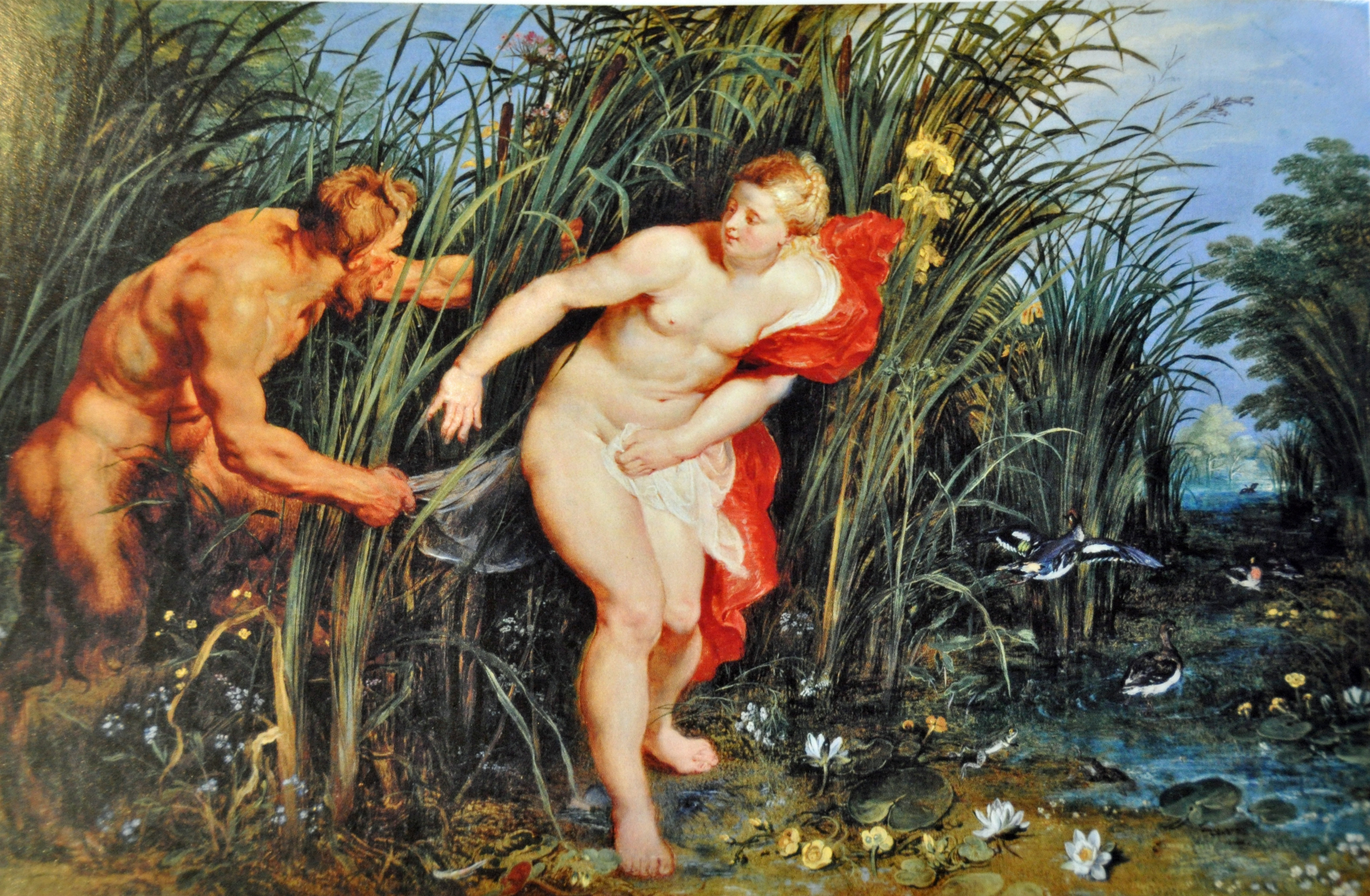
It is the fifth in a series of five papers about violence against women and girls with the following key messages:
- •
Violence against women is a worldwide issue, with intimate-partner physical violence, sexual violence, or both, affecting one in three women, leading to substantial health effects that are important determinants of morbidity and mortality.
- •
Violence-prevention interventions can reduce levels of intimate-partner violence and should seek to address attitudes, norms, and beliefs that justify violence against women, link dominant notions of masculinity to male authority over women, and stigmatise victims, especially in low-income and middle-income countries.
- •
Political leadership and governmental investment are essential to reducing violence and should be used to include annual monitoring of prevalence of intimate-partner violence and promote change and coordinated response at a national level.
- •
The health sector, other sectors, and civil society have crucial parts to play in the prevention of and response to violence against women and children, particularly to eliminate stigmatising attitudes among health-care providers.
- •
Investment is required in research to collect data on the magnitude of all forms of violence against women and children, particularly forms specific to girls, and assess the effects of prevention and response strategies.
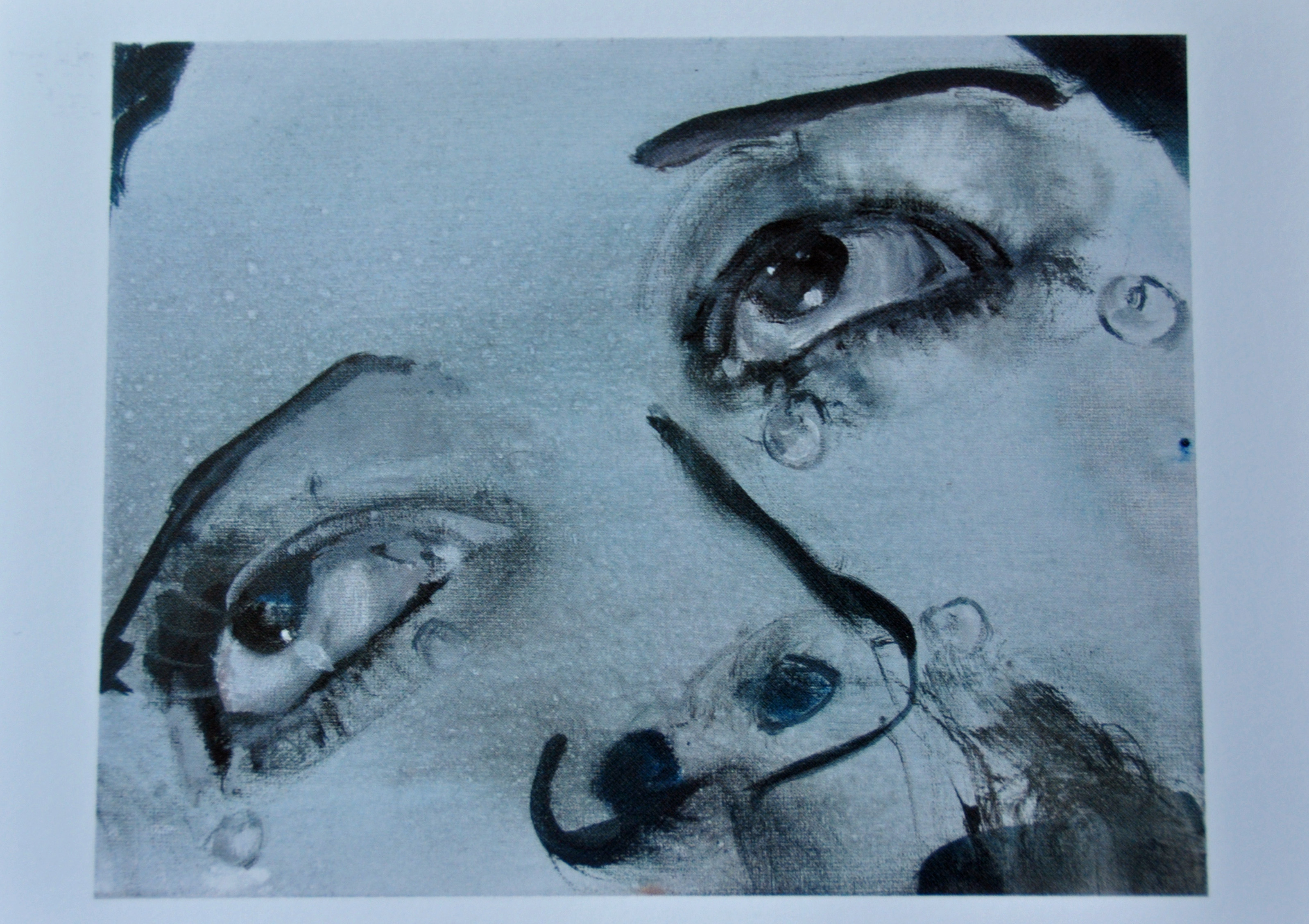
5th May: Good News?
Another month, another newspaper (the Daily Mail) and it’s still shockingly easy to look through the April headlines on-line and find a long list of apalling violent crimes committed by men, often with women and children as victims.
And whilst news headlines are clearly not everyday events in my own life, it seems male violence is an every single day event in real life.
Depressing.
30th April:
Ceri Linden’s rapist Masood Mansouri convicted with …
Todd Mandoline accidentally killed girlfriend in … – Daily Mail
29th April:
Jimmy Savile abused 23 girls at Duncroft School for …
28th April:
100-year-old American tourist falls prey to mugger: Thief …
27th April:
Why didn’t NHS chiefs stop rapist male nurse?: As he’s jailed …
Man charged over woman’s murder | Daily Mail Online
26th April
Firefighter arrested 15 years after his ex-wife … – Daily Mail
25th April
Ivan Milat’s brother reveals truth about vicious secret crime
24th April
Man jailed for student’s murder | Daily Mail Online
22nd April
Paedophile gang groomed families so they … – Daily Mail
Missing Claudia Lawrence’s murder leads to three men …
21st April
Disturbing new internet child abuse sees … – Daily Mail
20 April
Vigilante victim admits grooming | Daily Mail Online
Man arrested in double murder probe | Daily Mail Online
17th April
Boy aged THIRTEEN becomes one of UK’s … – Daily Mail
16th April
Glasgow police confirm body found is Karen Buckley | Daily …
13th April
Mohammed Khubaib convicted of grooming girls … – Daily Mail
Jail for 92-year-old’s £5 mugger | Daily Mail Online
12th April
Prince Charles’ Gordonstoun school hit by child sex abuse …
10th April
Boy, 14, killed father with punch | Daily Mail Online
Jamaican drug dealer jailed for life today for … – Daily Mail
4th April
63 police inquiries, 2100 victims… the child … – Daily Mail
2nd April
Syrian ex-doctor jailed for storing bomb-making … – Daily Mail
1st April
Father jailed for 10 years for killing son Oliver … – Daily Mail

6th May: Everyman
I’ve been thinking a lot about the idea of male violence, the difference between male and masculine self- identity and how our sense of entitlement can play out in society. There are a number of articles and authors including Michael Kimmel, Katie McDonough etc who are helping to frame the ideas in my head.

The phrase “toxic masculinity” has been appropriated by feminists and their counterparts and seems to have taken on a life of it’s own, yet it seems clear that it’s original meaning still has some value. Being masculine does not and should not mean that you must be a violent person; yet in too many situations, for far too many people this is exactly the message young boys and men are receiving.
Refusing to acknowledge and locate the problem within societal definitions of masculinity and how young men and boy’s relate to society’s expectations of them as they become men is both daft and dangerous. There are too many everyday examples of male violence. It has become so everyday we have normalised it and seem determined to regard it as unavoidable.
And it’s true that most male violence is directed at other men in terms of crime statistics. But outrage that male violence should be “appropriated” as a woman’s issue is ridiculous. We should all be outraged, men and women. At some level this dismissal of a feminist perspective just makes me wonder why more men aren’t outraged, why more men aren’t agitating about what’s going wrong for men and with men, that violence should be made so mainstream in their lives.
Male violence is a problem for male victims. Why don’t men welcome the raising of this issue by women? It’s not a secret problem.It isn’t hidden away from sight. It isn’t reasonable to expect only men to notice, only men to comment. Men benefit when this issue is addressed, when attention is focused and money raised and spent dealing with male violence.
People, even people who think rape is bad and that mass shootings are terrifying and preventable and that men shouldn’t threaten women with death for critiquing video games, bristle when you direct these conversations back to what seems to connect most of them, if not all of them – men being violent.

But unless you believe that men are hard-wired to be violent which I do not, then talking about our culture, how boys are raised to view themselves and others around them, seems important. Talking about this does not mean that all men are rapists or violent killers. And to talk about allegations of rape does not mean convicting men in the “court of public opinion.” It does mean that there is something going wrong here, that these stories tell us something, and that the way we respond to these stories reveal something, too.
If your first response to an article describing male violence directed towards women and children is to say “Yes, but … but women can be violent too” then think about why that’s your immediate reaction because whilst what you’re thinking may be factually true, it also misses the point. Male violence is a problem that we should all want to deal with.
Why isn’t your response “Yes, and… and addressing male violence will help all of the male victims as well. It will help men, women and children victims. It will ultimately help the perpetrator sort their own lives out, help them to build healthier relationships”
Male violence is a problem. It is a problem for women that they’re trying to address. It is a problem for men, both as victims and perpetrators – why aren’t more men getting positively involved in that discussion?
“Yes but…” is a game that can be played by anyone. It’s described by Eric Carle as a child’s ego state asking for attention and reassurance. “Yes but… the world is round” We respond to an issue, sometimes a problem we self-identify with too much, by pointing out a somewhat similar, unsolvable problem and using it to justify our inaction.
It is a distraction from prioritising and dealing with real life problems. “Yes but…” is a way to avoid dealing with the problems we face, identifying every difficulty, often bogus ones rather than coming up with any solutions. And maybe part of the “Yes but..” response is simply a fear of change, part simply fear of failure. Is it better not to try to fix things than to fail?
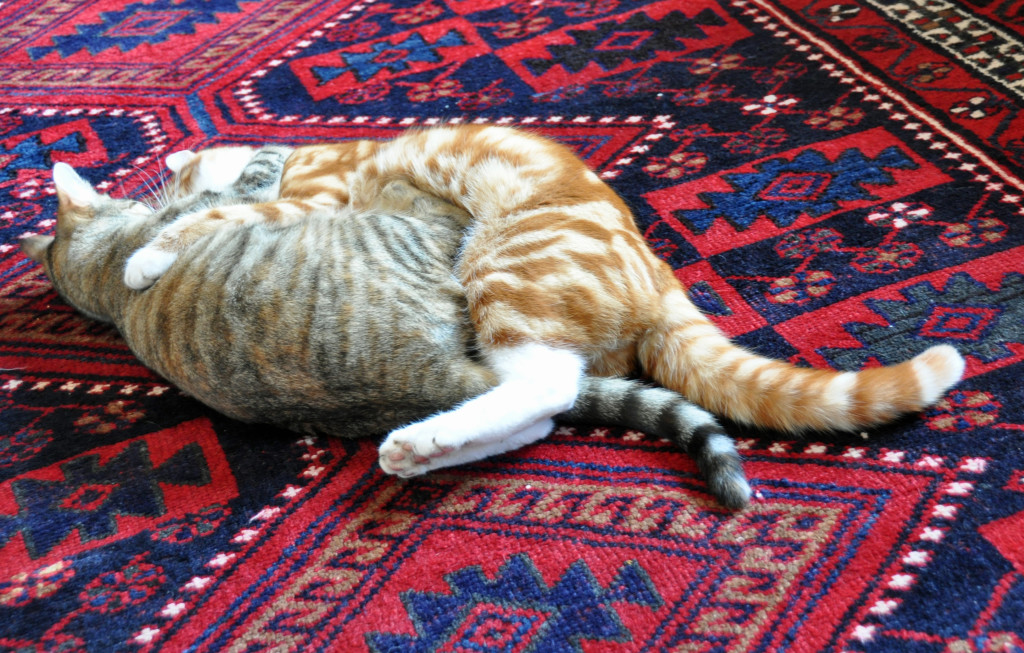 So maybe we need to think carefully about where our allegiances reflexively go when we learn about high-profile assault cases. Whom we believe and whom we don’t. We can ask questions about how the media shape our world view, about the details included and excluded in reporting on allegations and how they shape our view of those allegations. We can think about how the relentless headlines describing male violence make us feel, about how they impact our reactions as we go about our everyday lives, the decisions we make, the freedoms they curtail.
So maybe we need to think carefully about where our allegiances reflexively go when we learn about high-profile assault cases. Whom we believe and whom we don’t. We can ask questions about how the media shape our world view, about the details included and excluded in reporting on allegations and how they shape our view of those allegations. We can think about how the relentless headlines describing male violence make us feel, about how they impact our reactions as we go about our everyday lives, the decisions we make, the freedoms they curtail.
We can listen to women who say that they didn’t speak out about harassment or violence they endured because they were scared that doing so would lead to more harassment.
We need to look at and challenge our ideas and reactions. We need to learn a better way to bring up our boys, to give them alternate ways of being themselves that don’t end up with them beating or raping, being beaten or raped; alternate ways that don’t end up in gangs, packs and prisons, dead or damaged.
And maybe we can think about the low level violence and harassment that helps to normalise the more deadly kind, how and why bullying is tolerated until someone gets hurt. Why is it easier to wait until someone is hospitalised, dead or disabled before we are motivated to intervene?
Let’s think about Gamergate and the harassment that has come to define this “movement” Can we question why so many people seem willing to look past that bullying and lend credibility to serial harassers who have forced women offline and out of their homes.
There is a larger pattern of male violence that reveals itself again and again and we need to begin thinking about addressing that violence.

7th May: Generations
My house is a hundred years old. It was built in 1908 at around the time my grandmother was born, though as the last of ten children she could never remember the exact year she was born.
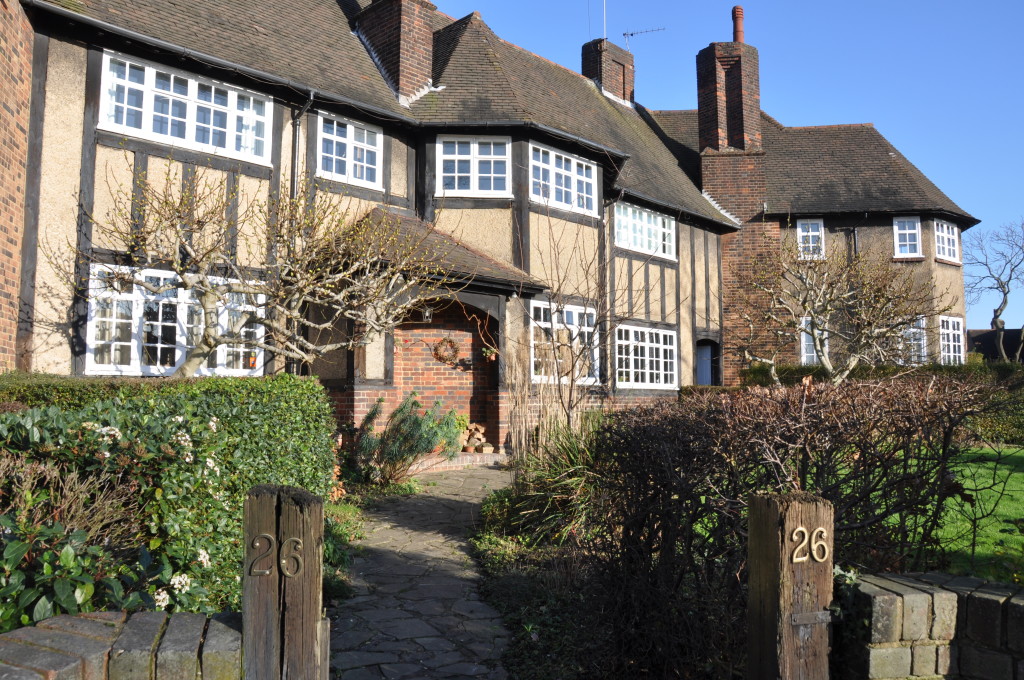 A lot has changed in the last 100 years. Throughout most, if not all of Europe today, women have: gained the right to vote, to own property in their own name, to divorce, to work in every profession, to join the military, to control their own bodies, to challenge men’s presumed “right” to sexual access once married, or on a date, or in the workplace.
A lot has changed in the last 100 years. Throughout most, if not all of Europe today, women have: gained the right to vote, to own property in their own name, to divorce, to work in every profession, to join the military, to control their own bodies, to challenge men’s presumed “right” to sexual access once married, or on a date, or in the workplace.
My grandmother was poor, certainly not a householder (women householders gained the right to vote in 1918). Women over the age of 21 were allowed to vote in 1928, just in time for her forgotton birthday – her father made her wait until she was married and had left home.
Nan might be able to vote but once married she lost any right to work. It wasn’t until the Sex Disqualification (Removal) Act 1919 lifted most of the existing common-law restrictions on women that marriage stopped being a legal bar on paid employment.
Although there was still a fair degree of social disapproval, marriage was no longer legally considered a bar to a woman’s ability to work.
She never worked outside the home – her parents would have considered it an embarassment, maybe a dishonour – which with five children and a sick husband made for a hard life. Maybe she’d have had fewer children if contraceptions and/or abortion (1967 Abortion Act) had been available but that wasn’t a choice available to her.
Nan never owned a house, and only made it onto the rental agreement once widowed.
My mother, her fifth child led a different life. My grandmother never attended secondary school, leaving just before the Fisher Act 1918 extended compulsory education to 14 years old. Her parents needed her to earn some money to help with the family income. My mother made it through to secondary school coutesy of the 11+ exam but had to leave at 13, to go work in the textile factory nearby. They needed the money.
She married an older man, one who left school at a similar age but made it through various apprenticeships, his OND and HND engineering qualifications – he made good. She worked sporadically throughout her life. She had three children – contraception was available – and the jobs she took up every so often, meant that she could earn enough money to make some of her own choices.
Two out of her three children made it to university. All of them worked throughout their lives, made their own money which bought them the right to decide whether or not to stay married. None of them had more than 2 children of their own – everyday reproductive rights in action.
This is the story of a monumental, revolutionary transformation of women, of the lives of more than half the population, a radical success story but one we easily forget in the face of remaining barriers.
Looking forward at the life chances and opportunities for my daughters I am struck not by how far we have come, but how little we seem to have moved forwards since my own childhood.
My girls are extremely privileged. My grandmother was poor. My mother was financially comfortable for just as long as she stayed married to her husband. I’m independently wealthy. My girls will start out life with the best education and a sizable monetary cushion against the disasters that life throws at them. They have choices, just not as many as the sons of my friends.
Where will life take them?
Today, the movement for women’s equality seems stalled. Women continue to experience discrimination in the public sphere. They bump their heads on glass ceilings in the workplace, experience harassment and less-than fully welcoming environments in every institution the public sphere, still must fight to control their own bodies, and to end their victimization through rape, domestic violence, and trafficking in women.
Just walking along the street can result in a torrent of abuse. Travelling to work, walking or using public transport does not feel safe, involving physical and verbal hassle along the way and all undercut with the threat of everyday violence.
Maybe the reason that the movement for women’s equality remains only a partial victory has something to do with men.
Women have changed the world around them, legally, structurally, and internally, how they feel about themselves, their expectations and ambitions but have men changed as well, or have they stayed stuck in much the same pattern as their grandfathers?

8th May: Election
I live in a country where 15% of the vote has gone to UKIP, a party that would abolish maternity pay for women, limit child benefit, end SexEd at primary school, cut the Foreign Aid Budget, lower taxes for the top 5%, take away benefits from the working poor, ….
In the meantime it looks like the Tories will achieve a majority albeit small, and the pundits are taking bets as to whether this minimal success (in the face of even worse predictions) will improve the position of the Prime Minister or make him even more vulnerable to the nutters from the right. There are now nearly 60 right-wing lunatics in his own party, those MPs John Major described as “bastards” who will know doubt be trying to push the Conservative Party out of Europe and down the right-wing road.
To follow through on his election promises, he has to find £12bn of cuts from the welfare budget.They have announced that there will be a freeze on most working age (ie. non-pensioner) benefits. Since inflation is at an all-time low, this isn’t going to generate huge savings. They will reduce the current benefit cap to £23,000 and housing benefit will be eremoved from 18-21 year olds on jobseekers allowance. These policies are expected to generate around £1.5bn.
So £10bn of the proposed £12bn savings remain unspecified at the time of the election. They have ruled out cuts to the state pension and universal pensioner benefits. Of the total government spending on social security (£220bn 2015-16 per IFS Election BN – Institute for Fiscal Studies) 43% or around £95bn is paid to pensioners.
This leaves the cuts to fall on working age households in the bottom half of the income distribution. The Conservative plan is therefore to cut 10% of the £125 bn “unprotected benefits” paid to the poorest.
When challenged by the IFS, the Conservative Party said they would not abolish child benefit, which is already limited to lower rate tax payers.
Remaining options include taxing Disability Allowances, taxing Personal Independence Payment (PIP) and attendance allowances, reducing the element of Universal Credit attributable to children and/ormaking all housing benefit recipients pay the first 10% rent.
I’m neither poor, nor disabled so I’m a winner. Hurrah?
Overall, the richest households look set to do well under a Conservative Party. People with incomes between £50,000 and £150,000 will take home more money. We benefit most from the changes to inheritance tax or at least our kids will once we’re dead.
Poorer households are screwed.
Thanks to a very divisive F*ck You speech by Cameron after the Scottish referendum, the SNP has risen from the ashes. Thanks to implosion of the Scottish Labour Party and the Conservative scaremongering about SNP influence we are now faced with a situation where all bar 2 of the 50 or so MPs from Scotland are seperatists. The survival of the Union looks very unlikely. An increasing number of people north and south of the border think that’s okay.
Seperatism is on the rise, with SNP triumphant in Scotland and UKIP taking third place in many English seats. Even Plaid Cymru gained in the Welsh Labour heartland.
Yesterday, the Liberals were decimated, brutally punished for gaining real-life political power and making real-life political compromises.
A traditional left wing party fought a traditional right wing party with the traditional result. Labour lost. Time to reclaim to centre ground.
Shame about the poor though.
9th May: Work-in-Progress
The world has changed significantly in the last 100years. An old transcript of a speech by Michael Kimmel* brought it home to me.

Throughout most, if not all of the developed world women have: gained the right to vote, to own property, to divorce, to work in every profession, to join the military, to control their own bodies.
It is the story of a monumental, revolutionary transformation of the lives of more than half the population. And each and every one of these changes to women’s lives has had an impact on the everyday lives of the men they live with. Clearly, some men have changed in some ways, but it’s difficult to see a comparable revolution in men’s lives.
In one sense, of course, men’s lives have changed dramatically. For my grandfather’s generation, his peers could go to all-male schools and colleges learning “male” skills like carpentry and maths whilst their future wives learned to sew. They could serve in an all-male military and spend their entire working lives in a virtually all-male working environment.
That world has completely disappeared.
So men’s lives have been changed, though not necessarily by their choice. Very little has been done to prepare them for this completely different world.

The ideas we all hold around masculinity have remained relatively intact for the past three generations; men’s lives may have changed dramatically, but the beliefs men have about what it means to be a man seem locked in a pattern set decades ago, when the world looked very different.
What is the traditional ideology of masculinity? In the mid- I 970s, an American psychologist offered what he called the four basic rules of masculinity which still ring true:
- “No Sissy Stuff’ – masculinity is based on the relentless rejection of the feminine. Masculinity is never being a sissy.
- “Be a Big Wheel” – we measure masculinity by the size of your paycheck. Wealth, power, status are all markers of masculinity.
- “Be a Sturdy Oak” – a man is reliable in a crisis. And what makes him reliable in a crisis is that he resembles an inanimate object, a rock, a pillar, a tree
- “Give ’em Hell” – a real man should exude an aura of daring and aggression. Take risks; live life on the edge. Go for it.
How do these ideas about what it means to be a man, still used in the modern world, interact with the drastic changes to the world over the last three generations?
The limits of the old definitions of maculinity become most visible where women’s lives have changed most dramatically: making gender visible, the workplace, the balance between work and home, and sexuality.

Perhaps one of the biggest changes is the acknowledgement of gender as an issue at all. In the past two decades, gender has joined race and class as one of the axes around which social life is organized, one of the primary building blocks of identity.
At the turn of the 20th century politicians would not have dreamed of asking “But what about the impact on women, on people of colour, what about the working classes …” Nowadays, parliaments have Gender Committees, and Ministers for Gender Equality. Politics used to be all about the public sphere, and this was by and large both white and male, managed by a ruling, moneyed elite who believed themselves knew best.
With the ability to vote, came the idea that the interests of everyone else also needed to be fairly represented and considered, women’s interests, the interests of people of colour etc.
On an individual level, there remains a huge debate about the impact of nature and nurture upon our children, and what it means to be a woman. There are certainly still huge societal pressures to conform to a certain idea of beauty, of “traditional” feminity, motherhood etc. But there are also cross-cultural shifts challenging traditional roles, pushing forwards with the idea that young girls and women can grow up to be whatever they want, to excel and achieve in any field.
 Girls know gender is an issue, a discussion and debate relevant to them. Girls are made aware that there are choices to be made, in who they want to be and what they want to do when they grow up to be women. They can choose to break out of the traditional model in part because they recognise how it applies to them in the first place.
Girls know gender is an issue, a discussion and debate relevant to them. Girls are made aware that there are choices to be made, in who they want to be and what they want to do when they grow up to be women. They can choose to break out of the traditional model in part because they recognise how it applies to them in the first place.
Boys are not.
Though we now know that gender is a central axis around which social life revolves, most men do not seem to know that they are gendered. They regard themselves as “normal” average, everyday.
Michael Kimmel tells a story about a conversation he observed. A woman turned to another and commented how their common experience of oppression under patriarchy bound them together as sisters. All women, she explained, had the same experience as women. The second woman did not immediately agree. “When you wake up in the morning and look in the mirror,” she asked, “what do you see?”
“I see a woman,” came the response. “That’s the problem,” responded the second.
“I see a black woman. To me race is visible, because it is how I am not privileged in society. Because you are privileged by race, race is invisible to you. It is a luxury, a privilege not to have to think about race every second of your life.”
Kimmel says he groaned, embarrassed. And, all eyes turned to him.
“When I wake up and look in the mirror,” he confessed, “I see a human being. The generic person. As a middle class white man, I have no class, no race and no gender. I’m universally generalizable. I am Everyman.”
 The privilege of privilege is that the terms of privilege are rendered invisible. It is a luxury not to have to think about race, or class, or gender. Only those marginalized by some category understand how powerful that category is when deployed against them.
The privilege of privilege is that the terms of privilege are rendered invisible. It is a luxury not to have to think about race, or class, or gender. Only those marginalized by some category understand how powerful that category is when deployed against them.
Just like girls are brought up to recognise the limitations of the traditional female gender model and are therefore able to expand outside and beyond it if they choose, boys need to recognise the traditional male gender model they are being sold, to start to build their own identity as a person, to make choices.
Men becoming aware of themselves as gendered, recognizing the power of gender as a shaping influence in male lives, is made more difficult by that first rule of manhood – No Sissy Stuff.
The constant, relentless efforts by boys and men to prove that they are “real men” and not effeminate, not sissies or weak or gay is a dominant theme, especially in the lives of boys. If there is no real mechanism for men to experience a secure, confident and safe sense of themselves as men, they develop their own methods to “prove it” to themselves as much as to the rest of the world.
As a culture, we must make gender visible, and give young boys and men the means to develop a secure, confident, inner sense of themselves as people, aware of their gender but not limited by it.

One of the most obvious changes to the world over the last 100 years is the transformation to the workplace. Almost half the workforce in the developed world is now female and women are here to stay.
Remember the second rule of manhood: “Be a Big Wheel” – most men when asked will still highlight the importance they feel for them to be the breadwinners, the family providers. But the economic landscape has changed dramatically and the economy has not been kind to most men.
The great global expansion of the 1990s affected the top 20% of the workforce. There are fewer and fewer “big wheels.” European countries traded growth for high unemployment, which means that more and more men will feel as though they haven’t made the grade, will feel damaged, injured, powerless. These are men who will need to demonstrate their masculinity all over again.
At this time of great economic change, women arrive into the workplace in unprecedented numbers. Just when men’s economic breadwinner status is threatened, women appear on the scene as easy targets for men’s anger. We have all heard interviews with men struggling to find work complaining that “my job was taken by some woman/person of colour/other” but maybe we need to consider what the word “my” means.
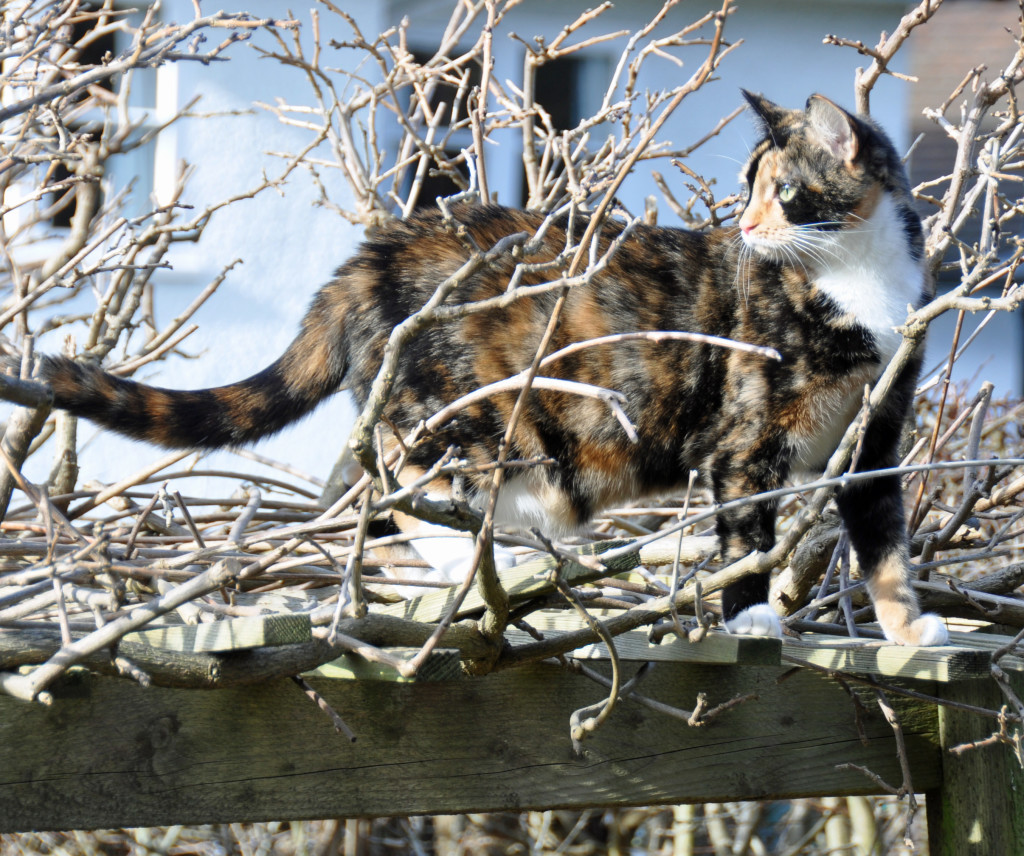
Why does someone ever feel that any job belongs to them, that they should be entitled to that job? When some “other” person – black, female, whoever – is hired ahead of them, why do they believe that other person was really taking “their” job.
By what right is that their job – only by a sense of entitlement, of unearned, unwarranted privilege which they now perceived as threatened by the movement towards workplace gender equality.
Sexual harassment in the workplace can be seen as a distorted effort to put women back in their place, to remind women that they are not truly equal to men in the workplace, that they are, still, just women. Sexual harassment is a way of maintaining that sense of entitlement, of maintaining the illusion that the public sphere really belongs only to men. It is a way for men to remind women that they are not yet equals in the workplace, that they really don’t belong there.
It seems that every major company, law firm, and university is scrambling to implement sexual harassment policies. This usually consists of explaining what sexual harassment is, and, for the men, how to avoid doing it, and, for the women, what to do if it happens to you. But rather than coping with the fall-out, the real challenge is to prevent sexual harassment before it happens.
And that requires men to understand what they will gain by supporting women’s efforts to end sexual harassment and not only how it impacts your own wife, partner or daughter, not because sexual harassment like any form of bullying is morally wrong or indeed that harassment is enormously costly – as increased rates of absenteeism, higher job turnover, retraining costs and lower productivity are just some of the results.
 But if you are a manager, your job performance depends on the strong performance of those who report to you. You should want everyone who works for you to feel comfortable, at their best, able to really produce. And thus it is in your interest as a man or woman to make sure that everyone who works for you – male and female – feels comfortable, confident and safe in the workplace.
But if you are a manager, your job performance depends on the strong performance of those who report to you. You should want everyone who works for you to feel comfortable, at their best, able to really produce. And thus it is in your interest as a man or woman to make sure that everyone who works for you – male and female – feels comfortable, confident and safe in the workplace.
Sexual harassment hurts women by reducing women’s productivity. But it also hurts the men they work with because it reduces their ability to work at their best as well. Your team performance as a man will be worse if the women you work with are harassed. Your chances of a pay rise or promotion as a man will be damaged if the team you’re working on is unable to attract the best people because it excludes women through harassment.
Changes in the workforce, have led to the third area of change in women’s lives: the efforts to balance work and family life.
Once upon a time, not so long ago, women were legally forced to choose between career and family. My grandmother remembered a time when she was not legally permitted to work outside the home once married. She remembered severe social pressure from her parents not to take up paid work, even though she was faced with a sick, unemployed husband and five children to feed, with no money.
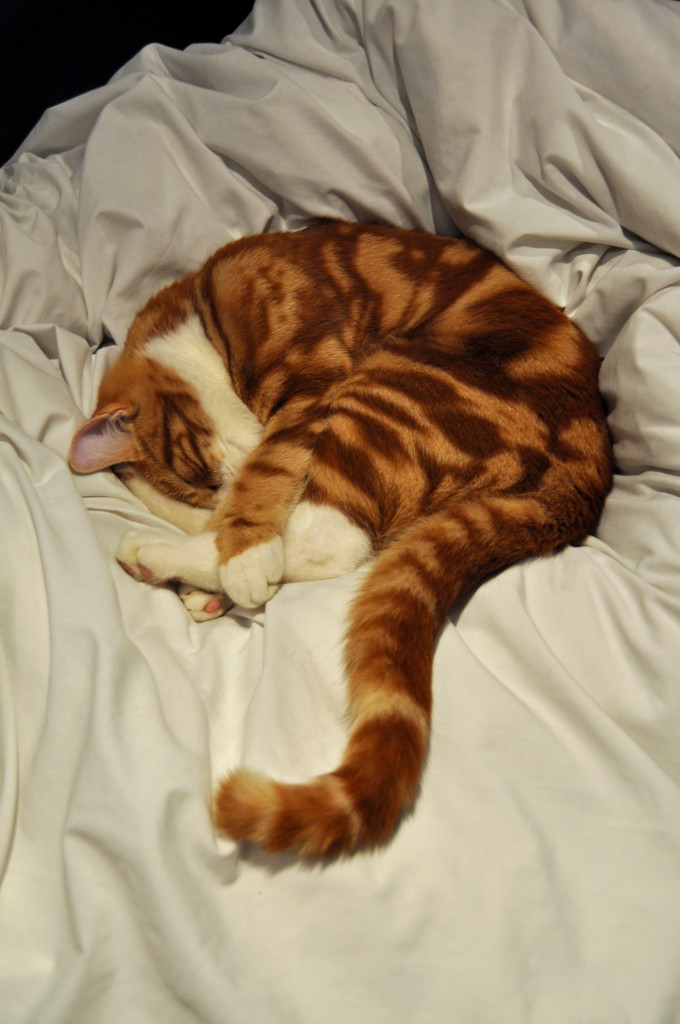 Beginning in the 1970s, women became increasingly unwilling to choose between work and family. They wanted both. Could a woman “have it all?” was a pressing question in the past two decades. Could she have a rewarding career and a great loving family?
Beginning in the 1970s, women became increasingly unwilling to choose between work and family. They wanted both. Could a woman “have it all?” was a pressing question in the past two decades. Could she have a rewarding career and a great loving family?
The answer it seems was “no.” Women can’t have it all because… ..men already have that slot booked. It’s men who expect to have rewarding careers outside the home and a loving family to come home to. So if women are going to have it all, they are going to need men to share housework and childcare.
Women have begun to question the “second shift,” the household shift that has traditionally been their task, after the workplace shift is over. They have begun to question the value of a partner who doesn’t seem willing to pull his weight in the home whilst she’s required to pull her side of the load in the workforce.
At the same time we see an increased interest from men to better balance their own work and family life and consequently to help their partners balance their own work/life.
No one on his deathbed ever wished he spent more time at the office.
 Men’s need to balance work and their family life is thwarted by the third rule of manhood – “Be a Sturdy Oak. What has traditionally made men reliable in a crisis is also what makes them unavailable emotionally to others.
Men’s need to balance work and their family life is thwarted by the third rule of manhood – “Be a Sturdy Oak. What has traditionally made men reliable in a crisis is also what makes them unavailable emotionally to others.
Fatherhood, friendship, marriage/relationships all require emotional resources that have been, traditionally, lacking among men, resources such as patience, compassion, tenderness, attention to process.
A “man isn’t someone you’d want around in a crisis,” wrote the actor Alan Alda, “like raising children or growing old together.”
Increasingly in the developed world we talk about men becoming more active fathers by “helping out” and that that they should spend “quality time” with their children. But it is not “quality time” that will provide the deep intimate relationships that we all want, either with our partners or with our children. It’s quantity time – putting in those long, hard hours of thankless, unnoticed drudge work.
Nurture is doing the unheralded tasks, like holding someone when they are sick, doing the laundry, the ironing, washing the dishes.
Workplace and family life are also connected in the public sphere.
 Several different kinds of policy reforms have been proposed to make the workplace more “family friendly” – to make the workplace more amenable to our efforts to balance work and family. These reforms generally revolve around three issues: on-site childcare, flexible working hours, and parental leave.
Several different kinds of policy reforms have been proposed to make the workplace more “family friendly” – to make the workplace more amenable to our efforts to balance work and family. These reforms generally revolve around three issues: on-site childcare, flexible working hours, and parental leave.
But usually we think of these workplace reforms as women’s issues rather than parents’ issues. To the extent that men identify themselves as parents, they are reforms that men will surely want because they will enable men to live the lives men say they want to live.
The Nordic countries in Europe have led the way in their efforts to involve men in family life. In Sweden, for example, men are actively encouraged by state policies to take parental leave to be part of their children’s first months. Before the institution of “Daddy Days” less than 20% of Swedish men took any parental leave at all. Today, though, the percentage of men who do has climbed to over 90%.
And yes, it might make employers nervous, it might be a bit harder to manage to start with just as any change can be difficult, but it improves the lives of many millions of men, women and children. That has to be a change worth having in a country that values it’s families, which surely is the real meaning of “family values.”
Finally, over the last 100 years women have changed the sexual landscape. As the dust is settling from the sexual revolution, from the universal availability of reliable birth control and abortion, it is clear that it’s been women, not men, who are this generation’s sexual pioneers.
Women now feel empowered to claim sexual desire. Women can like sex, want sex, seek sex. Women are learning to say yes to their own desires, claiming, in the process, sexual agency.
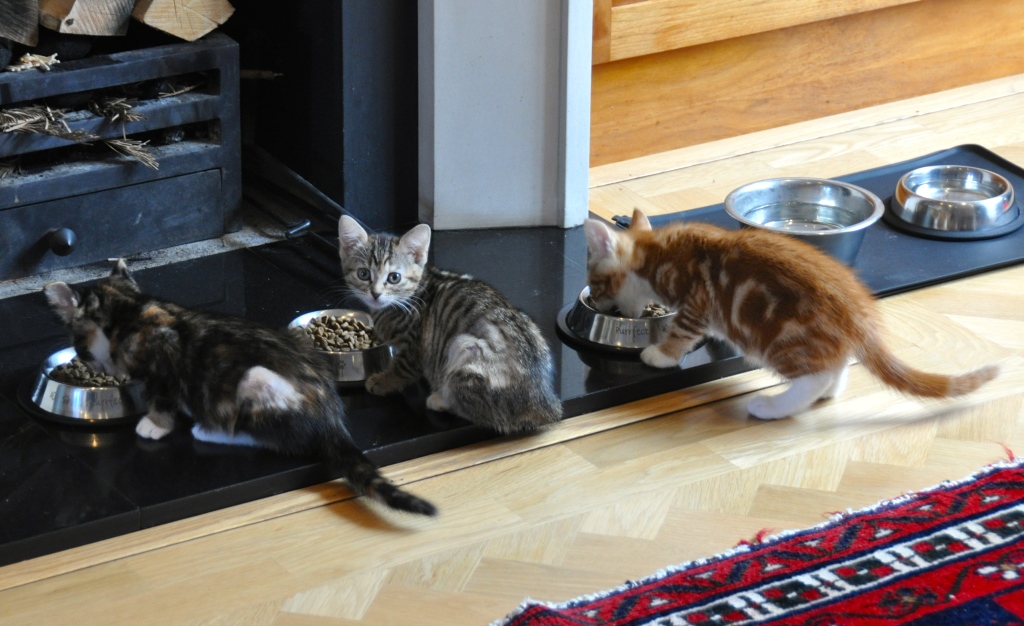 How does women’s new sexual freedom interact with that last rule of manhood – “Give ’em Hell” – let’s talk about sex and violence.
How does women’s new sexual freedom interact with that last rule of manhood – “Give ’em Hell” – let’s talk about sex and violence.
The greatest change in sexuality over the past 40 years has been among women. Just at the moment women are saying “yes” to their own sexual desires, there’s an increased awareness of the problem of rape all over the world, especially of date and acquaintance rape.
An extraordinary number of women around the world report that they have had some form of sexual contact against their will, that they have been pressed or forced to have sexual intercourse against their will. And this is entirely consistent with the results when men are asked would they have sex with an unwilling partner if they could get away with it.
Ironically, when men speak of rape and other violence against woemen, they do not speak with a voice of power, control, domination.
Even outliers like the infamous spree killers discussed in a previous post, all speak with the voice of powerlessness, of helplessness. For them, violence against women is a form of revenge, a form of retaliation, of getting even, a compensation for the power that a man feels women have over him, the power of female rejection.
This perspective has been left out of analyses of men’s violence – both at the interpersonal, micro level of individual acts of men’s violence against women-rape and battery, for example – and the aggregate, social and political analysis of violence expressed at the level of the nation state, the social movement, or the military institution.
Violence may be more about getting the power to which you feel you’re entitled than an expression of the power you already think you have.
 Men’s violence can be viewed as the result of a breakdown of patriarchy, of entitlement thwarted. Again and again, what the research on rape, on domestic violence finds is that men initiate violence when they feel a loss of power. Thus he hits her when she fails to have the dinner ready, when she refuses to meet his sexual demands, i.e. when his power over her has broken down.
Men’s violence can be viewed as the result of a breakdown of patriarchy, of entitlement thwarted. Again and again, what the research on rape, on domestic violence finds is that men initiate violence when they feel a loss of power. Thus he hits her when she fails to have the dinner ready, when she refuses to meet his sexual demands, i.e. when his power over her has broken down.
And this question of entitlement lies at the heart of current controversies over sex trafficking all over the world. As we have tried to confront this new international problem, we have focused on “supply” – especially the international cartels who often kidnap and imprison young girls and women – and, of course, extended our compassion for the “product,” the women themselves.
Few, if any, policies have targeted the “demand” side of the equation, policies that might be aimed at the men who are the consumers of these purloined and oppressed products., Why? Do we somehow accept that men feel entitled to consume women’s bodies, however they might be supplied?
Anthropologist Peggy Reeves Sanday proposed a continuum of propensity to commit rape upon which all societies could be plotted – from rape prone to rape free. Sanday found that the single best predictors of rape-proneness were (1) whether the woman continued to own property in her own name after marriage, a measure of women’s autonomy; and (2) father’s involvement in child‑rearing, a measure of how valued parenting is, and how valued women’s work.
So clearly here is an arena in which women’s economic autonomy is a good predictor of their safety – as is men’s participation in child-rearing. If men act at home the way they say they want to act, women will be safer.
 Surely, these questions of violence and sexuality are an arena where we need strong measures to make clear our intolerance for date and acquaintance rape, laws that protect women, social attitudes that believe women who do come forward.
Surely, these questions of violence and sexuality are an arena where we need strong measures to make clear our intolerance for date and acquaintance rape, laws that protect women, social attitudes that believe women who do come forward.
Here, also, is another arena in which men’s support of feminism will enable men to live the lives they want to live.
If it is made clear that men, will not tolerate a world in which women do not feel safe, and if men make it clear to their individual partners that they understand that no means no, then – and only then – can women begin to articulate the “yes” that is also their right.
So rather than resisting the transformation of men’s lives that gender equality offers, men need to embrace these changes, both because they offer us all the possibilities of social and economic equality, and because they also offer us all the possibilities of richer, fuller, and happier lives with our friends, with our lovers, with our partners, and with our children.
Men, should support gender equality – both at work and at home. Not because it’s right and fair and just- although it is those things. But because of what it will do for men.
* Michael Kimmel is Professor of Sociology Stony Brook State University of New York
10th May: Best Foot Forward
According to the FT the UK has a majority Conservative government facing a number of key challenges for the next five years including:
- Secure the future of the UK: half of all Scottish voters elected an MP who believes in breaking up the union.
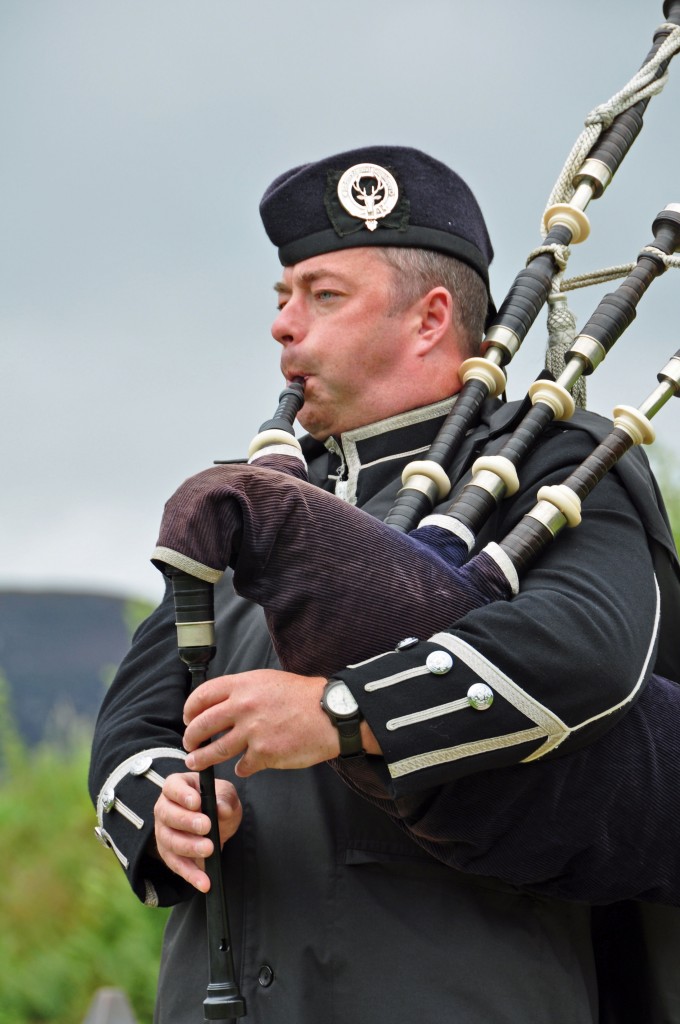 At a recent supper party, two people separately mocked the idea of the union, one from the position of a socialist (they’re better off without the Tories) and one from an English nationalist perspective (we’re better off without them, benefits scroungers one-and-all).
At a recent supper party, two people separately mocked the idea of the union, one from the position of a socialist (they’re better off without the Tories) and one from an English nationalist perspective (we’re better off without them, benefits scroungers one-and-all).
Neither party advocating dissolution was Scots, both were English.
& only the English conflate being English with being British. Only the English feel able to comment on behalf of the other “nations” without shame or caveat. They don’t even notice they’re doing it – an almost text book definition of privilege.
The Tories ran a succesful campaign based on fear and ridicule; fear of the unknown and a resurgent nationalist SNP (the Scots wagging the British tail) and personal ridicule of the leader of the opposition, Ed Milliband. It worked. Now they have to deal with the results of their own success.
At the time of the Scottish referendum, and from a unionist perspective, I looked long and hard for an economic case for Scotland to stay within the United Kingdom. The results were ambiguous, too difficult to call either way. The most that could be said was that breaking up the union created another layer of risk at a very risky time.
And the largest economic risk factor for Scotland is obviously the price of oil. When the price of oil is high, the various sums add up to a prosperous, self-supporting Scotland. When the oil price is low, as it is now, the sums add up to a poorer, economically dependent Scotland.
The idea of Scottish fiscal autonomy, long both a Tory and SNP policy came closer this week with the wipe-out of Labour in Scotland and the Conservative majority. The Labour Party conversely followed a policy of redistribution – from Scotland to the UK when oil prices are high, and back again when prices fall.
The big problem with fiscal autonomy is timing.
 At the moment, the IFS calculate that given low oil revenues and higher public spending per person, Scotland would run a deficit of 8% of national income in 2015-16 as compared to 4% for the whole of the country. This would leave the anti-austerity SNP facing even higher cuts to welfare since their ability to borrow as an independent country would also be much reduced. There would also of course also be lots of arguments to be had about paying for defence, foreign affairs and interest on the existing UK debt.
At the moment, the IFS calculate that given low oil revenues and higher public spending per person, Scotland would run a deficit of 8% of national income in 2015-16 as compared to 4% for the whole of the country. This would leave the anti-austerity SNP facing even higher cuts to welfare since their ability to borrow as an independent country would also be much reduced. There would also of course also be lots of arguments to be had about paying for defence, foreign affairs and interest on the existing UK debt.
Full fiscal autonomy would end the formula that currently guarantees Scotland higher than average public spending than other regions. It would enable tax differentials and competition to be established between Scotland and England but would the Scots vote for an end to auterity if they had to pay for all of it themselves?
The head of the Scottish parliament, Nicola Sturgeon will be in a very tricky place if offered fiscal autonomy right now : what price independence for Scotland?
But Scotland is not the only UK region that is dominated by a single business sector and quite a volatile one at that.
The English economy is dominated by London and the financial sector. When the guy at supper suggested floating off an independent Scotland, he might also have added in Cornwall or the North-East.
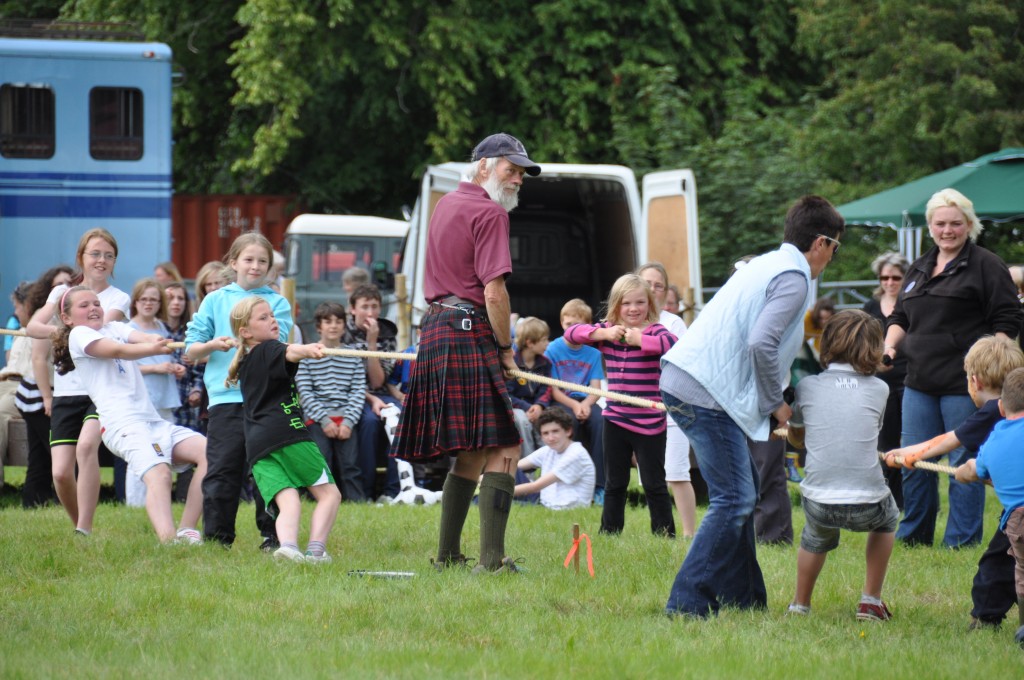 English wealth is concentrated in London, described recently as a “first-class city with a so-so country attached” but the threat of a systemic failure in the financial system spilling over into the real economy hangs over us all. It is one of the greatest risks facing the UK as a whole. The global financial crisis of 2007-08 clearly demonstrated that policymakers and financiers were inadequately prepared for a systemic crisis. Has anything really changed?
English wealth is concentrated in London, described recently as a “first-class city with a so-so country attached” but the threat of a systemic failure in the financial system spilling over into the real economy hangs over us all. It is one of the greatest risks facing the UK as a whole. The global financial crisis of 2007-08 clearly demonstrated that policymakers and financiers were inadequately prepared for a systemic crisis. Has anything really changed?
The UK economy has long been a dominant player in financial services, along with the US, but growth in the sector between 2006 and 2009 was particularly rapid. By 2009, the sector accounted for 10% of UK GDP, the highest of all G7 economies. This dominance of the financial sector in Britain meant it was hit harder by the financial crash. Its share of the economy fell by 2.9 percentage points, while it remained roughly stable in other major economies. There has been very little rebalancing of the economy since.
Financial services are a key part of UK exports. The UK has the highest ratio of services exports to GDP in the G7, at 13%. It also has the world’s biggest share of financial services exports by some way, at 29% in 2012.
If the UK as a whole is already vulnerable to global financial shocks making the economy even smaller by breaking up the union, will make England more not less vulnerable to financial meltdown.
 When you start to break up a country, when you build up a nationalist fervour in your regions, where do you stop? Why should Londoners pay for Cornwall, a part of the country I’ve never been to and never plan to visit? What about the north east?
When you start to break up a country, when you build up a nationalist fervour in your regions, where do you stop? Why should Londoners pay for Cornwall, a part of the country I’ve never been to and never plan to visit? What about the north east?
How many Londoners are English anyway? Very few it turns out. Why don’t we just float away as an independent city state like Monaco? Independence is a dangerous train to jump onboard.
12th May: Best Conservative Foot Forward
According to the FT the UK has a majority Conservative government facing a number of key challenges for the next five years including:
- Hold (and win) the Europe referendum. Having won a majority, Cameron will be able to hold a referendum largely on his own terms and to his own timescale.
The British have always been deeply ambivalent about Europe. Even at the outset, Churchill proposed a union between the two European titans France and Germany to bind the two countries together in an attempt to stave off yet another world war, to which the UK would be supportive but not central.
In a rare uncalculating moment, Boris Johnson wrote last year that, if Britain finally ended its “sterile debate” over Europe by leaving the EU, it would quickly discover “that most of our problems are not caused by Brussels, but by chronic British short-termism, inadequate management, sloth, low skills and a culture of easy gratification and under-investment”. Quite.
We are and always have been a lot less certain that the rest of Europe as to the benefits the European Union brings.
And yet…
… now we are part of the EU, albeit a non euro member, no one is suggesting that a clear majority in the UK would vote to leave when push came to shove. Most polls show the vote would be too close to call.
Currently most polls report a small majority of people would vote to remain within the EU, around a third would vote to leave and the balance are substantially undecided. And that’s with relentlessly negative media press reports.
But the voting intentions of people seem to very much depend on whether or not the UK can achieve reforms to the current relationship.
What are the main issues people worry about when they think about EU membership?
Most people when asked will have a simple headline topics that essentially boil down to:
- Immigration
- Trade
- Sovereignty
- Global Standards and Regulation; and,
- Reform
The European Union is based on four core principles: freedom of movement, goods, capital and services. Whilst only immigration and trade concerns reference these core principles directly, it’s useful to consider this underlying principle of freedom when thinking about all of the common concerns.
Maybe, it’s also useful to consider the EU as a work-in-progress rather than a fixed state or solution.
I need to spend some time working out what I think about each of these – it’s complicated.
13th May: Europe & Immigration
The UK Conservative government has been elected with one very clear election policy. It must strive to hold (and win) the Europe referendum it has promised. Having won a majority, albeit small, the Prime Minister David Cameron will be able to hold a referendum largely on his own terms and to his own timescale.

He will need to address the people’s concerns, often unhelpfully stoked up by his own backbenchers, and always an issue for the UKIP (English Nationalist) part relating to:
- Immigration;
- Trade;
- Sovereignty;
- Global Standards and Regulation; and,
- Reform.
The European Union is based on four core principles: freedom of movement, goods, capital and services.
Concerns relating to immigration have clear repercussions for these fundamental principles.
- Immigration and the free movement of labour
More than 14 million EU citizens are resident in another member state – 2.8% of the total EU population. Freedom of movement helps to fill job vacancies in many EU countries including the UK and gives employers a wider talent pool, the Commission argues. Germany, resilient in the euro crisis, is proving a magnet for jobseekers from recession-hit countries like Spain, Italy and Greece.
Europe’s football clubs are among those who have benefited from the freedom of professionals to move.

But saying that EU immigration is good for employers or for the economy does not reassure people who are fearful of job competition from “outsiders” or who worry about taxes paid to support immigrants through benefits. They will only be convinced when by an argument that explains the benefit to them and their own families.
Because of the free movement of labour, each UK citizen is free to relocate, to live and work in all other EU states without the need for visas or other common constraints.
In fact according to a recent article in the FT ( EU migrants moving to UK balanced by Britons living abroad) the number of European migrants in the UK is almost exactly balanced by the number of Britons living elsewhere in the EU, according to official figures.
About 1.8m Britons live in Europe, with Spain boasting an expat population of just over 1m UK citizens, according to government estimates. Of the Britons living in Europe, 400,000 are claiming a state pension from the UK. That compares with an estimate of 2.34m EU citizens living in the UK from NOMIS.
Looking at the number of benefit claimnants around the UK and EU is similarly enlightening.According the article in the Guardian (Revealed: thousands of Britons on benefits across EU | UK …) about 2.5% of Britons in other EU countries are claiming unemployment benefits – the same level as the roughly 65,000 EU nationals claiming jobseeker’s allowance in the UK.

So as a UK citizen you are entitled to travel to any other EU country and claim the benefits you’re entitled to. In some of these countries, such as france, the benefits are significantly better so why don’t all of our unemployed move to Paris? Probably for the same reason that people don’t move to the UK to claim benefits – it just isn’t worth it! No benefits paid are going to outweigh leaving family and friends, social support networks behind.
People who move across borders, move to find work and if they can’t find paid employment they leave.
Dr Roxana Barbulescu, researcher on international migration at the University of Sheffield, said the numbers claiming unemployment benefits both EU citizens in the UK and vice versa EU are minuscule. “Thirty thousand people, or 2.5% of all British nationals, in other EU member states means that the overwhelming majority of Brits abroad as well as European citizens in Britain are not an undue burden for the countries in which they live.”
So as a member of the EU club you are free to travel for work, holiday or benefit tourism to any other country. In reality there is a lot of the former and very very little of the latter. Given a choice, we are not the country benefits tourists will target.
But given people’s real concerns around immigration, the most useful things a government might do to reduce the flow of EU immigrants into the UK would be those impacting demand.

The UK has long emphasised labour market flexibility and relatively low levels of labour regulation. Together with a range of policies from training to housing, this stance has contributed to creating a growing demand for migrant workers.
For example, in the construction sector the difficulty of finding suitably skilled British workers is critically related to low levels of labour market regulation and the absence of a comprehensive vocational education and training system (Chan, Clarke and Dainty 2010). Social care is another sector where public policies have created and increasing demand for migrant workers (Moriarty 2010; Cangiano et al. 2009). Two thirds of care assistants in London are migrants essentially because of low wages and poor working conditions.
Constraints in local authority budgets have contributed to chronic underinvestment. Together with the structure of the care sector itself, this approach has resulted in a growing demand for low-waged, flexible workers which, in turn, has led to a growing demand for migrant labour.
Labour immigration from the EU could be reduced by changes to the public policies and institutions. These policy changes could include, for example, more and better training of British workers (e.g. in sectors like construction) changes in welfare policies to encourage more British workers to join the workforce (so-called “making work pay”) and better wages and conditions in some low waged public sector jobs.

None of this is a quick fix but rebalancing the economy whilst giving a more realistic picture of the benefits UK citizens gain from EU membership, should be enough.
So we get to travel freely on holiday to places with a much better climate. We get to work or indeed claim benefits in countries spanning 1,860 miles – from Vilnius in Lithuania to Valencia in Spain – without limit or restriction.
We benefit from people bringing skills to our country that we lack – our houses are built quicker, easier, cheaper as a result of EU labour.
We benefit from people arriving in the UK who are willing to do the jobs we don’t want to do for the money available – wiping grandma’s bottom as part of her social care, picking fruit from trees and other poor paid, back-breaking tasks.
We benefit from having highly skilled, motivated people as part of the teams we work in, making us look good and imporving our chances of pay rises and promotions.
Freedom of movement is a win-win for all of us. We need to start making that case.

May 15th: Europe & Sovereignty
The Conservatives promised an in/out EU referendum and now they have to deliver. Having won a majority, albeit small, the Prime Minister David Cameron will be able to hold the referendum largely on his own terms and to his own timescale but he will need to address the people’s concerns, often stoked up by his own backbenchers relating to:
- Immigration (see previous post)
- Trade (see previous post)
- Sovereignty
- Global Standards and Regulation; and,
- Reform
The European Union is based on four core principles: freedom of movement, goods, capital and services. It is a trading group of nation states.
Let’s think about what we mean when we talk about states, about sovereignty.

- Sovereignty
But rising nationalist fervour, English, Scottish and Welsh, is more likely to lead to the break up of the United Kingdom than the desire to leave the EU. Indeed one of the challenges to come might well be what will happen if the overall referendum majority dominated by England chooses “out”, but Scotland, now represented substantially by the Scottish Nationalist Party (SNP) chooses “in”.
Other than nationalist fervour or sentiment and it’s divisions, a number of distinguishable ideas appear in discussions around sovereignty time and time again:
- Border Integrity;
- National Independence; and,
- Parliamentary Sovereignty.

The UK has also maintained an independent armed force, to defend it’s borders and interests overseas, though financial constraints are starting to impact it’s breadth and depth. The UK has resisted efforts to create a joint European military resource (along with France).
But as noted in previous post, wealthy, well-established countries tend to trade with wealthy well-established neighbours first and foremost because it is easier and cheaper to do so. In addition our membership of the EU, one of the largest and richest markets in the world, allows for a more powerful negotiating position with states outside the EU than our position as a fading ex-colonial power.

In particular, the Act makes it unlawful for any public body to act in a way which is incompatible with the Convention, unless provided no other choice. It also requires the judiciary (including tribunals) to take account and to interpret legislation, as far as possible, in a way which is compatible with Convention rights.The Conservative Party recently elected to power plans to repeal the Act and replace it with a “British Bill of Rights”(Conservatives to push forward on manifesto and scrap Human Rights Act). Michael Gove has been appointed Secretary of State for Justice, and has been charged with implementing the reforms which were previously blocked by the Liberal Democrats in the coalition government.The Conservative Party manifesto says that the new bill will “break the formal link between British Courts and the European Court of Human Rights” such that human rights cases under the EHCR would once more have to go to a court in Strasbourg rather than being able to be tried in the UK. The process will probably be more onerous and more expensive.

The Conservative dislike of the HRA which the often refer to as the Labour Human Rights Act, can be summed up by the comments of a previous Tory leader Michael Howard who suggested “the time had come to liberate the nation from the avalanche of political correctness, costly litigation, feeble justice, and culture of compensation running riot in Britain today”.
But at the same time, with a small majority of only 12 MPs, the ability of the government to be effective in this area is questionable. A number of high profile conservative MPs have already expressed their dissatisfaction with government plans (Eurosceptic David Davis could oppose government on human rights reform).
Certainly the HRA legislation has not been universally popular. Some have branded it a “criminals’ charter”, following suggestions that it had been abused by various litigants. There has been considerable friction in policy areas such as asylum, immigration and counter-terrorism.
A number of high-profile cases that highlight these frictions yet also highlight the problems in abolishing or seeking to replace the legislation.
One of the most famous recent cases, Abu Qatada – the particular bête noire of the last two Governments – was able to argue that he should not be deported to face a trial in his home country of Jordan because he would face evidence obtained under torture.
This is hardly a spurious or trivial argument.
In the end, Mr Qatada was deported to his home country of Jordan, but only with assurances from Jordan that evidence derived from torture would not be used. On that basis, he was subsequently acquitted after trial in Jordan.
Such cases have fed concern that the courts are becoming more “activist” and involved in dealing with political questions that would previously have been settled by politicians and administrators. Some political figures have criticised the way in which the courts have dealt with an increase in public law (judicial review) and human rights cases but there have also been complaints that English Law has been unreasonably extended or changed by the HRA.
In 2008 the editor of the Daily Mail, Paul Dacre, criticised the Human Rights Act for allowing, in effect, a right to privacy to become established at English law despite the fact that Parliament has not passed such legislation. An example might include, Mosley v News Group Newspapers Limites (2008) where Max Mosley, challenged an invasion of his private life after a newspaper exposed his involvement in a sadomasochistic sex act. The case resulted in Mr Mosley being awarded £60,000 in damages.
In response the Lord Chancellor, Lord Falconer stated that the HRA had been passed by Parliament, that people’s private lives needed protection and that the judge in the case had interpreted relevant authorities correctly.
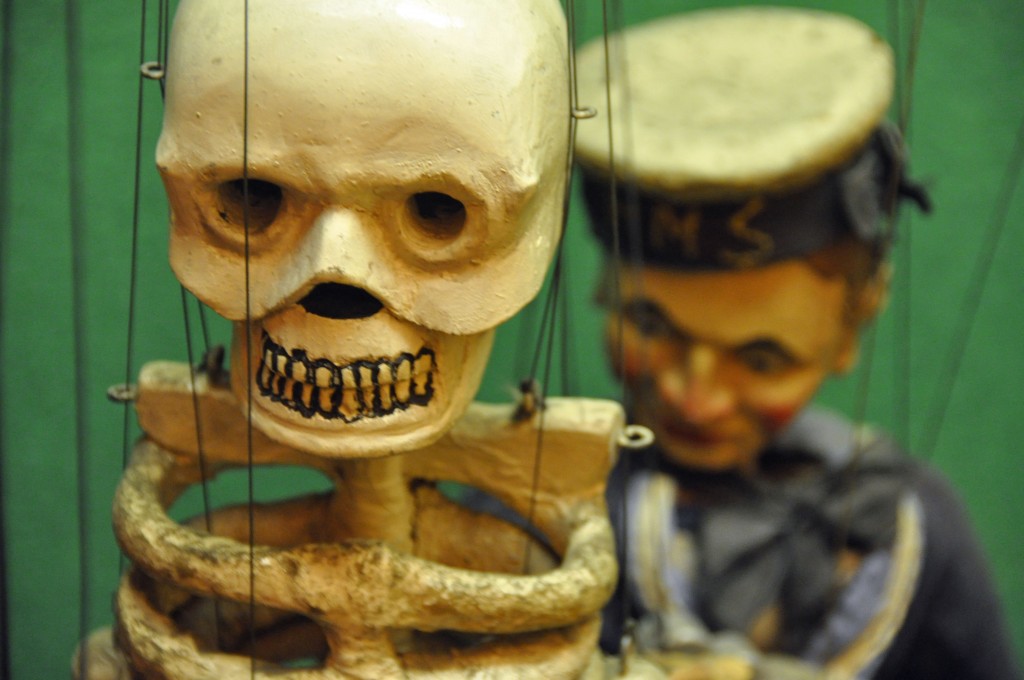 In fact one of the great difficulties in disagreeing with the European Convention of Human Rights is the very basis upon which it is written. The rights in the ECHR are very simple. They include the right to life, liberty and security of person; the right to a fair trial; protection from torture and ill treatment; freedom of thought, conscience, religion, speech and assembly; the right to marry; the right to free elections; the right to fair access to the country’s education system; and, to top things off, the right not to be discriminated against.
In fact one of the great difficulties in disagreeing with the European Convention of Human Rights is the very basis upon which it is written. The rights in the ECHR are very simple. They include the right to life, liberty and security of person; the right to a fair trial; protection from torture and ill treatment; freedom of thought, conscience, religion, speech and assembly; the right to marry; the right to free elections; the right to fair access to the country’s education system; and, to top things off, the right not to be discriminated against.
Which of these rights would you not want? Which of these rights would you want to leave out of a British Bill of Rights? If the answer is none, then what benefit is there to rewriting a piece of legislation that we already have, only to say the same thing. 
May 17th: European Standards
The Conservatives promised an in/out EU referendum and now they have to deliver. The Government will need to address people’s concerns about Europe, often stoked up by his own backbenchers relating to:
- Immigration (see previous post)
- Trade (see previous post)
- Sovereignty (see previous post)
- Global Standards and Regulation; and,
- Reform
The European Union is based on four core principles: freedom of movement, goods, capital and services. It is a trading group of nation states.
What is wrong with the standards and regulations set by Europe?
- Global standards & regulations
The European Union was set up primarily as a trade agreement in the hope that by tying together the economic interests of Germany and France, their political interests would lead away from yet another world war.
The EU boosts trade between member states using three basic tools:
- eliminating tariffs on goods within the EU;
- establishing the right of all EU companies and people to sell their goods, services or labour and to invest their capital in companies and people across the EU; and,
- reducing the cost of potential exporters having to comply with a multitude of rule books by establishing minimum standards. Membership of the EU means that exporters no longer have to produce 28 slightly different products to comply with the rules across 28 different markets.
In an increasingly interdependent world, and more particularly in an interdependent Europe, common standards, of agreed rules and regulations is an unavoidable reality.
May 19th: Announcements
One of my daughters has announced she’s gay. Her father has announced that our ginger tom cat has turned stand-offish. I’m not sure what either expects me to make of these announcements or whether I’m supposed to worry.
I’m not worried.
My daughter might be gay. She might not. She’s a teenager. I tend to regard sexuality as a spectrum unlike gender which does seem to be somewhat binary, set in stone pre-puberty whatever the gender of the body you’re born into. A few of us might be at one sexual extreme or another, 100% hetero or homo, but Im guessing that most of us lie somewhere in the middle.
Sexuality seems to depend quite significantly on the society we live in and how conformable we want to be, how easy we want our lives to be, and let’s face it, whether we meet up with people we can fall in love with of the “appropriate” gender. The fact that most us describe ourselves as heterosexul whilst showing physical sign of arousal when shown homo porn in every test designed and executed, back up my argument somewhat. But hey, I’m okay with anyone who wants to regard themselves as 110% straight. Might not believe them – there’s definitely some truth to the idea that extremist hide latent tendencies amongst my aquaintences.
Anyway back to the point about my daughter. I’m happy to belive her when she tells me she’s gay, happy to support her whatever her lifestyle and life choices and would love to meet her girlfriend as and when she’s ready. It really doesn’t make much difference whether she brings home a boy or a girl – equally traumatic.
But I’m also okay if in a year or two or twenty, she changes her mind. People do. And life is a lot richer for the variations and varieties around us. I’m concerned that she should meet up with people who are good people, not really too worried about gender.
A liberal change in attitudes towards sexuality seems to be one of the most radical shifts in culture since my own teenage years. It still is a long way from perfect. Homophobic abuse seems to remain a serious problem for young kids and teens. But we are beginning to see a re-structuring where societal barriers can be dismantled.
So gay child – not worried, what about the tom cat? He’s just over a year old, essentially going through the equivalent of his teenage years. Over the last couple of weeks almost every neighbour has taken one of us aside to ask whether we have a ginger cat in residence and to comment on how lovely and friendly he seems to be. Most have also noted that they haven’t let him into the house. Yet.
He’s a bit of a rock star. All his life he has been loved and adored so now he just expects everyone to love and adore him. It’s not a bad way to be since essentially he really is very adorable. Cats unlike people don’t seem to second guess affection – they just accept it, enjoy it and want more of the same. He might be being a bit stand-offish since my kid’s dad has just retired and is around the house a lot more. Maybe there’s something territorial going on here.
 Or maybe he just isn’t getting his usual standard of adoring attention so looks elswhere. I’ve advised the human part of the equation to get more generous with the cat treats but apparently he doesn’t want to “buy” the ginger boy’s affections. He does worry about the cause and quality of affection.
Or maybe he just isn’t getting his usual standard of adoring attention so looks elswhere. I’ve advised the human part of the equation to get more generous with the cat treats but apparently he doesn’t want to “buy” the ginger boy’s affections. He does worry about the cause and quality of affection.
Aren’t we lucky to have such very small concerns to worry about? Let’s hope it stays that way.
20th May: Reformation
The European Union is based on four core principles: freedom of movement, goods, capital and services. It started life as a trading group of nation states and remains the largest and most sophisticated markets in the world. It accounts for almost 30% of global output, 15% of trade in goods and about 24% of overall global trade.
Every country around the world wants to trade in Europe.

In the UK, an EU referendum has been promised which will decide whether the country stays in the EU or takes itself out. As per previous posts, the Government will need to address people’s concerns about Europe relating to immigration, trade, sovereignty, global standards and regulations.
As part of the discussions on each of these topics, they will need to be clear about what they want to achieve within the European Union. They will need to talk about reform.
Britain has always had a tricky relationship with the EU, being much more sceptical about the value it adds than the citizens of other European countries. The yes/no vote is generally too close to call, but it seems clear that most people believe reform is necessary.
Britain has never been too keen on tying the knot with Europe. It sat aside in the 1950s as Germany, France, Italy and the Benelux countries forged a single market in coal and steel, which became a broader common market. It eventually joined, in 1973, largely because Europe seemed to be where the money was. Britons still think of their relationship with Europe as a transaction based on trade. There is little appetitie for increased political union. UK feelings about the costs and benefits of membership have changed just as the European Union itself has changed.
And ofcourse Europe is no longer the thriving economic club that Britain joined 40 years ago. The euro-zone crisis has exposed a lack of dynamism in much of Europe (though Britain itself is hardly booming) and the British perhaps also feel sidelined, as countries that use the single currency are pulled more tightly together politically.
Last year in an article for the Telegraph (David Cameron: the EU is not working and we will change it …) the current UK Prime Minister identified key issues to be addressed for reform as follows:
- Businesses value the single market but they find the degree of European interference in everyday life excessive.
- People are worried that Britain is being sucked into a United States of Europe; that may be what some others want, but it is not for the UK. They see decisions being taken far away, rather than by their elected representatives in Parliament; and,
- People worry that European rules have allowed people to claim benefits without ever working here.
As a result, he writes, democratic consent for Britain’s membership has worn “wafer thin”.
He goes on to identify a number of “yes” and “no” issues.

The Prime Minister wants to see continued growth in trade within the single market, “turbo-charging free trade” but also wants to see less unnecessary interference, red tape and regulations.
He wants to see even greater cooperation between member states when it comes to issues such as crime and terrorism, agreeing common sanctions over issues such as the Russia/Ukraine proxy war etc. There seems to be popular support for increased integration on some global issues, even in euro-sceptical UK, where the EU is seen to have greater collective negotiating power. This includes non-military threats, including climate change, organised crime and terrorism, protectionism and the rise of Asia, and irregular migration.
But Cameron also wants to be able to step away from ever-closer political union and to reduce the flow of political power towards Brussels from nation states. He restated his opposition to joining the Euro currency, to limit eurozone bailouts and rejects the idea of a European military force.
The EU’s institutions also require further reform to give them greater democratic legitimacy and accountability, features that can feel significantly lacking to those countries where European austerity programmes have been imposed and benefits have yet to be seen.
A more tightly managed and focused EU, with improved accountability to the people of Europe would be an organisation worth fighting for.

25th May: Coeliac
Some friends are coming for lunch and as well as keeping kosher, their son is coeliac ie. cannot tolerate gluten. As vegetarians, people accomodate us and our diets all of the time, some more so than others so I have clear views about the best way to approach dietary restrictions.
 If at all possible, it is so much nicer to have a meal where everyone can eat everything rather than having to label food as it comes out of the kitchen as suitable or unsuitable. So I headed down to the supermarket to have a look at what was available “gluten free”.
If at all possible, it is so much nicer to have a meal where everyone can eat everything rather than having to label food as it comes out of the kitchen as suitable or unsuitable. So I headed down to the supermarket to have a look at what was available “gluten free”.
In some ways it was a pleasant surprise. There are a wide range of substitutes for the more obvious items such as bread, crackers, cereals of all sorts etc. Taking a few home, they were okay but clearly being wheat free had an impact. Like vegetarian substitutes for meat, they seemed a bit taste-free as well as gluten free. And like all sorts of substitutes, to make up for the “lack of” they seemed to have a fair amount of salt and fat added.
So what do you feed a family if you can’t include wheat? If we weren’t vegetarians the classic answer would be “meat and two veg” but in those circumstances most of the vegetarian centrepieces are pastry based. I suppose that we could sit down to a tortilla type of meal.
As always it’s easiest to think first of the things that you would normally feel comfortable making for guests and scratch a whole load off the list. It’s a bit negative but I’m sure everyone does it.
- bread, crackers, wheat cereals and grains such as tabbouleh, semolina, couscous
- processed food includes a surprising amount of wheat, used as a thickener or a stabiliser so everything needs to be checked
So in terms of starch/carbohydrates, we’re left with either potatoes or rice. In terms of international cuisine, there are obvious influences of India or Italy, possibly the Middle East.
One of the easiest styles of food to produce a meal from is a mezze, a series of small plates that everyone can help themselves to whatever they like best. This is usually backed up by bread in our house, but maybe rice or potatoes could be made to work. There are just two problems with this type of meal: the preparation of a lot of small plates is time consuming and troublesome and it lacks a centrepiece or focus.
Possibilities include:
- Risotto “cake: essentially a spring vegetable risotto wrapped in roasted courgettes and served as a centrepoint with fresh pesto;
- Aloo Papri Chaat – a potato salad served with a lassi dressing and lentil chips crumbled on top to replace the usual pastry squares
- hummous – I’ll make my own fresh so as to avoid flour
- quinoa tabbouleh
- olives
- artichokes
- roasted peppers
- fresh mozzarella
- parmesan, roasted nuts
- pickles eg cornichon, capers
- potato crisps
- green salad
 For desert, I can serve fruit in some glasses with slices of home made rocky-road/refrigerator cake. I’ll add a couple of glutenfree icecreams to choose from at the end.
For desert, I can serve fruit in some glasses with slices of home made rocky-road/refrigerator cake. I’ll add a couple of glutenfree icecreams to choose from at the end.
And desert highlights the problems quite well because rocky road refrigerator cake should be incredibly simple – just melt some chocolate and throw in some nuts, fruit, honeycomb and marshmallow. But just like vegetarianism, it’s the “hidden” ingredients that make this more difficult then it should be.
Why do maltesers need to contain gluten when crunchies are listed as gluten-absent? Does that term mean gluten-free or are the company just trying to spoof me into buying crunchies with no guarrantees? And when it comes to marshmallow, obviously tricky for vegetarians as it usually contains gelatine, should I just substitute nougat?
It is possible to find vegatarian mallow, with packs of ridiculously expensive freedom mallows guarranteeing to be gelatine free, sugar free, gluten free, additive free etc. It’s so free of anything worth listing that it makes me wonder what on earth is holding it all together, seaweed? Looking through the ingredients of nougat becomes clear that finding gluten free is not impossible but equally expensive – at least I can recognise some foodstuffs listed in it’s ingredients.
Now, how much of this can I make a day ahead, and how can I minimise the leftover quinoa?
26th May: Real Men
What does it say about men and their relationships with other men that sexual aggression is often seen as a way to bond? What does it say about men’s desire to “belong” that so many guys don’t intervene even if they feel like what’s going on around them is totally wrong?
 Are the examples of routine sexism we see coming out of the twitter hashtag EverydaySexism an aberration, or is it really an accurate expression of how men are taught to feel about and treat women? And if that’s the case, what are we supposed to do about it?
Are the examples of routine sexism we see coming out of the twitter hashtag EverydaySexism an aberration, or is it really an accurate expression of how men are taught to feel about and treat women? And if that’s the case, what are we supposed to do about it?
There was an interesting article in Salon talking to Michael Kimmel, a professor of sociology at Stonybrook University, an influential researchers on men and masculinities. He was asked for his perspective on fraternities, male friendship, cultural messaging about “real” men and what it might mean to remake masculinity.
When we see men posting pictures of almost ritualised group sex acts do we see sexual aggression functioning as a kind of social adhesive? These men seem to feel connected to the other men involved, but only through degrading women.
This is a paradox. These are all young men who if asked would probably claim to be heterosexual and love women. And yet the way that they connect to other men is by putting women down or sharing in the degradation of women. How can we reconcile those two things? These men seem to hold women in contempt.
That seems to be the very basis of their heterosexuality.

In psychology, there’s a well-established phenomenon called “cognitive dissonance,” where what you believe and what you do are at odds with each other, and that creates a dissonance, a kind of tension, that then has to be resolved. The classic example might be smoking – I know it’s bad for me, but I smoke. How do you deal with that? How do you deal with the fact that what you’re doing is contrary to what you know to be the right thing to do?
It’s important to recognise that most of the men, in fact virtually all of the men, acting in this way would never say “this just shows what contempt we hold women in.”
So you have to ask: Why not? Why is there such a difference between what we see from the outside when we look at what they’re doing, the photos and videos they’re posting etc and what they think they’re doing?
When asked, many of these men seem to have two ideas about masculinity in their heads, and they’re often at odds. One of those ideas is what they get from their families, what they get from their churches, what they get from their Shakespeare, and Homer and all those ideas of manly sacrifice and “he who sheds his blood will be my brother” and all of those ideals. We might describe this as ethical manhood, or good manhood. To be a good man: sacrifice, honor, stand up for the little guy.
These are all ideas that men have in their heads about what it means to be a man and these ideas feel eternal to us, the Shakespearean, Homeric, Judeo-Christian. We learn all of these.
But none of these traits would come up if you were to ask these guys in the fraternity what it means to them to be a “real” man, to “man up.” Then you’d hear things such as never showing your feelings, winning at all costs, being a player, being a stud, being a bro, getting rich, getting laid.
When talking about “real” men, something to consider is how we see incentive structures that exist around sexual aggression for young men especially. Young men describe their behaviour as a type of game where the reward is peer approval and being part of the brotherhood. Men taking and sharing degrading or contemptuous photos of women becomes not only a way to bond as a group, but also to prove their manhood as individuals
These two ideas about what it means to be a man, to be a “good” man versus being a “real” man are placed in conflict.
As broader culture we need to manage this “game” to remove the incentive structures in place. We need make sure that these young men understand that it will cost them if they betray their ideas about what it means to be a good man in order to satisfy this idea of being a “real” man.
Young men need to understand that if they betray their ethics they will be shamed by society and should be ashamed of themselves.
This is not an attempt to change what men understand by masculinity so much as to encourage them to listen to their own ideas and ideals, to be good men.
When talking about athletes, fraternity guys, military — three areas where we’re currently experiencing a cultural conversation about sexual assault — it seems that all of them are unified by their claims to honor, integrity, shared sacrifice whilst debasing and trashing the women they come across. Their treatment of women is clearly inconsistent with these ideals and is often described as a kind of “compensation” for all of that manly sacrifice and teamwork.
Institutions and indiviuals within them have to find effective ways to hold boys and young men to account.
If you do something that is so disrespectful of others and you have basically violated something about the institution’s code of conduct about the way you’re supposed to behave…
“You have broken something about the community, you have betrayed this community. You signed an agreement when you came to this school/university/acadamy that you would abide by the student code of conduct. Well, you violated that. We now believe that you need to repair the damage you have done to this community. You’ve rent the fabric of the community and you have to repair it in some way.” Michael Kimmel
Frankly, this is something that can be done in parallel to the criminal system. Individuals and the institutions and workplaces that they occupy have a responsibility to society above and beyond invoking the rule of law.
Because if it’s a legal procedure, you have a constitutional right to due process in a criminal case but you don’t have a constitutional right to go to a particular school/university/academy/institution which can and should decide you’ve blown it.
Individual organisations can and should hold their stakeholders accountable. They can decide an individual has done something so egregious that they require that person to separate themselves; to take some time-out; do something educational around the issues or problem, and then be considered for return.
If someone damages the community, it should be possible to ask that person to do something proactive to repair it.
29th May: Temptation
According to Christian tradition, Jesus taught his disciples a prayer to God, the Lord’s Prayer and amongst many semingly simple lines, one has always stood out as tricky:
“Dear Lord, … Lead me not into temptation”
Surely it is not the business of God to tempt us but rather the other guy, or our own weak sinful selves?
It might seem a bit esoteric or quaintly archaic to those with little or no religion themselves, but this idea of temptation, no matter how biblical has firmly embedded itself into our Western cultural narrative.
“She did it…” is how Adam is said to have responded to God in the garden of Eden. Not “I was weak, curious or confused and decided to ignore your warning” He puts the blame squarely on the woman’s shoulders, ignoring the fact that throughout the story both Adam and Eve are present. Eve is deceived by the serpent whilst Adam willingly ignores what he has been told by his God.

And so the story of the Fall and original sin is built into our Christian ideology though interestingly this idea of the Fall from grace is not found in Judaism, the original story or interpretation.
Another way of translating the Lord’s Prayer might say
“Dear Lord, … Do not test me”
As Jesus was tested (or tempted) in the wilderness, we ask not to be tested in sure and certain knowledge that we are weak and feeble and will surely fail. We ask that we not be sent any great or difficult moral dilemmas or challenges, for fear of making the wrong decision, fear of being cowardly and sinking rather than rising to the challenge.
The newspapers are currently full of stories of school proms or end of year parties and their dress codes. They’re more of an American tradition, but are gaining ground in the UK year by year. There have been articles talking about the dress codes we apply to our children at school more generally as well. Looking through a few newspapers and searching quickly online for headlines it seems clear that most of the dress codes are drawn one way.
Girls must dress modestly for fear of tempting the boys sitting next to them.

Common rules include skirt length, shoulders covered, no baring of backs or tummies. My kids are both at single-sex schools and I’m still familiar with these rules. It’s difficult to see why. Presumably they must be modest to avoid tempting the paedophiles and dirty old men sitting on the bus or train next to them.
How is a bare shoulder or midriff testing these men exactly?
Are we trying to police thoughts or actions here? What exactly are these school boys being tempted to do? Becuase the minute it crosses over from being an internal thought to an external action, we need to be clear about responsbility.
If a dirty old man starts to masturbate on a train infront of a fourteen year old girl, are we really going to question the length of her skirt? Would it be any different if it were a fourteen year old boy masturbating – no. Does it make any difference if it’s a public train or a school playing field – no.
Who is responsible for a boy or a man’s sexual thoughts other than the man or boy themselves and their psyche. Why would we even try to police someone’s thoughts anyway?
Aside from the internal workings of a person’s mind being entirely their own business, research shows the average teenage boy to have more than 6 involuntary erections a day, which suggests controlling their sexual thoughts is a lost cause.
I can understand that some parents are uncomfortable with the idea of their children as sexual beings, boys or girls, though clearly teenagers are a raging maelstrom of hormones whether we acknowledge it or not. They are also negotiating their way through society trying to work out what is and what is not acceptable social behaviour.
This is exactly the wrong time to be unclear about boys and girls taking responsibility for their own sexual conduct and behaviour. It is entirely the right time to make certain that kids understand the need for clear and demonstrable consent which would not include “She was dressed like a hooker and asking for it” ie. her skirt was too short, her tummy on display.
Dress codes are sometimes required for the health and safety of people involved so walking around in loose flammable wafting gowns and robes is a bad idea in a science lab when flame tests are being carried out. Neat and tidy might be dull, but is probably sensible when acids and alkalis are being chucked around the room. And running in heels is just stupid. They should not be required because of someone elses aesthetic concerns.
If a boy is distracted in class and fails to learn, sanction the boy for not behaving appropriately if necessary. Or just grade the test and make it clear to his parent’s and him that he needs to focus and take some responsbility for his own education as well as his behaviour.
And why not just thow away the gender specific rules that are all about policing stereoypes. If it’s unfair to sanction girls for boy’s failure to pay attention in class, it is equally unfair (though much rarer) to sanction boys for long hair, and wearing skirts. In fact, just rip up the book when it prescribes skirts for girls only and trousers for boys because the world is made in many flavours, cis-, trans and extraordinary and we should be celebrating that fact not trying to cram everyone back into their 1950s stereotype box.
I’m about to go see the play Everyman | National Theatre | South Bank, London with Chiwetal Elijiofer, where a man is asked to account for his life, to be judged by Death and God. Amongst the many reviews one talked about how the story is re-imagined by Carol Ann Duffy for our much less religious days and audiences. Does this 15th century morality play even make sense to an essentially atheistic or agnostic audience?
It seems that no matter how far we travel from our religious roots, there remains a need for us to account for ouselves in some way, to be remembered well, even without the promise of an afterlife.
We want to believe that we will be remembered as good people.
During the play, it becomes clear to Everyman himself that at the end he is essentially alone. All he is left with are his own deeds, good and bad, for which he must make an accounting.
“I was tempted” has never been and will never be good enough reason for anything.

30th May: Productivity
Winning the election outright, might turn out to be the worst thing possible for the Conservative Party in the UK. It was certainly unexpected, with most predictions betting on a coalition or minority government of some sort. What it means in practice, is that there are very few possible excuses for not following through on the pre-election promises, a problem for the Tories neatly highlighted in the recent Queen’s Speech to Parliament.
So as discussed before, the Conservative Primeminister must:
- Secure the future of the UK: half of all Scottish voters elected an MP who believes in breaking up the union;
- Hold (and win) the Europe referendum. Having won a majority, Cameron will be able to hold a referendum largely on his own terms and to his own timescale; and,
- Enact a swingeing round of cuts to welfare: find another £10bn cuts over the next two years.
He also has to restore productivity growth: while both employment and GDP have rebounded, productivity continues to lag.
In February, the OECD highlighted the relatively poor productivity in the UK (OECD warns UK must fix productivity problem to raise living …) in an article in the Guardian.
David Cameron has presided over an economy with the weakest productivity record of any government since the second world war, the Office for National Statistics said as it revealed output per worker fell again (0.2%) in the final three months of 2014.
Without improved productivity, any economic gains are fragile and since he has sold his government as the economically sensible and reliable option if the money dries up, or fails to materialise, he’s going to be in trouble.
Why does productivity matter?
Productivity is simply an arithmetic measure of how much we produce given the number of people working. Productivity is higher is we make more stuff with fewer people. Productivity is lower if we make the same stuff (or less) with more people.It matters because in a wealthy economy, the best way to become more wealthy is to make more “stuff” more economic value, more efficiently, with less workers.
So if the UK could reach French productivity levels, we could award ourselves 20% higher wages or take a day off and still earn the same. Or we could spend the extra resources on schools and hospitals, greater benefits for the needy or lower taxes.
Higher productivity should:
- Lower average costs: These cost savings might be passed onto consumers in lower prices, encouraging higher demand, more output and an increase in employment.
- Improve competitiveness and trade performance: Productivity growth and lower unit costs are key determinants of the competitiveness of British firms in global markets.
- Higher profits: Efficiency gains are a source of larger profits for companies which might be re-invested to support the long term growth of the business.
- Higher wages: Businesses can afford higher wages when their workers are more efficient.
- Economic growth: If the British economy can raise the rate of growth of productivity then the trend growth of national output can pick up.

At the beginning of the economic downturn, lower productivity was explained away by some as a rational response with “growth free jobs” ie. companies were reluctant to lay off staff during the bad times even though demand for their goods and services had fallen. But this argument falls away when looking at the recent economic recovery which has not been accompanied by an improved productivity. We’re making more “stuff” but only with more people.
When you measure output per hour worked rather than per worker, it becomes clear that the problem extends beyond the UK to other major economies such as France and Germany.
It’s clear that some parts of the economy have been much worse affected by the crisis than others. One of the problems seems to be that the Financial Services sector isn’t doing the job that it’s supposed to do, pulling capital out of firms in poorly performing sectors and chanelling funds to better performing areas. As a result, companies in the faster-growing sectors take on workers to meet rising demand, because they can’t get a loan from the bank. Companies in the hard-hit companies hold on to workers, hoping something will turn up.

Employment goes up, even if overall output is flat
In more “normal” times slow-growth companies might go bust – and produce a lot of job losses in the process. But in the current environment of super-low interest rates, it’s possible that a lot of them have been able to stagger on, and some lenders, at least, have been unwilling to pull the plug.
In its Financial Stability Report last December, the Financial Services Authority reported that a third of commercial property loans were in “forbearance”.
The biggest concern raisedin the recent OECD report is Britain’s poor record on productivity, a measure of output per worker or hour worked, seen as a measure of whether a nation is becoming more efficient and as a key component in raising living standards.
“Weak labour productivity since 2007 has been holding back real wages and well-being. The sustainability of economic expansion and further progress in living standards rest on boosting productivity growth, which is a key challenge for the coming years”
Britain’s productivity gap with other G7 advanced economies such as the US has widened to its largest since 1992, according to official figures last week.
The level of GDP per worker and GDP per hour worked in the UK is well below that of the United States, France and Germany. This is known as the productivity gap. Some progress has been made in closing the gap but there is still much work to do.
No one factor on its own is sufficient to explain the differences in efficiency.
- Relatively low rates of capital investment in the UK both within industry (eg. investing in new, improved Plant and Machinery) and within government (eg. investing in infrastructure such as roads, rail, public and private transport to improve the efficiency of the population as a whole)– i.e. the failure of the economy to invest and thereby to raise the stock of physical capital available to the workforce;
- Low rates of spending on research and development – The UK now devotes much less of GDP to research spending than other nations and this impacts on the pace of innovation and the speed with which new technology is incorporated into production;
- Skills of the labour force – there are long-standing concerns about the educational skills of the UK labour force including basic literacy and the quality of job specific training. Britain has one of the highest rates of functional illiteracy among adults, together with fewer workers with higher skills (at degree level or above) compared to the United States and fewer workers with intermediate and vocational skills compared to Germany and Japan; and,
- Over-regulation of industry and commerce and a lack of competition – the 1999 McKinsey Report highlighted a lack of competitive pressures in some industries (notably retailing) as a source of inefficiency and low productivity growth.

The OECD draws a direct link between Britain’s poor productivity record and the squeeze on living standards over recent years.
Income and wealth are below the G7 average and real earnings have been exceptionally weak as they have continued to reflect poor productivity,” its report into the UK says.
It notes that the UK significantly lags the best performing OECD countries when it comes to GDP per head in real terms, adjusted for inflation and seen as a better guide to living standards than GDP taken alone.
Developing a knowledge-based economy, strengthening infrastructure investment and improving the financing of the economy are all critical in this regard,” the thinktank adds.
It also flags related, long-standing challenges for the UK on “education and skills, take-up of research, infrastructure and land-use planning, and access to finance for young and innovative firms.”
Rather sadly for David Cameron, none of the suggested solutions to lower productivity are quick-fixes, none will show a return during the lifetime of his government and it is perhaps the chronic short-term attitude both of the UK government and industry that is the heart of this problem.
1st June: Garden
I am an exceptionally poorly educated but enthusiastic gardener, with vague memories of strange names for common plants to guide me towards and away from things. The garden we inherited is a small suburban effort. It has great bones or structure, offset set by bone-dry tendencies.
The plants that I would love to grow, great fleshy structural bog-loving monsters, just can’t survive. I am driven towards Mediterranean plants for the hot, dry sun and any old thug that can survive in the dry shade at the back.
As with all middle-class gardeners of a certain age, I have accumulated a number of gardening books, mostly gifts from people who don’t know me that well, some from people who know me very well indeed, and worst of all, some that I’ve bought myself. For me, gardening is a clear sign of my age, along with a commitment to saving up for things, playing bridge and a general dislike of change.
My books have handy hints on the jobs that I should tackle this month:
- Cut back early flowering plants to within 10cm ground
- Divide my primroses and mulch my shade-tolerating plants
- Water everything well as this is possibly the driest month (good to know if you’re planning a holiday trip to London)
- Nuke the lilies, Solomon Seal and sweet peas with systemic insecticide (they’re quite old fashioned gardening books, not remotely organic)
- Lift tulip bulbs and store away some place dry
- Weed and hoe my alpine bed, deadheading aubrietas to avoid seeding around.
- Watch things grow and stake as necessary
Another book tells me what plants I should see arriving though to be fair, it feels a bit inbetween. The wisteria has gone over. The spring bulbs and wallflowers are really on their last legs and need putting away. Lots of things are about to arrive but everything feels a little bit thin.
Then I look over to my neighbour’s garden and see the most beautiful display, a bit too neat for my taste, but really just very very pretty, especially the rock roses.
Then looking down, I see a very impressive and entirely accidental display of alliums that I bunged in last minute in October and then forgot all about. Maybe I should work out what type they are and plant some more up top to carry over the bed with the wallflowers.
Or maybe instead of being somewhat desperate to bung more and more plants into really quite a small space, I should just wait a week or so and see what happens.
Growing old and gardening patience don’t seem to flow together quite as expected. Shame.
2nd June: Financial Advisor
What advice do you give to your children about money? What do we say that will send them on their way, safely and securely into the furture?
As a mad, middle-class saver, my advice (and way of living) has always been to save as much money as possible, usually in small, regular amounts that I’ve tried not to notice losing from my monthly income and set it aside for my old-age and for any rainy day disaster that life throws at me. It’s fairly traditional stuff, along with that desperate attempt to set them up with a good education and a suitably safe profession.
Merryn Somerset web writes in the Saturday FT and is an editor of MoneyWeek. This week she wrote about a trip to a secondary school as part of the Speakers for Schools programme.
Her objectives are clear: to help them understand what money is, how it is made, and where it comes from and to understand how it grows.
But then the article takes an interesting turn. maybe this classic advice isn’y actually the right message for the real world we’re living in, especially in the UK with it’s somewhat bizarre tax policies and the incentives they create.
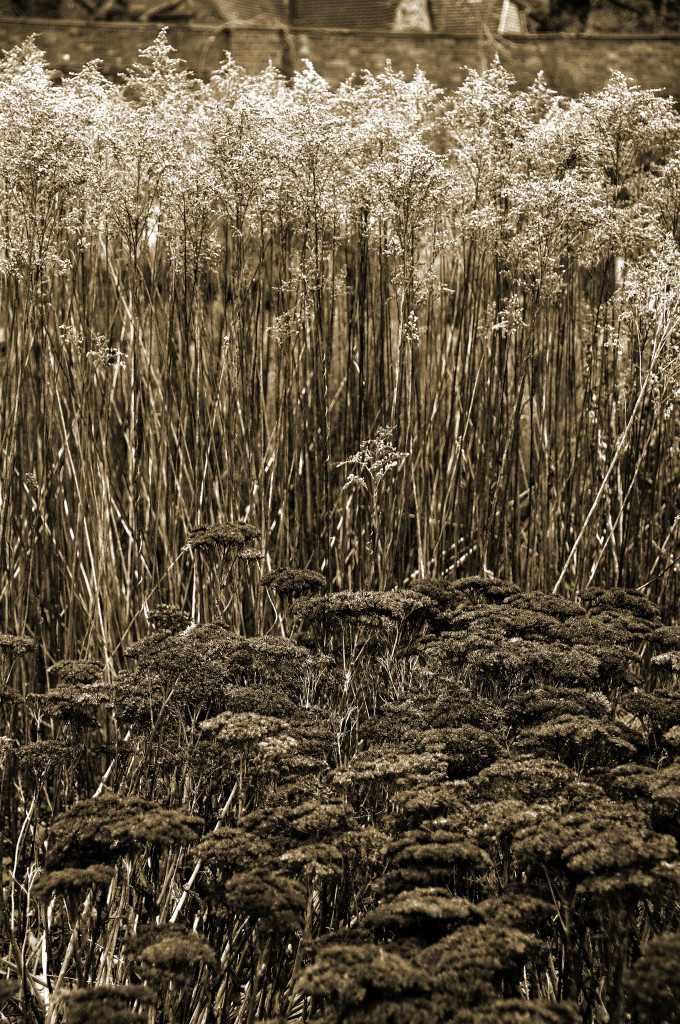 Working and saving hard might be one way to create a reasonable retirement but, perhaps a much better route to wealth is to work 16 hours a week, borrow money to buy a house on the side, and to devote the rest of your time to being really nice to your relatives in the hope that they will favour you in their wills.
Working and saving hard might be one way to create a reasonable retirement but, perhaps a much better route to wealth is to work 16 hours a week, borrow money to buy a house on the side, and to devote the rest of your time to being really nice to your relatives in the hope that they will favour you in their wills.
The 16 hours work required is because that is the number of hours our system insists that you work in order to claim in-work benefits, or working tax credits. This has rather tricky implications for UK productivity, something that I’ve written about before, since there is often minimal value in working past 16 hours. It means that about 3.5m part time workers in the country end up taking home more than the median full time wage. Work for 16 hours (as many do — since 2012 the average number of hours worked part-time has averaged 16.1) and, while you won’tliving the high life, your basic living costs should be covered.
The suggestion to borrow cheap and buy a house is obvious but specific to the UK. here there is no tax on any profits made on your residence. There is tax relief on mortgage interest payments for buy-to-let and there is an astonishing level of commitment from the UK government to keep house prices rising. This has all made buying houses a good way to get rich in the UK.
Being nice to relatives is all because this government’s policies are remarkably inheritance friendly. Couples can already leave £650,000 between them inheritance tax free. And in their manifesto the Conservatives promised to add another £350,000 per couple to that for the “family home”. So if you are from a reasonably well off family — or just one with any old hovel in London — and the July budget follows through on the plan there’s a million waiting to be claimed from the estate of any friendly relative.
For the real money from the oldies however, turn to their pensions. Until very recently there wasn’t much for an heir to get excited about here. All annuities died with their owners and pension assets held in drawdown were liable for a 55 per cent tax on the death of their owner. But that’s changed. Under the new regulations anyone who dies before they are 75 can leave everything in their pension up to their lifetime allowance to their heirs 100 per cent tax-free.
So, if we have £3m in our pension funds and a protected LTA and we die horribly in a car crash two days before our 75th birthdays, the whole lot passes down tax-free. The system takes no account of the fact that the money was originally saved income tax free in the expectation that it would be spent and hence taxed later. It just hands it over, no questions asked.
 Even if we die past 75 the deal is pretty amazing (although why the pre-75 and post-75 deals are different in the first place remains a mystery). The money stays inside its pension wrapper where it can roll up income and capital gains tax-free indefinitely. It effectively becomes a long-term family trust for the lucky heirs, one that gets to utilise the holy grail of investing (tax free compounding) for as long as he or she fancies. The only tax payable comes when you withdraw cash from the fund — then you pay your marginal rate of income tax on it.
Even if we die past 75 the deal is pretty amazing (although why the pre-75 and post-75 deals are different in the first place remains a mystery). The money stays inside its pension wrapper where it can roll up income and capital gains tax-free indefinitely. It effectively becomes a long-term family trust for the lucky heirs, one that gets to utilise the holy grail of investing (tax free compounding) for as long as he or she fancies. The only tax payable comes when you withdraw cash from the fund — then you pay your marginal rate of income tax on it.
So be born lucky enough to be the child of parents with large pensions, or have the time to find a relative who has one and likes you, and you could find yourself the happy owner of millions of pounds worth of tax free cash.
The basic point here is really about incentives. If you tax income from inheritance less than you tax income earned from productive work, you begin to skew the perception of the value of work. If you incentivise people to work part time you get a lot of part time workers with unsatisfactory careers (and low productivity). And if you use the tax system to show that you favour housing above all else you get very expensive houses and as a knock on, possibly lower levels of productive investment than you would like.
3rd June: Plant Shopping
Gardens are always changing, never quite right or perfect and highly personal, even really small suburban gardens like mine.
Tracking the garden through the months this year, has given me a bit more structure to my plans for next year. Wait and watch for the gaps to appear. Enjoy deciding what to use to fill them for the following year or maybe just wait and allow another plant to fill the gap.
Gaps appear for a number of reasons: old plants die or wither away to nothing, planting from last year doesn’t quite fill out the way you’d expected and sometimes, it’s a gap that’s always been there and hasn’t been noticed because there have been other bigger problems to deal with first.
The shady garden at the back was nothing but gaps, simple, bone dry and bare earth when we started to clear the overhanging trees and dig in the manure. The gravel garden was built on top of a mossy cement garage roof. So gaps in the beds of the main garden have been somewhat ignored by bigger projects.
And the gaps as always are highlighted by the beautiful garden next door which is at it’s best just now, full of lovely soft shades of pink, purple and blue when compared with all too much green in my own beds.
My gap is one of time rather than planting. I’ve enjoyed the daffodils, the tulips and wallflowers but they’ve passed. The perovskia isn’t due to flower until September. I need something to bridge the gap from May through to August.
If I were a good gardener, educated and informed, I’d probably be able to find something that’s already here and propagate it to make bigger and better plants for my gap. I lack both the education and patience. I went shopping instead.
Looking around the gardens in my neighbourhood, is always good value when shopping for plants. Quite a lot of my plants have actually been donated by neighbours after I’ve complimented their own displays. Gardeners are astonishingly generous people, when it comes both to offshoots and cuttings, as well as knowledge about what works and what doesn’t.
Plant catalogues, on-line and off are useful ofcourse, but advice given with a plant is inevitably general to the whole country. I want a showy plant:
- with blue purple or pink (cerise?)
- able to grow happily in my bone dry border (ok to water it to start with but I will forget); and
- must flower May-June, longer if possible.
As I grow older, I find that the plants of my youth, which also seem to play a large part in local park planting schemes, are more and more useful.
The answer to my planting gap has to be an iris, and maybe something light and airy to underplant. Iris are looking beautiful right now. Looking through various books and gardening articles I came across Woottens which has more iris varieties than I could possibly imagine so obviously I went through the lot, picking out the ones I fancied to compare.
The first split was between iris germanica and iris siberica.
I was quite excited by the idea of siberian iris because it was described as being especially suitable for London, for heavy soild and frequently shady gardens as well as having the famous comment “needs no special care, being disease free and untroubled by pests”
But then came the bad news: “The Siberian iris is native to Turkey where it grows in swampy ground.”
My garden is as far from swamp as it is possible to get. Still keen I took a look through the list hoping against hope for the suggestion one could survive bone dry ground. And found some beautiful plants like “Valda”
Redish purple flowers. Flowers May-June. Sheathes of grassy leaves. Ht. 80cm. Sp. 60cm. Bog, moist soil or dry soil once established. Lime tolerant. Part shade or sun.
How long would I need to water it and how often, before I could regard it as established? Tricky.
Looking through the bearded iris I had a bit more luck finding plants for the dry but they seem to be a lot more tempramental in terms of other care.
“Bearded Irises must enjoy full sun and sharp drainage. They disdain the miseries of shade and clay. Interplant Bearded Irises with plants with scanty foliage: alpine pinks, late flowering alliums…. Bearded Irises dislike being crowded in with other plants. They need an open position where they can feel the breeze. Poor air circulation, like sticky soil, leads to bacterial problems. To flower well, Bearded Irises need full sun for at least six hours a day.”
Well, sun and sharp drainage I can manage but I’m not so sure about providing space and breeze. I am a chronic overplanter.
There were so many to choose from that I could whittle the list down by all sorts of criteria. I chose to focus on blue iris, ruling out white, yellow or purple though many were very beautiful. Then I started to think about size and ruled anything out above a metre. In the end iris germanica Kharput came out as the winner:
“Intermediate Iris. Violet Self. Early flowering. Ht. 40cm Collected in Mesopotamia in1895 by Barr.”
But as all good nurseries, Woottens won’t send out my plants until they’re ready to plant out so I will have to wait until July at the earliest to receive my new babies.
The problem with this ofcourse is that by now I’m all excited about plants and have nothing to plant out. I don’t think I can be blamed for looking for some more sweeties in the shop.
Luckily (?) I has two pots with some very woody lavender plants that need replacing. They are ideal for hardy salvias which Woottens also has a nice amount of stock. I know that sage will grow well and easily in my garden because I’ve had it before for many years. In the end it just got too woody and was replaced by some new plants, notably some rather loveley allium aflatuensa that I dug in last Autumn and immediately forgot about.
I had always associated salvia with the culinary sage plant with it’s blue flowers and often variegated leaves.Looking through the list of hardy salvias on-line I found a whole new set of colours, blues, purples, pinks, yellows and whites as well as the most beautiful combinations such as “Hot Lips”
In the end though I settled for a bright and beautiful hot pink, salvia greggi “Icing Sugar” mainly for it’s outrageously long flowering season “Mauve lilac flowers. Flowers June-December. Sharply drained soil. Sun. Ht. 60cm. Sp. 35cm. Prune in spring.”
At the back of my mind is the idea that if the perovskia planted in the gap last year but not flowering until Spetember doesn’t quite work out, maybe I can move this salvia from the pots to the gap, to bridge the gap from the iris through to the endof the year.
Feeling as if everything was working out well, I couldn’t help myself checking out plants (aka thugs) for the dry shade at the back. It’s the kind of place that suits plants most of spend years digging out and throwing away like honesty (lunaria) which is an annual that self-seeds madly about. I also found some pots of meconopsis cambrica to help spread my self-seeded plant spread.
And since I was already shopping on-line, and because I’m really not very good at discretion, I went to my favourite alpine nursery and found some bulbs and plants that I couldn’t resist over there too.
The plants I couldn’t resist were:
- Gypsophila repens ‘Rosa Schonheit’
Gypsophila tenuifolia; and, - ARMERIA maritima Alba
There is a small trough at the front of the bed with the gap. These might be the plants to distract from the mound of green behind, waiting for the lavender to flower. Though maybe the white armeria will land in the fritellaria bed to give it a little bit more oomph.
White is a flower colour that I don’t really use much – too subtle for me mostly – but definitely has more impact against the gree and in the distance than some of my favourite colours.
I’ve also bought some more bulbs:
- Allium aflatunese ‘Purple Sensation’
- Crocus ‘Remembrance’
- Muscari aucheri ‘Blue Magic’
- Tulipa humilis ‘Lilliput’
The alliums are the great (forgotton) success planted last Autumn and loved this May-June, which I will dot around the back bed to punctuate the lavender. The tulipa are perenials and don’t need to be lifted so I can plant them into the new gravel bed and watch them spread without stress or strain. The muscari can underplant the frittelaria along with the crocus – it just isn’t possible to have too many crocus in a garden.
And ofcourse the only real problem with the garden is my total inability to say “no” to a beautiful plant. In reality I love the appearance of unexpected “gaps” and don’t want to ever feel the garden is finished, complete or perfect.
The garden is a lovely green canvas to paint with colours through the year and satisfies both the need to create and the desire to solve a puzzles and fix problems. I have no great artistic talent, no real sense of creativity but there is a very simple delight in sitting amongst flowers that I’ve planted and knowing it’s all good.
4th June: Welfare
The current UK government has a lot of serous challenges to face up to, most of them targets it has set itself during the election (possibly in the belief that a coalition outcome would render them all moot).
Previous posts have talked about cutting the deficit, keeping Scotland in the Union. renegotiating the relationship with the EU, and controlling immigation. It’s time to return to what might be, politically speaking, the least contentious of them all: welfare spending.
The government has pledged to cut £12bn from the welfare budget by the financial year 2017-18. It has also promised to protect pensioners. How do they plan to do both? And will it work?
Once you remove pensions (42% of the total bill) from the equation, welfare makes up 22% of the government’s budget, around £220billion. Excluding the state pension from the cuts effectively doubles the cuts which has to be made elsewhere.
The last government, a conservative-liberal coalition made welfare cuts of £17 billion. £9.5 billion of that came from increasing benefits below the level of inflation, with much of the rest made up by restricting child benefit for wealthier families.
This time it won’t be as easy.
To start with, the timescale promised by the conservatives is much tighter – the last bunch of cuts were made over the course of the whole Parliament, whereas these ones have got to be made by the 2017-18 financial year, just 3 years.
Also, welfare spending is complicated. Squeezing it in one place just makes it bulge out in another. Cut jobseeker’s allowance, and more people claim tax credits because they’re moving into low-paid work. Cut tax credits, and more people claim housing benefit because they can’t afford their rent on their own. Cut housing benefit, and landlords become less likely to buy to let, potentially reducing revenues elsewhere.
During the election campaign, George Osborne was reluctant to provide any details and his government continue to be very coy – we’re told to wait until the next budget.
Some proposals did appear in the Conservative manifesto:
- Lower the benefits-per-household cap from £26,000 to £23,000 – included in the latest Queen’s Speech
- Freeze working age benefits for two years (excluding disability)
- End housing benefit for 18-21 year olds on Jobseekers’ Allowance
- Deliver the long-awaited Universal Credit reform
- “Review” benefits for sick claimants who refuse treatment
Robert Joyce, of the independent Institute for Fiscal Studies, was asked how much money these would actually save – not enough.
Reducing the benefit cap may sound good to “hardworking families” who read the many tabloid reports about individual high-claim families. The problem is that there are only about 70,000 of those in the country. This would save just £135 million.
According to Robert Joyce, “Freezing things below inflation saved quite a lot of money over the last five years, because inflation was quite high. But now that we’re in a low inflation environment, there’s less scope to save money with those kinds of policies.”
If working-age benefits rose according to inflation, they would only be 0.2% higher in April 2016 than today. So a policy initially projected to save £2.7 billion may now only save £1 billion.
Ending housing benefit for jobless youngsters would save another £100 million.
In tomorrow’s prices, the suggested changes add up to just £1.5 billion out of a required £12 billion.
Where does the rest come from?
Without Government comment, we might reasonably look at documents which were leaked before the election, documents describing possible scenarios. They include:
- Limiting welfare payments by family size
- Stricter fit-for-work tests for disability payments
- Barring under-25s from incapacity or housing benefit
- Abolishing contributory Job Seekers Allowance (JSA) and Personal Independence Payments (PIP)
- Abolish carer’s allowance
- Taxing disability benefits
- Limiting child benefit to the first two children
- Replacing industrial accident insurance with an employer-funded scheme
The problem is, even these don’t add up to £12bn.
Limiting welfare payments by family size isn’t costed, but suffers from the same problem as the household benefits cap – most families aren’t that big. Stricter disability tests might be hard to achieve; the government has suffered numerous successful appeals from people it judged fit to work.
Limiting child benefit to two children per family could save £1 billion a year, but only if it came into effect immediately – so people with large families would suddenly lose their benefits. That might be unpopular, and if it wasn’t done, the effect would be negligible.
We spend around £5 billion on ‘contributory’ (as opposed to means-tested) JSA and PIP, but ending them would only save £1.3 billion because most people would be eligible for the means-tested versions.
Abolishing carer’s allowance would save perhaps £1 billion, ending industrial accidents insurance another £1 billion, and taxing various disability payments – one of the few measures here which would actually be progressive rather than regressive – could save £1.5 billion – as long as you include pensioners.
Barring under-25s from housing benefit would save £1.6 billion if applied to all of them. But these kinds of policies often have politically sensitive exemptions. If applied only to young people without children, it would save £700 million.
How are we doing so far?
Not enough – what else?
Danny Alexander’s leak of lowering child benefit for the first child in each family would save £2.5 billion. The IFS thinks we could save £4.8 billion if we successfully abolished child benefit completely and rolled it into Universal Credit though when asked on the Radio 4 Today Programme, various Conservative politicians have ruled out significant changes to child benefit.
Making all housing benefits claimants pay the first 10% of their rent would save £1.6 billion if applied only to those in social housing, and another £900 million if applied to the private sector too. And freezing all working age benefits totally for five years would save a fairly impressive £9.4 billion.
Now, finally, we have a set of policies which could fill that £12bn gap. But that gap can’t be filled by doing only what the Conservatives have already promised. To hit their target, the government has to get creative.
“Having made so many cuts over the last parliament,” says Robert Joyce, “they’ve ticked off a ones which are a lot easier, whether politically or economically. So what’s left are the harder ones. These are the less palatable changes, which take money from people overnight.”
It’s important to remember, why welfare spending is hard to cut. If the government legally binds itself to pay a certain amount of money to whoever meets certain criteria, it can’t just refuse to pay out if the number of people meeting those criteria happens to rise. If the economy crashes, then welfare spending is going to rise because there will be more people who need it.

So you can reduce how much you pay people, or set a higher bar for payment, but these things only go so far before the politics get difficult.
And remember the welfare state is a big part of British family life, with 20.3 million families receiving some kind of benefit (64% of all families), about 8.7 million of them pensioners. For 9.6 million families, benefits make up more than half of their income (30% of all families), around 5.3 million of them pensioners.
That means a lot of voters will be impacted by these cuts to benefits.
Atos, the private company which administers fit-to-work tests, recently pulled out of its contract due to the negative publicity it had received from campaigners. Some companies did the same with government “workfare” schemes in the mid-term of the Coalition.
If the only people who object are hardcore leftists, the government won’t worry too much but if there’s a broader sense of anger, as Margaret Thatcher faced over the poll tax, it might give them pause.
Let’s assume it succeeds and all the cuts go through. They might still end up being worth nothing, being cancelled out.
Total benefit spending has remained quite flat since 2010, says Robert Joyce. “That is partly because of an ageing society and more pensioner spending, but also unanticipated factors: low earnings growth pushing up means-tested entitlements, rising rents and more people renting pushing up housing benefit spending.
“Further cuts in generosity would again be just one of several factors affecting welfare spending over the coming years: £12bn of such cuts does not mean welfare spending falling by £12bn.”
If that happens, the Conservatives will have made their promised cuts – but failed to reduce the deficit overall.
The Conservatives would still be able to claim that they had done their best and made the tough choices and been thwarted by circumstances outside their control. Would that be good enough to earn them another term in governemnt?
5th June: Intimacy
A friend recently told me that you could tell the magic had gone in your relationship, when you no longer thought twice about telling your partner that you had piles. For those lucky of you not to understand what these are: haemorrhoids or piles are swellings containing enlarged blood vessels that are found inside or around your the bottom.
Charming.
Around 50% of the UK population will experience piles at some point, so eat your vegetables and drink lots of water, or else.
Intimacy is a funny thing. For some people it requires mystery and, somewhat perversely, a degree of distance at least from some of the physical realities of each others bodies.
The problem with this vision of intimacy is it’s total failure in the face of relationship, especially family relationship, reality.
I have my limits. Unlike one friend, I would not feel comfortable sharing a bathroom while my partner takes a pee, never mind a poop. I wouldn’t choose to join him in the bathroom and share a conversation while I myself used the toilet. In fact thinking this through, there might be a very long list of things that I’ve never felt the need to share.
I would not pick my nose infront of him (not even a good rummage with a tissue) nor squeeze spots, nor change tampons etc
Bodily fluids appear to be my boundary.
Though not with my kids. The parents of young children can never really escape them and mostly don’t try, for fear they might hurt themselves if left alone. Even now, it wouldn’t freak me out to share a room with any child of mine even if bodily fluids were involved. It would freak them out of course, but that’s probably a healthy need on their part to establish boundaries. I don’t really have well-established boundaries when it comes to my kids – they’re mine.

And when they’re young, you end up dealing with so much poop, pee, vomit etc not to mention the tears. Let’s not forget headlice (nit combing for hours) or threadworm (you don’t want to know) or the various fungal infections, the poxes, the endless clearing up of blood and gore from menstruating teenagers.
There’s very little room left for physical discretion in the parent-child bond yet it would be impossible to describe it as less than intimate.
And as we get older, and our children age into independence we face up to the needs of our elders, our parents.
And the conversation switches from nappies, through sanitary pads to incontinence pads with barely a pause for thought. Peer conversations start to focus in on dementia and when forgetfulness crosses over into Alzheimer’s Disease or general unsteadiness moves towards Parkinson’s Disease. We become familiar with the names of different types of cancer and start to distinguish between the types that will kill you; we recognise the types that will kill you quickly, slowly, badly.
We have conversations with parents about DNR (Do Not Resuscitate) notices, about whether it’ finally time to move into professional care homes and your mother tells you, she’d rather die.
And suddenly we’re not the grown-up but still the child. Our own mortality is writ large in the face of our elder and we don’t know what to do, want to run away but can’t.
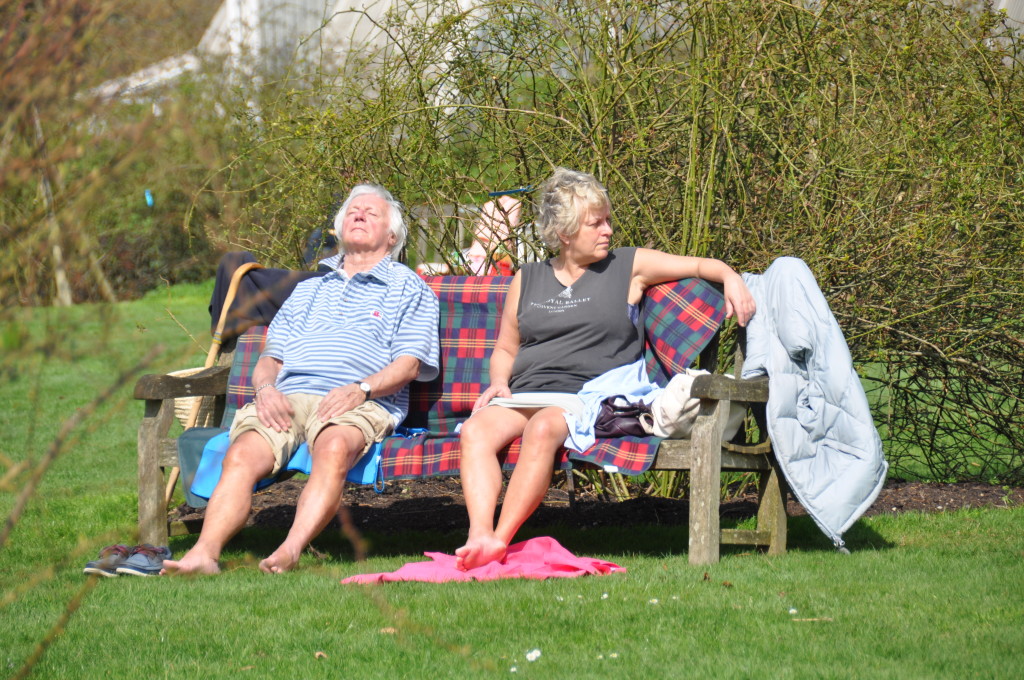
And let’s not forget that not every parent is a great parent. Faced with the decline and impending death of a tyrant, it’s difficult to feel sad. Even if they were good enough parents, here in the UK we seem especially bad at dying a good death.
We ourselves all say we want to die at home but still send our parents away to die with strangers – a very intimate conflict of desires between the generations.
My parents are long dead. His mother is in hospital. DNR has been mentioned, and not by us.
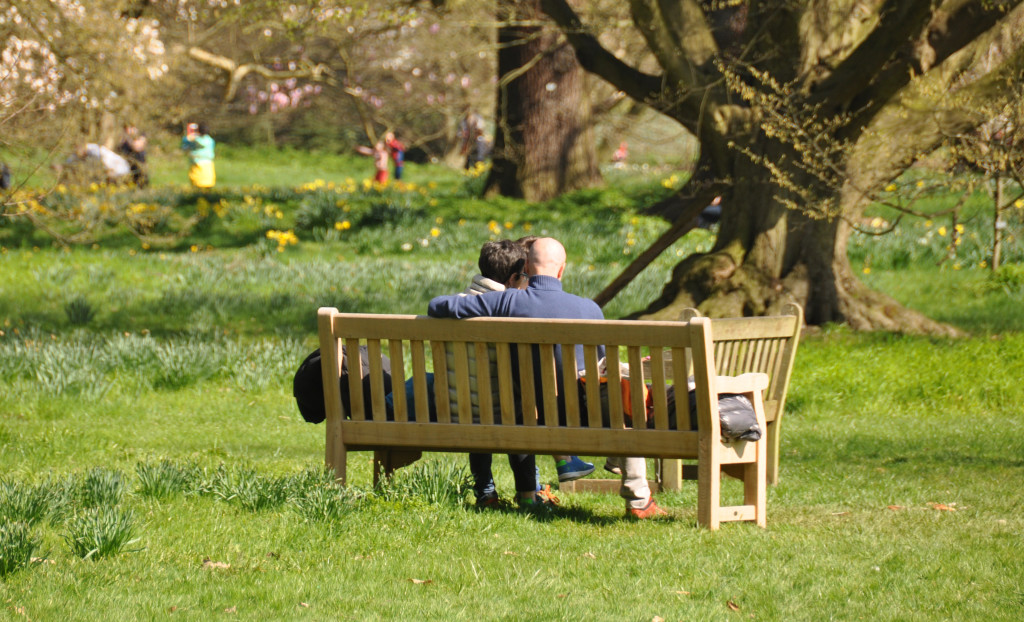
For those of you who’d like to know, piles/haemorrhoids symptoms, might include:
- bleeding after passing poop (the blood will be bright red)
- an itchy bottom
- a lump hanging down outside of the anus (supposedly “grape”-like), which may need to be pushed back in after passing poop or may just hang around annoying you
6th June: Peanuts for Monkeys
The Prime Minister David Cameron has written to Parliamentary authorities opposing a pay hike for MPs of nearly £7,000.
The recommendation by the Independent Parliamentary Standards Authority (IPSA) to increase MPs’ pay by 10.3 per cent, which comes as public sector workers are limited to a one per cent pay rise, has been criticised by both sides of the House of Commons.
IPSA argues that MPs’ pay has fallen over the years to 78% of the salaries awarded to equivalent roles in the public sector, such as top-tier civil servants, chief superintendents in the police and colonels in the armed forces. Do we want to be led by only by people who can afford to take a 10% pay drop when they move into politics?
The frontrunners in the Labour leadership bid said they would not accept the pay rise, although IPSA has previously said that MPs would have little choice in the matter because the money would be paid to them regardless.
But whilst MPs are currently paid a salary of £67,060, which – under Ipsa’s proposals – would rise to £74,000, the body says that that reflects the increase in national average earnings up to 2015. It stressed that, due to cuts in pensions and expenses; such as a ban on claiming for evening meals, the overall package of changes will not cost taxpayers any more.
On this basis, failure to accept the pay increase will result in many MPs being out of pocket.
Back in 2013, Channel4 Fact Check (FactCheck: Do we pay MPs too much? – Blogs – Channel 4) tried to compare the salaries of MPs across the EU and found that UK paid less than most others. The UK was 11th out of 17 countries for which reliable figures could be found, being paid 2.25x the average national wage.
But ofcourse the basic wage rarely tells the whole story. Part of the drive to setting up an independent pay review body in the first place was the less than transparent use of expenses and allowances. And part of the motivation towards this “pay”rise is to combine the various allowances and expenses into one headline figure that can be easily seen and understood.
In Italy and France in particular, generous unaudited expenses mean real average incomes can approach £165,000 and £145,000 respectively, according to research carried out for the Italian parliament.
In Britain you could once add gold-plated pension benefits, expenses to the basic (a London-based MP could claim more than £200,000 this year) and other perks like “winding-up expenditure” that used to be paid – a £56,450 “golden goodbye” payable to an MP who decides to leave office. These have now been tightened considerably.
The rights and wrongs of many of these payments are highly debatable. While most politicians would say that staff costs are a necessary expenses, some do all their own casework. And suspicion always lingers over the practice of MPs putting their family members on the payroll. Some 140 – more than a fifth – were still doing that in 2011/12.
Maybe a better question would be whether or not MPs justify their earnings – it’s virtually impossible to check how much work British politicians do.
The Commons only sat for 145 days in 2012-13, although many MPs will obviously claim they are working hard in their constituencies when not at Westminster. But there is no official record of attendance at Westminster or of constituency work.
The website TheyWorkForYou records how often MPs speak in debates, put written questions to ministers and vote. These are important but not definitive measures of an MP’s activity in the Commons.
There seems little correlation between the overall cost of individual MPs and how hard they work for the people they represent – Tory MP Philip Hollobone (who was revealed as the MP who claimed the least expenses when the scandal broke in 2009) voted in 95% of ballots in parliament. Most MPs voted less and claimed more.
8th June: Scroungers
Recently the Joseph Rowntree Foundation and the New Policy Institute (NPI) worked together to try and discover how many people are in work and receiving benefits. It isn’t easy to calculate, for a variety of reasons. NPI Research Director Tom MacInnes says “There is no official estimate, and adding up government statistics on the numbers receiving each benefit in isolation won’t do because that would double count all those who receive more than one.”
Their statiticss focus on people receiving housing benefit, council tax benefit and working & child tax credits. They defined “working family” as a household with one child and at least one adult in work.
They calculated the figure this way.
In 2012 3,230,000 working families were receiving tax credits.
A further 930,000 working families were receiving housing benefit
and 790,000 working families were receiving council tax benefit.
Some, of course, will be receiving some of the benefits and not others, giving the total figure of 4,300,000.
9th June: Universal Credit
A report published yesterday, by the Resolution Foundation examines the roll-out of the Universal Credit (UC) welfare reforms in the UK.

Universal Credit (UC), comprises welfare reform that integrates six separate welfare benefits. Its champions speak of its power in tackling all manner of social ills from child poverty to unemployment. Ranked against them are those who invoke woeful IT contracting and the snail-like progress of the policy’s roll-out. Media understanding of the underlying policy is in most instances limited, meaning hard questions about it are few and far between. This permits the continuation of a dangerous myth: that the problems facing UC are all about delivery, not design.
Given that Universal Credit will account for £70bn of public spending, and eight million households will be eligible for it – including half of all families with children in the UK – this absence of public scrutiny of the policy choices is puzzling. There has been little discussion about who will win or lose under the new arrangments or whether the right cluster of benefits is being rolled together or indeed whether the entire enterprise will help tackle the labour market problems of tomorrow rather than yesterday.
A group of the UK’s leading welfare and labour market experts, convened by the Resolution Foundation and chaired by Nick Timmins have undertaken research to answer these questions and its report arrived yesterday. It concludes that while Universal Credit shouldn’t be ditched it needs a major overhaul if it is to fulfil its promise.
The rationale for bringing together working-age benefits is an serious one, and has been considered by Labour politicians as well as the current Secretary of State. There are currently serious flaws in the UK system of tax credits and benefits, created over time and to answer different issues and concerns. The existing system involves a number of overlapping means-tests making it hard for claimants to figure out how much better off they are by working; not to mention the multiple (and burdensome) application processes that result in low take-up rates.
According to the new report, the real problem with UC stems not from the desire to integrate benefits, but from its rather narrow view of the social problem that benefit integration could be used to fix.
Basically, UC is a policy shaped by the view that the towering problem facing the UK today is mass worklessness but ofcourse as RF research showed last week, worklessness among non-disabled couples with children has plummeted over the last fifteen years. It sets out to solve a problem that no longer exists. UC seems likely to miss the opportunity to make in-roads into a real problems of our time: in-work poverty and the low pay trap.
 The focus on mass worklessness leads UC to prioritise the ‘main earner’ in a household (still typically the man) resulting in weak incentives for ‘second earners’. To illustrate: a part-time second earner with an annual salary of £10,600 will see their disposable income rise by just £3,600 under UC; under the current system of tax credits it would rise by £6,000. That’s a big reduction in the incentive to work even compared to a status quo which itself is hardly great. Add in childcare costs and it looks far worse.
The focus on mass worklessness leads UC to prioritise the ‘main earner’ in a household (still typically the man) resulting in weak incentives for ‘second earners’. To illustrate: a part-time second earner with an annual salary of £10,600 will see their disposable income rise by just £3,600 under UC; under the current system of tax credits it would rise by £6,000. That’s a big reduction in the incentive to work even compared to a status quo which itself is hardly great. Add in childcare costs and it looks far worse.
Also in its laudable desire to make it attractive to work even a few hours a week, Universal Credit has created a new and important risk: that ‘mini jobs’ increasingly become a resting place in the jobs market, rather than a stepping stone. A single parent who rents and gets paid the minimum wage will see their effective tax rate leap from 0% to 65% after 9 hours of work. We are likely to see a corresponding rise of jobs reflecting these hours (just as we do 16 hour contracts at the moment). It seems likely that some people , nor who are already in work start to slide down the hours scale (at the tax payers’ expense).
Worse still, the proposed remedy against this risk of low-hours working is to dramatically expand the scope of benefit conditionality, including the sanctions regime, to those earning less than a full-time minimum wage salary. The message: get a pay-rise, or more shifts, or face the consequences.
 The redesign proposed by the new report would address these shortfalls. The authors want to provide more “even” incentives for both earners in a household to work and earn more, as well as extra childcare support to allow both parents to work. They would also seek to minimise the risk that people get stuck in this type of work over the long-term. And it would better integrate Universal Credit with other key benefits, like Council Tax Support.
The redesign proposed by the new report would address these shortfalls. The authors want to provide more “even” incentives for both earners in a household to work and earn more, as well as extra childcare support to allow both parents to work. They would also seek to minimise the risk that people get stuck in this type of work over the long-term. And it would better integrate Universal Credit with other key benefits, like Council Tax Support.
The objective would be to establish stronger incentives to work, and earn, for millions of families with children. It would halve the proportion of earnings that is clawed back (in tax and lost-benefits) from a single parent when taking a part-time job; just as it would for a second earner taking a full-time job. These are significant changes.
An immediate cash boost to low and modest income working families with children would follow. But the real gains should arise from the impact on jobs. This is always hard to predict but the report estimates that their changes would generate an employment boost of somewhere between 180,000 and 460,000.
The proposals in the report are cost neutral in this Parliament and assume, as the OBR does, that welfare spending rises in line with GDP in the next one. They won’t solve, nor add to, the £12bn ‘welfare cuts’ problem that George Osborne faces; but there is no solution to that which protects the most disadvantaged at the same time as improving the incentive to work. Nor do they magic away the very real implementation issues that any version of UC will have to deal with.
16th June: Grexit
IN 2012 Greece held two elections which might have led to its exit from the euro zone. In the event, that was avoided. Now with yet more financial deadlines looming, what might Grexit entail this time?
The mechanics would be straightforward. The change in currencies would be immediate as the government redenominated domestic assets and liabilities into drachma, probably on a one-to-one basis with euros. The Greek central bank would be severed from the European Central Bank (ECB) in Frankfurt. Instead it would conduct Greek monetary policy, in drachma, through operations with banks whose domestic balance-sheets would now be in drachma, too.
The new currency would quickly depreciate. Estimates from the IMF in 2012 suggested that it would fall against the euro by 50%.
Grexit would be a huge short-term shock to the economy.
Reintroducing new notes and coins would take several months. This would be likely to create chaos. In all likelihood, Greece would have to leave the EU as well, which would cut it off from the bloc’s single market (and regional financial assistance). Inflation would surge as soaring import prices rippled through the economy; the IMF’s analysis in 2012 suggested that Greek domestic prices would rise by 35%.
The economy would probably be pushed back into recession, only a year after it had started to recover.
As a consequence of the currency devaluation, foreign debt still denominated in euros would become an even greater burden.
Long legal battles seem inevitable, especially with private holders of the new Greek bonds issued in a restructuring in 2012, which were written under English law. Taking Argentina as an example, the financial uncertainties would persist post-Grexit as the Greek government finds itself stuck in an Argentine-style legal imbroglio, making it impossible to borrow from abroad.
Greece is better-placed now to cope with an exit than in 2012. According to the European Commission, the government ran a primary surplus of GDP in 2014, whereas two years earlier it was still heavily in deficit. Greece’s once forbiddingly large current-account deficit is more or less back in balance.
Grexit would therefore not cause a sudden budgetary crunch, and the balance of payments would be more resilient to the immediate effects of rising import prices and would gain from bigger exports.
But Greece is also better placed than before to prosper within the euro zone. A sudden exit would set back a promising recovery.
For the euro zone, the balance of benefits and costs is also unfavourable, though less so than in 2012. The main gain for Greece’s creditors from Grexit would be one of discipline. A departure would show that members of the currency club have to abide by its rules.
Even so, Grexit would still be a shock. Its detrimental impact on an already weak economic recovery could cause GDP across the rest of the euro zone to be lower by 1.5% in 18 months’ time than it would otherwise have been, according to JPMorgan Chase.
Grexit would obviously shatter the principle that membership of the single currency is for ever.
For some people in the UK, that doesn’t seem such a dreadful message to send.
17th June: Education
A speech by Prince Zeid Ra’ad Zeid Al-Hussein, Jordan, the current United Nations High Commissioner for Human Rights on educating women at the recent conference in UAE:
Excellencies, Colleagues,
I thank the delegation of the United Arab Emirates for organising this panel, and I welcome the opportunity to speak to the Council on a topic that is of deep importance to me, and to our world. The empowerment of women has been among the most significant achievements of the past century. Women have stepped forward to lead, to choose, and to drive change. Today’s young girls – like my own daughters – have role models: strong, admirable figures who have overturned the old vision of women as confined to the domestic sphere.
Many brave women fought this battle across the world, and a few men, too. But it could not have been achieved without education.
Access to education is the key that unlocks many kinds of achievements and choices. It is a right in itself, but also a multiplier right. Empowered by education – an education of quality, which stimulates curiosity, sharpens critical skills, and builds competence – girls can grow up to deploy their skills. They can make choices about their health, work and personal life. And they will be more able to fight successfully for the full range of their human rights, including the right to fully participate in the decisions that shape society.
In her acceptance speech for the Nobel Peace Prize last year, 17 year-old Malala Yousafzai told us, “We had a thirst for education, because our future was right there, in that classroom. We wanted to make our parents proud, and prove that we could excel in our studies, and achieve things – which some people think only boys can.” I think all of us can recognize in that description the thrill of knowledge, and the confidence in skill, which education can bring.

In recent years there has been considerable progress regarding girls’ education: MDG3 has been among the most successful of the Millennium Development Goals. This is a tremendous force for social change. As education expands girls’ horizons, opens up better earning opportunities, and improves women’s position in the family and society, it brings strong benefits to the entire community: greater social stability, better health outcomes across generations, and a surge of economic growth. According to the Statistics on Women study of 174 States, the best predictor of a country’s peacefulness is not its wealth or political structure, nor its ethnic or religious makeup; it is the well-being and education of women and girls.
Investing in girls’ education is not only the right thing to do: it is also the smart thing to do. I need only look at the women Ambassadors and delegates in this room to see the power of women’s leadership, and the impact of education on entire societies.
And yet restrictions, violence and injustices continue to blight the lives of millions of women and girls. These are an affront to every principle of human rights. To enable women and girls to overcome discrimination and constraints; to at last empower them to raise their voices, and participate fully in society; we must push further in our struggle to fully realise the right to education – to a good education that is grounded in non-discrimination and human rights.
Almost one-third of countries today still have not achieved parity in primary education.

Less than half see as many girls as boys in lower-secondary grades. In several countries, education is far from being a zone of gender-sensitivity and safety; a shocking number of girls face sexual violence and harassment inside schools, and on their way to schools. One-third of girls in developing countries are married before they’re 18, and millions give birth while they are still in their teens; most of these young women are prevented from continuing their education. Girls also continue to be corralled into specific fields of study – which often are not those in high demand on the labour market.
Extremist movements target girls who seek to go to school because of the power of girls’ education to spark and sustain social, cultural, economic and political change. As my Office reported in its recent Paper on attacks against girls seeking to access education, between 2009 and 2014 thousands of attacks on schools took place, in at least 70 different countries – and many of them were aimed at girls and teachers for advocating girls’ education. Girls have been poisoned, killed, abducted, sexually attacked, and maimed, including with acid, and many others have been threatened and forced to withdraw from formal schooling. These vicious and cowardly attacks are an extreme expression of movements that are deeply resistant to women’s equal rights.

We must free girls and women from the discrimination that is so deeply etched in many societies, in order that they can deploy the skills they have learned. A ceiling – sometimes invisible, often obvious – denies women the opportunity to climb up the ladder. Young women, even when well-educated, consistently suffer higher unemployment rates than men, work in more precarious jobs, and are paid less for work of equal value. It is a disservice to young women, and a waste of vital talents, when we enable them to obtain qualifications and then deny them the right to pursue their aspirations in full equality with men.
Stubborn stereotypes such as the notion that women’s sexuality needs to be “controlled” by others, or that women are more “caring” than men, have profound impact on girls’ health, self-confidence, subjection to violence, and every other aspect of their human rights. To achieve the fundamental principle of equality between men and women that was inscribed 70 years ago on the very first page of the Charter of our United Nations, we need to dismantle these damaging views and expectations, which prevent human beings from realising their full potential.
In addition to academic achievements, education must equip students with the tools to critically analyse and challenge rigid gender roles that limit choices and perpetuate women’s subordination. For if specific qualities and attributes continue to be associated only with women– and to be less valued – girls will continue to be constrained in tightly limited roles, with negative consequences for all.

In cultures that value obedience above all, women are usually required to be the most obedient of all. But human progress, innovation and development do not come from societies that impose submission. They spring from self-expression, free exchanges of ideas, the flash of criticism and the clang of argument. And in all those elements, women must play a central role. No society can realise its potential for progress if it holds half its people back.
Girls’ education is a first step. It has the potential to shift mindsets, move societies and improve the lives of millions. Every State should take urgent measures to ensure that all girls can effectively and safely access education of quality, including teaching about human rights. With an education of this nature, in line with human rights standards, future generations will be equipped to build and maintain societies based on equality and justice for all. As we advance towards a new agenda for development world-wide, we know that it can bring real hope for massive improvements in the lives of millions. But if we fail to advance the education of girls, and the human rights of all women, we will have failed this challenge, for generations to come.

18th June: Fake
Why do women fake orgasms?
A man wrote into dodsonandross website (Betty Dodson with Carlin Ross | Better Orgasms Better World ) asking how he could improve his sexual technique. He described how he had “studied” female orgasm until he was now at a stage where his female partner always had multiple orgasms, usually around 20 a time. But the main target that he’d set himself was to control simultaneous orgasms. He’d now realised that just as she thought he was about to orgasm, she also started to orgasm so he’d started faking his own orgasm to “make” her orgasm first.
Reading his post made me feel incredibly old and tired. Surely I’m not the only one thinking that the poor girl must be faking, waiting ’til she thinks he’s almost there and with some relief timing her own moans and groans so that they can finally stop and she can go and watch telly.
Who really needs the stress and pressure of all of those orgasms looming over them everytime they head to bed.

20 orgasms? Really? It takes and average woman 20-30 minutes to orgasm and whilst she can climb back up the mountain, it really isn’t a rapid process. even if she was knocking them out every 10 minutes that’s still more than 3 hours. Every night, really?
And it should be said that little, quick 10 minute orgasms aren’t that worthwhile. The return on investing extra time is huge.
In general, multiple orgasms claimed by male partners especially everyday multiples or simulatneous orgasms always sound fake or mistaken. The little nervous after-shocks that sometimes arrive after a single good orgams could possibly add up to 20 shocks from one orgasm but in general, multiples & simultaneous orgasms by women with a partner are a unicorn – vanishingly rare.
So why do women fake orgasms so readily and why do men let them?
When I was much much younger and just starting out on the journey, I remember an incredible need to please my very performance orientated male partner, and to reassure him that he was a good-enough lover. Looking back I’m still not sure how sex, even my own orgasm and enjoyment managed to turn into an all-about-him activity. Needless to say the relationship didn’t last.
The problem starts with the basic mechanics, maybe a little bit of geography too. Most men have a surprisingly poor grasp of the layout of female genitalia. A large number of them (and many women too) don’t actually have words to describe female genitals and lacking the vocabulary seem to find it impossible to ask.
At the same time, men seem to expect women to have an incredibly detailed grasp of their own requirements and since most teenage boys masturbate on a regular basis, they tend to understand a hard quick male orgasm very well. They have no hesitation asking for what they want from their partner to achieve their own orgasm. Maybe women should follow their example – masturbate more and be more descriptive, more demanding.
Let’s start with the fact that vulvas, like dicks, have a vast range of style and appearance. Betty Dodson has drawn a number of sketches over the years, and the range is amazing.
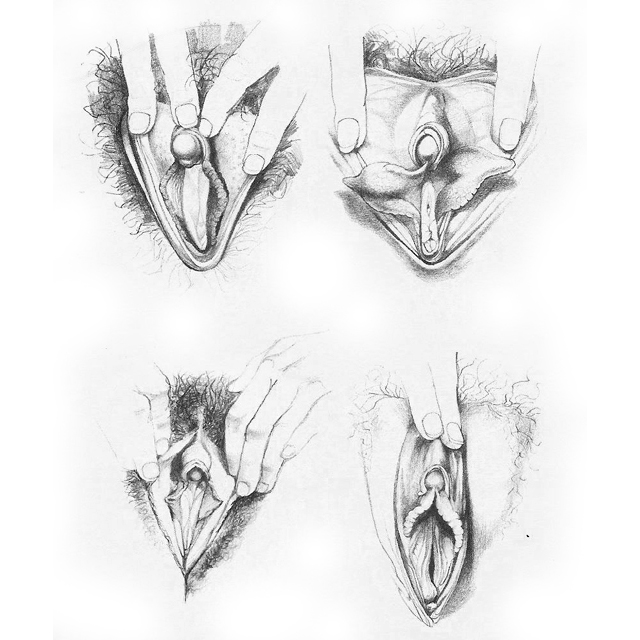 Labia unfurled to show the clitoris etc
Labia unfurled to show the clitoris etc
Just as women should never comment unfavourably on the size, shape or comicality of their partner’s penis, men should refrain from making any unfavourable comment about their partner’s vulva. It is what it is. And for those jerks who feel a need to express a preference for hair or not, for a natural smell or not. Piss off! Unless ofcourse you want a similar comment to back at you because pubic hair is equally annoying for fellatio, dicks smell (musty, yeasty, salty) and ejaculate is an acquired taste at best (taste it and see for yourself before asking your partner to do the same – & if you can’t bring yourself to taste yourself, shut up).
A woman’s clitoris is the equivalent of a man’s dick. For the first few weeks of life in the womb, the two are indistinguishable before one grows outward and the other remains just below the surface in the main. The tip of the clitoris, which is what you can see in the drawings, labia unfurled, is like the tip of a penis, very sensitive but the remaining cluster of tissue just underneath the surface is also full of nerve endings.
For most women, an orgasm is clitoral based. Forget the vagina for female orgasms.
The vagina is the part of the femal body that most dicks seem to love best. It is also the part of a woman’s body that a baby barrels out of during the birth process. It has very few nerve endings and is thankfully not very sensitive at all. As a result, penis in vagina or PIV sex is almost guarranteed to result in an orgasm for a man and no orgasm for the woman involved. Think about it.
How can a man know if a woman is faking an orgasm? He can’t. Any woman who has ever had an orgasm, can fake her own orgasm perfectly. There is a huge range of response. Some women get loud and shouty. They moan and groan just like the porn videos. Some don’t. Quite a lot don’t.

Just like most men who are really really focused on their imminent orgasm get a little bit quieter, go into themselves and really concntrate on what they’re feeling, so do many women. Your female partner could be a shouter or silent. & fyi it’s really pissy to be told you haven’t had an orgasm when you have, especially if it’s in an accusatory “what’s wrong with you” kind of manner.
There are some clues along the way as to whether the sex was good for her as well as you but they’ve got more to do with you than her.
Have you done anything to make an orgasm possible or easier for her as well as yourself? Good manners require a man to wait until his partner has orgasmed before he himself comes. I know this is old-fashioned, but it remains true.
Women’s physiological response to sexual stimulation, her path to orgasm, is different to men’s path to orgasm. You have to get your head around this basic truth. There will be a couple of exceptions, but if her orgasm sounds and feels like a male orgasm, and is achieved in 10 minutes or less, chances are that it isn’t real, especially if there has been no direct clitoral stimulation.
An average woman takes 20 – 30 minutes to reach her first orgasm on her own, and let’s face it she’s going to be a lot more expert at getting there on her own so you need to allow a leisurely hour to be certain. It could happen in 10 minutes (small quick, hiccuppy type of orgasms) or it could take more than an hour. In general, the longer it takes, the deeper, more intense the sensation.

A surprising number of women have never had an orgasm and don’t know what one feels like. Sex with a virgin can be a disaster because of this. All of the books, films and porn, model a male orgasm response. Since this isn’t real, but is all-pervasive in our culture, women often don’t know what to do to themselves to orgasm. They don’t know. Their partner’s don’t know. What can be done?
Step back and let her do her own homework, with or without you in th eroom. just like men, all women need to spend some time masturbating. They need to know what an orgasm feels like, and how to get there, before they try to share that sensation within partnersex. Boys seem to spend half their waking lives masturbating. Girls are discouraged from even thinking about their genitals, never mind touching them. It’s a lot of social conditioning to overcome. It takes time and privacy.
Once a woman knows what her own orgasm feels like, and how to get there herself, she can think about sharing it with her partner.
PIV sex is almost guarranteed to be a non-event from the woman’s perspective. The easiest way to share an orgasm is through companionable masturbation. The “I’ll show you” and “You’ll show me” type of arrangement. From that, the couple can move to him manually stimulating her, or using a vibrator, through to cunnilungus though perhaps it’s worth noting that fellatio to orgasm can take as little as 10 minutes if the woman knows what she’s doing, yet very few men will spend anything like that mount of time focused on cunnilungus. It’s a skill worth practicing.
The couple can move towards PIV sex with her on top using a vibrator to stimulate her own clitoris. They could even try chasing the unicorn of simulataneous orgasms. Good luck with that.
They could also accept the idea that not all sex has to end in orgasm for both parties, all of the time.
Why do women fake orgasms –
- because both women and men are vastly ignorant about female genitalia and sexuality and consequently don’t know how a woman can orgasm;
- because we are sold on a cultural model of sexuality, PIV, that works incredibly well for men and really badly for women;
- because female orgasm takes both time and good manners from her partner and we are all increasingly in too much of a hurry to afford either;
- because it is easier and quicker to fake an orgasm than challenge the man’s expectations, especially the “fact” that every other girlfriend came that way, with such little effort on the guy’s part (seriously?);
- because it is easier and quicker to fake an orgasm than admit that you don’t know what an orgasm feels like and how to get there (no one likes to have their ignorance exposed);and,
- because sometimes we just want a cup of tea.
If she knows you well and trusts you, the only way to find out whether your partner has had an orgasm is to ask.
There are good ways of asking and bad ways.
“I want this to be good for you as well. What can I do to make it feel better?”
“Do you like it when I …?”
“Have you seen this website… dodsonandross/scarleteen etc? It has some interesting ideas we could try out. What do youthink? ”
As with all things in relationships, a bit of humour, a touch of grace and lots and lots of conversation works wonders.

19th June: Vitruvian Wife
Centre of the circle,
Trapped in the box,
Why must I stay forever drawn within the lines?
Cut down to size by fashion.
Blown out of proportion by your gaze.
Who decides upon my perfect proportions?
And after all these years.
After all these tears,
Is it surprising that hate internalises, surprises us with it’s heat?

I am Vitruvian’s wife,
Pure and clean.
Hear me scream.
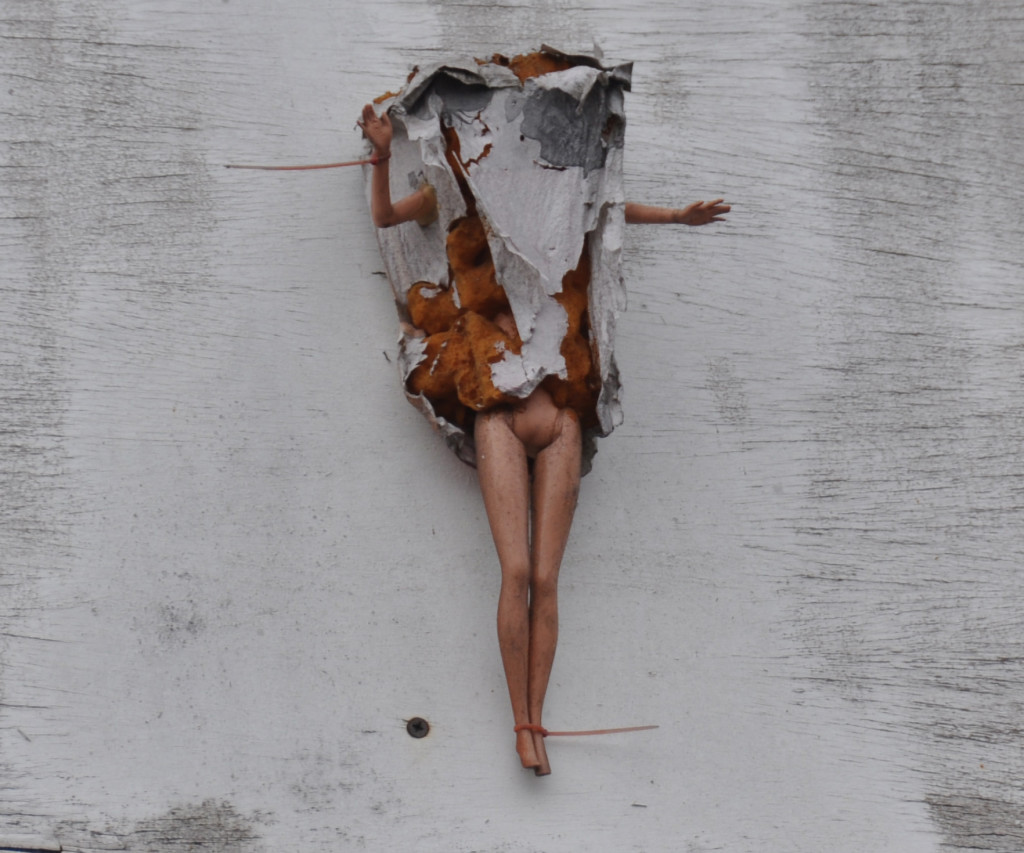
20th June: Monogamy
I live a monogamous life. It’s fashionable at the moment to make fun of the idea of a faithful couple. It is highly irrational according to numerous magazine articles, TED talks, web-threads etc. But I find monogamy works just fine for me, just now.
Throughout our lives we are sold the fairytale, the prince arriving just in time to rescue the princess and riding off into the sunset together – living happily ever after, together. And I know a couple who have lived together for more than 50 years and still love each other dearly. It’s a monogamous ideal that most of us seem all to keen to chase after.
But real life relationships are not fairy tales. Marriage is a legally binding contract entered into by two consenting adults, based originally on property law. The actual terms and conditions for the transfer of assets is anything but romantic if you read it in the raw.
If it originated with property transfer, what do we want a marriage to be all about now?
Relationships mean so many different things to different people. At one level, the property component remains. Two individuals agree to come together to share their resources to make a better life for each other together. Living in a city where it is almost impossible for a single young person to buy an apartment, where it is just about imaginable for a couple to gather up funds for a one bedroom flat, I can still see value in this arrangement.
And then there is the idea of building a family. Families come in all sorts of shapes and sizes. A genetic link, binds families together. With real skin in the game, men and women are much more likely to commit time and resources to caring for a child.
There is also friendship, companionship, warmth and loving friendship based on trust, on a shared history and commitment to each other: to have and to hold from this day forward, in sickness and health, good times and bad.
Does this all sound dull? It isn’t.
Intimacy is built up over the years, years spent getting to know, to understand to care for someone else. Intimacy takes time.
Sex is a different story. Lust and passion are not something that get easier over the years. It fades. But there has to be a better way to handle sexual naiveté, and boredom, than running away. What does pleasure mean to you personally? Is it all about a single moment of abandon. Is it all about you or is there purpose in the sharing, the glory of satisfying and pleasing someone other than yourself. How long is “me” enough?
There is nothing wrong with pleasure, though perhaps we focus too much on the immediate and not enough on longer term. There is nothing especially morally pure about the concept of marriage and coupledom but rather a sense of practicality. We live in a world that regards hedonism and narcissism as natural and good, with utter disregard to the impact this can have for the integrity of our spirit, our souls.
Because at some level, people are good. Not good enough but genuinely good. We strive and fail to be better.
There is more to being faithful than gritting one’s teeth and putting up with a less than perfect situation. There has to be more to a relationship than hormones, and hot risky moments if it’s going to last. Maybe if we could all be open and honest, all of the time with no sense of guilt or jealousy, we could sow some oats with a free conscience. But how realistic is this idea for most people in the real world. Most open marriages have drastically failed in the mainstream. For those few, who can rally the ability to be undismayed and unthreatened by a partner’s escapades, great. It’s not at all a simple matter. What typically happens is more lying and hiding and sneaking than sex.
As we live longer, we may be moving towards serial monogamy, changing partner as our life changes. We do not seem to be moving towards a free and easy, swap and share sexuality, with multiple partners as anything other than a temporary early exploratory stage. If anything, our sense of family is contracting, becoming smaller and more vulnerable. We are being driven towards monogamy rather than choosing it. Why?

Marriage used to be more about the linking of two families. Generations lived together sharing the work, the family responsibilities within a whole family network. Increasingly the responsibility falls on just one couple and the extra strain shows.
Why can’t civil partnerships be extended to reflect broader family arrangements, at least on the fringe. Why can’t a same sex couple enter into a civil arrangement with the donor for their child? Why can’t we start to see poly arrangements given some legal stability and recognition by society. Maybe if it was possible to recognise alternative arrangements there would be more real choice between monogamy and not.
I am happily monogamous. Not everyone can say the same.

21 June: Advance decision
I just came across an article describing Sheila Kitzinger’s death. It was surprisingly upbeat but all based around her “Advance Decision” or AD which read something like:
“If the time comes when I can no longer take part in decisions for my own future, I want to receive whatever quantity of drugs can keep me free from pain or distress, even if death is hastened. If there is no reasonable prospect of recovery, I do NOT consent to be kept alive by artificial means. I do NOT want to be transferred to hospital and should like to die in my own bed.”
Although she was able to comment on her care upto a couple of days before her death, her wishes were challenged by caregivers including doctors on a number of occasions. It isn’t really that surprising that doctors should want to transfer people to hospital, to work hard and take every chance to prolong life – it’s what they’re trained to do. Every part of their training, education and presumably the reason they originally went into the profession, pushes them towards preserving life, avoiding death death, even if that isn’t ultimately what the individual themselves chooses.
And that’s a good thing. No one really wants a doctor who is all too keen to switch off the lights.
But the AD empowered her family, and allowed her doctors to make the decisions that were right for her, on her own terms.
And now I’m wondering whether I need to add and AD to my will as well as
23rd June: Taxing Benefits
In 2014 Working Tax Credit and Child Tax Credits combined cost the UK government £30 billion per year (Andrew Grice: 11 December 2014 “Low wages force Britain to spend £900m more on tax credits than planned”).
The working tax credit (WTC) was designed to make work more financially attractive. It meant that people with or without children in work and on a low income could receive extra help from the State.
Originally introduced in April 2003, the child tax credit (CTC) represents the majority of government financial support for children and costs around £5billion. It was designed to simplify the system of financial support for parents, and provide support that is means-tested against family income.
Yesterday, the Prime Minister David Cameron suggested that to make the £12billion welfare benefits cuts promised in the election means cuts to the CTC are inevitable.
And although in 2010 the Conservative-Liberal government announced that the Working Tax Credit will be integrated into and replaced by the new Universal Credit, given the cuts expected it’s worth describing the rather byzantine system we currently operate:
- An individual makes an application for WTC to HM Revenue and Cstoms (HMRC).
- HMRC calculates a provisional amount of tax credit to be awarded. It is based on the previous tax year’s income and current circumstances. The benefit is then paid across in weekly or four weekly instalments until the end of the tax year, 5 April.
- After the end of the tax year, HMRC asks people to confirm their actual income for the year just ended.
- A final calculation of the WTC is made using the confirmed income. This final amount might be greater, equal to or lower than the provisional amount received the previous year.
- If someone received more than they should, this is an over payment and must be repaid to HMRC. Similarly, if someone received less than the final WTC calculation, this is an underpayment in which case HMRC will make a lump sum payment back to that person.
The Working Tax Credit (WTC) and the Child Tax Credit (CTC) are made up of “elements” related to individual circumstances. Examples of elements are:
- a basic element of £1,890 payable to everyone (in 2009/10)
- a couple and lone parent element (£1,860)
- a 30 hour [working week] element (£775)
- a disabled worker element (£2,530)
- a severely disabled worker element (£1,075)
- a 50+ return-to-work payment (discontinued after April 2012).
Each element that applies to a claimant’s circumstances is added together to determine the maximum award of tax credit (before any withdrawal is considered). For example, a couple would have elements calculated as
- Elements = £1,890 + £1,860 = £3,750
- WTC and CTC are designed to be a seamless allowance that steadily reduces as family income rises.
- Remember: this was all set up to simplify the system.
- But ofcourse tax credits have not proved to be nearly as robust or well administered as the initial design envisaged. Claimants have not always recognised the need to report any change of circumstances immediately. The time taken by the system of administration to then take these into account adds to any overpayment generated and shortens the time available for their recovery. This led to significant levels of overpayments. Overpayments resulted in benefits being stopped altogether which pushed people into debt and the hands of debt collectors.
- Around 7 million people in the UK are entitled to claim Working Tax Credit or the companion Child Tax Credit, although around 2 million people do not do so. Presumably because the simplicity of the new system was just too complicated for them.
- The levels of Tax Credit take-up in the UK have not risen in recent years, despite an increase of 100,000 children living in households classed as “below the poverty line” between 2004 and 2005. With cuts promised, child poverty is likely to increase even further.
To qualify for WTC you must meet the basic conditions which are:
- be aged 16 or over;
- be in the UK; and
- not be subject to immigration control
You must also work a certain number of hours each week. The number of hours you need to work varies depending on your age and household circumstances.
In the case of a single claim how long does a person have to work to claim WTC:
- the claimant is aged 16 or over and works at least 16 hours a week and: is responsible for a child or qualifying young person; or
- qualifies for the disability element of WTC; or
- the claimant is aged 60 or over and works at least 16 hours a week; or
- the claimant is aged 25 or over and works at least 30 hours a week.
Simple, no?
As a result of the 16 hour threshold, the pattern of work has changed with a number of part-time jobs appearing out of the blue. Not only does WTC support the worker, it also supports the employer in creating low paid, low opportunity roles. Why hire one person for 32 hours a week at a full rate when you can break the job down into two indaequate but significantly cheaper jobs?
As well as becoming an issue for the home grown benefit claimnants, in-work benefits feed into the debate about immigration in the UK.
Apparently migrant workers cost British taxpayers £5 billion a year in tax credits. Almost £100 million a week is spent on the 415,000 foreign nationals working in Britain who are benefitting from the payments.
The amount spent subsidising the incomes of foreign workers far outstrips the estimated £100 million a year savings which will result from the government’s latest curbs on unemployment benefits for immigrants.
David Cameron announced EU migrants will only be allowed to claim Jobseekers Allowance for three months but critics claim this overlooks the main draws for migrants moving to Britain such as higher wages and better job opportunities.
Tax credits boost wages by topping up the pay of those on low incomes.
A single migrant with no children earning the minimum wage has their pay of £184 a week raised to £254 by tax credits and housing benefits, according to research by the campaign group Migration Watch. For a migrant with a partner and two children, net weekly income is boosted to £543 meaning welfare handouts make up 66 per cent of their £28,241 annual pay package.
Figures released by HM Revenue and Customs revealed that 17 per cent of the 2.45 million child tax credit claimants were foreign nationals when they were given National Insurance numbers.
This means about £5 billion of the £30 billion annual tax credit bill goes to foreign nationals, according analysis by the Migration Advisory Committee (MAC).
A migrant family from Romania or Bulgaria could multiply their equivalent take-home pay by a factor eight by coming to Britain and claiming all the benefits available to them: the 17-strong Toma family, originally from Romania, receives about £55,200 a year in state benefits to subsidise their father Mihal’s £21,600 salary, producing an annual income of £77,800 a year, according to the Daily Mail.
The family, who live in Stanmore, north west London, would require a pre-tax income of £125,000 a year to take home the same amount of money without state handouts.
Robert Rowthorn, Emeritus Professor of Economics at the University of Cambridge and Fellow of King’s College said in a recent research paper that limiting access to welfare benefits was ‘unlikely to have much impact’.
He said: “The main driver of migration is the big difference in wage rates and job opportunities. There is also the attraction of in-work benefits as a wage supplement.”
In his EU negotiations, David Cameron will look to restrict benefits paid to EU immigrants.
The key reforms will mean that in future EU workers will:
• Not get in-work benefits until they have been in the UK for four years.
• Not get social housing until they have been in the UK for four years.
• Not get child benefits and tax credits for children living elsewhere in Europe no matter how long they have paid taxes in the UK.
EU jobseekers will not be supported by UK taxpayers, and will be removed if they are not in a job within six months.
The proposals include measures previously announced, including abolishing the system in which EU migrants can bring family members from outside the EU without any restrictions. There will be tougher and longer re-entry bans for rough sleepers, beggars and fraudsters, and stronger arrangements for deporting EU criminals and stopping them coming back. There will also be no access to the labour market for nationals of new member states joining the EU until their economies have converged more closely with current members.
The prime minister will say that these changes should apply to the whole of the EU, but should that not prove possible, he would negotiate them in a UK-only settlement.
In his speech, Cameron will no doubt insist he is not seeking to challenge a central premise of the EU – the free movement of workers within the EU.
He will most likely repeat: “Britain supports the principle of freedom of movement of workers. Accepting the principle of free movement of workers is a key to being part of the single market. So we do not want to destroy that principle or turn it on its head. But freedom of movement has never been an unqualified right, and we now need to allow it to operate on a more sustainable basis in the light of the experience of recent years.
It is argued that withdrawal of tax credits, principally working tax credit and child tax credit, will dramatically cut the amount of income unskilled EU migrants receive, leaving them closer to the salary they would be paid in their native country.
The thinktank Open Europe has calculated that if tax credits were withdrawn a single earner on the minimum wage with no dependent children would see their income drop by £100 a week from £290.28 to £196, taking their pay close to the Spanish minimum wage.
The disincentive effect of withdrawing tax credits for an EU worker on the minimum wage in the UK but capable of earning the average wage in their home country would force Polish workers to take a 22% pay cut, while a Bulgarian would only earn a little more.
Whether it will stop anyone coming here, or indeed whether we will actually benefit if 2/3rd of our carers for the elderly and infirm in London suddenly disappear, along with everyone else paid too little for doing the jobs the UK born don’t want to do, is another matter entirely.
24th June: Bar Mitzvah
Living in North London, there have been a fair few Bar Mitzvah’s over the last few years and quite a few Bat Mitzvahs also. Over the weekend we went to our (probably) last one, unless our kids convert.

The service started at 9:15 when the Minyan, the quorum of 10 men assemble and the prayers begin. Only the family and the goyim guests like us rack up at that hour. And since most Jews living in the UK are orthodox, the women head upstairs (married women with hats) and the men stay downstairs (with kippah).
There are only so many ways to hold a religious service so the similarities with an Anglican service shouldn’t be surprising. The most peculiar thing is the fact that most of it is conducted in Hebrew, a language most of the people involved with don’t really understand – disasociating to say the least. Maybe it gives a glimpse of what it might have felt like in the days when church services were held in Latin. Though since the services are essentially the same, day in day out, even in a foreign language one gets to understand the gist of what is going on.
Except that there is a low level of chat almost throughout the entire service, and not just in the ladies gallery slightly removed from the prayers. There is a constant stream of people arriving, men fixing their kippahs, adjusting their prayer shawls and greeting other people, women settling their kids, their mothers and grandmothers, waving hello to friends and aquaintances.
And since the women are not able to participate but only observe, it feels more like a performance or show than a religious event one is sharing.
The service is ridiculously long – 3 hours – so one needs some sense of connection to the “performers” to make it bearable. This time, I knew a fair few of the men called up to sing the prayers. There is a nervousness that rises (especially with our friend who stammers) when they take their place but the bar mitzvah boy was well prepared, his father and grandfather took their roles well and it all passed off confortably.

The sermon started promisingly, talking about inter-faith dialogue and whether or not it is useful or pointless to discuss religious matters knowing that a chasm exists between two faiths that cannot be usefully bridged. The rabbi concluded that such discussion was the only worthwhile type of argument, that surrounding oneself with people who agree with one’s own viewpoint is pointless and that only through challenging one’s own views can one clarify and come to understand not only someone who disagrees with you, but actually also to understand where you yourself stand.
Our Jewish friends in the congregation thought it wooly and intellectually weak. They are used to better things.
Then came the prayers for the State, the government, the community, the sick and the bereaved.
And after the service, the bread and the wine, or at least the kiddush, the shared meal or snack where the community comes together.
Nearly four hours later, exhausted we headed home and we hadn’t even been to the celebratory party yet.

25th June: Transition
Sitting down at a party, you never quite know what you’re going to get. Especially when your friend arranging the party believes in mixing up the guest list. We didn’t know anyone else at our table of ten random strangers, though the couple to the right were also vegetarians making it more convenient for the catering staff.
When the guy opposite (Simon?) turned out to be lactose intolerant, I did wonder whether tricky food choices was the reason for our table. Since he wasn’t catered for, even though the Bar Mitzvah boy’s brother is also coeliac, I decided that couldn’t be true. I also decided that Simon (?) could not possibly have told his hostess because she is the most seriously organised and coordinated person I know – if he’d said something, it would have been sorted.
So I started talking to Steven(?) to my left. He was a friend of the hostess at university, now a doctor with two daughters much the same age as mine.
We moved through the starter, talking AS subjects, exams, possible university choices etc. He broke the news that he was newly separated from his wife. We talked about the second child, the differences in character in confidence levels, the trials and tribulations of being the baby in the family. He broke the news that she had OCD, and that this expressed itself by long hours spent on the toilet.
Pause for thought. Somewhat daunted by the way the conversation was moving, we both reached for the wine.
We moved on to the main course. We talked about the breakup of his marriage & I swear that I gave plenty of room to get out of the conversation, lots of “Tell me if I’m being too intrusive/nosy/mad” type of comments but honestly, aren’t people the most interesting things? Aren’t the life stories of random strangers the most engaging and thrilling of stories to hear?
So Steve’s separation after more than 20 years of marriage, has come about because Steve finally told his wife that she was a trans woman who wanted to complete the transition. Difficult with the pronouns there. After more than 40 years of living an uncomfortable lie, knowing she was a woman but presenting as a man, Stevie has decided to take 6 months off from work and transition to presenting as a woman.
The wife is shocked. The two daughters are taking it with varying degrees of acceptance, bewilderment and anger, the latter mainly on behalf of their mother who has just had her life turned upside down.
And Stevie is just as anxious about the impact upon her wife, whom she loves, and her children, whom she adores and wants to protect. But she just can’t continue with the physical lie of being a man when she knows herself to be female, just couldn’t physically continue to live her life and to do her job in the wrong body.
After all of this time living a lie and staying silent, she finds herself telling everyone including complete strangers like me. Maybe especially telling strangers like me because how much more difficult must it be to tell people who have known you forever.
I mention the trans boy at my daughter’s school who has had such a positive, supportive response from everyone. And how I really really hope that we are moving forwards, moving to a time when people just get to live their own lives without prejudice. I really hope that kids who recognise their trans nature can be allowed to move forwards in transition sooner and not made to wait until they’re in their 50s to break out of their prison.
But ofcourse her life led as a man has brought her two beautiful children. She would not, could not choose to go back in time if it required her to miss out on their life, their love and relationship.
So she will take 6 months of therapy, 6 months of hormone replacement and then 12 months of living life presenting as a woman before undergoing the final surgery. She feels lucky. Work have been supportive. Another surgeon has already transitioned some years before so there is a trailblazer there to follow. She has enough money and a decent medical education and background to understand what is about to happen to her.
And by finally being true to herself, she has given her children permission to be themselves. By sharing her story with me, she gives me permission to be who I am, messy, human, frail and inadequate. It takes courage to be different, to break expectations and to share a story that is complicated with messy human emotion and reality. I hope that I listened well. I truly hope that this journey Stevie is on has a good outcome for her and all of her family.
26th June: Marriage and Me
Disclosure: Practising Married Christian (&yes, practising rather than succeeding at both the married bit & the Christian bit)
It isn’t clear to me that marriage is a particularly holy state of being, that there is anything intrinsically moral or good about monogamy or otherwise. I have no problem with other people practising different, diverse ways of being, including but not limited to different family constructs.
The problem with monogamy is that it works.

It works for most of the people, for most of the time. Whilst a great marriage is the holy grail of relationships, an “okay” marriage still works for most of the people, most of the time. We work our way through the tricky times, hoping things will get better as life changes.It often does.
Though it’s important to recognise that marriage never works for all of the people all of the time and it’s those down times that lead towards a more serial form of the tradition: marriage, break-up, re-marriage etc
And for some of the people, marriage never or rarely works at all, ever.
Sometimes this is because the people involved are too social, are interested in lots of social or sexual contact (the two are not the same, but sometimes are used interchangeably) for lots of reasons.
Men who are interested in the status being seen as sexually hyper-active might bring them would fall into this category. Women looking to make some kind of social connection or intimacy might fall into this category as well. The reasons are different, because society prescribes different kinds of behaviour for men and women, and it’s remarkably hard to swim against that tide, at least openly.
But also sometimes, maybe interchangeably, it’s because men and women are looking to avoid soical and sexual intimacy. They want limited contact with other people, only the physical and none of that messy emotional stuff. They want to have fun.
Who can argue with the desire to have fun?

As a stage of life, it seems entirely reasonable and just to experiment in one’s 20s, maybe even 30s. And some people just stick in that stage of life, they’re enjoying it so much.
The problem arrives when we start to want more, whether that’s wanting to start a family with children or just to build a family with a partner, sharing a deeper emotional intimacy. Mankind is a social animal and at some level, most of us are driven to share our lives with someone else, long-term. Ofcourse with increased life-expectancy, long-term is getting longer.
Maybe those of us who are driven by a passion, a gift for art, for music, an obsession with success in some field or another, maybe those people can get by without the comfort of knowing someone knows them and loves them. Maybe.
Because being a single mother is hard work (and for once, can we stop pretending that anything other than a tiny minority of fathers pick up this burden). Parenthood is much easier, not least financially, if two people are available to share the job. And fathers are much more likely to stick around long term if they have some genetic connection to the child(ren) involved. So whilst being a single-mother household is undoubtedly better than being in a bad marriage, being a two parent family in an at least okay marriage works.
An “okay” marriage is not abusive, not miserable nor a daily disaster waiting to happen. Everyone draws their own lines, and for some of us they can be quite tight. For some of us, kindness and commitment between partners is enough. For others, financial security comes first. Some of us want all of this, and sex that’s worth having too.

And undoubtedly part of the reason that marriage works, is because of the social, political and financial investment that society commits to marriage. In the UK, without a marriage contract you have no inheritance rights. You can’t decide what medical treatment your partner may or may not receive. You can’t even visit your partner in hospital. You will not receive automatic visitation rights to your children, or be able to take them out of the country on holiday. You will not receive any of the tax benefits or allowances that married couples may be entitled to. Marriage works on a practical level, because society has invested in it.
Clearly there are family arrangements that do not fit into the standard heterosexual couple marriage. Whilst marriage is being extended to same-sex couples, can we extend recognition even further? There is no social construct available currently to recognise non-standard marriage. Society has a vested interest in building very stable blocks called families. How could we build a more flexible contract that could at least accommodate the polygamous or polyamorous?
In the UK we have a legal arrangement known as a civil partnership originally designed to accomodate same sex couples looking for the same legal and financial (tax) benefits accrued to married heterosexual couples. But ofcourse partnerships could be structured to involve more than two people. They are structured in exactly this fashion in some of the biggest business arrangements around the world.

Maybe civil partnerships could be extended to recognise less standard family units, families with three or four parents, some biological, some not, some caring physically and emotionally for the children (and elders in the family) whilst others commit financially. Maybe a family doesn’t have to have children at all. Perhaps it is enough to come together as close friends or lovers and agree to share resources, to make a life together at whatever stage of life..
A friend of mine just celebrated his 88th birthday and his 35th wedding anniversary. His wife is his best friend as well as his beloved. It is impossible to imagine one without the other.
I’d guess that they have not experienced any great sexual hi-jinks or emperiments. They weren’t swingers in their youth, didn’t attend any open parties or go dogging in the parks. But it is clear in conversation with them that they’ve never been prudes, that sex was and still is a part of their relationship that’s been important to them over the years. They’ve raised two children and are enjoying four grandchildren. And if partnersex has faded, they have other interests and investments that have taken over.
If when I come towards the end of the road, I can claim as much, so happily, then I will have lived a good life.
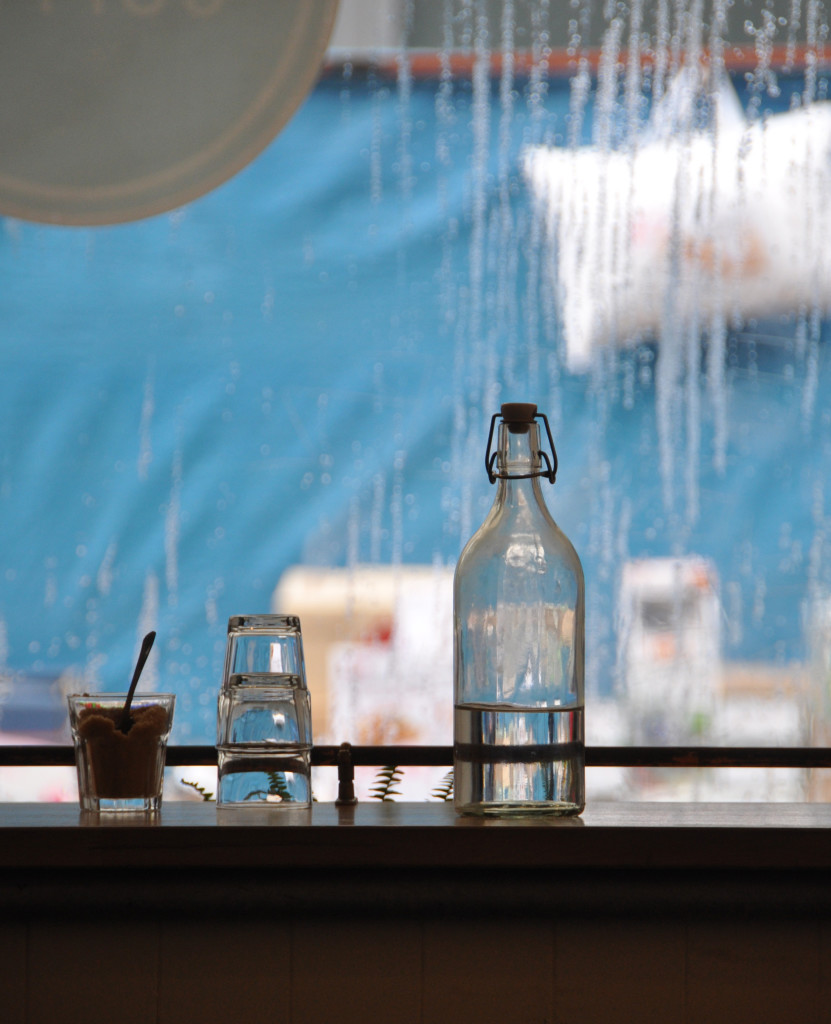
27th June: Progress
At the outset of the new parliament, according to the FT the UK Conservative government faced a number of key challenges for the next five years including:
- Secure the future of the UK: half of all Scottish voters elected an MP who believes in breaking up the union.
- Hold (and win) the Europe referendum. Having won a majority, Cameron will be able to hold a referendum largely on his own terms and to his own timescale.
- Restore productivity growth: while both employment and GDP have rebounded, productivity continues to lag. Without improved productivity, any economic gains are fragile.
- Enact a swingeing round of cuts to welfare: find another £10bn cuts over the next two years.
& we are still waiting to see any real progress on any of these issues, or even an outline of an approach.
The first seems essentially to being ignored entirely, possibly in the hope that Scotland will just float away. This seems unlikely as well as unwise: a recent vote in the Commons with the SNP candidates voting against the government along with Tory disenters was saved only by the abstention of the Labour opposition.
EU leaders faced with the collapse of discussions with the Greek government, a possible GREXIT, terrorist attacks both within and just outside it’s borders (Tunisia), an unmanageable influx of immigrants across the Mediterranen and a proxy war with Russia on it’s Eastern borders in the Ukraine, doesn’t seem inclined to focus too hard on the UK.
Not much progress made there then.
What about productivity? Jobs are up but no change to the amount we actually produce per person per hour means that wages remain stagnant.
Still waiting to hear from Osbourne where the axe will swing though it looks more and more like the working poor will feel the cuts most.

28th June: Viable
When does life begin?
An article in the Economist discusses the point at which a baby can survive, the limit of viability. Research now suggests that premature babies who have spent as little as 22 weeks in the womb may have a chance of survival higher than previously thought. A recent study analysed the outcomes of nearly 5,000 extremely premature infants found that, if given medical treatment, some 1 in 20 babies born at 22 weeks gestation survive.
Fewer than 1 in 4 babies born at 22 weeks in America receive active treatment because most are thought to be “non-viable”.
Babies born before 37 weeks in the womb are classified as premature and the World Health Organisation (WHO) estimates that some 15m babies—or about 1 in 10—are born prematurely each year. In America, the source of the new research, 1 in 9 babies are premature, and nearly 98% of these babies survive. But survival rates vary greatly, falling with gestational age:
- at 32–36 weeks, about 99% of babies survive;
- at 28–31 weeks survival drops to 96%, and,
- at less than 28 weeks the survival rate is less than 80%.
Extremely premature babies, born at less than 28 weeks can weigh as little as a pound and fit in the palm of a hand—are typically delivered with severely underdeveloped brains, lungs, and digestive systems that are not prepared for life outside the womb.
Because extremely premature babies face such low survival rates, doctors and parents are often faced with a grim choice. Should they treat a baby if the child is expected to die or be born with severe health problems? Yet failing to act when a baby may survive is morally and ethically unacceptable.
In most rich countries, premature babies at 24 or more weeks gestation are almost always considered “viable” and are therefore given active treatment.
Babies at 22 weeks gestation, are most often considered “non-viable” and given comfort care, which entails wrapping the infant in a blanket for a peaceful death.
For babies at 23 weeks treatment is often left to the discretion of doctors and families.

While guidelines and rules of thumb based on gestational age can bring some level of objectivity to these life-and-death decisions, the idea of a clear dividing line between a viable and non-viable baby is both ethically and medically dubious: for over 20 years, Japanese doctors have treated all babies born at 22 weeks. Today, the survival rate for these Japanese babies is over 30%.
For a desperate parent those odds are likely to be worth pursuing.
29th June: Answers. None
And when they stand before their God what will they say?
On Friday, US Senator and Rev. Clementa Pinckney was remembered in a packed auditorium at Charleston. As his wife and two young daughters sat and suffered, President Obama delivered Pinckney’s eulogy with fervour and deliberation.
Pinckney, along with eight other churchgoers, were fatally shot during bible study in one of the country’s most historical black churches because a young white man named Dylann Roof wanted to start a race war. In 2015.
When Dylann Roof stands before his God, and says “I killed them because they were black, because they were different, because they were worth less, because … ”
What will his God say to him?
Seifeddine Rezgui took a gun hidden in a parasol onto the beach at Sousse in Tunisia and shot dead 38 holiday makers, mainly British. We are still waiting to hear the total dead but have been warned that bad news is coming.
When Rezgui stands before his God, and says “I killed them, men, women, young and old because they were white, because they were not like me, because they were worth less, because…”
What will his God say to him?
And when the victims come before these young men, when the men lay their hands on the wounds they have caused and see the loss in the eyes of the children, the parents, the loved ones that they have left behind, when these young men are forced to see the truth of what they have done and the harm that they have caused what will these men say?
When God weeps, what will Dylann Roof say?
What comfort will Rezgui off up to his God as the tears fall?
01 July: GREXIT
Greece’s government is almost out of money and could not afford a debt repayment of €1.5bn ($1.7bn; £1.06bn) to the IMF, due on Tuesday. Months of negotiations on a deal have collapsed and Greek Prime Minister Alexis Tsipras has called a referendum for 5 July on the proposals from the IMF and the EU, which he says are against European values, whatever they might be.
But Eurozone finance ministers have refused to extend the bailout. The ECB have declined to extend additional funds to the Greek banks so capital controls have been imposed. Banks will be closed until after the referendum. The Greek people are only allowed access to a tiny amount of their own money (€60 per account per day).
Given that free movement of capital is a fundamental governing principle of the EU, Greece has arguably “left the building”.
Certainly default of yeterday’s IMF repayment results in a growing risk of Greece lurching out of the single currency altogether – which has come to be known as Grexit.
Both Europe and Greece have entered a period of turbulence with neither side in control of events.
The Greek election in January brought the radical left party Syriza to power, with an anti-austerity mandate. The majority of the Greek population would like to remain within the EU but were unable to live with continued austerity, a situation which has seen their econcomy contract by 25%.
At the same time, Europe’s leaders were determined that the new Greek government should live up to the commitments agreed by the previous administration and should not set an example for other populist, anti-austerity movements around Europe.
They were not willing to finance Greece any longer without substantial reforms. Indeed, some of the harshest critics of the Greek position are from those countries that have had to suffer their own austerity packages, in Ireland, Portugal, Spain as well as many of the newer, poorer members of the EU to the East who begrudge spending their money on a country they perceive to be better off.
So one narrative is clearly that Alexis Tsipras has gambled both with his future and that of his country. He has committed Greece to a vote, in the forthcoming referendum but only after the current bailout has expired, so leaving Greece vulnerable and exposed. He has also framed the referendum with a recommendation that the people should NOT accept the proposals from the EU, a fact the other European negoatiators discovered on twitter. It was enough.
Austrian Finance Minister Hans Joerg Schelling said of the Greek government that “they were playing poker, but in poker you can always lose”.
The comments from the various EU leaders have alternated between anger, frustration and regret. Increasingly Tsipras has come to be seen by other European leaders as a challenge to the nature of the European Union itself, in his attempts to rewrite the rules underpinning the single currency.
It is worth noting that only a very small amount of the total bailout money has found it’s way to the Athen’s government. Of the €240billion received in 2010/12, most went to banks that had lent Greece money before the crash, banks from Germany, France etc. Greece was forced to cut it’s minimum wage and pensions to reduce the deficit it had built up.
In 2012 the IMF, European Commission and ECB came up with a second bailout whereby Euro100billion was written off by private sector lenders such as European banks. Private bondholders saw the value of their bonds drop by 53% as well as exchanging their bonds for secruities with a lower interest rate.
This effectively reduced private debt by converting it into loans from the European troika, effectively public debt.
So the overall balance of loans was written down and new securities written to reduce the debt interest repayments. The vast majority of the money owed, is now owed to Eurozone Governments in the form of the European Financial Stability Fund, a special purpose vehicle set up to the European Sovereign Debt crisis which is underwritten or guarranteed by a number of EURO zone countries primarily the larger economies of Germany France and Italy.
Very little of the original debt has been repaid, in large part because the Greek Government has been running a significant deficit and has been unable to make any effective repayments. Reforms required by their creditors have largely been focused on reforms to the Greek system to cut the deficit and move into surplus, allowing the debt to eventually be repaid. To do this, the original problems with the Greek economic system have to be fixed.
- GDP growth rates – declining competitiveness within Greece, poorly performing business, lowering tax receipts etc.
- Greek Government Deficit – from 2004 – 2009 government expenditure increased by 87% whilst tax receipts only increased by only 31%. Successive Greek governments have run large deficits to finance enormous military expenditure, public sector jobs, pensions and other social benefits. Tax evasion is widespread and, of the taxes aknowledged, collection rates are poor.
- Greek Government Debt level – the debt-to-GDP ratio was not paid down in the good years with strong economic growth (2000-2007) leaving it to become a disaster as times worsened and the repayment of debt became unmanageable.
- Budget Compliance – the Greek Government seemed unable to measure and therefore manage or control the way in which it spent money.
- Statistical Credibility – data tracking the fiscal results and performance of Greece was regarded as unreliable even as they were accepted into the EU and hasn’t improved. At the beginning of 2010, it was discovered that Greece had paid Goldman Sachs and other banks hundreds of millions of dollars in fees since 2001, for arranging transactions that deliberately hid the actual level of borrowing.
Creditors simply stopped believing the Greek Government.
Greece timeline: Key dates ahead
- 30 June: Troika bailout programme ends as Greek €1.6bn payment to IMF due
- 1 July: No bailout programme could mean no emergency liquidity from the ECB
- 5 July: Proposed Greek referendum
- 10 July: Treasury bills worth €2bn to be repaid
- 20 July: Bonds worth €3.5bn to be repaid to eurozone partners
- 20 August: Bonds worth €3.2bn to be repaid
3rd July: Euthanasia

In America, people with terminal illnesses can move to a state such as Oregon, where a “Death with Dignity” law exempts doctors from prosecution, with some safeguards, if they prescribe life-ending drugs to terminally ill patients who ask for them. Vermont and Washington have assisted-dying laws, and in Montana the practice is legal because of a decision by the state’s Supreme Court. New Mexico’s law banning it was overturned by a court last year, but that decision is subject to challenge.
It looks like similar laws will be enacted across the country as US public opinion moves in favour of legislation. Bills and legal cases are in progress in around 20 American states, and in Britain, Canada, Germany and South Africa. The idea that doctors should be allowed to prescribe lethal medication for some patients who are close to death or suffering greatly is gathering support.
The Economist poll found that in the 15 countries tested, all of them except Poland and Russia, majorities said that it should be legalised for terminally ill adults (see chart below). In America more than three-fifths support the idea in principle; some fall away when asked to consider the details, but most remain firm. In all but four countries more than half those asked supported extending doctor-assisted dying to other situations, such as unbearable physical suffering.
It has often been claimed that doctors have quietly eased terminal agonies by increasing pain relief to life-shortening doses. Under the doctrine of double effect, as long as the intention was to relieve suffering rather than hasten death, no crime was committed. What the doctor really intended was hard for anyone else to know, let alone prove. But more deaths now happen in intensive-care units under closer legal and professional oversight, making doctors more cautious about testing the limits of what is allowed.
Understandably, doctors are rarely willing to step decisively outside the law. When they do, though, their fellow citizens are very unwilling to condemn them Jack Kevorkian, an American doctor who by his own admission helped at least 130 terminally ill people to die, gained such notoriety that he was nicknamed Dr Death. Three times juries acquitted him on charges of assisting suicide; only when his killing of a patient by administering a lethal drug was broadcast on television was he convicted for homicide. He served eight years of a nine-year jail sentence.
Nowadays, most countries accept that patients or, if they are incapacitated, their relatives, may insist that unwanted life- sustaining treatment be withdrawn. Some of us write Advance decision documents that limit the treatments that we can or should be given as we come to the end of our lives. Someone who needs a ventilator to breathe, for example, can demand that it be removed. We can ask not to be treated for pneumonia, not to be transported to hospitals etc. But what if there is no life-sustaining treatment to withdraw or reject?
The history of open assisted suicide is brief. For a long time Switzerland was the only place where it was legal to help people to die, rather than passively to allow them to do so.
Most countries have removed laws which define suicide as a crime from their statute books but most have kept penalties for assisting a suicide. Switzerland’s law, passed in 1942, barred assisting suicide only if the motive was selfish, for example to get an inheritance.
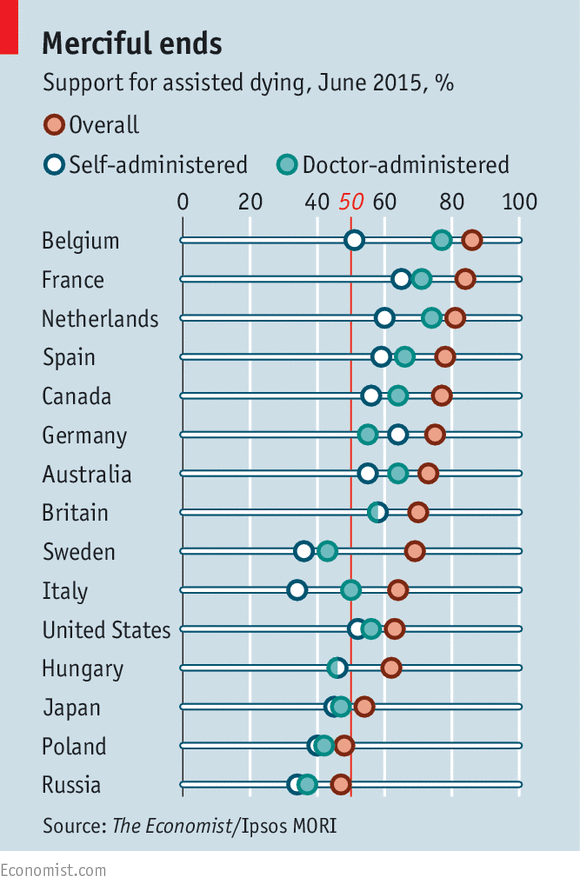
The Oregon Death with Dignity bill came into force in 1997. It requires two doctors to agree that the person requesting help to die has less than six months to live and is of sound mind.
In 2002 the Netherlands, legalised the practice—and extended it to those who, though not close to death, found their suffering unbearable. Belgium followed the Dutch example shortly afterwards.
Each of these countries has had assisted dying for long enough to answer some questions: whether it is used as a cheap alternative to palliative care; whether tight rules are relaxed over time; whether it weakens the doctor-patient relationship; and whether the ill and dying feel themselves under pressure to finish themselves off rather than be a burden on relatives.
But assisted suicide also raises difficult questions about values. Is deliberately ending a human life as always wrong; or can suicide be seen as an expression of autonomy.
Groups that lobby for disabled people’s rights generally reject doctor-assisted dying. Disabled people themselves are split. Restricting it to the terminally ill is impossible, since prognoses are unreliable, says Baroness Jane Campbell, a British life peer with severe spinal muscular atrophy who opposed Lord Falconer’s bill.
She gives her own example: when she was a baby, her parents were told she would not live longer than a couple of years; she is now 56. And she argues that basing a law on the idea that someone could be so ill or disabled that they would prefer to die is tantamount to declaring their lives of lesser value. By contrast Stephen Hawking, probably the world’s best-known person with motor neurone disease, has said he would consider assisted suicide (though not yet: he has too much physics still to do). “To keep someone alive against their wishes is the ultimate indignity,” he said.
In most places, the medical establishment is opposed to laws on doctor-assisted dying. That opposition has deep roots. “Nor shall any man’s entreaty prevail upon me to administer poison to anyone; neither will I counsel any man to do so,” runs the Hippocratic Oath, written nearly 2,500 years ago.
But there are signs of change. Late last year a survey by Medscape, a website for health-care professionals, found that for the first time more than half of American doctors were in favour. Polls of British doctors found most thought that the British Medical Association (BMA) should drop its opposition, and that a third of specialist doctors wanted assisted dying legalised, a rise from previous polls.
But how does assisted suicide work in practice?
“Just a small charity with a huge workload”: that is how Silvan Luley, one of its organisers, describes Dignitas, an assisted-dying clinic that has become synonymous with Switzerland’s reputation for “suicide tourism”. Since Dignitas was founded in 1998 more than 1,700 people from more than 40 countries have ended their lives there.
In 2008 Dan James, a 23-year-old who had become almost totally paralysed in a rugby accident a year earlier, died in Dignitas; his parents said he had come to regard his body as a prison and was “not prepared to live what he felt was a second-class existence”. They accompanied him to Switzerland and were investigated on their return to England for assisting a suicide, though it was eventually decided that prosecution would not be in the public interest.
Last month another Briton, Jeffrey Spector, who had an inoperable spinal tumour and felt that his condition was deteriorating, killed himself in Dignitas too. “I know I am going too early,” he said before he died. But he feared suddenly becoming paralysed and unable to make the journey unaided if he waited.
Let’s be clear, neither of these men was about to die: Mr James’s condition was not life-threatening, and Mr Spector was still quite well. Though late-stage cancer sufferers are still the majority, the share of cases of assisted suicide with non-fatal illnesses is growing. They would not qualify for assistance in Oregon.
Do you think that it should be legal or not for a doctor to assist a patient in ending their life, if they are not terminally ill, but are physically suffering in a way that they find unbearable and which cannot be cured or improved with existing medical science?
Dignitas responds by pointing to their own rules, which say that they will only help those who show a “consistent wish to die” and are terminally ill or suffering “unendurable pain or disability”. Patients are interviewed to confirm that the decision is theirs, and must take the fatal dose themselves. Assisted suicides are recorded as unnatural deaths and investigated by the authorities.
No malpractice case has ever been brought.
It is also important to recognise that mostly Dignitas’s “huge workload” is counselling: its main task is not to give assistance in dying, but suicide prevention. Very few who contact the clinic go through with killing themselves.

Oregon’s more restrictive rules, which exclude people with serious but not fatal afflictions, are most likely to be copied elsewhere. Though the number helped to die has risen over time as awareness of the law has increased, it remains very low. Since 1997 just 1,327 people have received prescriptions for lethal medication, of whom only two-thirds have taken it. And there is no evidence that the eligibility requirements have slipped: about four-fifths have had terminal cancer.
Opponents had feared that Oregon’s law would be mostly used by poor people who lacked health insurance and were desperate for release from untreated agony. In fact, almost all those who have used it have been well-educated, insured and in hospice care, regarded as the gold standard for palliative care.
Pain, or the fear of it, motivated only a quarter. Most cited a loss of autonomy or dignity, or an inability to do things that made life enjoyable.
Britain may follow Oregon’s approach. Last year Lord Falconer, a former Lord Chancellor (justice minister), brought a private member’s bill modelled on it before parliament. It ran out of time , but earlier this month a Labour MP, Rob Marris, said he will be carrying a version forward. It will be debated in the House of Commons in September. Its aim, says Lord Falconer, is simple: “If you are dying anyway of an illness you should have as much control as you can about how that death takes place.”
What if you’re not dying but still want to choose to die?
The Netherlands and Belgium allow doctor-assisted dying in many more circumstances than Oregon—and permit doctors to administer the lethal dose intravenously, rather than requiring patients to take it themselves, usually in liquid form, as in both Oregon and Switzerland.
In the Netherlands, it is available for people experiencing “unbearable suffering with no prospect of improvement”, and for terminally ill children over the age of 12, with parental consent.
Around 3% of Dutch deaths each year are doctor-assisted, the world’s highest rate. But it is Belgium that has stretched eligibility furthest. Last year it scrapped all minimum age limits, though children can only be granted assisted dying if they are close to death and in great pain.

Yet even as consensus was forming, contradictions were emerging.
In 1993 Dr Boudewijn Chabot, a psychiatrist, was prosecuted for carrying out euthanasia on a woman suffering intolerable psychological pain because of the deaths of her two sons.
A court accepted that intolerable suffering could be mental rather than physical, but it remains a fraught issue. Guidelines warn that patients whose suffering is caused by psychological illness or depression may not be mentally competent to request assistance to die. Though 90% of assisted-dying cases in the Netherlands involve cancer, heart ailments or neurological disease, the share involving mental suffering is creeping up. In 2002, the first year the law was in force, there were no such cases; in 2013 there were 42.
The past decade has seen a rapid rise in the number of assisted deaths. The first national census of Dutch doctors’ end-of-life practices was in 1990, when assisted dying was tolerated, though not legal. At the time, it accounted for over 2% of all deaths. The share dropped after the law came into effect, falling to 1.3% in 2005. Since then the number of assisted deaths has risen by about 15% per year.
In one sense this rise is not surprising: the aim of shifting from decriminalisation to full legalisation was to move from the grey area of doctors’ discretion to the clarity of a law with multiple safeguards. But it appears that this shift has not fully taken place, either in the Netherlands or, more especially, Belgium. In the past 15 years terminal sedation—increasing drug doses to maintain deep unconsciousness until death—has become widely used in many countries to control dying patients’ fear and agitation.
A survey of health professionals in Belgium, Britain and the Netherlands by Professor Seale found that in Britain it is used more conservatively than in Belgium and the Netherlands. British doctors are also more likely to discuss end-of-life decisions with colleagues and patients or their relatives.
Belgian doctors are also unusually ready to administer life-ending drugs without explicit consent, generally to patients who have dementia or are in a coma. Such situations fall outside the country’s assisted-dying laws, which require that patients are competent and request help to die.
Raphael Cohen-Almagor of Hull University, the author of “The Right to Die with Dignity”, has studied doctors’ end-of-life decision-making in several countries, including Belgium and the Netherlands. He finds such cases troubling. “When they legislated in 2002, it was very clear,” he says. “They wanted to empower patients; it was about autonomy and transparency.” It was not meant to be used to pacify patients, to keep them quiet and manageable.
Doctor-assisted dying does not seem to weaken public faith in the medical profession: surveys show that doctors are trusted as much where it is allowed as where it is not. A more subtle fear is that when it is legal, patients may feel pressured to ask for it either because they don’t want to be a “burden” on their families or because they’re frightened about what is about to happen to them.
For some doctors, the assisted suicide laws allow for the beginning of a dialogue with patients. Diana Barnard, a palliative-care specialist at the University of Vermont, was active in Vermont’s successful campaign to legalise assisted dying. She believes that it can spark useful conversations between doctor and patient. “As a doctor, I have things to offer, but I shouldn’t presume that I know what the perfect answer is,” she says.
For Dr Emile Voest of the Netherlands Cancer Institute, “it’s about the patient’s autonomy.” Most of his terminal patients choose palliative care, he says, but he has also performed euthanasia a dozen times over the years. “I always tell my patients I’m not sure how I would handle it if I had cancer, but I’m glad I have the option, even if I don’t use it.”
4th July: Education
Last week, the “class ceiling” was criticised by The Social Mobility and Child Poverty Commission. They looked at 13 elite firms (who create 45,000 of the best jobs in the country) and found that 70 per cent of posts offered went to applicants from private or selective schools – schools which educate 11 per cent of the population.
My children go to private schools. They are very likely to benefit from this prejudice.
Elite law and accountancy firms continue to employ young people who are predominantly from more priveleged backgrounds, like my girls. So this advantages my eldest who may well study Philosophy or English as a degree but convert to law afterwards, or my youngest who may study Maths or Engineering but convert to accountancy.
It matters because people who qualify as lawyers and accountants often go on to starring roles in other businesses, as CEOs or Finance Directors. And experience with finance at least goes a long way to compensate for the disadvantage of being female. It matters because large blue chip companies are likely to follow the same recruitment policies.
Barely a third of top law firms report social mobility data but of those that do, 40% of graduate trainees were educated at fee-paying schools attended by just 7% of the UK population.
leading accountancy firms don’t track soical mobility at all but case studies suggest that upto 70% of job offers have been made to graduates from fee-paying or selective state schools (who make up 4-7% of the UK population).
Professional employers traget recruitment at the most selective universities, whose students are much more likely to have attended selective or fee-paying schools, and be from realtively rich backgrounds.
40-50% of applicants to leading accountancy firms are from Russell Group universities in the UK. Russell Group applicants receive 60-70% of all job offers. They are not only more likely to apply for elite jobs, but are significantly more likely to be successful in their applications.This may be partly related to stronger academic credentials but not entirely. research suggests that half of all students who achieve AAB or above at A levels do not attend a Russell Group university.
Students from less priveleged backgrounds may apply in lower numbers because they do not believe that they are welcome in the corporate culture.
Recruitment and selection processes may also make use of a specific notion of “talent” that further advantages middle-class kids. talent can be understood in a multitude of ways, starting with academic results, psychometric tests etc. This can be extended to include non-educational skills and attributes, the ability to present a “polished” appearance, confidence, communication and debating skills. These are all measures of “talent” that map closely to socio-economic status.
For most elite firms, their current recruitment policies represent a defensible meritocratic means of managing suitable candidates down to more reasonable numbers. After gaining a professional qualification, most trainees move out into the broader business world. Accountancy and law firms are only aiming to retain a small percentage of those they train. Social inclusion could be improved within the process but is rarely considered a priority.
And there is some suggestion that the recruitment market is becoming more not less restrictive. At a number of firms, senior managers noted thatthey themselves would probably not be recruited in this brave new world. My children’s parents were the first in our families to make it through to university. We both made it to Russell Group universities and into “elite” firms. We were both clever and extremely lucky to grow up at a time when the middle classes expanded greatly.
My daughters are advantaged which means other people’s kids, like their cousins, are disadvantaged. At a time when the middle-classes seem set to contract, I am free to intellectually deplore my children’s advantage whilst affording the £30,000 a year it costs. Uncomfortable.
5th July: Oxi?
5th July: Careful What You Ask For
The analysis the IMF prepared for Greece in late June and discussed in the most recent Economist release describes the tragic consequences of the Greek electorate’s decision in January to vote in the populist government led by Alexis Tsipras, the prime minister and leader of the radical-left Syriza party.
They were elected in part in response to the drive from Greece’s creditors towards deeper more immediate cuts than were perhaps required or sensible. A slower more gentle austerity package might not have garnered such a reaction. No one has clean hands in this debacle.
But for whatever reason, Greece has now moved from a position where both its economy and its underlying debt position were on the mend, to one of further rescue finance from official creditors together with more debt relief.
Worse, the IMF calculations were made before Mr Tsipras’s decision to call a referendum on the terms of a further bail-out (and to campaign for rejecting it) which has inflicted yet more damage on the economy – closing down both the country’s banks and its negotiations with creditors. Greece has become the first developed country to default on the IMF.
Even if voters on today vote against Mr Tsipras and support the now withdrawn bail-out proposals made by the creditors, the cost of clearing up the mess caused by the Syriza-dominated government has risen dramatically.
The magnitude of the original Greek downturn, a fall of 27.4% in GDP from the peak in the spring of 2007 to the trough in late 2013, dwarfs that of any other country. (Portugal, for example, suffered a decline of 9.6% between early 2008 and the start of 2013.)
Yet a recovery did get under way in 2014, and in the third quarter of that year Greece was one of the strongest-growing economies in the euro area. The performance of exports, which had been dismal for most of the past five years improved significantly. Exports grew in real terms by 9% last year, helped by a buoyant tourist season.

Greece’s public finances were also on the mend, as the deficit on the primary budget (ie, before interest payments) moved into surplus. Just over a year ago, Greece was able to return to the private markets, borrowing €3 billion ($3.3 billion at today’s exchange rate) in five-year bonds at a yield of just under 5%.
It had been an extraordinary comeback for a country that had presided over the biggest default in history, and the fourth most severe restructuring of public debt among middle-to-high-income countries since 1975.
As the IMF’s debt-sustainability analysis spells out, the Greek debt outlook was improving sharply. At the time of its last review of the bail-out programme in May 2014, the Fund envisaged debt falling from 175% of GDP in 2013 to 117% in 2022, assuming budgetary measures, reforms and privatisations were carried out as specified.
But even before the past week’s extraordinary events, the misguided policies and tactics of the Syriza-led government were taking their toll, as deposits drained from the banking system and uncertainty blighted everything. The promising recovery was snuffed out and the economy slipped back into recession in the final quarter of 2014 (when fears about a possible election were already affecting confidence) and the first quarter of 2015.
That downturn will now become much more severe, whatever the vote outcome.
Considering these already adverse developments—again, even before the rupture of the past week—the IMF estimated that Greece would need a further bail-out of €52 billion between October 2015 and the end of 2018.
At least €36 billion would have to be new money from euro-zone countries, needed because Greece would be unable to access private markets to pay interest and redeem debt coming due over that period and also because primary surpluses and privatisation proceeds would be lower than previously planned and the backlog of unpaid bills and tax refunds, estimated at €7 billion, would still have to be cleared.
This financing requirement would be on top of €12 billion needed in the intervening period, which could have been met from existing bail-out money if a deal had been concluded at the end of June. Moreover, European lenders would have to offer even more tacit debt relief by doubling already very long maturities on euro-zone loans, if debt was to be sustainable.
All this before the wreckage of the past week. Seldom has the cost of political incompetence and brinkmanship been spelt out so vividly. Even if the Greeks vote to endorse the creditors’ original proposals in what will be seen as a vote for staying in the euro area, they have paid a heavy price for Syriza.
6th July: Afterthoughts
Gardens are never finished. They change constantly and if you’re not very technically competent, like me, you can spend the first couple of years putting things in and the following twenty trying to rip them out. Some of the greatest successes are entirely accidental. Many are almost too easy – sticking some sweetpea seeds in the ground below an ageing climber rose or leaving two clematis to wind their way through a dog rose.
So last year I was allowed to dig a small bed alongside a gravel path and plant it with fritellaria. The problem is what to do with it for the other 11 months. At the moment it’s a bit of a mess, stuffed full of bedding plants bought by mistake and ornamental alliums that are just too straggly.
Looking for ideas of things that might work I’ve been staring into neighbours gardens for weeks.
I don’t want to lose the frittelaria so need something that’s going to die away over Winter and re-appear in May. Since I’m lazy, it has to be trouble free so ideally something that I know will work.
One of the great successes this year has been allium aflatuense, huge purple globes and interesting seedheads, but they are a bit messy at the base. I’ve seen a border with these underplanted with alchemilla mollis with the lime flowers and green leaves of alchemilla covering up the base nicely. But aflatuense is quite early and over by July. Allium sphaerocephalon have yet to arrive so maybe I could have some continuity if I planted a couple of these as well.
I’d have to invest some time now taking out the sedums currently planted (they’d be wasted under alchemilla) and the thrift would get lost as well. I could transplant the small alliums just coming to the end of their season upto the gravel roof or to the small bed behind the gravel path.
Fritellaria flower in April/May and are quite short at 30cm. Bizarely once the flowers drop they grow 5cm as the seed pods dry out and the stems straighten. I’ve seen them underplanted with muscari which seem to appear at around the same time in my garden.
But we could also add some small late tulips like an angelique which are 45 cm to distract from the frittelaria seed pods until the alchemilla grows.
What could be grown to add interest before the fritellaria?
White crocus or daffodils such as Narcissus Jenny flower February-March. Cyclamen can be used as bedding to flower January – March.
9th July: Recycling
Despite a resounding “no” vote, the Greek Finance minister was forced to resign to allow negotiations to proceed.
July 10th: Minimum Living
The recent budget from the Conservative Party was clever. It wasn’t quite what was promised and won’t deliver quite as expected (welfare cuts never do) but there was enough there to confuse and confound the critics from the left whilst moving towards Tory objectives.
Above all it wasn’t the spending cuts that struck me so much as the tax rises. The cuts were predictable, the tax rises less so.
Some of the tax hikes are on items people take for granted. The increase in tax charged on our insurance will increase bills for everyone who drives and buys household insurance – most of us then. It’s expected to raise £1.5bn which is not bad for a tax below the radar for most of us. Reforming dividend taxes is likely to raise £2billion.
Limiting the tax breaks available to private landlords was a surprise, sold as a re-levelling of the playing field between buy-to-let landlords and first time buyers. Ofcourse the real solution to the British housing crisis would be to build more social housing, an anathema to the Tories.
The tax free allowance has been raised to £11,000 and the higher tax rate limit raised to £43,000 but National Insurance taxes remain unchanged so the impact of the latter is less than you’d expect.
The original Tory plan to cut the deficit and move towards a budget surplus has been delayed by one year. Giving himself more time has given the Chancellor more room to manouvre though still includes plans for £37bn of spending cuts planned for this parliament.
There has been a 4 year freeze on benefits which the IFS predict will cost 13million families £260 on average, even in times of low inflation.
As expected, George Osbourne cut Working Tax Credits (WTC) the welfare payments made to people on low wages. He balanced this (sort of) with a rise in the minimum wage from £6.50 to £7.20 and rising to £9 by 2020 but only for those over 25. This has been sold and a transfer of responsbility from the State to employers, a move towards decreasing government subsidies for low pay.
And at first look through, the idea sounds worthwhile though ofcourse the figures don’t quite offset. . The cuts to WTC are bigger and earlier than the rise in minimum wages, assuming employers don’t decide to simply cut staff rather than paying them more. They’re likely to cost families about £1,000 on average and since part of the taper welfare benefits disappear, it’s likely that more people will now find it uneconcomic to work and just sit on benefits.
The CBI representing UK businesses have already suggested that rather than increasing wages, employers may well choose to lose staff and flog the remaining workers harder. This would increase unemployment but assuming more blood can be squeezed from the stone, improve productivity – pretty miserable life either unemployed or overworked though.
It also is important to recognise that the new minimum wage is set below the current best estimates of a “living wage” in London which is already estimated at £9.15. The original idea of a living wage is one that sets wages based on an amount that allows workers to meet their basic needs rather than trying to estimate one based on what employers will easily bear. Obviously in London it costs more to meet basic needs such as housing and transport.
And limiting Child Tax Credits to the first two children is a clumsy attempt at social engineering that could lead to some very bad places. Suppose a woman conceives a third child through rape – will the State penalise her decision to keep her child? Either way children will become poorer as a result of the legislation.
July 11th: Oxi?
What on earth was the point of the Greek referendum?
A twitter feed pointed me in the direction of an article by Christian Salmon, describing an interview with an unamed member of the Greek negotiating team : we-underestimated-their-power
Did Syrizia really call a referendum in the hope that the euro would collapse and force their creditors back to the negotiating table chastened? Per the Salmon article the Greek team believed they could force the EU’s hand: “The assumption is that by pulling the plug, they pull the plug of the whole world. This has not happened and I am sorry. I was following how the euro was going, how it was reacting …instead of falling, the euro is going up. The same with European stock exchanges.”
Taken together with an article published by the ex Finance Minister Varoufakis in the Guardian (Germany … has an interest in breaking us) they paint a very bleak picture of the process to date and of the chances of a succesful outcome for the Greek-EU negotiations.
Up to now, I’ve assumed that there would be some cobbled together plan that would come together at the last moment to ensure Greece could stay within the EU. Now I’m not so sure.
In principle, a deal between Greece and its creditors should not be hard. The reforms Mr Tsipras now promises are close to those demanded by the other euro-zone countries and the IMF. They are ofcourse strikingly similar to the proposals rejected by the 61.3% of the Greek people in the recent referendum.
No one within the Eurozone wants to be held responsible for pushing the Greeks out. The need for debt relief, the totemic issue for Mr Tsipras, is underscored by the IMF, and—privately, at least—acknowledged by most European politicians.
Rational self-interest should also push both sides towards a deal.
Grexit will hit Greece’s economy harder than staying in and it will cost the creditors a lot more money. If it leaves the euro, Greece will not just default on its loans from European governments but also its liabilities to the ECB. The total—€340 billion ($375 billion) or more than 3% of euro-zone GDP—is far more than the relief needed to make Greece’s debt burden sustainable.
But…
if the process had been sensible and logical, if the various protagonists had been rational then things would never have got this far. Syrizia’s erratic behaviour—arriving at a last-ditch meeting this week with old, handwritten proposals—and its inflammatory rhetoric have generated the sort of ill-will that can make small obstacles insurmountable. Germany’s attitude towards debt repayment feels more like a moral stance, perhaps an obsession with rules rather than economic self-interest.
Political constraints bind, too. Mr Tsipras cannot shout insults in Athens one week, and roll over in Brussels the next. If northern European taxpayers voted on whether to hand money to Greece without conditions, they would vote “No” too. For all these reasons, a compromise could well fail.
Greece could probably drift towards Grexit by default. Banks will stay closed. One member of the ECB governing council has said emergency liquidity will be cut off on July 13th. Without cash to pay wages and pensions, the Greek government will have to issue IOUs, which would quickly become an informal parallel currency, trading at a huge discount. From essential medicines to energy, there will be shortages of vital imports. A new currency will be introduced amid chaos.
Some of that chaos can be avoided, but doing so would demand forward planning and generosity from the creditors. One task would be to clarify the legal uncertainties: Is Greece permanently out of the euro or just temporarily issuing IOUs? Can it remain in the EU if it is not in the euro?
At least one suggestion has been reported involving a temporary five year Greek exit (German paper suggests ‘temporary Grexit’)
The second task would be to ensure that an exiting Greece has both the policies to stabilise its economy and avoid high inflation and the cash to pay for critical imports.
If the Europeans allowed the Greeks to issue scrip or temporarily to introduce an emergency parallel “currency”, Greece might in effect suspend its membership of the single currency without technically leaving. Such a non-Grexit exit would allow European politicians to put off dealing with the losses on the ECB’s balance-sheet. Technically, it could also be reversed if Greece struck a deal with its creditors at a later date.
This might buy time but could not be a permanent solution. And the longer Greece lives with such a dual currency, the less likely it is to return to the euro. But even if the door to the euro zone closes, other doors need not. Greece could be allowed to stay in the EU.
Domestic support for Mr Tsipras since his election in January has been built on a sense that Greece’s dignity has been trampled upon. The humiliation of Grexit would be compounded if Greece found itself cast out of the wider union as well. Preserving easy access to European markets for Greek exporters and visa-free access to Greece for European holidaymakers would be a huge boost to the post-lapse Greek economy. It would also enable EU funds for poorer regions to keep flowing and help prevent Greece from becoming a failed state on the EU’s border.
To maximise its chances, Greece would need to match a euro exit with budget discipline and an independent central bank credibly targeting low inflation. Europe would have to provide humanitarian aid and balance-of-payments support for the fledgling drachma. This could either be direct (just as the EU helps Ukraine) or more creative—for instance, euro-zone states could put themselves at the back of the queue of Greece’s creditors, helping the country tap private markets again.
The irony is that the new lending and debt-forbearance by Europe needed to prevent Grexit from causing a catastrophe are also the elements needed to keep Greece in the euro. Equally, a sundered Greece would have to resort to much the same austerity it is resisting. That is all the more reason for both sides to cut a deal. But it is no excuse to put off planning for the worst.
13th July: Raising Cain
The role of a parent is one doomed to fail. We do our best. It’s never enough. We do our best and that has to be okay.
We set out with such keen expectations. Our children, boys and girls, are bright clean slates with the whole world waiting for them to shine.
And then pretty soon you start to realise that they’re not blank pages waiting to be written – most children come with a built-in character all of their own and that the best (or worst) that we can do as parents is to polish the edges a little bit. We can insist on manners, teach them how to be more sociable (though not turn an introvert into an extrovert). We can help them make the most of their strengths and try to minimise their weaknesses.
We can learn to measure our success by their happiness rather than their outward success, the exams passed, the money earned. Children teach parents far more than they learn from them. They teach us about our limitations, our hopes for ourselves as well as them and the deep dark recesses of assumptions and prejudices that we have hidden away. Children will find every hot key, every pressure point and they will press them, time and time again until we learn to deal.
Because children learn their real life lessons not from what we say but what we do. If we treat the men and women and children in our lives with respect, that’s how they will treat the people in their lives and also how they themselves will expect to be treated. If we try to deal with conflict in a rational and reasonable fashion, if we show a willingness to listen and to compromise where we can and the strength to pay for the consequences when we can’t, then this is how our children will grow up behaving.
The most that we can do as parents, for good or ill, is to appreciate (or denigrate) our children for who they are, who they want to be and allow them to feel good (or bad) about themselves. And it is so very difficult to accept the limitations, to understand that they have to be free to live their own lives, make their own choices and mistakes.
It’s sounds so naive, so sweet but in the end loving them for who they are rather than who you want them to be is the only thing that is important. And that is so much more difficult to practice than to write.
14th July: Low Paid
A recent report produced for the Rowntree Foundation looked at what benefits the low paid in the UK rated most highly. People were asked to rate benefits on a scale of 0 – 10 where 10 = most important or essential.
The full report on the findings is available here.
Key Findings:
- 70% of low income employees rate in-work training highly on a scale of importance but nearly a fifth (19%) do not receive any such training.
- 62% of low income employees rate flexible working as highly important while four in ten say their employer does not offer flexible working.
- Part-time workers are less likely to have an employer that provides each of the benefits we presented to respondents, with the exception of flexible working.
- 31% of low income employees who work overtime are not paid for it.
- 45% of low income employees say there are no opportunities for promotion with their current employer.
- Less than 1 in 3 of low income employees always have enough money to cover household living costs.
- Around two thirds (66%) of low income employees are either satisfied or very satisfied with their relationship with their supervisor, line manager or boss.
- The majority (87%) of low income employees say they either have full or moderate control over how they perform their everyday tasks at work.
- 41% of low income employees went to work the last time they felt unwell.
15th July: Living Longer
We’re all living longer, which has to be good news. The Lancet have recently published a report which includes an interactive map allowing people to understand their life expectancy locally (Interactive data visualisation).

Life expectancy at birth in England and Wales was 79·5 years for men and 83·3 years for women in 2012. Between 1981 and 2012, life expectancy increased by 8 years for men and 6 years for women, closing the female–male gap.
Longevity inequality across districts, measured as the difference between the 1st and 99th percentiles of district life expectancies, has risen since 1981, and is forecast to rise steadily for both men and for women by 2030.
This range of life expectancies within a gender is surprisingly large, more than 8 years for men and 7 years for women. For men this gap is about the same as the difference between the UK and Sri Lanka or Vietnam in 2012 whilst for women, the 7 year difference is the same as the difference between the UK and Malaysia or Nicaragua.
Not surprisingly there is a correlation between life expectancy and wealth/poverty. Life expectancy was lowest in urban northern England (including Blackpool, Liverpool, and Manchester) and southern Wales, and highest in southern England and some of London’s more affluent districts.
Within London, male and female life expectancies varied by 5–6 years between working-class Barking and Dagenham or Tower Hamlets (lowest) and the small district of City of London and wealthy Kensington and Chelsea (highest).
In the UK previous estimates understimated the expected increase in life expectancy, especially for men, and hence understimated the need to provide improved health and social services and pensions for elderly people in England and Wales.
Health and social policies are needed to curb widening life expectancy inequalities, help deprived districts catch up in longevity gains, and avoid a so-called grand divergence in health and longevity. But although we can measure the age differentials doing something about them is much more difficult.

16th July: Sex and the Housewife
There’s a lot to be learned from Betty Dodson, Betty Dodson with Carlin Ross | Better Orgasms. Better World.
We are all as normal as we want to be.
In reality, sex is hugely varied and variable but for women part of the problem is in recognising the orthodoxy with which sex is described in the world around us, in books, magazines, on-line articles and porn. Sex as commonly described is a male game.
A woman’s sexual response is very different to that most usually described. To start with, it takes more time to reach orgasm, say 20-30 minutes but then having reached the first orgasm a woman can continue after a brief pause to further successive orgasms. Multiple orgasms take time. Some of us can’t be bothered.
Penetrative sex, penis-in-vagina (PIV) sex doesn’t work for most of the women, most of the time though lots of men seem determined to believe otherwise. A vagina is essentially nerve-dead, being the main conduit for a baby to barrel out of a woman’s body, most of us can be bloody grateful to have so little sensation. As far as I can tell, vaginal or G-spot orgasms are mythical unicorns. They may happen to some women (I’m guessing their labours must be exquisitely painful) but not to me nor most other women.

Orgasms are both more and less than you expect. They are the firing off of millions of nerve endings located in a woman’s clitoris, all simultaneously blasting off, a sensation that our brains choose to interpret as pleasurable. They can be small hiccups or vast swamping shocks that leave us panting for breath. In order to achieve the latter, you have to accept the validity of the former, learn to repeat, to slow down and deepen the experience.
A woman’s response is as varied as the women themselves. Some of us are nearly silent, becoming more and more still, quiet as we focus more and more on what our bodies are telling us. Some of us are screamers. Men seem to like the latter though in my rather limited experience they themselves are equally likely to be silent rather than shouters. Maybe they just enjoy the show.
Any woman who has had an orgasm can fake an orgasm and plenty do. Most of us have faked. Rather bizarrely men seem to buy an obviously faked orgasm ie. PIV screamer orgasm much more easily than the real-deal. Essentially men are pretty crap at understanding or accepting female orgasm as it really happens. They seem to desperately enjoy PIV sex and consequently want to believe that will work for women even though for most of the women, most of the time, it clearly doesn’t.
Any article decrying PIV sex for women, is immediately met by a series of men writing in to say “Yes, but… my wife has multiple orgasms from PIV, within seconds.”
” Wake up – they’re fake – fake, fake, fake.”
Women’s bodies vary hugely. Having a look at drawings of different types of vulvas is hugely liberating. Understanding that labia and clitoris vary from person to person is important both to woman and men. So many women haven’t even looked at their own vulvas, don’t understand the geography and are unreasonably convinced of their own unattractiveness. How can a woman approach sex with confidence if she doesn’t understand where her own pleasure comes from, if she starts out believing her vulva is odd or dirty.

Partnersex is about much more than sex. A surprising number of people still want the fairytale to work. We want to find a partner to share our lives with, to be intimate with emotionally as well as physically and raise their families together. Given how women all seem to manage to maintain close intimate friendships over the years, it’s amazing how sex seems to screw things up.
Some of the loudest criticism is saved for people who “cheat” especially women even though the statistics clearly show that at least half of the population has cheated on their partner and more would cheat if they felt that they could get away with it. There is surprisingly little difference between men and women on this one.
A shocking number of young kids remain ill-educated, with little understanding about contraception basics as well as no understanding about the mechanics of female sexual response. Access to contraception or abortion in America is incredibly politicised.
A surprising number of young Americans have been and continue to be deeply traumatised by their religious community. Some of the stories could have been written by Victorians. Small town attitudes towards LGBT children can be offensive.
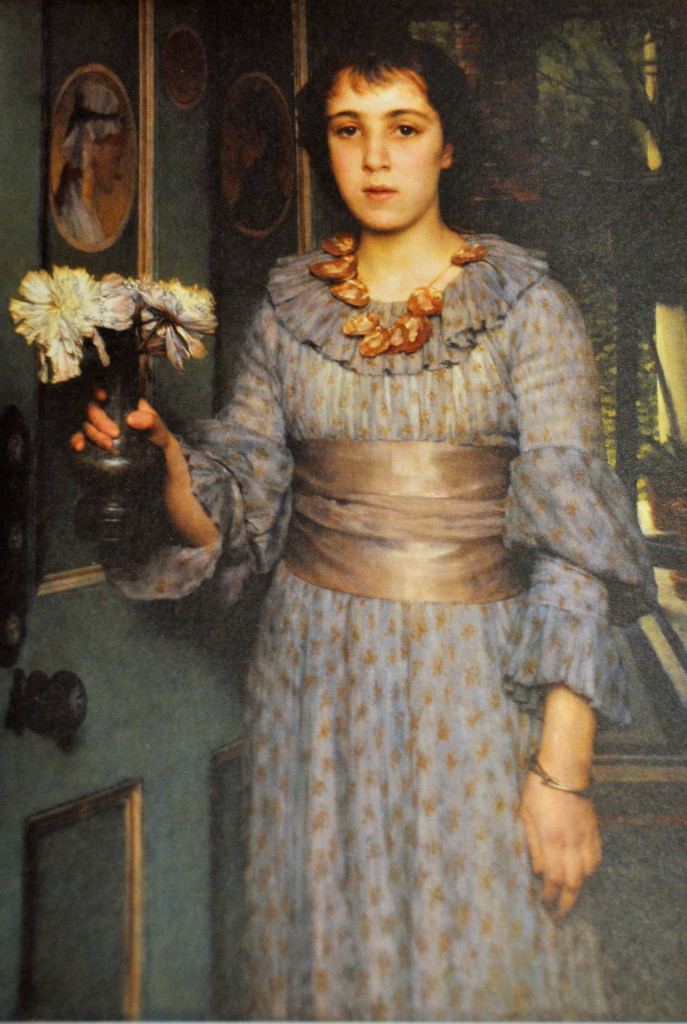 There are limits even for a liberal like me. There are good reasons for certain behavious being criminalised. There is no suggestion that child sexual abuse be tolerated by dodsonandross but there are enough conversations where the old trope about older, experienced men and women “kindly” inducting young teens to make me feel queasy. And the threads relating to animal abuse, zoophilia, are difficult to believe. Trolls or seriously ill – not sure but clearly beyond my limits.
There are limits even for a liberal like me. There are good reasons for certain behavious being criminalised. There is no suggestion that child sexual abuse be tolerated by dodsonandross but there are enough conversations where the old trope about older, experienced men and women “kindly” inducting young teens to make me feel queasy. And the threads relating to animal abuse, zoophilia, are difficult to believe. Trolls or seriously ill – not sure but clearly beyond my limits.
Some of the bloggers writing in are amusing, some are dull and some misguided. After a couple of chapters the gay couple’s sexual encounters, always dwelling on their gentle firm expertise (and dick size) become a bit repetitive. There was one post describing his encounter with a trans man, unaltered so complete with vagina, and his first PIV sexual encounter which blew him away (presumably literally). So even gay men can appreciate a good fanny, one of those words dividing the US and UK.
And some of the members of the community are just a delight with their generous comments and encouragement.
We’re all just wandering through life trying to make sense of our journey. These on-line resources are incredibly helpful in a world where we still can’t talk about openly about sex.
17th July: Feeling Healthy
My partner’s mother fell ill a couple of years ago, just before Christmas. She’s had some on-going health issues for the last fifty years, since a caesarean section went wrong and ended up shredding her colon. After fifty years or so, colostomies are hard work on your digestive tract.

She went in to hospital late in the week. It took two months for the doctors to decide that they really really couldn’t work out what was wrong with her and start to treat symptoms.The most senior doctors or specialists just weren’t around for the first three weeks – everyone likes a Christmas break after all – and no one wanted to make the wrong decision.
Anecdotally, the holiday period is a bad time to get sick, with more experienced doctors likely to be on leave, although this is hard to pin down with statistics. It certainly felt like the worst time for her to fall ill.
ONS figures from 2000 to 2010 show there is a real increased risk of death between 21 December and 19 January , with a peak around new year’s day (graphic: NHS Choices)
But this measures deaths in the population as a whole, so maybe all kinds of other factors – weather, alcohol, more traffic – could come into play. My partner’s mother didn’t die. She just didn’t get better.
Unfortunately for my partner’s mother when your well-being requires to the minute precision eating and drinking, hospitals can be quite dangerous environments. Meals arriving “sort-of” on time just don’t work, especially when people are feeling just a bit more casual and “jolly”. So of course she lost weight and caught whatever bugs were floating around the wards, thankfully not flesh-eating MRSA.
Are there any other times of the year to avoid falling sick?
NHS patients were traditionally warned to avoid hospital on the first Wednesday in August, when newly qualified hospital doctors took up their posts.
In 2009 an Imperial College London study found that this was no myth: death rates were 6 per cent higher on “Black Wednesday”, when patients were likely to find themselves in the hands of less experienced doctors.
It would certainly be useful to know whether or not the nearest hospital was more or less likely to make you better but the only data available to help assess performance is Summary Hospital-level Mortality Indicators – which compare the number of people who die after hospitalisation compared to the number you would expect to die based on the national average.

The latest figures show that nine out of 137 trusts have higher than expected mortality. Luckily for me, my trust has a lower than expected mortality rate.
SHMI scores are controversial. The official guidance states that the data “cannot be interpreted as the number of avoidable deaths at the trust as it is not a direct measure of quality of care” and that a higher than expected score “should not immediately be interpreted as indicating bad performance”. And ofcourse the data is only made public at the trust level – you can’t tell whether your nearest hospital is experiencing more deaths than average.
A trainee doctor I once knew said the real trick was to know a local doctor working at the hospital. One surgeon at her local hospital was widely know as the “butcher” amongst the trainees, infamous for botched surgeries and dead patients.
Today the government says it wants most hospital doctors on seven-day contracts by the end of this parliament, claiming thousands of patients are dying unnecessarily thanks to lack of weekend cover, rather than incompetent surgeons and a lack of whistle blowers.
The British Medical Association says its members welcome a seven-day NHS, but it wants to know how ministers propose to pay for the extra hours. There is no funding available from the government to pay for this wrap around care.

The Health Secretary, Jeremy Hunt, says he is ready to force junior doctors and consultants to accept new working conditions if an agreement cannot be reached in the next six weeks. He wants standard shifts to include weekend working at a standard rate of pay.
Are you really more likely to die if you are hospitalised at the weekend?
An Imperial College London study looked at emergency admissions in England in 2005/06. It found that the odds of you dying in hospital were 10 per cent higher if you were admitted at the weekend.
A more recent study by the same team looked at planned operations rather than emergency cases, and tracked how likely patients were to die within 30 days of having the procedure.
The odds of dying within a month of the operation odds of death were 82 per cent higher if it was done at the weekend, compared with Monday. For the first time, this study highlighted a “weekday” effect as well as a weekend one. Your chance of dying was lowest if you had surgery on a Monday and grew steadily throughout the week:
Having an operation on a Friday was associated with a 44 per cent higher chance of dying than Monday. The authors suggested that serious complications are more likely to occur within 48 hours of surgery. So if you go under the knife on Thursday or Friday, you may be more likely to need emergency care at the weekend, when there are usually fewer or less experienced doctors around.
Several reviews of studies from different countries have found the same trend. This Japanese paper looked at 72 studies from all over the world, covering 55 million patients. Weekend admission was associated with a 15-17 per cent increased risk of mortality.
The authors said: “There are at least two potential explanations for our results. First, these differences reflect poorer quality of care in hospital at the weekend and second, patients admitted on at weekend could be more severely ill than those admitted on at weekday. “We believe that poorer care at the weekends is the much more likely explanation.”
It’s impossible for research of this kind to prove definitively that lack of experienced doctors at weekends is the main factor, but that is what the authors of several of these studies believe is most likely.
So no one is about to argue about the need to improve weekend cover in hospitals. The government, NHS England, the BMA, healthcare think-tanks like the Nuffield Trust and the King’s Fund all back the move to a proper seven-day service.
The political argument is about whether the government is going to fund improved weekend services properly.

20th July: Making Time
Before I had children, I worried about all sorts of things. I worried that I would love one more than the other, that my love for them or their love for me might take something away from my love for their father. I worried that if I went back to work, they might love their caregiver more than me or simply love me less.
None of this came to happen.
I’ve learned that love is not a finite thing in our lives. Loving one person does not mean we are unable to love someone else. If anything it means we can love other people better. When we feel ourselves to be loved, we are more secure in ourselves and more confident of our ability to love others.
I am at a loss to understand why this seems so much more difficult in a polyamorous sexual relationship.
I have a monogamous relationship with the father of my children. I have deep and abiding loves for my two oldest and dearest of girlfriends, who both predate my partner and for a manfriend thirty years my senior who I met through my kids 15 years ago and who just happens to share my sense of the ridiculous.
They are my chosen family, a wonderful phrase Betty Dodson once used which makes much sense to me. My family is small but precious to me.
My love for each of these people is personal, specific to them and in no way makes me love the others less. I don’t have a “favourite”. Each of us brings something new to the relationship.
Maybe whilst love is infinite, time is not and there is simply not enough time in people’s lives to work at more than a smallish number of relationships because all relationships require investment of time and energy if they are to flourish.
We live in a world where we are constantly rushing, constantly competing, measuring and evaluating our worth against someone else’s standards. Our own real-life, real-time relationships can seem very mundane. It seems increasingly difficult to find or make time for love and very difficult indeed to value what we have and hold dear.
21st July: Really?
My daughter loves Orange is the New Black so I read an article written by Beatrice Codianni (What You Won’t See on Orange Is the New Black) with interest and not a little shock when it came to the statistics at the end:
The ACLU points out that the U.S. has 5 percent of the world’s population, but according to ABC News:
- America incarcerates 30% of the world’s female prisoners.
- Every day, 174 new women are locked away in the U.S.
- 63% of female prisoners are incarcerated for non-violent offenses.
Can these numbers be right?
According to the Guardian America incarcerates more people than any other country on the planet, with over 2m currently in prison and more than 7m under some form of correctional supervision. The people who make up this outsize correctional population do not typically come from the white trust-fund demographic: more than 60% are racial and ethnic minorities, and the vast majority are poor.
In August of last year the Sentencing Project, a non-profit devoted to criminal justice reform, released a comprehensive report on bias in the system (pdf). This is the sentence you need to remember:
“The United States in effect operates two distinct criminal justice systems: one for wealthy people and another for poor people and minorities”.
And just after that shock fact came a graph from the Economist looking at women dying in childbirth.
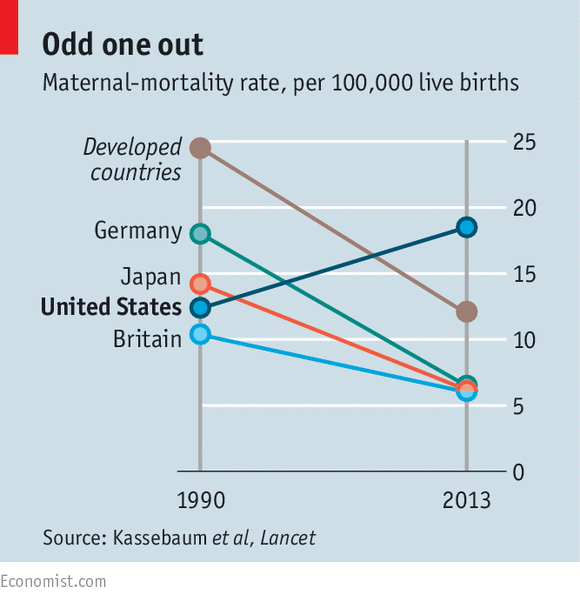 Really? Everyone else is getting better at keeping women alive but America, the richest nation in the world is going backwards?
Really? Everyone else is getting better at keeping women alive but America, the richest nation in the world is going backwards?
26th July: Golden Triangle
A new holiday has been booked and deposit paid. Now all we have to do is get the admin completed in time to go – October half term rather than August Summer holidays.
The basic trip is the India “Golden Triangle” ie.
- New Delhi
- Agra (including the Taj Mahal)
- Jaipur
We’ve decided to take an overnight train down to Varanasi from New Delhi, spend a couple of days there and travel back by way of Khajuraho to Agra, Jaipur and then Delhi for the flight home.
It’s a well-worn tourist trail so shouldn’t be too difficult or testing though the country itself might be a bit of a cultural challenge. Everyone I’ve spoken to comments on the contrast between rich and poor, the old and the new but they all consistenly say it’s a great place to visit. people who have been to India many times all advise starting with the Triangle, partly because the cultural wealth of sites is so significant but also because it’s a relatively comfortable introduction. If we like this visit, we may try other regions.
Delhi is huge, the population is young, the economy is dynamic and yet the cultural roots remain.
It’s chief “sight” is its street life. It has teeming bazaars in “Old” Delhi, the city of the Moghuls, established in the 17th century and still largely Muslim: the immense Jama Masjid (Great Mosque) dominates the quarter. Its main thoroughfare, the busy Chandni Chowk, abuts the Red Fort, whose pristine lawns and lofty Moghul audience halls offer a tranquil haven. And all of this contrasts with the British-built New Delhi to the south, a contrast radiating out from the boutiques and cafés of Connaught Place: where, the dusty alleys are replaced by broad, arrow-straight boulevards and four-square monuments. The imperial mall, Rajpath, leads to the arch of India Gate, designed by Edwin Lutyens in the 1920s.
Agra – for all its monumental beauty – is likely to be the most touristy and tricky, with perpetual smog and hard-sell hawking. Yet it boasts a stupendous Moghul fort in the city centre and the ethereally beautiful Taj Mahal. The marble mausoleum is by far the most popular tourist site in India – and despite the hype and the cliché it is still said to be unmissable by everyone who has visited.
Jaipur is the capital of Rajasthan, a commercial and administrative centre that has nothing to do with tourism, and a population of 2.5m. The city’s old quarter is known as the Pink City after its red-washed buildings, is packed with stalls selling everything from silk to milk. Of Jaipur’s numerous monuments, the Hawa Mahal – an ornate five-storey façade, designed to allow the women of the royal household to observe the street in anonymity – has become an icon of Rajasthani architecture.
Varanasi may turn out to be the most shocking place we visit as our travel agent suggested. Hindu pilgrims come to the ghats lining the River Ganges here to wash away a lifetime of sins in the sacred waters or to cremate their loved ones. Most visitors agree it’s a magical place, but it’s not for the faint-hearted. Here the most intimate rituals of life and death take place in public, and the sights, sounds and smells in and around the ghats – not to mention the almost constant attention from touts – may be overwhelming especially since it seems we will be there at the time of a festival celebrating Shiva.
Khajuraho is another place where hassle from touts is to be expected but as a UNESCO heritage site it seemed a mistake to miss out on the temples.
Around 10% of the carvings on the temple walls are said to be “erotic” though the main idea behind them seems to be merely to celebrate the divine in everyday life. I’m guessing the carvings of food prep or growing rice were just less interesting to a rather prudish western audience. The carvings that cover Khajuraho’s three groups of Unesco World Heritage Site–listed temples are among the finest temple art in the world. The Western Group of temples, in particular, contains some stunning sculptures.
On the way to Agra we’ll also stop off and see Fatehpur Sikri, the short-lived capital of the Mughal empire between 1571 and 1585, until the water ran out. The main sight at here is the imperial complex of pavilions and palaces spread amongst a large abandoned ‘city’ peppered with Mughal masterpieces: courtyards, intricate carvings, servants quarters, vast gateways and ornamental pools.
27th July: Angry Jack
Just watched a series of short youtube videos looking at gamergate and in particular the character of AngryJack.
And though applied directly to the Anita Sarkeesian haters, it struck a chord with me for all of those people who seem so cross when a woman reports harrassment or worse on EverydaySexism.
Locating the character in the 1980s made sense to me. That would put them as youngish 35+ year olds, a generation where many of the most obvious equality legislation had already passed, where women’s rights had stopped being talked about positively and so everyday sexiam passed unchallenged. It explained the general acceptance that sexism and misogyny is a “bad” thing but only by insisting that sexism/misogyny is an extreme event, stranger rape, wife beating or murder etc. It explained the vehemence of privilege denial.
Using the Faludi book “Backlash” also helped anchor the conversation for me. Identifying the timeline, noticing that these outcries were pre-emptive rather than reactive was instructive.
There’s a lot of very useful ideas spread through the series. The personal need to self-identify as good or bad, heroes or villains rang true. So much outrage and spite can only come from a deeply personal place. We all need to be the heroes in our own personal narrative. Redirecting the question from personal good/bad to broader helpful/unhelpful to society made the discussion useful.
And it also leads to the most obvious of on-line tropes – “through your comments you shall be known”. A quick read through the comments section on most of the videos identifes most of the people you wouldn’t want to sit down next to at a meal, most of the young men that you don’t want your daughter to bring home for dinner.
He concludes with a series of suggestions directed towards people like himself who are unlikely to become direct targets of abuse, suggesting that they engage with AngryJack, challenge AngryJack’s vitriol with a view to redirecting proto-AngryJacks away from the poison. But as a later post points out, there is collateral damage to such enagagement, a splash back of venom directed at the more vulnerable.
His followup twitter discussion was storified and refined somewhat.
talking-to-jack-it-turns-out-is-complicated
and has left me with a number of new reads, a good resource for debunking misinformation constructively and a book to buy and read, Civility in the Digital Age which is a thing sadly lacking.
28th July: Suffer Little Children
A recent report in the Lancet noted that UK children have been specifically excluded from legislation, the Health and Social Care (Safety and Quality) Act 2015 designed to integrate information for health and social services.
We are strangely more paranoid about the impact of sharing our children’s data than our own.

The Act specifies that a consistent identifier for the individual must be included in information processed provided that it facilitates the provision of services to the individual and is in his or her best interests. In the UK a person is allocated an NHS number which could be easily used for this purpose. An amendment was introduced in the House of Lords for similar use of a consistent identifier in children, but was rejected.
Integration of information from child health and social services is thought important both for the delivery of care and for safeguarding children. It would allow parents and carers to have complete information about the needs of, and services for, their child in one place. Currently in the UK, relevant information about an individual child resides in various health organisation silos and often in other agencies, such as social care and education.

The UK’s Children and Young People’s Health Outcomes Forum, an independent expert advisory group, has repeatedly emphasised the importance of information sharing as a priority for children’s health and wellbeing. It proposed the National Health Service (NHS) number as the consistent link identifier.
A recurring problem identified in serious case reviews after the death or serious injury of a child is the absence of information sharing. In England in 2009–11, neglect was identified as a background factor in 60% of reviews; in 2009–10, an estimated 50–55 child deaths were directly caused by violence, abuse, and neglect with maltreatment a contributory factor in a further 30–35 deaths
In 2003, Lord Laming in his review of the death of Victoria Climbié recommended that a database, which became known as ContactPoint, should be created to link records for all children, but this had still not happened by 2007 when Peter Connelly died.
Lord Laming reviewed Peter’s death and reiterated his recommendations but ContactPoint was abandoned in 2010.

After much effort and lobbying, a new initiative, the Child Protection Information Sharing project (CPIS) is now being implemented across England; this project uses the NHS number as a link identifier between unscheduled health-care settings and local authorities.
Staff in such settings as emergency departments are alerted when children who are subject to a child protection plan or are looked after attend, as well as pregnant women who have a pre-birth child protection plan for their unborn child.
The local authority is notified electronically of such encounters which, if frequent, could be a marker of neglect. No clinical information or detailed local authority information is exchanged. By the end of 2015, social care safeguarding business processes will include recording the NHS number and most local authority child care information systems will have been modified to record the NHS number
This sharing of information should help health professionals improve their assessment of whether they could be dealing with abuse or neglect, as well as identifying vulnerable children to improve their care.

However, there are other situations in which sharing and integrating information to maximise care for children and young people is important. One example would be for young people with special educational needs. These people need support from health, education, and social care and this needs the effective and timely sharing of information between all of those groups.
School attendance and educational achievement are important outcomes of good health care, but this information cannot currently be linked to individual care plans formulated by Social Care. As yet the use of the NHS number by the education sector has not been agreed.
Despite the withdrawal of the amendment to include an identifier for children in the House of Lords, the Department of Education will report by the end of 2015 on the impact of adopting a consistent identifier for the types of provision detailed above. Hopefully this report will be positive and further progress made in implementing linkage of information for individual children and young people.

Bonkers Bankers?
I was reading through a blog in the Guardian by Joris Luyendijk. He interviewed a number of people working in the Finance Sector.
Some of the best quotes are summarised here:
1. Most enlightening
A human resources officer explains what’s hanging over people working in high finance:
“When the call comes, people know right away. We may use the most innocent tone of voice when we say: ‘Hi, could you pop up to the 20th floor for a moment?’ They know better: you never get an unexpected call from that person, except … It is amazing how fast news of a round of redundancies spreads. It’s like this tidal wave of panic washes across a trading floor … After our conversation, which typically lasts five minutes, they will be led out of the building by security.”
2. Proudest
If you want to know how it feels from the other side, read this banker in treasury sales before his redundancy at a major bank:
“Insiders on your blog who are so negative about the sector … it’s not very kind to say, but they just didn’t make it. They get kicked out and then they go complain to the media. It’s tough to take, obviously. You had to go while your colleague is still at his desk. Because he was better.”
3. Humblest
And after his redundancy:
“Looking back I may have fallen victim to the self-serving idea that we control our fate; as long as you’re good nothing bad can happen to you, and since nothing bad has happened to me, it must mean I am good and therefore safe; that sort of thing. In the same way military men tell themselves that they can’t die because they don’t make mistakes. But the best soldier can drive over a land mine.”
4. All-time favourite comment thread
In which a banking equity analyst debates with readers whether he deserved his one million pound bonus:
“Do I deserve to be me, rather than some guy in Darfur trying not to starve to death or get murdered. I get paid a lot because I can do things, but if I had been born mentally handicapped I wouldn’t. That’s life. I do ask to be paid well when I’ve done good work, but that doesn’t mean I feel entitled to anything.”
5. Wisest
A structurer had worked for one of the most prestigious banks for a decade, building such cleverly complex financial products that his clients failed to understand that they didn’t understand them. Looking back, he says:
“It’s strange. Bankers are so smart, yet they get this thing wrong. They spend their lives in an office when the only truly valuable thing in life is time. It is the only thing that is not replenishable. You can always make more money, but you can never get more time. Maybe it’s because death is such a taboo in our society; that people live in this illusion that their life will go on forever.”
6. Most terrifying
So many interviewees on this blog have said that their banks seem too big and complex to even manage, such as this regulator:
“We rely upon self-declaration, upon what is presented to us by a bank’s internal management. But often they don’t know what’s going on, because banks today are so vast and hugely complex. I don’t think I have ever been deliberately lied to – though obviously I might not know about it. The real threat is not a bank’s management hiding things from us: it’s the management not knowing themselves what the risks are, either because nobody realises it or because some people are keeping it from their bosses.”
7. Most succinct summary of the draw of it all
Investment banks are strictly hierarchical. Managing directors are high up in the tree, expecting to make at least a million in a good year. This former MD summarises what kept him in banking for so long:
“Investment banking is a trap, a game and an addiction. The reward is big, but uncertain, which makes it exciting and keeps you coming back for more. Once the money starts flowing it’s very, very hard to take yourself away from it. Doing a deal is like scoring a goal, or maybe for journalists, getting a scoop. The game element is in the rivalry with other teams, winning the mandate, legging over the competition … Also the emptiness that comes with addiction.”
8. Easiest target
For a bit of context, the blog has also interviewed a number of bankers’ partners, family members and exes. Howls of outrage reverberated across cyberspace when a banker’s wife said this:
“You want me to estimate a starting teacher’s salary? I don’t know. Let me think, £45,000? Wow, it’s really only £22,000? I had no idea. That really is too low, I could not live on that. Well, obviously this is something that has to change. I mean, these teachers have had to invest in their own education and are now educating the next generation, right? I am rather shocked by this, are you sure?”
9. Most shocking
Investment bankers have happily absorbed the “Masters of the Universe” epithet. But this interview with a banker in charge of an algorithm gone haywire, demonstrates that they may not even be masters of their own bank:
“Those were scary days. You think: we are in a new paradigm. Nothing works any more the way it used to. My department’s potential losses were hundreds of millions of pounds and several billions across the whole of the bank. We began to realise: this could sink the bank. In fact, we were bankrupt three or four times; our bank owed more than it owned. We were lucky to have a parent company with very deep pockets. I was struggling to keep it afloat. If the market had crashed further we would have gone down … This was a bomb and I was basically the only one who could defuse it.”
10. Favourite anthropological insight
This financial lawyer has a sharp eye for dress codes. They met in a restaurant and he was asked him to describe what he saw:
“I’d say, mostly lawyers. There are several big law firms around here, and lawyers need to have lunch. I see no trophy wives or trophy girlfriends, no extravagantly dressed women. I see men who keep their jackets on, which is what we tend to do as lawyers – many would not want to be the first to take it off and most lawyers I know leave it on anyhow, keeping the uniform intact makes you look solid. I see inconspicuous ties, also a lawyer thing. This restaurant serves very good quality food but it is not flashy, I believe only this week the Sunday Times called the interior ‘boring’. Boring is good, for lawyers. We sell reliability, solidity and caution. We want our presentation to mirror that. And we often charge hefty fees, so we don’t flash our wealth because then clients are going to think: wait, am I not paying too much?”
July 29th: Bankers being Useful
It’s fashionable to berate bankers. When looking for a school for my youngest daughter I was asked what my partner and I did for a living. The minute “banking” was mentioned the smile became brittle and a reference to “the most hated occupation” was made.
It didn’t stop them taking our money and accepting our child into the school. It has stopped me making any further donations to their capital growth and expansion fund.
New York But banking is useful, even essential, to everyday life and living. There’s a youtube slide show explaining why at the following if you’re interested: Importance Of Banks In An Economy – SlideShare
We use banks, everyday for settling our bills, booking our holidays, receiving our salaries etc. Some of us are even willing to pay the bank for them looking after our money directly through fees, though in the UK most everyday accounts are free for users.
Basically banks accept deposits and provide loans. They act as intermediaries transferring surplus funds from savers to borrowers. In return the savers may receive payment in the form of interest or a fee and the bank intself will usually retain a fee. This transfer of funds improves the financial productivity of the economy as a whole.It also involves a degree of risk. What if the borrower is unable to repay all or some of the amount it has borrowed? Who is liable for the loss? Well, the simple answer is obviously the bank. In order to manage or mitigate this credit risk, the bank will gather as much information on the borrower as possible and monitor that borrower through the lifetime of the loan. Where a loan is regarded as higher risk, a larger fee or interest rate will be charged.A bank will build up a portfolio of loans. If the number of borrowers is large enough, the failure of one to repay will be outweighed by the profits made on the other loans. In this way, risk is diversified or managed.Even so a bank will be required to keep some money or capital that would allow it a safety margin. Not all funds can be loaned out. As a result of the recent financial crisis, the rules set internationally require a larger amount of capital to be set aside by banks. By definition, funds set aside are not making money for the bank and so will reduce the profitability of a bank. At the same time, the government asks that banks keep lending to smallish businesses, typically the growth area of the economy. Balancing the risk between profitable lending and keeping the savers’ deposits safe, is the tightrope that banks are asked to walk. We want them to take risks, but not too many.Global banks are useful for global businesses selling overseas. Moving money around the world, accepting payment in one country and currency to be received in the originating country and related currency is a phenomenal convenience. A bank may end up with any number of currency balances, loans and deposits in any number of different currencies. This introduces a currency exposure risk where because of exchange rate moves, a loan or liability in one currency becomes greater than the corresponding asset in another. It’s also possible to see an interest rate risk where a deposit at an agreed fixed rate of interest can be mis-matched with a floating or variable rate loan.Vancouver Island, Canada Managing the various market risks is an important part of the responsibility of the bank. It’s the part that went wrong in the latest financial crisis. Badly wrong. When it went wrong, the interconnectedness of banks around the world meant the problem cascaded around the globe. Banks got scared and stopped lending to each other, nevermind businesses. The worldwide economy started to grind to a halt.
If we stick to tangible loans and deposits all recorded on the balance sheet of the bank, then even with different currency exchange rates and interest rates, it all seems pretty straight forward. Even if we extend this to a portfolio with hundreds of thousands of borrowers and depositors in a very large bank, it should still be measurable and therefore manageable.Off balance sheet finance started life as a convenience and remains convenient for many businesses. Instead of actually taking delivery of $100m and making a physical conversion to £, a business simply agrees that they will settle the difference in $/£. Nowadays there may or may not be an underlying physical transaction. A business would swap one currency for another or a fixed rate for a floating interest rate (or vice versa). They could swap the value of a security now for it’s value at a given point in the future.Because only the margin, the profit or loss on the deal is ever exchanged the notional principals are off-balance sheet and did not need the bank to set aside it’s own capital to the same extent.Even so, most banks could value a simple derivative swap or rate transaction. Even options where depending upon a condition (price of the underlying equal to or less/more than) the contract would pay out the difference, could be priced and managed.In fact most of the successful derivative traders I knew were pretty risk averse. Their objective was always to offset any balances as closely as possible. If they were obliged to pay across the price of a security in three months time, they would try to set up a contract with another counterparty who wanted to sell them the price of the same security, essentially just matching up buyers and sellers like an everyday banking transaction. They would try to make a smallish profit each time which would then add up to millions over the year and earn them their bonus.So what could go wrong?Most of the big financial disasters have fairly mundane roots. Banks are quite good at managing the risks that they understand, market risk such as currency rates, interest rates, credit risk etc. But pricing up of these risks is all based on probability calculations. Each algorithm is essentially asking the same question: “What is most likely to happen to the price of this item when I need to settle the trade?” At the extremes it is relatively easy to say whether a deal will make profit or be “in the money” or lose and be “out of the money”.But obviously it gets interesting at and about the point where a deal may or may not have any value.A lot of time and money is spent getting these models right.But the problem with the collateralised debt obligations that were the cause celebre of the Lehman crash wasn’t so much that the valuation models went wrong, as that the people trading them didn’t understand what it was they were actually trading. I worked for a bank that invented this type of trade. They were asked by a German Landesbank to get rid of a portfolio of dodgy US mortages that the German bank had bought and were now very uncomfortable owning. The bank packaged them together and sold the portfolio off in pieces to other banks. Each counterpart owned a proportion of the underlying sub-prime (ie poor risk) mortgage portfolio, sharing out the risk and potential reward between a broader population.The bank took an arranger fee only. The person who came up with the idea was cautious. It was impossible to make a link to the individual mortgages so it was impossible to actually work out the risk of default. The deal was priced to pass on the risk and share it out only, and with full-disclosure to the counterparts who were all banking professionals and might be reasonably expected to understand what was going on. Some time later it became clear that the market had really taken off in this kind of transaction, packaging up poor debts and selling them on. We could never work out how other banks had managed to work out the pricing – turns out they hadn’t. They went bad. Banks panicked and the world caught cold.Mistakes are much more common than outright fraud. Mistakes cost more money than anything else even the arrogance of people who simply assume they understand something or are too embarrassed to fess up that they don’t understand what it is they’re trading.Operational risk is the risk that is left over that is not inherent in financial, systematic or market-wide risk. It includes risks resulting from breakdowns in internal procedures, people and systems. Operational risk is dull but incredibly expensive.It can also include other obvious classes of risk, such as fraud, security, privacy protection, legal risk, physical (e.g. infrastructure shutdown) reputation risk or environmental risks. Operational risk is a broad discipline, close to good management and quality management.In similar fashion, operational risks affect client satisfaction, reputation and shareholder value, all while increasing business volatility.
- Unlike other risks (e.g. credit, market or insurance risk) operational risks are usually not willingly incurred nor are they revenue driven. They are not diversifiable and cannot be laid off, meaning that, as long as people, systems and processes remain imperfect, operational risk cannot be fully eliminated.
Operational risk is, nonetheless, manageable as to keep losses within some level of risk tolerance (i.e. the amount of risk one is prepared to accept in pursuit of his objectives), determined by balancing the costs of improvement against the expected benefits.
Vancouver Island, Canada A real life example might include something as mundane as recording a trade. Some options trades can get quite complicated. They can involve two, three or more conditions. If the interest rate rises to (a) then A happens, if it falls to (b) then B happens and if it stays within (a) and (b) then C happens. Sometimes a system will be flexible to recognise all three legs of this single trade but it is also possible that three trades will have to be entered onto the valuation system separately, maybe only linked in the comments section.
If the counterparty comes to the bank two years later and asks to unwind the trade, what are the chances that all three legs will be unwound?
I once managed a department responsible for managing credit risk with counterparties. We had excellent systems and good risk management but even so there were some clients that we could never agree our exposure with and that created a problem. Every so often we would exchange spreadsheets with long lists of trades by type and age.
Even agreeing the number of trades by type by counterparty could be a nightmare. Many banks have subsidiaries and branches all around the world. Some of these will legally be the same entity but some will not. Which ones should you include when assessing risk?
Vancouver Island, Canada We may have a single trade booked with a counterparty where they have broken it down into two or more components. We may have booked a buy where they think they’ve bought from us. Or it could be something as simple as the wrong currency or interest rate booked. At some level, the only answer will be to go back to the original trade documentation, a trade confirmation sent out to the counterparty and signed (affirmed) by them.
Let’s assume that a person spends a week tracking down the problem trades, calling up the confirmations and getting the trades amended by the counterparty or their own departments. A second list of trades is exchanged but in the meantime another thirty or forty trades have been completed.
Suddenly a disaster happens. It becomes clear that a major counterparty, say Lehman Brothers, is going bust. It becomes vitally important to identify each and evey trade that you’ve entered into with them. You need to stop every payment out to them because you know that no money will ever come back and you need to minimise the loss that you’re about to make.
Suddenly everything goes pear shaped.
There will always be orphan trades that have not been recorded well, whose terms are ambiguous or have not been properly confirmed and affirmed. There will always be an element of operational risk. It is much sexier to spend time and money building expensive systems to price up complicated trades than to spend the time and money on systems or staff able to settle those trades effectively.
New York
31st July: All Change?
“BRITAIN needs a tough, strong financial-conduct regulator,” said George Osborne on July 17th as he announced that he had effectively sacked Martin Wheatley, the City’s tough, strong financial-conduct regulator and financiers celebrated the departure of the figure they had come to see as Britain’s bank-basher-in-chief since his appointment in 2013.
 Mr Wheatley was never going to be popular as punisher in chief of bad bankers. But his fierce independence appeared to be just what the industry needed—and what the public was asking for.
Mr Wheatley was never going to be popular as punisher in chief of bad bankers. But his fierce independence appeared to be just what the industry needed—and what the public was asking for.
His successes included punishing investment banks for rigging currencies and interest rates, and punishing high-street banks for mis-selling complex financial products to the public. Failures included a media briefing about the insurance sector so botched it sent life insurance firms’ shares plummeting. City leaders furious at Wheatley’s aloofness and uncompromising attitude have used the fiasco to lobby against him.
In a speech last month Mr Osborne described a “new settlement” with banks, which balances bashing with a measure of support. “Ever-larger fines…just penalise shareholders, erode capital reserves and diminish the lending potential of the economy,” he said. Threats by two giants, HSBC and Standard Chartered, to move to Asia prompted a recasting in the budget on July 8th of the bank levy. This would have been unthinkable even a year ago.
The chancellor has said that the FCA’s new leader will take the organisation to “the next stage of its development”. Some believe this means Mr Wheatley’s replacement will be more easy going. “The UK wants more of a supervisor and regulator than just an enforcement agency,” says Peter Hahn of Cass Business School. The government might well choose a successor to Mr Wheatley who has a background in banking, he suggests.
Though it’s important to remember that Mr Wheatly was appointed in part in reaction to suggestions that his predecessors were “tainted” by their association with the HBOS collapse and resulting scandal. A previous City regulator chair John Griffith-Jones and three other directors were urged to resign a year ago due to ‘conflict of interest over the HBOS collapse’
So things seem to be getting back to the bad old days. Has anything actually changed and why should we care?
It is surprisingly difficult to measure the value of the Financial Sector to the UK economy (Measuring financial sector output and its contribution to UK ) but everyone seems to agree that it is important. It’s significance to our GDP is why we need to worry.
By 2009, the sector accounted for 10% of UK GDP, the highest of all G7 economies. The dominance of the sector in Britain meant it was hit hard by the financial crash. Its share of the economy fell by 2.9% while it remained roughly stable in other major economies. In the UK, banks remain too big to fail.
 So when financiers in London start predicting their industry’s demise perhaps we need to py a little attention but does that mean we should overlook or ignore banking bad behaviour?
So when financiers in London start predicting their industry’s demise perhaps we need to py a little attention but does that mean we should overlook or ignore banking bad behaviour?


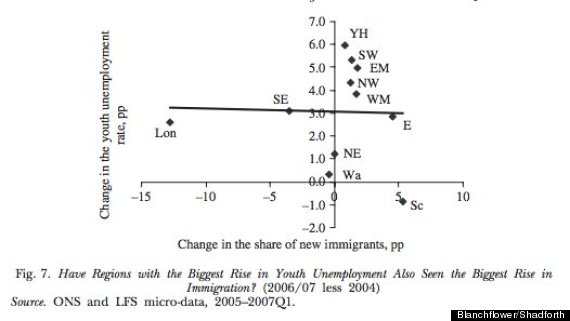





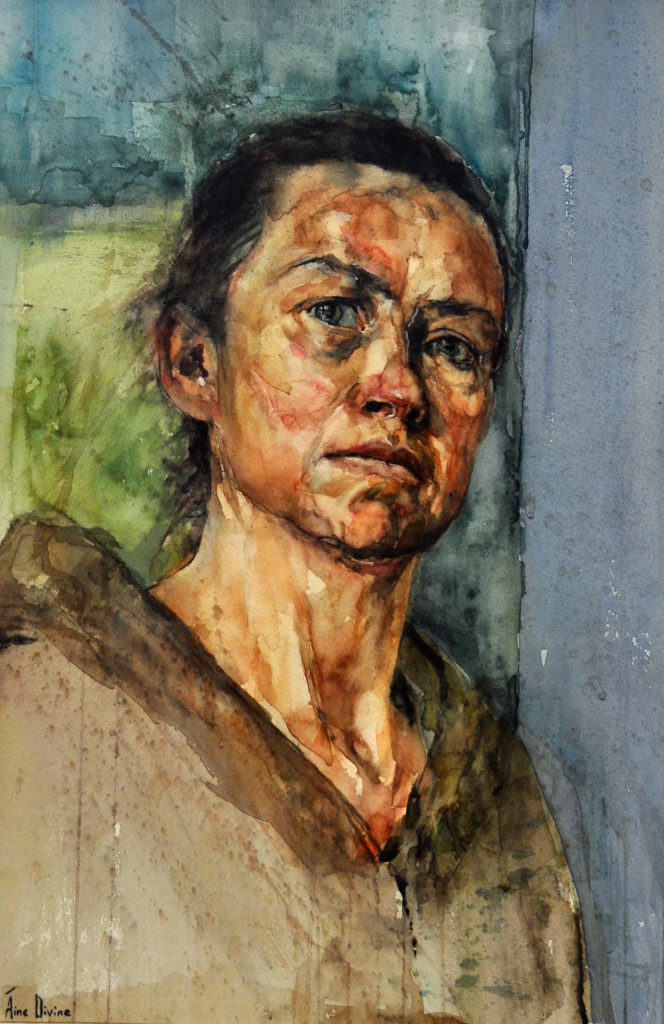
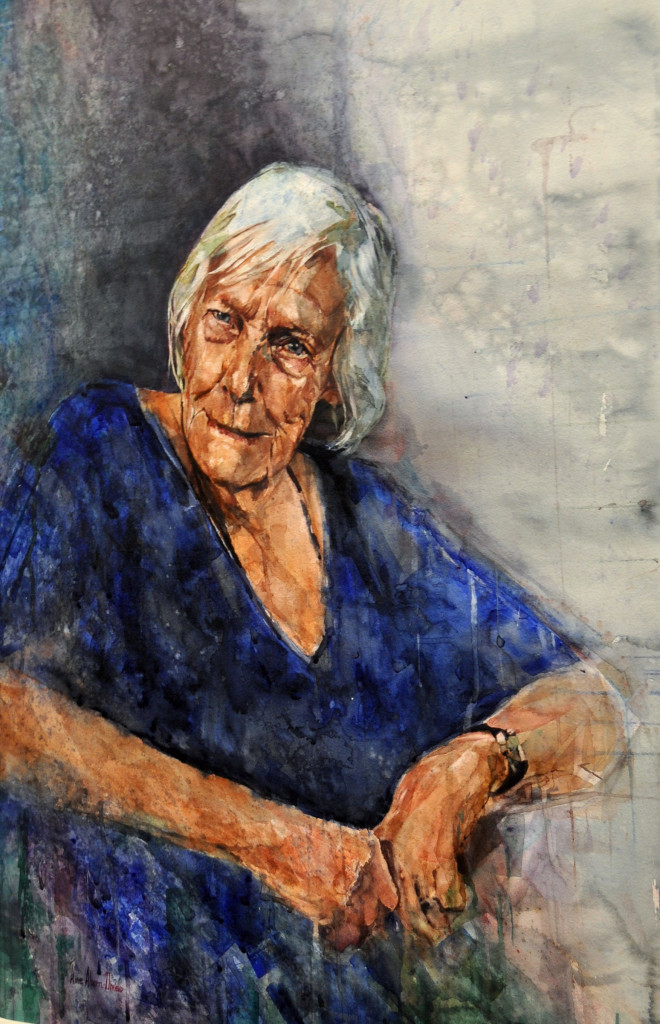




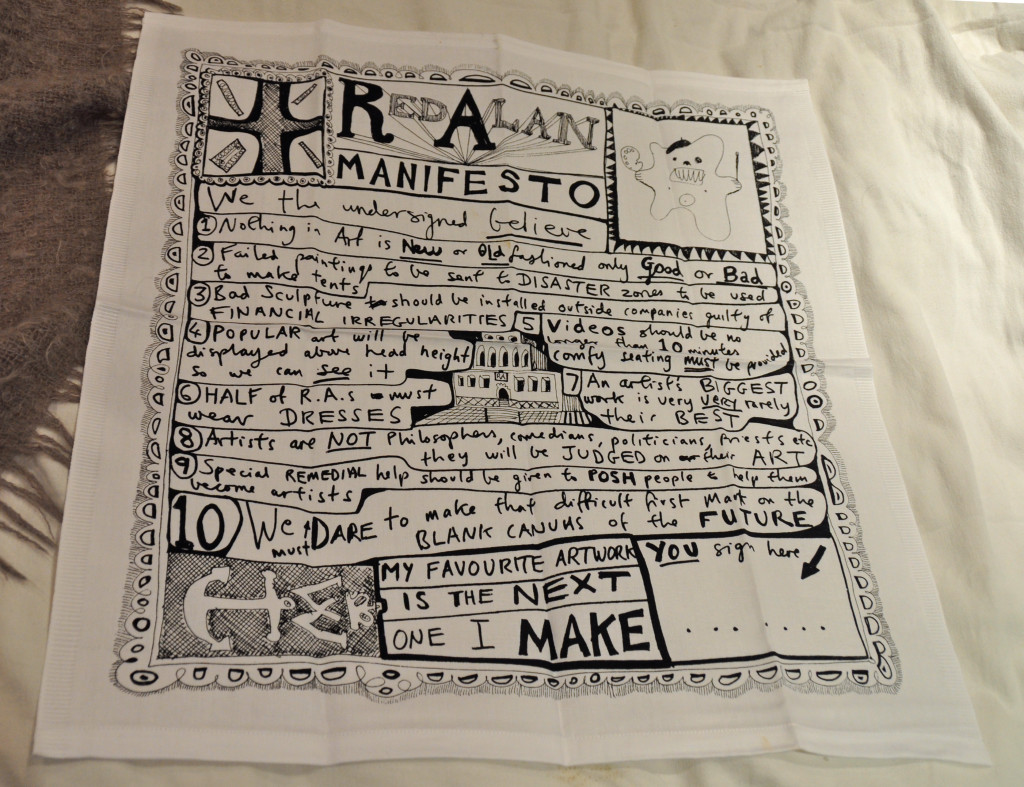


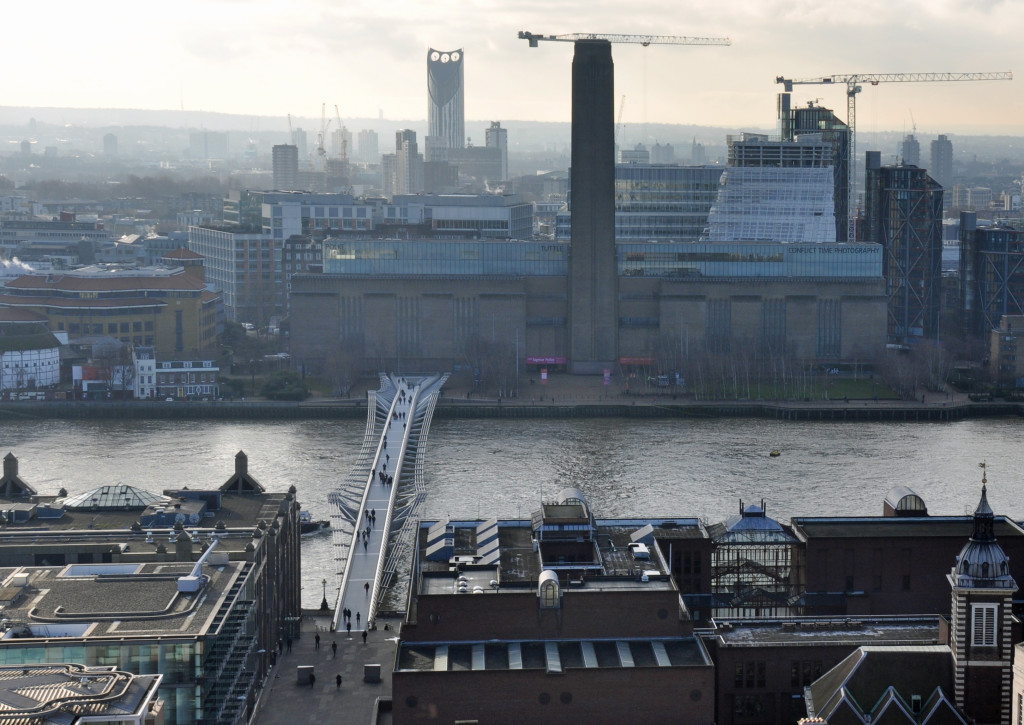
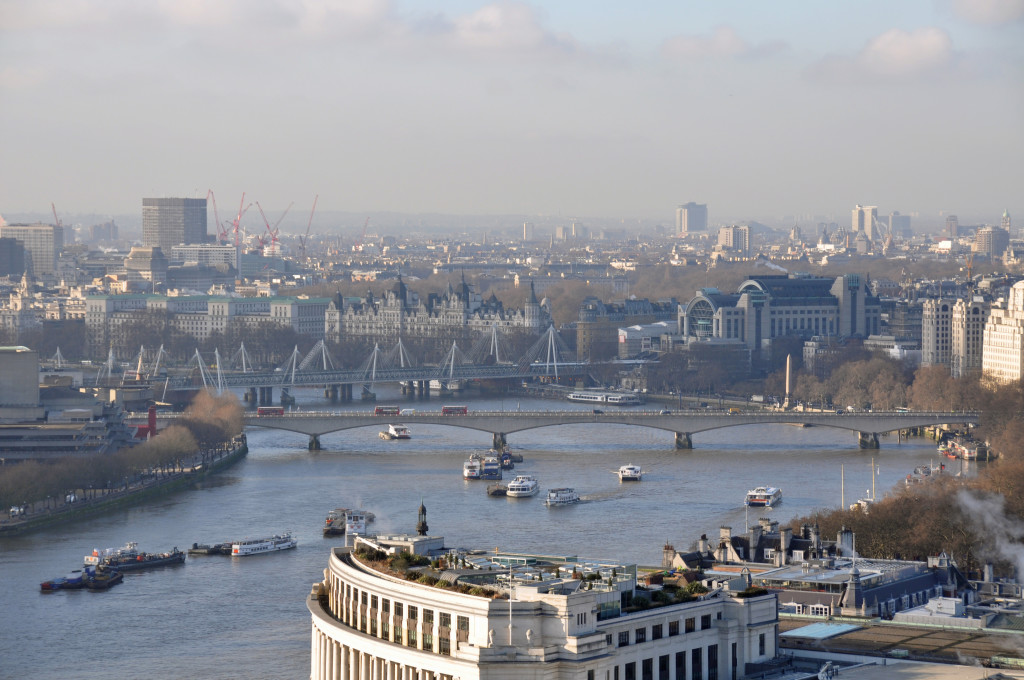

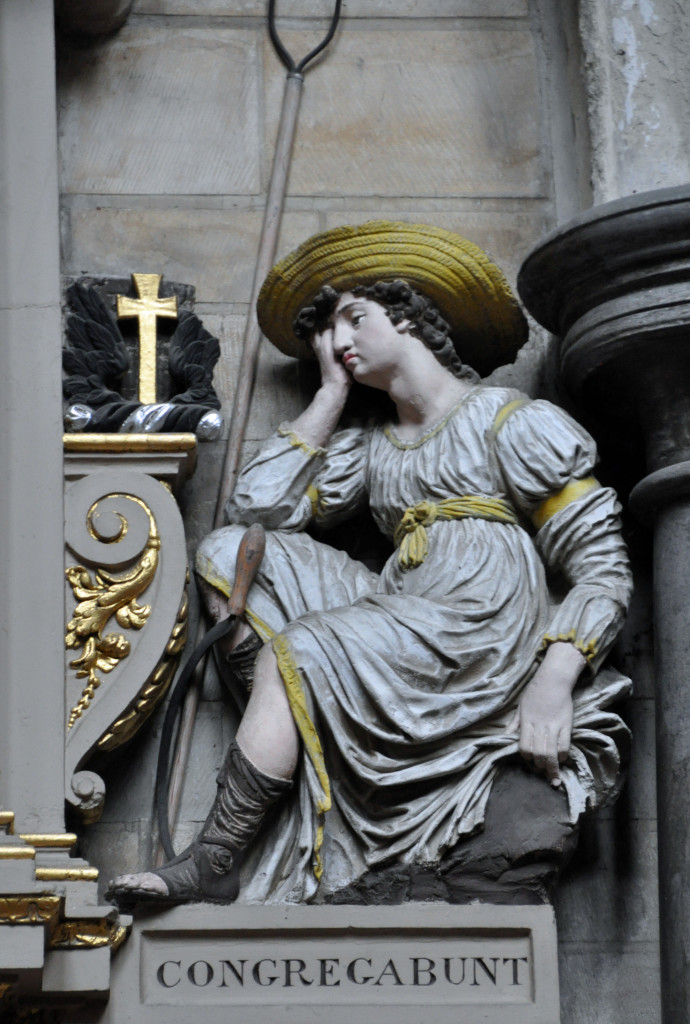
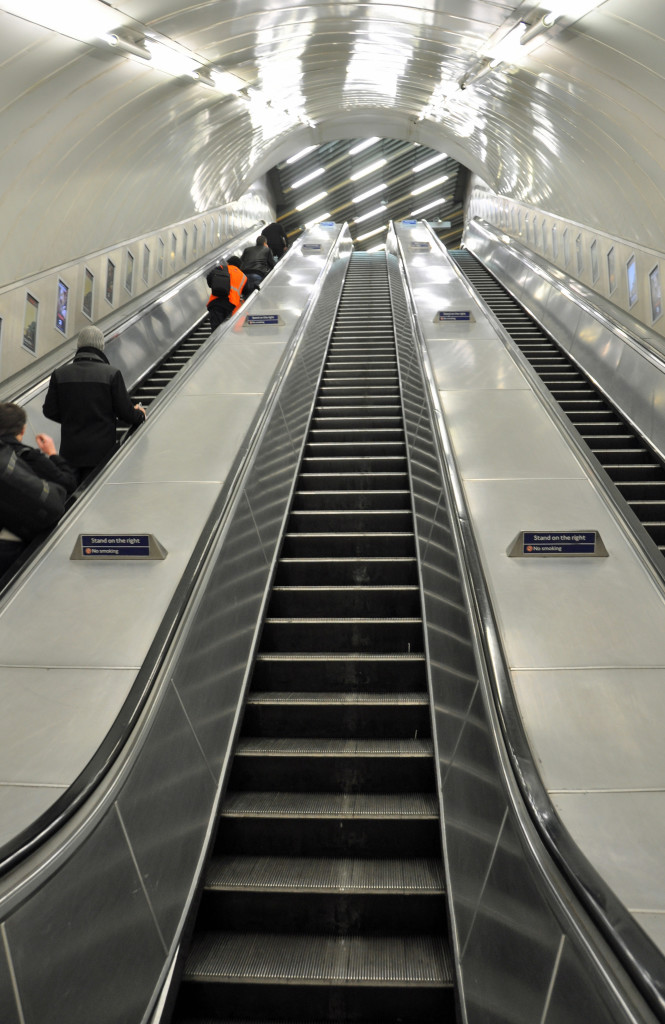
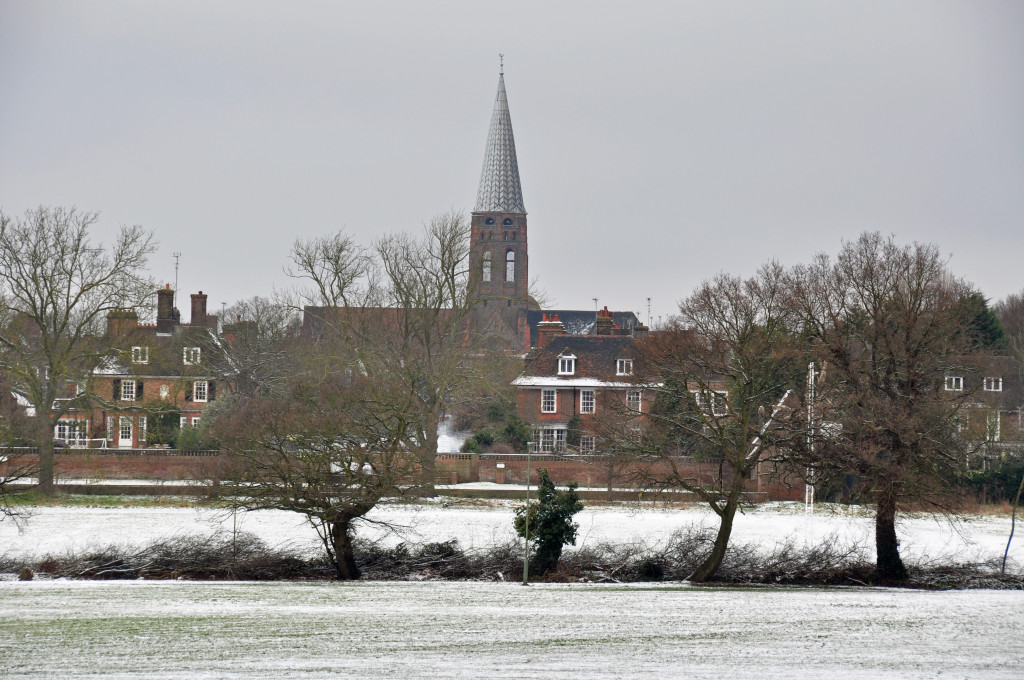
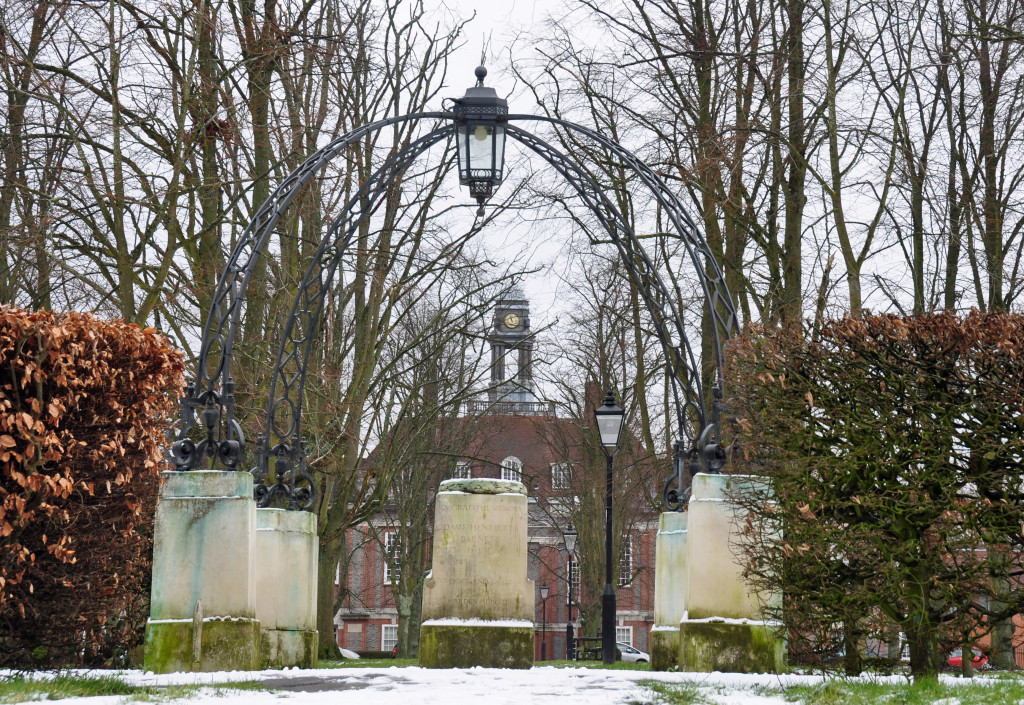

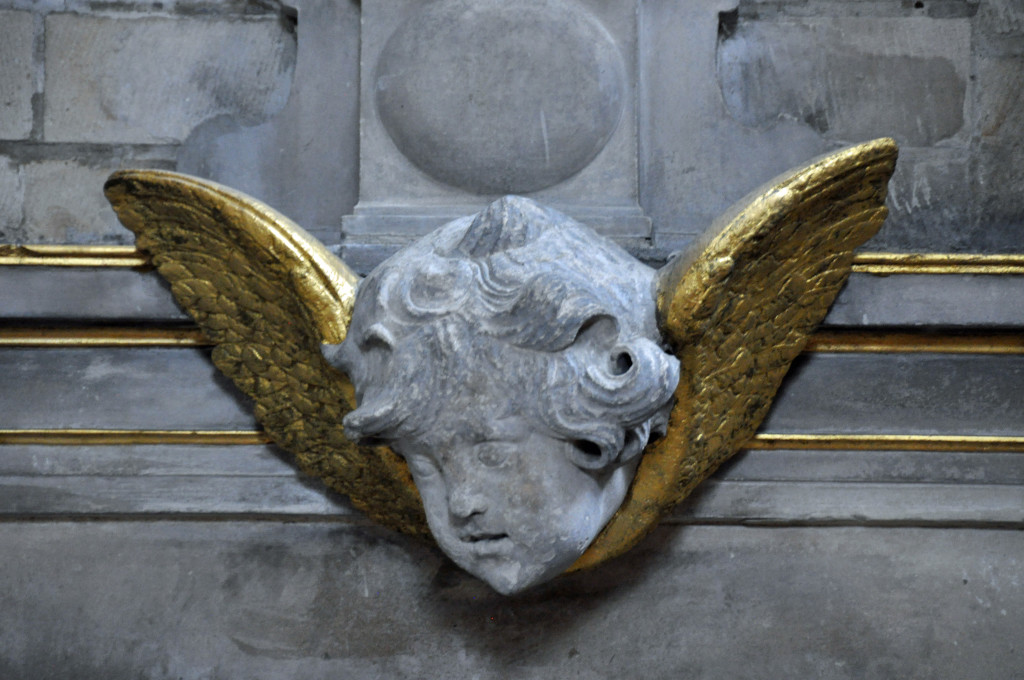

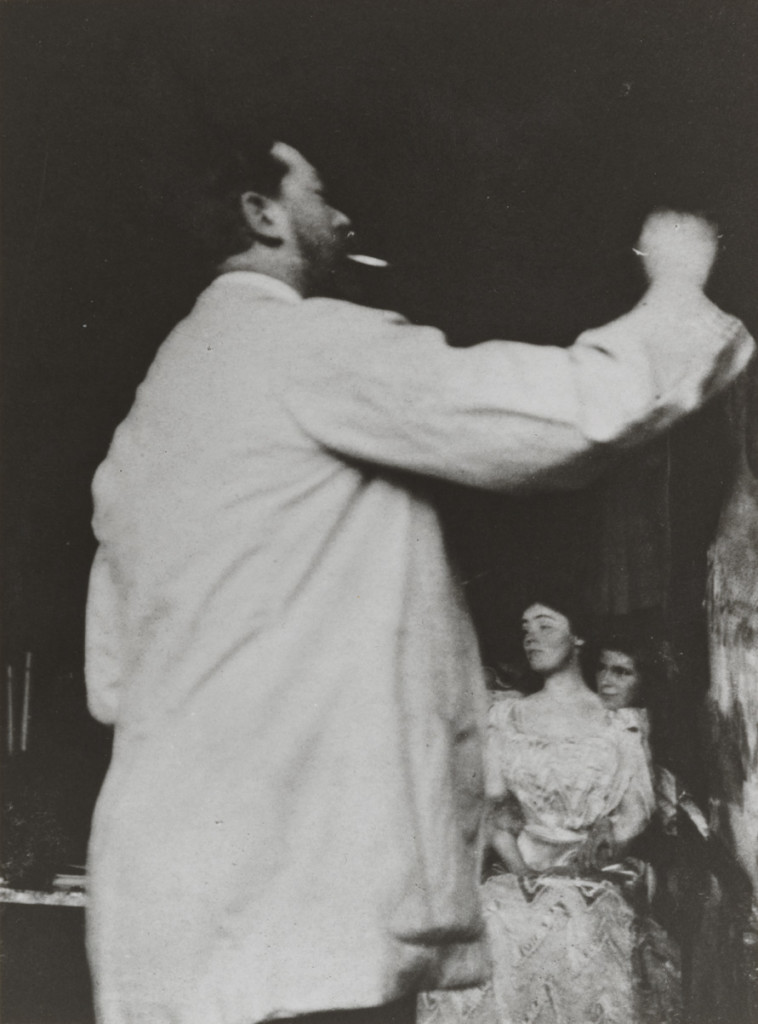
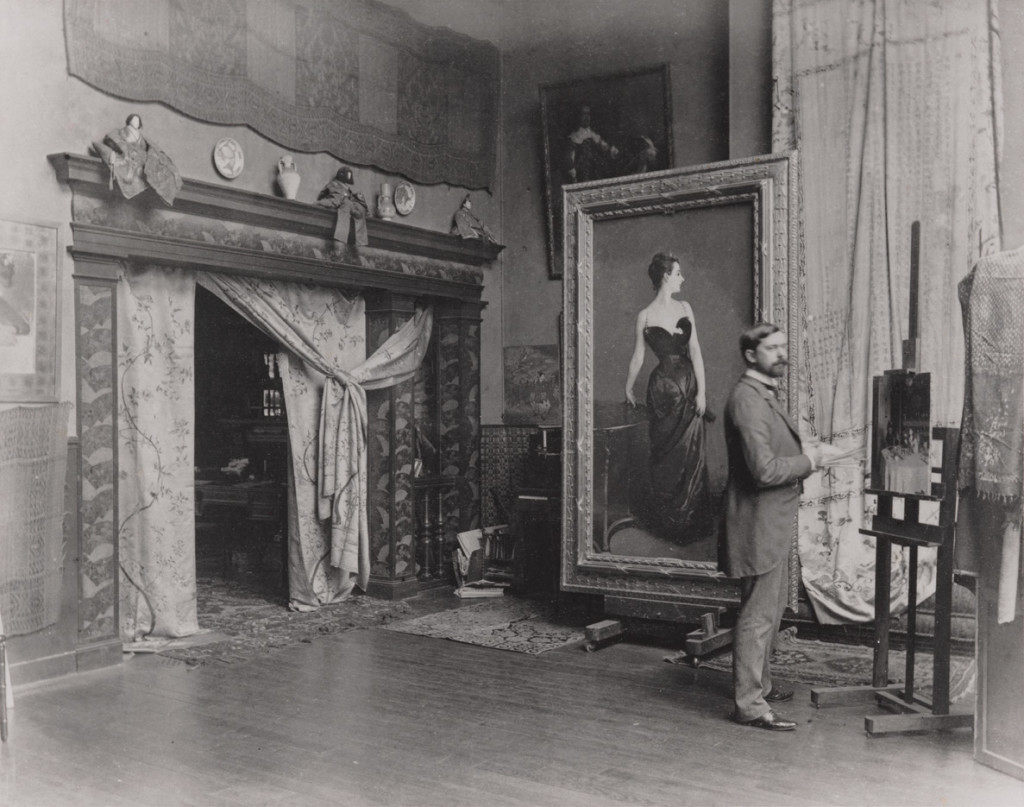


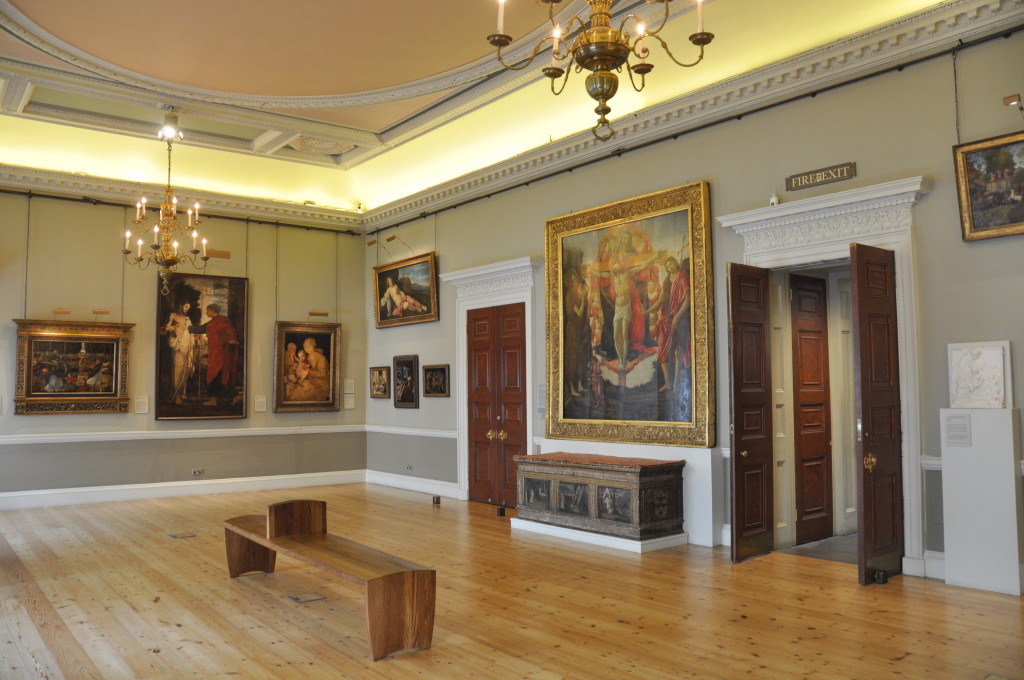

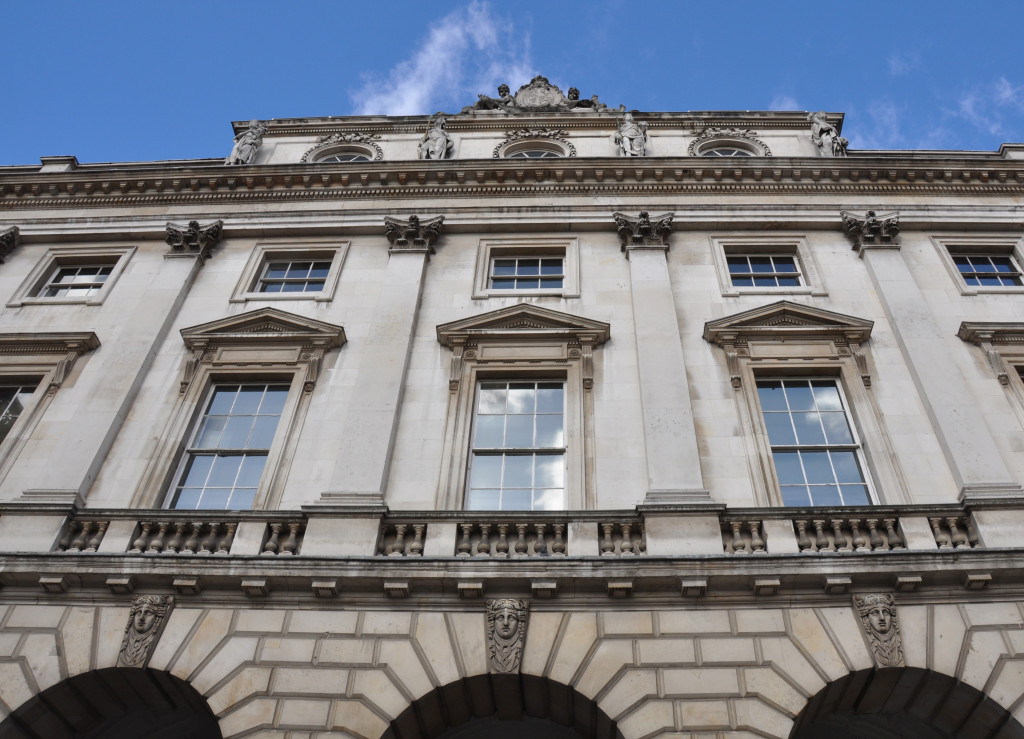


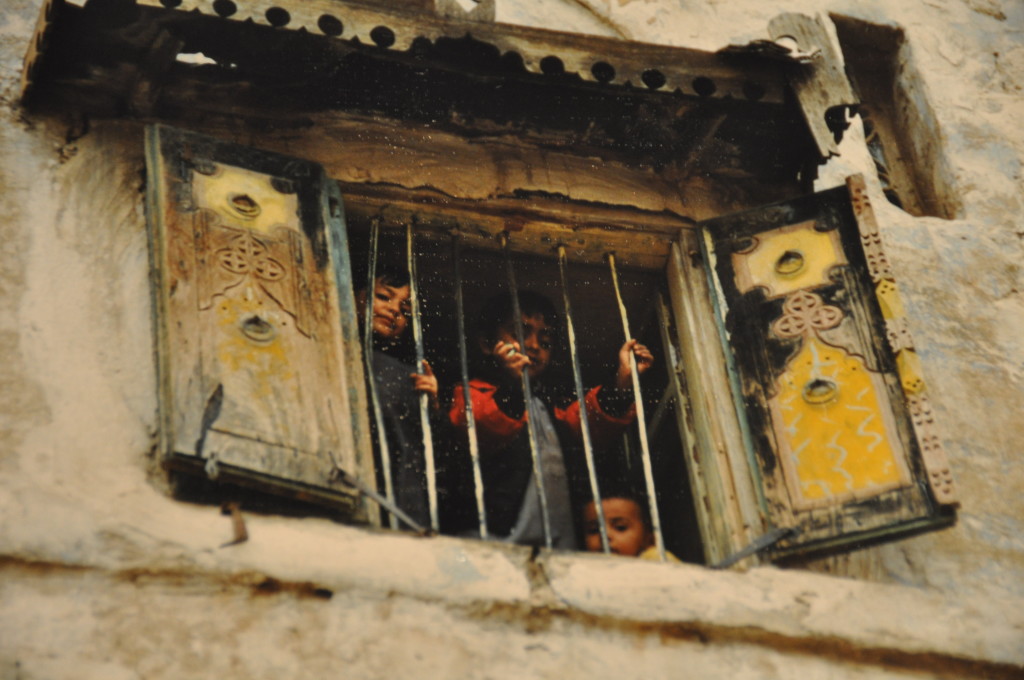
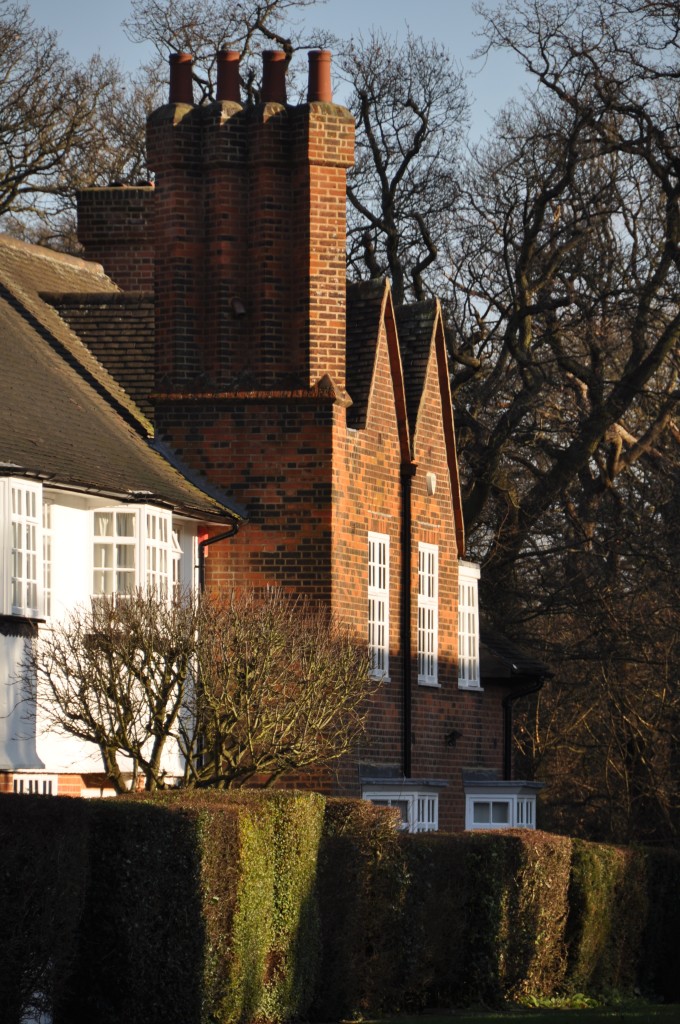

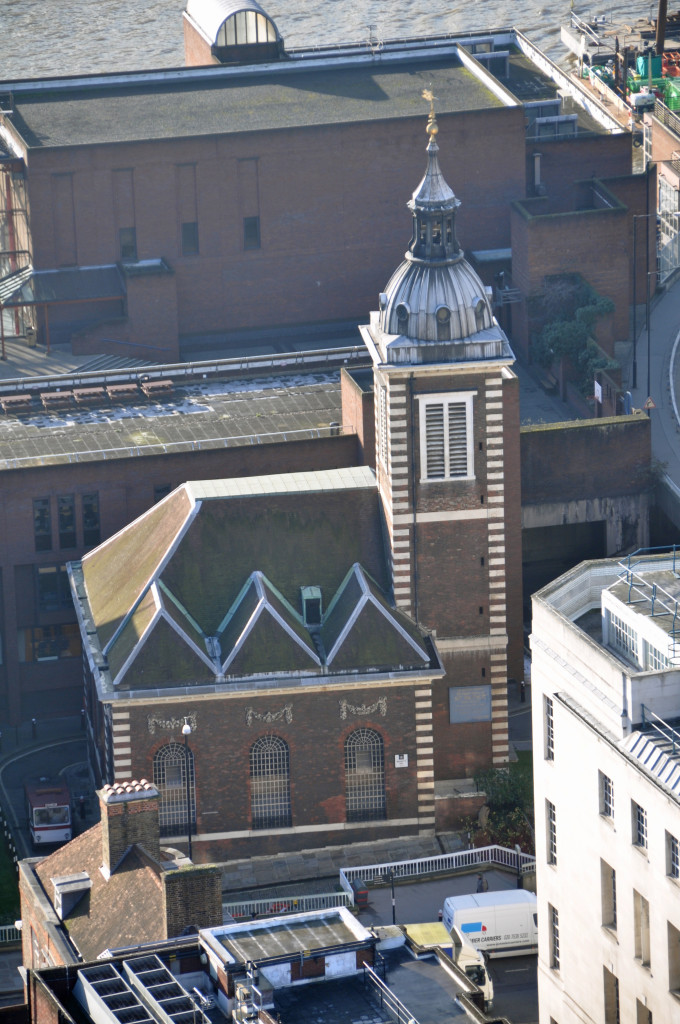
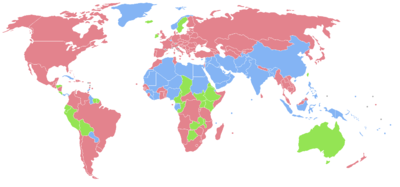


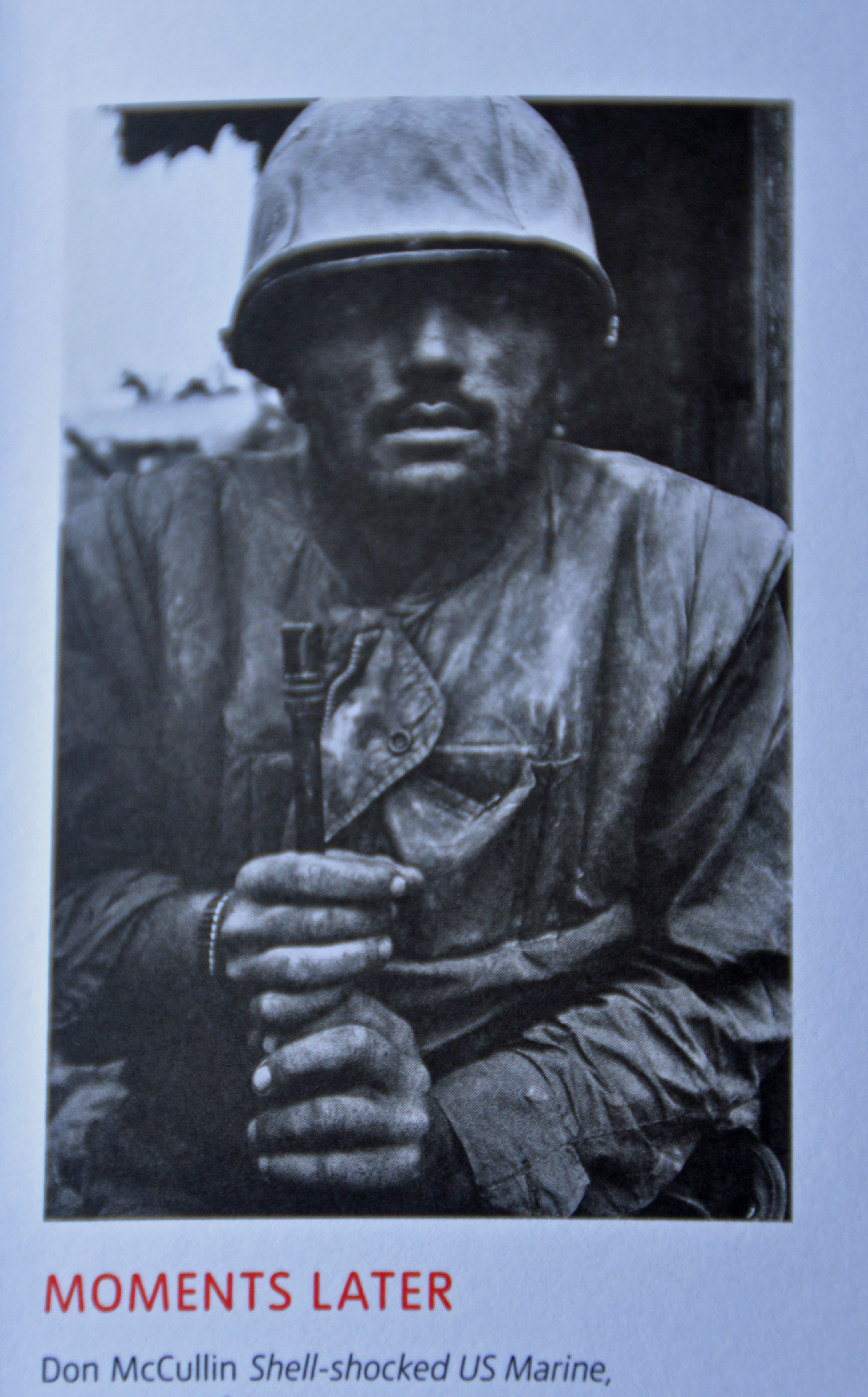




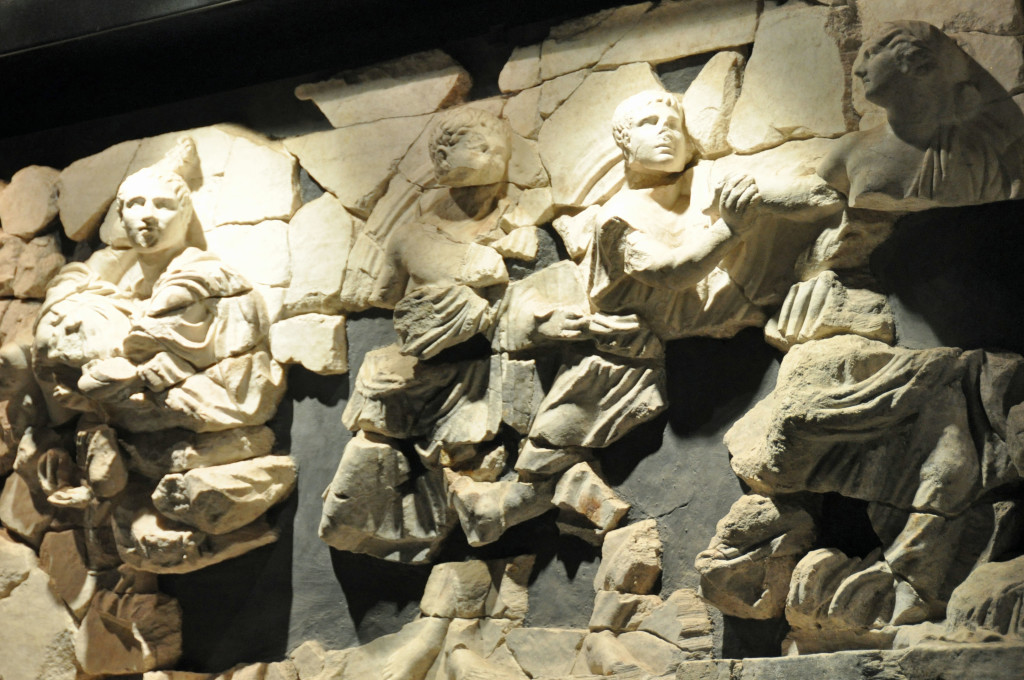



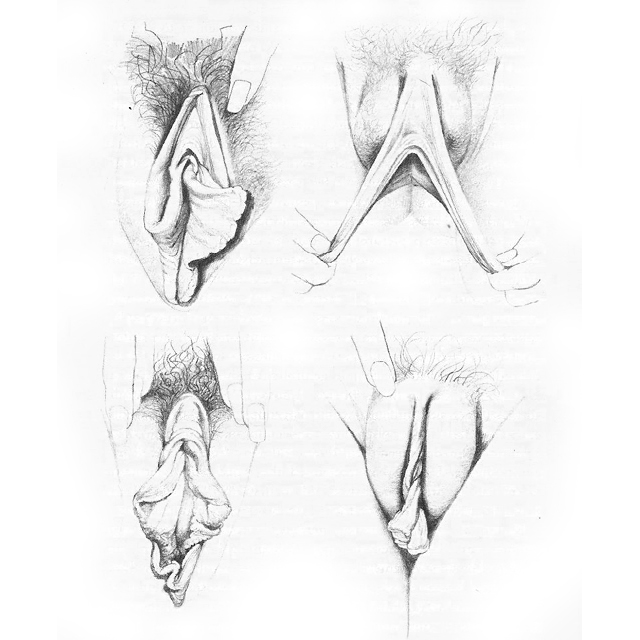












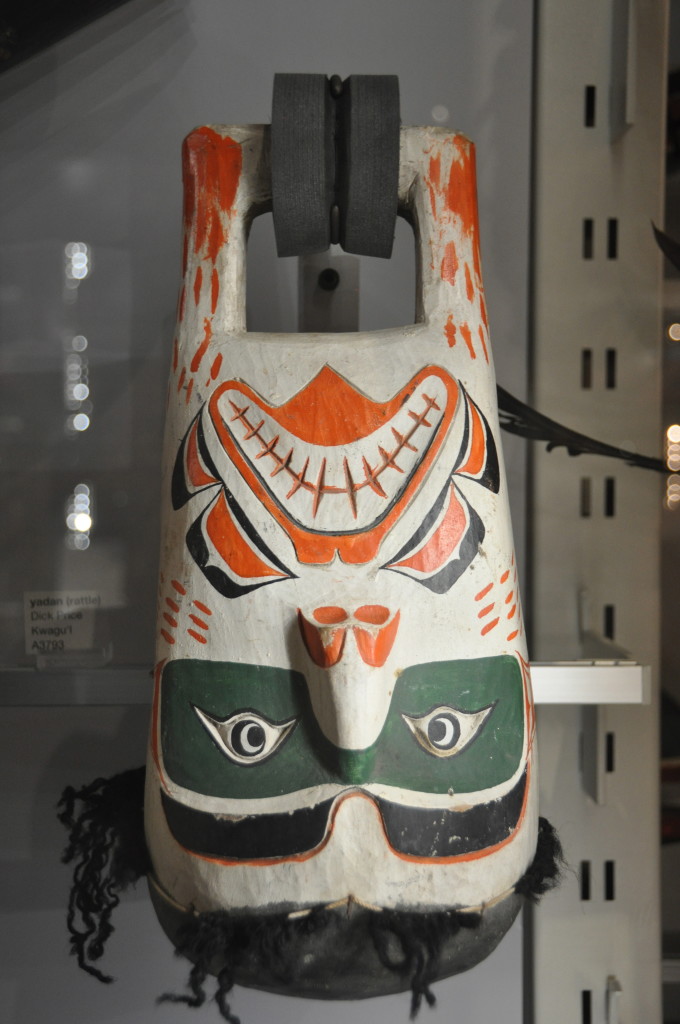








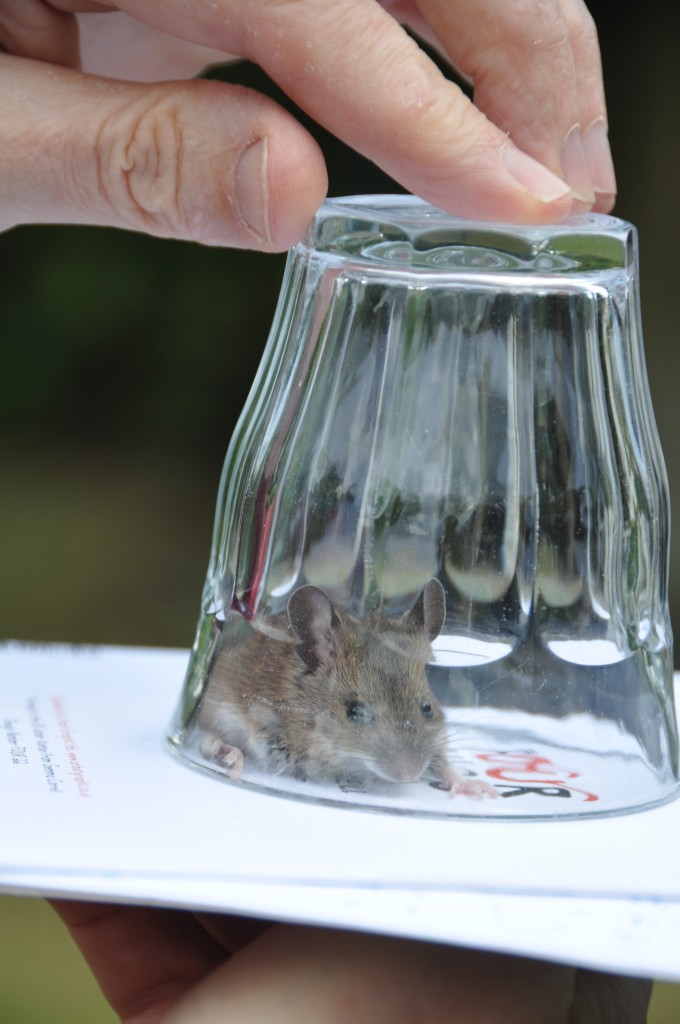
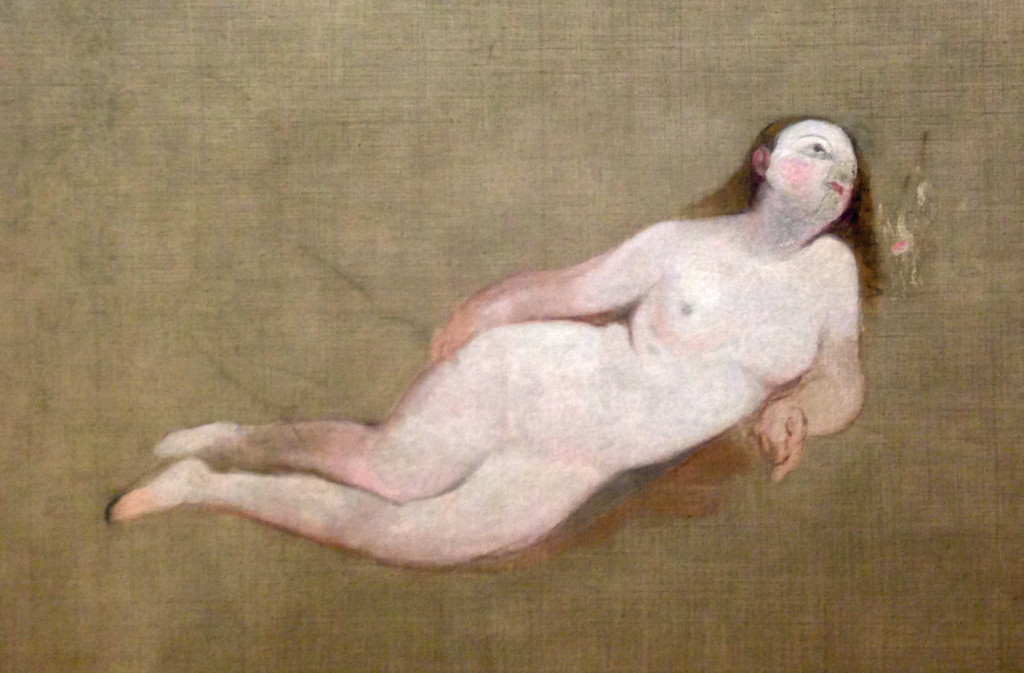
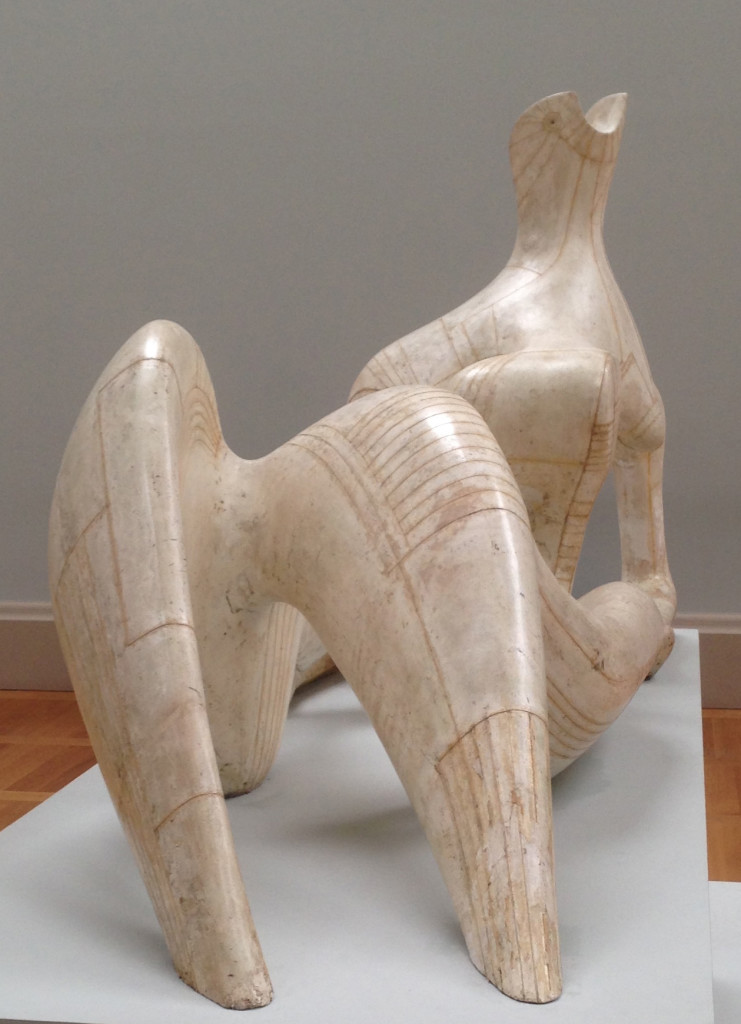






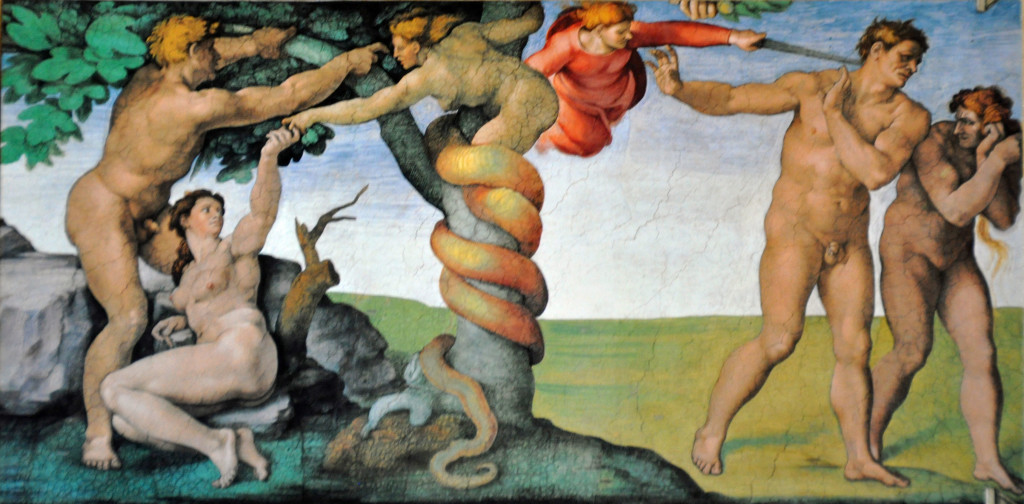







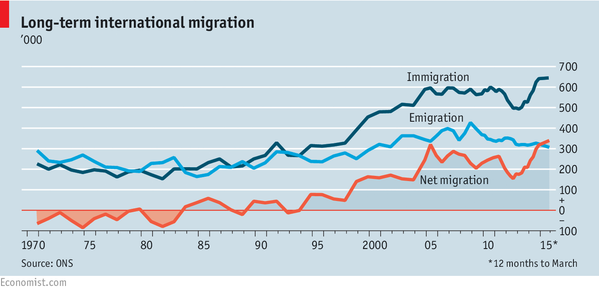
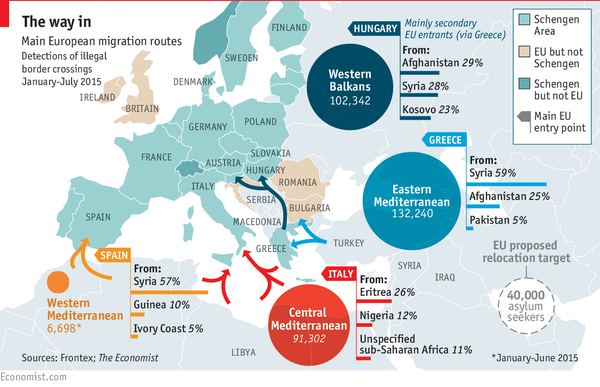






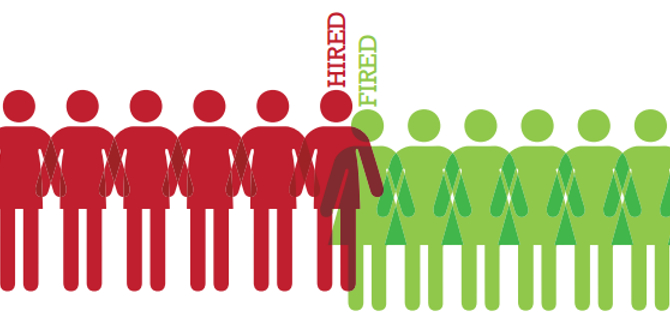
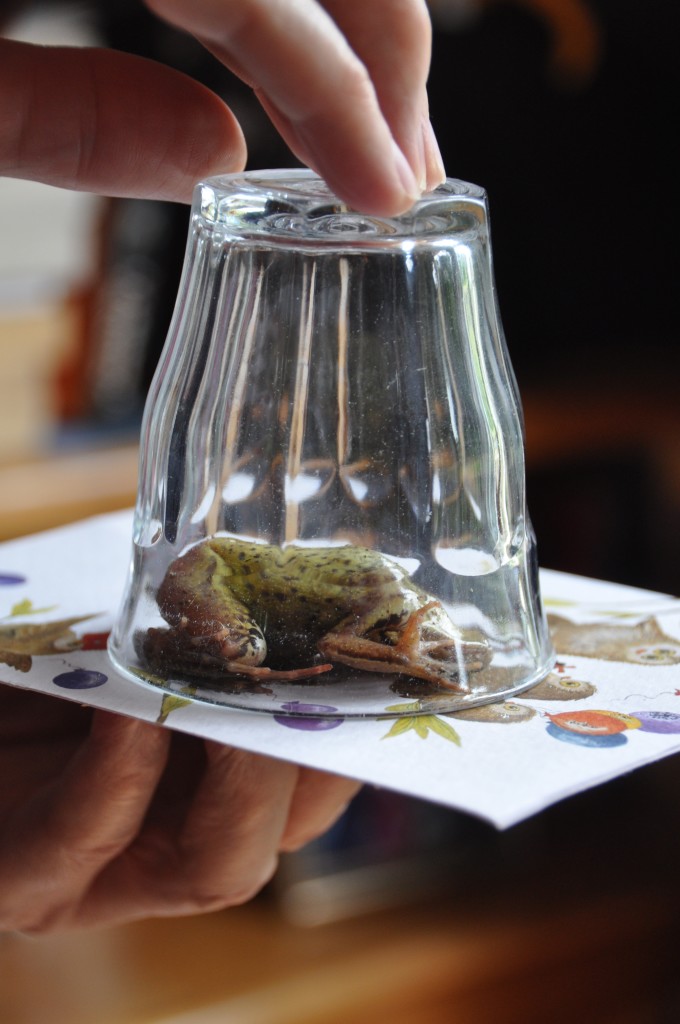

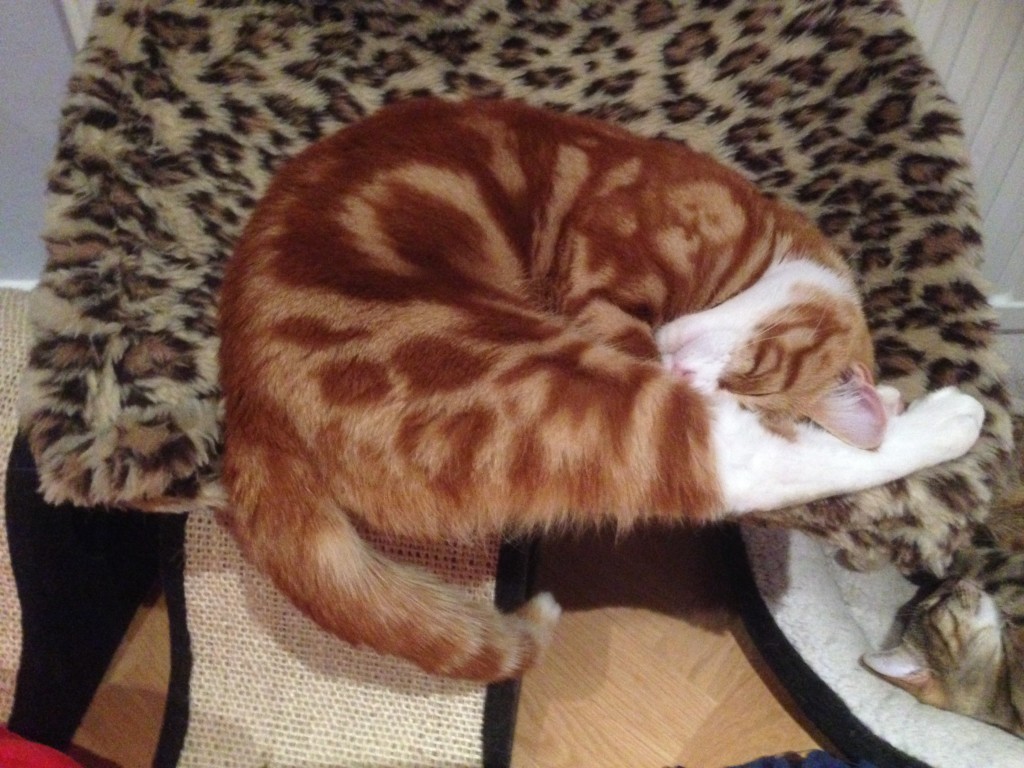


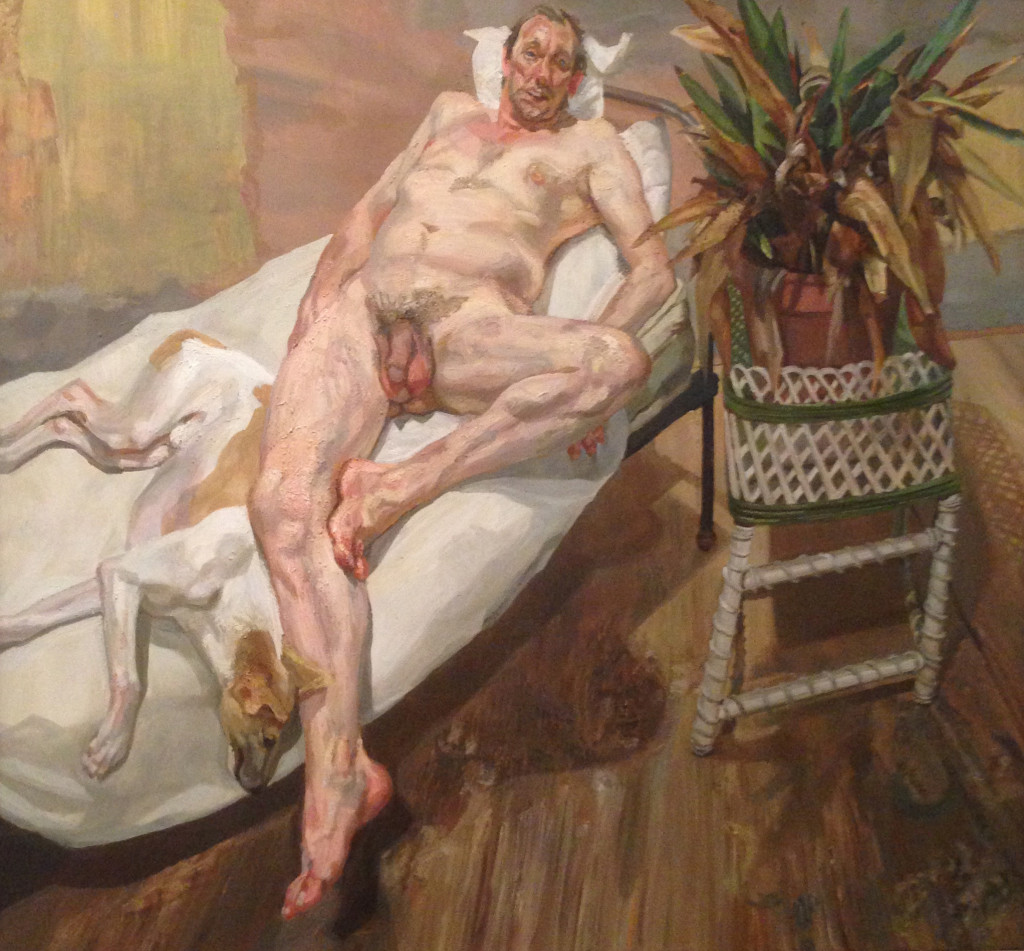

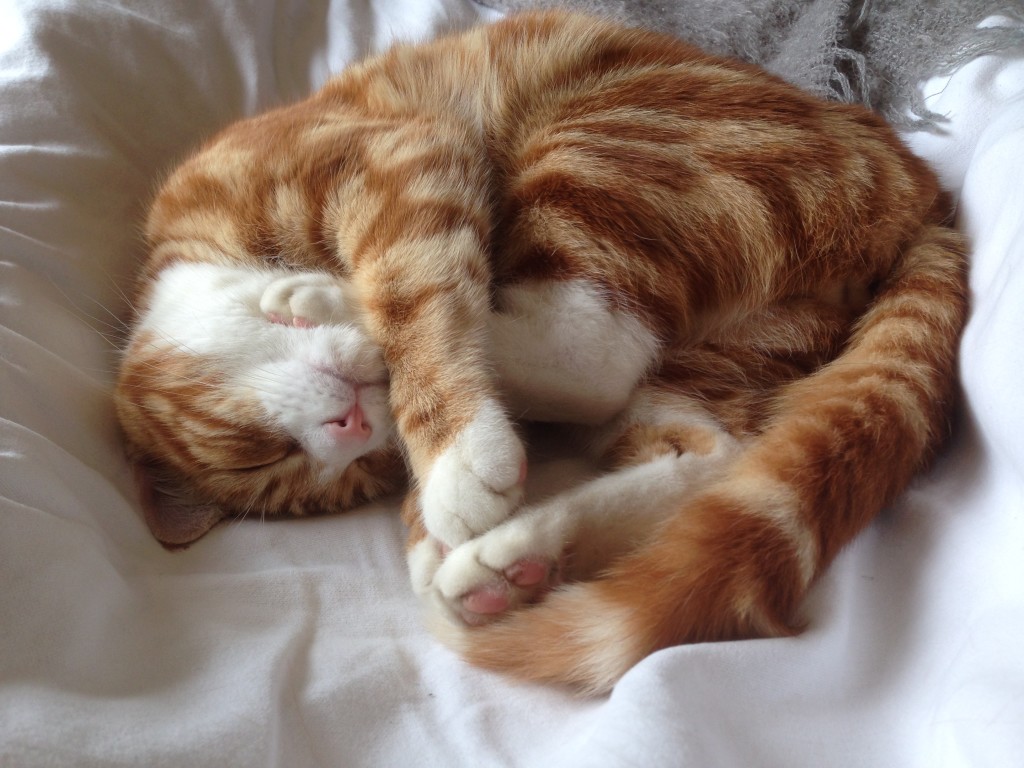






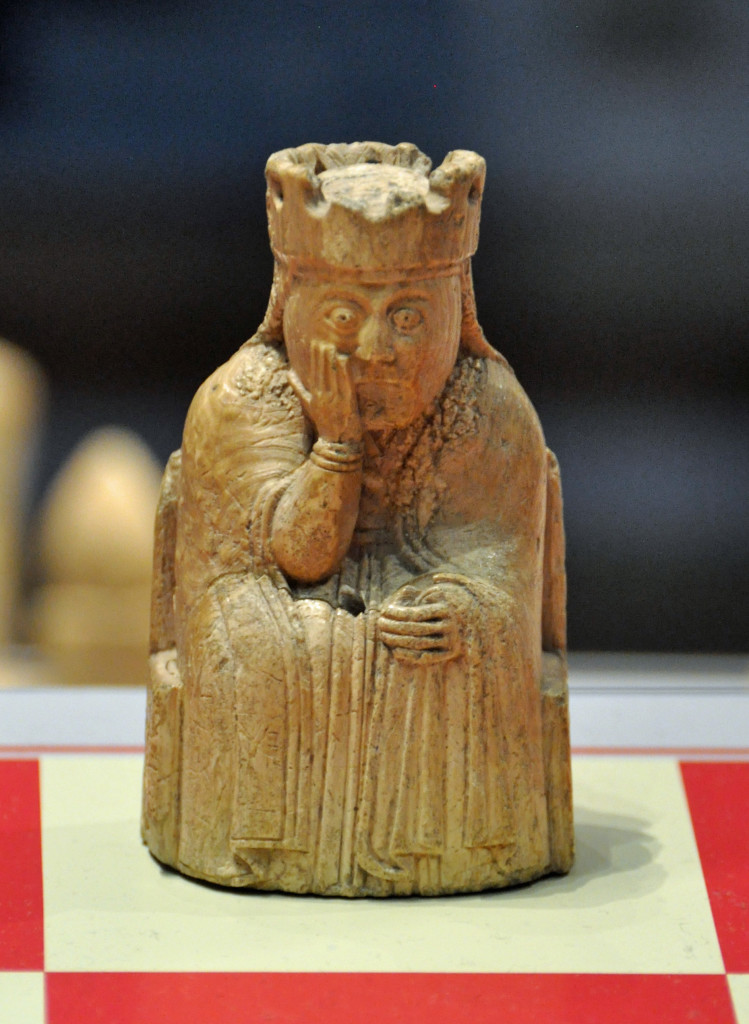
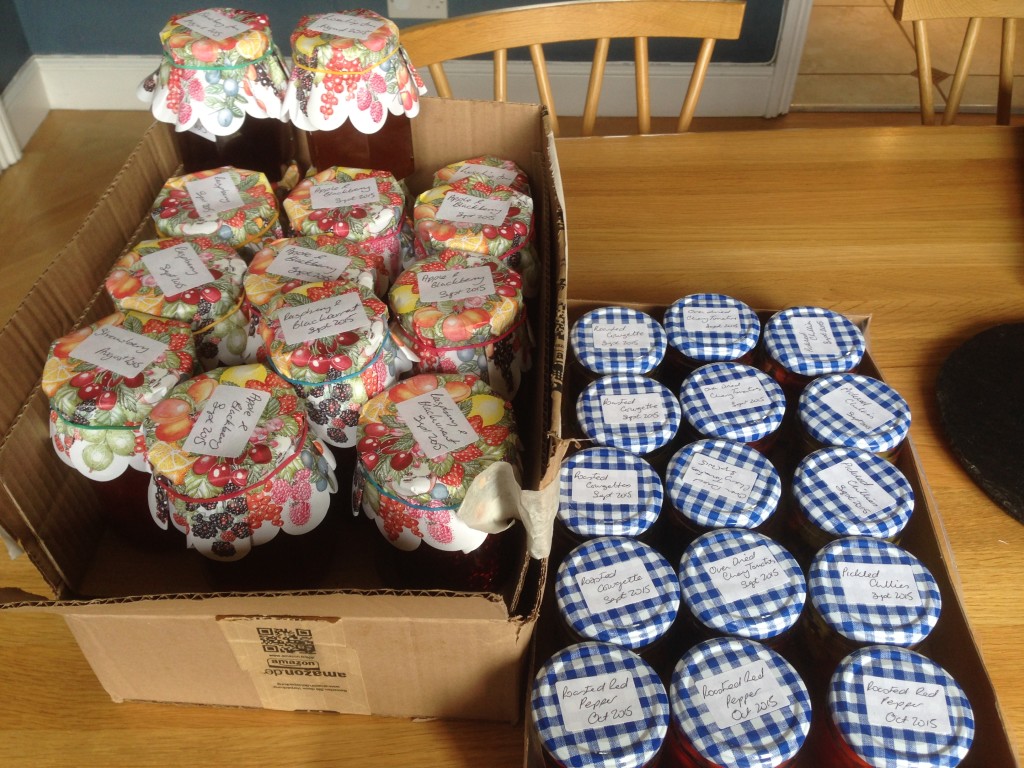
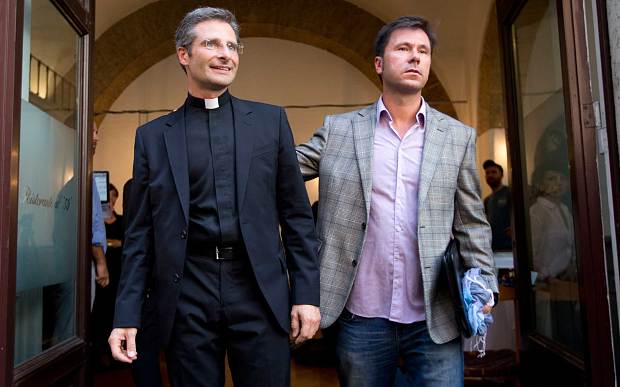



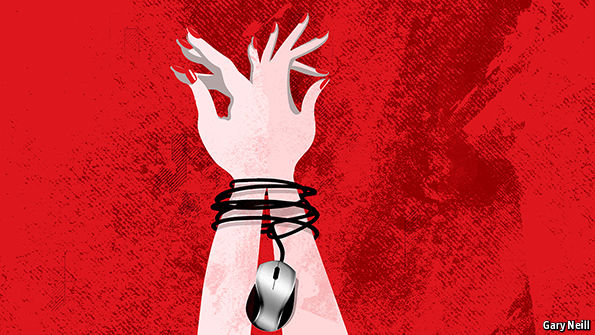















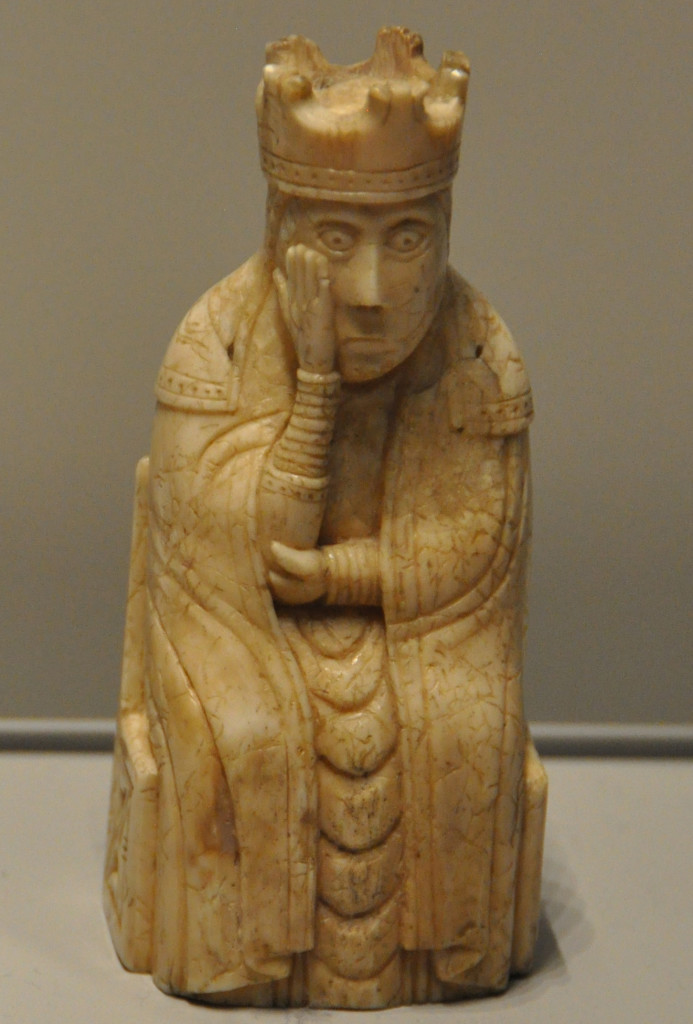

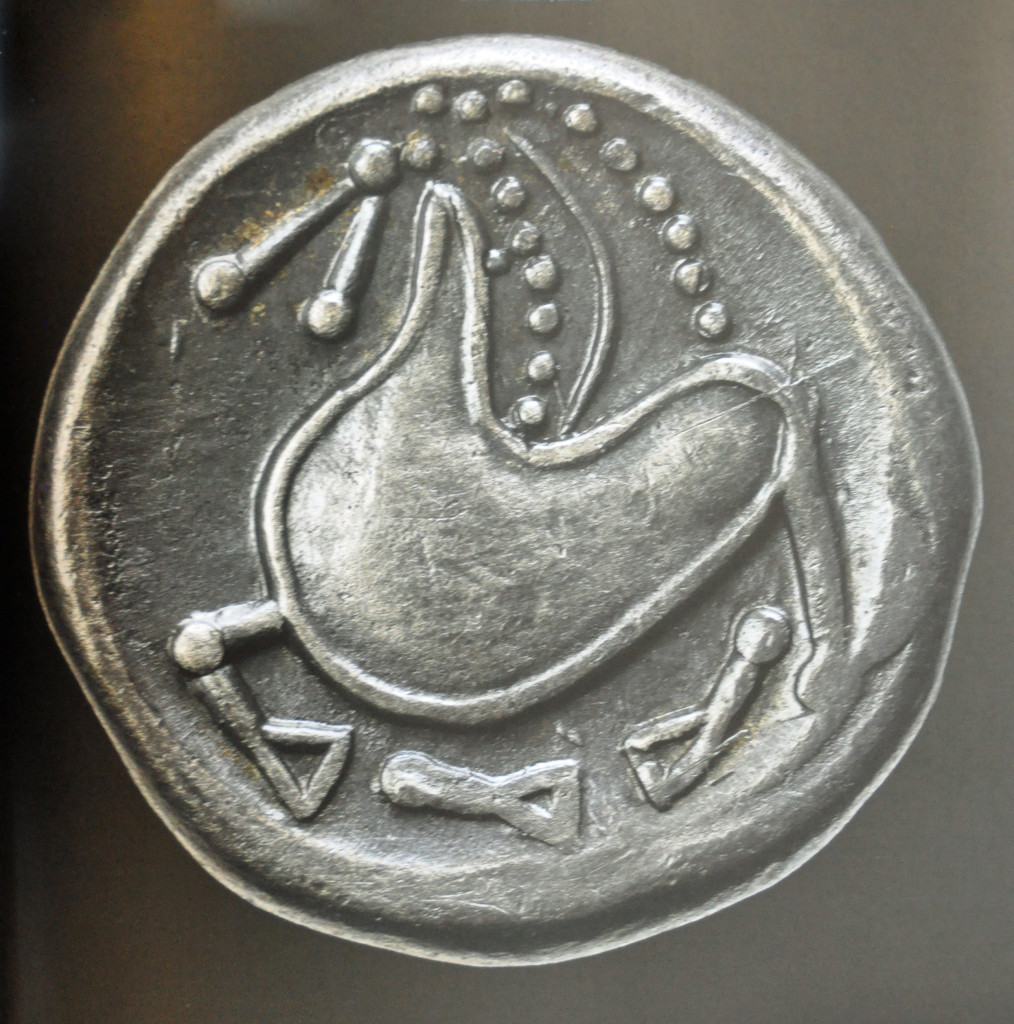



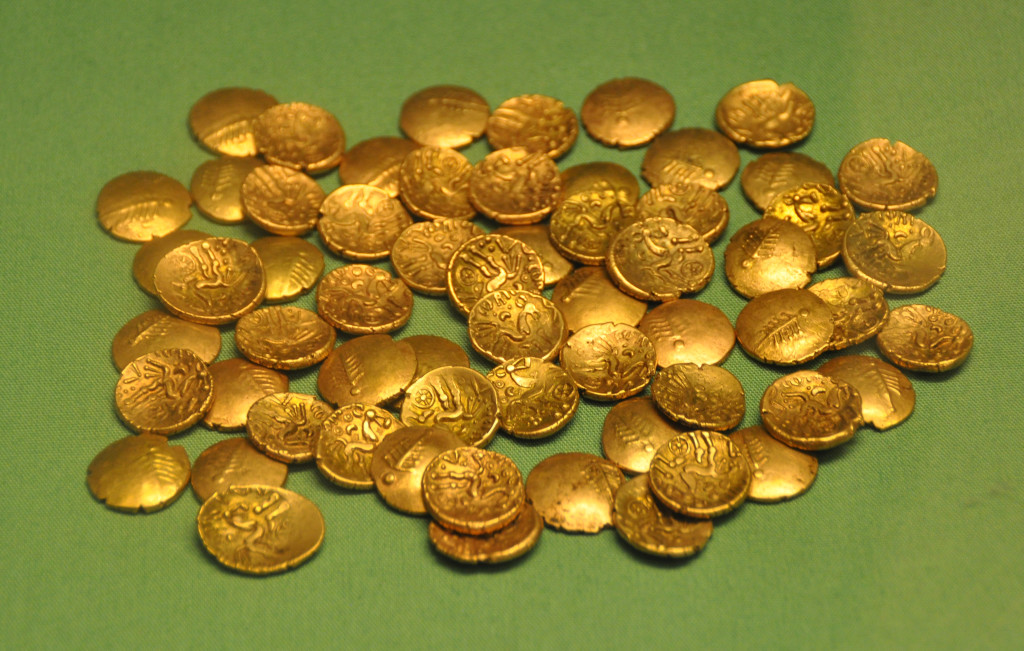





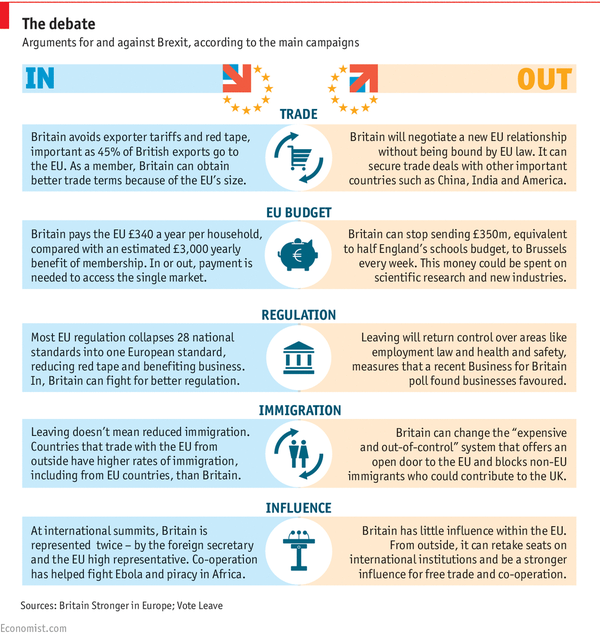
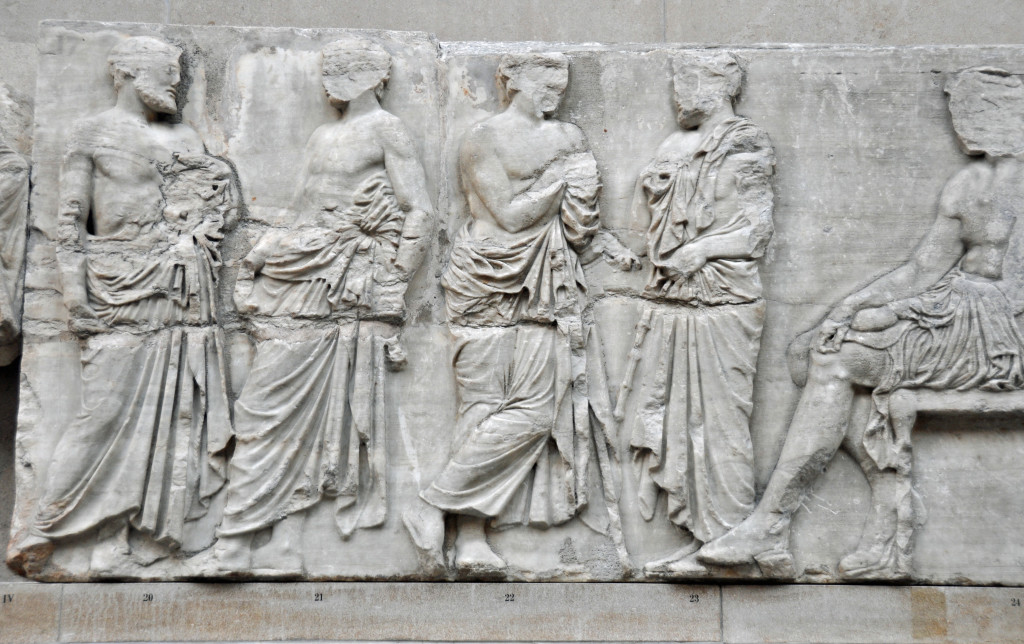

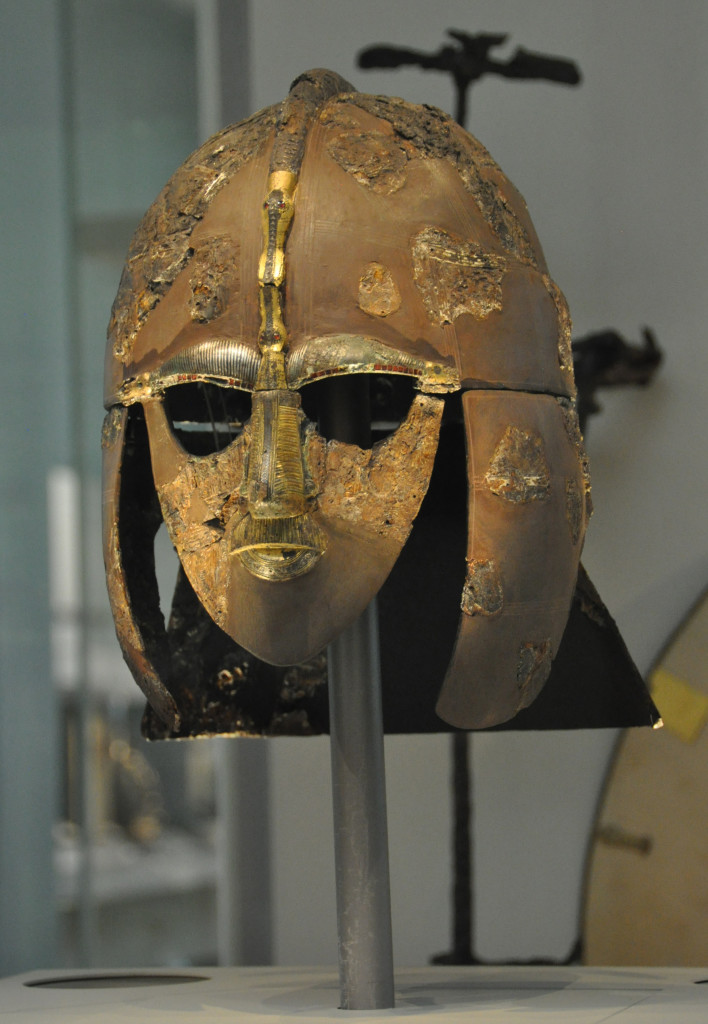
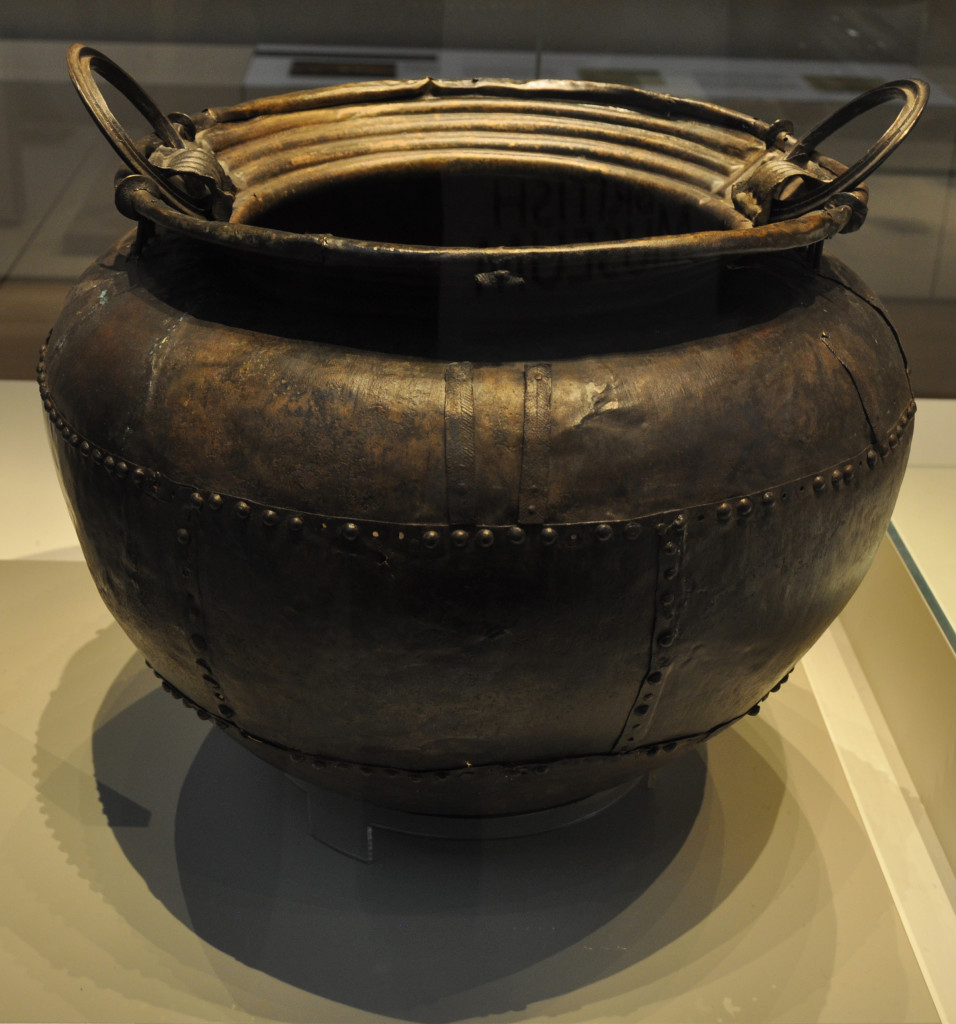




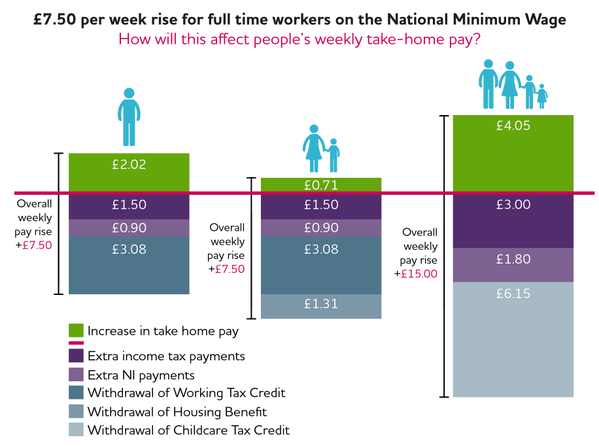
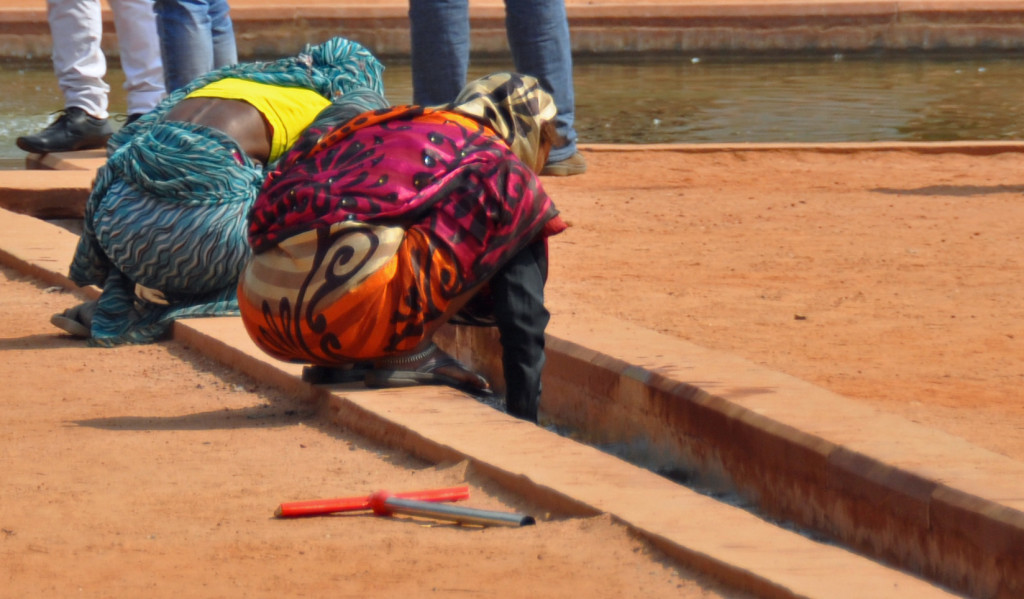
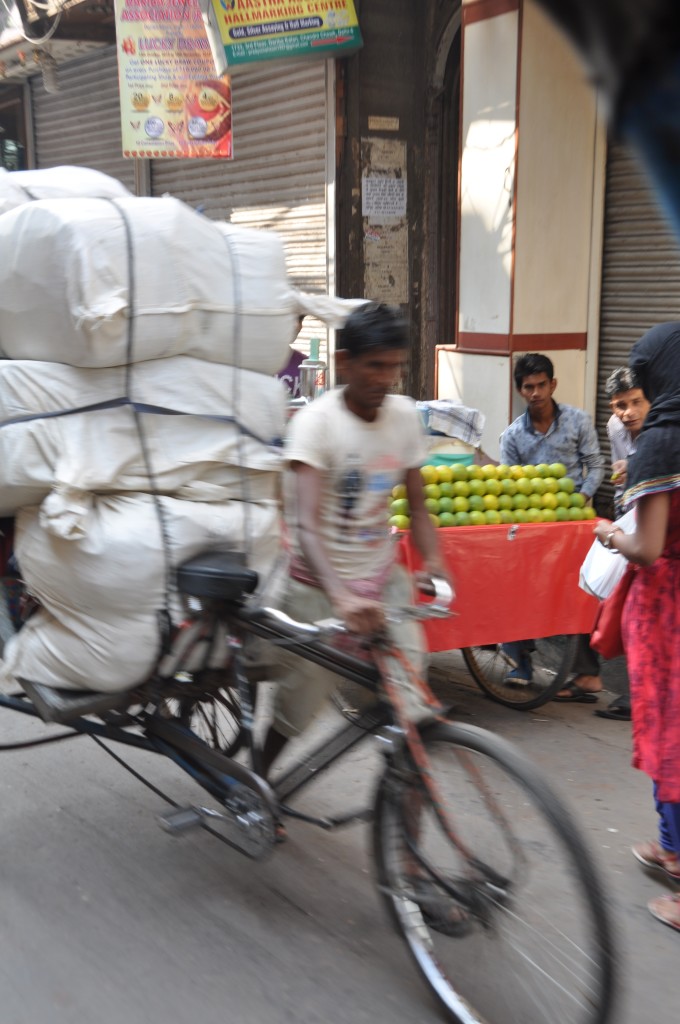


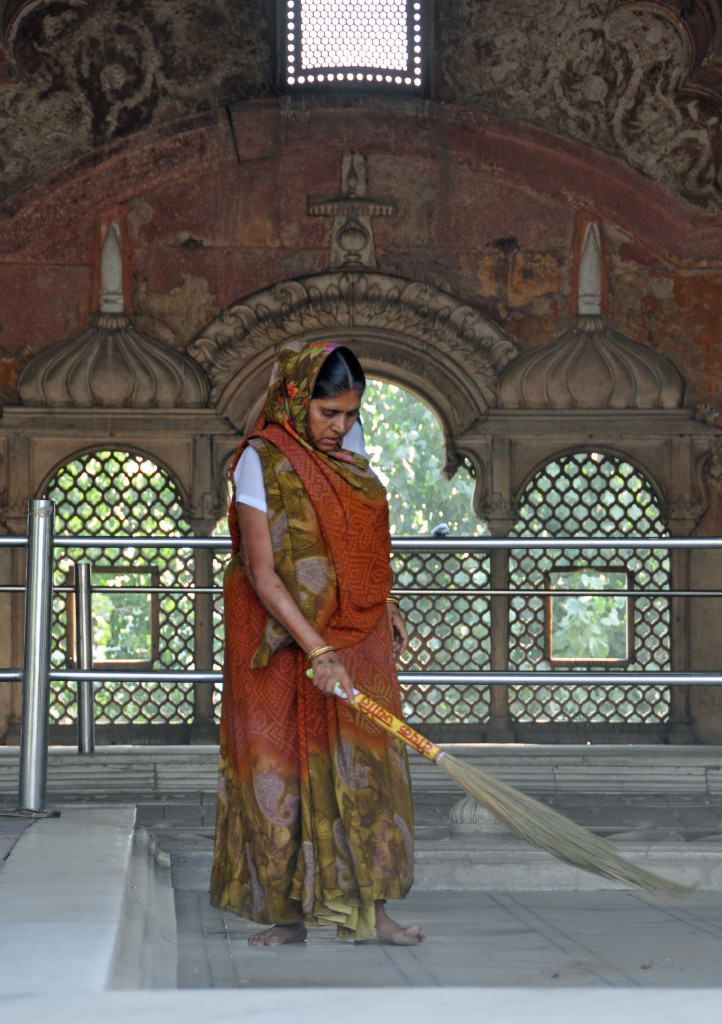



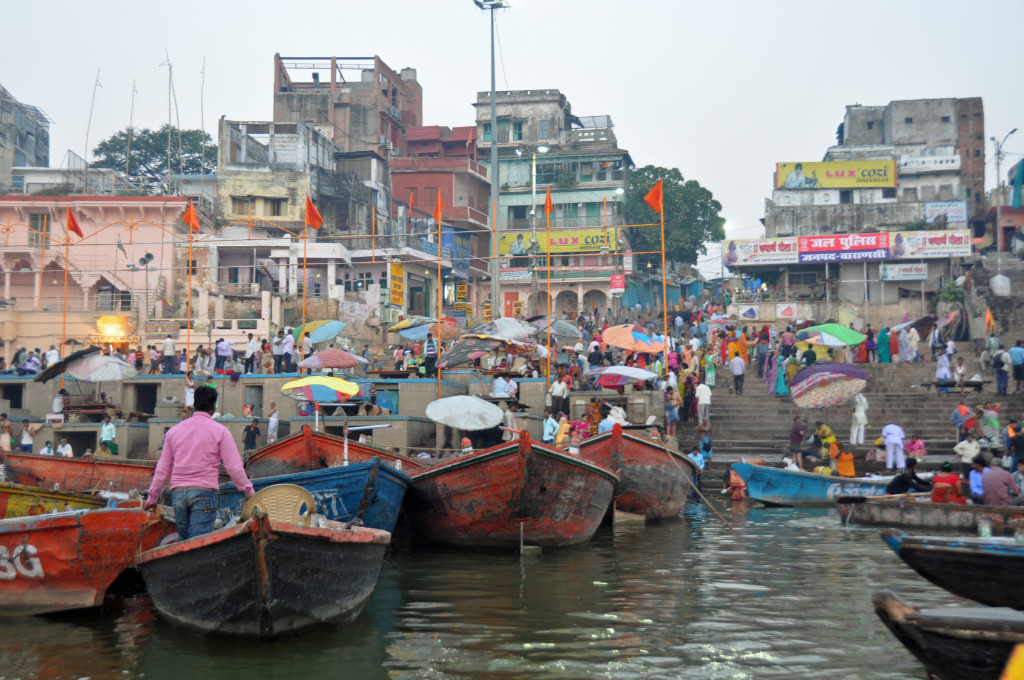


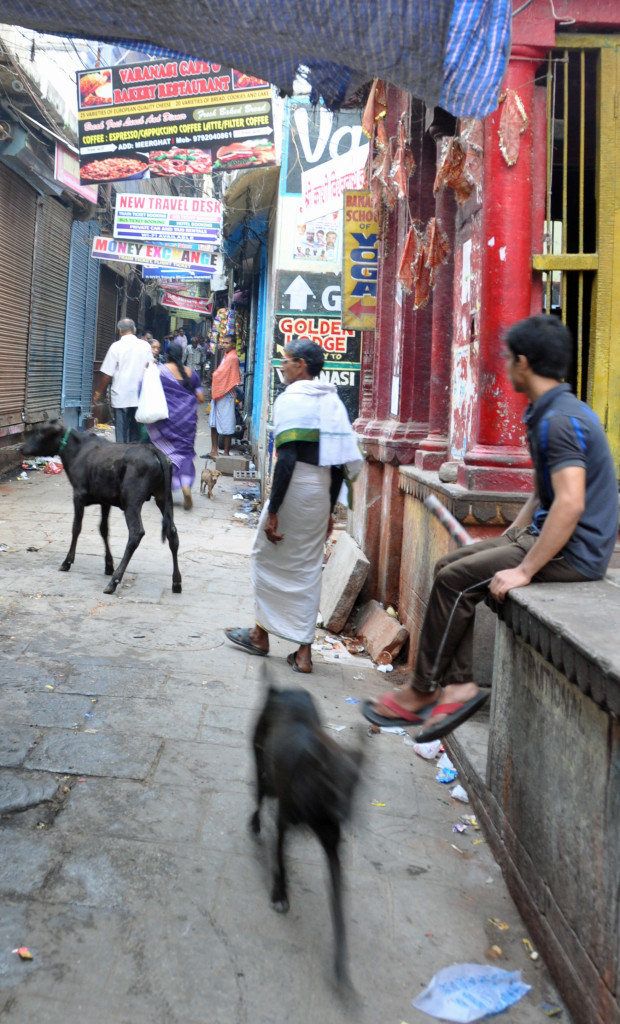

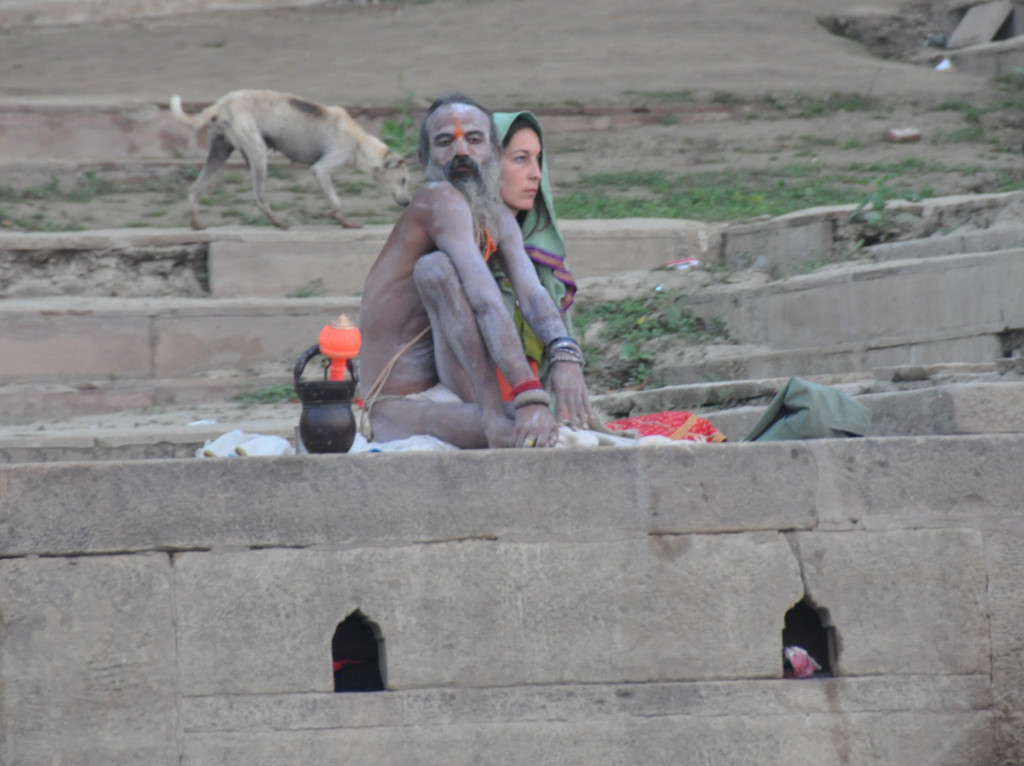
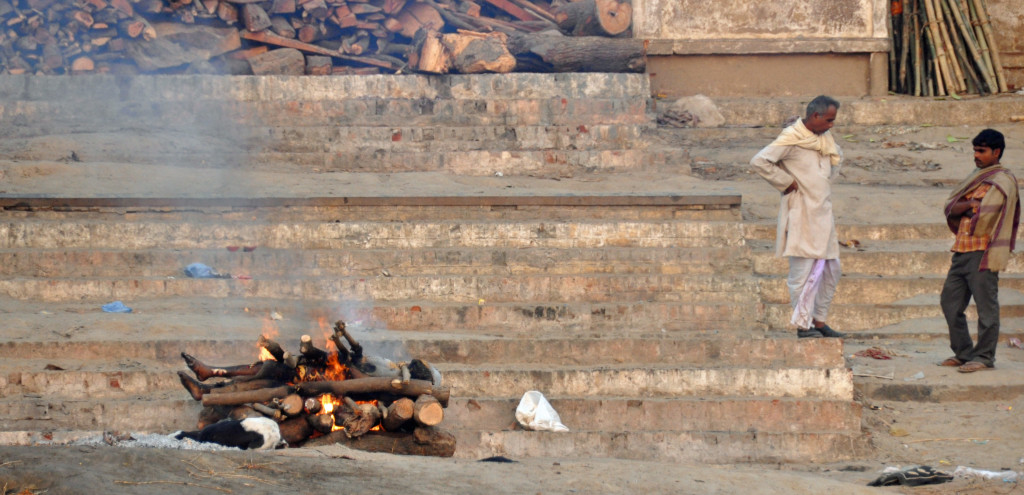

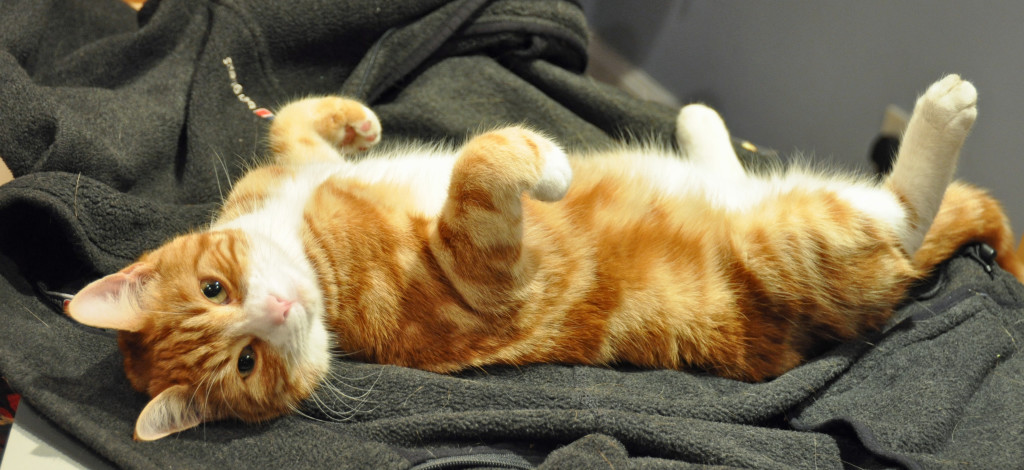
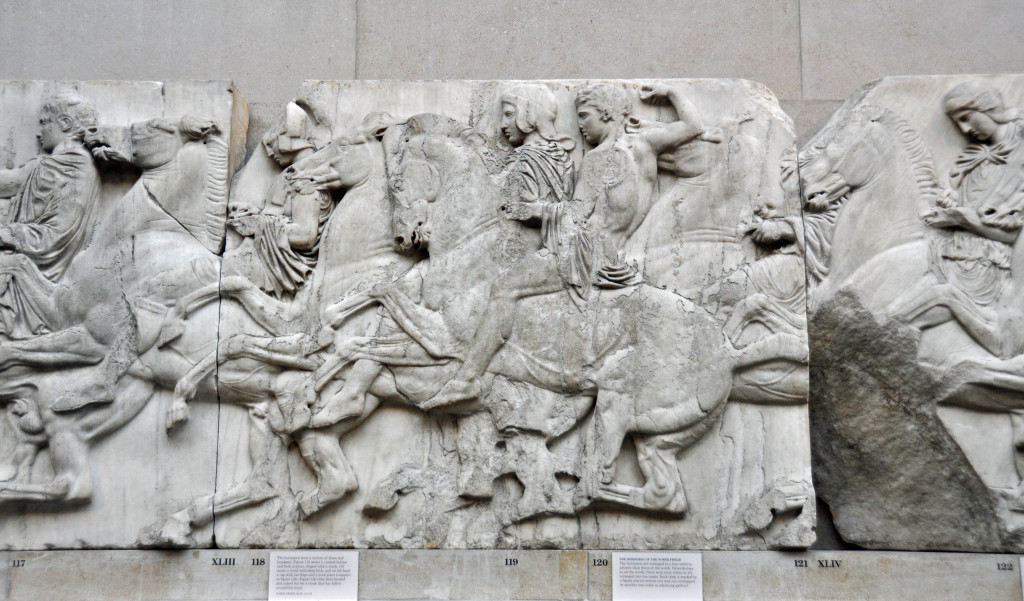







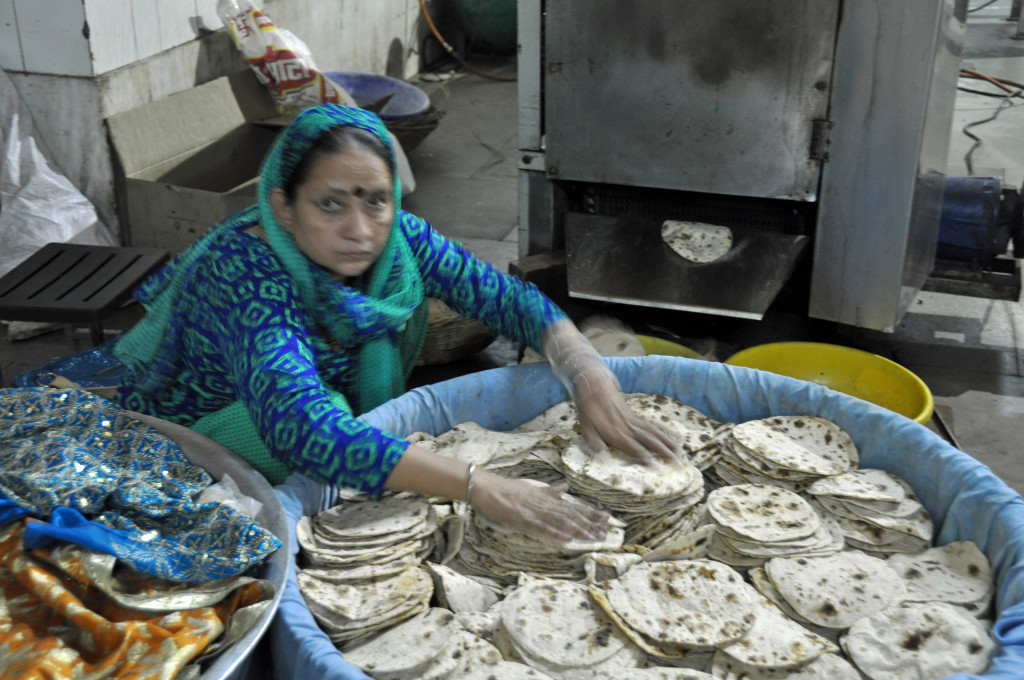
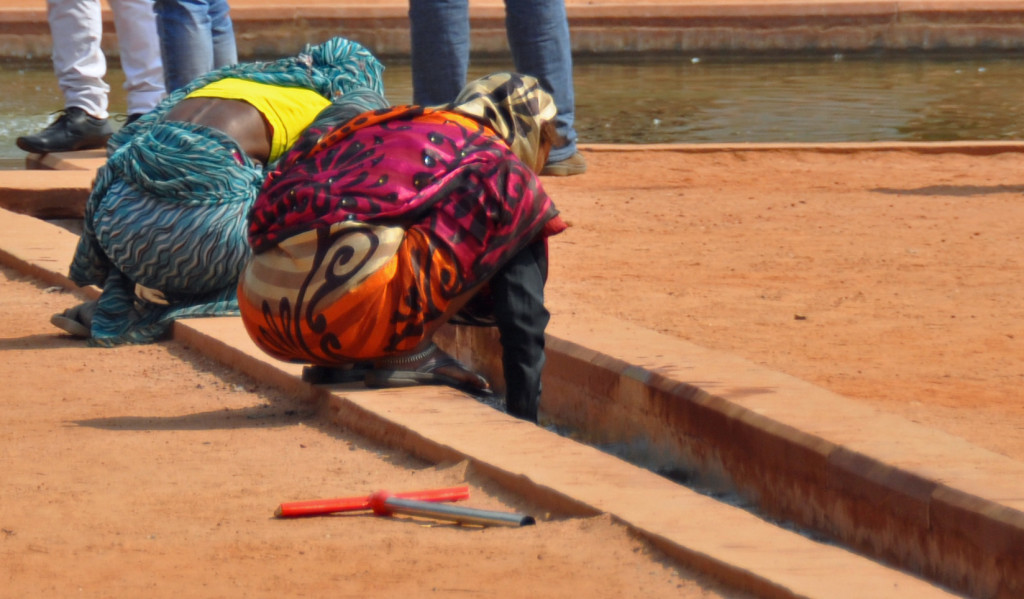






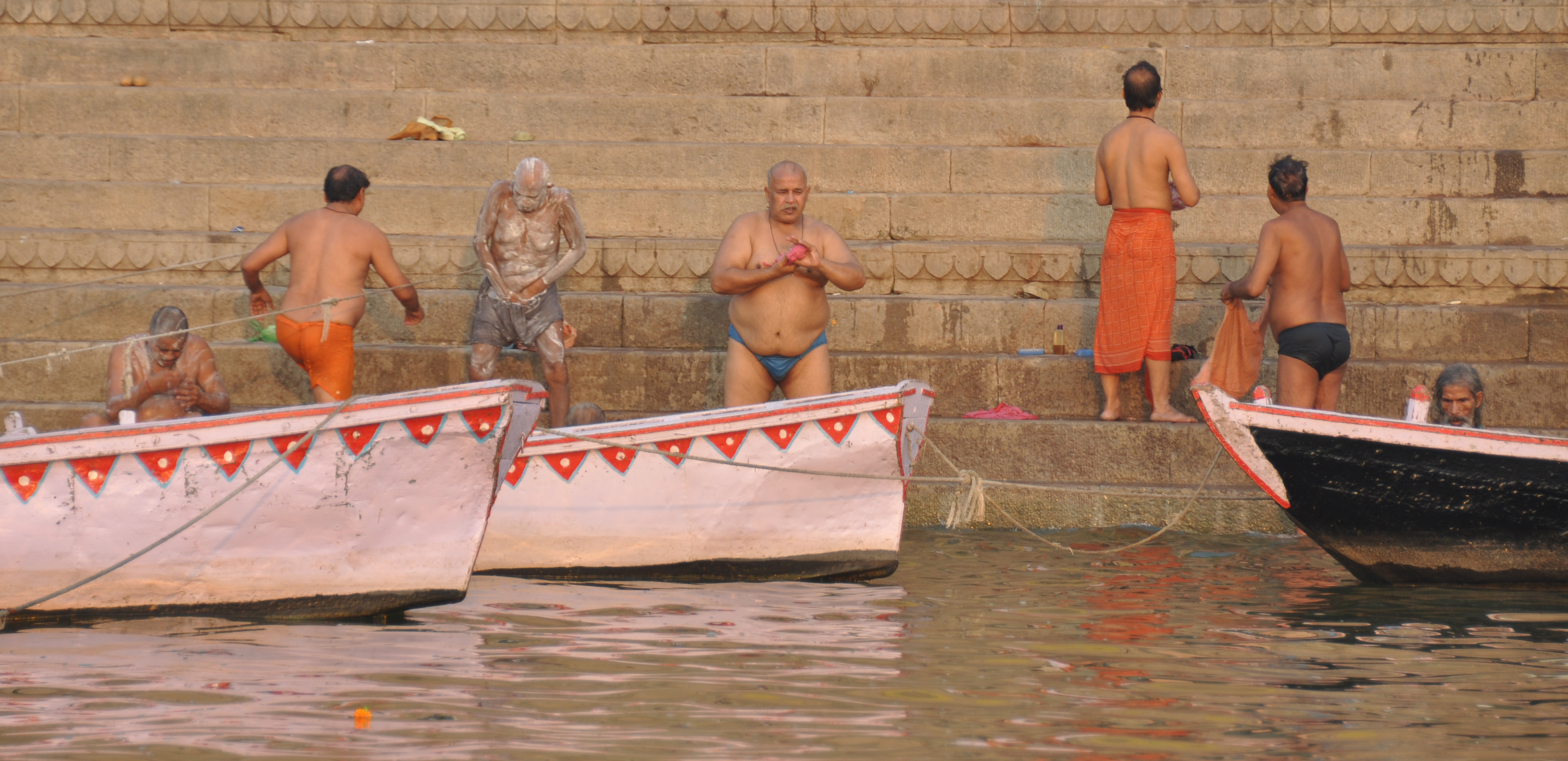
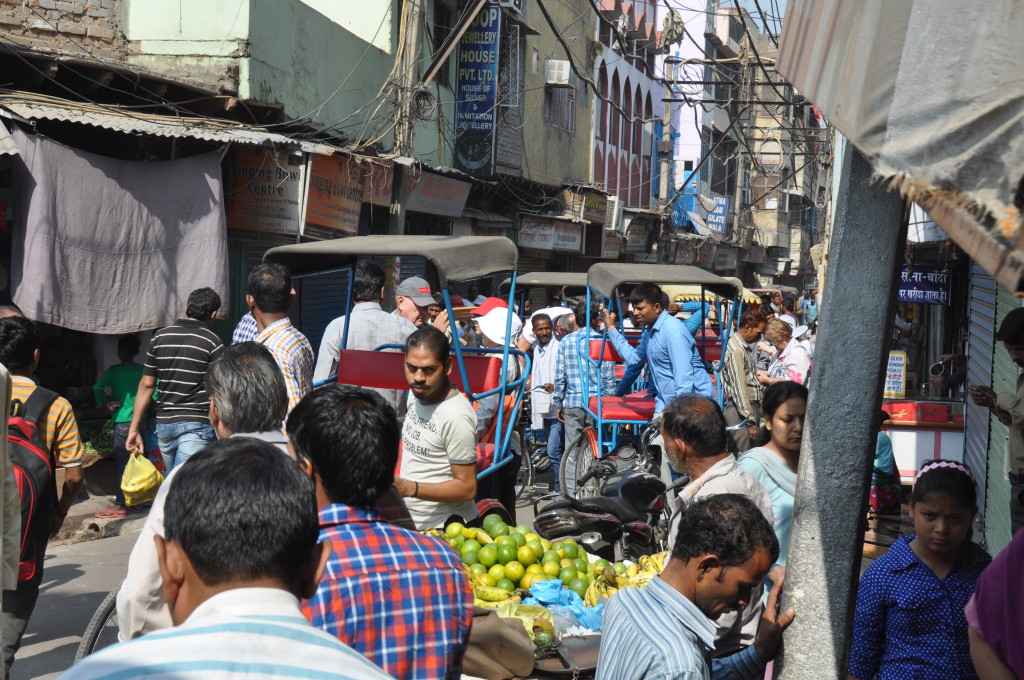





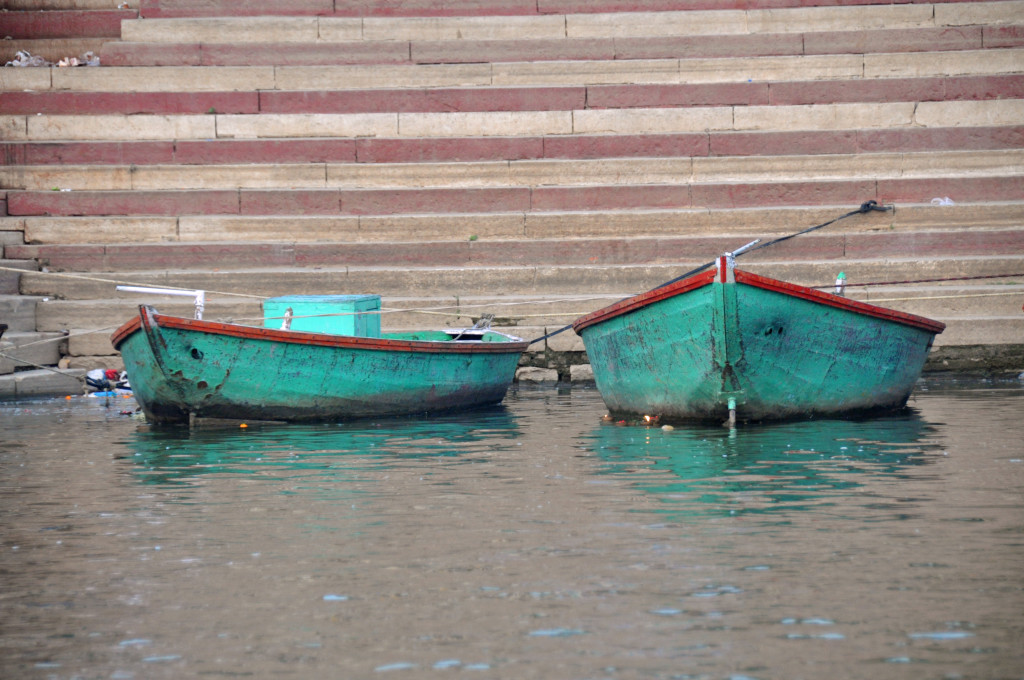


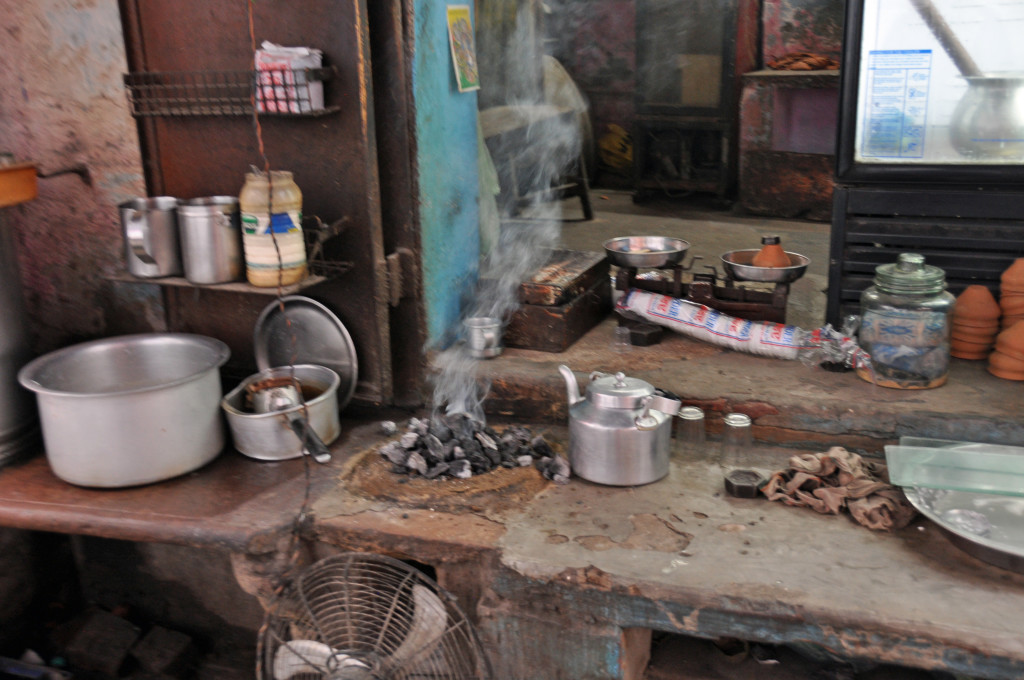



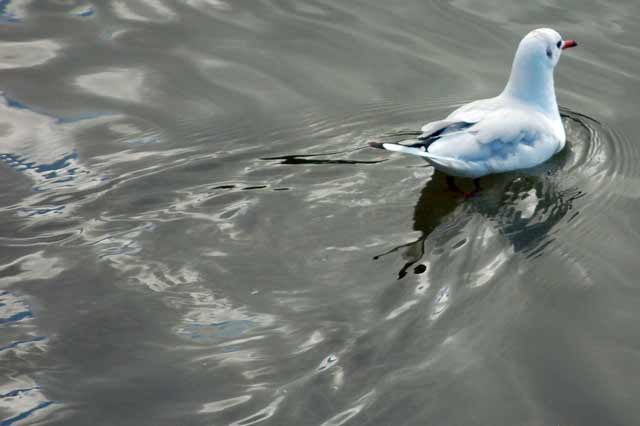

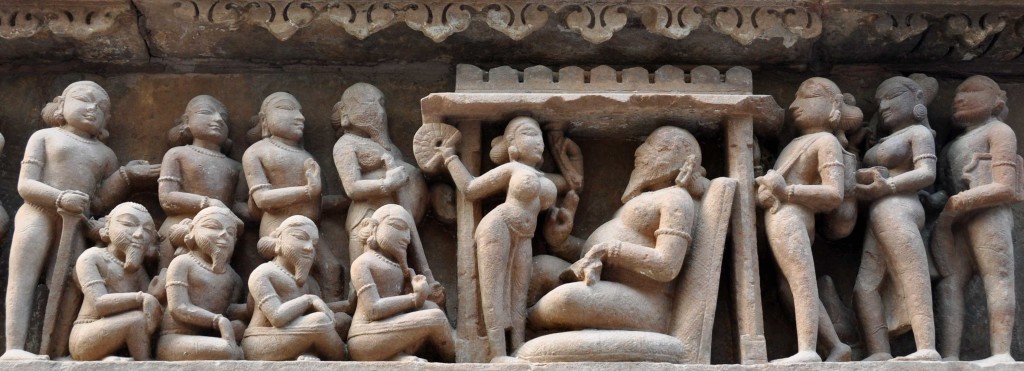

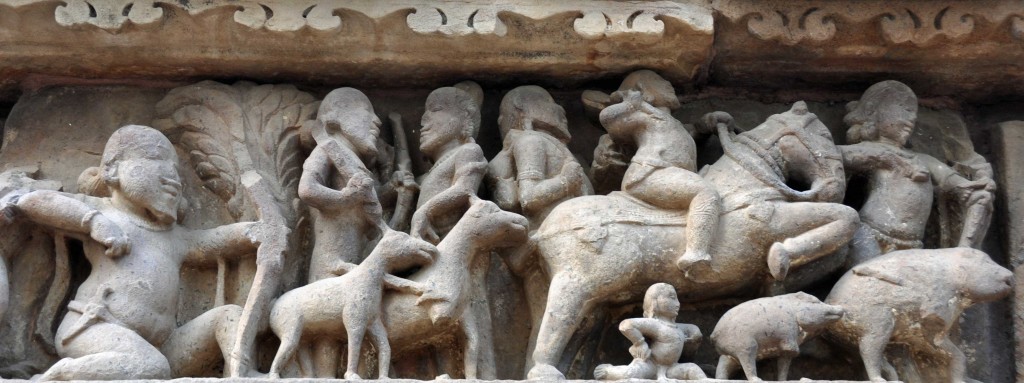

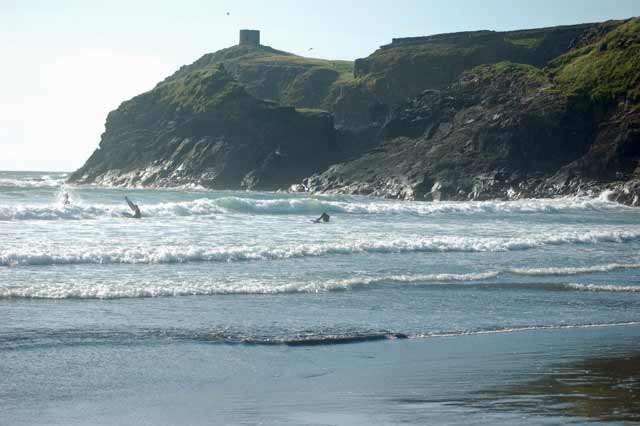



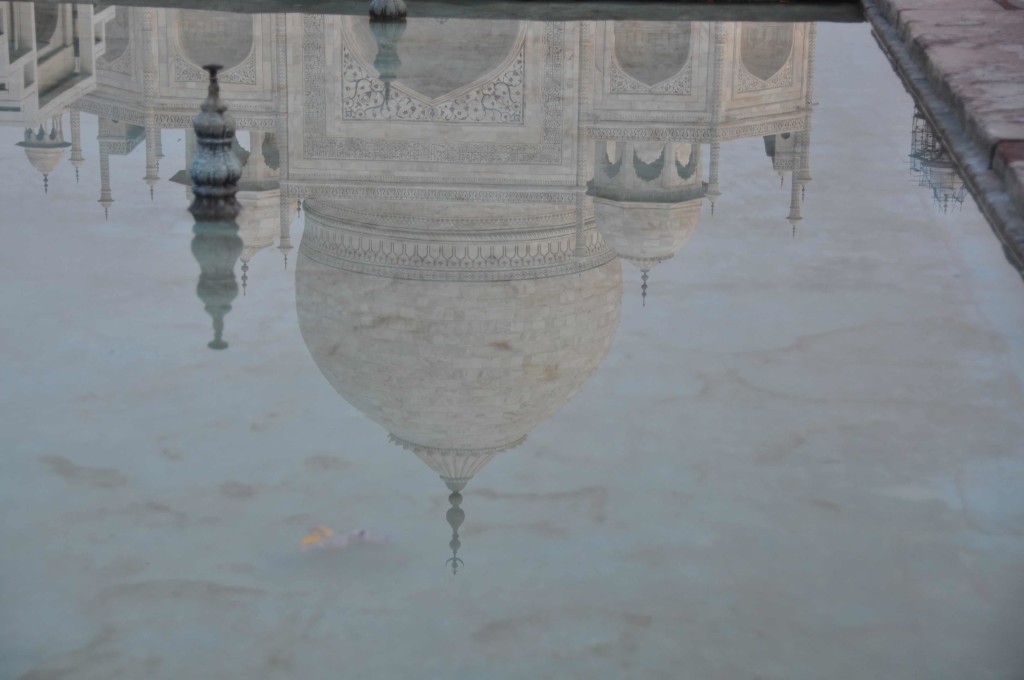



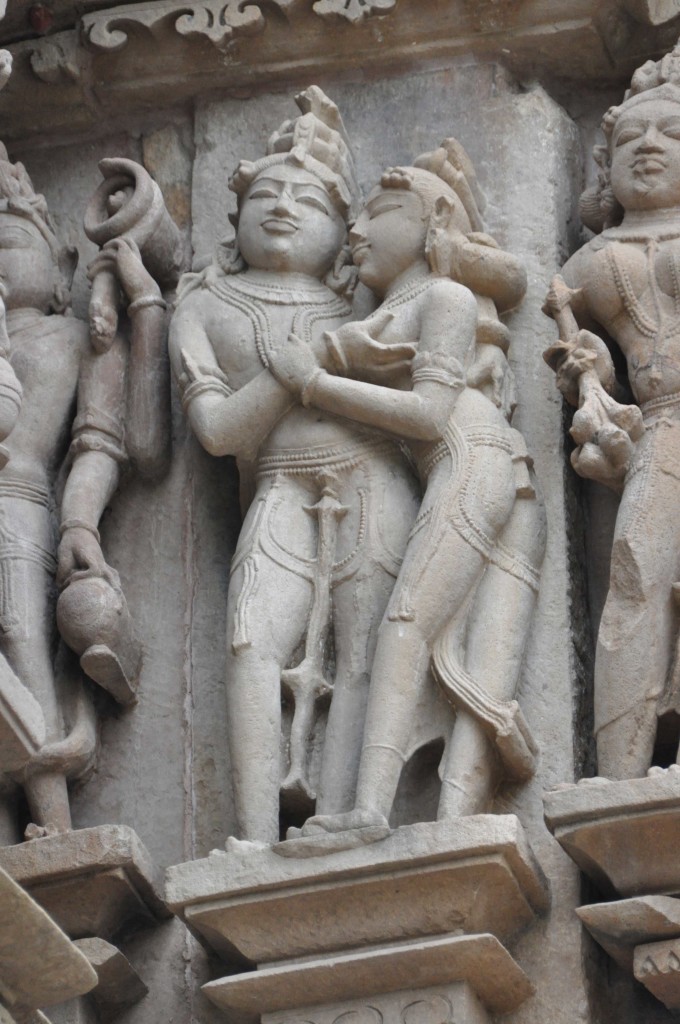




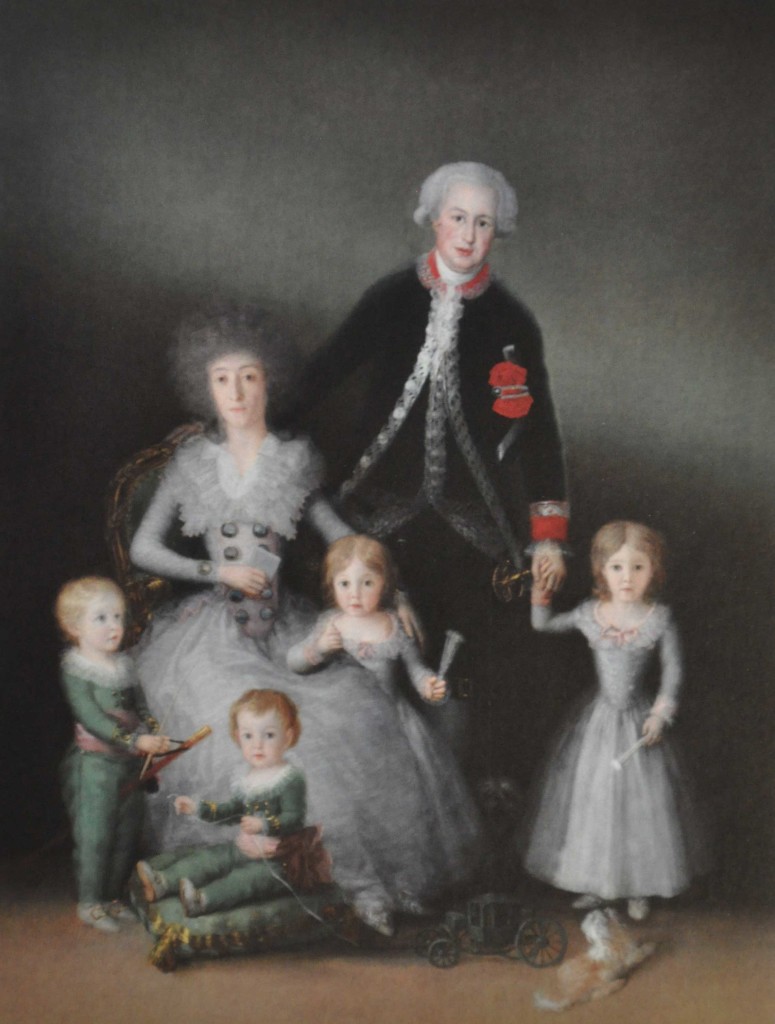


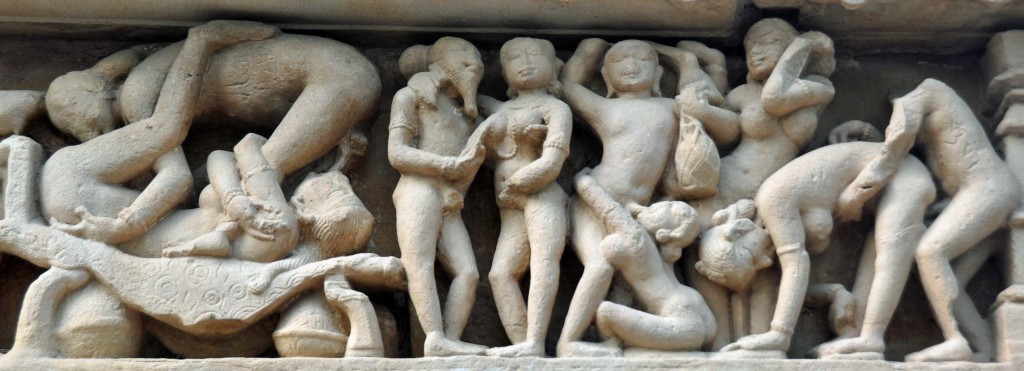
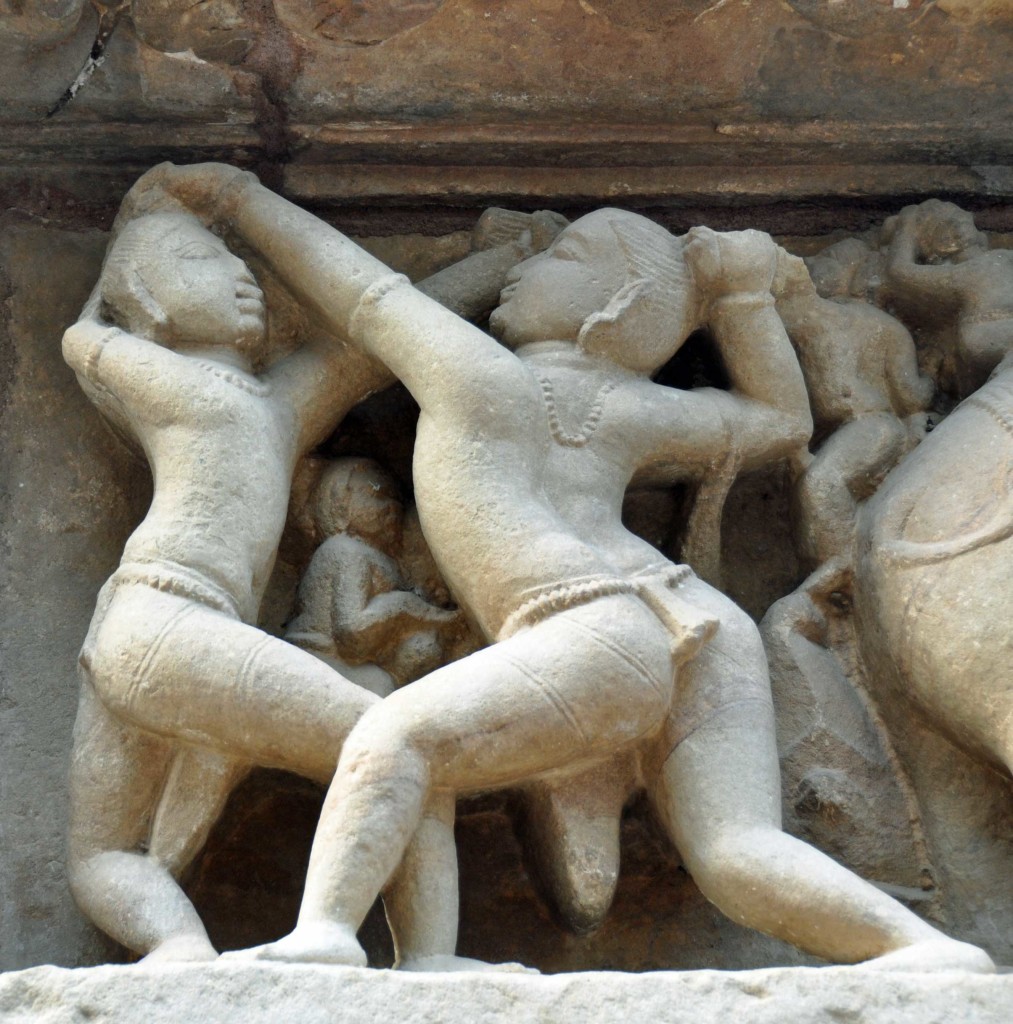
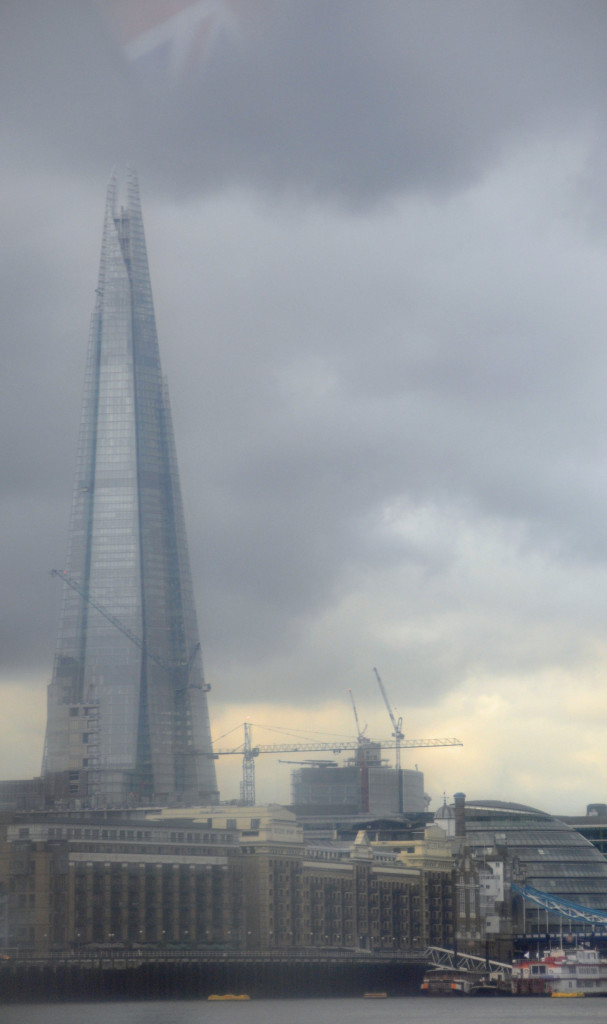
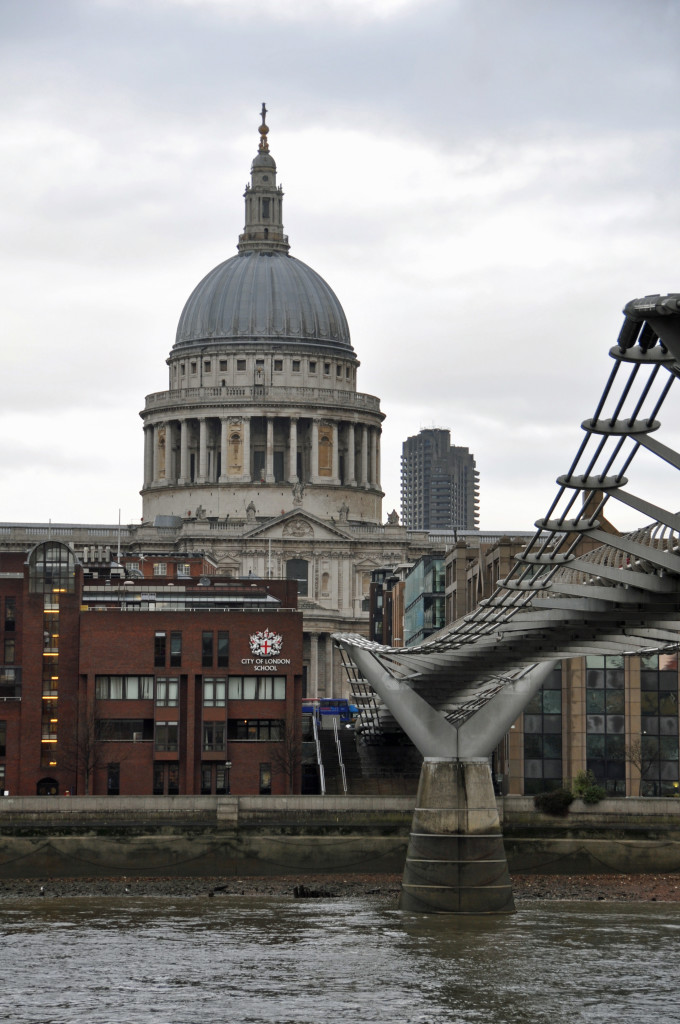
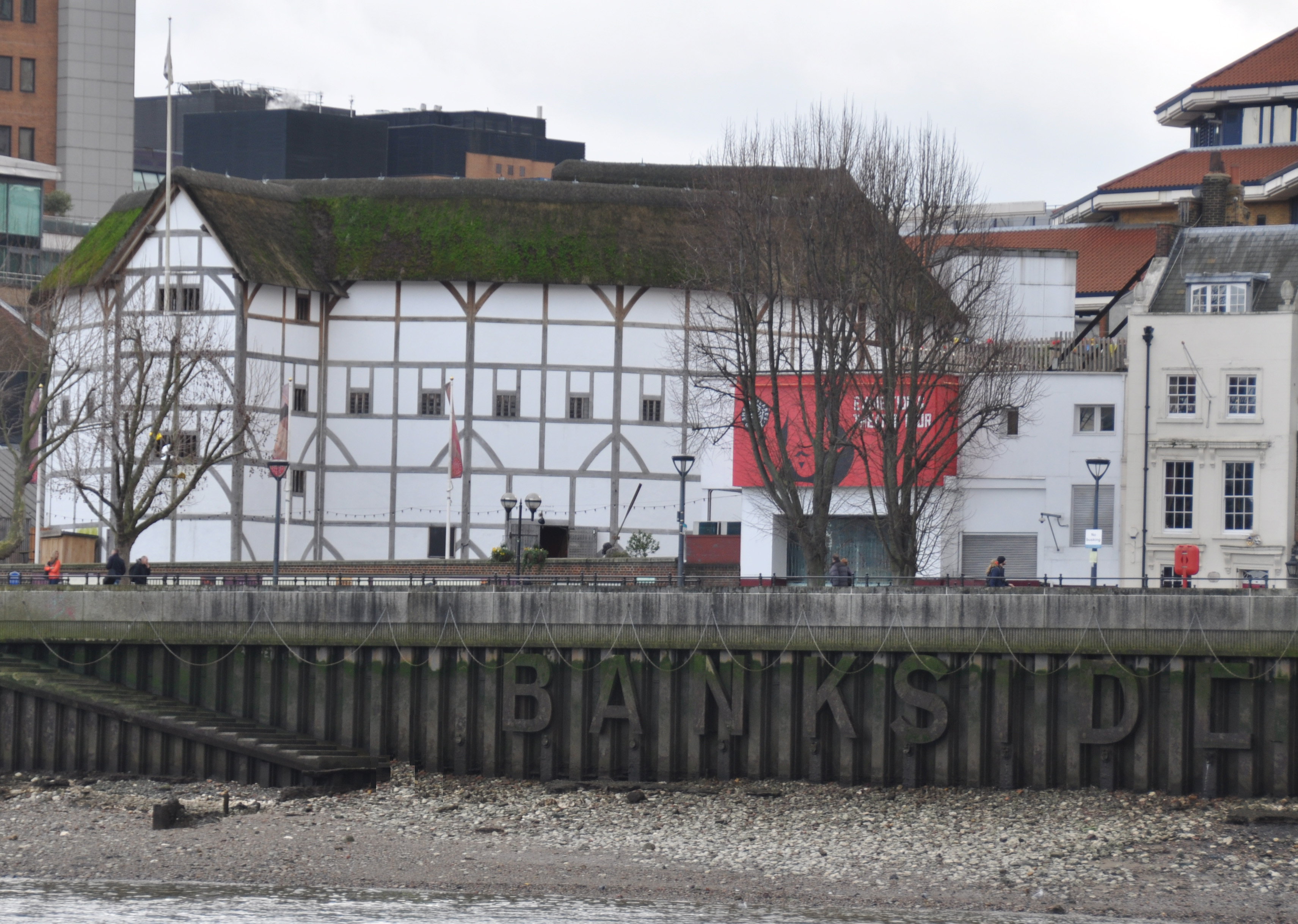








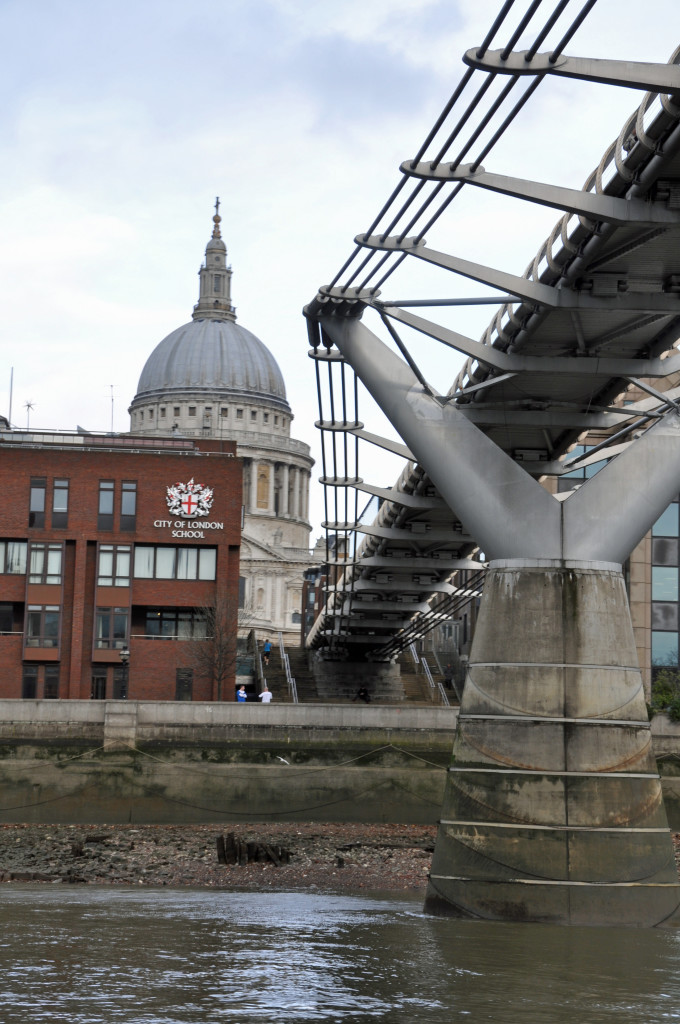
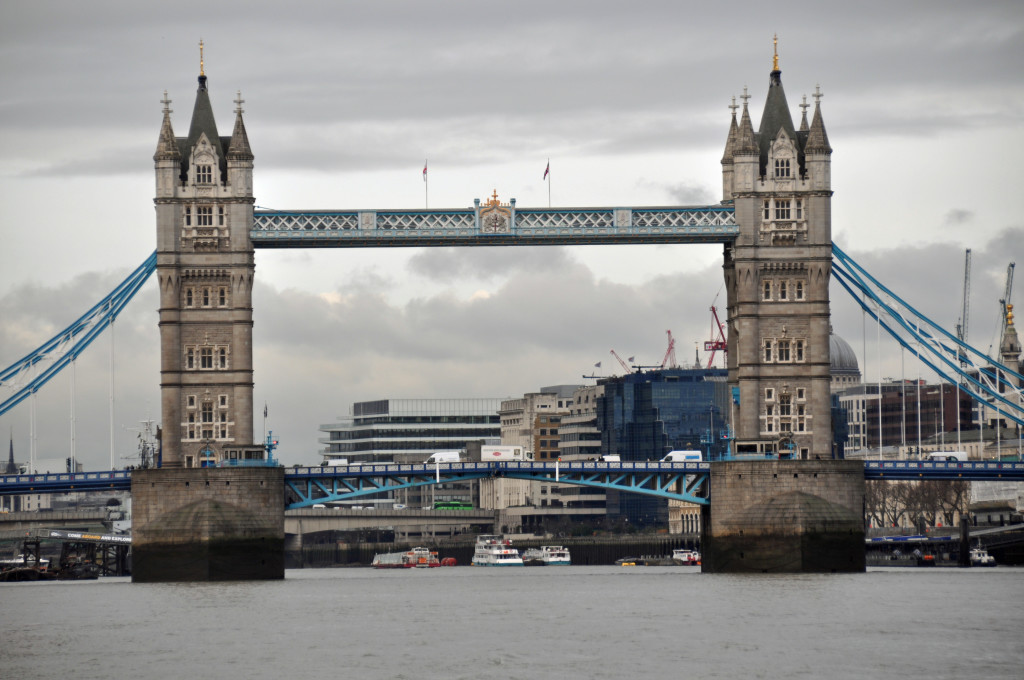


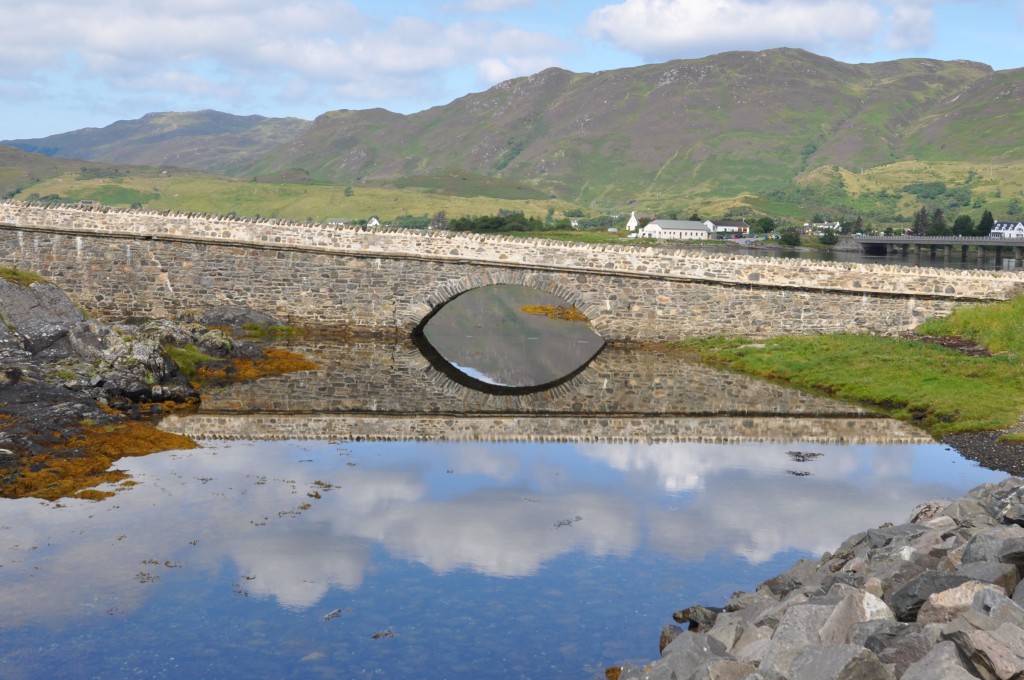
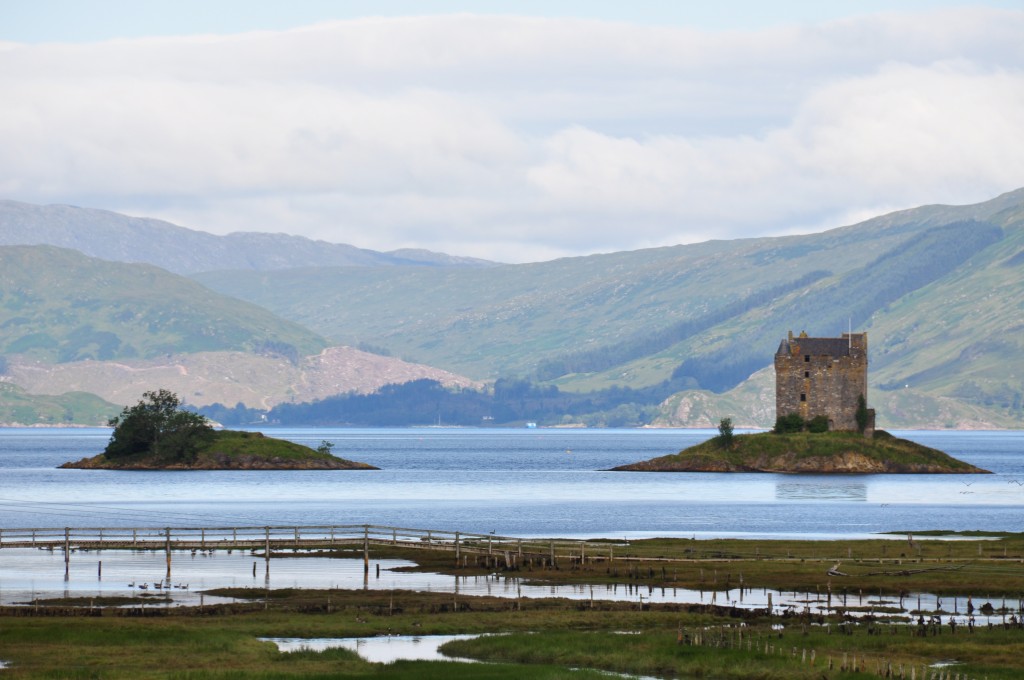



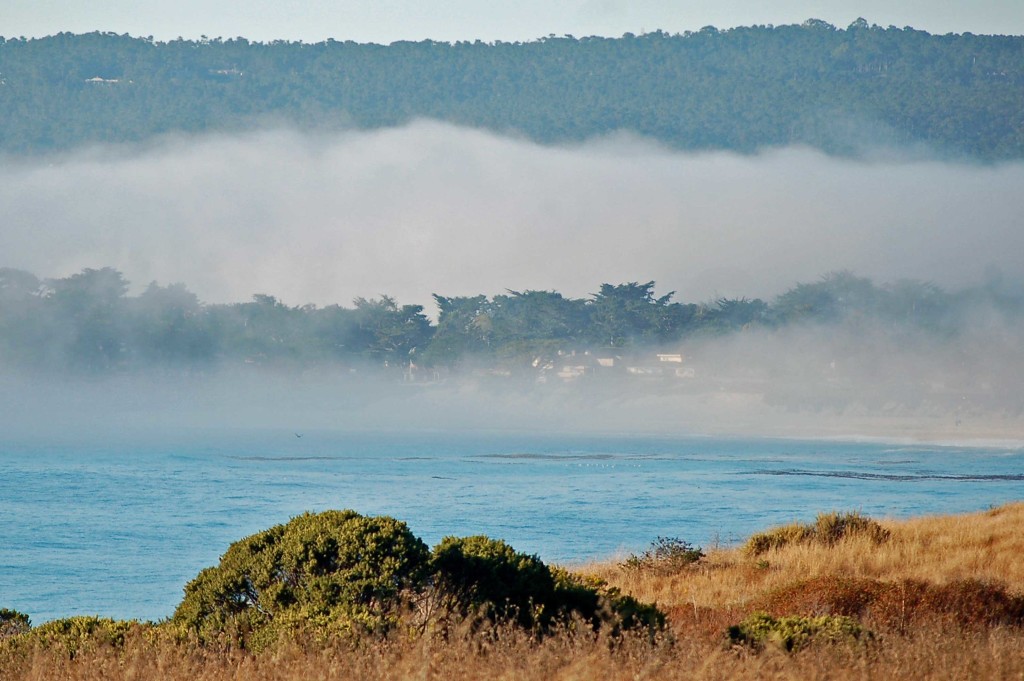

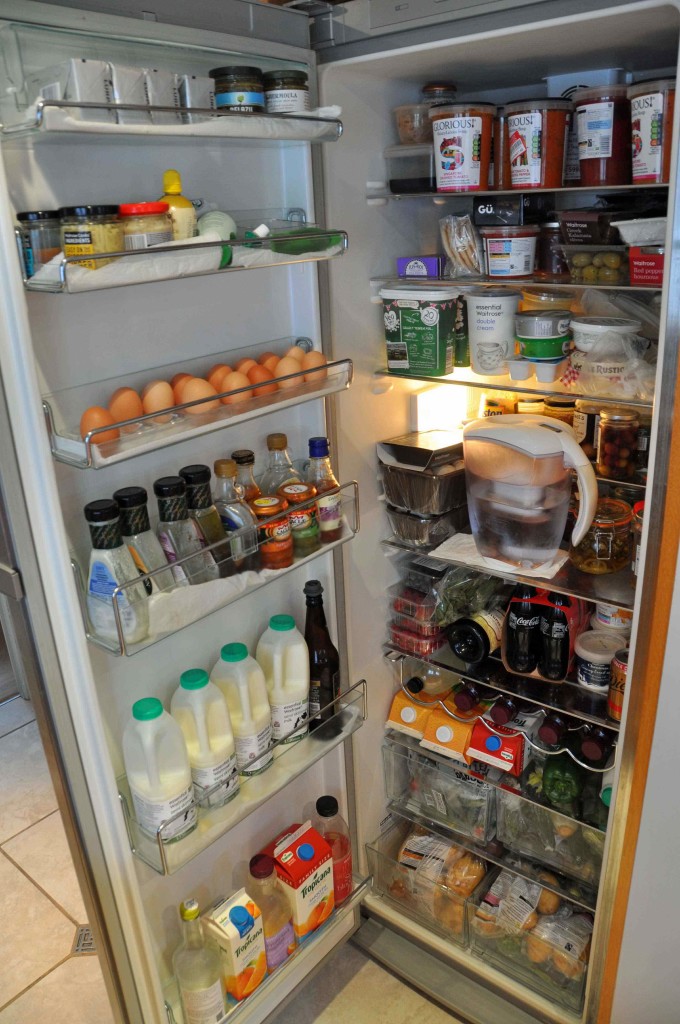

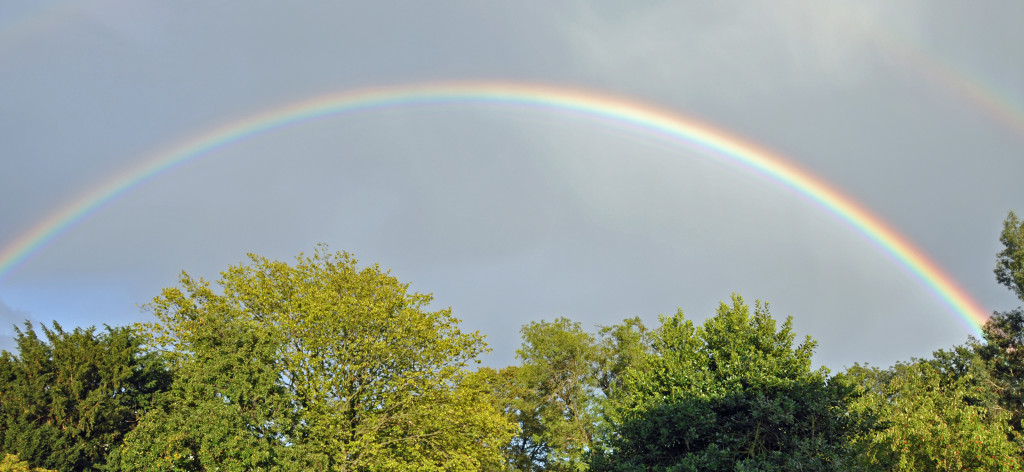


Apparently, when bankers get scared, especially when they think that they’re going to get into trouble, they start behaving even worse. They take even bigger risks.
According to PwC the answer, apparently, is for “rule makers” to “create a more positive climate”, and for leaders to “foster the right kind of competitive culture”. Presumably,this is not the kind of competitive culture evident in emails from Barclays employees who said things like “I’m like a whores (sic) drawers” and “Done … for you big boy” as they rigged the Libor rate – and sealed the deal with champagne. The kind of culture, in fact, that has led Barclays, JP Morgan, UBS, RBS and Deutsche Bank to pay fines of up to £1.7bn.
The report is illustrated with photos of a beautiful Asian woman, a handsome Asian man, an efficient-looking white woman in glasses, and just one pale male as a token gesture to banking in the real world. It says that regulators should “focus more on the good behaviour they want to promote than the bad behaviour they want to stamp out”. By presenting competition “in a more positive way”, it says, “leaders can create a culture of excitement rather than fear”.
Because naturally responsibility should be passed to the regulators rather than the banks themselves?
The report is fairly typical of the kinds of things written about progressive teaching methods in schools such as the one recently in the news written by Rachel Tomlinson, a headteacher in Lancashire. Teachers at Barrowford primary don’t shout at pupils. They tell them that talking in a lesson has an impact on their emotional wellbeing. They help pupils deal with disputes by telling them to say things like “you have emptied my resilience bucket” before having a “restorative conference”. And pupils are never labelled “naughty”. It is, says Tomlinson, important that they “build up a positive sense of self”.
But where Tomlinson differs from the authors of the PwC report, is in her approach to rewards. Pupils at her school don’t get house points, certificates or stickers. They learn to do things “because it’s the right thing to do”. They don’t, in other words, learn to do things because it will get them a loft apartment or a Porsche.
Now clearly the experts have a basic point. If you want people to behave well, you should create a culture where they want to “do the right thing” because it gets them a warm glow and a smile from their boss. You need to make it easier to behave ethically than not. You need to reward good behaviour, not bad. It isn’t rocket science.
You might also, as the report says, employ more women because men “are more likely to choose unethical options” and women are much more likely to be law-abiding. Women seem a bit less keen than men on becoming – in the official jargon – a “big swinging dick”.
But culture change never comes from without – it comes from within. It starts from the top and takes a long time.
In his series of articles, Joris Luyendijk interviewed a number of people across the financial sector including a discussions”before and after” redundancy with “Happy Banker”.
The description of Happy’s working life rang true (Happy Banker, before …) like an especially brutal computer game with the points counted in bonus$ awarded at the year end and competitors or enemies destroyed with an escorted “walk-of-shame” out of the office. Just like World of Warcraft or similar, the life of a trader is desrcibed as a “rush” or addictive. The underlying intense competition within the organisation encourages extreme machismo, risk-taking and positively discourages collegiate team building
The afterwards story (Happy banker, after …)is more measured but still reads like an addict in forced re-hab, not quite ready to concede that his drug of choice is bad for him.
Interviews with people working in Finance but outside of the trading floor provide a more measured analysis. Between 1999 and 2010 Kilian Wawoe worked in human resources at ABN Amro.
He says, “People ask, when will bankers have enough? But it’s not about the money. It’s a highly addictive status game. Pay marks your status in the organisation. This is why there is no saturation point. The competition never stops, until you lose and losing means you have to step out of the “game”.
Status is the most important part of the game, measured in a bonus, reflected in the material goods and privileges the “player” is seen to enjoy.
The status game is played on many levels: do you have your own car park at the office? If so, how close to the entrance? What car do you drive? If it’s provided by the employer, what’s the model? Audi has a series, 4,6,8 …Do you fly business, first class or coach? Watches send important signals, and so do suits. Bankers are able to read each other’s shoes, see if they are of the £500-£1,000 a piece variety. Pin stripes, a pochet (breast pocket handkerchief), handmade shirts with your initials sewn in, to signal they are bespoke.
And almost uniformly those involved in playing the banking “game” just like World of Warcraft devotees will stress how meritocratic it all feels, how they deserve they’re success because they work hard and have outperformed their peers. They’re just that good. Really.
The problem comes when trying to define and measure success. Let’s take a really straightforward idea of success – money earned by the bank. At some level it’s really easy to count the cash and decide whether someone has done a good job, has performed better than their peers sat next to them. You give them a bonus, say £1m.
Next day the pound crashes and the bank’s trades head south. It’s the worst year ever. There is nothing (or at least very little) that individual bankers can do to guard against market disaster on a huge scale. There are a great number of crucial factors beyond an individual’s control, too many unknown and unknowable risks yet those very same risks can and do reward individuals.
People outside of the banking sector look at the huge salaries and bonuses paid in the good years when bankers are all too happy to claim responsibility for the results whatever the market is doing. Then they see the hands go up and the shirking of responsibility in the bad years. The uneveness of risk and reward leaves a bitter taste.
So much of an individual’s success seems random, a series of lucky guesses or escapes. Take Barclays’ former CEO Bob Diamond. He was very close to a takeover of ABN Amro. In the end it was Fred Goodwin at RBS who, with Santander and Fortis, bought ABN Amro. Since ABN Amro was a mess this turned out to be a disaster. Bob Diamond failed to close the deal, so he escaped and went on to be considered for many years London’s top investment banker at least until some of his traders turned out to have been rigging Libor.
“How do you measure Diamond’s performance and over what time period? Certain complex financial instruments may look great for many years, then suddenly explode and take down your bank. How do you measure the performance of those who built, bought or sold those instruments?
And an astonishing number of people working in banking just don’t understand what they’re selling even though they are highly incetivised to sell hard and keep on selling. Another interview (read here) with Luyendijk describes the mass hysteria, the panic experienced at the height of the meltdown and the dawning realisation that very few people actually understood what they’d been doing, building, buying or selling.
Bonuses work for simple work such as stacking items in a supermarket. If everything depends on people’s willingness to work, then variable rewards do encourage them to work harder. But when the skill is very hard or impossible to measure, then bonuses can lead to undesirable behaviour and unexpected outcomes. Especially in banks where liability is often zero, because profits go to the banker but losses to the shareholder or taxpayer.